Sony 6220501-BV Transmitter module for mobile applications User Manual GM47 Integrators Manual
Sony Mobile Communications Inc Transmitter module for mobile applications GM47 Integrators Manual
Sony >
Contents
- 1. Exhibit 08 Manual
- 2. Exhibit 8 Design Guidelines
- 3. Exhibit 8 Integrators Manual
- 4. revised page
Exhibit 8 Integrators Manual

Product Photo/Illustration
GM47/GM48

The product described in this manual conforms to the TTE directive 91/263/EEC and
EMC directive 89/336/EEC. The product fulfils the requirements according to
ETS 300 342-1.
SAR statement: This product is intended to be used with the antenna or other
radiating element at least 20cm away from any part of the human body.
The information contained in this document is the proprietary information of
Sony Ericsson Mobile Communications International. The contents are
confidential and any disclosure to persons other than the officers, employees, agents
or subcontractors of the owner or licensee of this document, without the prior written
consent of Sony Ericsson Mobile Communications International, is strictly
prohibited. Further, no portion of this publication may be reproduced, stored in a
retrieval system, or transmitted in any form or by any means, electronic or
mechanical, including photocopying and recording, without the prior written consent
of Sony Ericsson Mobile Communications International, the copyright holder.
First edition (April 2002)
Sony Ericsson Mobile Communications International publishes this manual
without making any warranty as to the content contained herein. Further
Sony Ericsson Mobile Communications International reserves the right to make
modifications, additions and deletions to this manual due to typographical errors,
inaccurate information, or improvements to programs and/or equipment at any time
and without notice. Such changes will, nevertheless be incorporated into new editions
of this manual.
All rights reserved.
©Sony Ericsson Mobile Communications International, 2002
Publication number: LZT 123 7263 R1A
Printed in UK
Trademarks
AIX is a trademark owned by International Business Machines Corporation.

3
LZT 123 7263 R1A
Contents
Part 1: Overview................................................................................................. 11
1. Introduction............................................................................................................13
1.1 Target Users ......................................................................................... 13
1.2 Prerequisites ......................................................................................... 13
1.3 Manual Structure ......................................................................................... 13
2. GM47/GM48 Modules ...........................................................................................15
2.1 About the GM47/GM48 Family .................................................................. 15
2.2 GM47 in a Communication System............................................................. 15
2.3 Features ......................................................................................... 17
2.3.1 Types of Mobile Station .................................................................. 17
2.3.2 Short Message Service .................................................................... 18
2.3.3 Voice Calls...................................................................................... 18
2.3.4 Data.................................................................................................18
2.3.5 SIM Card.........................................................................................19
2.3.6 Average Power Consumption .........................................................19
2.3.7 Other Features ................................................................................ 19
2.4 Service and Support ..................................................................................... 19
2.4.1 Web Pages....................................................................................... 19
2.4.2 Integrator’s Manual........................................................................ 19
2.4.3 Developer’s Kit ............................................................................... 20
2.5 Precautions ......................................................................................... 20
3. Abbreviations .........................................................................................................21
Part 2: Developer’s Kit....................................................................................... 23
1. Introduction............................................................................................................25
1.1 Overview ......................................................................................... 25
1.2 Contents of the Kit ....................................................................................... 25
1.3 General Functioning of the Kit .................................................................... 26
2. Using the Developer’s Kit......................................................................................29
2.1 Start up Check List....................................................................................... 30
2.2 Developer’s Board Overlay.......................................................................... 31
2.3 Jumpers, Switches and Connectors.............................................................. 32
2.4 System Connector Pin Assignments ............................................................ 36
Part 3: Integrating the Module............................................................................ 37
1. Mechanical Description.........................................................................................39
1.1 Interface Description.................................................................................... 39
1.2 Physical Dimensions .................................................................................... 40

GM47/GM48 INTEGRATOR’S MANUAL
4LZT 123 7263 R1A
2. System Connector Interface ..................................................................................41
2.1 Overview .......................................................................................... 41
2.2 General Electrical and Logical Characteristics ............................................ 44
2.2.1 General Protection Requirements...................................................44
2.3 Grounds .......................................................................................... 45
2.3.1 Analogue Ground - AGND ..............................................................45
2.3.2 Digital Ground - DGND..................................................................45
2.4 VCC - Regulated Power Supply Input ......................................................... 45
2.5 ON/OFF and External Power Signal ............................................................ 46
2.5.1 Switching the module ON and OFF ................................................46
2.5.2 VIO - 2.75V Supply..........................................................................47
2.6 Analogue Audio .......................................................................................... 48
2.6.1 Audio To Mobile Station - ATMS ....................................................48
2.6.2 Audio From Mobile Station - AFMS ...............................................49
2.6.3 Microphone Signals.........................................................................50
2.6.4 Speaker Signals ...............................................................................51
2.7 Digital Audio .......................................................................................... 52
2.8 Serial Data Interfaces.................................................................................... 53
2.8.1 UART1 (RS232) - RD, TD, RTS, CTS, DTR, DCD and RI..............53
2.8.2 Serial Data Signals - RD, TD..........................................................54
2.8.3 Control Signals - RTS, CTS, DTR, DCD, RI ...................................54
2.8.4 UART2 - TD2, RD2 .........................................................................56
2.8.5 UART3 - TD3, RD3 .........................................................................57
2.9 SIM Card Related Signals ............................................................................ 57
2.9.1 SIM Detection - SIMPRESENCE ....................................................58
2.10 Service/Programming ................................................................................... 59
2.11 Buzzer .......................................................................................... 59
2.12 LED .......................................................................................... 59
2.13 General Purpose Digital I/O Ports................................................................ 60
2.14 General Purpose Analogue I/O Ports............................................................ 61
2.14.1 Digital to Analogue Converter - DAC.............................................61
2.14.2 Analogue to Digital Converters 1, 2 and 3 - ADCx ........................62
2.15 External I 2C Serial Control Bus .................................................................. 63
2.16 TX_ON - Burst Transmission....................................................................... 63
2.17 Real Time Clock .......................................................................................... 64
3. Antenna Connector ................................................................................................65
4. Hints for Integrating the Module..........................................................................67
4.1 Safety Advice and Precautions..................................................................... 67
4.1.1 General............................................................................................67
4.1.2 SIM Card .........................................................................................67
4.1.3 Antenna............................................................................................68
4.2 Installation of the Module............................................................................. 68
4.2.1 Where to Install the Module ............................................................68
4.2.2 How to Install the Module...............................................................69
4.3 Antenna .......................................................................................... 70
4.3.1 General............................................................................................70

5
LZT 123 7263 R1A
4.3.2 Antenna Type .................................................................................. 71
4.3.3 Antenna Placement .........................................................................71
4.3.4 The Antenna Cable.......................................................................... 71
4.3.5 Possible Communication Disturbances ..........................................72
5. Technical Data........................................................................................................ 73
Part 4: Using AT Commands.............................................................................. 75
1. Introduction to AT Commands ............................................................................77
1.1 Overview ......................................................................................... 77
1.2 Syntax Description....................................................................................... 77
1.2.1 Conventions.....................................................................................77
1.2.2 AT Command Syntax....................................................................... 78
1.2.3 AT Response Syntax ........................................................................ 79
1.3 Error Codes ......................................................................................... 81
1.3.1 +CME ERROR (Mobile Equipment Error Code)...........................81
1.3.2 +CMS ERROR (Message Service Failure Result Code) ................ 82
1.4 Examples on How to Use the AT Commands ............................................ 83
2. Call Control ............................................................................................................ 85
2.1 AT+CPIN PIN Control...................................................................... 85
2.2 ATA Answer Incoming Call..................................................... 85
2.3 ATD Dial .................................................................................. 86
2.4 ATH Hang up............................................................................ 88
2.5 ATL Monitor Speaker Loudness.............................................. 88
2.6 ATO Return to Online Data Mode............................................ 89
2.7 ATP Select Pulse Dialling........................................................ 89
2.8 ATT Select Tone Dialling ........................................................ 89
2.9 ATX Call Progress Monitoring Control ................................... 90
2.10 AT+CHUP Hang up Call.................................................................... 90
2.11 AT+CMOD Call Mode ........................................................................ 91
2.12 AT+CVHU Voice Hang-Up................................................................ 92
2.13 AT+VTS DTMF and Tone Generation ........................................... 92
3. Control and Status .................................................................................................95
3.1 ATQ Result Code Suppression................................................. 95
3.2 ATS0 Automatic Answer Control.............................................. 95
3.3 ATS2 Escape Sequence Character............................................. 96
3.4 ATS3 Command Line Termination Character........................... 96
3.5 ATS4 Response Formatting Character....................................... 97
3.6 ATS5 Command Line Editing Character (BACKSPACE)........ 98
3.7 ATS6 Blind Dial Delay Control................................................. 98
3.8 ATS7 Connection Completion Timeout .................................... 99
3.9 ATS8 Comma Dial Modifier Delay Control.............................. 99
3.10 ATS10 Automatic Disconnect Delay Control............................ 100
3.11 AT*ECAM Ericsson Call Monitoring............................................... 100

GM47/GM48 INTEGRATOR’S MANUAL
6LZT 123 7263 R1A
3.12 AT*EDST Ericsson Daylight Saving Time ..................................... 102
3.13 AT*EMAR Ericsson Master Reset .................................................... 103
3.14 AT*EPEE Ericsson Pin Event ......................................................... 103
3.15 AT*ESMM Ericsson Settings Minute Minder................................... 104
3.16 AT+CALA Set Alarm ....................................................................... 104
3.17 AT+CALD Alarm Delete .................................................................. 105
3.18 AT+CAPD Postpone or Dismiss an Alarm....................................... 105
3.19 AT+CCLK Set Clock and Date......................................................... 106
3.20 AT+CEER Extended Error Report ................................................... 106
3.21 AT+CFUN Set Phone Functionality ................................................. 107
3.22 AT+CIND Indicator Control ............................................................ 108
3.23 AT+CLAC List all available AT Commands.................................... 109
3.24 AT+CMEE Mobile Equipment Error ................................................ 109
3.25 AT+CMER Mobile Equipment Event Reporting .............................. 110
3.26 AT+CPAS Phone Activity Status..................................................... 111
3.27 AT+CPIN PIN Control .................................................................... 113
3.28 AT+CPWD Change Password ........................................................... 115
3.29 AT+CR Service Reporting Control.............................................. 117
3.30 AT+CRC Cellular Result Code ...................................................... 117
3.31 AT+CSAS Save Settings .................................................................. 118
3.32 AT+CSQ Signal Strength ............................................................... 118
3.33 AT+CTZU Automatic Time Zone Update........................................ 119
4. Audio......................................................................................................................121
4.1 AT*E2EAMS Ericsson M2M Audio Profile Modification................... 121
4.2 AT*E2APR M2M Audio Profile Manipulation ................................. 127
4.3 AT*EALR Ericsson Audio Line Request......................................... 129
4.4 AT*EAMS Ericsson Audio Mode Selection..................................... 130
4.5 AT*EARS Ericsson Audio Ring Signal ........................................... 132
4.6 AT*E2PHFB Portable Handsfree Button Sense Enable....................... 133
4.7 AT*ELAM Ericsson Local Audio Mode........................................... 133
4.8 AT*EMIC Ericsson Microphone Mode ........................................... 134
4.9 AT*EMIR Ericsson Music Mute Indication Request ...................... 134
4.10 AT*EPRR Ericsson Personal Ring Type Read................................ 136
4.11 AT*EPRW Ericsson Personal Ringtype Write ................................. 137
4.12 AT*ERIL Ericsson Ring Level Set ................................................. 139
4.13 AT*ERIN Ericsson Ring Set ........................................................... 140
4.14 AT*ERIP Ericsson Ring Signal Playback Command..................... 141
4.15 AT*ESMA Ericsson Set Message Alert Sound ................................ 142
4.16 AT*ESOM Ericsson Settings Own Melody...................................... 142
4.17 AT*EXVC Ericsson SET External Volume Control ........................ 144
4.18 ATM Monitor Speaker Control................................................ 145
5. Data - CSD/HSCSD ..............................................................................................147
5.1 AT+CBST Select Bearer Service Type ............................................ 147
5.2 AT+CRLP Radio Link Protocol ....................................................... 149
6. Data - GPRS..........................................................................................................151

7
LZT 123 7263 R1A
6.1 AT+CGACT PDP Context Activate or Deactivate ............................. 151
6.2 AT+CGATT GPRS Attach or Detach................................................. 152
6.3 AT+CGDATA Enter Data State ............................................................. 153
6.4 AT+CGDCONT Define PDP Context ...................................................... 154
6.5 AT+CGEREP GPRS Event Reporting .................................................. 156
6.6 AT+CGPADDR Show PDP Address........................................................ 157
6.7 AT+CGQMIN Quality of Service Profile (Minimum Acceptable) ....... 158
6.8 AT+CGQREQ Quality of Service Profile (Requested).......................... 160
6.9 AT+CGREG GPRS Network Registration Status ............................... 163
6.10 AT+CGSMS Select Service for MO SMS Messages.......................... 164
7. Data - HSCSD.......................................................................................................165
7.1 AT+CHSC HSCSD Current Call Parameters................................... 165
7.2 AT+CHSD HSCSD Device Parameters ........................................... 166
7.3 AT+CHSN HSCSD Non Transparent Call Configuration ............... 167
7.4 AT+CHSR HSCSD Parameters Report............................................ 169
7.5 AT+CHSU HSCSD Automatic User Initiated Upgrading................ 170
8. Data - WAP...........................................................................................................171
8.1 AT*EWBA Ericsson WAP Bookmark Add...................................... 171
8.2 AT*EWBR Ericsson WAP Bookmark Read..................................... 172
8.3 AT*EWCG Ericsson WAP CSD Gateway........................................ 173
8.4 AT*EWCT Ericsson WAP Connection Timeout.............................. 174
8.5 AT*EWDT Ericsson WAP Download Timeout ............................... 174
8.6 AT*EWHP Ericsson WAP Homepage ............................................. 175
8.7 AT*EWIL Ericsson WAP Image Load ........................................... 175
8.8 AT*EWLI Ericsson WAP Login ..................................................... 176
8.9 AT*EWPA Ericsson WAP Push Access Setting .............................. 177
8.10 AT*EWPB Ericsson WAP Preferred Bearer .................................... 177
8.11 AT*EWPN Ericsson WAP Profile Name ......................................... 178
8.12 AT*EWPR Ericsson WAP Profile.................................................... 179
9. GPS Interoperability ........................................................................................... 181
9.1 AT*EENMEA NMEA (GPS) Mode on UART2 ................................... 181
9.2 AT*E2NMPR Ericsson M2M Set NMEA (GPS) Port Rate.................. 182
10. Internet.................................................................................................................. 185
10.1 AT*ENAD Ericsson Internet Account Define.................................. 185
11. Identification ........................................................................................................ 189
11.1 AT Attention Command....................................................... 189
11.2 AT&F Set to Factory Defined Configuration............................ 189
11.3 AT&W Store User Profile .......................................................... 190
11.4 AT* List all Supported AT Commands ................................. 190
11.5 AT*ESIR Read MS System Interface Release............................... 190
11.6 AT+CGMI Read MS Manufacturer Identification........................... 191
11.7 AT+CGMM Read MS Model Identification ...................................... 191
11.8 AT+CGMR Read MS Revision Identification................................... 192

GM47/GM48 INTEGRATOR’S MANUAL
8LZT 123 7263 R1A
11.9 AT+CGSN Read MS Product Serial Number Identification ............ 192
11.10 AT+GMI Read Manufacturer Identification .................................. 193
11.11 AT+GMM Read Model Identification.............................................. 193
11.12 AT+GMR Read Revision Identification.......................................... 194
11.13 ATI Identification Information .............................................. 194
12. Input/Output.........................................................................................................195
12.1 AT*E2IO Ericsson M2M Input/Output Read/Write....................... 195
13. Interface ................................................................................................................197
13.1 AT+CPIN PIN Control .................................................................... 197
13.2 AT&C Circuit 109 (DCD) Control ............................................ 197
13.3 AT&D Circuit 108 (DTR) Response.......................................... 197
13.4 AT+WS46 Mode Selection............................................................... 198
13.5 ATE Command Echo.............................................................. 198
13.6 ATV DCE Response Format................................................... 199
13.7 ATZ Reset to Default Configuration ...................................... 200
13.8 AT+CMUX Switch to 07.10 Multiplex Protocol ............................... 201
13.9 AT+CRES Restore Settings.............................................................. 203
13.10 AT+ICF Cable Interface Character Format .................................. 204
13.11 AT+IFC DTE-DCE Local Flow Control ...................................... 205
13.12 AT+ILRR Cable Interface Local Rate Reporting............................ 205
13.13 AT+IPR Cable Interface Port Command...................................... 206
13.14 AT*E2ESC M2M Escape Sequence Guard Time.............................. 207
14. Network .................................................................................................................209
14.1 AT*E2CD Ericsson M2M Cell Description..................................... 209
14.2 AT*E2EMM Ericsson M2M Engineering Monitoring Mode.............. 211
14.3 AT*E2SPN M2M Service Provider Indication.................................. 217
14.4 AT*EALS Ericsson Request ALS Status......................................... 217
14.5 AT*ECSP Ericsson Customer Service Profile................................. 218
14.6 AT*EPNR Ericsson Read SIM Preferred Network.......................... 219
14.7 AT*EPNW Ericsson Write SIM Preferred Network......................... 220
14.8 AT*E2SSN Ericsson M2M SIM Serial Number ............................... 221
14.9 AT*ESLN Ericsson Set Line Name ................................................. 222
14.10 AT+CIMI Subscriber Identification ................................................ 223
14.11 AT+CLCK Facility Lock .................................................................. 223
14.12 AT+CNUM Subscriber Number......................................................... 225
14.13 AT+COPS Operator Selection.......................................................... 227
14.14 AT+CREG Network Registration ..................................................... 228
15. Phonebook.............................................................................................................229
15.1 AT*E2PBCS Ericsson M2M Phonebook Check Sum ......................... 229
15.2 AT*ESAG Ericsson Add to Group................................................... 229
15.3 AT*ESCG Ericsson Create Group ................................................... 230
15.4 AT*ESCN Ericsson Set Credit Card Number .................................. 231
15.5 AT*ESDG Ericsson Delete Group ................................................... 233
15.6 AT*ESDI Ericsson Delete Group Item ........................................... 233

9
LZT 123 7263 R1A
15.7 AT*ESGR Ericsson Group Read..................................................... 234
15.8 AT*ESIL Ericsson Silence Command ........................................... 234
15.9 AT*ESNU Ericsson Settings Number.............................................. 235
15.10 AT+CPBF Phonebook Find............................................................. 236
15.11 AT+CPBR Phonebook Read ............................................................ 236
15.12 AT+CPBS Phone Storage ................................................................ 238
15.13 AT+CPBW Phonebook Write ........................................................... 239
16. Short Message Services - Point to Point............................................................. 241
16.1 AT+CPIN PIN Control.................................................................... 241
16.2 AT*ESMA Ericsson Set Message Alert Sound................................ 241
16.3 AT+CGSMS Select Service for MO SMS Messages.......................... 241
16.4 AT+CSCA Service Centre Address.................................................. 241
16.5 AT+CMGF Message Format............................................................. 242
16.6 AT+CMGW Write Message to Memory ............................................ 243
16.7 AT+CMGS Send Message ................................................................ 245
16.8 AT+CMSS Send From Storage ........................................................ 248
16.9 AT+CMGC Send Command.............................................................. 249
16.10 AT+CPMS Preferred Message Storage ............................................ 252
16.11 AT+CNMI New Message Indications to TE.................................... 253
16.12 AT+CMGR Read Message ................................................................ 257
16.13 AT+CMGL List Message .................................................................. 263
16.14 AT+CMGD Delete Message.............................................................. 266
16.15 AT+CSDH Show Text Mode Parameters......................................... 267
16.16 AT+CSMP Set Text Mode Parameters............................................. 267
16.17 AT+CSCS Select Character Set....................................................... 268
16.18 AT*ESTL Ericsson SMS Template List Edit.................................. 269
16.19 AT+CSMS Select Message Service.................................................. 270
17. Short Message Services - Cell Broadcast........................................................... 273
17.1 AT+CNMI New Message Indications to TE.................................... 273
17.2 AT+CSCB Select Cell Broadcast Message Type............................. 273
18. SIM Application Toolkit...................................................................................... 275
18.1 AT+CPIN PIN Control.................................................................... 275
18.2 AT*E2STKS SIM Application Toolkit Settings.................................. 275
18.3 AT*E2STKD M2M STK Display Text................................................ 276
18.4 AT*E2STKG M2M STK Get Inkey..................................................... 277
18.5 AT*E2STKI M2M STK Get Input ..................................................... 278
18.6 AT*E2STKL M2M STK Select Item................................................... 280
18.7 AT*E2STKM M2M STK Set Up Menu ............................................... 281
18.8 AT*E2STKN M2M STK Envelope (Menu Selection)......................... 283
18.9 AT*E2STKC M2M STK Set Up Call.................................................. 283
19. Supplementary Services ...................................................................................... 285
19.1 AT+CPIN PIN Control.................................................................... 285
19.2 AT+CACM Accumulated Call Meter................................................ 285
19.3 AT+CAMM Accumulated Call Meter Maximum.............................. 286

GM47/GM48 INTEGRATOR’S MANUAL
10 LZT 123 7263 R1A
19.4 AT+CAOC Advice of Charge ........................................................... 287
19.5 AT+CPUC Price Per Unit and Currency Table ................................ 288
19.6 AT*EDIF Ericsson Divert Function................................................ 289
19.7 AT*EIPS Identity Presentation Set ................................................ 290
19.8 AT*ELIN Ericsson Line Set............................................................ 291
19.9 AT+CCFC Call Forwarding number and Conditions....................... 291
19.10 AT+CCWA Call Waiting ................................................................... 294
19.11 AT+CHLD Call Hold and Multiparty ............................................... 296
19.12 AT+CLIP Calling Line Identification ............................................. 297
19.13 AT+CLIR Calling Line Identification Restriction........................... 299
19.14 AT+CSSN Supplementary Service Notification .............................. 300
19.15 AT+CUSD Unstructured Supplementary Service Data .................... 302
20. Alphabetical Listing of AT Commands..............................................................305

Product Photo/Illustration
Part 1: Overview

13
LZT 123 7263 R1A
1. Introduction
1.1 Target Users
GM47 and GM48 modules are designed to be integrated into machine-
to-machine or man-to-machine communications applications. They are
intended to be used by to manufacturers, system integrators,
applications developers and developers of wireless communications
equipment.
1.2 Prerequisites
It is assumed that the person integrating the GM47 or GM48 into an
application has a basic understanding of the following:
• GSM networking;
• Wireless communication and antennas (aerials);
• AT commands;
• ITU-T standard V.24/V.28;
• Micro controllers and programming;
• Electronic hardware design.
1.3 Manual Structure
The manual is composed of four parts:
Part 1- Overview
This section provides a broad overview of the GM47/GM48 family and
includes a list of abbreviations used in the manual.
Part 2 - Developer’s Kit
This section lists the contents of the whole development kit and
provides the information to setup and use the equipment.
Part 3 - Integrating the Module
This section describes each of the signals available on the GM47/GM48
modules, along with mechanical information. The section also provides
you with design guidelines and explains what is needed to
commercialise an application from a regulatory point of view.

GM47/GM48 INTEGRATOR’S MANUAL
14 LZT 123 7263 R1A
Part 4 - Using AT Commands
This section lists all the AT Commands relevant to the GM47 and
GM48, including their required parameters. The purpose of part 4 is to
give you detailed information on the function of the AT Command set.
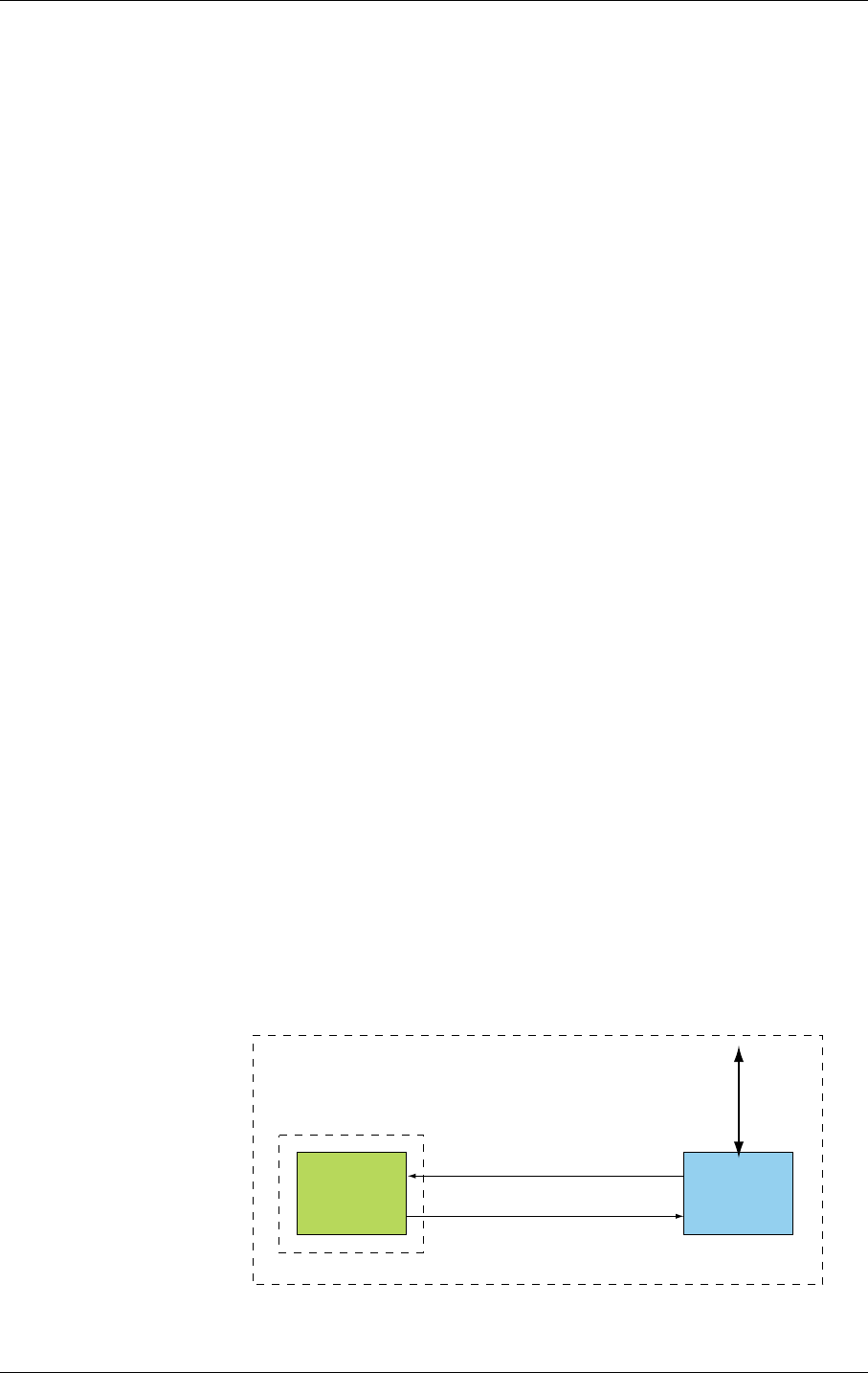
GM47/GM48 MODULES
15
LZT 123 7263 R1A
2. GM47/GM48 Modules
2.1 About the GM47/GM48 Family
Two modules make up the family; GM47 and GM48, for use in the
900/1800MHz and 850/1900MHz GSM bands respectively.
Note! As the characteristics of the modules are quite similar, this manual only
refers to the GM48 where a difference exists; by default all other
references are to the GM47.
The products belong to a new generation of Sony Ericsson modules, and
are intended to be used in machine-to-machine applications and man-to-
machine applications. They are used when there is a need to send and
receive data (by SMS, CSD, HSCSD, or GPRS), and make voice calls
over the GSM network.
GM47 modules are not “stand alone” devices; they are used as the
engine in an application created by the customer. A typical application,
involves a micro-controller and GM47 module, in which the micro-
controller sends AT commands to the module via an RS232
communications link.
2.2GM47inaCommunicationSystem
Figure 2.1 illustrates the main blocks of a wireless communication
system using the GM47. It also shows the communication principles of
the system. The definitions in the figure, as used elsewhere in this
manual, are in accordance with the recommendations of GSM 07.07.
• The MS (mobile station) represents the GM47 module plus SIM
card. The module excluding SIM card, is known as the ME (mobile
equipment).
• The TE (terminal equipment) is a micro-controller (i.e., a computer)
and is a part of the application.
Figure 2.1 Main Blocks in a Wireless System
TE
(DTE) AT commands to control MS
ME status, responses
MS
(GM47)
GSM Network
Application
Wireless Communication System
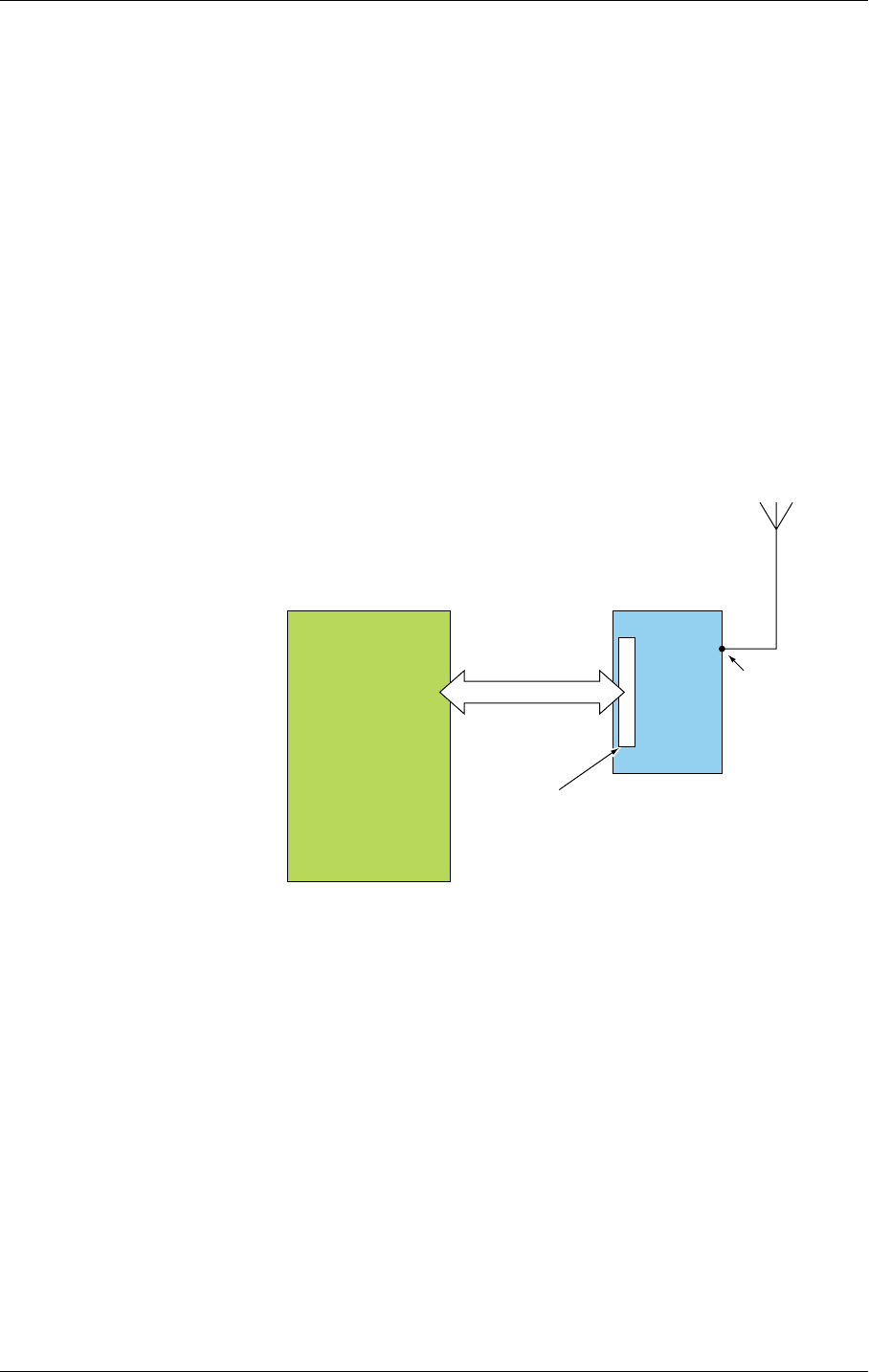
GM47/GM48 INTEGRATOR’S MANUAL
16 LZT 123 7263 R1A
In accordance with the recommendations of ITU-T (International
Telecommunication Union - Telecommunications Standardisation
Sector) V.24, the TE communicates with the MS over a serial interface.
The functions of the GM47 follow the recommendations provided by
ETSI (European Telecommunications Standards Institute) and ITU-T.
ETSI specifies a set of AT commands for controlling the GSM element
of the module; these commands are supplemented by Sony Ericsson
specific commands.
To find out how to work with AT commands, see “Part 4: Using AT
Commands”, page 75.
Figure 2.2 illustrates the interface between the module and the
application. The entire System Connector Interface is described in
detail in “System Connector Interface”, page 41.
Figure 2.2 The Interface between the Module and the Application
Note! ITU-T standards define TE and TA as DTE (Data Terminal Equipment)
and DCE (Data Circuit Terminating Equipment) respectively.
Signals
and power
60 pin
system connector
TE
(Application)
MS
(GM47)
Antenna
connector
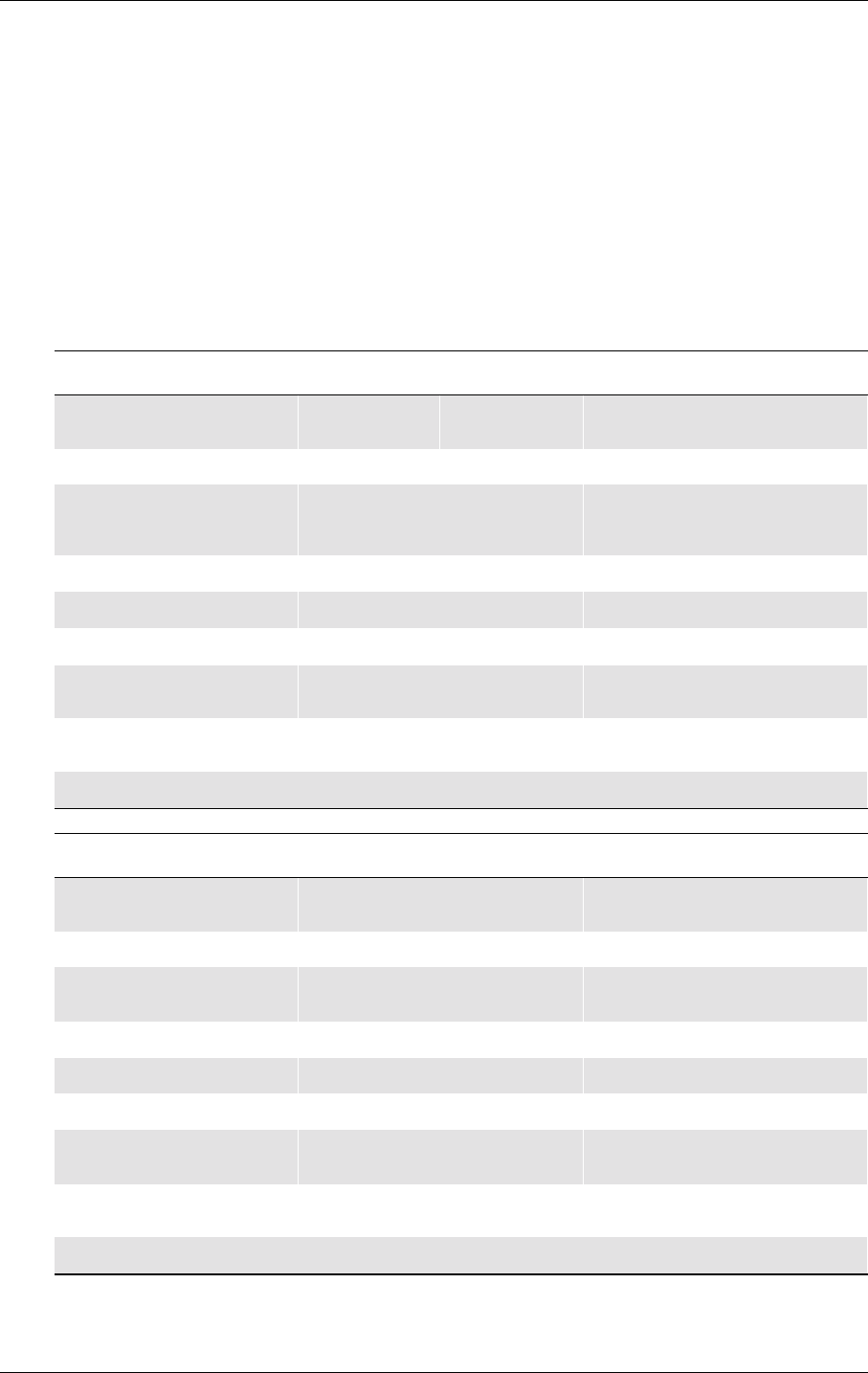
GM47/GM48 MODULES
17
LZT 123 7263 R1A
2.3 Features
The module performs a set of telecom services (TS) according to GSM
standard phase 2+, ETSI and ITU-T. The functions of the module are
implemented by issuing AT commands over a serial interface.
2.3.1 Types of Mobile Station
GM47 and GM48 are dual band mobile stations with the characteristics
shown in the tables below.
GM47 GSM900 E-GSM900 GSM1800
Frequency Range (MHz) TX: 890-915
RX: 935-960 TX: 880-890
RX: 925-935 TX: 1710-1785
RX: 1805-1880
Channel spacing 200kHz 200kHz
Number of channels 173carriers*8(TDMA)
GSM: channels 1 to 124
E-GSM: channels 975 to 1023
374carriers*8(TDMA)
DCS: channels 512 to 885
Modulation GMSK GMSK
TX phase accuracy <5ºRMSphaseerror(burst) < 5º RMS phase error (burst)
Duplex spacing 45MHz 95MHz
Receiver sensitivity at
antenna connector <–102dBm <–102dBm
Transmitter output power
at antenna connector Class 4
2W(33dBm) Class 1
1W(30dBm)
Automatic hand-over between GSM900 and GSM1800
GM48 GSM850 GSM1900
Frequency Range (MHz) TX: 824-849
RX: 869-894 TX: 1850-1910
RX: 1930-1990
Channel spacing 200kHz 200kHz
Number of channels 123carriers*8(TDMA)
GSM: channels 128 to 251 298carriers*8(TDMA)
PCS: channels 512 to 810
Modulation GMSK GMSK
TX Phase Accuracy <5ºRMSphaseerror(burst) < 5º RMS phase error (burst)
Duplex spacing 45MHz 80MHz
Receiver sensitivity at
antenna connector <–102dBm <–102dBm
Transmitter output power
at antenna connector Class 5
0.8W (29dBm) Class 1
1W(30dBm)
Automatic hand-over between GSM850 and GSM1900

GM47/GM48 INTEGRATOR’S MANUAL
18 LZT 123 7263 R1A
2.3.2 Short Message Service
The module supports the following SMS services:
• Sending; MO (mobile-originated) with both PDU (protocol data
unit) and text mode supported.
• Receiving; MT (mobile-terminated) with both PDU and text mode
supported.
• CBM (cell broadcast message); a service in which a message is sent
to all subscribers located in one or more specific cells in the GSM
network (for example, traffic reports).
• SMS STATUS REPORT according to GSM 03.40.
• SMS COMMAND according to GSM 03.40.
The maximum length of an SMS message is 160 characters when using
7-bit encoding. For 8-bit data, the maximum length is 140 bytes. The
module supports up to 6 concatenated messages to extend this function.
2.3.3 Voice Calls
The GM47 offers the capability of mobile originated and mobile
terminated voice calls, as well as supporting emergency calls.
Multi-party, call waiting and call deflection features are available.
Some of these features are network-operator specific.
For the inter-connection of audio, the module offers both single ended
and balanced analogue input and output lines. Direct interface to the
digital PCM (pulse code modulation) bus used within the module is
available, thus by-passing the internal analogue circuitry. The GM47
has an embedded echo cancellation and noise suppression for improved
audio quality.
2.3.4 Data
The module supports the following data protocols:
• GPRS (General Packet Radio Service)
Modules are Class B terminals, which provide simultaneous
activation and attachment of GPRS and GSM services. GM47
modules are GPRS 4+1 enabled devices, which are capable of
transmitting in one timeslot per frame (up link), and receiving at a
maximum of four timeslots per frame (down link).
• CSD (Circuit Switched Data)
GM47 modules are capable of establishing a CSD communication at
9.6kbps.
• HSCSD (High Speed Circuit Switched Data).
GM47 supports HSCSD communication, with one timeslot per
frame capacity in the up link and two timeslots per frame capacity in
the down link (2+1).

GM47/GM48 MODULES
19
LZT 123 7263 R1A
2.3.5 SIM Card
An external SIM card with 3V or 5V technology, can be connected to
the module via its 60-pin system connector.
2.3.6 Average Power Consumption
Note! The power consumption during transmission is measured at maximum
transmitted power.
2.3.7 Other Features
These include:
• Internet-ready module.
• 07.10 multiplexing.
• GPS interoperability.
• SIM application tool kit.
2.4 Service and Support
2.4.1 Web Pages
Visit our web site for the following information:
• where to buy modules or for recommendations concerning
accessories and components;
• the telephone number for customer support in your region;
• FAQs (frequently asked questions).
The web site address is:
http://www.sonyericsson.com/M2M
2.4.2 Integrator’s Manual
This manual provides you with all of the information you need to
integrate the module into your application.
Idle Mode Transmit/Operation
GSM850 and GSM900 Voice/CSD <5mA <250mA (<2Apeak)
Data (GPRS 4+1) <5mA <350mA (<2A peak)
GSM1800 and GSM1900 Voice/CSD <5mA <250mA (<1.75A peak)
Data (GPRS 4+1) <5mA <350mA (<1.75A peak)

GM47/GM48 INTEGRATOR’S MANUAL
20 LZT 123 7263 R1A
2.4.3 Developer’s Kit
Sony Ericsson provides the opportunity for designers to test the module
on a limited scale using it’s Development Kit. The kit includes the
necessary accessories (software and hardware) required to build and test
an application. It includes the following:
• GSM module, GM47 or GM48;
• This integrator’s manual;
• Software developer’s kit and manual;
• Developer’s kit hardware.
All the user needs to provide, is a computer or micro-controller and the
expertise to use AT commands.
2.5 Precautions
GM47 and GM48 modules are static sensitive devices (SSDs). Normal
SSD procedures for electronic devices should be used when handling
the modules. In “Part 3: Integrating the Module”, page 37 you will find
more information about safety and product care. Do not exceed the
environmental and electrical limits as specified in “Technical Data”,
page 73.

ABBREVIATIONS
21
LZT 123 7263 R1A
3. Abbreviations
Abbreviation Explanations
BT Bluetooth
CBM Cell Broadcast Message
CBS Cell Broadcast Service
CSD Circuit Switched Data
DCE Data Circuit Terminating Equipment
DTE Data Terminal Equipment
DTMF Dual Tone Multi Frequency
EFR Enhanced Full Rate
EMC Electro-Magnetic Compatibility
ETSI European Telecommunication Standards Institute
FR Full Rate
GPRS General Packet Radio Service
GPS Global Positioning System
GSM Global System for Mobile Communication
HR Half Rate
HSCSD High Speed Circuit Switched Data
ITU-T International Telecommunication Union - Telecommunications
Standardisation Sector
ME Mobile Equipment
MO Mobile Originated
MS Mobile Station
MT Mobile Terminated
PCM PulseCodeModulation
PDU Protocol Data Unit
RLP Radio Link Protocol
RF Radio Frequency
RTC Real Time Clock
SDP Service Discovery Protocol
SIM Subscriber Identity Module
SMS Short Message Service

GM47/GM48 INTEGRATOR’S MANUAL
22 LZT 123 7263 R1A
TA Terminal Adapter
TE Terminal Equipment
THD Third Harmonic Distortion
TS Telecom Services
Abbreviation Explanations

Product Photo/Illustration
Part 2: Developer’s Kit
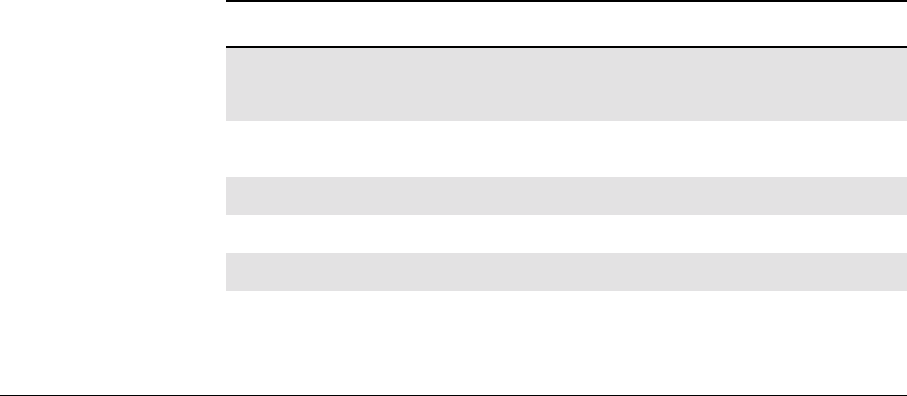
25
LZT 123 7263 R1A
1. Introduction
1.1 Overview
The developer’s kit is designed to get you started quickly. It contains all
the hardware you will need to begin the development of an application.
The only items you need to provide are; a computer or micro controller,
a SIM card and network subscription, and a knowledge of programming
with AT commands.
Note! Before connecting up and using the developer’s kit, we strongly
recommend you read “Part 3: Integrating the Module”, page 37 and all
of this section. There are many switches, jumpers and connector options
in the developer’s kit. A knowledge of the functionality of the GM47
module is therefore essential before you start altering the hardware
settings.
The main hardware in the developer’s kit is a screened box, containing
a board onto which you plug the GM47 module. Connectors, switches,
jumpers and SIM card holder are provided to allow you to configure and
access all the functions of the module.
1.2 Contents of the Kit
Please take the time to check the contents of your kit against the list
shown below. If any of the items are missing contact your supplier
immediately.
Developer’s kit - Part Number DPY 102 218
Contents:
Description Product Number Qty
Radio modem:
GM47 module or
GM48 module DPY 102 201
DPY 102 204
1
GM47/GM48 developer’s kit (screened
box and development board) KRY 101 1907 1
Switched mode PSU 12V d.c. EPA-121DA-12 1
UK mains plug EN90POWERLEADUK 1
European mains plug EN90POWERLEADEU 1
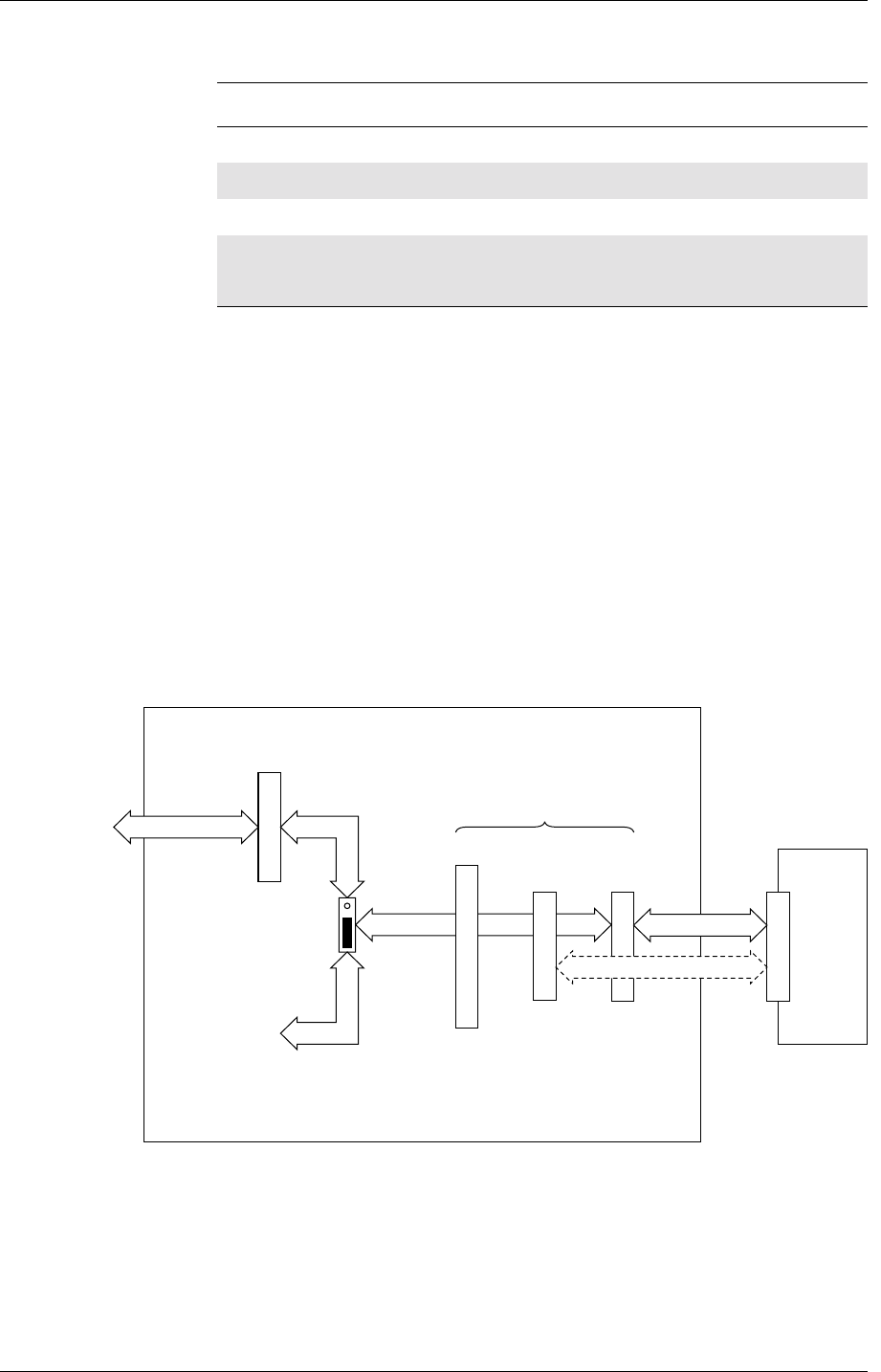
GM47/GM48 INTEGRATOR’S MANUAL
26 LZT 123 7263 R1A
1.3 General Functioning of the Kit
The following block diagrams are provided to help you understand the
general principles of operation of the developer’s kit.
You have the following options as shown in Figure 1.1:
• Connect the GM47 internally, direct to J4 or position it externally
and connect to J10 via a flat cable.
• Use the kit’s connectors to access and control the GM47 (all
switches and jumpers in their default positions).
• Access and control the GM47 directly via J12 and a flat cable. This
allows you to selectively bypass any circuits contained on the board,
and test your own application.
Figure 1.1 Module connections to the developer’s board
Figure 1.2 shows the various on-board voltages and how they are fed to
the GM47 and other circuitry. The developer’s board is powered by an
external power supply connected to Vcc.
Cable with connector/cable serial 9-9 PIN DB9(M)-DB9(F) 1
Portable handsfree 2002-1-24 1
Quad band antenna RG174 1
Data carrier/CD-ROM containing:
Software Manual;
Integrator’s Manual
LZY 213 1319 1
Description Product Number Qty
External
Application
J4J10
J11
J12
Developer's
board circuits
and ports
User selectable
jumpers
Pin headers
60 pins female
1.27mm pitch
Pin header
60 pins male
2.54mm pitch
Pin header
60 pins male
1.27mm pitch
GM47
Developer's board
fit direct to J4
alternate flat cable to J10
Pins connected in parallel
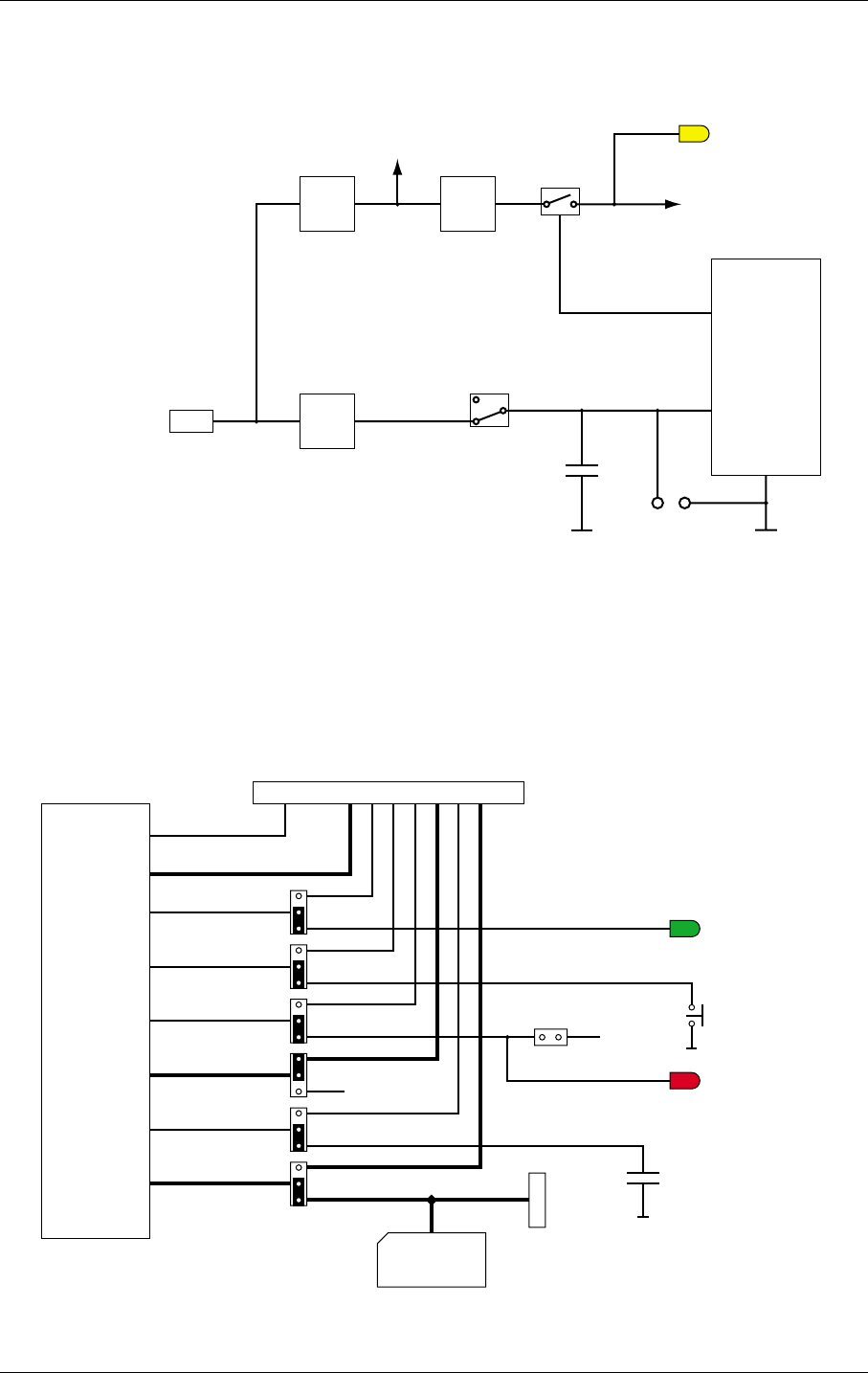
INTRODUCTION
27
LZT 123 7263 R1A
Figure 1.2 Power supply connection and the on-board voltages
Figure 1.3, Figure 1.4 and Figure 1.5 show how various signals are
routed on the developer’s board. Thicker lines indicate multiple signals.
Figure 1.3 Miscellaneous signals, connection and routing
GM47
Vcc
DC Power Socket,
Input 10..15V
5V
reg.
2V7
reg.
5V to development
board circuits
To development
board & interface
circuits
VIO
VCC
VIO present
LED
+-
TP4 TP5
3V8
Switched
when VIO
present
3V8
reg.
2V7
12v
J12
GM47
STATUS LED
(Blinks when
connected to network)
ON/OFF
Selectable
Jumpers
n/c
J5
U10 SIM
SIM holder with
SIM presence
switch (to DGND)
0.22F
SIM
VRTC
I²C
SERVICE
ON/OFF
LED
General purpose I/O
VIO
SW4
2V7
SERVICE LED
(Lit when SW4 closed)
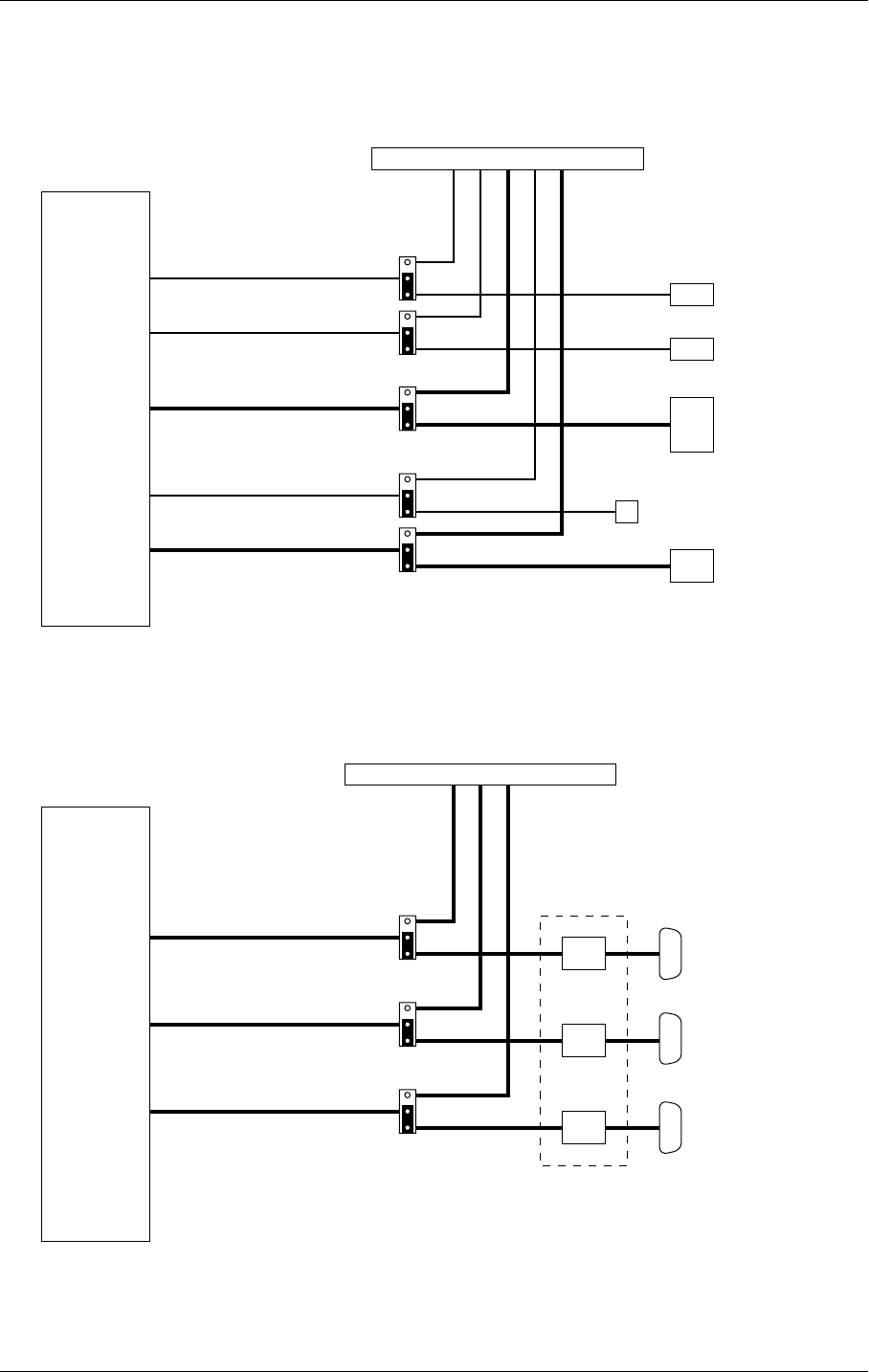
GM47/GM48 INTEGRATOR’S MANUAL
28 LZT 123 7263 R1A
Figure 1.4 Audio signals, connection and routing
Figure 1.5 Comms signals, connection and routing
J12
GM47
EAR
MIC
Handset
Buzzer
PCM
3.5mm socket
3.5mm socket
RJ11 connector
8 pin Mini-DIN
Selectable
Jumpers
ATMS
AFMS
MICN, MICP, BEARN, BEARP
Buzzer
PCM
(Audio out)
(Audio in)
J12
GM47
UART1 (EDB)
UART2 (ACB)
UART3
Selectable
jumpers
TD, RD, DTR, DCD,
RTS, CTS, RI
TD2, RD2 & SERVICE
TD3 & RD3
Level shifters
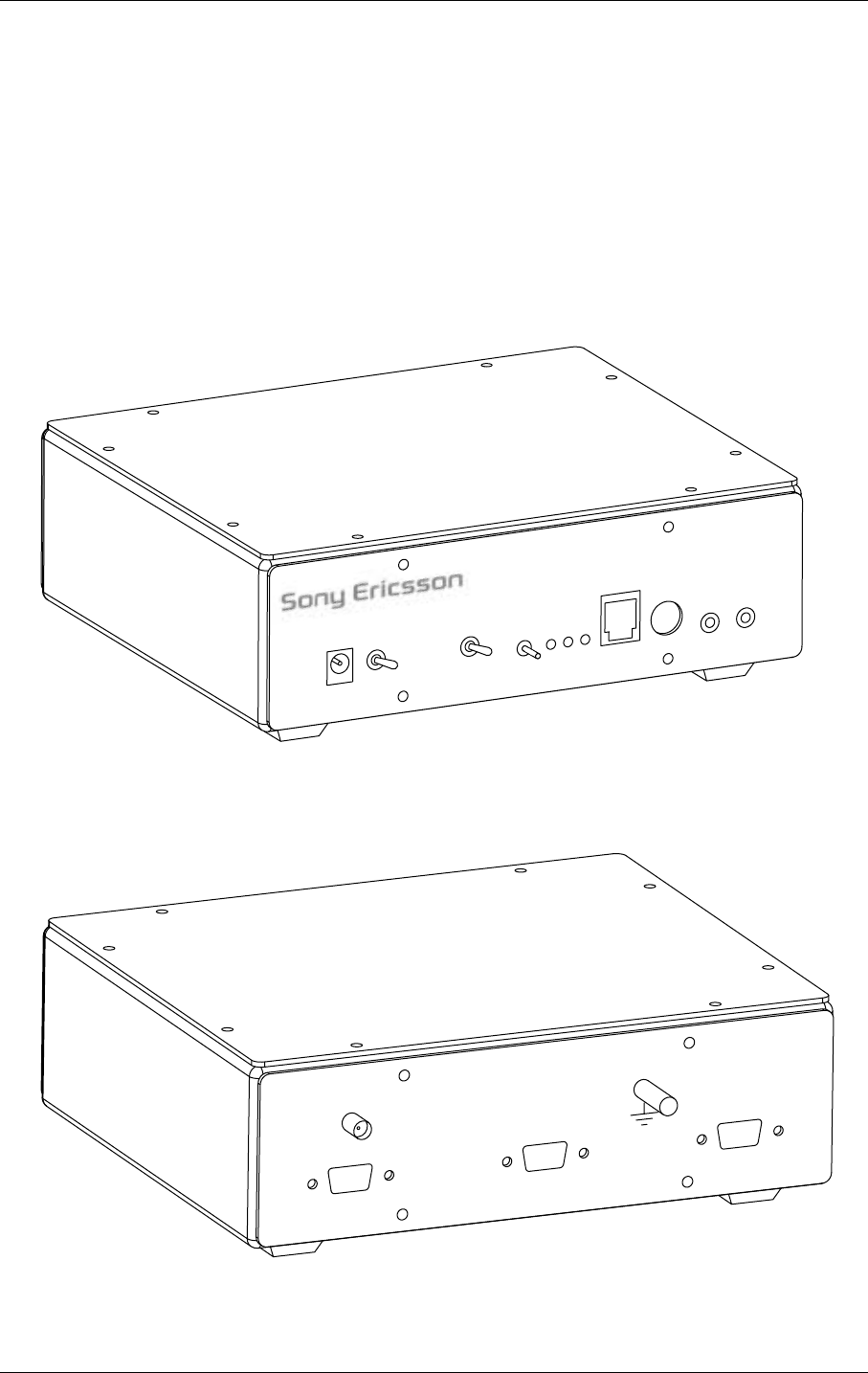
USING THE DEVELOPER’S KIT
29
LZT 123 7263 R1A
2. Using the Developer’s Kit
This section provides you with the information needed to setup and use
the developer’s kit. Before changing switch and jumper settings, refer
to “2.3 Jumpers, Switches and Connectors”, page 32.
Front and rear views of the developer’s kit are shown below. To access
the inside, remove the 8 screws on the top of the box and the cover plate.
Figure 2.1 Front view
Figure 2.2 Rear view
GM47/GM48 Developer's Kit
HANDSET
DCIO
Vcc
12v
PCM
MIC EAR
NC
OFF
ON
+5V
OFF
APP
SERVICE
STATUS
VIO
ON/OFF
UART3 UART1 UART2
RF

GM47/GM48 INTEGRATOR’S MANUAL
30 LZT 123 7263 R1A
2.1 Start up Check List
To use the developer’s kit in standard format check the following:
• With the case lid removed, make sure the GM47 module is plugged
into J4 and the RF lead is connected to the rear of the module;
• Add your SIM card;
• Check the jumpers are in their default positions. Refer to Figure 2.3;
• Connect the serial cable between your computer and UART1 on the
rear panel;
• Connect the antenna to the RF connector on the rear panel;
• Connect the audio equipment if required;
• Plug the external power supply into the socket marked 12v on the
front panel;
• Switch Vcc to ON;
• Push ON/OFF for at least 2 seconds until the yellow VIO LED is on.
Your developer’s kitshould now be operational and ready to receive AT
commands.
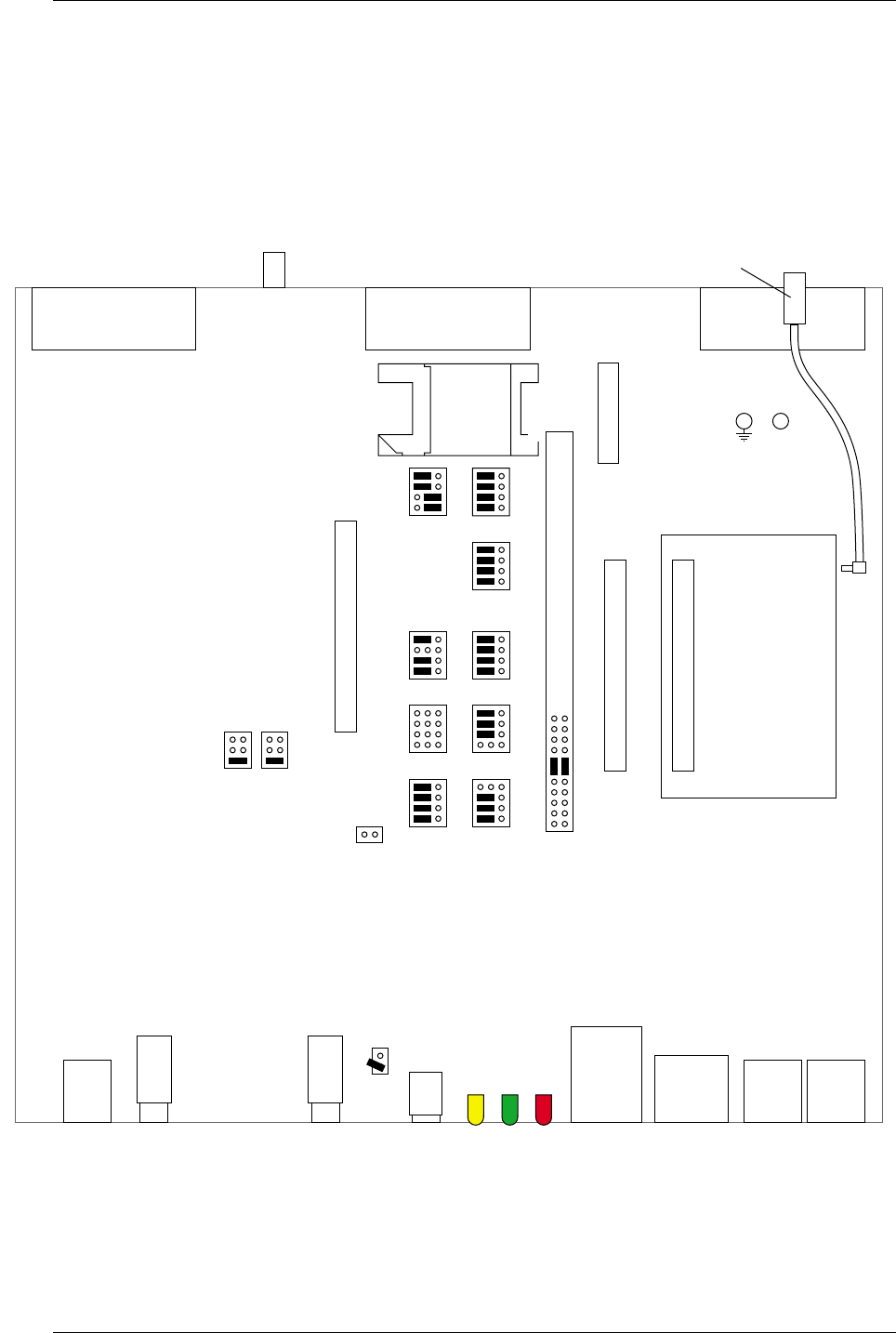
USING THE DEVELOPER’S KIT
31
LZT 123 7263 R1A
2.2 Developer’s Board Overlay
Figure 2.3 shows the developer’s board, including the position of all the
connectors, switches and jumpers (default positions). You will notice
that many jumpers are labelled “SW”. This is because the board was
previously fitted with DIL switches.
Figure 2.3 Developer’s board overlay
UART2
(ACB)
UART1
(EDB)
UART3
J5
17
U10
SIM
Holder
TP5 TP4
VCC
J4
159
60 2
System Connector
J10
2
60
59 1
System Connector (for flat cable)
J11
2
159
60
Test Connector
SW8
SW11
SW7
SW10
SW1
SW9
SW6
SW3
SW5
J12
260
59 1
Application Connector
JP24
JP21
JP18
12v
DC Power
Socket,
Input
10..15V d.c.
Vcc
NC/OFF/ON
power to
module
ON/OFF
(module)
Handset PCM MIC
Audio in
(ATMS)
EAR
Audio out
(AFMS)
SERVICE
STATUS
VIO
SIM test
connector
SW4
DCIO
Maintain in
OFF position
(Not used with this module.
Only present for backward
compatibility)
RF connector
Ground stud
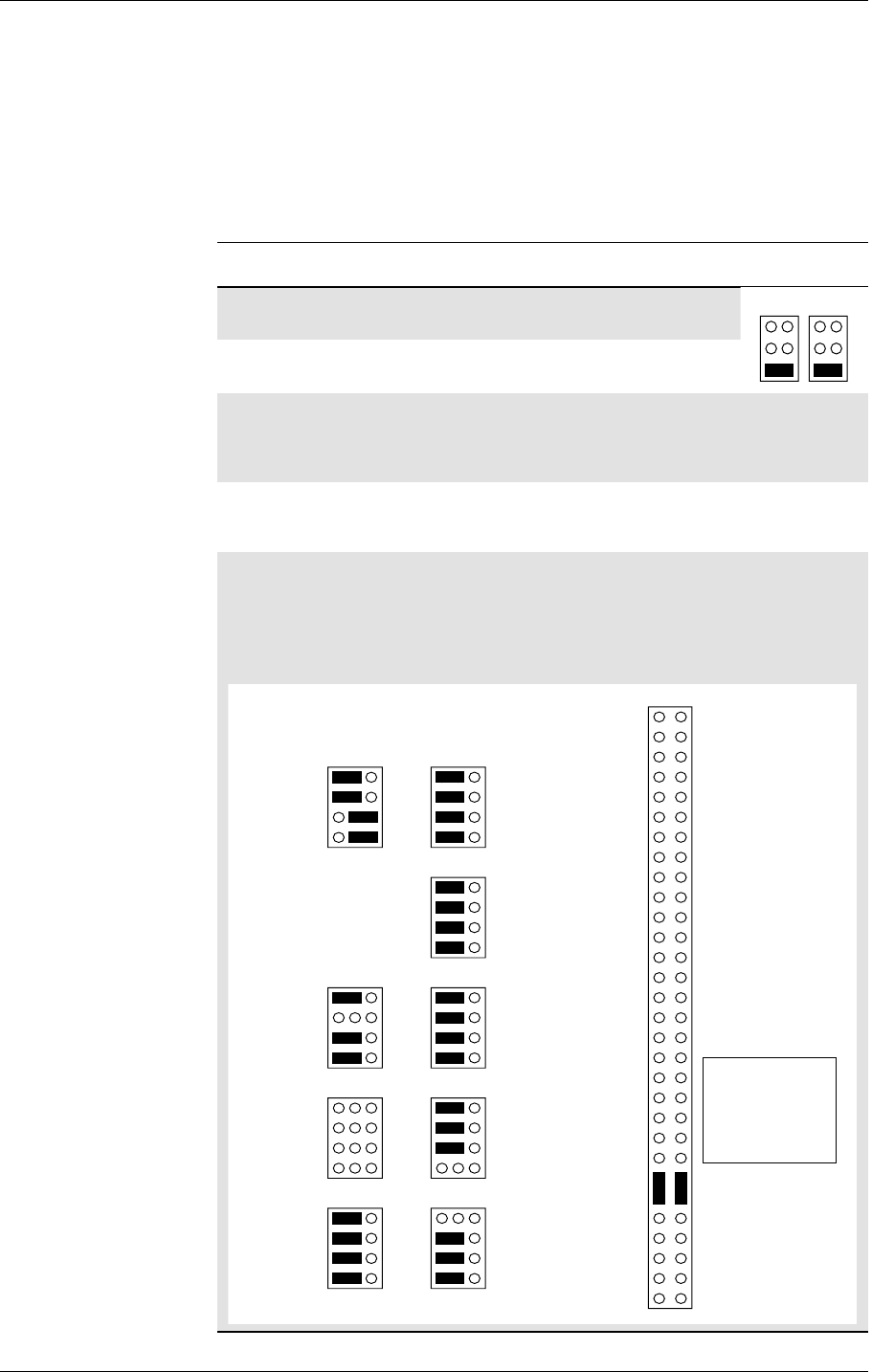
GM47/GM48 INTEGRATOR’S MANUAL
32 LZT 123 7263 R1A
2.3 Jumpers, Switches and Connectors
You will notice that many jumpers are labelled “SW”. This is because
the board was previously fitted with DIL switches. All jumpers are
located on the developer’s board (see “Developer’s board overlay”,
page 31).
Jumper Signal Setting
JP18 TD Maintain jumper in
lower default position
JP21 RD Maintain jumper in
lower default position
JP24 Reserved for
future use MUST remain open to prevent
damage to the module. As an extra
precaution, maintain DCIO in the OFF
position
SW4 SERVICE Connect the pins using the floating
connector ONLY when programming
the module or logging data
SW1, SW3, SW5,
SW6, SW7, SW8,
SW9, SW10,
SW11, J11 links
See diagram
below Default positions shown below. Move
any “SW” jumper to the right-hand
position to divert the signal to
connector J12. Remove the J11 links
to bypass J8, J9 or CP1 and process
audio signals externally
JP21 JP18
SIMRST
SIMCLK
SCL
SDA
SW8 SW1
ON/OFF
PRESENCE
SIMVCC
SIMDAT
SW9
BUZZER
LED
RI
DCD
VRTC
RD3 (RX3)
TD3 (TX3)
SW11 SW6
DTR
CTS
RTS
RD (DFMS)
PCMULD
PCMIN
PCMOUT
PCMCLK
SW7 SW3
TD (DTMS)
RD2 (CFMS)
TD2 (CTMS)
PCMDLD
BEARP
SERVICE
AFMS
ATMS
SW10 SW5
PCMSYN
MICN
MICP
BEARN
J11
59 60
50
4847
49
The links shown
on J11 must be
in place to
access audio
on J8, J9 or CP1
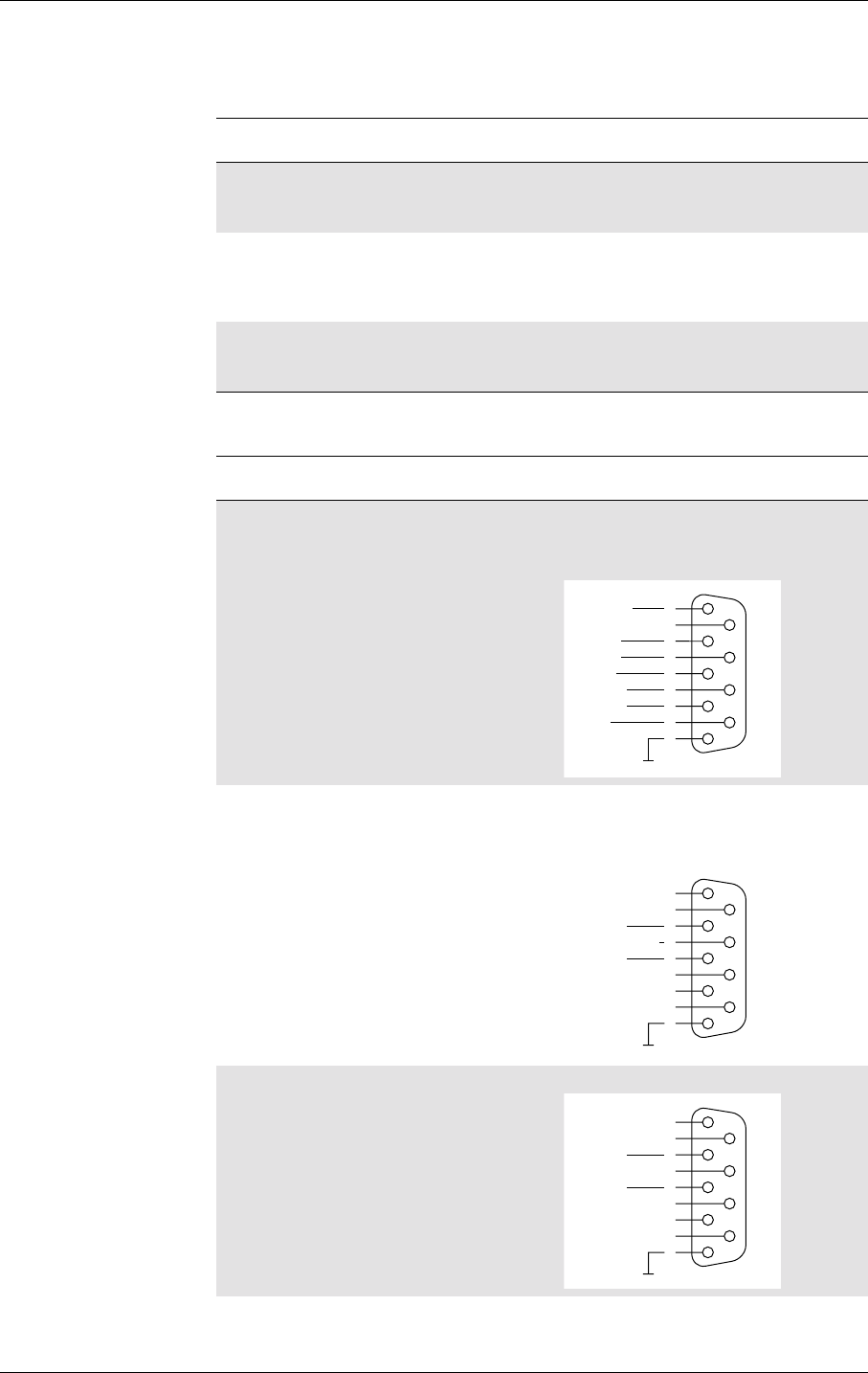
USING THE DEVELOPER’S KIT
33
LZT 123 7263 R1A
All switches are mounted on the front panel of the developer’s box.
Switch Description Operation
Vcc Toggle switch Switches power from external power supply to
module. Has three positions; NC, OFF and ON.
Switch to ON to connect power to the module
ON/OFF Push button
switch Switches module on and off. To power up the
module, push button for at least 2 seconds,
until the yellow VIO LED is on. Repeat the
process to turn the module off
DCIO Toggle switch Maintain in OFF position to prevent damage to
the module. Included only for backwards
compatibility
Connector Description Connections
UART1
(EDB) 9-way
Dsocket
(accessible
on the rear
panel)
Full 9-pin RS232 communication port. Used
during run-time to communicate with the
module (AT-commands, data transmission,
etc.)
UART2
(ACB) 9-way
Dsocket
(accessible
on the rear
panel)
3 line RS232 communications port
(+SERVICE). Used during service and
maintenance operations. Also used to
download new software to the module
UART3 9-way
Dsocket
(accessible
on the rear
panel)
3 line serial port. RS232 levels
DCD
RD
RTS
TD
CTS
DTR
1
2
7
3
8
4
6
5
9RI
RD2
TD2
1
2
7
3
8
4
6
5
9
SERVICE
RD3
TD3
1
2
7
3
8
4
6
5
9
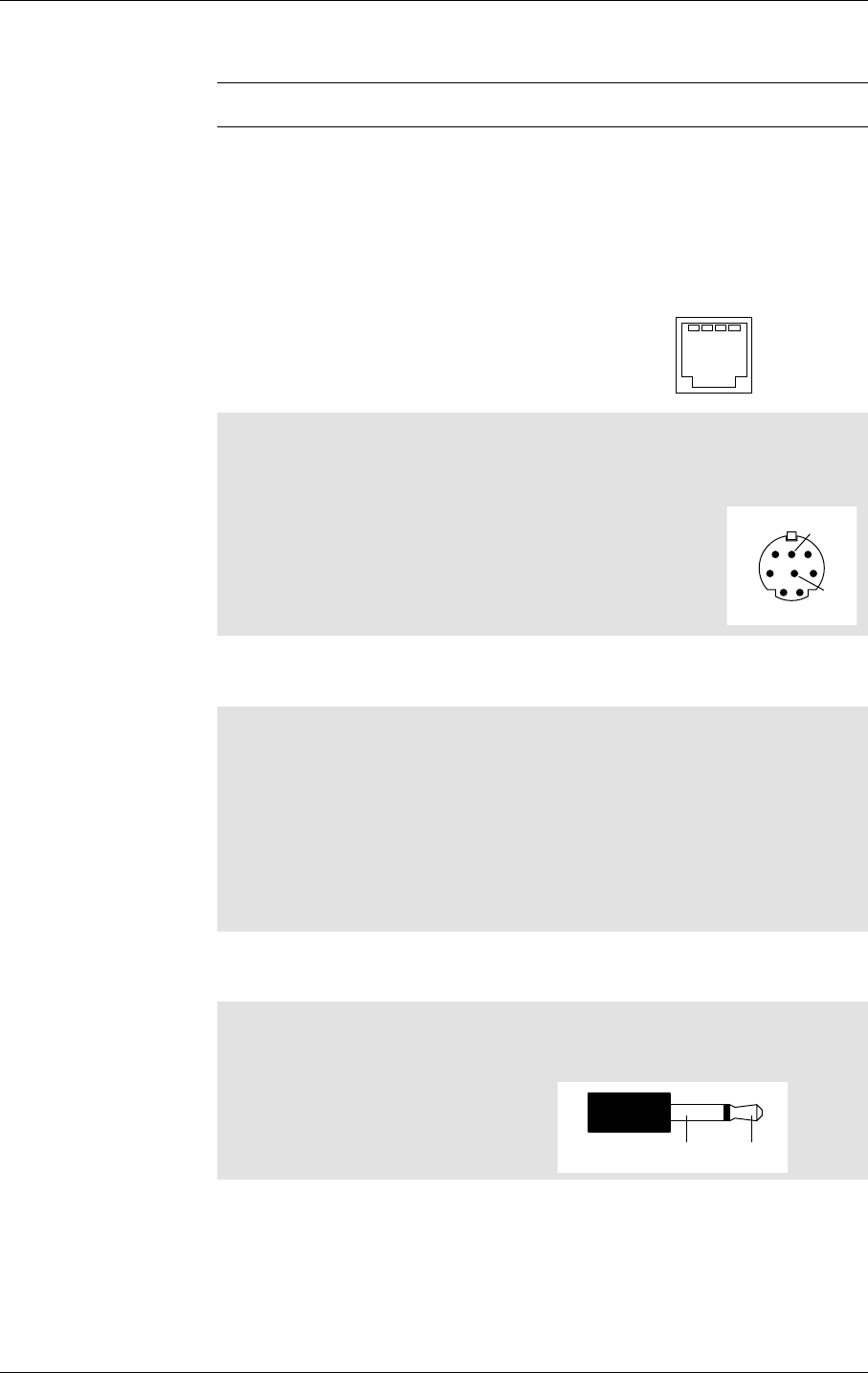
GM47/GM48 INTEGRATOR’S MANUAL
34 LZT 123 7263 R1A
Handset RJ11 socket Connector for a standard telephone
handset. As PCM paths are open inside the
module, a default short circuit is made
between PCMDLD-PCMIN and PCMULD-
PCMOUT signals on test connector J11 to
enable analogue audio in downlink and
uplink directions. Jumpers are in place
between pins 48 & 50 and between pins 47
&49
Pin # Signal
1MICN
2BEARN
3BEARP
4MICP
PCM 8pinmini-DIN
connector Carries PCM signals
Pin # Signal
1VIO(2.75Vd.c.output)
2PCMULD
3PCMDLD
4PCMCLK
5PCMSYNC
6DGND
7PCMIN
8PCMOUT
9DGND
J4 SYSTEM
connector Allows direct connection of the module to
thedevelopmentboard(seeFigure2.3,
page 31)
J5 SIM card test
connector Connector to gain access to the SIM card
signals, which are connected in parallel with
U10
Pin # Signal
1SIMVCC
2SIMRST
3SIMCLK
4SIMDAT
5 SIMPRESENCE
6SIMGND
7SIMGND
U10 SIM Holder Connector for SIM card. Signals are also
present at test connector J5, described
above
EAR 3.5mm2-pole
jack socket Audio output (unbalanced) or Audio From
Mobile Station (AFMS). Make sure jumpers
are in place between pins 48 & 50 and
between pins 47 & 49
MIC 3.5mm2-pole
jack socket Audio input (unbalanced) or Audio To
Mobile Station (ATMS). Signal source must
be AC-coupled as a bias voltage for
electret microphones is provided
(2.0 - 2.5Vd.c.). Make sure Jumpers are in
place between pins 48 & 50 and between
pins 47 & 49
Connector Description Connections
1234
1
2
34
5
6
98
7
ground signal
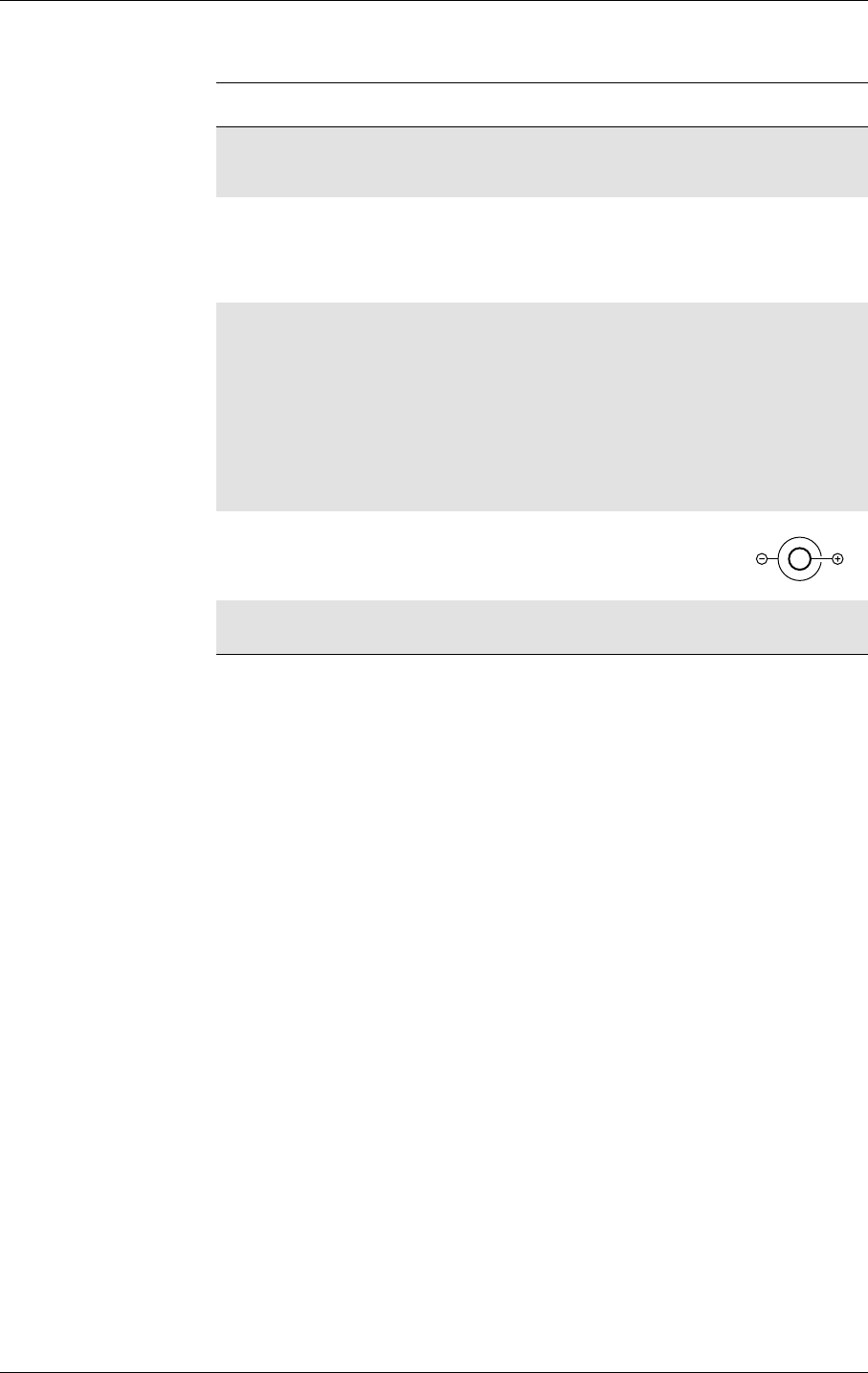
USING THE DEVELOPER’S KIT
35
LZT 123 7263 R1A
J10 SYSTEM
connector For optional flat cable connection between
themoduleandthedevelopmentboard
(see Figure 2.3, page 31)
J11 TEST
connector 60 pin, 2.54mm pitch, dual row pin header
that carries all signals present at the system
connector of the module. Used for easy
testing of the signals (see Figure 2.4,
page 36)
J12 Application
connector For flat cable connection between a host
application and the module. Most of the
signalspassthroughjumpersthatallowthe
developer to select whether a specific
signal is routed to/from the development
board or to/from the host application. If no
application is connected to J12, these
jumpers (SW1, SW3, SW5, SW6, SW7, SW8,
SW9, SW10 & SW11) serve as on/off switches
for the module signals (see Figure 2.3,
page 31)
12v 2.1mm DC
Power Socket Allows connection of an
external power supply.
Between 10V and 15V d.c. at
6 watts is required
RF SMA panel
socket Connect the supplied antenna
Connector Description Connections
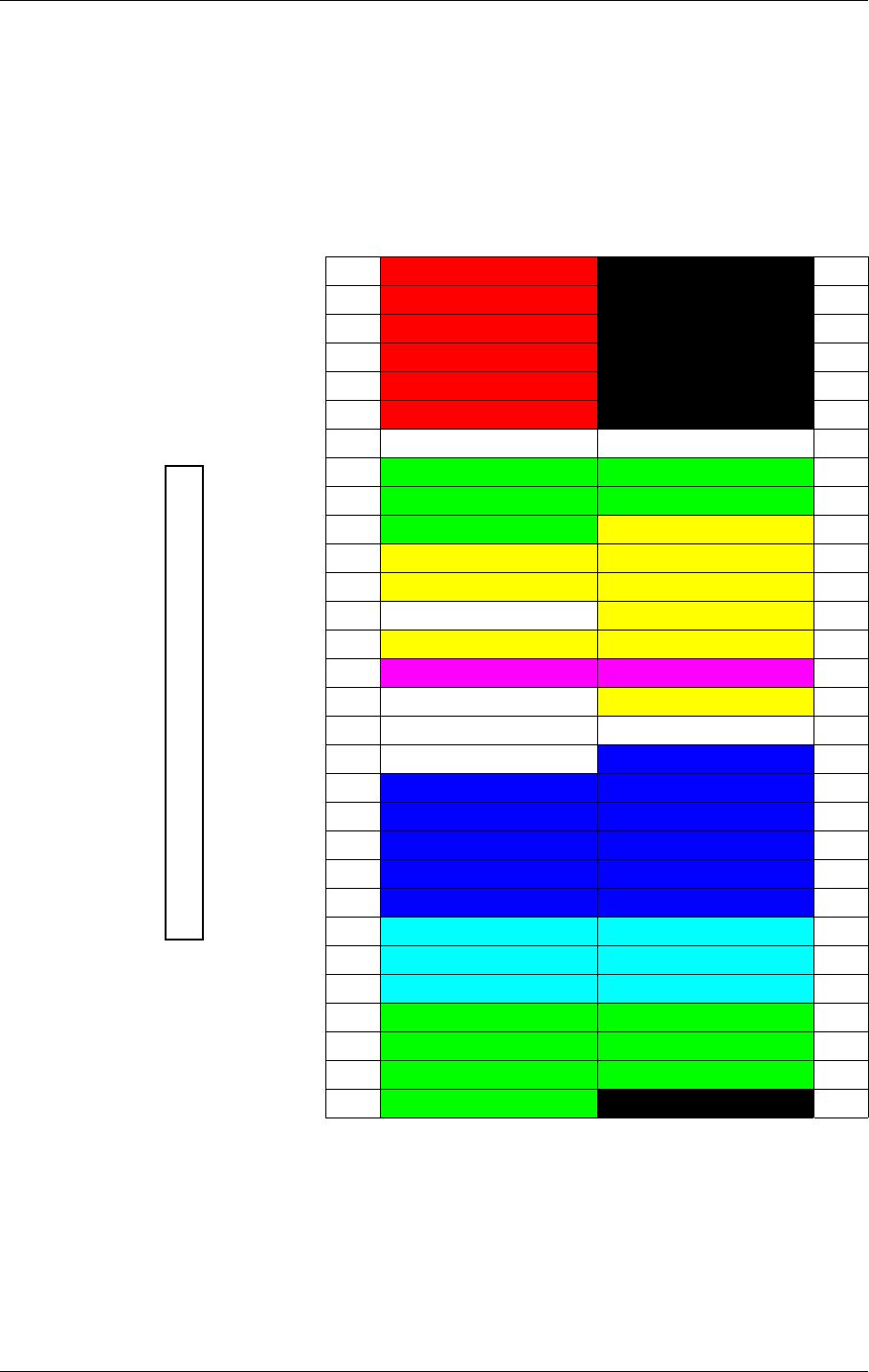
GM47/GM48 INTEGRATOR’S MANUAL
36 LZT 123 7263 R1A
2.4 System Connector Pin Assignments
Refer to the table below when monitoring signals on, or connecting to,
J10, J11 or J12. The table shows the system-connector pin assignments
for the GM47 module.
Figure 2.4 System connector pin assignments
1VCC DGND 2
3VCC DGND 4
5VCC DGND 6
7VCC DGND 8
9VCC DGND 10
11 VCC DGND 12
13 Reserved for future use ON/OFF 14
15 SIMVCC SIMPRESENCE 16
17 SIMRST SIMDAT 18
19 SIMCLK DAC 20
21 IO1 IO2 22
23 IO3 IO4 24
25 VRTC ADC1 26
27 ADC2 ADC3 28
29 SDA SCL 30
31 BUZZER OUT5 32
33 LED VIO 34
35 TX_ON RI 36
37 DTR DCD 38
39 RTS CTS 40
41 TD (DTMS) RD (DFMS) 42
43 TD3 (TX3) RD3 (RX3) 44
45 TD2 (CTMS) RD2 (CFMS) 46
47 PCMULD PCMDLD 48
49 PCMOUT PCMIN 50
51 PCMSYNC PCMCLK 52
53 MICP MICN 54
55 BEARP BEARN 56
57 AFMS SERVICE 58
59 ATMS AGND 60
12
59 60
J10, J11 & J12 pin
numbering
viewed from the
front of the
developer’s box

Product Photo/Illustration
Part 3: Integrating the
Module
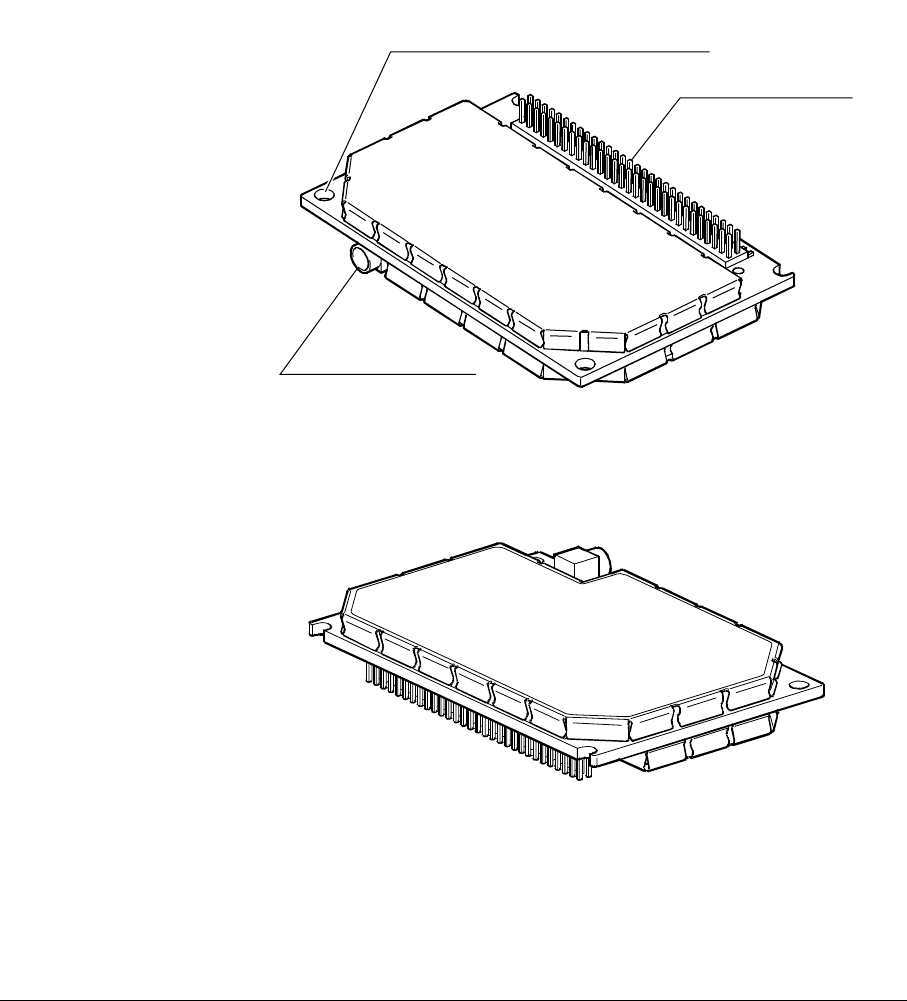
39
LZT 123 7263 R1A
1. Mechanical Description
1.1 Interface Description
The pictures below show the mechanical design of the GM47 along
with the positions of the different connectors and mounting holes. The
GM47 is protected with AISI 304 stainless steel covers that meet the
environmental and EMC requirements.
Figure 1.1 GM47 viewed from below
Figure 1.2 GM47, viewed from above
Please note the following:
• Mounting holes positioned at the corners make it possible to
securely bolt the module into your application.
Mounting hole/ground connection
Antenna connector
System connector
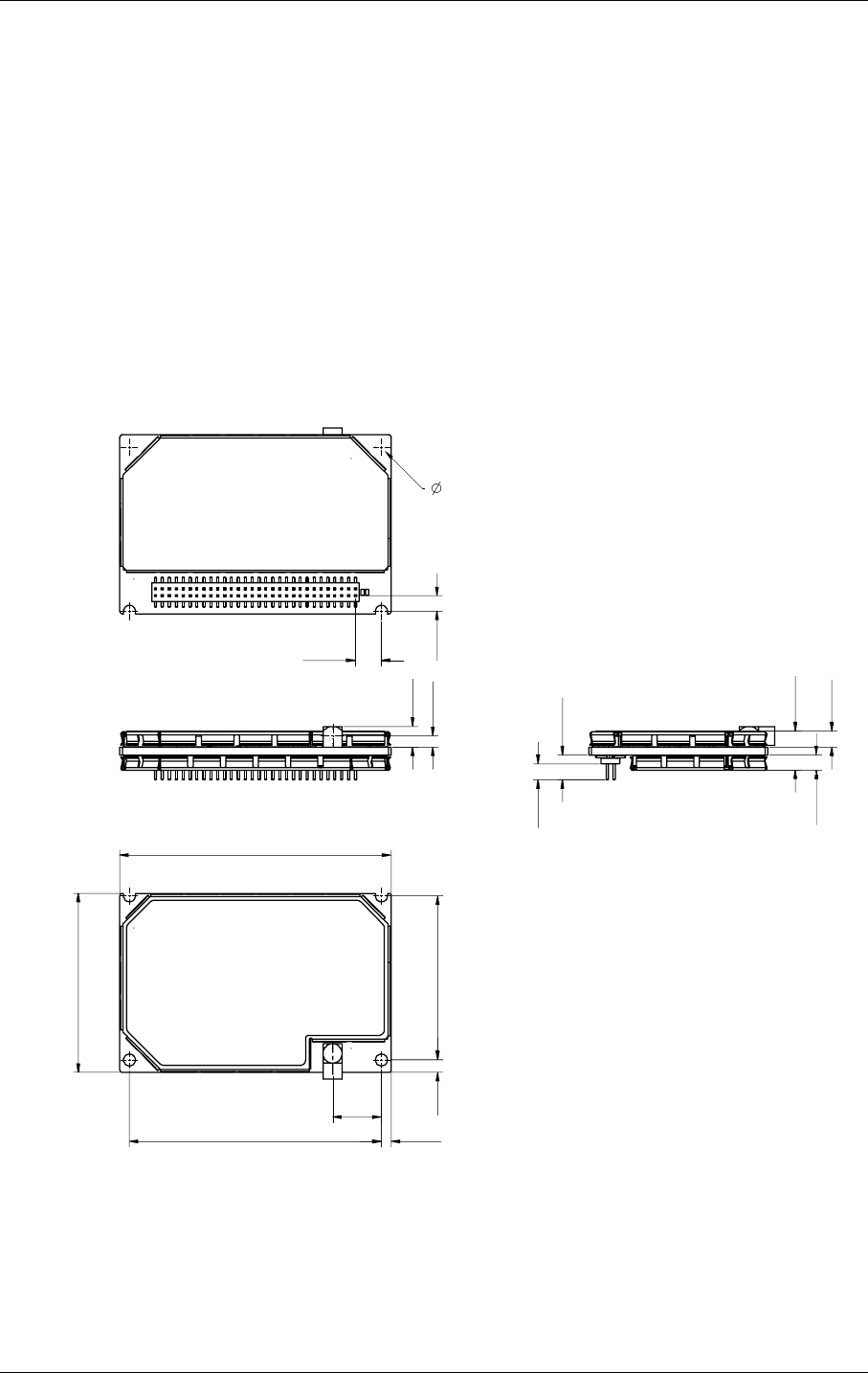
GM47/GM48 INTEGRATOR’S MANUAL
40 LZT 123 7263 R1A
• Keypad, display, microphone, speaker and battery are not part of the
module.
• The SIM card is mounted in your application, external to the
module.
• The System Connector is a 60-pin, standard 0.05in (1.27mm) pitch
type. The pins and their electrical characteristics are described in
“2. System Connector Interface”, page 41.
• Information about the Antenna Connector is found in
“3. Antenna Connector”, page 65.
1.2 Physical Dimensions
Figure 1.3 Dimensions of the GM47
Measurements are given in millimetres. See also “Technical Data”,
page 73.
4.78
9.00
46.40
50.00
2.20 (4x)
1.80
2.86
2.053.80
4.60
3.00 2.80
7.15 2.90
30.20
2.30
33.00
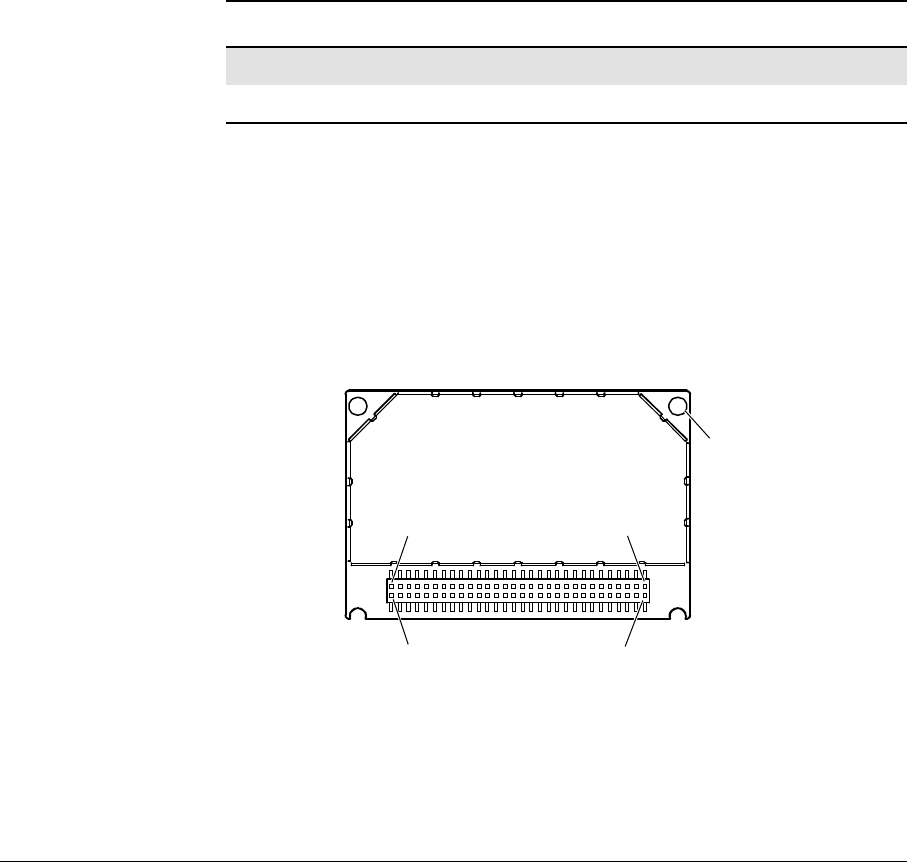
41
LZT 123 7263 R1A
2. System Connector Interface
2.1 Overview
Electrical connections to the module (except the antenna), are made
through the System Connector Interface. The system connector is a
60-pin, standard 0.05in (1.27mm) pitch device.
The system connector allows both board-to-board and board-to-cable
connections to be made. The table below shows two possible mating
connectors for use in your applications. Use the board-board connector
to connect the module directly to a PCB, and the board-cable connector
to connect the module via a cable.
Figure 2.1 below shows the numbering of the connector pins.
A ground connection is provided at the mounting hole next to the RF
connector on the module as shown below. Connect this ground point to
the DGND pins of the module by the shortest, low-impedance path
possible. The purpose of this connection is to allow any ESD picked up
by the antenna to bypass the module’s internal ground path.
Figure 2.1 GM47, viewed from underneath
Part Number Description
9462-9101-606 Female, board-board connector (Speed Tech)
TBD Female, board-cable connector
Pin 59 Pin 1
Pin 60 Pin 2
Ground
connection

GM47/GM48 INTEGRATOR’S MANUAL
42 LZT 123 7263 R1A
The following table gives the pin assignments for the system connector
interface and a short description for each signal.
Note! Under the heading “Dir” in the table, module input and output signals
are indicated by the letters I and O respectively.
Pin Signal Name Dir Signal Type Description
1VCC -Supply Power supply
2DGND - - Digital ground
3VCC -Supply Power supply
4DGND - - Digital ground
5VCC -Supply Power supply
6DGND - - Digital ground
7VCC -Supply Power supply
8DGND - - Digital ground
9VCC -Supply Power supply
10 DGND - - Digital ground
11 VCC -Supply Power supply
12 DGND - - Digital ground
13 Reserved for
future use
14 ON/OFF IInternal pull
up, open drain Turns the module on and off.
Former WAKE_B
15 SIMVCC -Digital 3V/5V SIM card power supply. Power output
from module for SIM Card
16 SIMPRESENCE IInternal pull
up,opendrain SIM Presence
A “1” indicates that the SIM is missing; a
“0”thatitisinserted
17 SIMRST ODigital 3V/5V SIM card reset
18 SIMDATA I/O Digital 3V/5V SIM card data
19 SIMCLK ODigital 3V/5V SIM card clock
20 DAC OAnalogue Digital to analogue converter
21 IO1 IDigital 2.75 General purpose input/output 1
22 IO2 IDigital 2.75 General purpose input/output 2
23 IO3 IDigital 2.75 General purpose input/output 3
24 IO4 IDigital 2.75 General purpose input/output 4
25 VRTC ISupply 1.8V Supply for real time clock
26 ADC1 IAnalogue Analogue to digital converter 1
27 ADC2 IAnalogue Analogue to digital converter 2
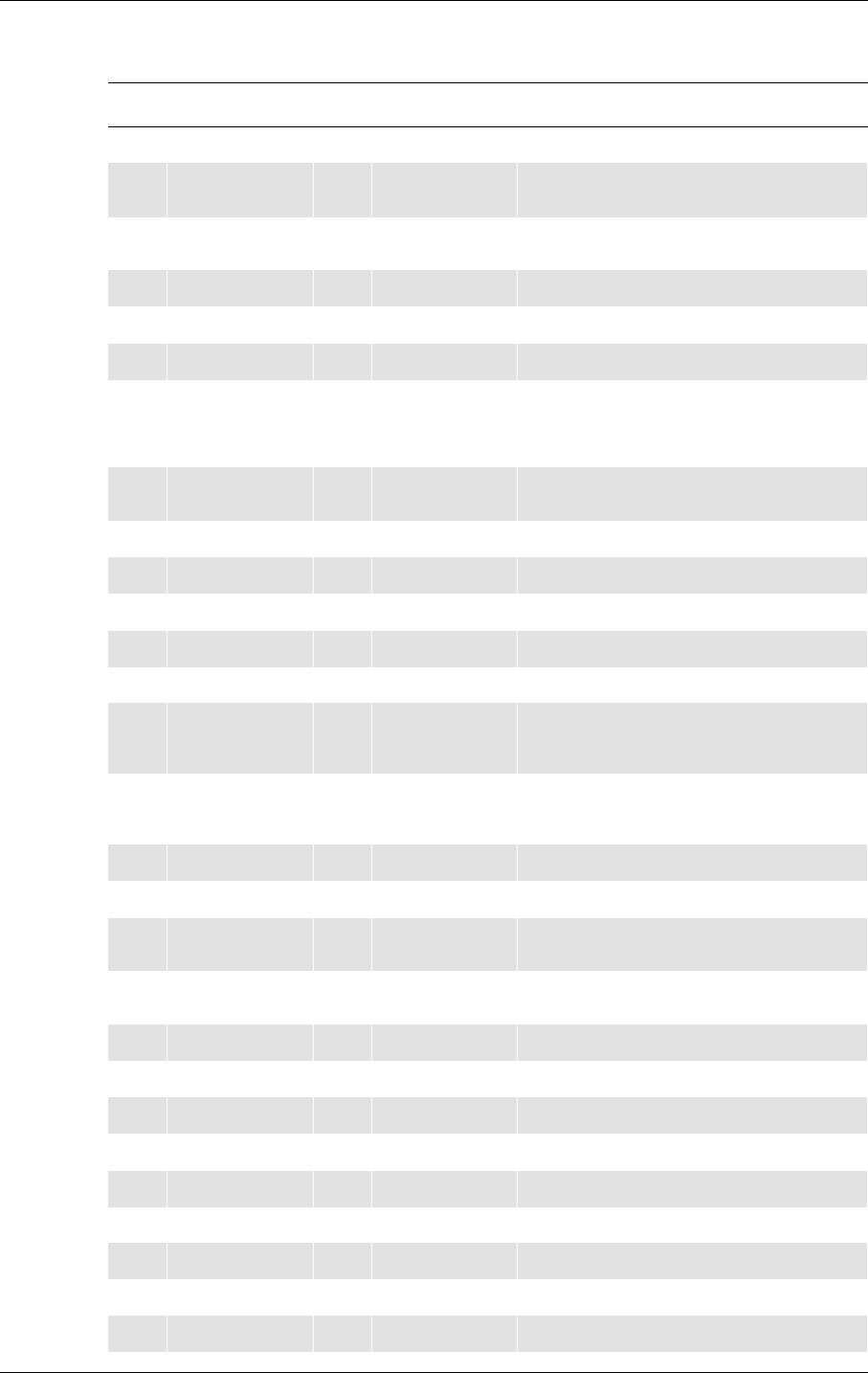
2. SYSTEM CONNECTOR INTERFACE
43
LZT 123 7263 R1A
28 ADC3 IAnalogue Analogue to digital converter 3
29 SDA I/O 2.75, internal
pull up I2Cdata
30 SCL O2.75, internal
pull up I2Cclock
31 BUZZER ODigital 2.75 Buzzer output from module
32 OUT5 ODigital 2.75 Programmable output 5
33 LED ODigital 2.75 Flashing LED
34 VIO OPower Out
2.75V Module power indication. VIO is a
2.75V at 75mA output supply that can
be used to power external circuitry that
interfaces to the GM47
35 TX_ON ODigital 2.75 This output indicates when the GSM
module is going to transmit the burst
36 RI ODigital 2.75 Ring Indicator (UART1)
37 DTR IDigital 2.75 Data Terminal Ready (UART1)
38 DCD ODigital 2.75 Data Carrier Detect (UART1)
39 RTS IDigital 2.75 Request To Send (UART1)
40 CTS ODigital 2.75 Clear To Send (UART1)
41 TD IDigital 2.75 Transmitted Data (UART1).
Data from DTE (host) to DCE (module).
Former DTMS
42 RD ODigital 2.75 Received Data (UART1).
Data from DCE (module) to DTE (host).
Formerly DFMS
43 TD3 IDigital 2.75 UART3 transmission
44 RD3 ODigital 2.75 UART3 reception
45 TD2 IDigital 2.75 UART2 transmission. Used for flashing
the memory. Former CTMS
46 RD2 ODigital 2.75 UART2 Reception. Used for flashing the
memory. Former CFMS
47 PCMULD IDigital 2.75 DSP PCM digital audio input
48 PCMDLD ODigital 2.75 DSP PCM digital audio output
49 PCMOUT ODigital 2.75 Codec PCM digital audio output
50 PCMIN IDigital 2.75 Codec PCM digital audio input
51 PCMSYNC ODigital 2.75 DSP PCM frame sync
52 PCMCLK ODigital 2.75 DSP PCM clock output
53 MICP IAnalogue Microphone Input positive
54 MICN IAnalogue Microphone Input negative
55 BEARP OAnalogue Speaker output positive
Pin Signal Name Dir Signal Type Description
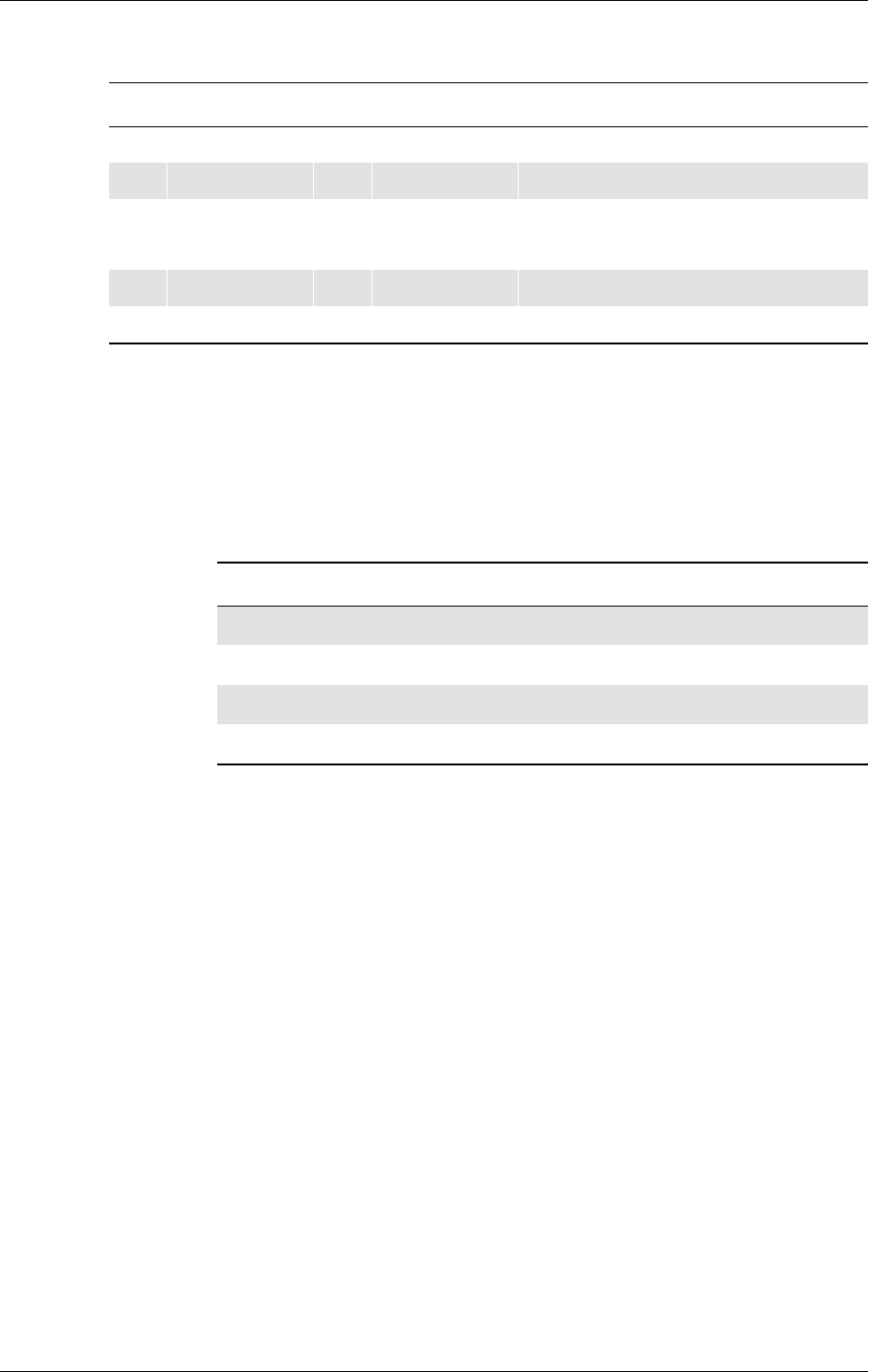
GM47/GM48 INTEGRATOR’S MANUAL
44 LZT 123 7263 R1A
2.2 General Electrical and Logical Characteristics
Many of the signals, as indicated in the table above, are high-speed
CMOS logic inputs or outputs powered from a 2.75V±5% internal
voltage regulator, and are defined as Digital 2.75V. Whenever a signal
is defined as Digital 2.75V, the following electrical characteristics
apply.
2.2.1 General Protection Requirements
• All 2.75V digital inputs will continuously withstand and suffer no
damage in the power-on or power-off condition when subjected to
any voltage from -0.5V to 3.47V (3.3V+5%).
• All 2.75V digital outputs will continuously withstand a short circuit
to any other voltage within the range 0V to 3V.
• All analogue outputs will continuously withstand a short circuit to
any voltage within the range 0V to 3V.
• The SIM output signals and the SIMVCC supply will continuously
withstand a short circuit to any voltage within the range 0V to 5.8V.
56 BEARN OAnalogue Speaker output negative
57 AFMS OAnalogue Audio output from module
58 SERVICE I2.7V Flash programming voltage for the MS.
Enable logger information if not
flashing. Formerly VPPFLASH
59 ATMS IAnalogue Audio input to module
60 AGND - - Analogue ground
Pin Signal Name Dir Signal Type Description
Parameter Min. Max. Units
High Level Output Voltage (VOH), Io=–2mA 2.2 2.75 V
Low Level Output Voltage (VOL), Io=2mA 00.6 V
High Level Input Voltage (VIH)1.93 2.75 V
Low Level Input voltage (VIL) 0 0.8 V
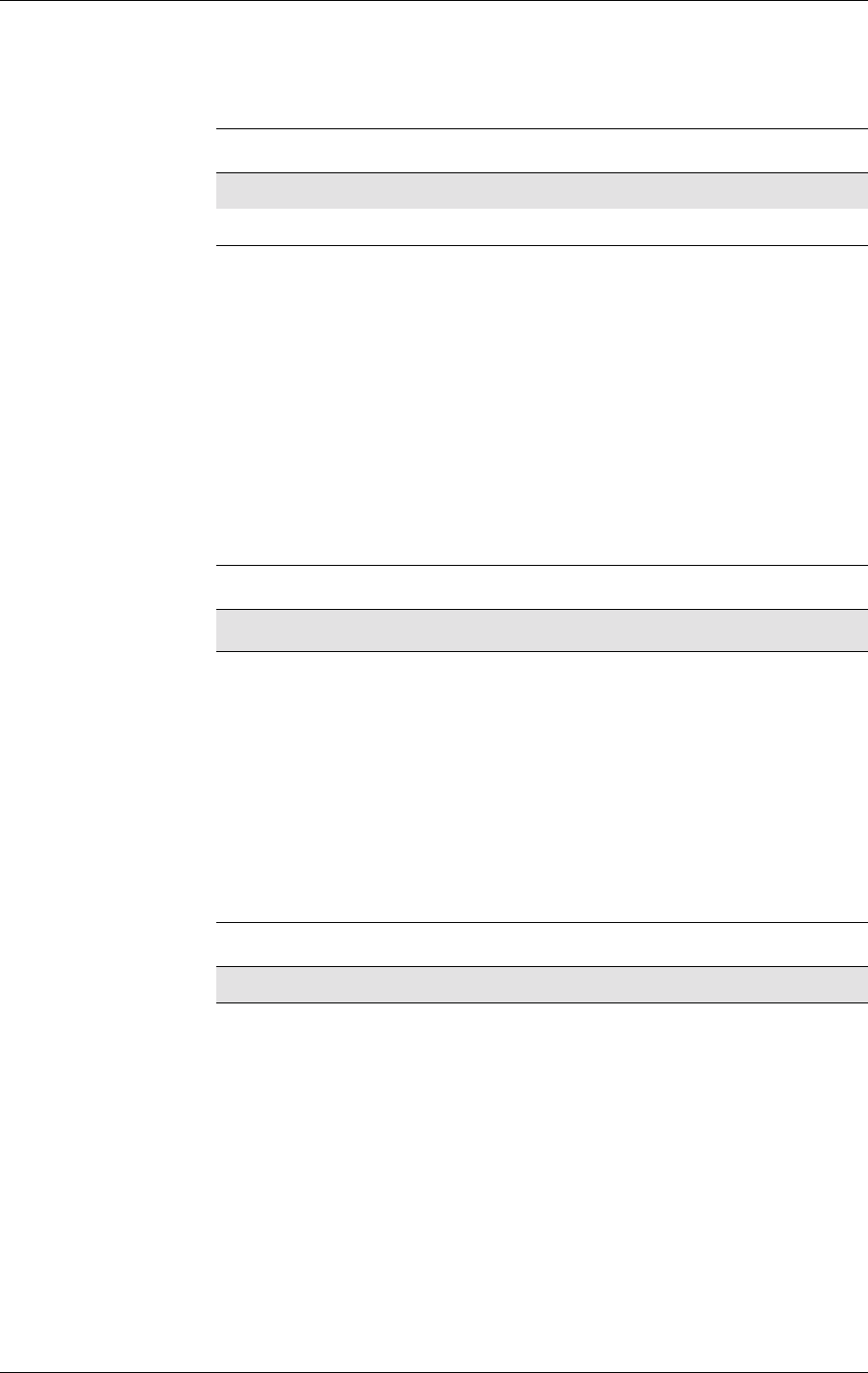
2. SYSTEM CONNECTOR INTERFACE
45
LZT 123 7263 R1A
2.3 Grounds
There are two ground connections in the GM47, AGND (analogue
ground) and DGND (digital ground). Pin assignments are shown in the
table above.
Note! AGND and DGND are connected at a star point inside the module. They
must not be joined together in your application.
2.3.1 Analogue Ground - AGND
AGND is the return signal, or analogue audio reference, for ATMS
(Audio To Mobile Station) and AFMS (Audio From Mobile Station).
2.3.2 Digital Ground - DGND
DGND is the reference or return signal for all system interface digital
signals and is also the d.c. return for SERVICE and the power supply,
VCC. Connect all DGND pins together in your application in order to
carry the current drawn by the module.
2.4 VCC - Regulated Power Supply Input
Power is supplied to the module VCC pins, from an external source.
Connect all VCC pins together in your application in order to carry the
current drawn by the module.
Pin Signal Description
2, 4, 6, 8, 10, 12 DGND Digital ground
60 AGND Analogue ground
Parameter Limit
Imax ≅12.5mA
Pins Signal Description
1, 3, 5, 7, 9, 11 VCC regulated power supply input
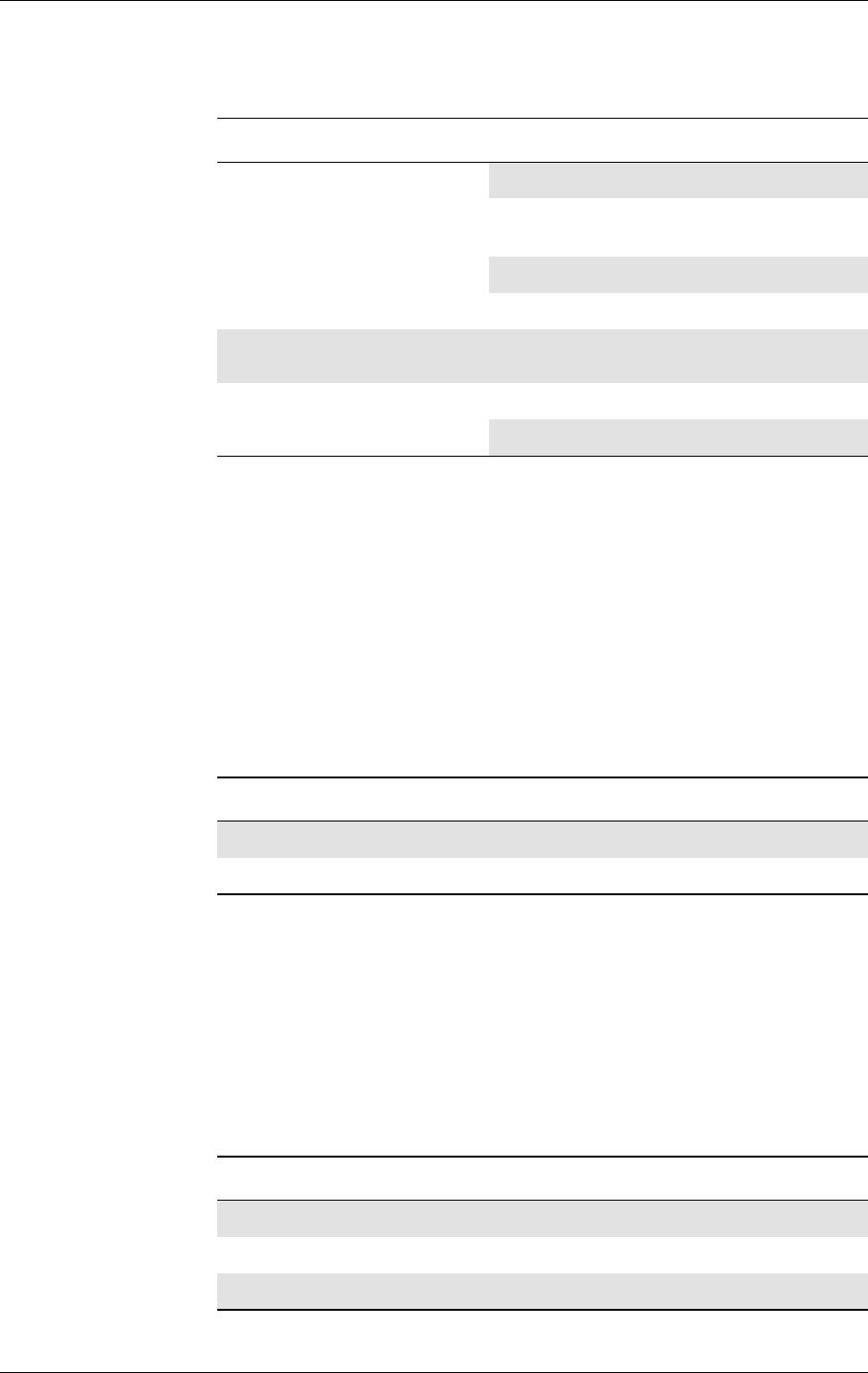
GM47/GM48 INTEGRATOR’S MANUAL
46 LZT 123 7263 R1A
The electrical characteristics for VCC are shown in the table below.
Note! GM47 has no internal capacitance to supply the large current peaks
during GSM burst transmission. We recommend you follow these
general guidelines:
• Fit a low ESR electrolytic capacitor close to the module: minimum
value 1,000µF, <100mΩESR.
• Make sure power supply to module line resistance is <200mΩ.
2.5 ON/OFF and External Power Signal
2.5.1 Switching the module ON and OFF
The module is turned on and off by momentarily grounding the
ON/OFF pin. This input should be driven by an open collector, or other
device which will not tie the input high, to allow the internal alarm clock
function to operate. See the table below for exact characteristics. In the
OFF state the current consumption of the module is less than 100µA.
The ON/OFF signal is a digital input with the following characteristics:
Parameter Mode Limit
Vcc supply voltage
Nominal 3.6V
Tolerance
including ripple a
a. Measured at system connector pins.
3.4V - 4.0V
Over-voltage limit 5.5V
Maximum ripple TBD
Maximum allowable voltage
drop Burst transmission 200mV
Current drawn, at full TX
power <600mA (average)
<2A (peak)
Pin Signal Dir Description
14 ON/OFF IPulse signal to turn the module on or off
34 VIO O2.75V supplied by the module
Parameter Min. Typ. Max. Units
Voltage HIGH level (FALSE) VCC V
Voltage LOW level (TRUE) 00.3 x VCC V
Pull-up resistance (internal) 39 kΩ
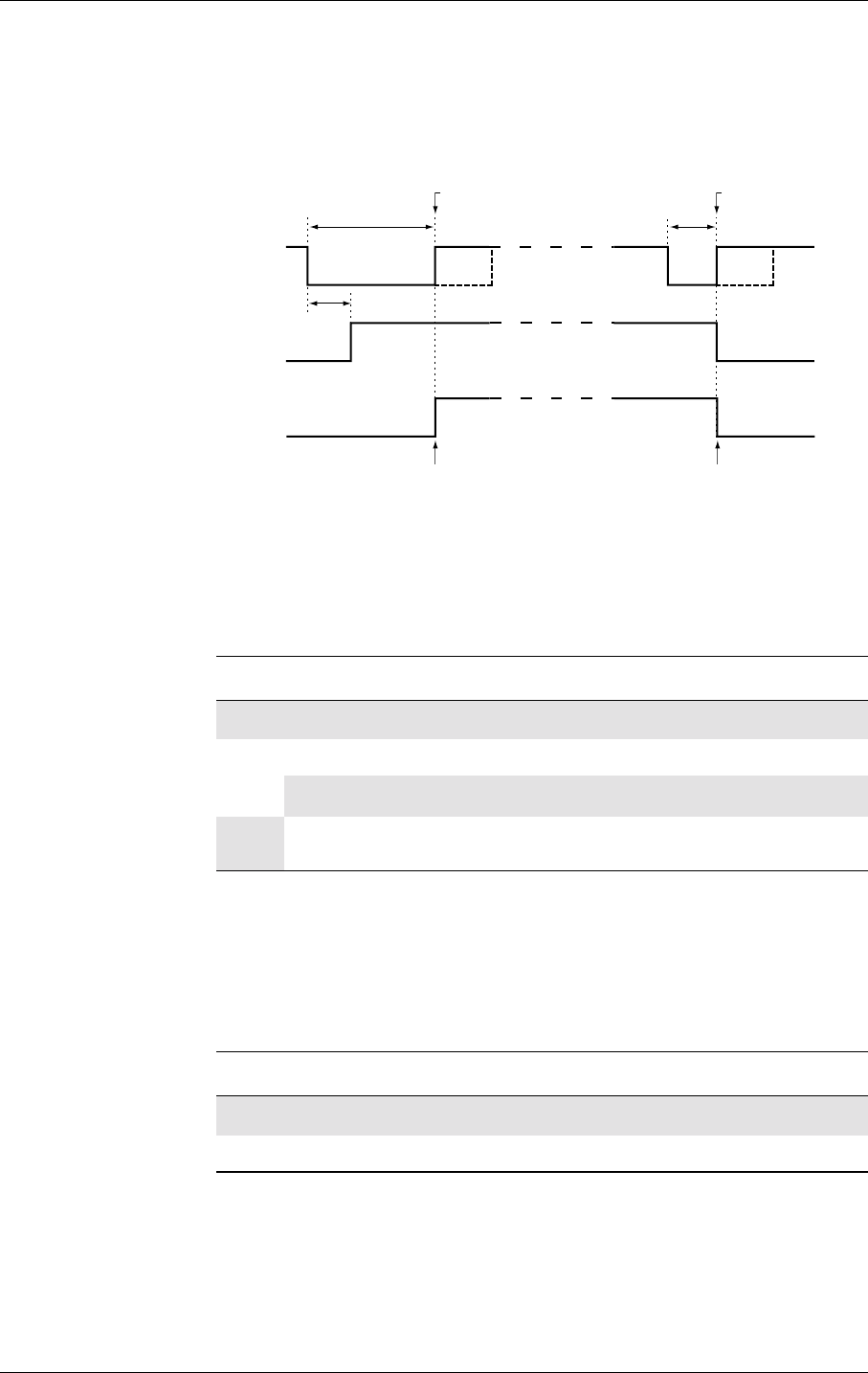
2. SYSTEM CONNECTOR INTERFACE
47
LZT 123 7263 R1A
The following timing diagram illustrates both power-up and power-
down processes.
Figure 2.2 ON/OFF timing and VIO performance
Times are defined as follows:
2.5.2 VIO - 2.75V Supply
VIO provides an output voltage derived from an internal 2.75V
regulator. Its electrical characteristics are shown below.
You can use this output for the following:
• to indicate that the module is alive;
• to power interface circuits, external to the module.
ON/OFF
VIO
Module
powered
t
1
t
2
t
pwr
Module power-up Module power-down
Module on Module off
Time Description Min. Typ. Max. Units
t1Turn-on pulse time ≥2 s
t2
Turn-off pulse time ≥1 s
Hardware-reset pulse timea
a. Active only when a full system reset is required.
>10 s
tpwr Time for VIO and internal voltages
to be established 100 200 ms
Parameter Min. Typ. Max. Units
Output Voltage (Iload =50mA) 2.70 2.75 2.85 V
Load current 75 mA
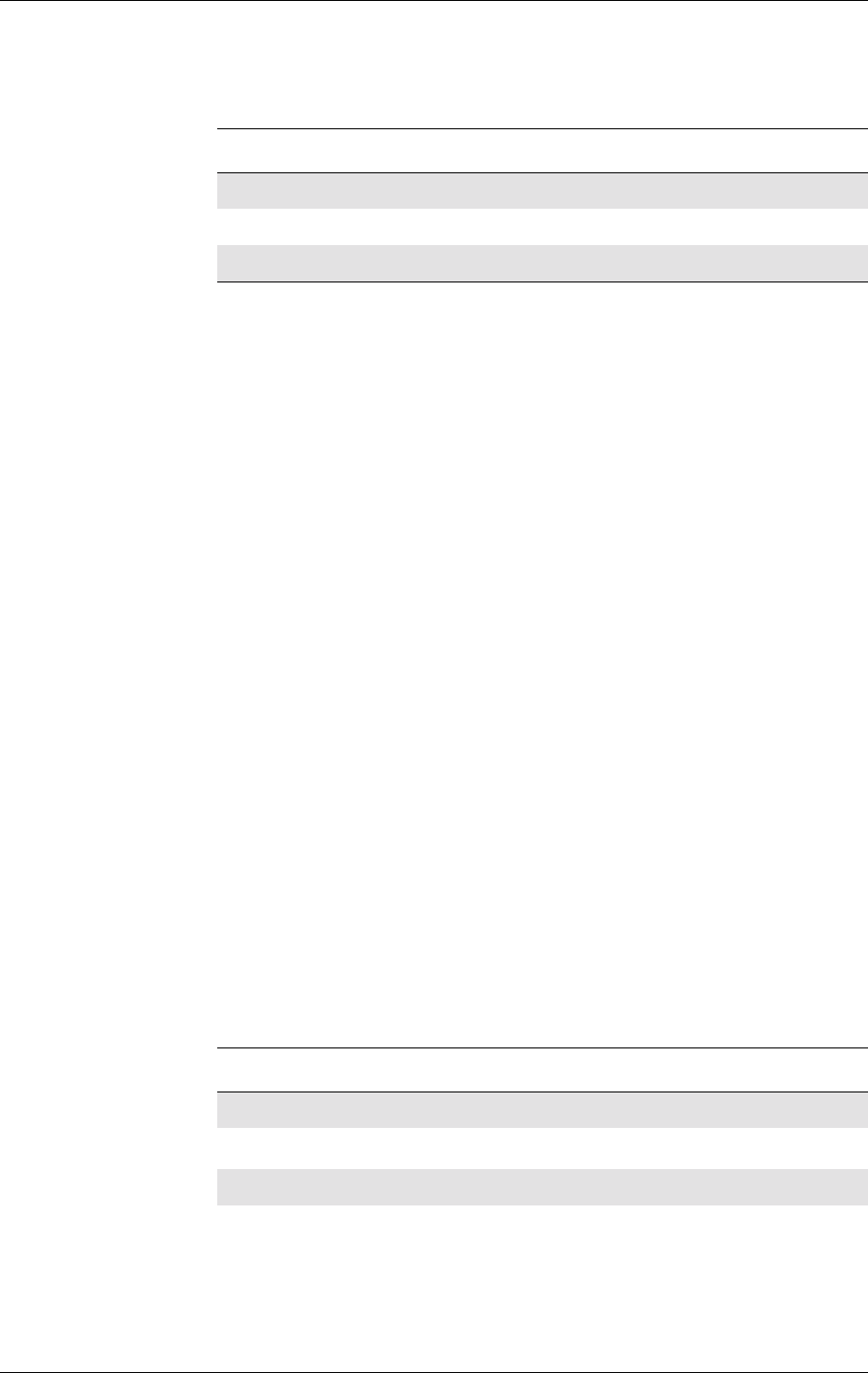
GM47/GM48 INTEGRATOR’S MANUAL
48 LZT 123 7263 R1A
2.6 Analogue Audio
ATMS is the audio input, and AFMS is the audio output, of the module.
These signals can be used in Hands-free or Portable Hands-free mode.
Hands-free Mode
This mode is used for audio accessories, such as car kits and hands-free
equipment.
Portable Hands-free Mode
This is the default mode. It activates a different amplification factor in
the ME, and activates a 2V microphone bias level for ATMS. The bias
level is adjustable using AT*E2EAMS.
2.6.1 Audio To Mobile Station - ATMS
ATMS is the analogue audio input to the module. Internally, the signal
is sent to the CODEC (COder/DECoder), where it is converted to digital
audio in PCM (Pulse Code Modulation) format. The encoded audio is
sent to PCMOUT via the internal PCM bus.
ATMS provides a DC bias when it is used as the microphone input in
Portable Hands-free applications. All other sources must be
a.c.-coupled to avoid attenuation of low frequencies, and to prevent
incorrect biasing or damage to the ATMS input. Use a capacitor greater
than the value shown in the table below.
The ATMS input is a passive network followed by the transmit part of
the CODEC.
Pin Signal Dir Description
57 AFMS OAudio from mobile station
59 ATMS IAudiotomobilestation
60 AGND -Ground (return) for analogue audio
Parameter Limit
Application driving impedance (0.3 - 3.5kHz) ≤300Ω
AC coupling capacitance a≥1µF
Module input impedance (0.3 - 3.5kHz) >50kΩ
Low frequency cut-off (-3dB) 300Hz ± 50Hz
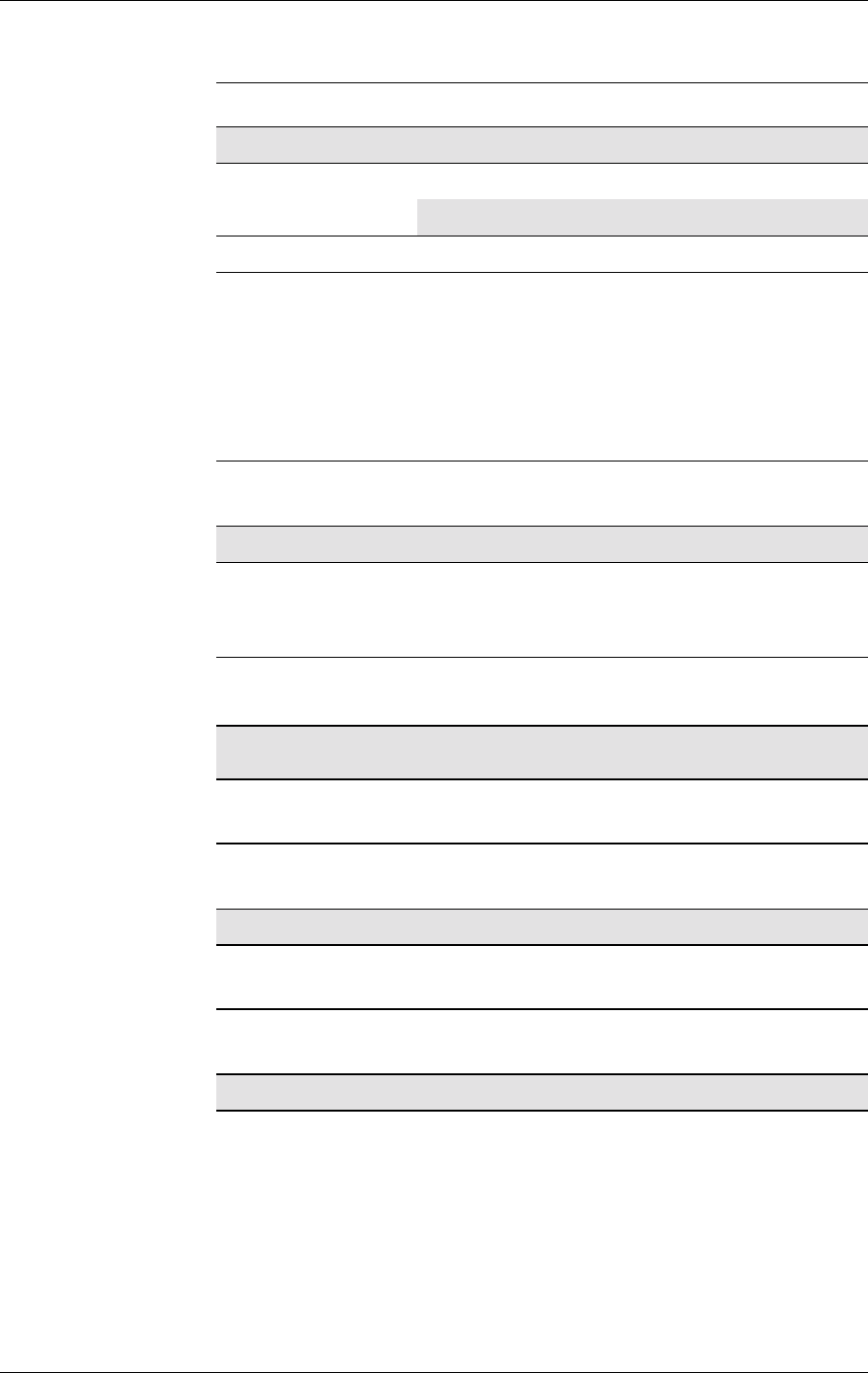
2. SYSTEM CONNECTOR INTERFACE
49
LZT 123 7263 R1A
The following tables show the nominal PGA (programming gain
settings). For more information see the relevant AT commands.
Maximum input voltage limit: 245mVrms
Maximum input level at MICI, 61.4mVrms output at
PCMOUT = 3dBm0
Output at AFMS for 3dBm0 at PCMIN
Output at BEARN/BEARP for 3dBm0 at PCMIN
2.6.2 Audio From Mobile Station - AFMS
AFMS is the analogue audio output from the module and may be used
to drive a speaker or the ear-piece in a portable hands-free accessory.
PCM digital audio signals, entering the module through the PCMIN pin,
are translated to analogue signals by the CODEC. See “2.7 Digital
Audio”, page 52 for further information.
High frequency cut-off (–3dB) >3500Hz±50Hz
Output d.c. bias level Hands-free mode 0V
Portable hands-free mode 2.0V ± 0.1V
Additional Gain in Portable hands-free mode 28.5dB
a. The a.c.-coupling capacitance must be supplied by your application, unless
a d.c.-coupled microphone is used.
Input Input (mVrms)TXAGC (dB) AUX AMP
gain PCMOUT (dBm0)
ATMS 245 013 3
Input Differential
input (mVrms)TXAGC (dB) AUX AMP
gain PCMOUT (dBm0)
MICN
MICP 61.4 025 3
Input dBm0 RXPGA Volume
control (dB) AFMS (mVrms)
PCMIN 3 0 0 436
Input dBm0 RXPGA Volume
control (dB) BEAR (mVrms)
PCMIN 3 0 0 388
Parameter Limit
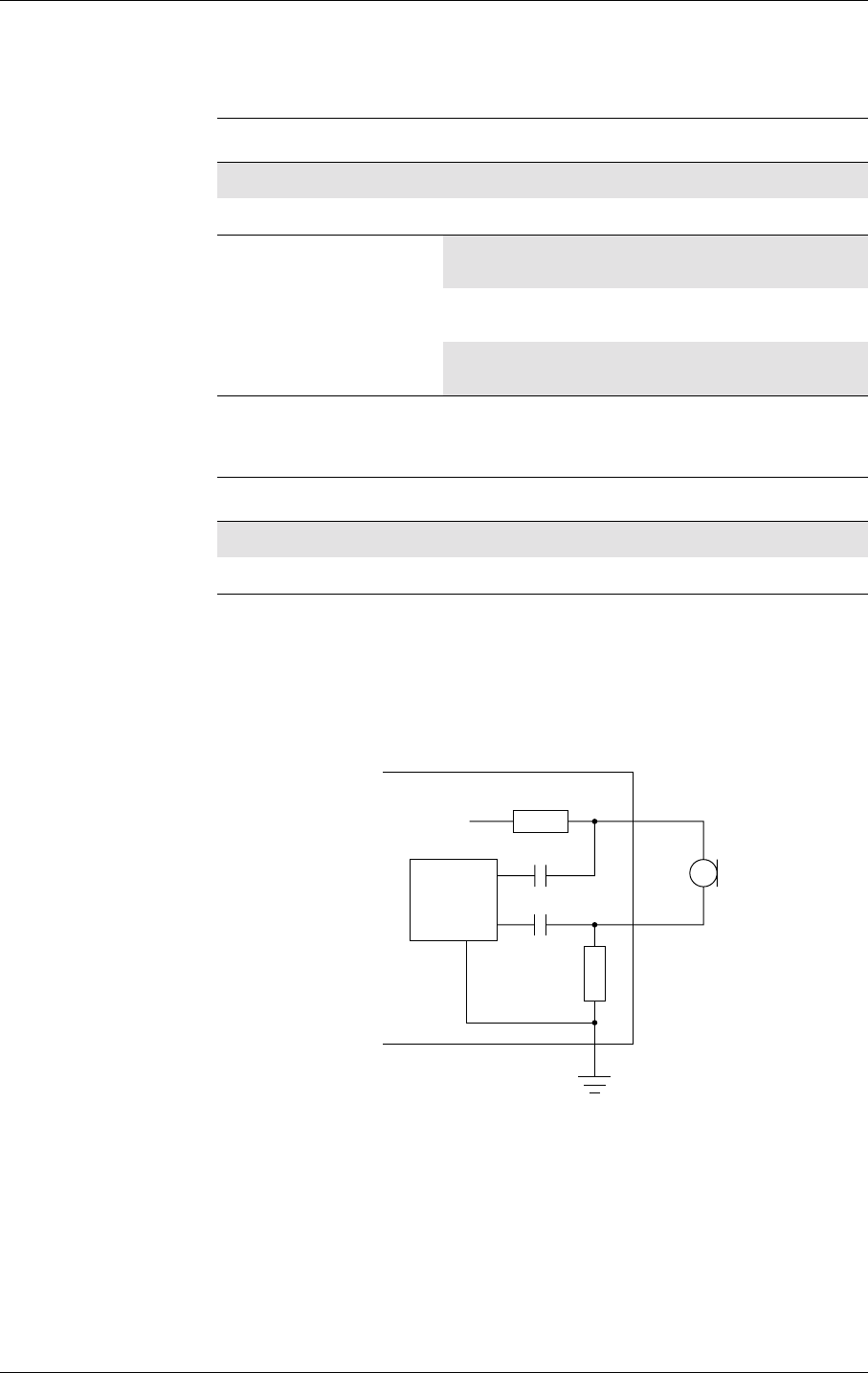
GM47/GM48 INTEGRATOR’S MANUAL
50 LZT 123 7263 R1A
The table below shows the audio signal levels for AFMS.
2.6.3 Microphone Signals
MICP and MICN are balanced differential microphone input pins.
These inputs are compatible with an electret microphone. The
microphone contains an FET buffer with an open drain output, which is
supplied with at least +2V relative to ground by the module as shown
below.
Figure 2.3 Microphone connections to the module
Parameter Limit
Speaker impedance 64Ω to 1kΩ
Output Capacitance 2.2µF ±10%
Levels (THD <5%)
Drive capability into 5kΩ
(0.3 - 3.5kHz) >2.4Vp-p
Drive capability into 1.5kΩ
(0.3 - 3.5kHz) >2.2Vp-p
Drive capability into 150Ω
(at 1kHz) >1.3Vp-p
Pin Speaker signals Dir Function
53 MICP IMicrophone positive input
54 MICN IMicrophone negative input
MICP
1k
1k
GM47
MICN
68nF
68nF
2 - 2.5V
@ 1mA
CODEC
AGND
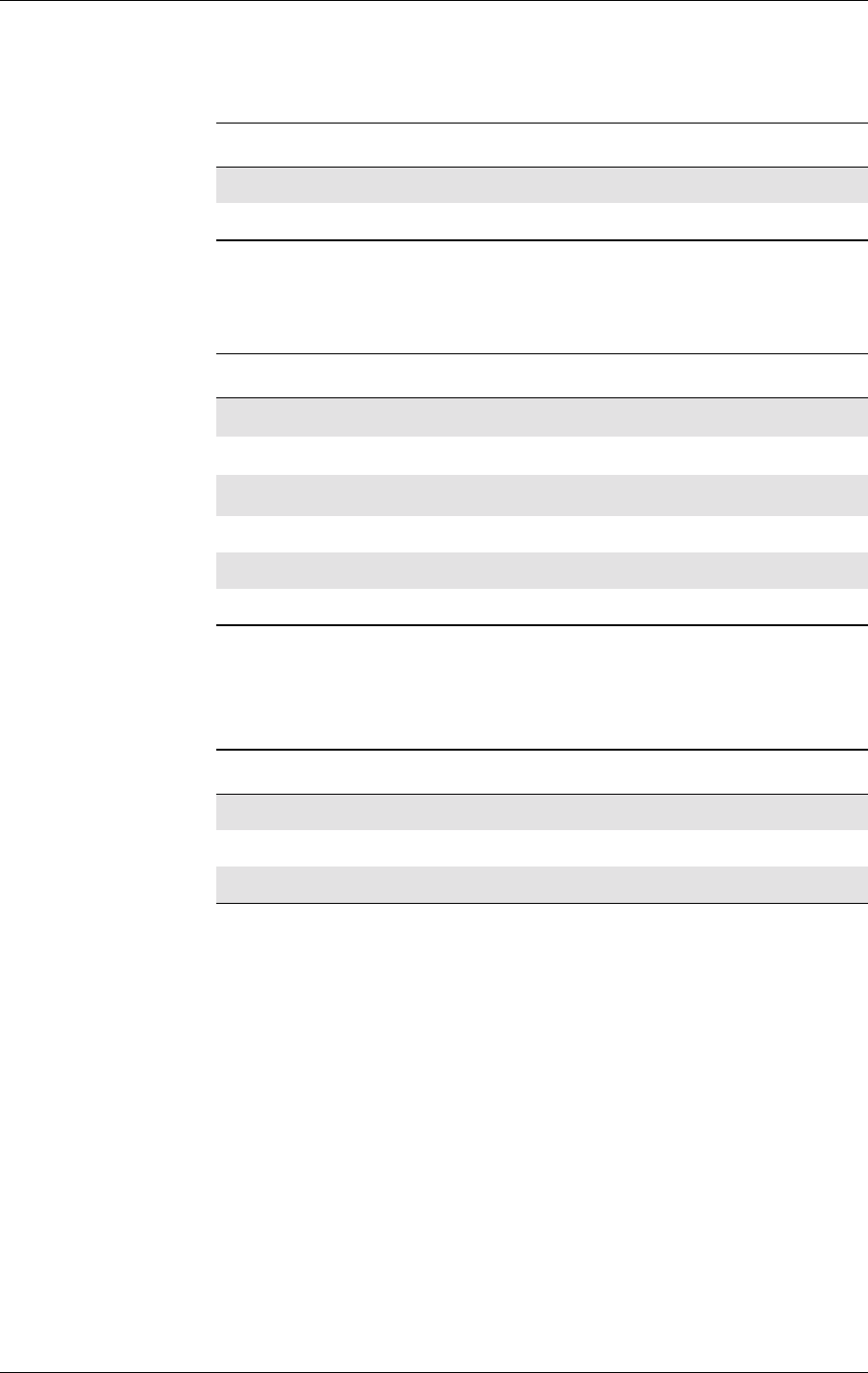
2. SYSTEM CONNECTOR INTERFACE
51
LZT 123 7263 R1A
2.6.4 Speaker Signals
BEARP and BEARN are the speaker output pins. These are
differential-mode outputs. The electrical characteristics are given in the
table below.
The following table shows the ear piece impedances that can be
connected to BEARP and BEARN.
Pin Speaker signals Dir Function
55 BEARP OSpeaker positive output
56 BEARN OSpeaker negative output
Parameter Limit
Output level (differential) ≥4.0Vpp
Output level (dynamic load = 32Ω)≥2.8Vpp
Gain PCMINato BEARP/BEARN (differential)
a. See PCMIN signal in “2.7 Digital Audio”, page 52
–9dB ±1
Distortion at 1kHz and maximum output level ≤5%
Offset, BEARP to BEARN ±30mV
Ear-piece mute-switch attenuation ≥40dB
Ear piece model Impedance Tolerance
Dynamic ear piece [32Ω + 800µH] // 100pF ±20%
Dynamic ear piece [150Ω +800µH]//100pF ±20%
Piezo ear piece 1kΩ +60nF ±20%
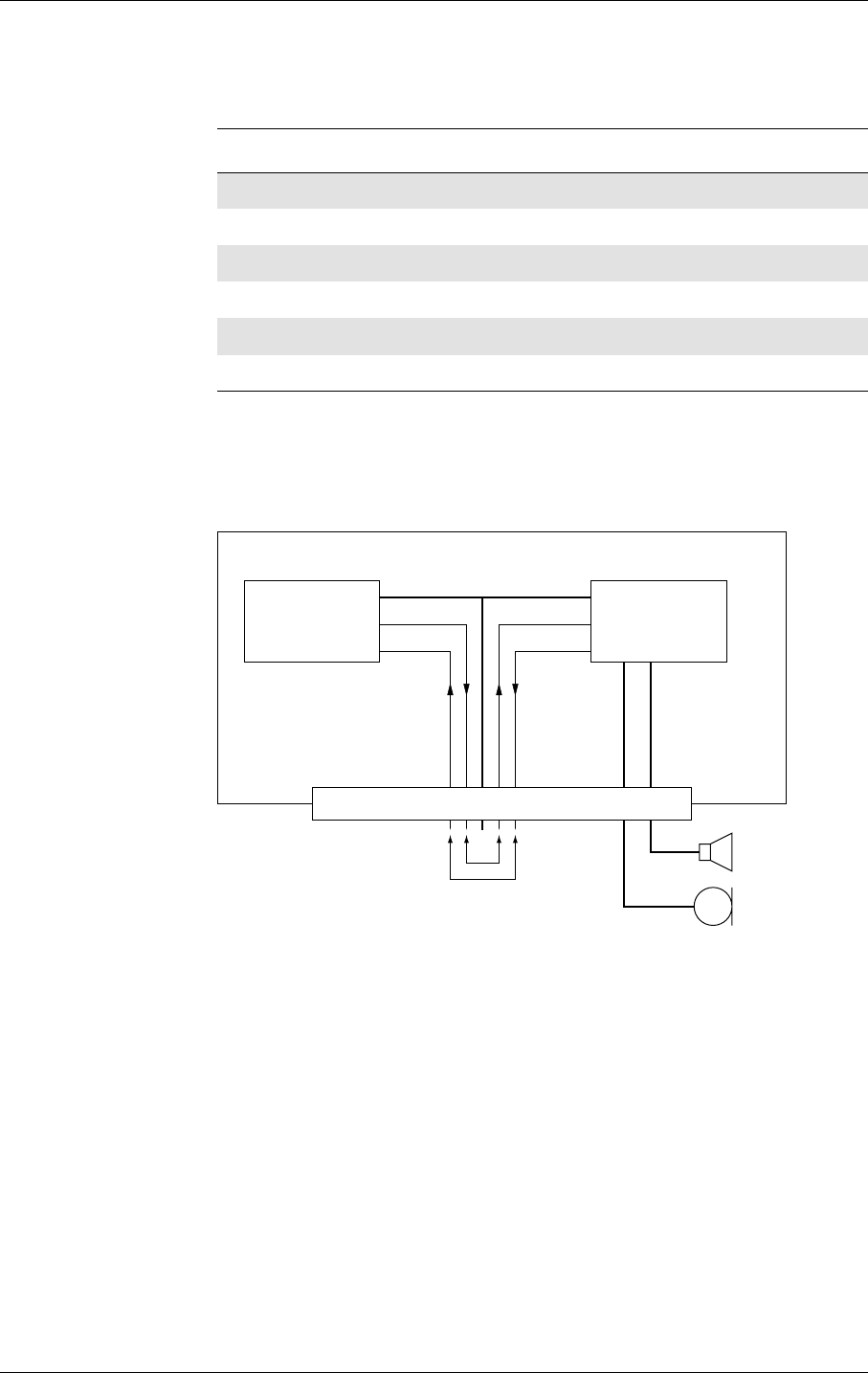
GM47/GM48 INTEGRATOR’S MANUAL
52 LZT 123 7263 R1A
2.7 Digital Audio
Digital PCM audio signals allow the connection of a digital audio
source/receiver, bypassing the analogue audio CODEC processing
functions performed within the module.
Figure 2.4 Pin connections to digital audio
Note! When no external audio processing is performed, the following pins
must be connected together:
•PCMDLDtoPCMIN;
• PCMULD to PCMOUT.
Electrical characteristics
Digital 2.75V CMOS input/output electrical characteristics apply.
Pin Signal Dir Function
52 PCMCLK OPCM clock
51 PCMSYNC OPCM frame sync
47 PCMULD IPCM audio input to DSP
48 PCMDLD OPCM audio output from DSP
50 PCMIN IPCM audio input to Codec
49 PCMOUT OPCM audio output to Codec
DSP CODEC
PCMSYNC & PCMCLK
Analogue
audio
signals
PCMIN
PCMOUT
PCMDLD
PCMULD
Link for internal
digital-audio processing
GM47
System connector

2. SYSTEM CONNECTOR INTERFACE
53
LZT 123 7263 R1A
PCM interface format
The PCM format (for PCMULD and PCMDLD) conforms to the linear
PCM data I/O format of the industry standard DSP from Texas
Instruments. It is the same format as the one used between the CODEC
and the DSP in the module.
PCMCLK (bit clock) and PCMSYNC (frame synchronisation) are both
generated by the DSP (Digital Signal Processor) in the module.
The data words in PCMULD and PCMDLD are aligned so that the MSB
in each word occurs on the same clock edge.
2.8 Serial Data Interfaces
The serial channels, consisting of three UARTs, are asynchronous
communication links to the application or accessory units. UART1 has
RS-232 functionality. UART2 and UART3 behave as general-purpose
serial data links. In addition they are used for accessories and GPS
respectively.
Digital 2.75V CMOS input/output electrical characteristics apply.
The standard character format consists of 1 start bit, 8 bit data, no parity
and 1 stop bit. In all, there are 10 bits per character.
2.8.1 UART1 (RS232) - RD, TD, RTS, CTS, DTR, DCD and RI
UART1 signals conform to a 9 pin RS232 (V.24) serial port, except for
the DSR (CCITT No107) signal. The DSR signal has been removed as
it is usually connected to DTR in most systems.
Pin Signal Dir Description RS232
CCITT Nº
41 TD ISerial data to module (UART1) 103
42 RD OSerial data from module (UART1) 104
39 RTS IRequest To Send (UART1) 105
40 CTS OClear To Send (UART1) 106
37 DTR IData Terminal Ready (UART1) 108.2
38 DCD OData Carrier Detect (UART1) 109
36 RI ORing Indicator (UART1) 125
45 TD2 IUART2 Data Transmission
46 RD2 OUART2 Data Reception
43 TD3 IUART3 Data Transmission
44 RD3 OUART3 Data Reception
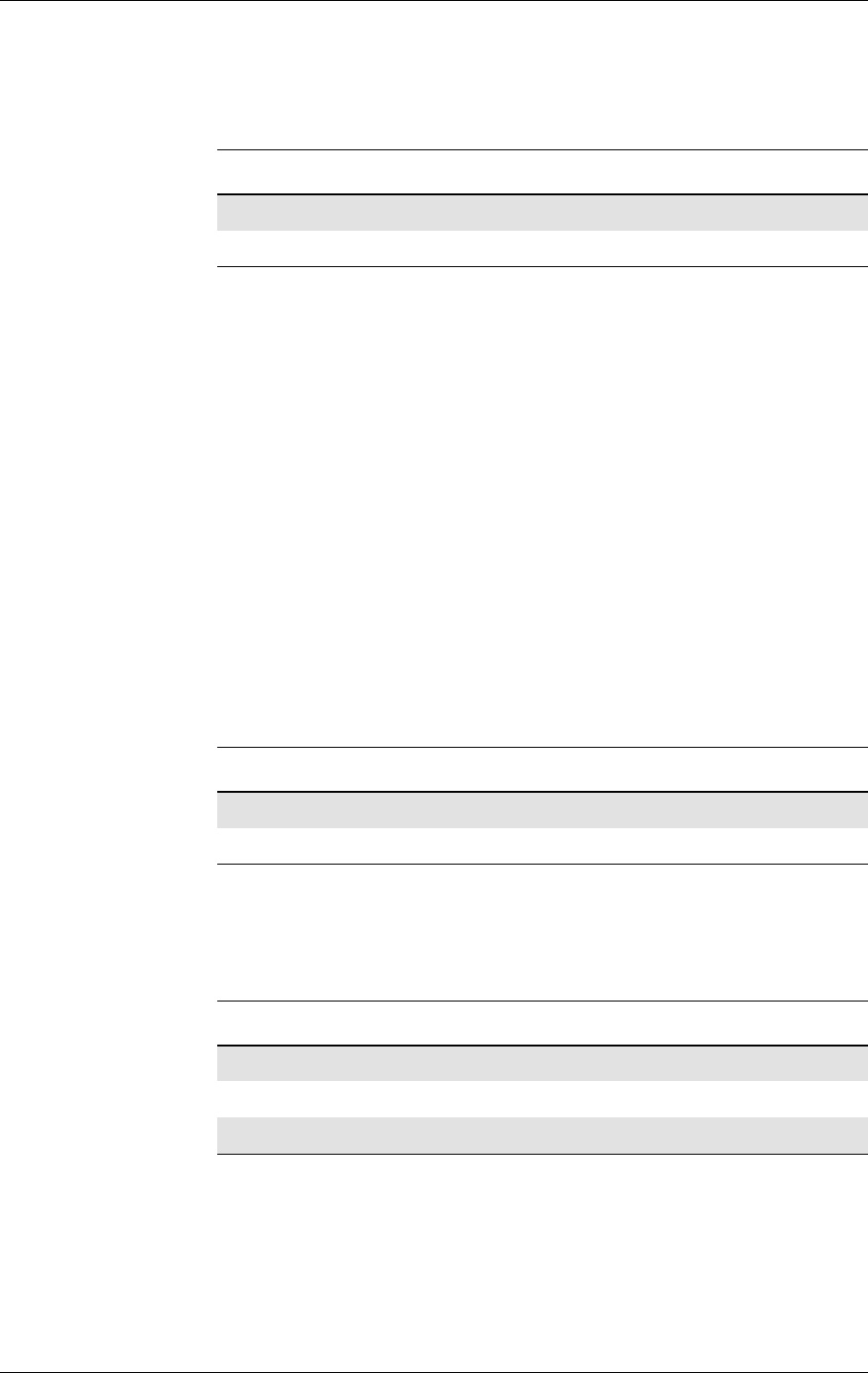
GM47/GM48 INTEGRATOR’S MANUAL
54 LZT 123 7263 R1A
Note! UART1 signal levels do not match standard RS232 (V.28) levels. The
relationship between the levels is shown in the table below.
Conversion between the module CMOS levels and RS232 levels can be
achieved using a standard interface IC, such as the Maxim Integrated
Products MAX3237.
2.8.2 Serial Data Signals - RD, TD
The default baud rate is 9.6kbits/s, however higher bit rates of up to
460 kbits/s are supported, set by an AT command. UART1 starts at a
rate of 9.6kbits/s in standard AT command mode or binary mode (first
received data, AT or binary, will determine the operation mode). The
module also supports GSM 07.10 multiplexing protocol and starts when
the appropriate command is sent.
Serial Data From Module (RD)
RD is an output signal that the module uses to send data via UART1 to
the application.
Serial Data To Module (TD)
TD is an input signal, used by the application to send data via UART1
to the module.
2.8.3 Control Signals - RTS, CTS, DTR, DCD, RI
UART1 control signals are active low and need a standard interface IC,
such as the MAX3237, to generate standard RS232 levels.
UART1 converted signals, together with DGND, RD and TD form a
9-pin RS232 data port.
RS232 level RD, TD RTS, CTS, DTR, DCD, RI CMOS level
<–3V 1OFF >1.93V
>+3V 0ON <0.80V
Parameter Limit
Application load resistance ≥100kΩ
Application load capacitance <500pF
Parameter Limit
Application driving impedance <100Ω
Input capacitance 1nF
Input resistance (pull-up) 100kΩto VCC
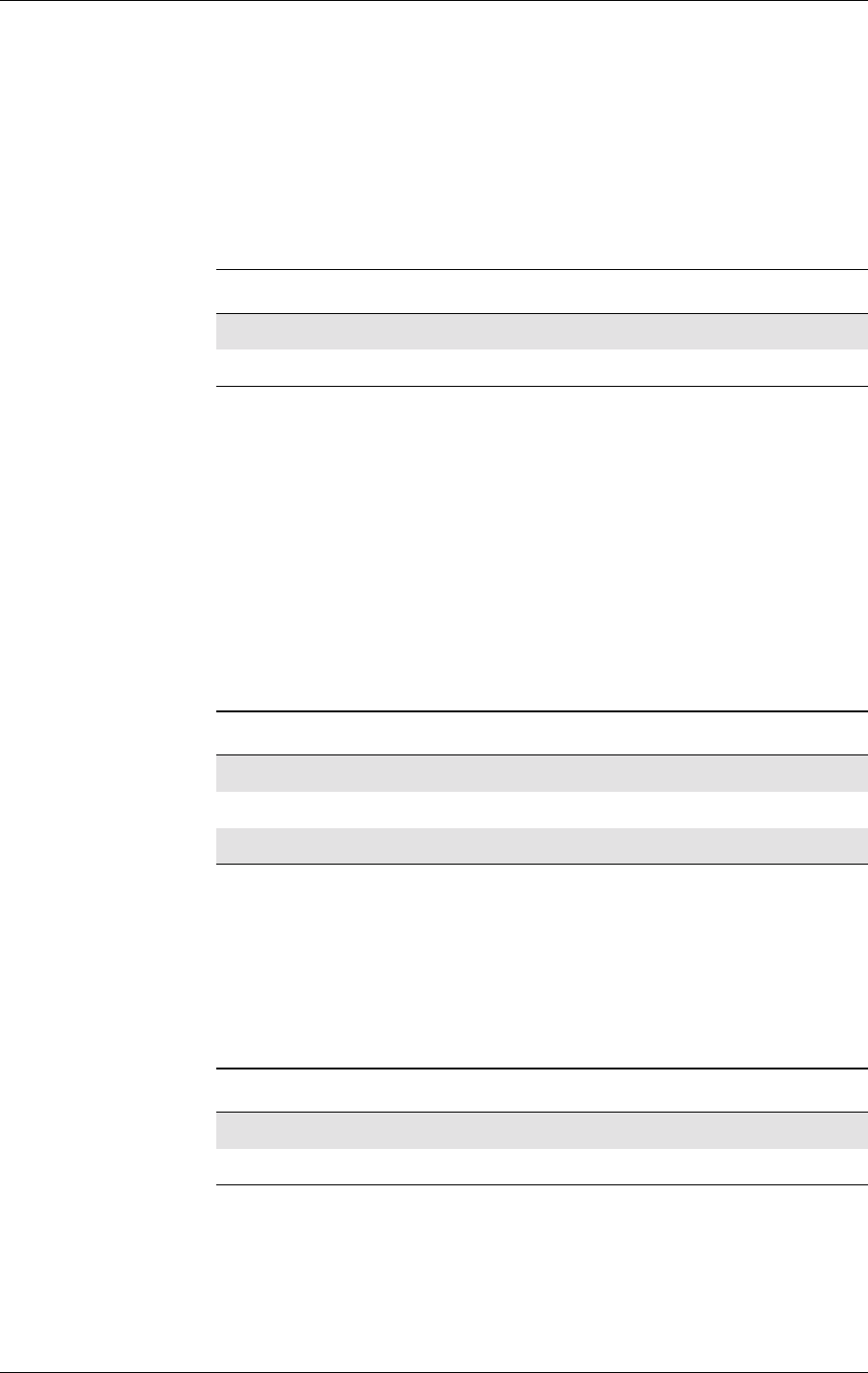
2. SYSTEM CONNECTOR INTERFACE
55
LZT 123 7263 R1A
RTS and CTS are capable of transmitting at 1/10th of the data
transmission speed for data rates up to 460kbit/s (byte-oriented flow
control mechanism).
Switching times for RTS and CTS
The table below shows the switching times.
Request to Send (RTS)
Used to condition the DCE for data transmission. The default level is
high by internal pull up.
The exact behaviour of RTS is defined by an AT command. Software
of hardware control can be selected. Hardware flow is the default
control.
The application must pull RTS low to communicate with the module.
The module will respond by asserting CTS low, indicating it is ready for
communication.
Clear To Send (CTS)
CTS indicates that the DCE is ready to transmit data. The default level
is high. You can define the exact behaviour of CTS through an AT
command, and can select software or hardware flow control.
The table below shows the load characteristics for this signal.
Parameter Limit
Time from Low to High level <2µs
Time from High to Low level <2µs
Parameter Limit
Application driving impedance <100Ω
Input capacitance <2nF
Input resistance (pull-up) 100kΩto VCC
Parameter Limit
Application load capacitance <500pF
Application load resistance ≥1MΩ

GM47/GM48 INTEGRATOR’S MANUAL
56 LZT 123 7263 R1A
Data Terminal Ready (DTR)
DTR indicates that the DTE is ready to transmit and receive data. It also
acts as a hardware ‘hang-up’, terminating calls when switched high.
The signal is active low. You can define the exact behaviour of DTR
with an AT command.
Data Carrier Detect (DCD)
DCD indicates that the DCE is receiving a valid carrier (data signal)
when low. You can define the exact behaviour of DCD with an AT
command.
Ring Indicator (RI)
RI indicates that a ringing signal is being received by the DCE when
low. You can define the exact behaviour or RI with an AT command.
Data Set Ready (DSR)
No DSR signal is provided. Use any DGND connection for this
functionality.
2.8.4 UART2 - TD2, RD2
UART 2 consists of a full duplex serial communication port with
transmission and reception lines.
This communication port works in a mode called Operation and
Maintenance.
Operation and Maintenance mode works in combination with the
SERVICE signal. Two events are possible if the SERVICE signal is
active when the module is turned on. These are:
• the module is reprogrammed if UART2 is connected to a computer
running Sony Ericsson update software;
• the module enters logging mode and sends data to UART2 if no
reprogramming information is received.
Timing and electrical signals characteristics are the same as for
UART1, TD and RD.
Transmitted Data 2 (TD2)
TD2 is used by the application to send data to the module via UART2.
It has the same electrical characteristics as TD.
Received Data 2 (RD2)
RD2isusedtosenddatatotheapplicationviaUART2.Ithasthesame
electrical characteristics as RD.
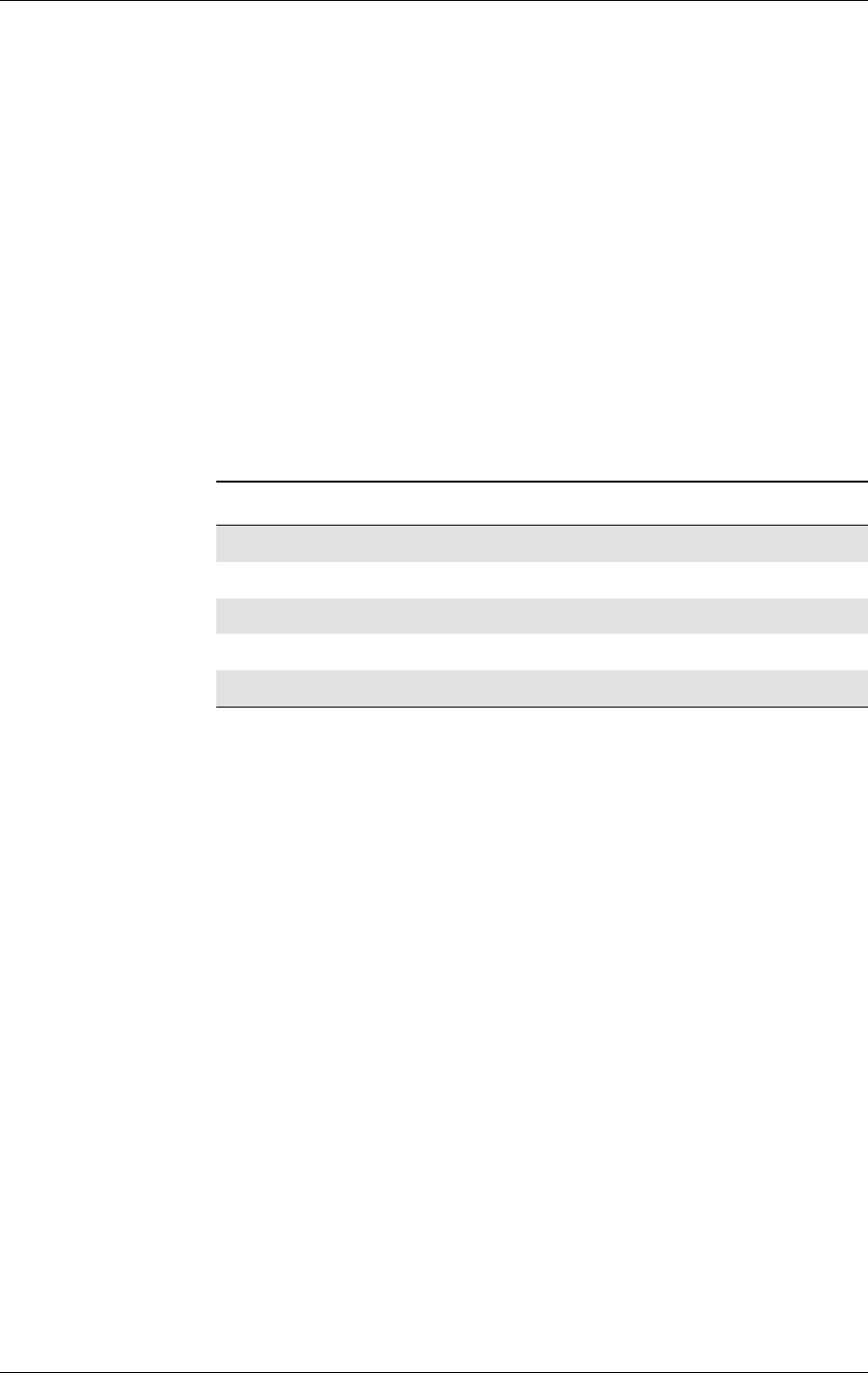
2. SYSTEM CONNECTOR INTERFACE
57
LZT 123 7263 R1A
2.8.5 UART3 - TD3, RD3
UART3 is a full duplex serial communication port with transmission
and reception lines. It has the same timing and electrical signal
characteristics as UART1, TD and RD.
Transmitted Data 3 (TD3)
TD3 is used by your application to send data to the module via UART3.
Received Data 3 (RD3)
RD is used to send data to your application via UART3.
2.9 SIM Card Related Signals
These connections allow you to communicate with the SIM card holder
in you application.
Note! The distance between the SIM card holder and the module can be up to
25cm.
This SIM interface allows the use of 3V and 5V SIM cards. By default
it works on 3V levels but will automatically switch to 5V, if a 5V SIM
card is fitted.
Pin Signal Dir Description
15 SIMVCC -SIM card power supply
16 SIMPRESENCE ISIM card presence
17 SIMRST OSIM card reset
19 SIMCLK OSIM card clock
18 SIMDATA I/O SIM card data
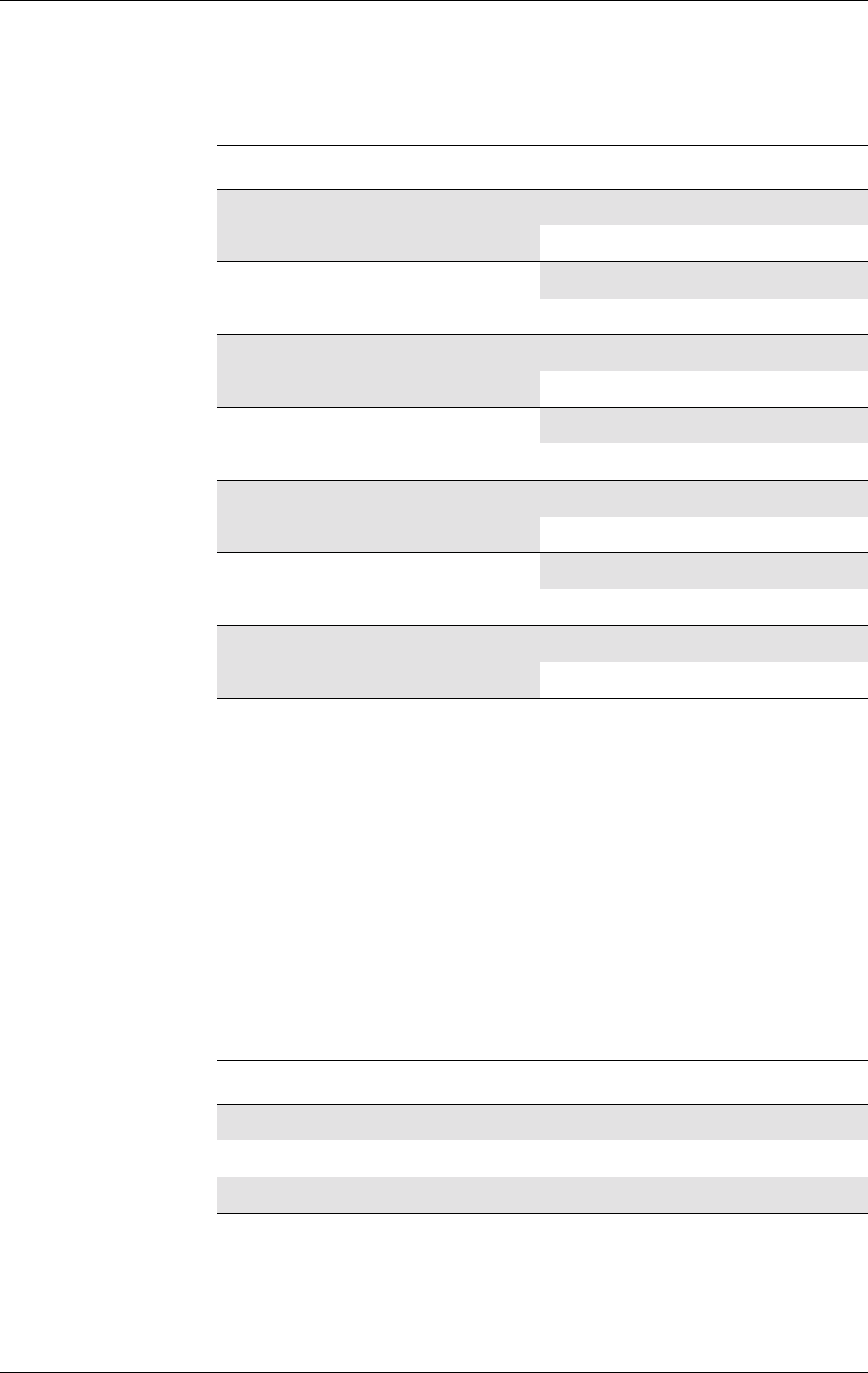
GM47/GM48 INTEGRATOR’S MANUAL
58 LZT 123 7263 R1A
SIM voltage levels, as shown in the following table, are dependent on
the type of SIM card detected by the module.
2.9.1 SIM Detection - SIMPRESENCE
SIMPRESENCE is used to determine whether a SIM card has been
inserted into or removed from the SIM card holder. You should
normally wire it to the “card inserted switch” of the SIM card holder,
but different implementations are possible.
When left open, an internal pull-up resistor maintains the signal high
and means “SIM card missing” to the module. When pulled low the
module assumes a SIM card is inserted.
SIMPRESENCE is a Digital 2.75 CMOS input with the following
electrical characteristics.
Signal Parameter Mode Min. Typ. Max. Unit
SIMVCC SIM supply voltage 3V 2.7 3.0 3.3 V
5V 4.5 5.0 5.5 V
SIMDAT High Level Input
voltage (VIH)3V 2.1 3.0 V
5V 3.5 5.0 V
SIMDAT Low Level Input
voltage (VIL)3V 00.9 V
5V 01.5 V
SIMDAT High Level Output
voltage (VOH)3V 2.7 3.0 V
5V 4.7 5.0 V
SIMDAT Low Level Output
voltage (VOL)3V 00.2 V
5V 00.2 V
SIMCLK
SIMRST High Level Output
voltage (VOH)3V 2.4 3.0 V
5V 4.4 5.0 V
SIMCLK
SIMRST Low Level Output
voltage (VOL)3V 00.35 V
5V 00.3 V
Parameter Min. Typ. Max. Units
Pull-up resistance (at 2.75 V) 100 kΩ
Low Level Input voltage (SIM inserted) 0.80 V
High Level Input voltage (SIM missing) >1.93 2.75 V
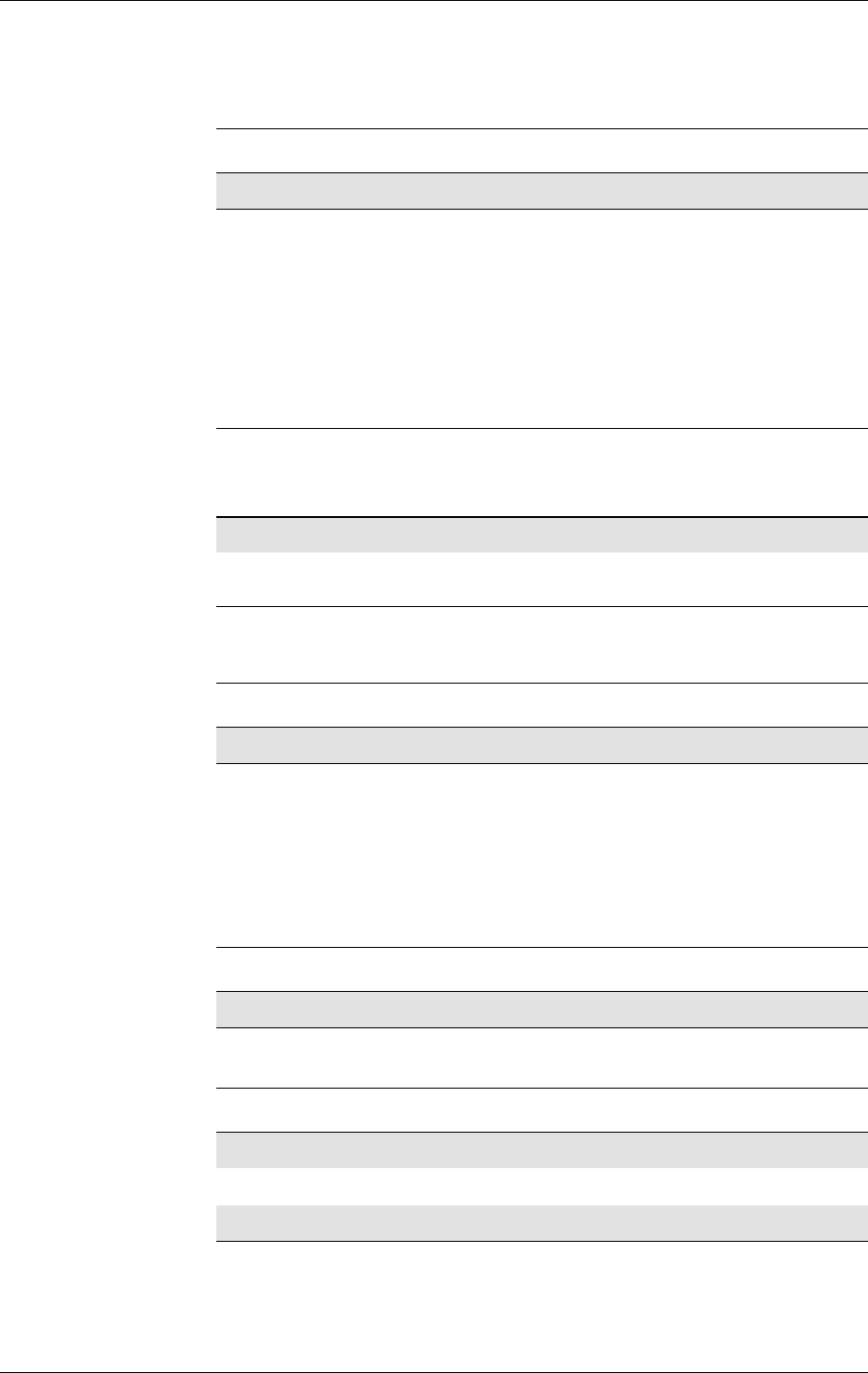
2. SYSTEM CONNECTOR INTERFACE
59
LZT 123 7263 R1A
2.10 Service/Programming
When the SERVICE input signal is active the module will:
• be reprogrammed if data is received through UART2 from a
computer running Sony Ericsson reprogramming software;
• or it will output logging data on UART2.
The electrical characteristics are given below. The signal reference is
DGND.
2.11 Buzzer
Connecting the BUZZER signal to an inverting transistor-buffer
followed by a piezoelectric transducer enables the module to play pre-
programmed melodies or sounds.
2.12 LED
The LED states shown below, are hard coded.
Pin Signal Dir Description
58 SERVICE IFlash programming voltage
Mode SERVICE Voltage (V) Drive Capacity
Min. Typ. Max.
Normal Operation 0.8 -
Service/enable
programming 1.9 2.75 13.6 >1mA
Pin Signal Dir Description
31 BUZZER OBuzzer output from module
Pin Signal Dir Description
33 LED OLED Output from module
LED indication Operational status
No indication NopowerorintheOFFstate
Green, steady Power on, not connected to a network
Green, blinking Power on, connected to a network
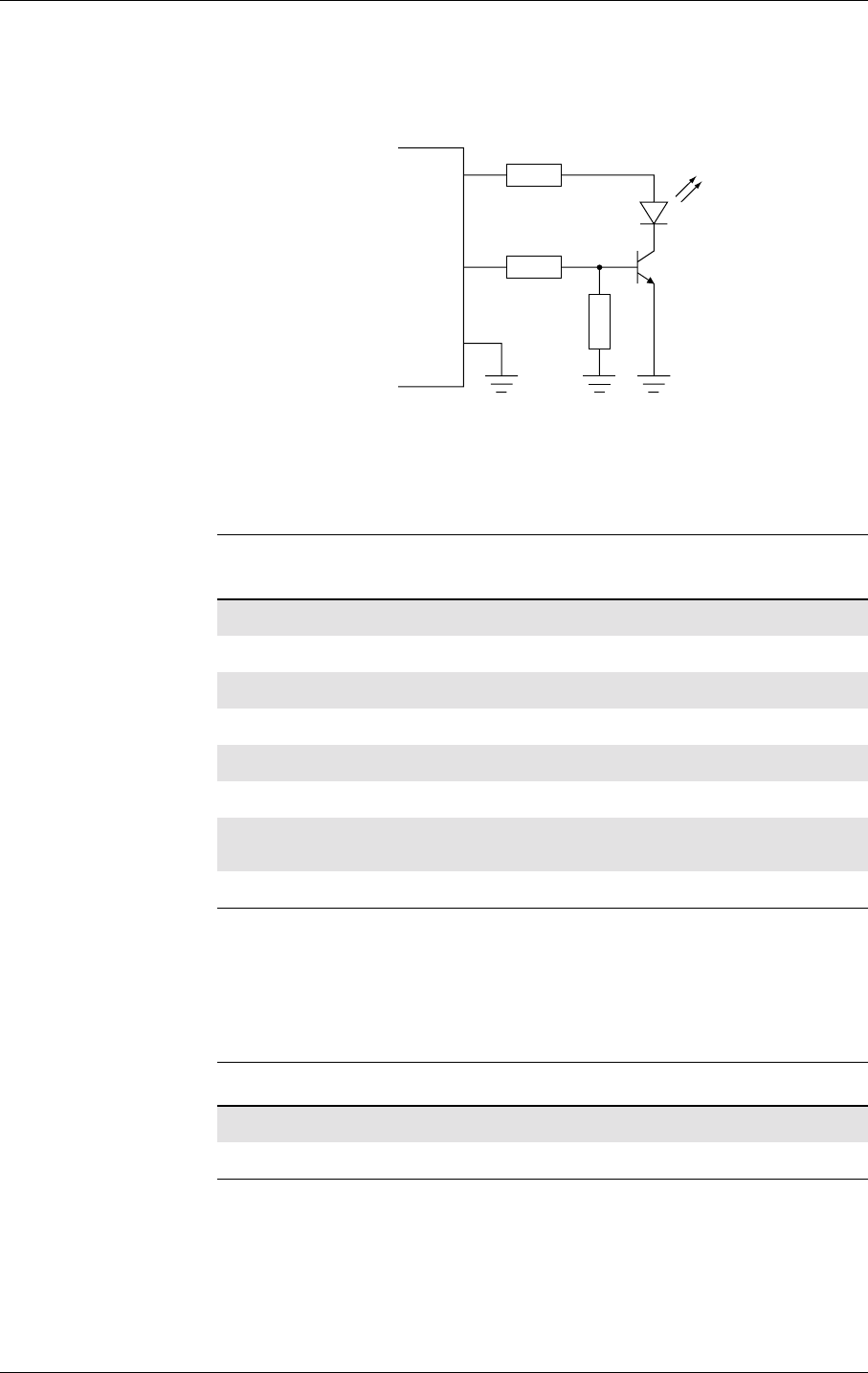
GM47/GM48 INTEGRATOR’S MANUAL
60 LZT 123 7263 R1A
The following circuit should be used to connect an LED.
Figure 2.5 Electrical connections for the LED
2.13GeneralPurposeDigitalI/OPorts
Signals which have an entry in the Default Signal column in the above
table are multiplexed. Their operation depends on AT commands.
The following table gives you the input impedance. These values only
apply when the signals are configured as input signals.
VIO
LED
2k2
220
10k
BC817
GM47
DGND
Pin I/O port
signal Default
signal Description
21 IO1 -Programmable Input/Output 1
22 IO2 -Programmable Input/Output 2
23 IO3 -Programmable Input/Output 3
24 IO4 -Programmable Input/Output 4
37 IN5 DTR Programmable input 5/Data Terminal Ready
32 OUT5 -Programmable output 5
36 OUT6 RI Programmable Output 6/Data Carrier
Detect
38 OUT7 DCD Programmable Output 7/Ring indicator
Parameter Min. Typ. Max. Units
Input impedance (IO1 - IO4) (pull-up) 20 39 100 kΩ
Input impedance (IN5) 100 kΩ
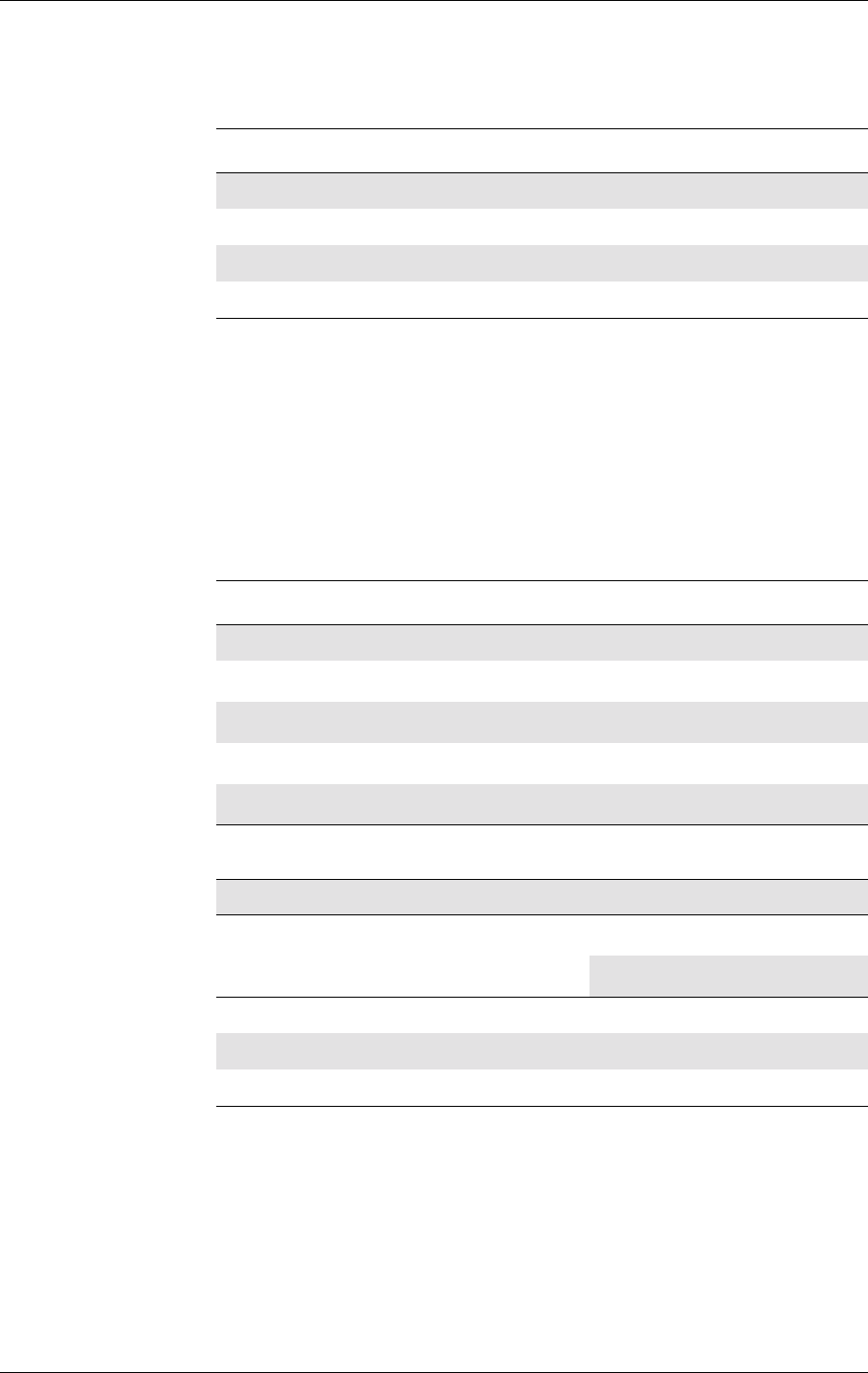
2. SYSTEM CONNECTOR INTERFACE
61
LZT 123 7263 R1A
2.14 General Purpose Analogue I/O Ports
The module is able to convert digital to analogue signals and vice versa.
2.14.1 Digital to Analogue Converter - DAC
The DAC is an 8-bit converter. Conversion takes place when an AT
command is sent to the module. The module sends the resulting
analogue value to the DAC pin.
DAC output electrical characteristics are given in the following table.
Pin Signal Dir Description
20 DAC ODigital to analogue conversion output
26 ADC1 IAnalogue to digital conversion input 1
27 ADC2 IAnalogue to digital conversion input 2
28 ADC3 IAnalogue to digital conversion input 3
Parameter Limit Units
Resolution 8Bits
Output voltage for code = 0 (2.75ax0.05)± 0.05
a. Tolerance on this internal voltage is ±5%
V
Output voltage for code = 255 (2.75ax0.95)± 0.05 V
Nominal step size (2.75ax 0.9)/256 mV
Absolute errorb
b. Referred to the ideal conversion characteristic.
≤ ± 0.5 mV
Output wide-band noise and clock
feed-through 0-1.1MHz ≤0.5 mVrms
Power-supply rejection ratio 50Hz - 10kHz ≥40 dB
Conversion rate ± 0.5LSB ≤2(LoadA)
c
c. SeeFigure2.6,page62
ms
≤50 (Load B)cms
Output buffer impedance when disabled ≥50 kΩ
Output current source or sink ≥1mA
Current consumption (active) ≤1.0 mA
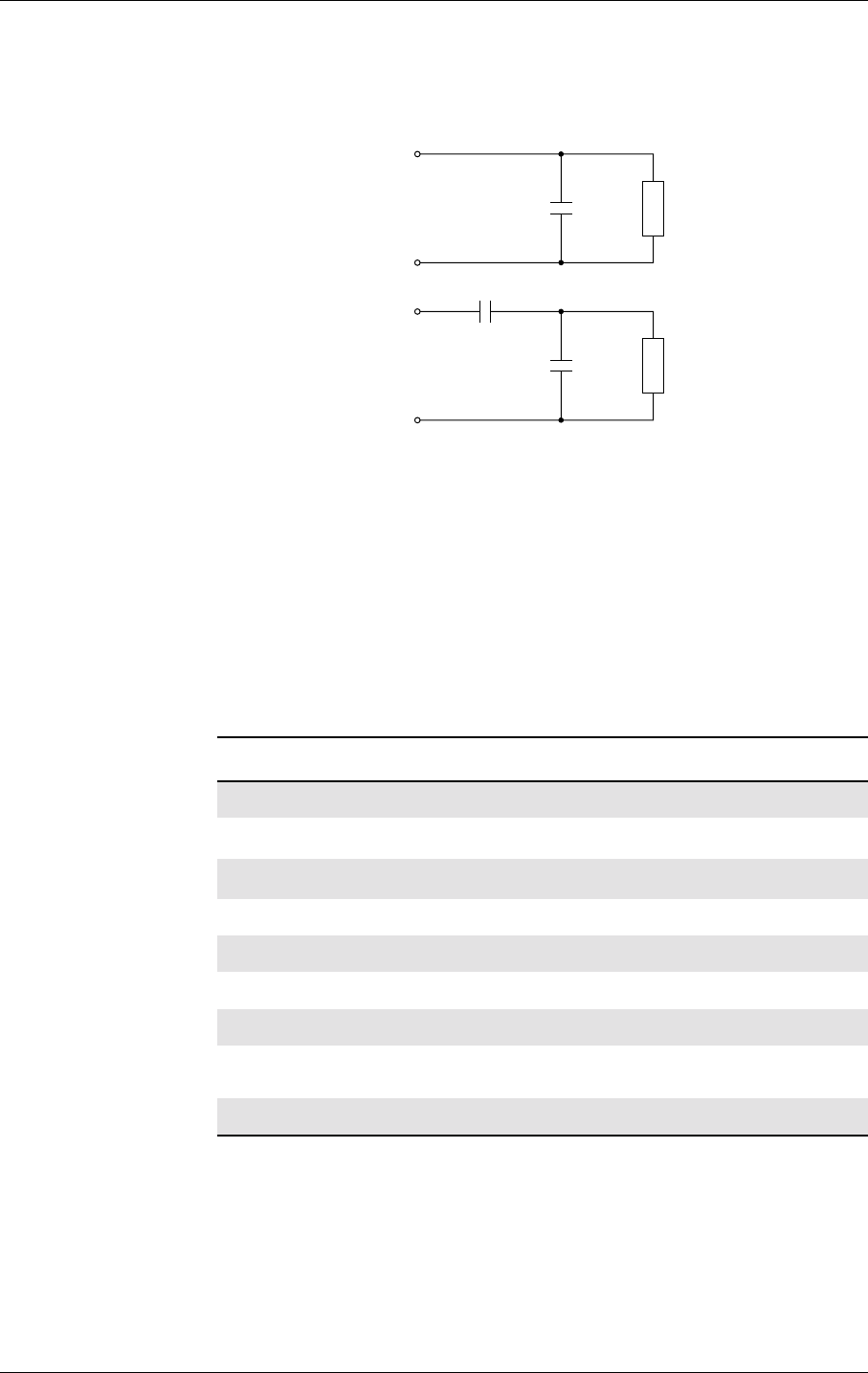
GM47/GM48 INTEGRATOR’S MANUAL
62 LZT 123 7263 R1A
Figure 2.6 DAC loads
2.14.2 Analogue to Digital Converters 1, 2 and 3 - ADCx
The ADC is an 8-bit converter. An analogue value applied to any of the
ADC pins is converted and stored in a register inside the module. When
the appropriate AT command is received by the module, the digital
value stored in the register is read.
ADC electrical characteristics are shown in the table below.
1k
DGND
DAC
1nF
10nF
Load B
100k
DGND
DAC
100 - 200pF Load A
Parameter Min. Max. Units
Resolution 88Bits
Input voltage for 0000 0000 word 00.01 x 2.75a
a. Tolerance on this internal voltage is ±5%
V
Input voltage for 1111 1111 word 0.99 x 2.75a2.75aV
Differential Non-Linearity (DNL) ±0.75 LSB
Overall Non-Linearity (INL) ±0.60 LSB
Absolute accuracy ±1.5 LSB
Input impedance 1 MΩ
Average supply current
(continuous conversion) 1mA
External source impedance 50 kΩ
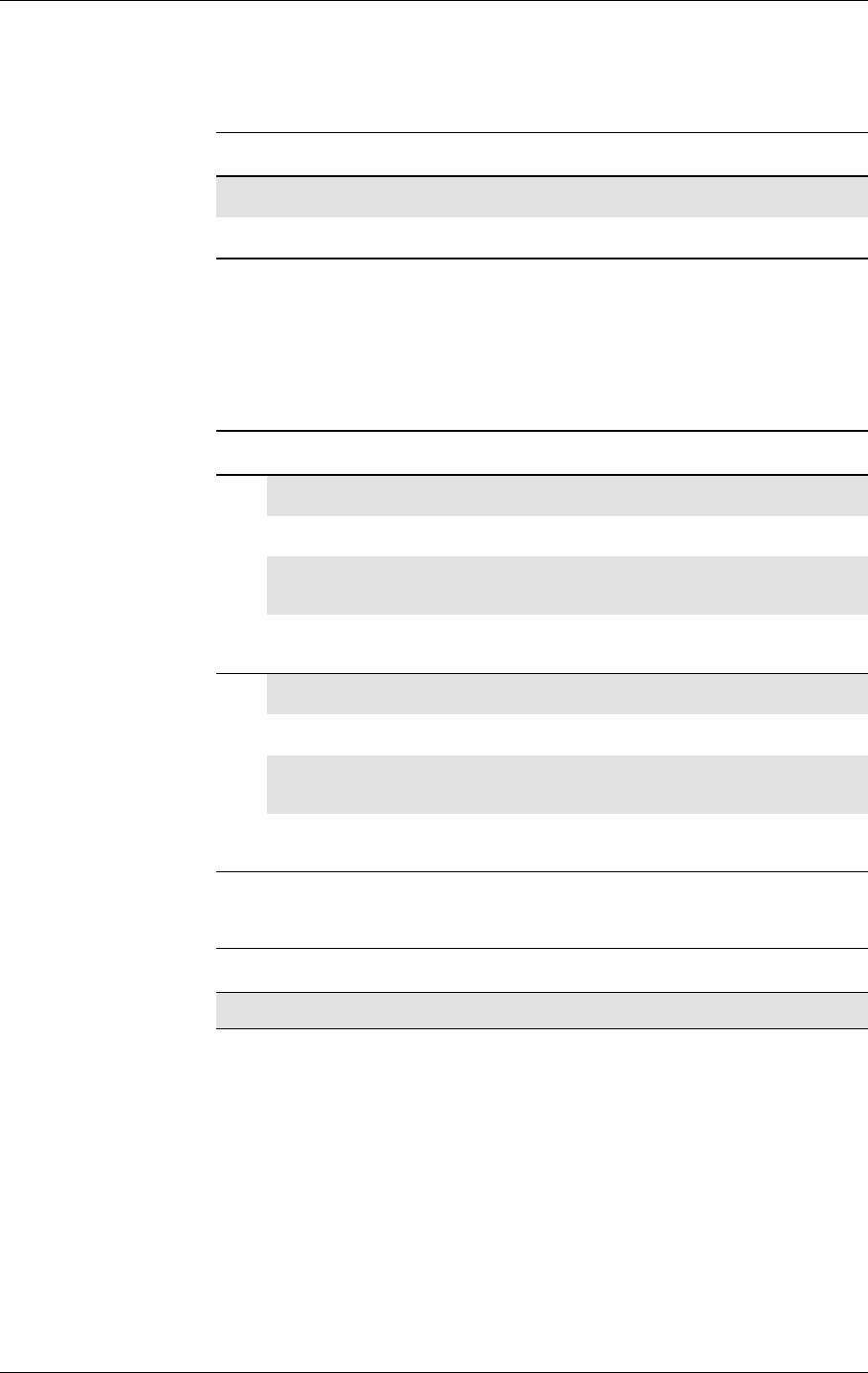
2. SYSTEM CONNECTOR INTERFACE
63
LZT 123 7263 R1A
2.15 External I 2C Serial Control Bus
The external I2C bus consists of two signals, SDA and SCL. This bus
is isolated from the module’s internal I2C bus to ensure proper
operation of the module, even if the external I2C bus is damaged.
The electrical characteristics are shown below.
2.16 TX_ON - Burst Transmission
Burst transmission is the time when a GSM transceiver unit is
transmitting RF signals. TX_ON indicates the module is going into
transmission mode.
Pin Signal Dir Description
29 SDA I/O I2Cserialdata
30 SCL OI2C serial clock
Parameter Min. Typ. Max. Units
Transmit
operation
Frequency I2CCLK 81.25 400 kHz
High or low I2CCLK 1.2 µs
Delay time after falling edge of I2C
CLK 308 308-
1230 ns
Hold time after falling edge of I2C
CLK 0ns
Receive
operation
Frequency I2CCLK 400 kHz
High or low I2CCLK 1.2 µs
Delay time after falling edge of I2C
CLK 100 ns
Hold time after falling edge of I2C
CLK 0ns
Pin Signal Dir Description
35 TX_ON OGSM module to transmit
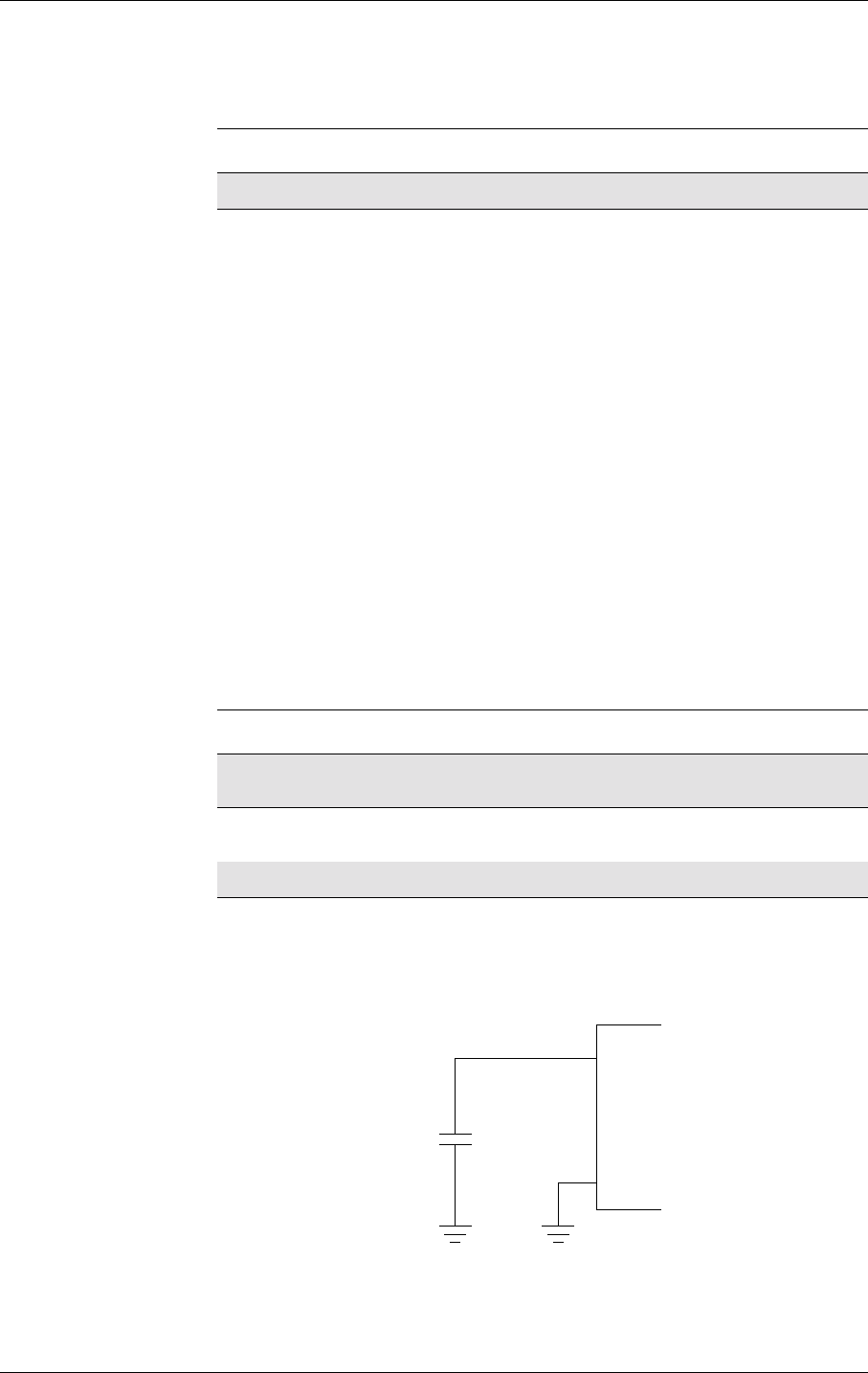
GM47/GM48 INTEGRATOR’S MANUAL
64 LZT 123 7263 R1A
2.17 Real Time Clock
The Real Time Clock provides the main microprocessor with a time-of-
day calendar and alarm, and a one-hundred-year calendar.
The Real Time Clock operates in two modes when connected to a
separate power supply:
• RTC normal mode: the module is in ON or OFF mode and it is
supplied with power (VCC is applied).
• RTC back-up mode: VCC is disconnected and the RTC is
maintained by a separate backup power supply connected to the
VRTC input (see Figure 2.7 below).
Backup power is provided by a capacitor, golden-capacitor or battery in
your application and must be connected to the VRTC pin. During RTC
normal operation, the back up source will be charged.
In back-up mode, the back-up source must provide enough power for
RTC operation. Refer to the table for the amount of current required.
The following table shows both voltage characteristics for both modes.
If the voltage drops below 1.0 V in back-up mode, the RTC will stop
working. The following diagram shows the RTC connections.
Figure 2.7 RTC connections
Pin Signal Dir Description
25 VRTC -VoltagefortheRealTimeClock
Parameter Min. Typ. Max. Units
Supply Voltage RTC (normal mode -
charging the capacitor) 1.6 1.8 2.0 V
Supply Voltage RTC (back-up mode -
Capacitor provides the current) 1.0 1.8 2.0 V
Current drawn 5.0 10.0 µA
Backup
supply
VRTC
+GM47
DGND
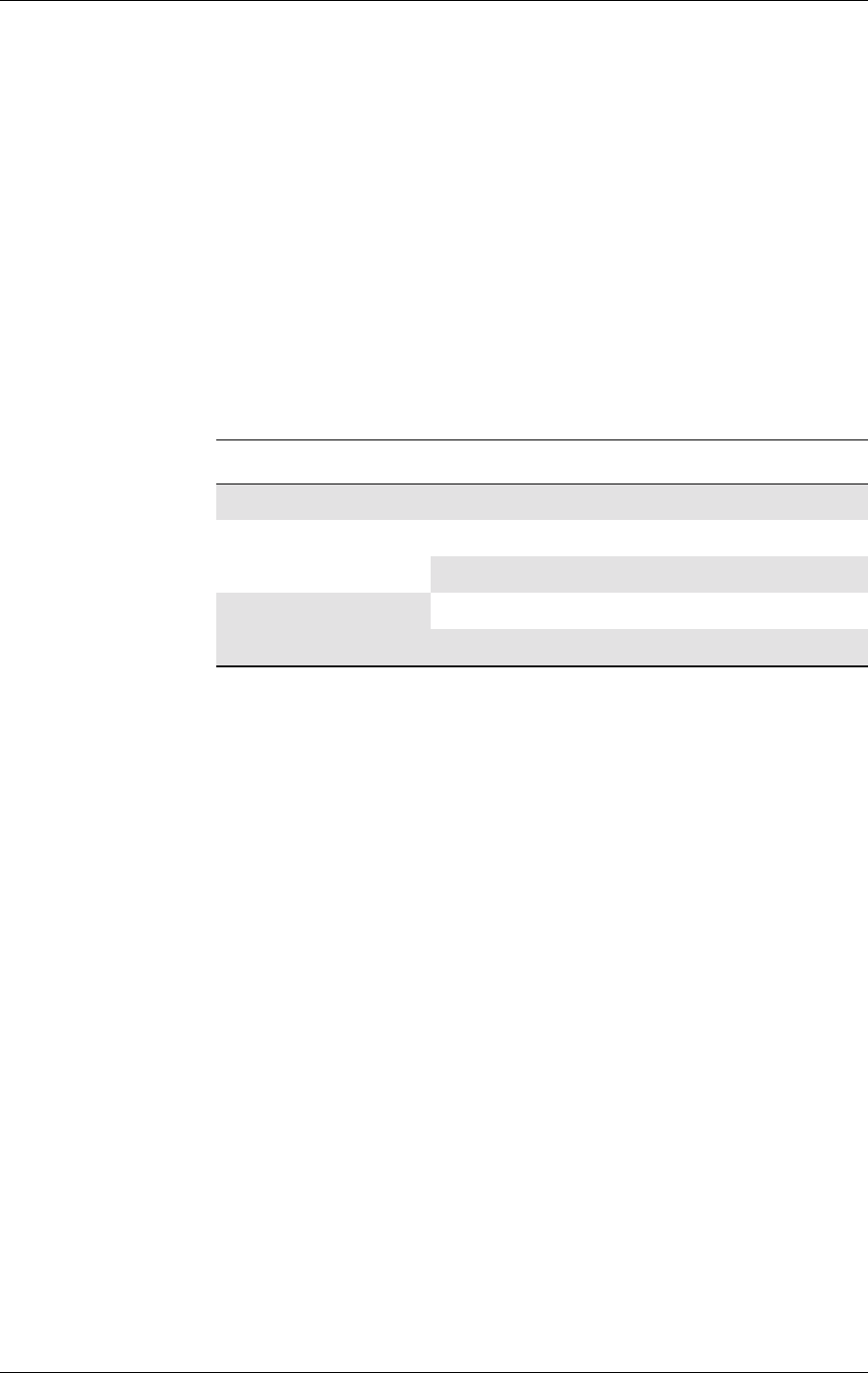
3. ANTENNA CONNECTOR
65
LZT 123 7263 R1A
3. Antenna Connector
The module’s antenna connector allows transmission of the radio
frequency (RF) signals from the module to an external customer-
supplied antenna. The connector is a micro-miniature coaxial MMCX
surface mounted component. A number of suitable MMCX type,
mating plugs are available from the following manufacturers;
• Amphenol;
• Suhner;
• IMS Connector Systems.
The electrical characteristics of the antenna interface are shown below.
Parameter Limit Description
Nominal impedance 50Ω (better than 2:1)
Output Power 2 Watt peak (Class 4) Extended GSM900
1 Watt peak (Class 1) GSM1800
Static Sensitivity Better than –104dBm Extended GSM900
Better than –102dBm GSM1800

GM47/GM48 INTEGRATOR’S MANUAL
66 LZT 123 7263 R1A

4. HINTS FOR INTEGRATING THE MODULE
67
LZT 123 7263 R1A
4. Hints for Integrating the Module
This chapter gives you advice and helpful hints on how to integrate the
GM47 into your application from a hardware perspective.
Please read and consider the information under the following headings
before starting your integration work:
• Safety advice and precautions.
• Installation of the module.
• Antenna.
4.1 Safety Advice and Precautions
4.1.1 General
• Always ensure that use of the module is permitted. The module may
present a hazard if used in proximity to personal medical electronic
devices. As a rule, the module must not be used in hospitals, airports
or planes.
• You are responsible for observing your country’s safety standards,
and where applicable the relevant wiring rules.
• Never use the module at a gas station, refuelling point, blasting area
or in any other environment where explosives may be present.
• Operating the module close to other electronic devices, such as
antennas, television sets, and radios may cause electromagnetic
interference.
• Never try to dismantle the module yourself. There are no
components inside the module that can be serviced by the user. If
you attempt to dismantle the module, you may invalidate the
warranty.
• To protect the power supply cables and meet the fire safety
requirements, it is recommended that the electrical circuits are
supplied with a power regulator. The power regulator should be
placed as close to the terminals of the power supply as possible.
• Do not connect any incompatible component or product to the
GM47. Note, Sony Ericsson does not warrant against defects, non-
conformities or deviations caused thereby.
4.1.2 SIM Card
• Before handling the SIM card in your application, ensure that you
are not charged with static electricity. Use proper precautions to
avoid electrostatic discharges. The module must be switched off
before the SIM card is installed in your application.

GM47/GM48 INTEGRATOR’S MANUAL
68 LZT 123 7263 R1A
• When the SIM card hatch is opened, the SIM card connectors lie
exposed under the SIM card holder. CAUTION: Do not touch these
connectors! If you do, you may release an electrical discharge that
could damage the module or the SIM card.
• When designing your application, the SIM card’s accessibility
should be taken into account. We always recommend that you have
the SIM card protected by a PIN code. This will ensure that the SIM
card cannot be used by an unauthorized person.
4.1.3 Antenna
• If the antenna is to be mounted outside, consider the risk of
lightning. Follow the instructions provided by the antenna
manufacturer.
• Never connect more than one module to a single antenna. The
module can be damaged by radio frequency energy from the
transmitter of another module.
• Like any mobile station, the antenna of the module emits radio
frequency energy. To avoid EMI (electromagnetic interference), you
must determine whether the application itself, or equipment in the
application’s proximity, needs further protection against radio
emission and the disturbances it might cause. Protection is secured
either by shielding the surrounding electronics or by moving the
antenna away from the electronics and the external signals cable.
• The module and antenna may be damaged if either come into contact
with ground potentials other than the one in your application.
Beware, ground potential are not always what they appear to be.
• In the final application, the antenna must be positioned more than
20cm away from human bodies. When this rule cannot be applied,
the application designer is responsible for providing the SAR
measurement test report and declaration.
4.2 Installation of the Module
4.2.1 Where to Install the Module
There are several conditions which need to be taken into consideration
when designing your application as they might affect the module and its
function. They are:
Environmental Conditions
The module must be installed so that the environmental conditions
stated in the Technical Data chapter, such as temperature, humidity and
vibration are satisfied. Additionally, the electrical specifications in the
Technical Data section must not be exceeded.

4. HINTS FOR INTEGRATING THE MODULE
69
LZT 123 7263 R1A
Signal Strength
The module has to be placed in a way that ensures sufficient signal
strength. To improve signal strength, the antenna can be moved to
another position. Signal strength may depend on how close the module
is to a radio base station. You must ensure that the location at which you
intend to use the module, is within the network coverage area.
Degradation in signal strength can be the result of a disturbance from
another source, for example an electronic device in the immediate
vicinity. More information about possible communication disturbances
can be found in section 4.3.5, page 72.
When an application is completed, you can verify signal strength by
issuing the AT command AT+CSQ. See “AT+CSQ Signal Strength”,
page 118.
Tip! Before installing the module, use an ordinary mobile telephone to check
a possible location for it. In determining the location for the module and
antenna, you should consider signal strength as well as cable length
Connection of Components to GM47
The integrator is responsible for the final integrated system. Incorrectly
designed or installed, external components may cause radiation limits to
be exceeded. For instance, improperly made connections or improperly
installed antennas can disturb the network and lead to malfunctions in
the module or equipment.
Network and Subscription
• Before your application is used, you must ensure that your chosen
network provides the necessary telecommunication services.
Contact your service provider to obtain the necessary information.
• If you intend to use SMS in the application, ensure this is included in
your (voice) subscription.
• Consider the choice of the supplementary services described in
section “2.3.2 Short Message Service”, page 18.
4.2.2 How to Install the Module
Power Supply
• Use a high-quality power supply cable with low resistance. This
ensures that the voltages at the connector pins are within the allowed
range, even during the maximum peak current. An electrolytic
capacitor should be placed close to the power supply pins of the
module to supply the peak currents during burst transmission. See
“VCC - Regulated Power Supply Input”, page 45.
• See section “2.2.1 General Protection Requirements”, page 44.

GM47/GM48 INTEGRATOR’S MANUAL
70 LZT 123 7263 R1A
Grounds
A ground connection is provided at the mounting hole next to the RF
connector on the module (see Figure 2.1, page 41). Connect this ground
point to the DGND pins of the module by the shortest, low-impedance
path possible. The purpose of this connection is to allow any ESD
picked up by the antenna to bypass the module’s internal ground path.
Note! It is recommended that you use a cable with a maximum resistance of
5mΩ for the ground connection.
Note! AGND and DGND are connected at a star point inside the module. They
must not be joined together in your application.
Audio
Use a coupling capacitor in ATMS line if the application does not use
the module’s bias voltage. See also “Figure 2.3 Microphone
connections to the module”, page 50.
Software Upgrade
To upgrade the software, the system connector must be accessible in
your application. The pins SERVICE, TD, RD and the power signals
are used for this purpose. Please contact customer support for more
details.
4.3 Antenna
4.3.1 General
The antenna is the component in your system that maintains the radio
link between the network and the module. Since the antenna transmits
and receives electromagnetic energy, its efficient function will depend
on:
• the type of antenna (for example, circular or directional);
• the placement of the antenna;
• communication disturbances in the vicinity in which the antenna
operates.
In the sections below, issues concerning antenna type, antenna
placement, antenna cable, and possible communication disturbances are
addressed.
In any event, you should contact your local antenna manufacturer for
additional information concerning antenna type, cables, connectors,
antenna placement, and the surrounding area. You should also

4. HINTS FOR INTEGRATING THE MODULE
71
LZT 123 7263 R1A
determine whether the antenna needs to be grounded or not. Your local
antenna manufacturer might be able to design a special antenna suitable
for your the application.
4.3.2 Antenna Type
Make sure that you choose the right type of antenna for the module.
Consider the following requirements:
• the antenna must be designed for the dual frequency bands in use:
EGSM/GSM900/1800 for the GM47 and
GSM850/1900 for the GM48;
• the impedance of the antenna and antenna cable must be 50Ω;
• the antenna output-power handling must be a minimum of 2W;
• the VSWR value should be less than 3:1 to avoid damage to the
module.
4.3.3 Antenna Placement
The antenna should be placed away from electronic devices or other
antennas. The recommended minimum distance between adjacent
antennas, operating in a similar radio frequency band, is at least 50cm.
If signal strength is weak, it is useful to face a directional antenna at the
closest radio base station. This can increase the strength of the signal
received by the module.
The module’s peak output power can reach 2W. RF field strength varies
with antenna type and distance. At 10cm from the antenna the field
strength may be up to 70V/m and at 1m it will have reduced to 7V/m.
In general, CE-marked products for residential and commercial areas,
and light industry can withstand a minimum of 3V/m.
4.3.4 The Antenna Cable
Use 50Ω impedance low-loss cable and high-quality 50Ω impedance
connectors (frequency range up to 2GHz) to avoid RF losses. Ensure
that the antenna cable is as short as possible.
The Voltage Standing-Wave Ratio (VSWR) may depend on the
effectiveness of the antenna, cable and connectors. In addition, if you
use an adapter between the antenna cable and the antenna connector, it
is crucial that the antenna cable is a high-quality, low-loss cable.
Minimize the use of extension cables, connectors and adapters. Each
additional cable, connector or adapter causes a loss of signal power.

GM47/GM48 INTEGRATOR’S MANUAL
72 LZT 123 7263 R1A
4.3.5 Possible Communication Disturbances
Possible communication disturbances include the following:
•Noise can be caused by electronic devices and radio transmitters.
•Path-loss occurs as the strength of the received signal steadily
decreases in proportion to the distance from the transmitter.
•Shadowing is a form of environmental attenuation of radio signals
caused by hills, buildings, trees or even vehicles. This can be a
particular problem inside buildings, especially if the walls are thick
and reinforced.
•Multi-path fading is a sudden decrease or increase in the signal
strength. This is the result of interference caused when direct and
reflected signals reach the antenna simultaneously. Surfaces such as
buildings, streets, vehicles, etc., can reflect signals.
•Hand-over occurs as you move from one cell to another in the GSM
network. Your mobile application call is transferred from one cell to
the next. Hand-over can briefly interfere with communication and
may cause a delay, or at worst, a disruption.
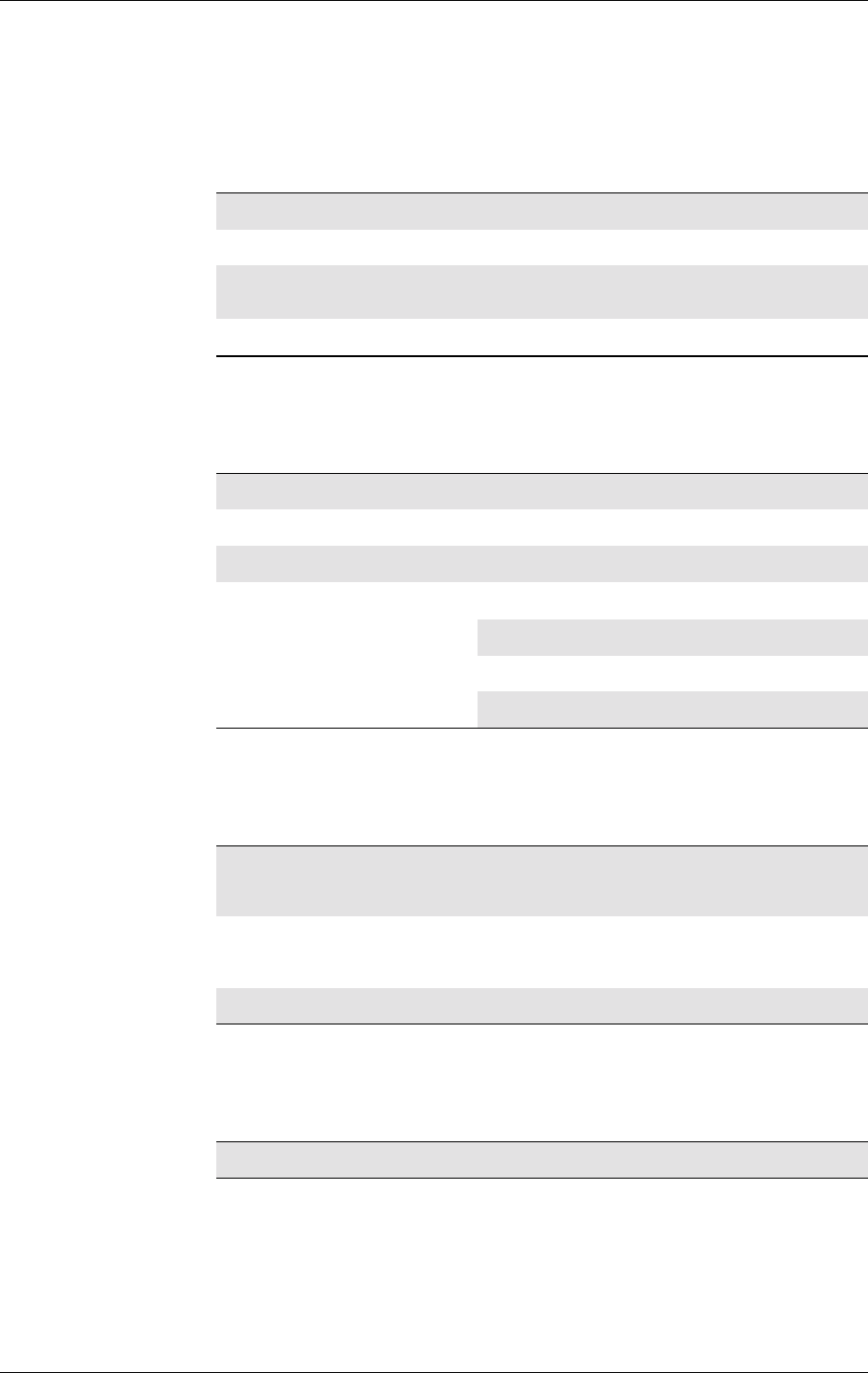
5. TECHNICAL DATA
73
LZT 123 7263 R1A
5. Technical Data
Mechanical Specifications
Power supply voltage, normal operation
Radio specifications
SIM card
Maximum length 50mm
Maximum width 33mm
Maximum thickness 7.15mm (excluding connector pins and
top of antenna connector)
Weight 18.5g
Voltage 3.6V nominal (3.4V - 4.0V)
Ripple <100mV @ 200kHz; <20mV @ >200kHz
Voltage must always stay within a normal operating range, ripple included
Power consumption
Voice/CSD: <250mA (<2A peak)
Data (GPRS 4+1); <350mA (<2A peak)
Idle mode: <5mA
Switched off: <100µA
Frequency range GM47: EGSM 900MHz and 1800MHz (dual band)
GM48: GSM 850MHz and 1900MHz (dual band)
Maximum RF output
power GM47: 2W
GM48: 1W
Antenna impedance 50Ω
3Vor5V Support of external SIM card
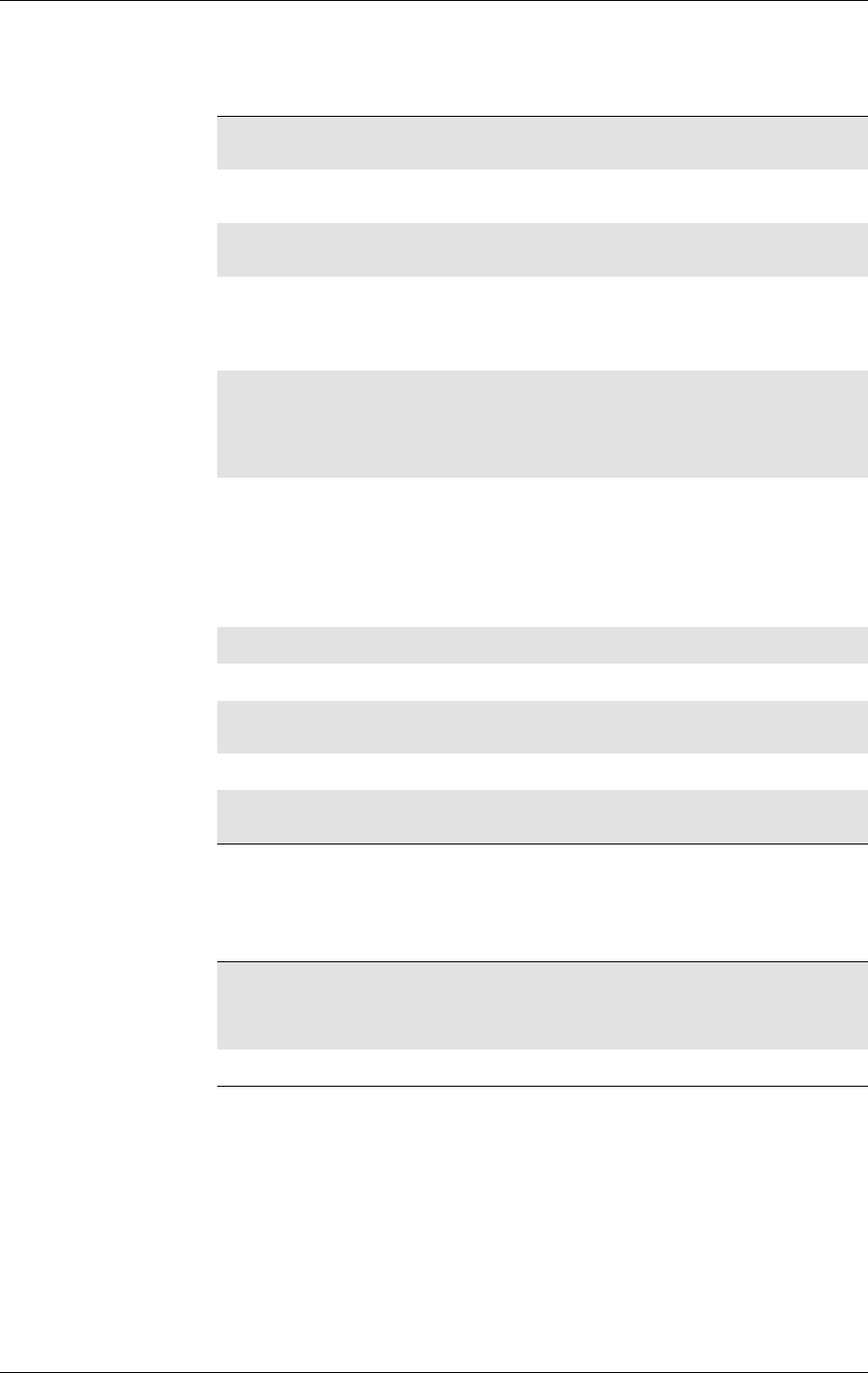
GM47/GM48 INTEGRATOR’S MANUAL
74 LZT 123 7263 R1A
Environmental specifications
Data Storage
Operating temperature
range -25°C to +55°C
Storage temperature
range -40°C to +85°C
Maximum relative
humidity 95% at +40°C
Stationary vibration,
sinusoidal Displacement: 7.5mm
Acceleration amplitude: 20m/s² and 40m/s²
Frequency range: 2-8Hz, 8-200Hz, 200-500Hz
Stationary vibration,
random Acceleration spectral density (m²/s²):
0.96, 2.88, 0.96
Frequency range:
5-10Hz, 10-200Hz, 200-500Hz, 60min/axis
Non-stationary vibration,
including shock Shock response spectrum I, peak acceleration:
3shocksineachaxisanddirection;
300m/s², 11ms
Shock response spectrum II, peak acceleration:
3shocksineachaxisanddirection;
1000m/s², 6ms
Bump Acceleration: 250m/s²
Free fall transportation 1.2m
Rolling pitching
transportation Angle: ±35degrees; period: 8s
Static load 10kPa
Low air pressure/high air
pressure 70kPa/106kPa
SMS storage capacity 40 in ME
In addition, the unit can handle as many
SMS as the SIM can store
Phone book capacity 100

Product Photo/Illustration
Part 4: Using AT Commands

77
LZT 123 7263 R1A
1. Introduction to AT Commands
1.1 Overview
AT commands, issued from a computer in your application are used to
control and implement the functions of the module.
Using AT commands, the following actions are possible:
• Control of DCE
•GPRS
• Call control
• Supplementary Service
• SIM application tool kit
The GM47 contains a large number of Ericsson-specific commands in
addition to those implemented in accordance with the GSM and ITU-T
recommendations. These commands are provided to enhance the
functions of the module. The Ericsson-specific commands are identified
by the asterisk that precedes the command (see the syntax description
provided below).
1.2 Syntax Description
This section provides a brief description of the syntax used for the
GM47, AT command set. See the ITU-T recommendation V.25ter for
additional information.
1.2.1 Conventions
In this manual, the following conventions are used to explain the AT
commands.
<command> The name of the command that is to be entered.
<parameter> The parameter values that are defined for a certain
command.
<CR> The command line is terminated by the Carriage
Return or Enter key.
<LF> Line feed character.
< > The term enclosed in angle brackets is a syntactical
element. The brackets do not appear in the command
line.

GM47/GM48 INTEGRATOR’S MANUAL
78 LZT 123 7263 R1A
[ ] Square brackets are used to indicatethat a certainitem
is optional. For example, sub-parameters of a
command or an optional part of a response. The
brackets do not appear in the command line.
Value The default values of the supported parameters are
indicated by using bold text when presenting the
value.
• Other characters, including ‘?’, ‘=’, parenthesis, etc., appear in
commands and responses as written.
• The final result codes OK, ERROR, +CME ERROR: <err> and
CMS ERROR:<err> (see sections 1.2.3, AT Response Syntax and
1.3, Error Codes) are not listed under “Possible Responses” for each
AT command.
• OK and ERROR are listed if these are the only possible responses.
1.2.2 AT Command Syntax
The AT standard is a line-oriented command language. Each command
is made up of the following three elements:
• the prefix;
• the body;
• the termination character.
The prefix consists of the letters “AT”, which are derived from the first
two letters of the word attention. The body is made up of the command,
the parameter, and if applicable the associated values.
Commands may be combined in the same command line. Spaces
between the individual bodies are ignored.
Basic Syntax Command
The format of basic syntax commands is as follows:
AT<command>[=][<parameter>]
Example! ATL=0<CR> (sets the volume of the speaker)
Additional commands may follow a command on the same command
line without any character being required for separation. For the
command D parameters, see the description for the command in
question.
A version of the basic syntax is:
AT<command><parameter>
Extended Syntax Command
• AT+<command>= [<parameter>]

1. INTRODUCTION TO AT COMMANDS
79
LZT 123 7263 R1A
• AT*<command>=[<parameter>]
Example! AT+CFUN=0<CR> (powers down the module)
If several values are included in the command, they are separated by
commas. It is also possible to enter commands with no values.
Additional commands may follow an extended syntax command on the
same command line if a semicolon (;IRA 3B) is inserted after the
preceeding extended command as a separator.
Read Command Syntax
The read command is used to check the current values of
parameters. Type ‘?’, after the command line:
• AT+<command>?
• AT*<command>?
• AT<command>?
Example! AT+CSCS?<CR> (show current character set)
<CR>“IRA”<CR>(information text response)
<CR>OK<CR>(final result code response)
Test Command Syntax
The test command is used to test whether the command has been
implemented or to give information about the type of subparameters it
contains. Type ‘?’, after the command line:
• AT+<command>=?
• AT*<command>=?
Example! AT+CPAS=?<CR> (shows supported values for the response
parameters)
<CR>CPAS: (0, 3, 4, 129, 130, 131)<CR> (supported values)
<CR>OK<CR> (final result code)
If the indicated <parameter> is not recognized, the result code ERROR
is issued.
Note! Possible responses are indicated both as <command>:(list of
supported<parameter>) and (in most cases) the actual range of the
parameter values.
1.2.3 AT Response Syntax
The default mode response shown below, is in text mode. See the
command V for further details.

GM47/GM48 INTEGRATOR’S MANUAL
80 LZT 123 7263 R1A
Possible formats for the result codes are:
• Basic format result code, such as OK. The Basic result code also has
a numerical equivalent.
• Extended format result code, prefixed with a plus sign (+) or an
asterisk (*):
– AT+<command>: <parameter >
– AT*<command>: <parameter>
where the <parameter> is the result code value, note that a single
space character separates the colon character from the <parameter>.
If several values are included in the result code, they are separated by
commas. It is also possible that a result code has no value. The
extended syntax result codes have no numerical equivalent. They are
always issued in alphabetical form.
• Information text response may contain multiple lines separated by
<CR>. The TE detects the end of informational text responses by
looking for a final result code response, such as OK.
There are two types of result code responses as outlined below:
Final Result Code
A final result code indicates to the TE that execution of the command
is completed and another command may be issued.
• If you type an implemented AT command, you should get the result
code OK.
• If you type an AT command that is not implemented, or which had
the wrong parameter or syntax, you will get an error result code. It is
ERROR or, for example, +<command> ERROR followed by an
error code.
Final result codes are:
Value General meaning
OK Command executed, no errors
ERROR Invalid command or command line too long
NO DIALTONE No dialling possible, wrong mode
BUSY Remote station busy
NO ANSWER Connection completion time-out
NO CARRIER Link not established or disconnected
Unsolicited Result Code
Unsolicited result codes indicate the occurrence of an event not directly
associated with a command being issued from the TE.

1. INTRODUCTION TO AT COMMANDS
81
LZT 123 7263 R1A
1.3 Error Codes
1.3.1 +CME ERROR (Mobile Equipment Error Code)
This final result code is similar to the regular ERROR result code. If
+CME ERROR: <err> is the result code for any of the commands in a
command line, none of the commands in the same command line will
be executed (neither ERROR nor OK result code shall be returned as a
result of a completed commandline execution). The format of <err> can
be either numerical or alphabetical, and is set with the +CMEE
command.
The table below provides the numerical values for the parameter <err>.
<err> Description Syntax
0Phone failure
1No connection to phone
2Phone -adaptor link reserved
3Operation not allowed
4Operation not supported
5PH-SIM PIN required
10 SIM not inserted
11 SIM PIN required
12 SIM PUK required
13 SIM failure
14 SIM busy
15 SIM wrong
16 Incorrect password
17 SIM PIN2 required
18 SIM PUK2 required
20 Memory full
21 Invalid index
22 Not found
23 Memory failure
24 Text string too long
25 Invalid characters in text string
26 Dial string too long
27 Invalid characters in dial string
30 No network service

GM47/GM48 INTEGRATOR’S MANUAL
82 LZT 123 7263 R1A
1.3.2 +CMS ERROR (Message Service Failure Result Code)
This final result code indicates an error related to mobile equipment or
to the network. The operation is similar to the ERROR result code.
None of the following commands in the same command line will be
executed. Neither ERROR nor OK result code will be returned. ERROR
is returned normally when an error is related to syntax or invalid
parameters. Nevertheless, it always appears when a command fails.
The syntax is as follows:
+CMS ERROR: <err>
Values for the <err> parameter are described in the following table.
31 Network time-out
32 Network not allowed - emergency calls only
100 Unknown
101- 255 Reserved by ETS
<err> Description Syntax
<err> Description
0 - 127 GSM 04.11 Annex E-2 values
128 - 255 GSM 03.40 subclause 9.2.3.22 values
300 ME failure
301 SMS service of ME reserved
302 Operation not allowed
303 Operation not supported
304 Invalid PDU mode parameter
305 Invalid text mode parameter
310 SIM not inserted
311 SIM PIN required
312 PH-SIM PIN required
313 SIM failure
314 SIM busy
315 SIM wrong
316 SIM PUK required
317 SIM PIN2 required
318 SIM PUK2 required
320 Memory failure

1. INTRODUCTION TO AT COMMANDS
83
LZT 123 7263 R1A
1.4 Examples on How to Use the AT Commands
After every group of AT commands there is a section where some of the
more complicated commands are exemplified. For a detailed
description of the command in question (valid parameter values, AT
command syntax and Response syntax) you are recommended to see its
own descriptive section.
321 Invalid memory index
322 Memory full
330 SMSC address unknown
331 No network service
332 Network time-out
340 No +CNMA acknowledgment expected
500 Unknown error
- 511 Other values in range 256 - 511 are reserved
512- Manufacturer specific
<err> Description

GM47/GM48 INTEGRATOR’S MANUAL
84 LZT 123 7263 R1A

85
LZT 123 7263 R1A
2. Call Control
2.1 AT+CPIN PIN Control
See 3.27, AT+CPIN PIN Control
2.2 ATA Answer Incoming Call
Signals the MS to answer an incoming call. The command is followed
by a final result code such as OK or ERROR, and the MS enters the
command state.
Description Command Possible Responses
Answer an incoming
call ATA •ERROR
•OK
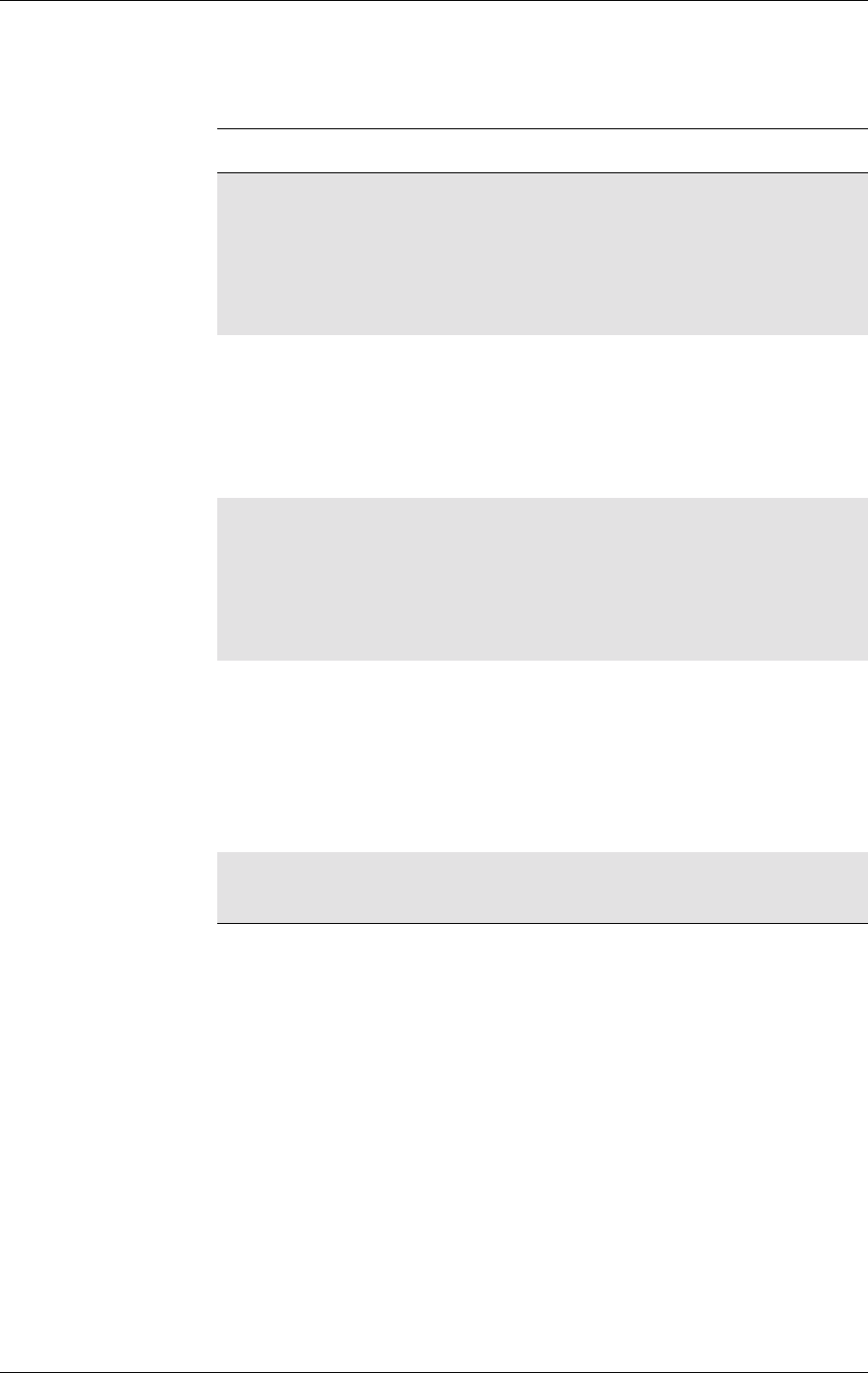
GM47/GM48 INTEGRATOR’S MANUAL
86 LZT 123 7263 R1A
2.3 ATD Dial
Used to initiate a phone connection, which may be data or voice (phone
number terminated by semicolon). The phone number used to establish
the connection will consist of digits and modifiers, or a stored number
specification.
If the dial string is followed by a semicolon this informs the phone that
the number is a voice rather than a data number.
If the dial string is omitted, and the semicolon included, the command
instructs the ME to do a network detect. If the network is available OK
is returned.
Abortability:
Aborting an ATD command is accomplished by the transmission from
the DTE to the DCE of any character. A single character shall be
sufficient to abort the command in progress; however, characters
Description Syntax Possible Responses
• Originate a call and
dial the phone
number specified in
the command as
<dial_string>
or
•Doanetwork
detect
ATD<dial_string>[;] •CONNECT
•CONNECT<text>
• NO CARRIER
•ERROR
•NODIALTONE
•BUSY
•OK
Dial the phone number
stored in the mobile
phone which is
located by the index
<I>
ATD>ME<I>[;] •CONNECT
•CONNECT<text>
• NO CARRIER
•ERROR
•NODIALTONE
•BUSY
•OK
Dial the phone number
stored in the SIM card
which is located by the
index <I>
ATD>SM<I>[;] •CONNECT
•CONNECT<text>
• NO CARRIER
•ERROR
•NODIALTONE
•BUSY
•OK
Dial the phone number
stored in the Last
dialled number list on
the SIM card, which is
located by the index
<I>
The most recently
dialled number is
assumed to have
<I>="1"
ATD>LD<I>[;] •CONNECT
•CONNECT<text>
• NO CARRIER
•ERROR
•NODIALTONE
•BUSY
•OK
Redial the last phone
number dialled.
Ericsson specific
ATDL[;] ...
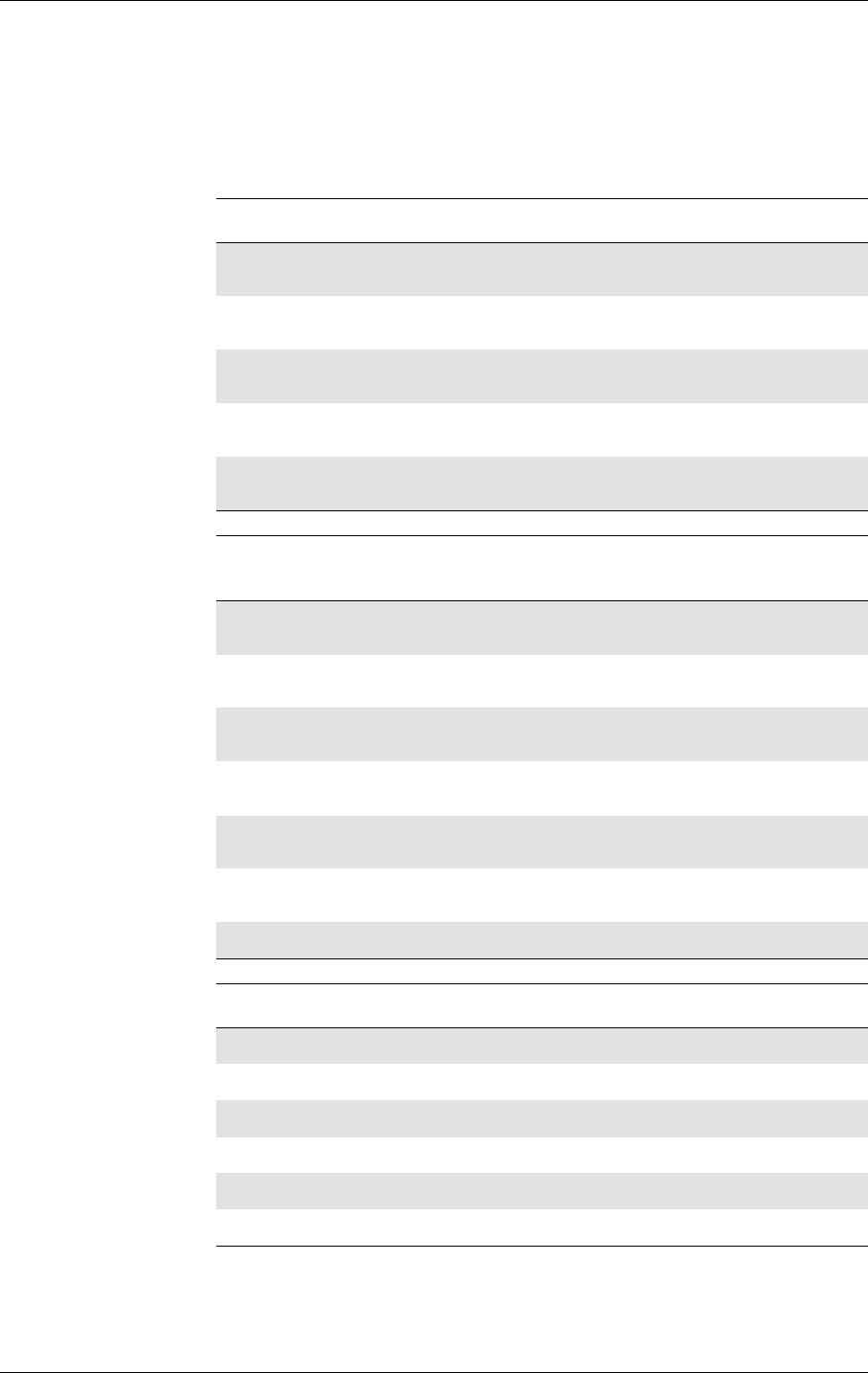
2. CALL CONTROL
87
LZT 123 7263 R1A
transmitted during the first 125 milliseconds after transmission of the
termination character are ignored. This is to allow the DTE to append
additional control characters such as line feed after the command line
termination character.
<dial_string> Description
“01234567
89*#+” Valid characters for origination
WThe W modifier is ignored but is included only for
compatibility purposes
,The comma modifier is ignored but is included only for
compatibility purposes
TThe T modifier is ignored but is included only for
compatibility purposes
PThe P modifier is ignored but is included only for
compatibility purposes
<Final Result
Code> Description
CONNECT If connection is successfully established, only valid for data
connections
CONNECT
<text> If connection is successfully established, only valid for data
connections
NO CARRIER Unable to establish a connection or the connection
attempt was aborted by the user
ERROR An unexpected error occurred while trying to establish the
connection
NO DIALTONE The mobile phone is being used for a voice call or is not
within coverage of the network
BUSY The phone number called is engaged, valid for data and
voice connections
OK Only valid for voice connections
<text> Description
28800 Connected with data bit rate of 28800 bits/s (HSCSD)
19200 Connected with data bit rate of 19200 bits/s (HSCSD)
14400 Connected with data bit rate of 14400 bits/s (HSCSD)
9600 Connected with data bit rate of 9600 bits/s
4800 Connected with data bit rate of 4800 bits/s
2400 Connected with data bit rate of 2400 bits/s
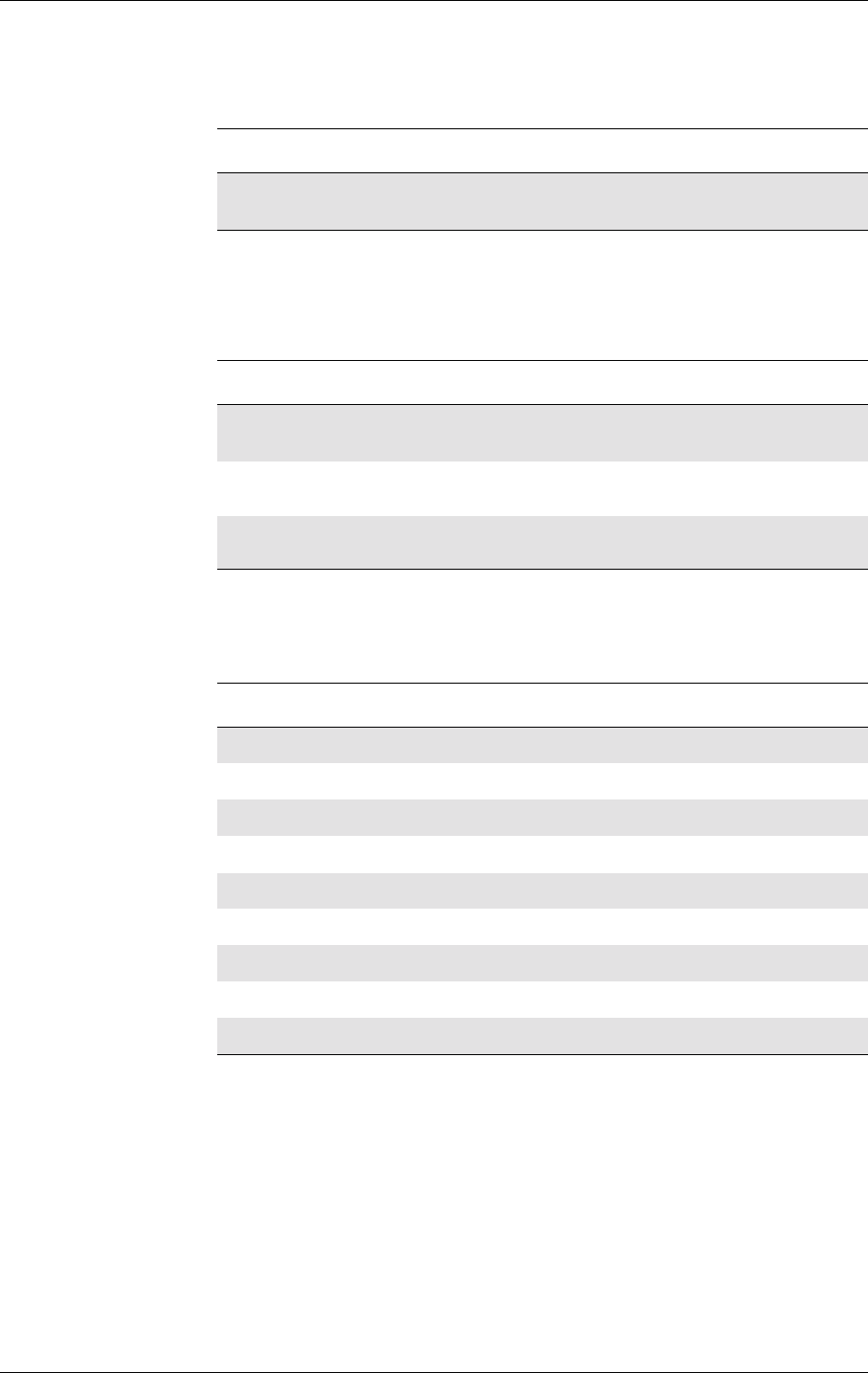
GM47/GM48 INTEGRATOR’S MANUAL
88 LZT 123 7263 R1A
2.4 ATH Hang up
Signals the MS to terminate an active call.
2.5 ATL Monitor Speaker Loudness
Controls the volume of the monitor speaker. The specific loudness level
indicated by “low”, “medium” and “high” is manufacturer specific. It is
intended to indicate increasing volume.
Description Command Possible Responses
Terminate the call ATH •ERROR
•OK
Description Command Possible Responses
Request monitor
speaker loudness ATL[<value>] •OK
•ERROR
Shows the current
setting ATL? L: <value>
Answer an incoming
call ATL=? L: (list of supported
<values>s)
<value> Description
0-14dB (minimum speaker volume)
1-10.5dB
2-7dB
3-3.5dB
40dB (nominal speaker volume)
53.5dB
67dB
710.5dB
814dB (maximum speaker volume)
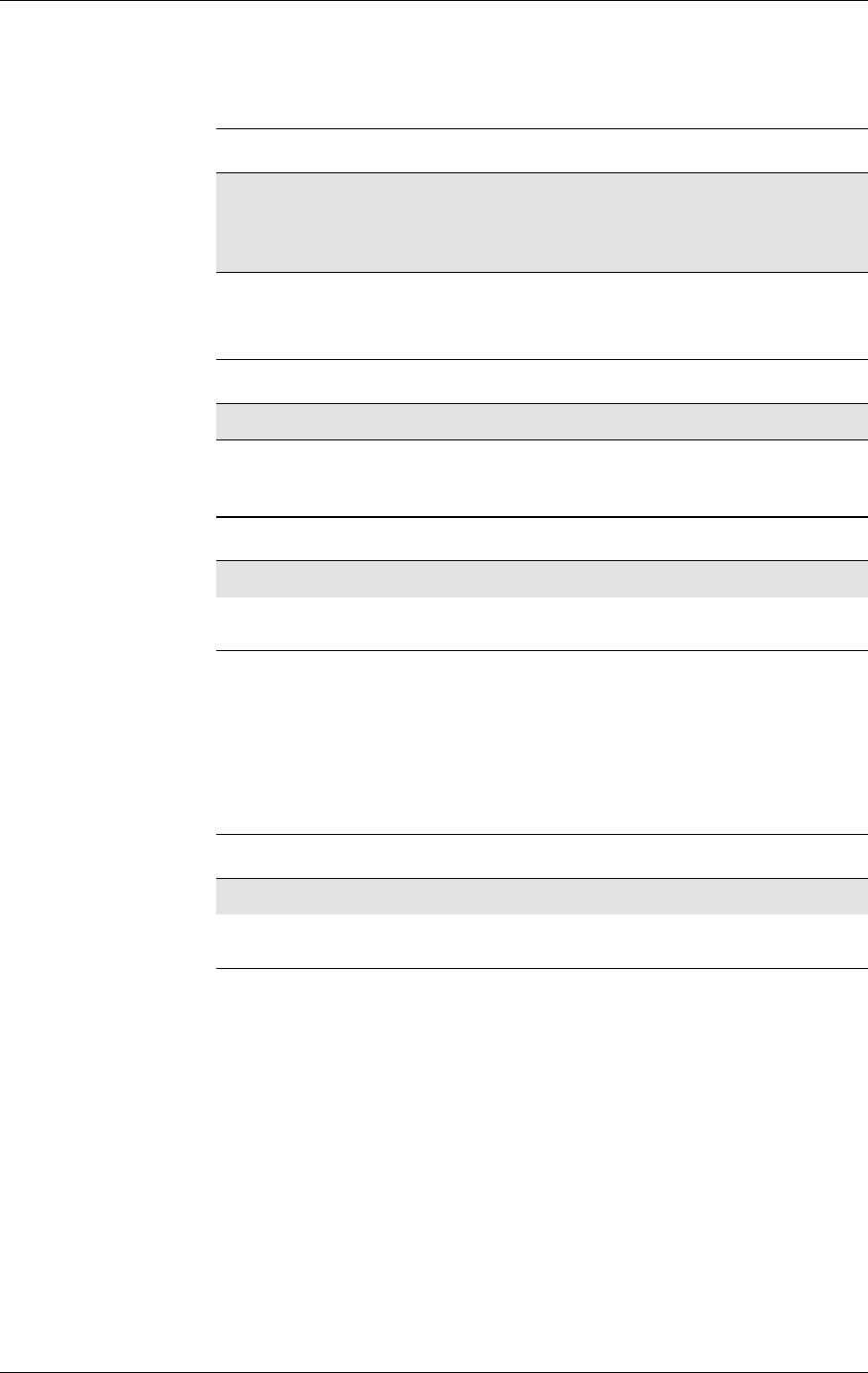
2. CALL CONTROL
89
LZT 123 7263 R1A
2.6 ATO Return to Online Data Mode
Switch to theon-line data mode from the on-line command mode during
an active call. Returns ERROR when not in on-line command mode.
2.7 ATP Select Pulse Dialling
Command is ignored, and is implemented for compatibility only. It
would normally cause the next D command to use pulses when dialling
the number.
2.8 ATT Select Tone Dialling
Command is ignored, and is implemented for compatibility only. It
would normally cause the next D command to use tones when dialling
the number.
Description Command Possible Responses
Return to on-line data
mode ATO[<value>] •CONNECT
•CONNECT<text>
•NOCARRIER
•ERROR
<value> Description
0Return to on-line data state from on-line command
Description Command Possible Responses
Select pulse dialling ATP OK
Show if the command
is supported? ATP=? OK
Description Command Possible Responses
Select tone dialling ATT OK
Show if the command
is supported? ATT=? OK
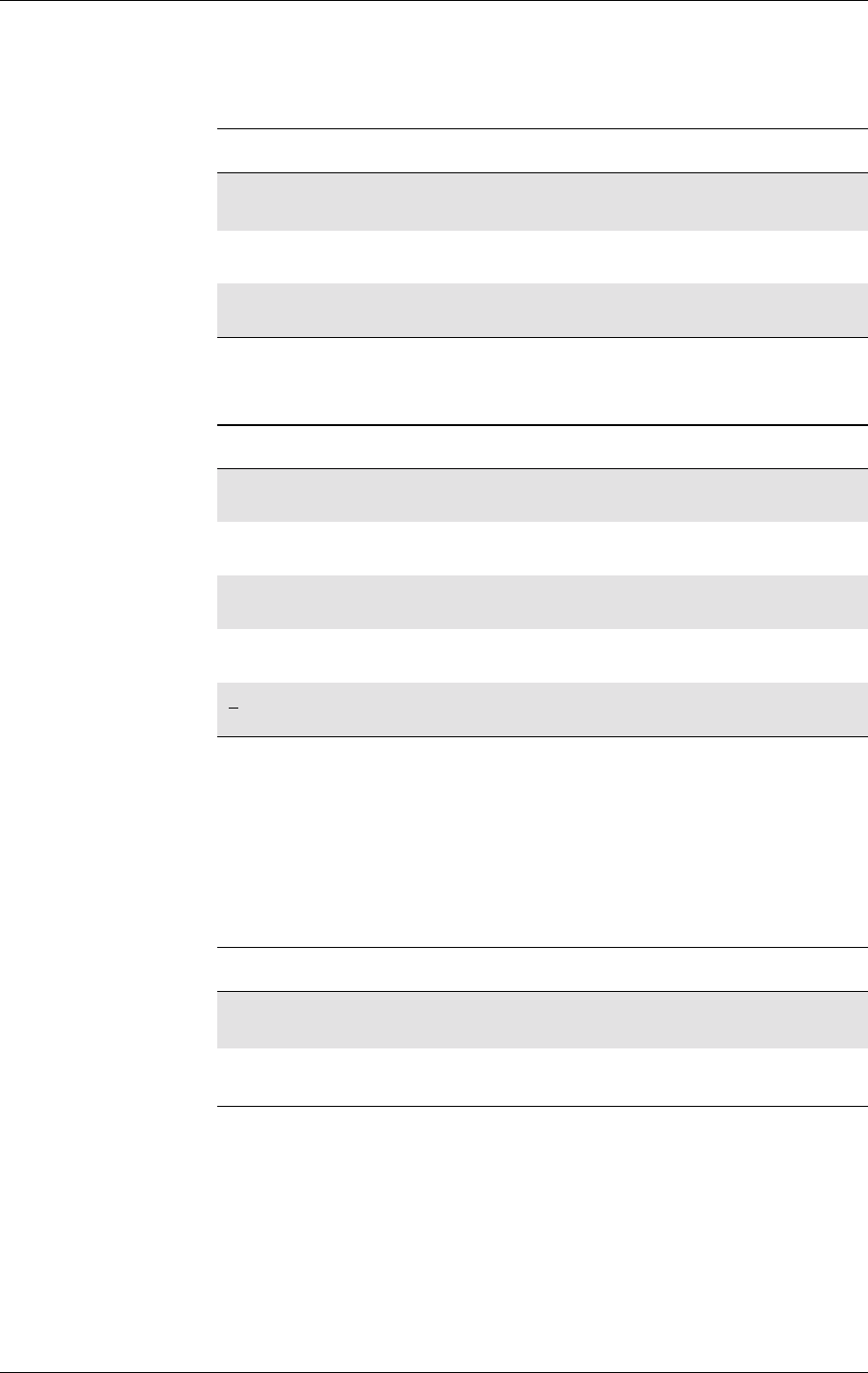
GM47/GM48 INTEGRATOR’S MANUAL
90 LZT 123 7263 R1A
2.9 ATX Call Progress Monitoring Control
Defines if the dial-tone detection and busy-tone detection are to be used
during a call.
Note! If there is no network available the <n> parameter will decide if “NO
DIALTONE” or “NO CARRIER” will be returned. If the call recipient
is busy, the <n> parameter will decide if “BUSY” or “NO CARRIER”
will be returned.
2.10 AT+CHUP Hang up Call
Causes the TA to hang-up the current call of the ME.
If no call is present, but an incoming call is notified, then the incoming
call shall be rejected.
Note! The purpose of this command is not to replace the V.25ter [4] command
H, but to give an assured procedure to terminate an alternating mode
call.
Description Command Possible Responses
Set call progress
monitoring control ATX=[<n>] or ATX[<n>] •OK
•ERROR
Read the current
setting ATX? X: <n>
Show if the command
is supported? ATX=? X: (list of supported
<n>s)
<n> Description
0Body and dial tone detection off. No line speed reported
on connection
1Body and dial tone detection off. Report line speed on
connection
2Busydetectiononanddialtonedetectionoff.Reportline
speed on connection
3Busy detect off and dial tone on. Report line speed on
connection
4Busy detect and dial tone detection on. Report line
speed on connection. Default value
Description Command Possible Responses
Request hang-up AT+CHUP •OK
•ERROR
Show if the commands
is supported AT+CHUP=? •OK
•ERROR
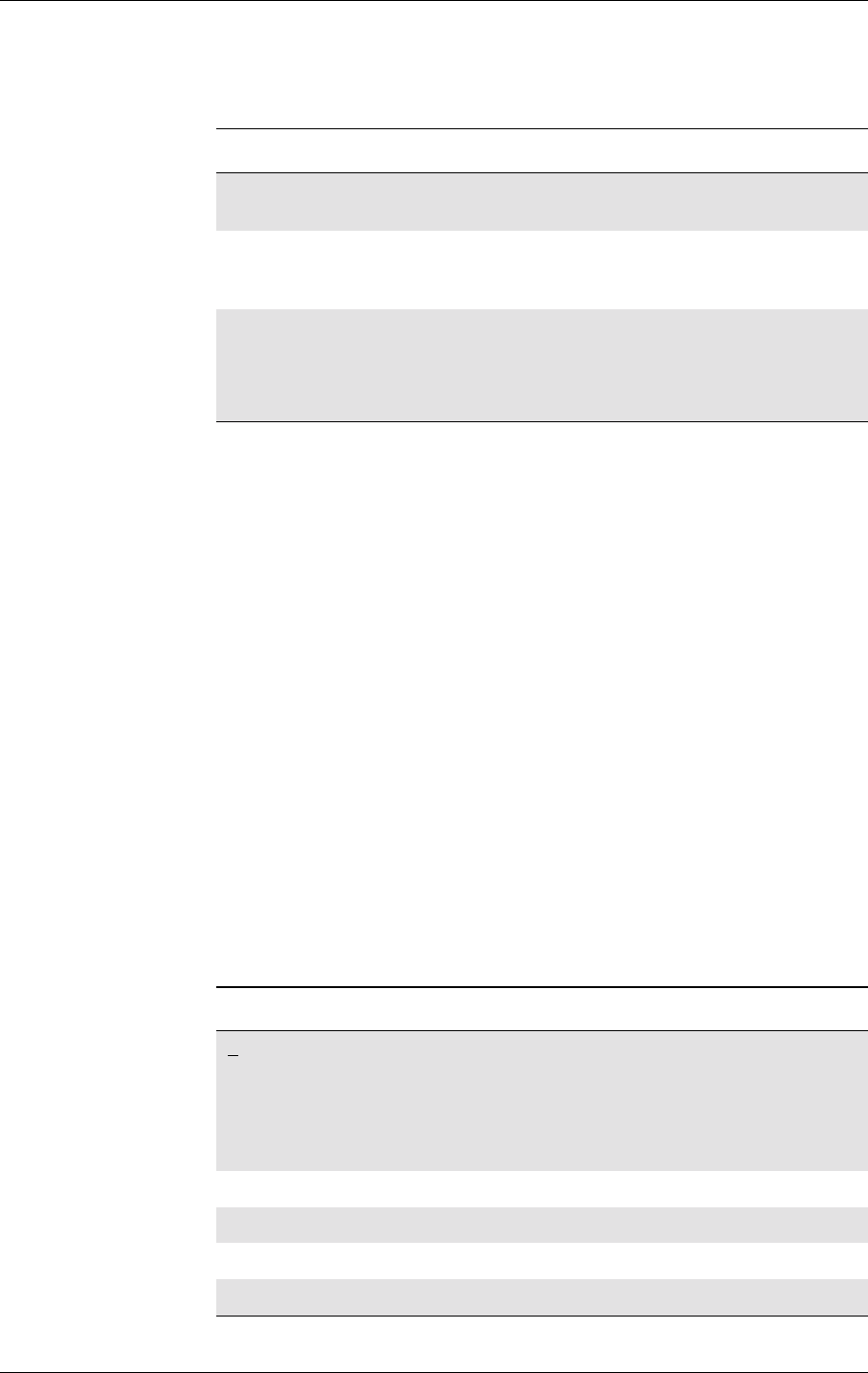
2. CALL CONTROL
91
LZT 123 7263 R1A
2.11 AT+CMOD Call Mode
Selects the call mode of further dialing commands (D) or for next
answering command (A). Mode can be either single or alternating. In
this ETS, terms “alternating mode” and “alternating call” refer to all
GSM bearer and teleservices that incorporate more than one basic
service (voice, data, fax) within one call.
When single mode is selected the call originating and hang-up
procedures are similar to procedures specified in ITU-T
Recommendations V.25ter [4], T.31 [5] and T.32 [6]. In GSM there can
be voice followed by data (refer GSM 02.02 [7]), alternating voice/data
(refer GSM 02.02 [7]) and alternating voice/fax calls (refer GSM 02.03
[8]).
Test command returns values supported by the TA as a compound
value.
Note! +CMOD is set to zero after a successfully completed alternating mode
call. It is set to zero also after a failed answering. The power-up, factory
(&F) and user resets (Z), also set the value to zero. This reduces the
possibility that alternating mode calls are originated or answered
accidentally.
Description Command Possible Responses
Request Call Mode AT+CMOD=[<mode>]•OK
•ERROR
Shows the current
setting AT+CMOD? •+CMOD:<mode>
•OK
•ERROR
Show if the command
is supported AT+CMOD=? •+CMOD:(listof
supported
<mode>s)
•OK
•ERROR
<mode> Description
0Single mode (default)
In order to avoid accidental originating or answering of
alternating calls is <mode> set to single mode in following
cases:
- after a successfully completed alternating mode call;
- after a unsuccessful answering;
- after successfully execution of the commands &F and Z
1Alternating voice/fax (teleservice # 61). Not Supported
2Alternating voice/data (bearer service #61). Not Supported
3Voice followed by data (bearer service # 81). Not Supported
4..127 Reserved by GSM 07.07. Not Supported
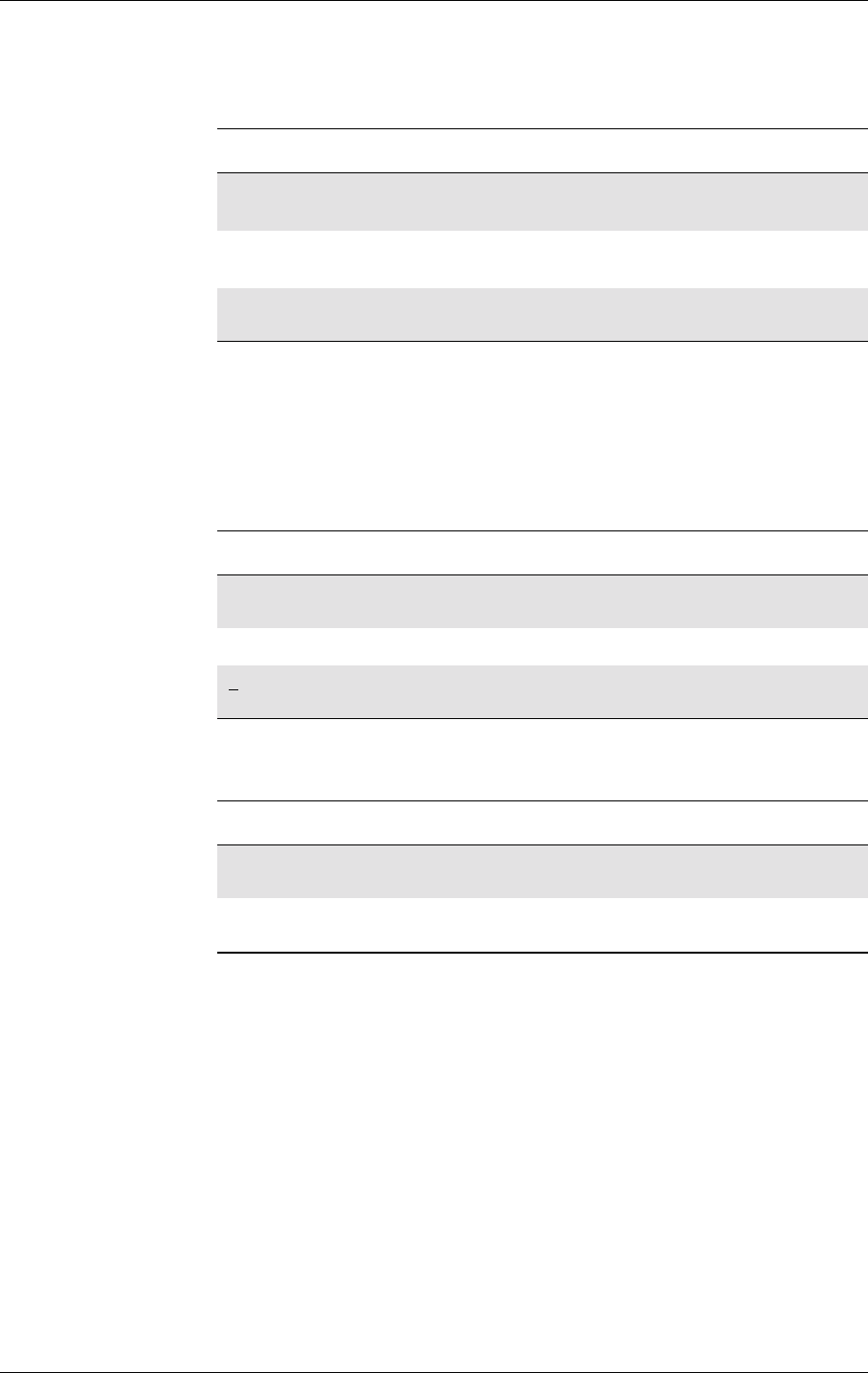
GM47/GM48 INTEGRATOR’S MANUAL
92 LZT 123 7263 R1A
2.12 AT+CVHU Voice Hang-Up
Selects whether ATH or “drop DTR” causes a voice connection to be
disconnected or not. Voice connection also includes alternating mode
calls that are currently in voice mode.
Note! When <mode>=2, this command must be viewed in conjunction with
the V.25ter [3] command &D, or &D will be ignored.
2.13 AT+VTS DTMF and Tone Generation
This command allows the transmission of DTMF tones. These tones
may be used, for example, when announcing the start of a recording
period. The command is write only. In this profile of commands, the
command does not operate in data or fax modes of operation
(+FCLASS=0,1,2-7).
Note! The ATD-command is used only for dialing. It is not possible to
generate arbitrary DTMF tones using the ATD command.
Description Syntax Possible Responses
Set Command +CVHU=[<mode>] •+CMEERROR:<err>
•OK
Read command +CVHU? •+CVHU:<mode>
•+CMEERROR:<err>
Test if the command is
supported +CVHU=? +CVHU (list of
supported <mode>s)
<mode> Description
0“Drop DTR” ignored but OK response given. ATH
disconnects
1“Drop DTR” and ATH ignored but OK response given
2“Drop DTR” behavior according to &D setting. ATH
disconnects. Default
Description Command Possible Responses
Request transmission of
DTMF tone(s) AT+VTS=<DTMF> OK
ERROR
Show if the command
is supported AT+VTS=? OK
ERROR

2. CALL CONTROL
93
LZT 123 7263 R1A
Note! The AT+VTS command is used only during a voice call.
<DTMF> Description
ASCII
character
string
An ASCII character string with entries in the set 0-9, #, *, A-
D separated by commas. Each entry is interpreted as a
single ACSII character.
Example: The string “8,9” sends two DTMF tones, “8”
followed by “9”

GM47/GM48 INTEGRATOR’S MANUAL
94 LZT 123 7263 R1A
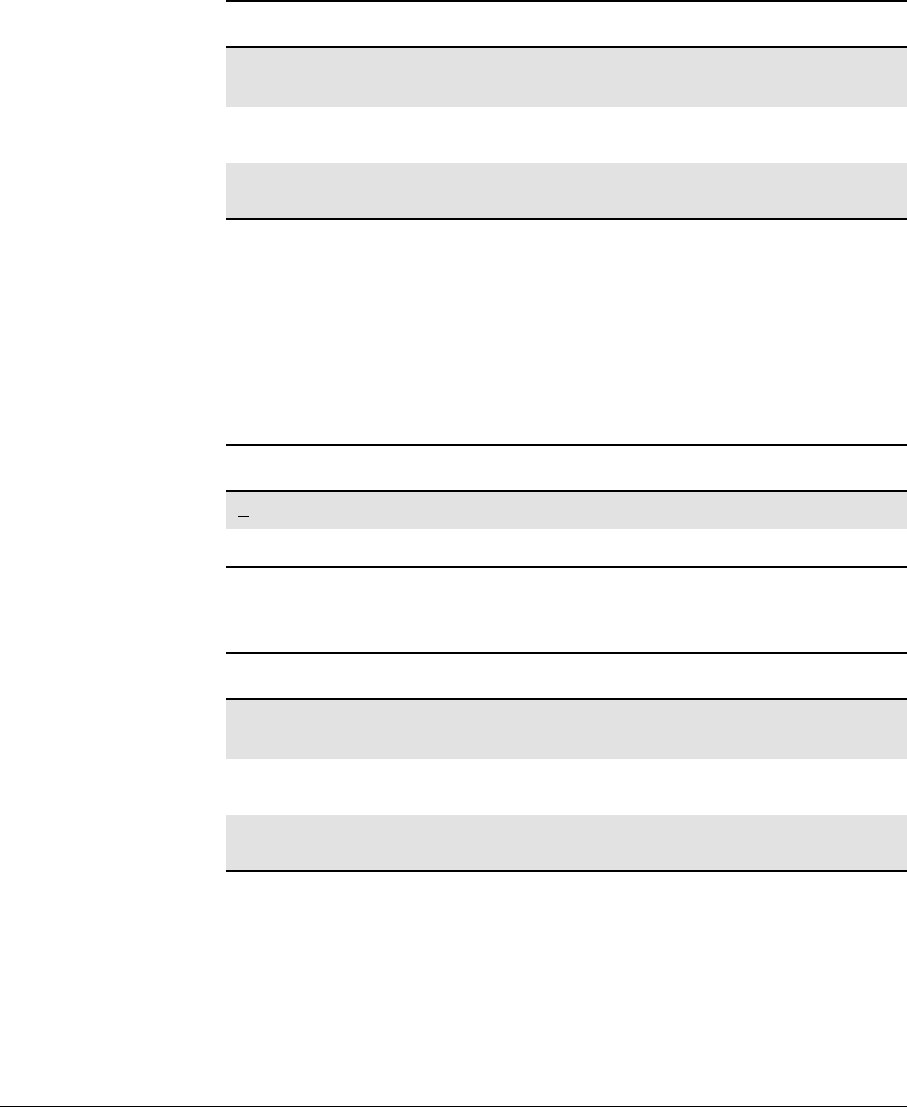
95
LZT 123 7263 R1A
3. Control and Status
3.1 ATQ Result Code Suppression
Determines whether or not the DCE transmits result codes to the DTE.
When result codes are being suppressed, no portion of any intermediate,
final, or unsolicited result code - header, result text, line terminator, or
trailer - is transmitted.
Note! The Ingo-module triggers on the response from ref. Point E. It is
therefore not possible to turn off the response in ref. Point E.
3.2 ATS0 Automatic Answer Control
Defines the automatic answering feature of the modem. A non-zero
value specifies the number of rings before the call is answered.
Description Command Possible Responses
Set Result Code
Suppression ATQ[=]<value> •OK
•ERROR
Read the current
setting ATQ? Q: <value>
Show if the command
is supported ATQ=? Q: (list of supported
<value>s)
<value> Description
0DCE transmits result codes. Default value
1Result codes are suppressed and not transmitted
Description Command Possible Responses
Automatic answer
control ATS0=[<rcnt>] •OK
•ERROR
Read the current
setting ATS0? <rcnt>
Show if the command
is supported ATS0=? S0: (list of supported
<rcnt>s)
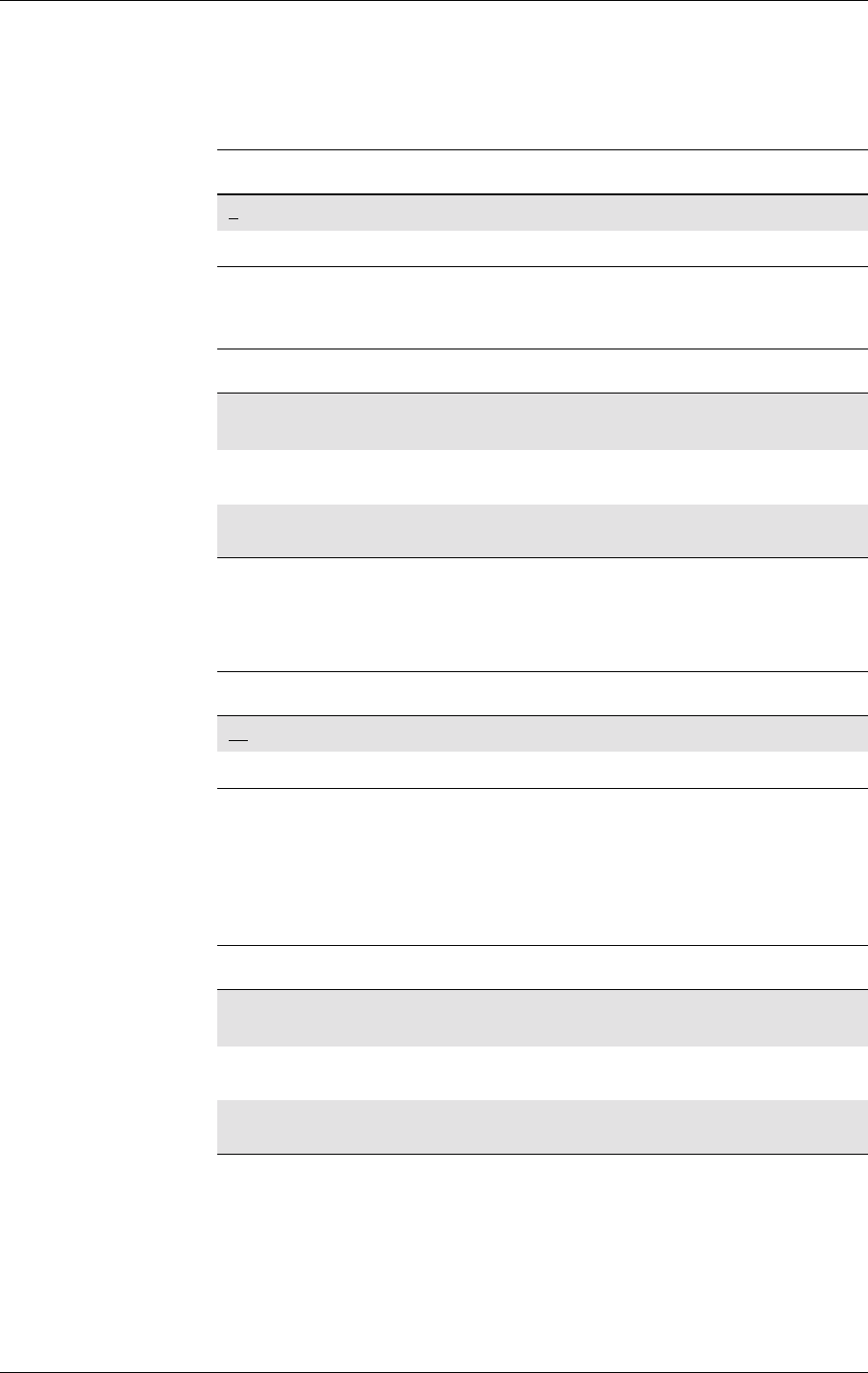
GM47/GM48 INTEGRATOR’S MANUAL
96 LZT 123 7263 R1A
Note! Call is always answered in the current fax class, regardless of whether
the incoming call is voice, data, or fax.
3.3ATS2 EscapeSequenceCharacter
Defines the character to be used as the escape sequence character when
switching from on-line data mode to on-line command mode. The
response to the command is modified to reflect the change.
Note! If the <esc> parameter is set to a value in the range of 128-255, the
escape sequence detection is disabled.
3.4 ATS3 Command Line Termination Character
This S-parameter represents the decimal IA5 value of the character
recognised by the DCE from the DTE to terminate an incoming
command line. It is also generated by the DCE as part of the header,
trailer, and terminator for result codes and information text, along with
the S4 parameter.
<rcnt> Description
0Disable automatic answer. Default value
1-7 Answer after the specified number of rings
Description Command Possible Responses
Set escape sequence
character ATS2=[<esc>] •OK
•ERROR
Read the current
setting ATS2 <esc>
Show if the command
is supported ATS2=? S2: (list of supported
<esc>s)
<esc> Description
43 Escape sequence character. Default value
0 to 255 Escape sequence character
Description Command Possible Responses
Set Command Line
Termination Character ATS3=<value> •OK
•ERROR
Read the current
setting ATS3? <value>
Show if the command
is supported ATS3=? S3: (list of supported
<value>s)
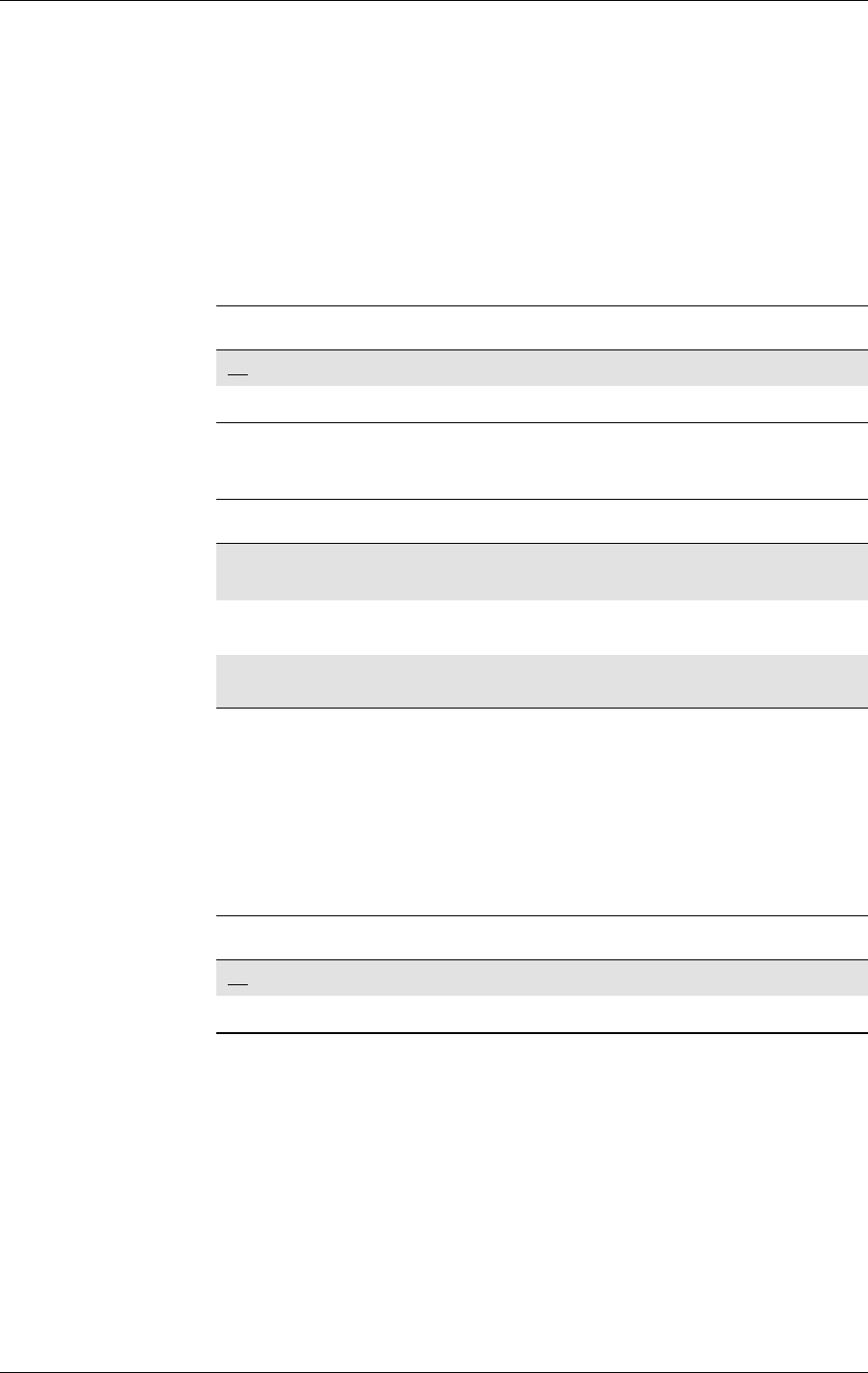
3. CONTROL AND STATUS
97
LZT 123 7263 R1A
The previous value of S3 is used to determine the command line
termination character for entry of the command line containing the S3
setting command. However, the result code issued uses the value of S3
as set during the processing of the command line. For example, if S3
was previously set to 13 and the command line "ATS3 30" is issued, the
command line is terminated with a <CR> character (IA5 0/13), but the
result code issued uses the character with the ordinal value 30 (IA5 2/
14) in place of the <CR>.
3.5 ATS4 Response Formatting Character
This S-parameter represents the decimal IA5 value of the character
generated by the DCE as part of the header, trailer, and terminator for
result codes and information text, along with the S3 parameter (see the
description of the V parameter for usage).
If the value of S4 is changed in a command line, the result code issued
in response to that command line will use the new value of S4.
<value> Description
13 Command line termination character, Default value
0 to 127 Command line termination character
Description Command Possible Responses
Set Response
Formatting Character ATS4=<value> •OK
•ERROR
Read the current
setting ATS4? <value>
Show if the command
is supported ATS4=? S4: (list of supported
<value>s)
<value> Description
10 Formatting character. Default value
0 to 127 Formatting character
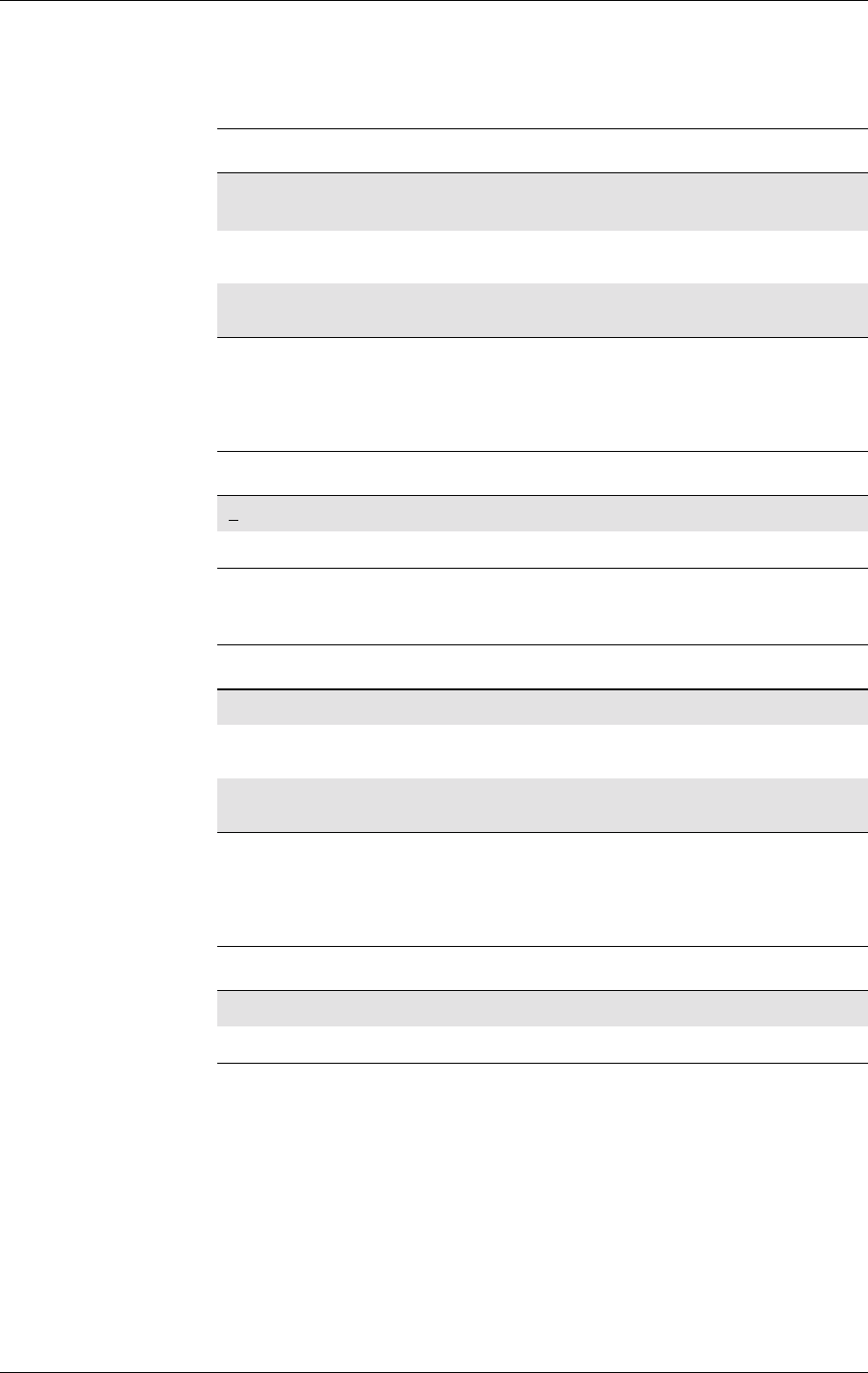
GM47/GM48 INTEGRATOR’S MANUAL
98 LZT 123 7263 R1A
3.6 ATS5 Command Line Editing Character (BACKSPACE)
This S-parameter represents the decimal IA5 value of the character
recognised by the DCE as a request to delete from the command line the
immediately preceding character.
3.7 ATS6 Blind Dial Delay Control
Defines the number of seconds to wait before call addressing when a
dial tone is not detected. This command is ignored by the Infrared
Modem and is only included for compatibility.
Description Command Possible Responses
Request Command
Line Editing Character ATS5=<value> •OK
•ERROR
Shows the current
setting ATS5? <value>
Show if the command
is supported ATS5=? S5: (list of supported
<value>s)
<value> Description
8Line editing character. Default value
0 to 127 Line editing character
Description Command Possible Responses
Blind dial delay control ATS6=[<dly>] OK
Read the current
setting ATS6? <dly>
Show if the command
is supported ATS6=? S6: (list of supported
<dly>s)
<dly> Description
2Wait two seconds before blind dialling.Default value.
2-255 Number of seconds to wait before blind dialling
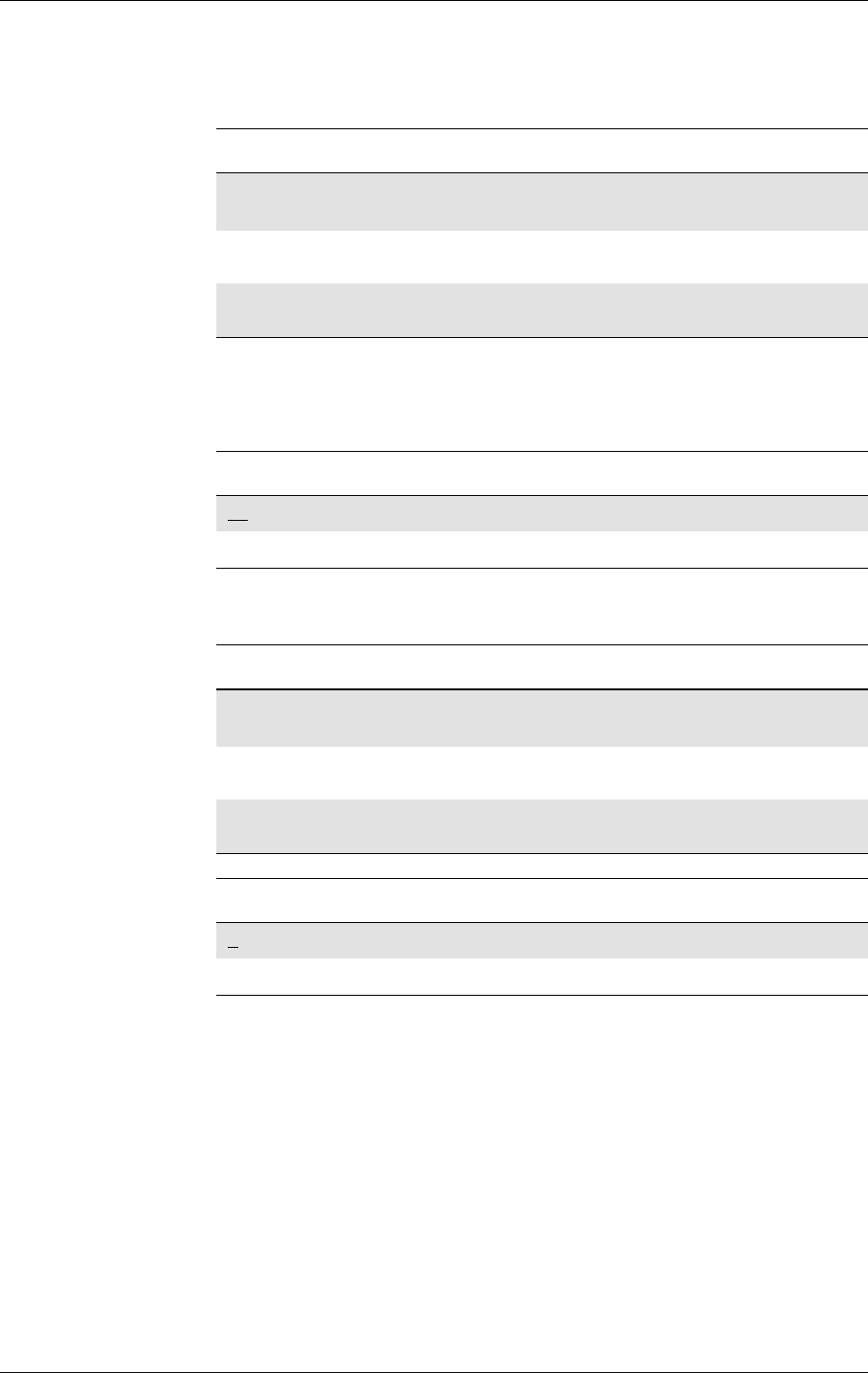
3. CONTROL AND STATUS
99
LZT 123 7263 R1A
3.8 ATS7 Connection Completion Timeout
Defines the maximum time allowed between completion of dialling and
the connection being established. If this time is exceeded then the
connection is aborted.
3.9 ATS8 Comma Dial Modifier Delay Control
Description Command Possible Responses
Set connection
completion timeout ATS7=[<tmo>] •OK
•ERROR
Read the current
setting ATS7? <tmo>
Show if the command
is supported ATS7=? S7: (list of supported
<tmo>s)
<tmo> Description
50 Timeout value in seconds. Default value
1-255 Timeout value in seconds
Description Command Possible Responses
Set Comma Dial
Modifier Delay Control ATS8=[<dly>] •OK
•ERROR
Read the current
setting. ATS8? <dly>
Show if the command
is supported. ATS8=? S8: (list of supported
<dly>s)
<dly> Description
2Thevalueofthedialmodifierdelayinseconds.Default value
1-255 Thevalueofthedialmodifierdelayinseconds
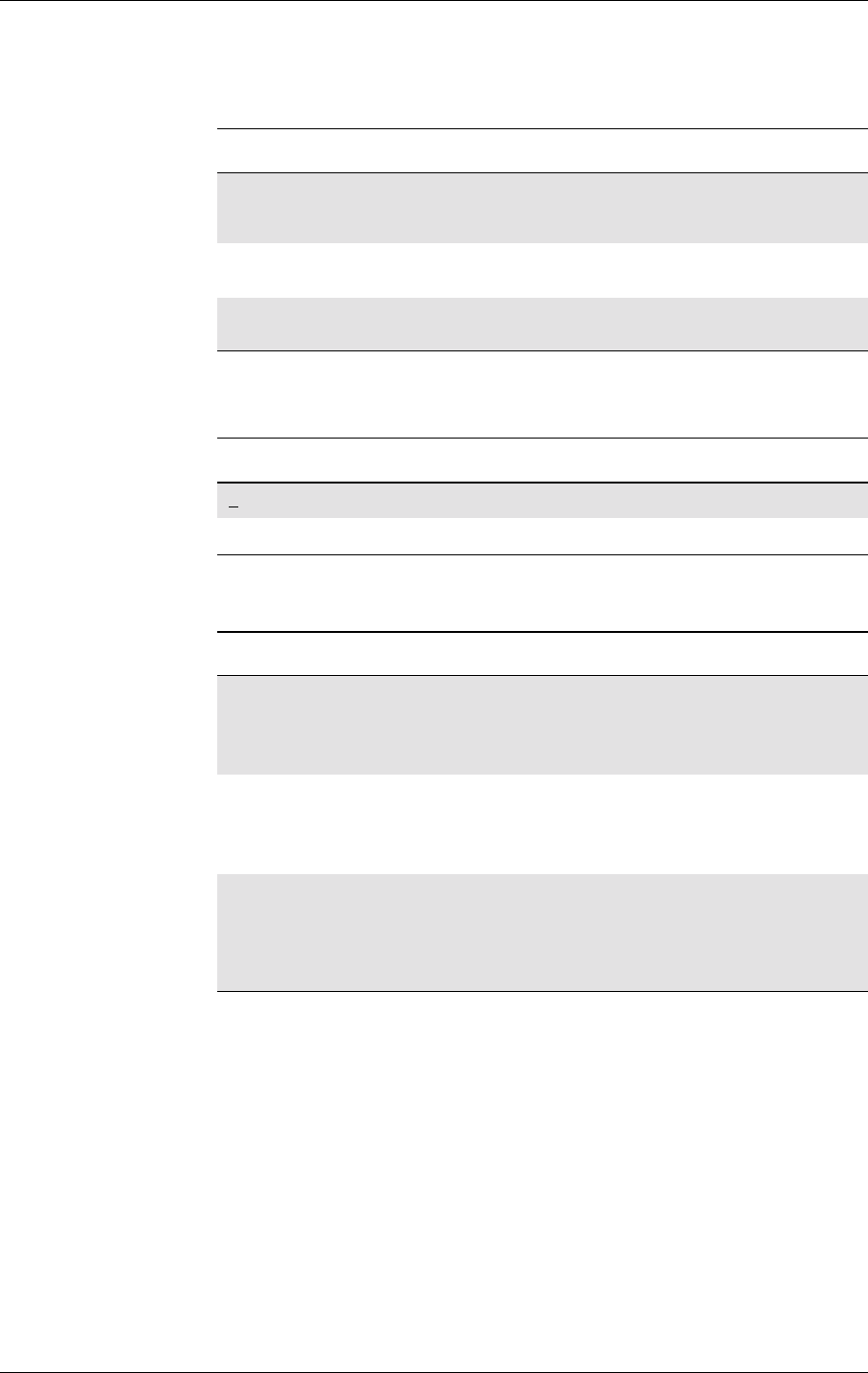
GM47/GM48 INTEGRATOR’S MANUAL
100 LZT 123 7263 R1A
3.10 ATS10 Automatic Disconnect Delay Control
Specifies the amount of time that the DCE will remain connected to the
line after the absence of received line signals.
3.11 AT*ECAM Ericsson Call Monitoring
This command activates or deactivates the call monitoring function in
the ME. When this log function is activated in the ME, the ME informs
about call events, such as incoming call, connected, hang up etc.
It is preferable that the current status shall always be sent with result
code *ECAV when activating the log function. The purpose of this is
two fold:
• to gather relevant information for the call log in a TE;
Description Command Possible Responses
Set Automatic
Disconnect Delay
Control
ATS10=[<val>] •OK
•ERROR
Read the current
setting ATS10? <val>
Show if the command
is supported ATS10=? S10: (list of supported
<val>s)
<val> Description
2Remains connected for two tenths of a second. Default value
1-254 Number of tenths of a second of delay
Description Command Possible Responses
Set Call Monitoring on
or off AT*ECAM=<onoff> •OK
•+CMEERROR:<err>
•OK
•ERROR
Read the current status
for Call Monitoring AT*ECAM? •*ECAM:<onoff>
•+CMEERROR:<err>
•OK
•ERROR
Test if the command is
supported AT*ECAM=? •*ECAM:listof
supported <onoff>s
•+CMEERROR:<err>
•OK
•ERROR
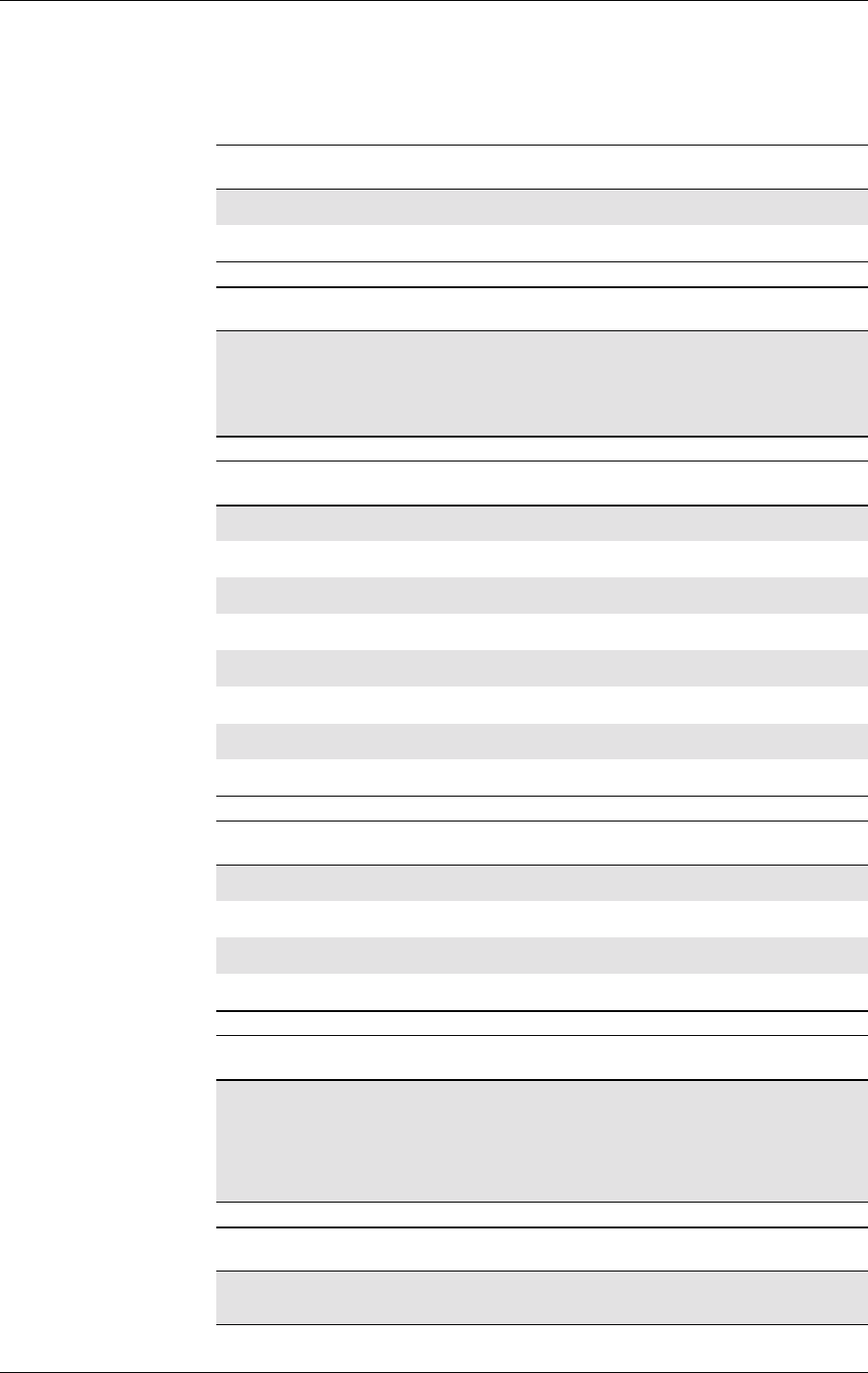
3. CONTROL AND STATUS
101
LZT 123 7263 R1A
• to make it possible for the TE to display call state information for an
ongoing call.
<onoff> Description
0The call log function is disabled (off)
1The call log function is enabled (on)
<ccid> Description
Integer (1-7) A number which uniquely defines a call in the phone (=
number of call control process). There can not be two call
id’s with the same number simultaneously. The maximum
number of call control processes is 7, 5 multiparty
members,onecallonholdandonewaitingcall
<ccstatus> Description
0IDLE
1CALLING (MO)
2CONNECTING (MO)
3ACTIVE (connection between A and B)
4HOLD
5WAITING (MT)
6ALERTING (MT)
7BUSY
<calltype> Description
1VOICE
2DATA
4FAX
128 VOICE2
<processid> Description
Integer Reported when returning to the IDLE state (<ccstatus> =
0).
8=H’08=CC(Callcontrol)
68 =H’44 = MM (Mobile Management)
69 = H’45 = MS (Mobile Station)
122 = H’7A = RR (Radio Resources)
<exit cause> Description
Integer Exit cause according to GSM 04.08. Reported when
returning to IDLE state (<ccstatus> = 0)
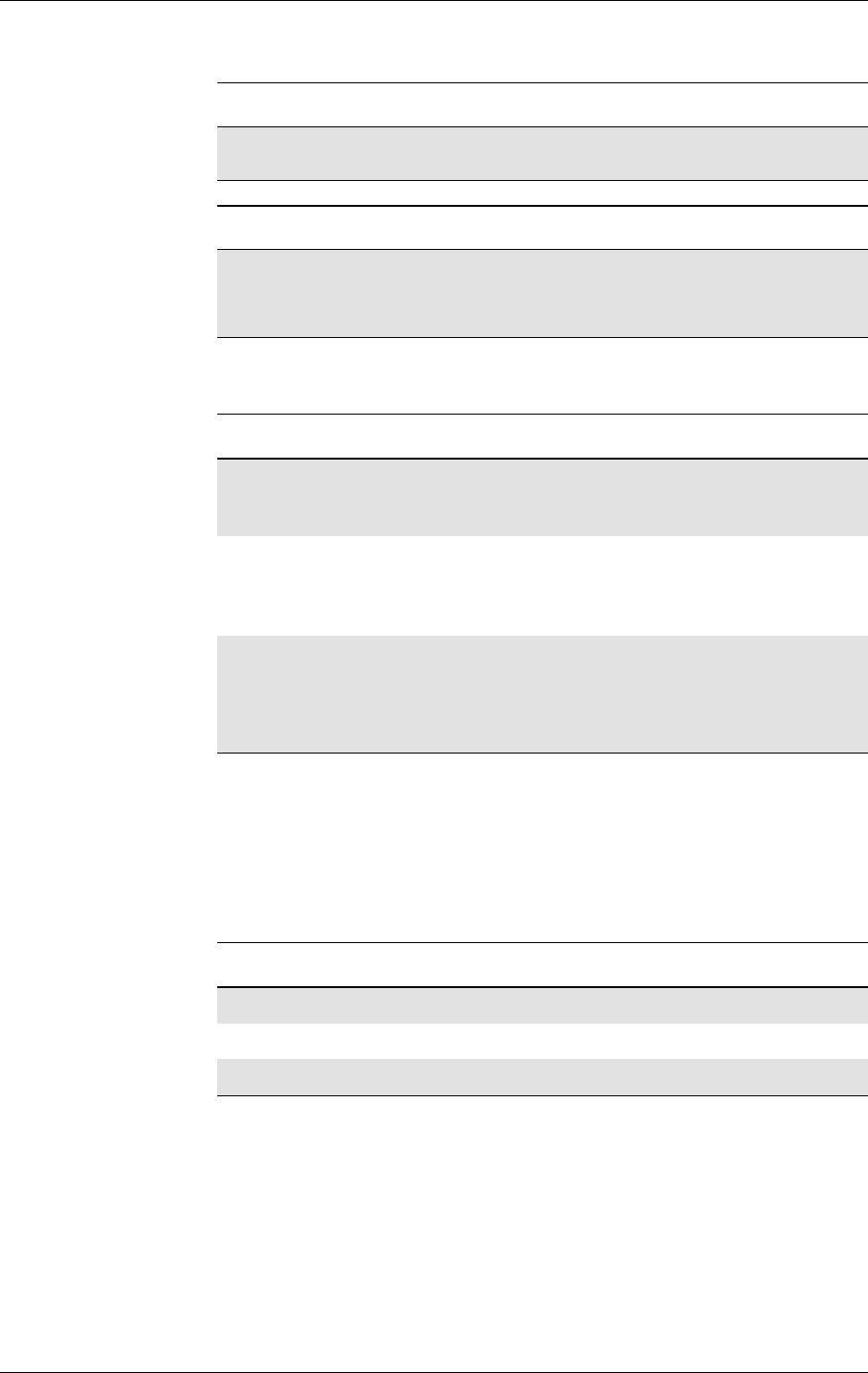
GM47/GM48 INTEGRATOR’S MANUAL
102 LZT 123 7263 R1A
3.12 AT*EDST Ericsson Daylight Saving Time
This command sets the daylight saving time hours.
Note! This command affects the MS clock set with the AT+CCLK command.
To avoid confusion it is recommended the daylight saving time (DST)
is set with this command before setting the actual local time with
AT+CCLK.
<number> Description
String String type phone number of format specified by <type>.
Only valid for <ccstatus> = 1 (CALLING)
<type> Description
Integer Type of address octet in integer format (refer GSM 04.08
subclause 10.5.4.7). ; default 145 when dialing string
includes international access code character “+”,
otherwise 129. Only valid for <ccstatus> = 1 (CALLING)
Description Command Possible Responses
Set Daylight Saving
Time AT*EDST=<dst> •+CMEERROR:<err>
•OK
•ERROR
Read current Daylight
Saving Time AT*EDST? •*EDST:<dst>
•+CMEERROR:<err>
•OK
•ERROR
Show if the command
is supported AT*EDST=? •• *EDST: (list of
supported <dst>s)
•+CMEERROR:<err>
•OK
•ERROR
<dst> Description
0Standard time
1Daylight saving time, +1 hour
2Daylight saving time, +2 hours
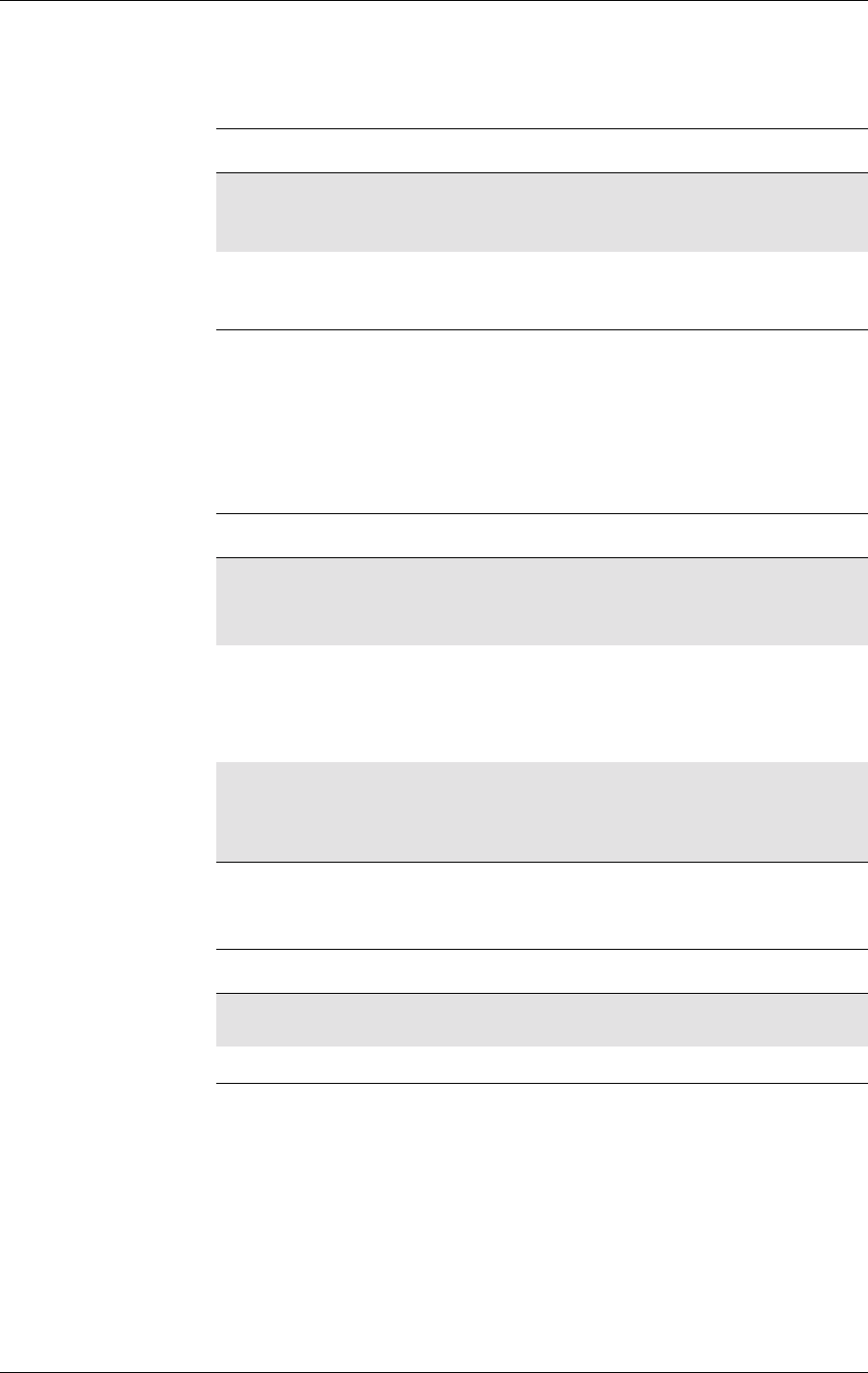
3. CONTROL AND STATUS
103
LZT 123 7263 R1A
3.13 AT*EMAR Ericsson Master Reset
This command requests the MS to reset user data. The user data in the
MS will be reset to the default values. This command also unlocks the
MS.
3.14 AT*EPEE Ericsson Pin Event
The command requests the MS to report when the PIN code has been
inserted and accepted.
Description Command Possible Responses
Perform a master reset
in the MS AT*EMAR •+CMEERROR:<err>
•OK
•ERROR
Shows if the command
is supported or not AT*EMAR=? •+CMEERROR:<err>
•OK
•ERROR
Description Command Possible Responses
Requests the MS to
inform when the PIN
code has been
inserted
AT*EPEE=<onoff> •+CMEERROR:<err>
•OK
•ERROR
Test if the command is
supported AT*EPEE=? • *EPEE: (list of
supported <onoff>s)
•+CMEERROR:<err>
•OK
•ERROR
Read the current status
for PIN Code Request AT*EPEE? • *EPEE: <onoff>
•+CMEERROR:<err>
•OK
•ERROR
<onoff> Description
0Request for report on inserted PIN code is not activated
(off)
1Request for report on inserted PIN code is activated (on)
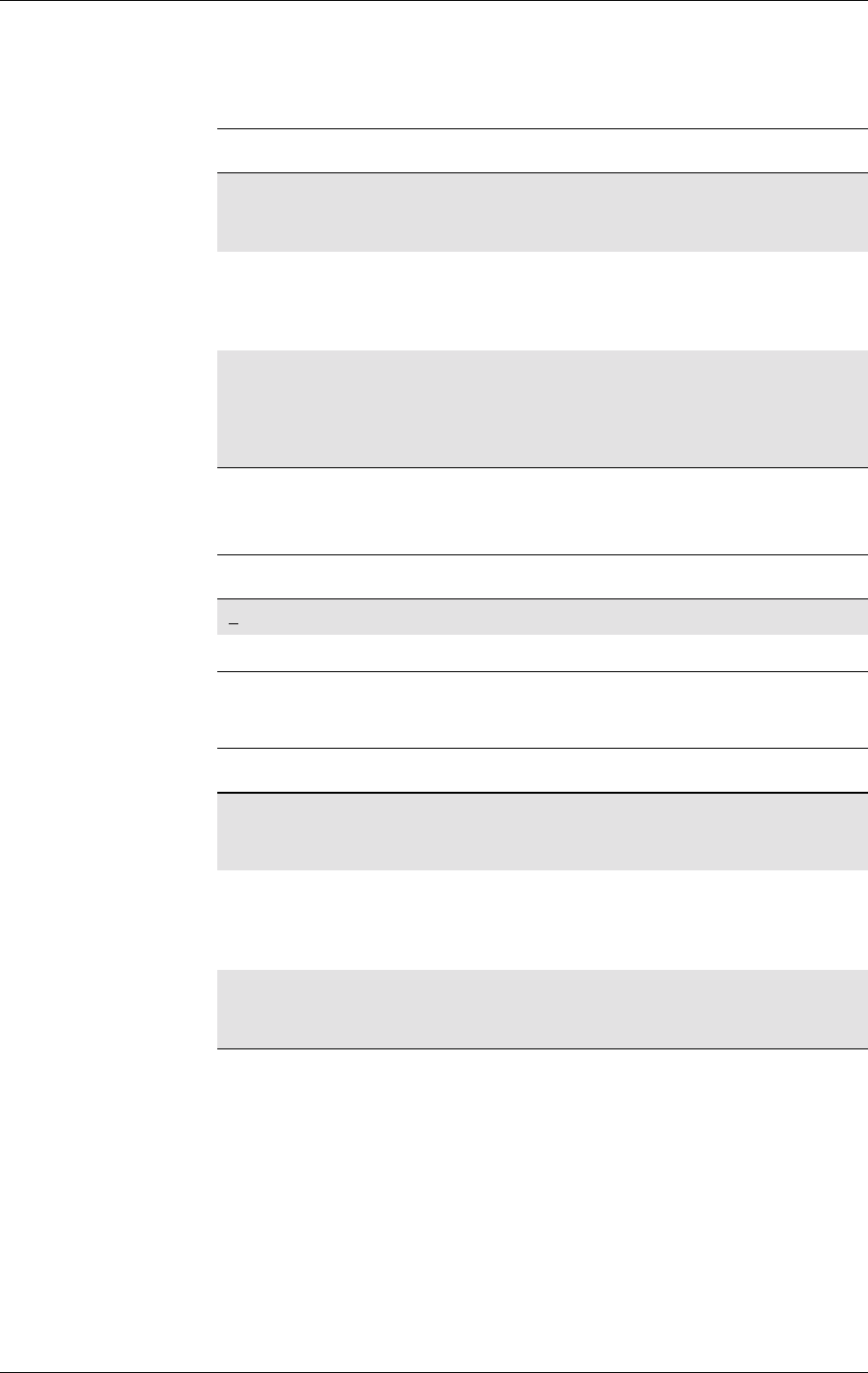
GM47/GM48 INTEGRATOR’S MANUAL
104 LZT 123 7263 R1A
3.15 AT*ESMM Ericsson Settings Minute Minder
This command sets the minute minder setting to on or off in the MS.
Test command returns the <mode> value.
3.16 AT+CALA Set Alarm
Sets an alarm time in the ME. The alarm time is set in minutes and
hours. Date, seconds and time zone cannot be set.
The alarm must be set again by the user after it has been released. It will
not ring automatically every day at the same time.
Description Command Possible Responses
Sets the Minute Minder
to on or off AT*ESMM=<mode> •+CME ERROR: <err>
•OK
•ERROR
Read the current
setting AT*ESMM? •*ESMM:<mode>
•+CMEERROR:<err>
•OK
•ERROR
Test if the command is
supported or not and
the possible settings
AT*ESMM=? •*ESMM:listof
supported <mode>s
•+CMEERROR:<err>
•OK
•ERROR
<mode> Description
0OFF, minute minder off. Default setting
1ON, minute minder on
Description Command Possible Responses
Set an alarm time in
the ME AT+CALA=<time> •+CMEERROR:<err>
•OK
•ERROR
List current active
alarm settings in ME AT+CALA? •+CALA:<time>
•+CMEERROR:<err>
•OK
•ERROR
Show list of supported
parameter values AT+CALA=? •+CMEERROR:<err>
•OK
•ERROR
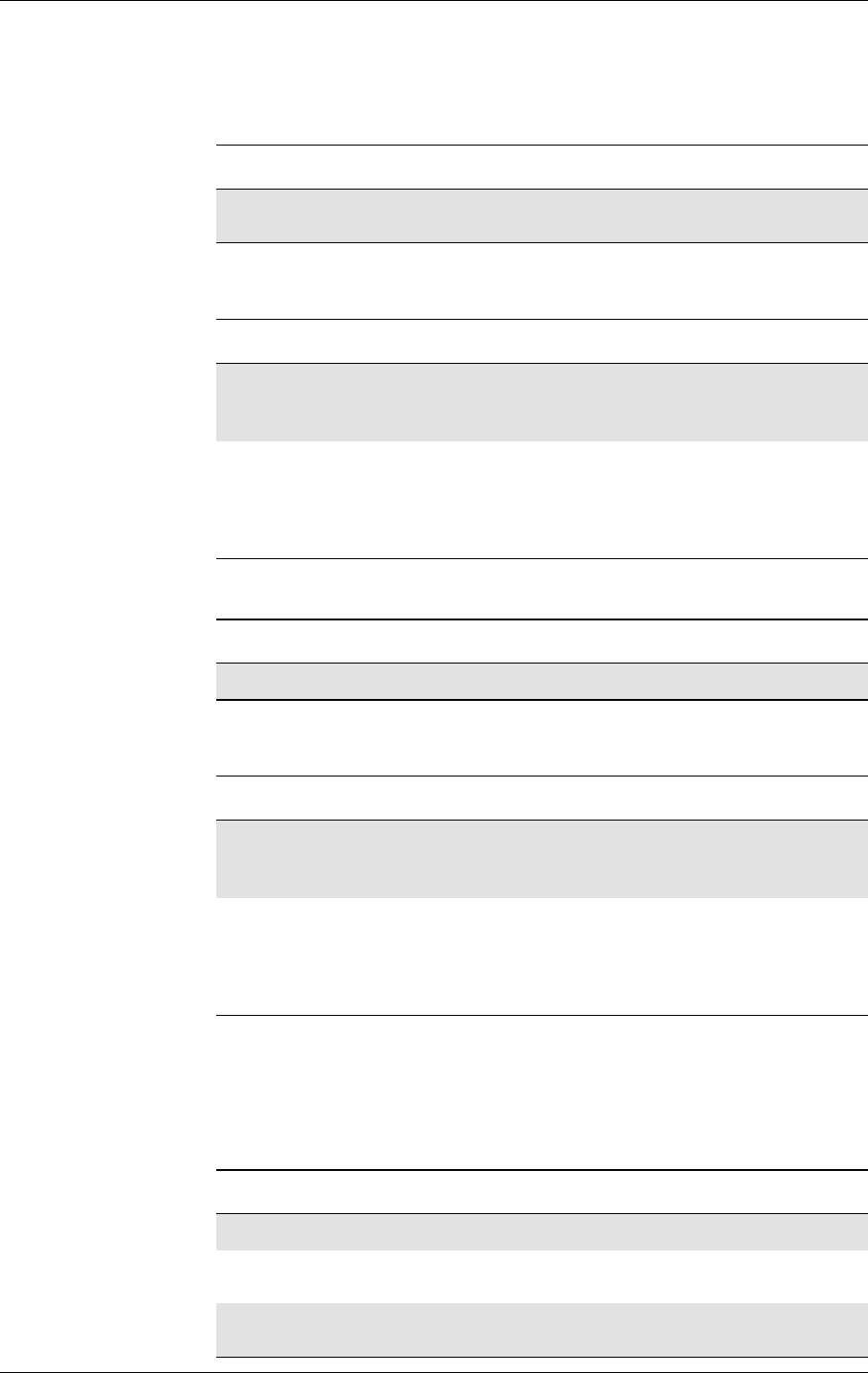
3. CONTROL AND STATUS
105
LZT 123 7263 R1A
The alarm function uses the ring type and the ring level defined with the
AT*ERIN and AT*ERIL commands.
3.17 AT+CALD Alarm Delete
This command removes an active alarm.
3.18 AT+CAPD Postpone or Dismiss an Alarm
This command controls an active (occurring) alarm by either
postponing it or dismissing it.
If more than one alarm occurs at the same time, this command dismisses
or postpones the last activated alarm.
<time> Description
string type
value Refer to AT+CCLK command. Only minutes and hours are
used
Description Command Possible Responses
Delete an alarm AT+CALD=<n> •+CMEERROR:<err>
•OK
•ERROR
Show if the command
is supported AT+CALD=? •+CALD:(listof
supported <n>s)
•+CMEERROR:<err>
•OK
•ERROR
<n> Description
Integer type Index identifying an active alarm
Description Command Possible Responses
Postpone or dismiss an
alarm AT+CAPD=[<sec>] •+CMEERROR:<err>
•OK
•ERROR
Show if the command
is supported AT+CAPD=? •+CAPD:(listof
supported <sec>s)
•+CMEERROR:<err>
•OK
•ERROR
<sec> Description
0Dismiss the alarm
1…600 Postpone the alarm (snooze) for <sec> seconds. Not
supported
540 Postpone the alarm (snooze) for 540 seconds (9 minutes).
This is the only supported value
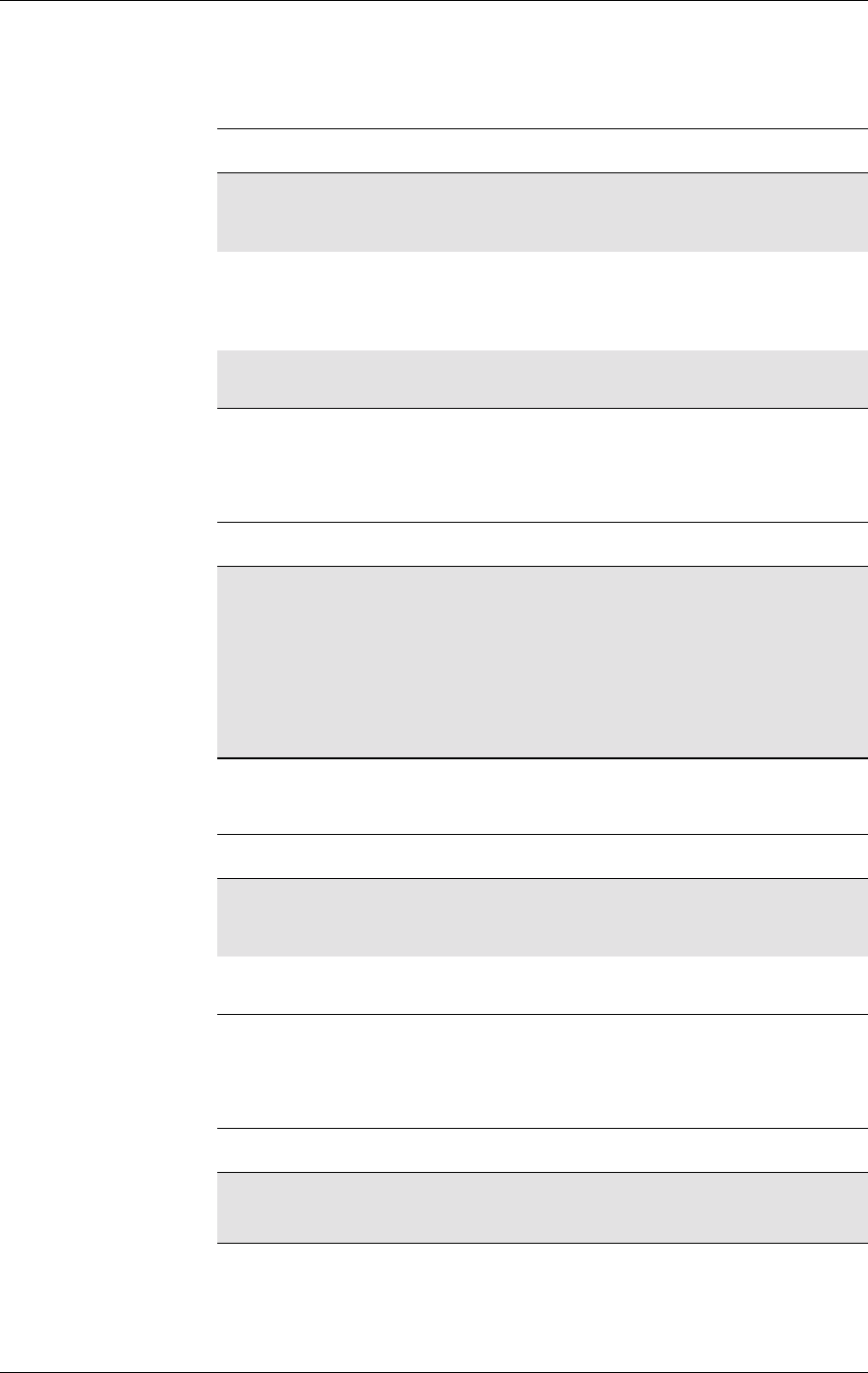
GM47/GM48 INTEGRATOR’S MANUAL
106 LZT 123 7263 R1A
3.19 AT+CCLK Set Clock and Date
Sets the real time clock of the ME. If setting fails in an ME, error +CME
ERROR: <err> is returned. Read command returns the current setting
of the clock.
3.20 AT+CEER Extended Error Report
Causes the TA to return one or more lines of information text <report>.
Typically, the text will consist of a single line containing the failure
information given by the GSM network in text format.
Description Command Possible Responses
Set the real time clock
of the ME AT+CCLK=<time> •+CMEERROR:<err>
•OK
•ERROR
Show the current
setting AT+CCLK? •+CCLK:<time>
•+CMEERROR:<err>
•OK
•ERROR
Show if the command
is supported AT+CCLK=? •OK
•ERROR
<time> Description
string type
value Format is “yy/mm/dd,hh:mm:ss±zz”, where characters
indicate year (two last digits), month, day, hour, minutes,
seconds and time zone (indicates the difference,
expressed in quarters of an hour, between the local time
and GMT; range -47...+48), e.g. 6th of May 1994, 22:10:00
GMT+2 hours reads “94/05/06,22:10:00+08”
NOTE: If the ME does not support time zone information
then the three last characters of <time> are not returned
by +CCLK?
Description Command Possible Responses
Request an Extended
Error Report AT+CEER • +CEER: <report>
•OK
•ERROR
Show if the command
is supported AT+CEER=? •OK
•ERROR
<report> Description
characters The total number of characters, including line terminators,
in the information text shall not exceed 2041 characters.
Text shall not contain the sequence 0<CR> or OK<CR>
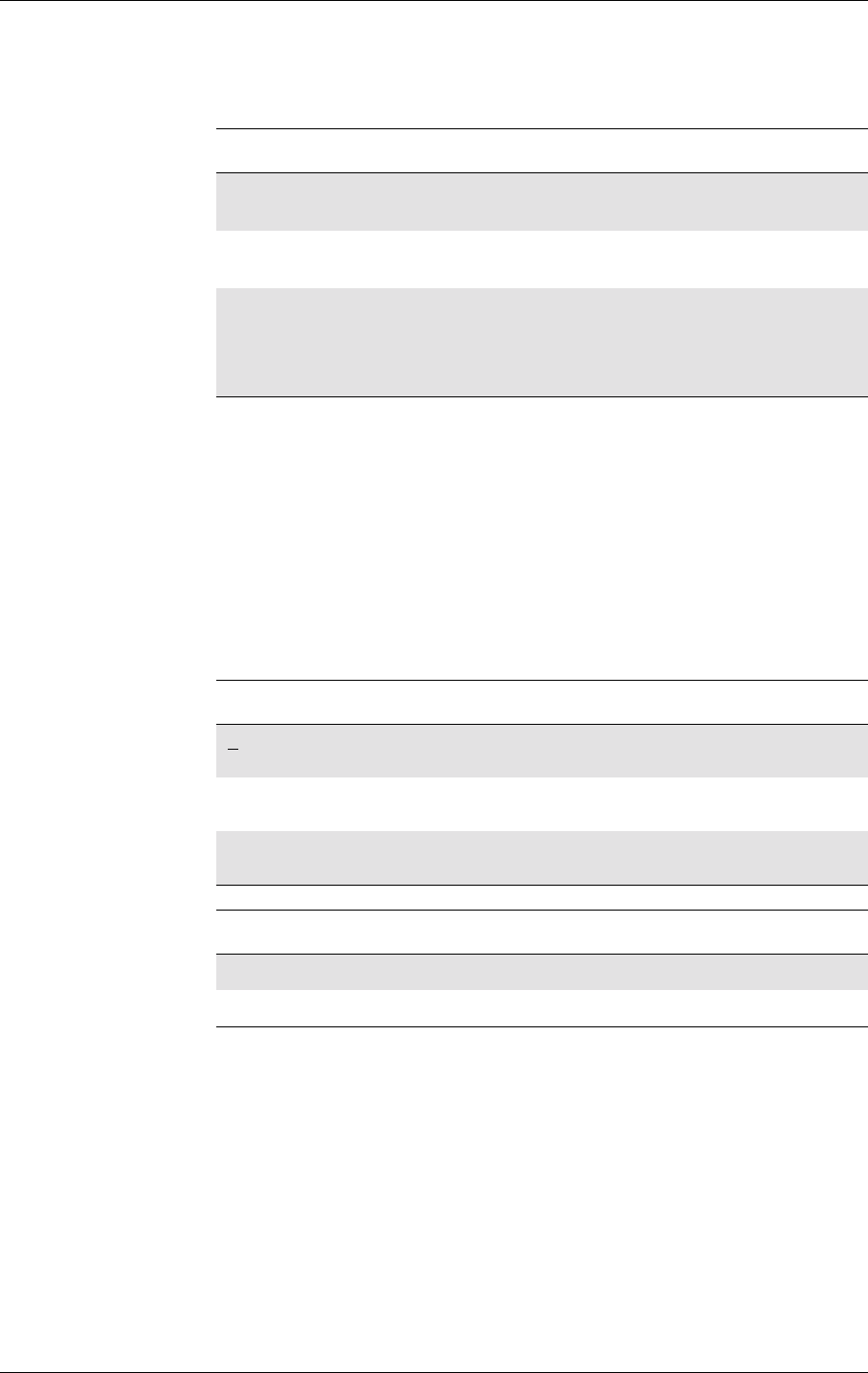
3. CONTROL AND STATUS
107
LZT 123 7263 R1A
3.21 AT+CFUN Set Phone Functionality
Selects the level of functionality <fun> in the MS. Level “full
functionality” results in the highest level of power drawn. “Minimum
functionality” resultsin the minimum power drawn. Manufacturers may
also specify levels of functionality between these two end levels. When
supported by manufacturers, ME resetting with the <rst> parameter
may be utilized.
Test command returns values supported by the ME as a compound.
Note! ‘AT+CFUN=’ is interpreted as ‘AT+CFUN=0’.
Description Command Possible Responses
Set MS functionality AT+CFUN=[<fun>[,<rst>]] •+CMEERROR:<err>
•OK
Show the current
setting AT+CFUN? •+CFUN:<fun>
•+CMEERROR:<err>
Show if the
command is
supported
AT+CFUN=? • +CFUN: (list of
supported <fun>s),(
list of supported
<rst>s)
•+CME ERROR: <err>
<fun> Description
0Minimum functionality. Default value.
Note: The ME is turned off
1Full functionality.
Note: If previously turned off, the phone is turned on
4Disable MS transmit and receive RF circuits
Not Supported
<rst> Description
0Do not reset
1Reset the MS before setting it to <fun> power level
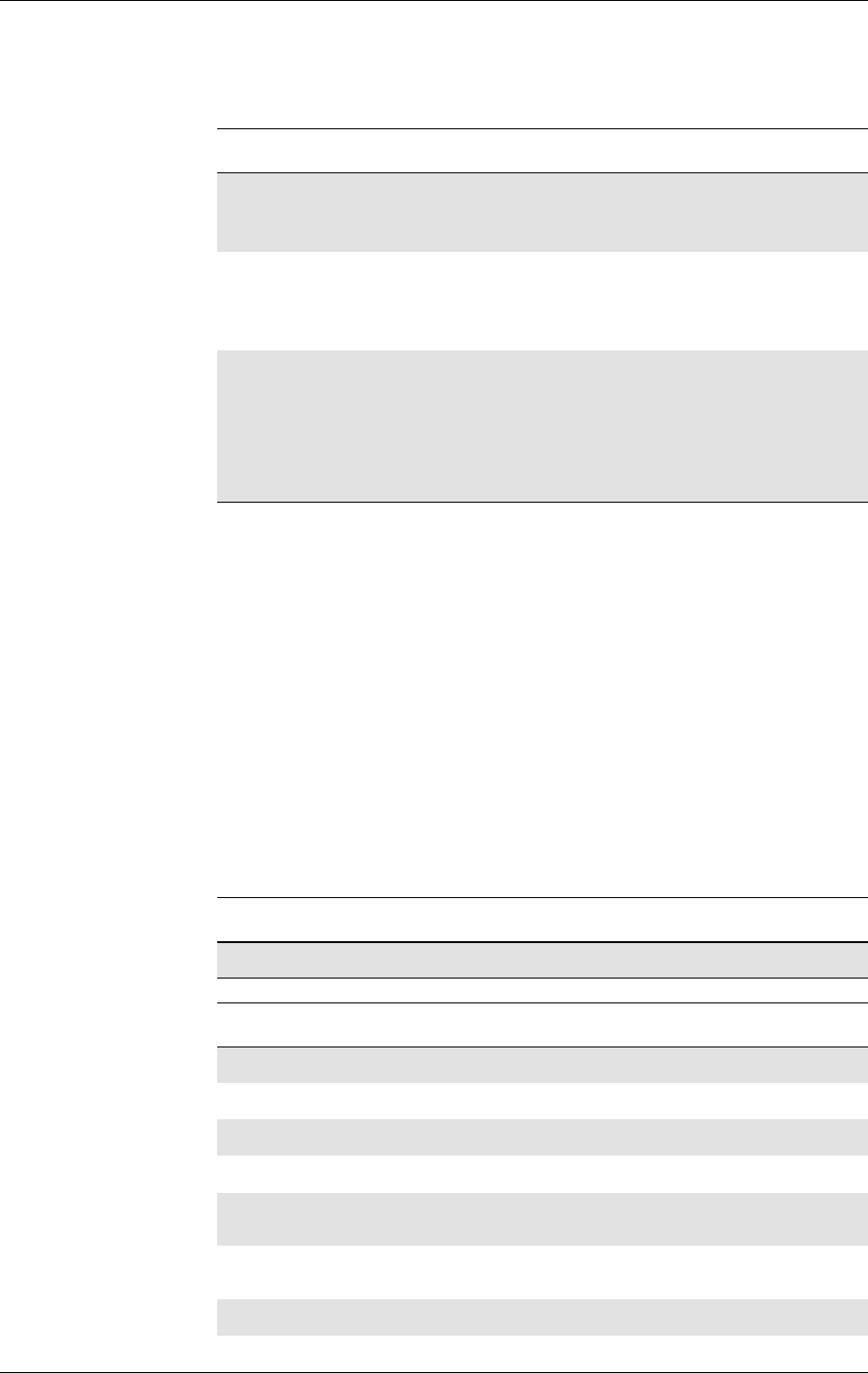
GM47/GM48 INTEGRATOR’S MANUAL
108 LZT 123 7263 R1A
3.22 AT+CIND Indicator Control
Used to set the values of ME indicators. <ind> value 0 means that the
indicator is off (or in state which can be identified as “off” state), 1
means that indicator is on (or in a state which is more substantial than
“off” state), 2 is more substantial than 1, and so on. If the indicator is a
simple on/off style element, it has values 0 and 1. The number of
elements is ME specific. If the ME does not allow setting of indicators
or it is not currently reachable, +CME ERROR: <err> is returned. If a
certain indicator is not writable, it cannot be set. If the parameter is an
empty field, the indicator will keep the previous value.
Test command returns pairs, where string value <descr> is a maximum
16 character description of the indicator and compound value is the
allowed values for the indicator. If ME is not currently reachable,
+CME ERROR: <err> is returned.
Description Command Possible Responses
Set Indicator
Control AT+CIND=[<ind>
[,<ind>[,…]]] •+CMEERROR:<err>
•OK
•ERROR
Read the current
setting AT+CIND? • +CIND: <ind>,<ind>,…
•+CMEERROR:<err>
•OK
•ERROR
Test if the
command is
supported
AT+CIND=? • +CIND: (<descr>,(list of
supported <ind>s)),
(<descr>,(list of supported
<ind>s)),…
•+CMEERROR:<err>
•OK
•ERROR
<ind> Description
Integer type Value shall be in range of corresponding <descr>
<descr> Description
“battchg” Battery charge level (0-5) Not supported
“signal” Signal quality (0-5)
“battery warning” Battery warning (0-1) Not supported
“charger connected” Charger connected (0-1) Not supported
“service” Service availability (0-1)
(Net contact status, 1 = Net contact)
“sounder” Sounder activity (0-1)
(ME silent status, 1 = ME silent)
“message” Message received (0-1)
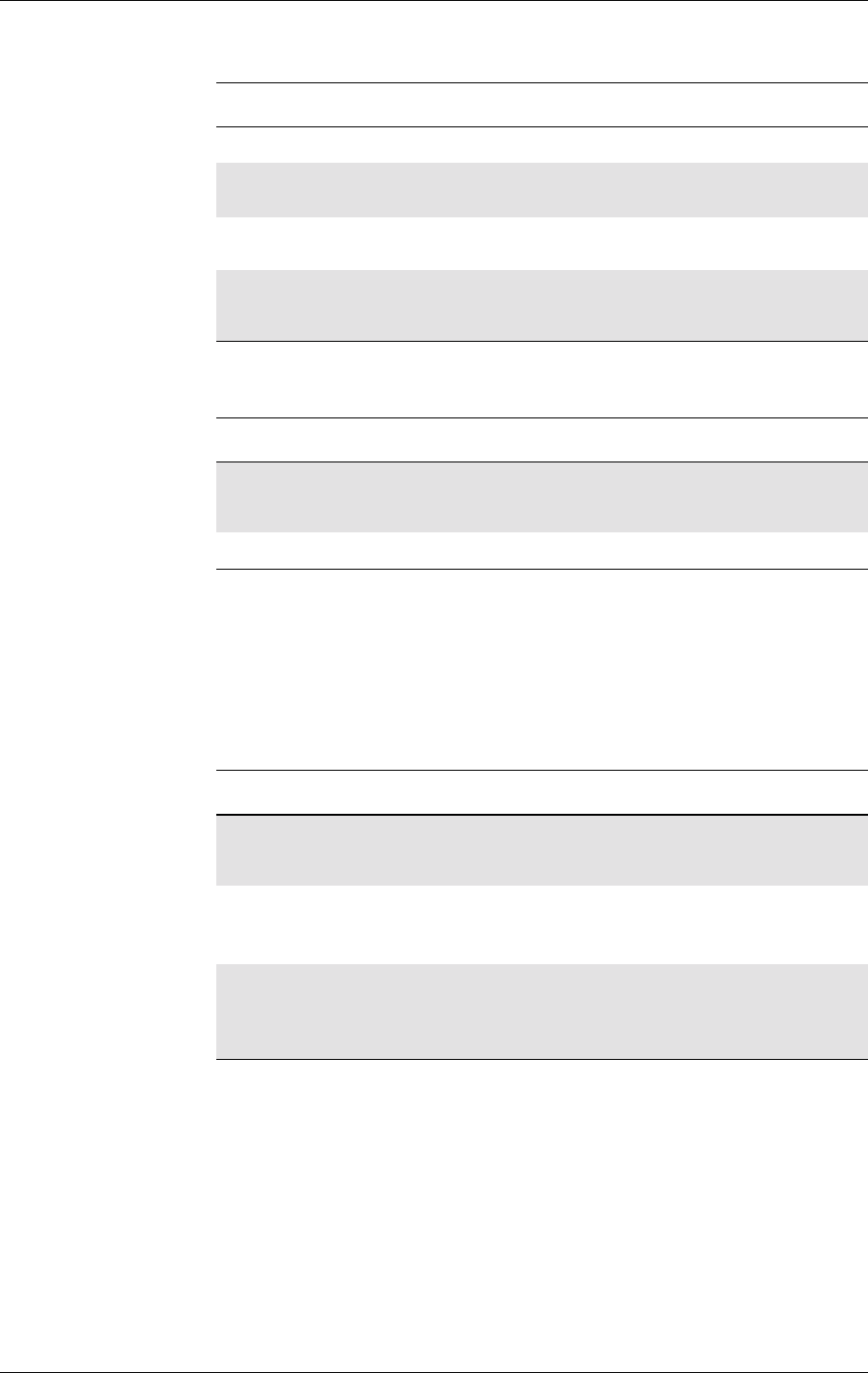
3. CONTROL AND STATUS
109
LZT 123 7263 R1A
3.23 AT+CLAC List all available AT Commands
Causes the ME to return one or more lines of AT commands.
Note! This command only returns the AT commands that are available to the
user.
3.24 AT+CMEE Mobile Equipment Error
Disables or enables the use of result code +CME ERROR: <err> as an
indication of an error relating to the functionality of the ME. When
enabled, ME related errors cause +CME ERROR: <err> final result
code instead of the regular ERROR final result code. ERROR is
returned normally when error is related to syntax, invalid parameters, or
TA functionality.
“call” Call in progress (0-1)
“vox” Transmit activated by voice activity (0-1).
Not supported
“roam” Roaming indicator (0-1)
(Home net status, 0 = Home Net)
“sms full” A short message memory storage in the MT has
become full (1), or memory locations are
available(0);i.e.therangeis(0-1)
<descr> Description
Command Possible Responses
+CLAC <ATCommand1>[<CR><LF><AT
Command2>[…]]
+CME ERROR: <err>
+CLAC=? +CME ERROR: <err>
Description Command Possible Responses
Request GSM Mobile
Equipment Error
Control
AT+CMEE=[<n>] •OK
•ERROR
Read the command AT+CMEE? • +CMEE: <n>
•OK
•ERROR
Show if the command
is supported AT+CMEE=? • +CMEE: (list of
supported <n>s)
•OK
•ERROR
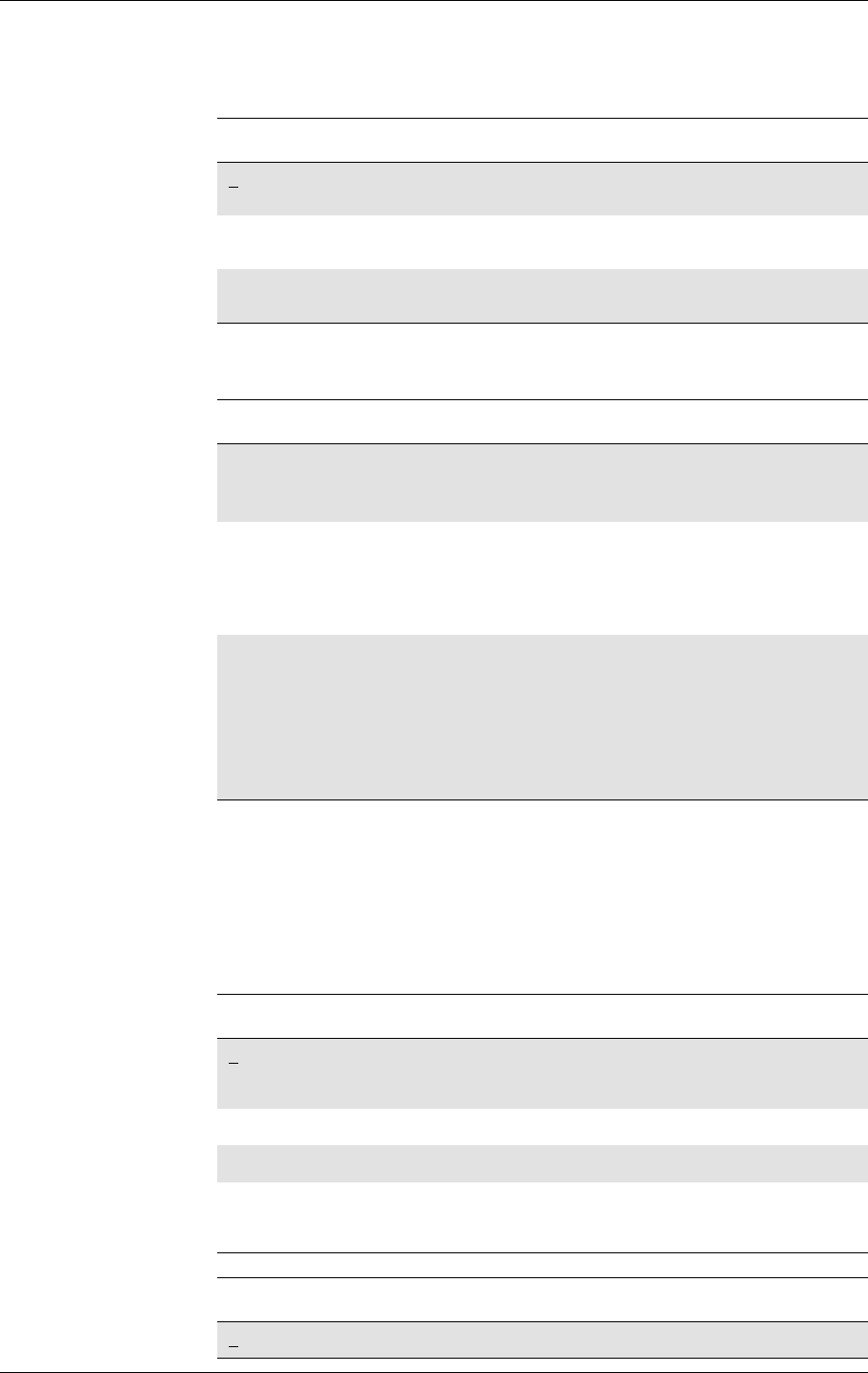
GM47/GM48 INTEGRATOR’S MANUAL
110 LZT 123 7263 R1A
3.25 AT+CMER Mobile Equipment Event Reporting
Enables or disables the sending of unsolicited result codes from ME to
TE in the case of key pressings, display changes, and indicator state
changes. <mode> controls the processing of unsolicited result codes
specified within this command. <bfr> controls the effect on buffered
codes when <mode> 1, 2 or 3 is entered. If the ME does not support
setting, +CME ERROR: <err> is returned.
<n> Description
0Disable +CME ERROR: <err> result code and use ERROR
instead. Default value
1Enable +CME ERROR: <err> result code and use numeric
<err> values (refer next subclause)
2Enable +CME ERROR: <err> result code and use verbose
<err> values (refer next subclause)
Description Command Possible Responses
Set phone
activity status AT+CMER=[<mode>
[,<keyp>[,<disp>
[,<ind>[,<bfr>]]]]]
•+CMEERROR:<err>
•OK
•ERROR
Read the
current setting AT+CMER? •+CMER:
<mode>,<keyp>,<disp>,
<ind>,<bfr>
•OK
•ERROR
Test if the
command is
supported
AT+CMER=? • +CMER: (list of supported
<mode>s), (list of supported
<keyp>s), (list of supported
<disp>s), (list of supported
<ind>s), (list of supported
<bfr>s)
•OK
•ERROR
<mode> Description
0Buffer unsolicited result codes in the TA; if TA result code
buffer is full, codes can be buffered in some other place
or the oldest ones can be discarded
1Not Supported
2Not Supported
3Forward unsolicited result codes directly to the TE; TA-TE
link specific inband technique used to embed result
codes and data when TA is in on-line data mode
<keyp> Description
0No keypad event reporting
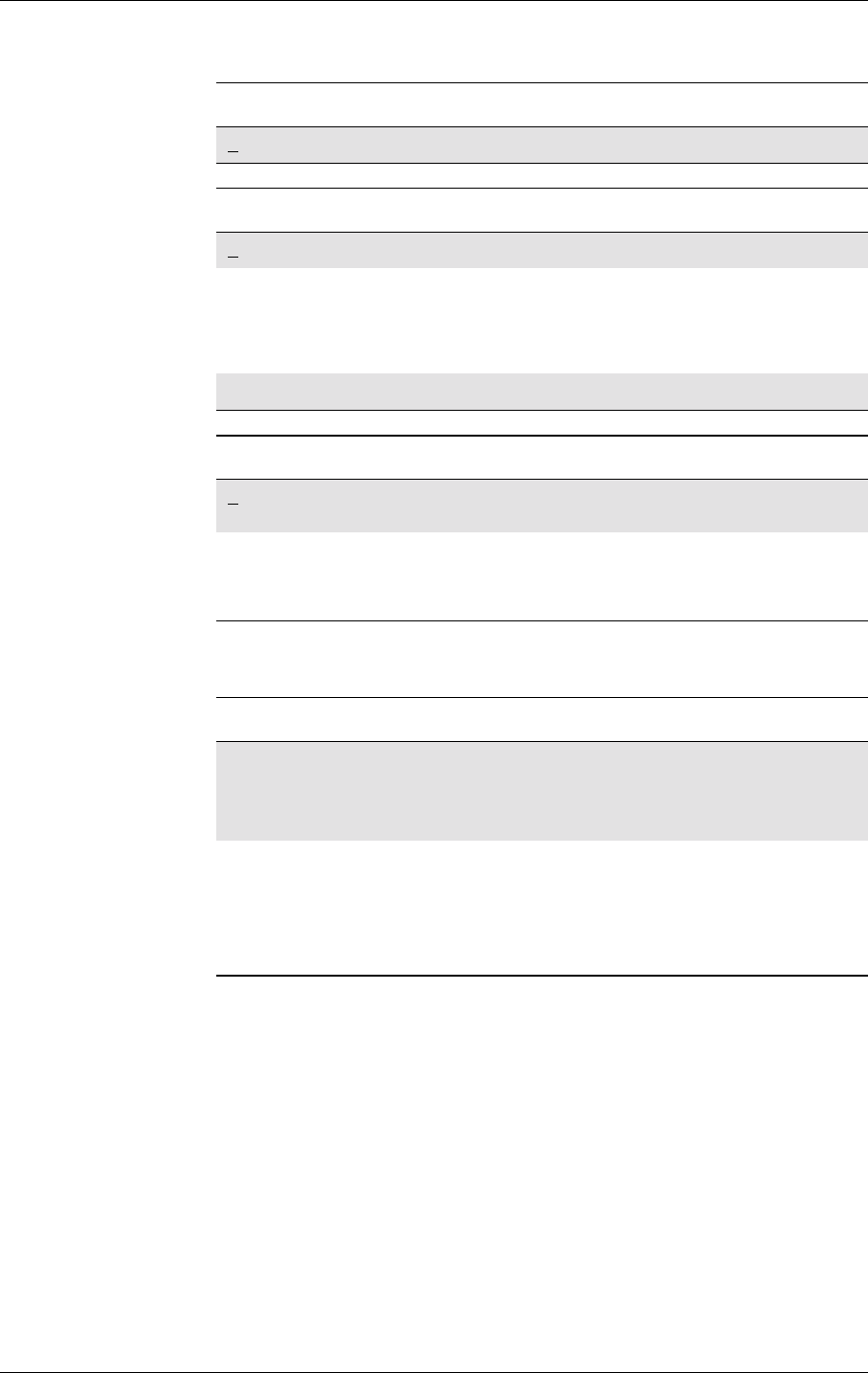
3. CONTROL AND STATUS
111
LZT 123 7263 R1A
3.26 AT+CPAS Phone Activity Status
Returns the activity status <pas> of the ME. It can be used to interrogate
the ME before requesting action from the phone.
When the command is executed without the <mode> argument, the
command returns <pas>-values from 0 to 128 (for supported values se
table 1 below). When, on the other hand, the command is executed with
the <mode> argument set to 1, the command may return Ericsson
specific <pas> values from 129 to 255 (for supported values see the
table below).
<disp> Description
0No display event reporting
<ind> Description
0No indicator event reporting
1Indicator event reporting using result code +CIEV:
<ind>,<value>.<ind> indicates the indicator order number
(asspecifiedfor+CIND)and<value>isthenewvalueof
indicator. Only those indicator events, which are not
caused by +CIND shall be indicated by the TA to the TE
2Not Supported
<bfr> Description
0TA buffer of unsolicited result codes defined within this
command is cleared when <mode> 1...3 is entered
1TA buffer of unsolicited result codes defined within this
command is flushed to the TE when <mode> 1...3 is
entered (OK response shall be given before flushing the
codes). Not Supported
Description Command Possible Responses
Execute Phone Activity
Status AT+CPAS[=<mode>] •+CPAS:<pas>
• +CME ERROR <err>
•OK
•ERROR
Test if the command is
supported AT+CPAS=? •+CPAS:
(list of supported
<pas>s)
• +CME ERROR <err>
•OK
•ERROR
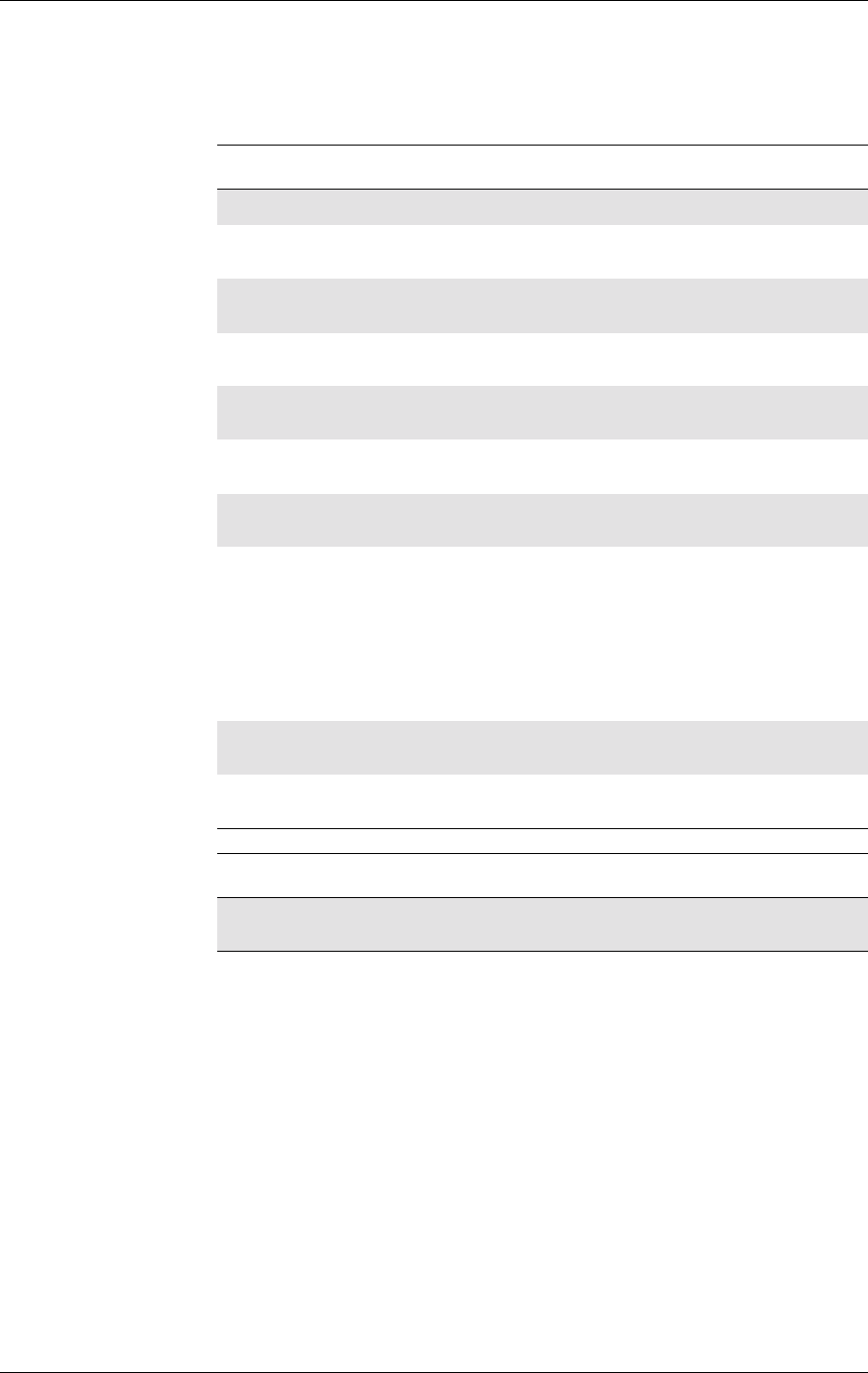
GM47/GM48 INTEGRATOR’S MANUAL
112 LZT 123 7263 R1A
Test command returns values supported by the ME as a compound
value, refer GSM 07.07.
<pas> Description
0Ready (ME allows commands from TA/TE)
1Unavailable (ME does not allow commands from TA/TE).
Not Supported
2Unknown (ME is not guaranteed to respond to
instructions). Not Supported
3Ringing (ME is ready for commands from TA/TE, but the
ringer is active)
4Call in progress (ME is ready for commands from TA/TE, but
acallisinprogress)
5Asleep (ME is unable to process commands from TA/TE
because it is in a low functionality state). Not Supported
6..127 All other values below 128 are reserved by ETS. Not
Supported
129 MMI is in idle state, (operator name/clock/date). This state
is a sub-state to ‘ready’ (0) and has the following
definition:
MMIinIdlestate,thatis,operator,clockanddate(isset)
shown on the display
No conversation or data call in progress
No sub-menus shown on the display
4 Only digits, clear, *, NO and # allowed in this mode, not
changing mode
130 Mobile oriented call in progress. This is a sub-state to ‘call
in progress’
131 Mobile terminated call in progress. This is a sub-state to
‘call in progress’
<mode> Description
1Allows the CPAS to return Ericsson specific <pas> values,
such as 129, 130 and 131
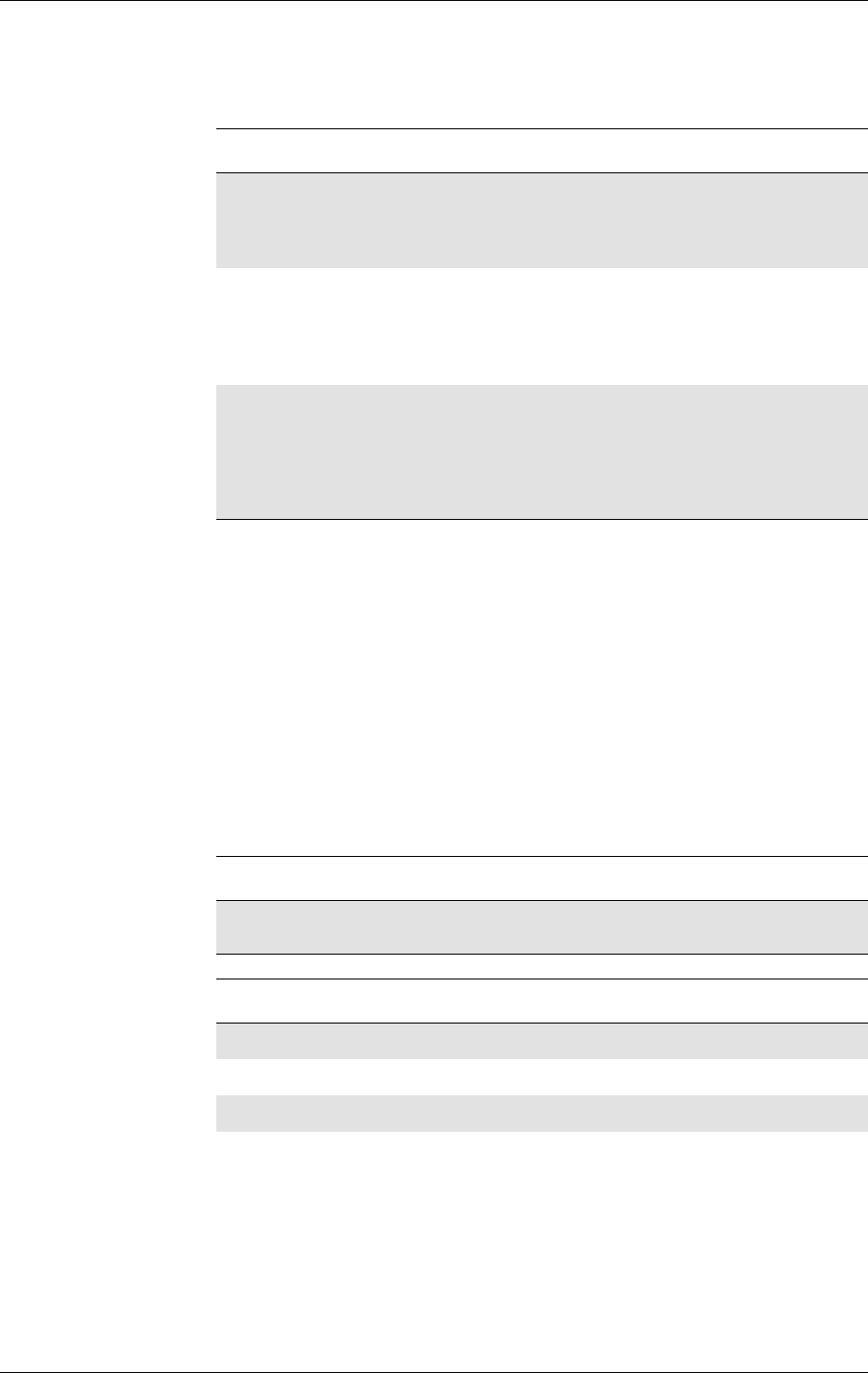
3. CONTROL AND STATUS
113
LZT 123 7263 R1A
3.27 AT+CPIN PIN Control
Sends the password to the ME, which is necessary to make the ME
operational (SIM PIN, SIM PUK or PH-SIM). If the PIN is to be entered
twice, the TA autonomously repeats the PIN. If no PIN request is
pending, no action is taken towards the ME and an error message
(+CME ERROR <err>) is returned to the TE.
If the PIN required is PUK, the second pin is required. This second PIN,
<newpin>, is used to replace the old PIN in the SIM.
Note! Commands which interact with the ME that are accepted when the ME
has a pending request for SIM PIN, SIM PUK or PH-SIM are: +CGMI,
+CGMM, +CGMR, +CGSN, +CFUN, +CMEE +CPIN, L and M.
Description Command Possible Responses
Request PIN Control AT+CPIN=<pin>[,<new
pin>] •+CMEERROR:
<err>
•OK
•ERROR
Show the current
setting AT+CPIN? •+CPIN:<code>
•+CMEERROR:
<err>
•OK
•ERROR
Show if the command
is supported AT+CPIN=? •+CMEERROR:
<err>
• +CPIN: (supported
<code>s)
•OK
•ERROR
<pin>,<newpin> Description
string The range for the SIM PIN and the PH- SIM PIN is 4 - 8
digits. The SIM PUK consists of 8 digits
<code> Description
READY ME is not pending for any password
SIM PIN ME is waiting SIM PIN to be given
SIM PUK ME is waiting SIM PUK to be given
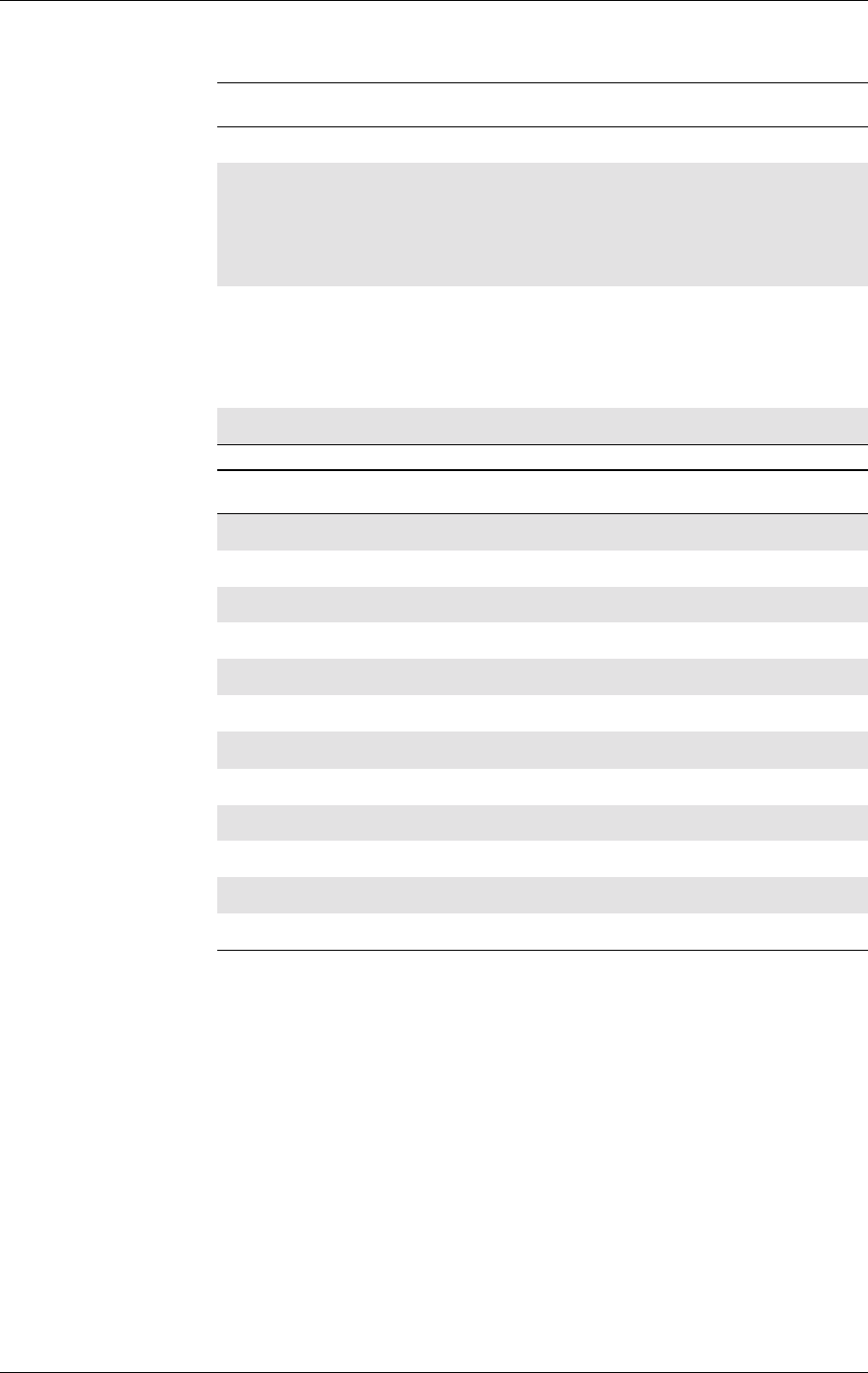
GM47/GM48 INTEGRATOR’S MANUAL
114 LZT 123 7263 R1A
PH-SIM PIN ME is waiting PHone-to-SIM card password to be given
SIM PIN2 ME is waiting SIM PIN2 to be given. This <code> is
recommended to be returned only when the last
executed command resulted in PIN2 authentication
failure (i.e. +CME ERROR: 17); if PIN2 is not entered
correctly after the failure, it is recommended that ME does
not block its operation
SIM PUK2 ME is waiting SIM PUK2 to be given. This <code> is
recommended to be returned only when the last
executed command resulted in PUK2 authentication
failure (i.e. +CME ERROR:18); if PUK2 and new PIN2 are not
entered correctly after the failure, it is recommended that
ME does not block its operation.
BLOCKED The SIM cards is blocked for the user
<err> Description
0Phone failure
5PH-SIM PIN required
10 SIM not inserted
11 SIM PIN required
12 SIM PUK required
13 SIM failure
14 SIM busy
15 SIM wrong
16 Incorrect password
24 Text string too long
25 Invalid characters in text string
100 Unknown
<code> Description
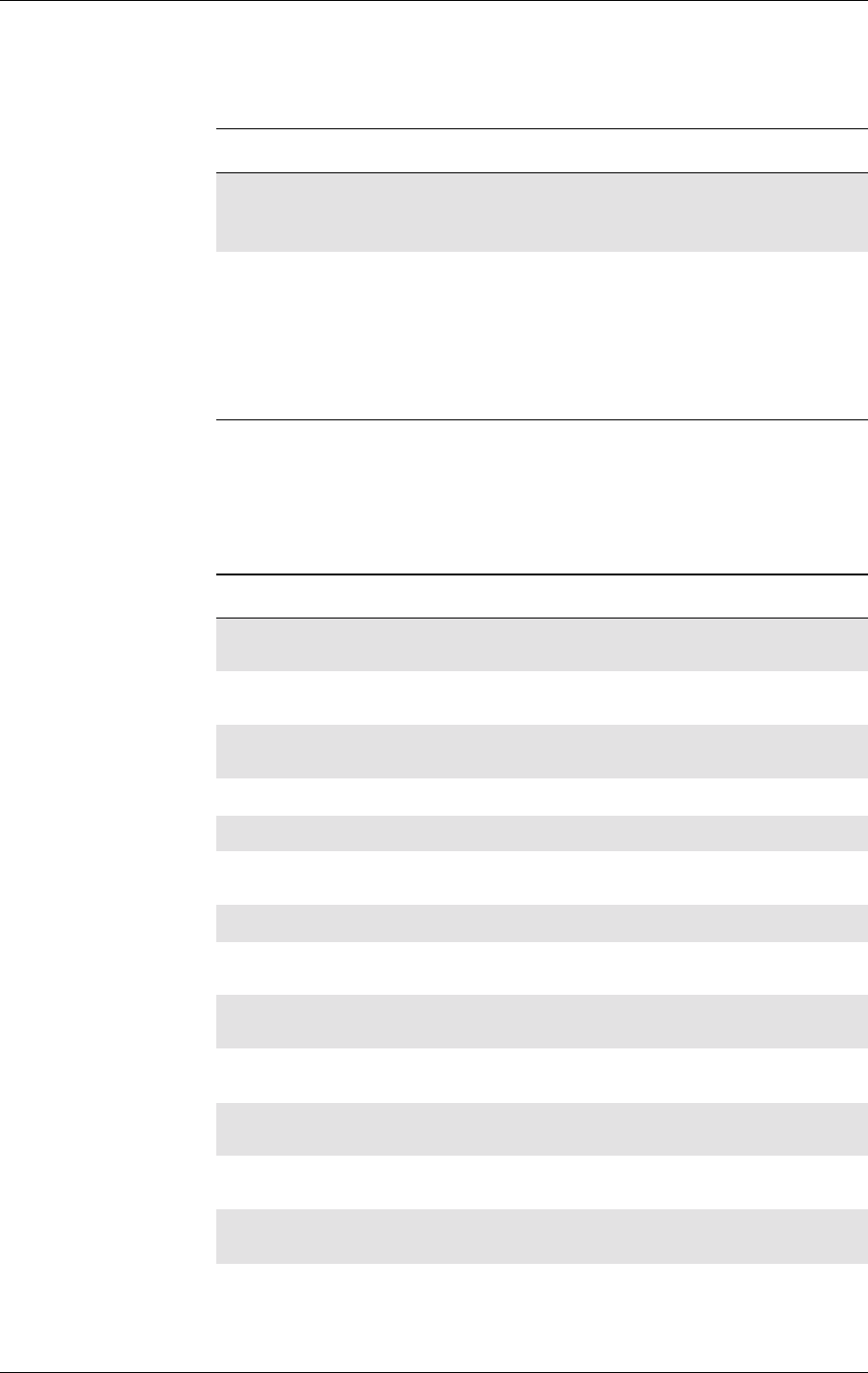
3. CONTROL AND STATUS
115
LZT 123 7263 R1A
3.28 AT+CPWD Change Password
Sets a new password for the facility lock function defined by command
Facility Lock +CLCK.
Test command returns a list of pairs which present the available
facilities and the maximum length of their password.
Description Command Possible Responses
Request facility lock AT+CPWD=<fac>,<old
pwd>,<newpwd> • +CME ERROR <err>
•OK
•ERROR
Show if the command
is supported AT+CPWD=? •+CPWD:
(<fac1>,<pwdlength
1>),
(<fac2>,<pwdlength
2>),…
• +CME ERROR <err>
•OK
•ERROR
<fac > Description
“CS” CNTRL (lock control surface e.g. phone keyboard).
Not supported
“PS” PH-SIM (lock PHone to SIM card) (ME asks password when
other than current SIM card inserted)
“SC” SIM (lock SIM card) (SIM asks password in ME power-up
and when this lock command issued)
“P2” SIM PIN2
“AO” BAOC (Barr All Outgoing Calls) (refer GSM 02.88 clause 1)
“OI” BOIC (Barr Outgoing International Calls) (refer GSM 02.88
clause 1)
“AI” BAIC (Barr All Incoming Calls) (refer GSM 02.88 clause 2)
“IR” BIC-Roam (Bar Incoming Calls when Roaming outside the
home country) (refer GSM 02.88 clause 2)
“OX” BOIC-exHC (Barr Outgoing International Calls except to
Home Country) (refer GSM 02.88 clause 1)
“NT” barr incoming calls from numbers Not stored to TA
memory. Not supported
“NM” barr incoming calls from numbers Not stored to ME
memory. Not supported
“NS” barr incoming calls from numbers Not stored to SIM
memory. Not supported
“NA” barr incoming calls from numbers Not stored in Any
memory. Not supported
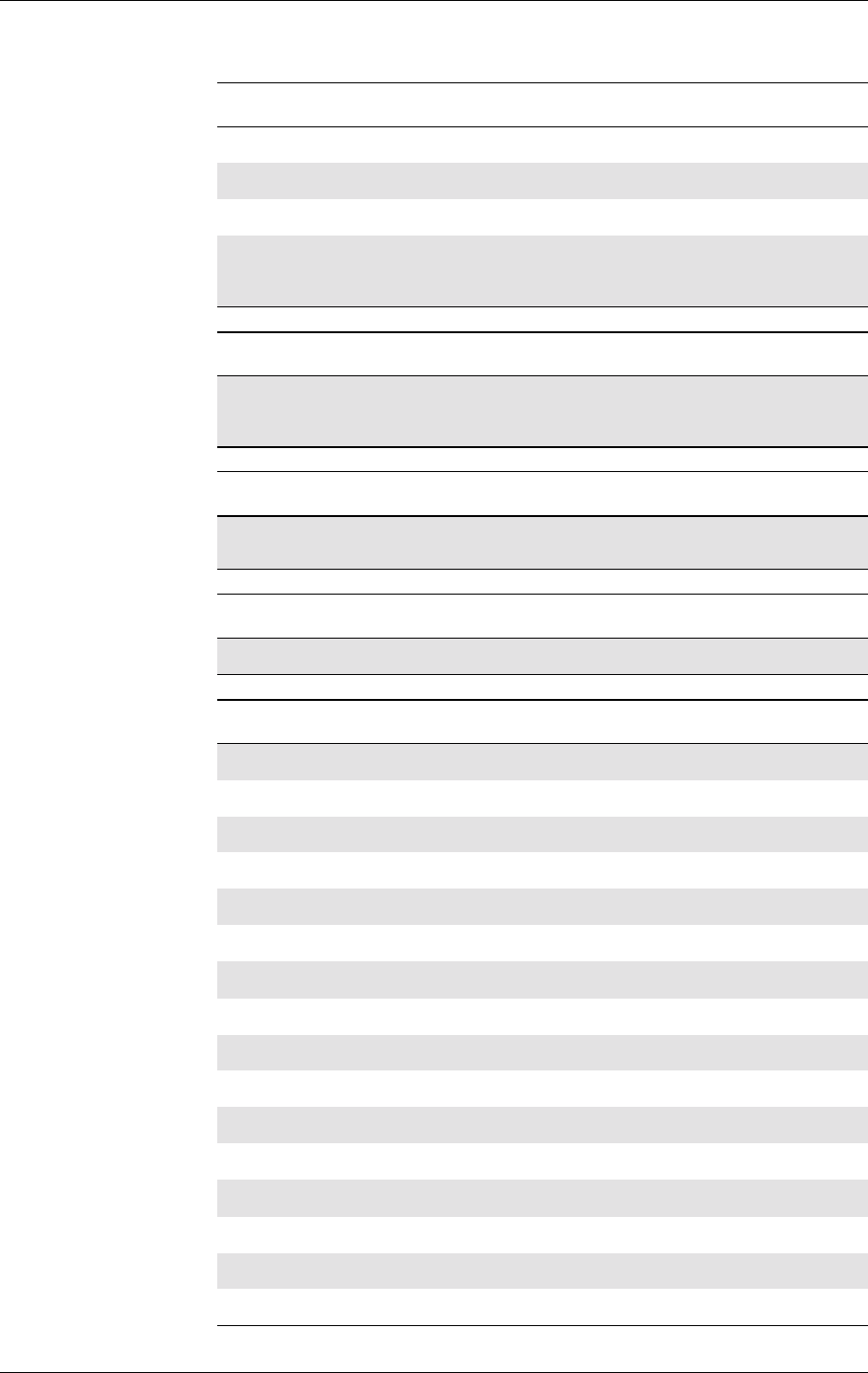
GM47/GM48 INTEGRATOR’S MANUAL
116 LZT 123 7263 R1A
“AB” All Barring services (refer GSM 02.30)
“AG” All outGoing barring services (refer GSM 02.30)
“AC” All inComing barring services (refer GSM 02.30)
“FD” SIM fixed dialling memory feature. If PIN2 authentication
has not been carried out during the current session, PIN2 is
required as <passwd>). Not supported
<oldpwd> Description
string type <oldpwd> shall be the same as password specified for the
facility from the ME user interface or with the change
password command, +CPWD
<newpwd> Description
string type <newpwd> is the new password, maximum length of
password can be determined with <pwdlength>
<pwdlength> Description
Integer type Maximum length of the password for the facility
<err> Description
0Phone failure
3Operation not allowed
5PH-SIM PIN required
10 SIM not inserted
11 SIM PIN required
12 SIM PUK required
13 SIM failure
14 SIM busy
15 SIM wrong
16 Incorrect password
17 SIM PIN2 required
18 SIM PUK2 required
23 Text string too long
24 Invalid characters in text string
100 Unknown
101..255 Reserved by ETS
<fac > Description
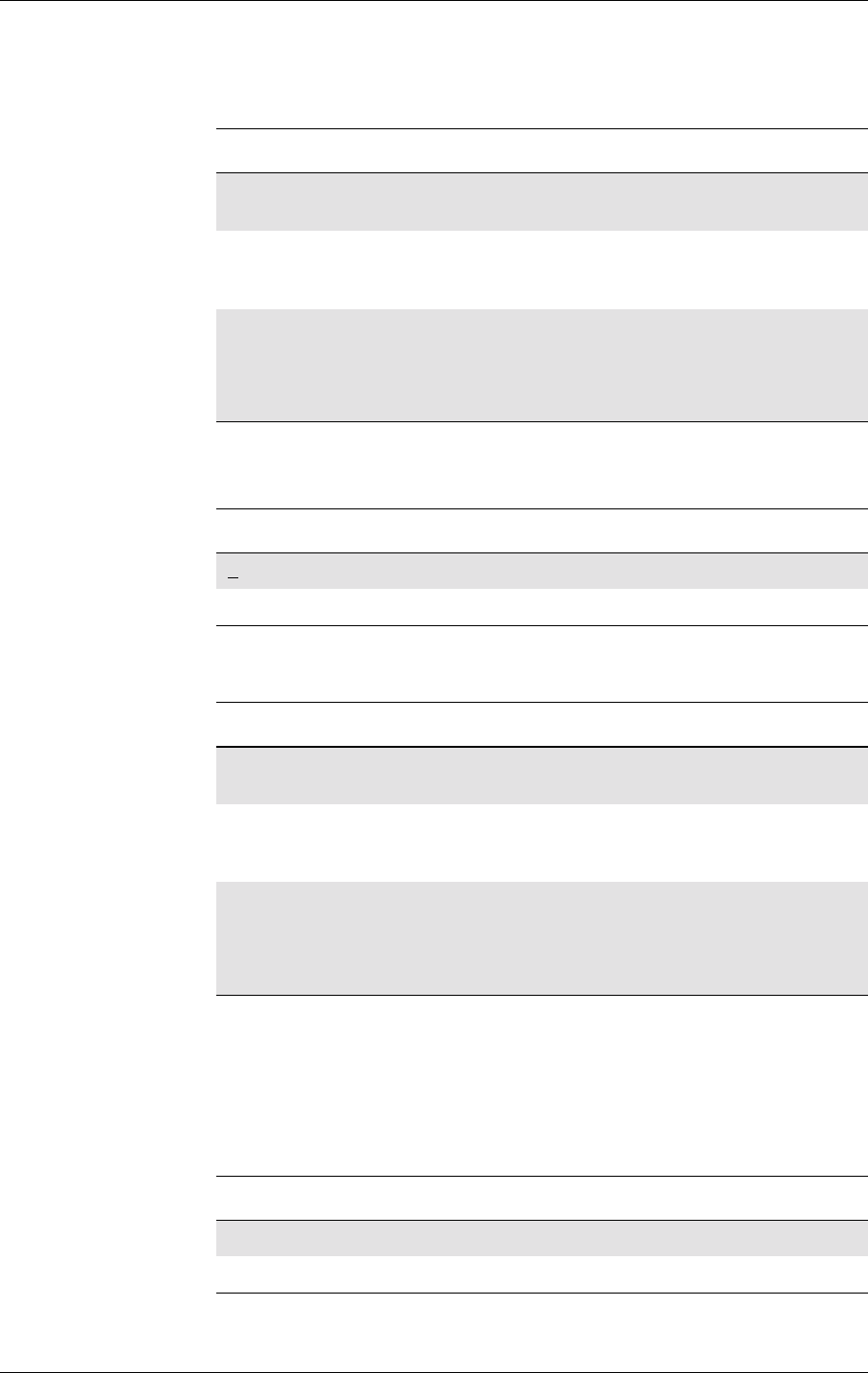
3. CONTROL AND STATUS
117
LZT 123 7263 R1A
3.29 AT+CR Service Reporting Control
Enables or disables display of intermediate bearer capability reports
during the handshake phase.
3.30 AT+CRC Cellular Result Code
Controls whether or not the extended format of incoming call indication
is used. When enabled, an incoming call is indicated to the TE with
unsolicited result code +CRING: <type> instead of the normal RING.
Test command returns values supported by the TA as a compound
value.
Description Command Possible Responses
Set Service Reporting
Control AT+CR=<mode> •OK
•ERROR
Read current setting AT+CR? •+CR:<mode>
•OK
•ERROR
Test if the command is
supported AT+CR=? •+CR:(listof
supported
<mode>s)
•OK
•ERROR
<mode> Description
0Disable reporting. Default value
1Enable reporting
Description Command Possible Responses
Set Cellular Result
Code option AT+CRC=[<mode>] •OK
•ERROR
Show the current
setting AT+CRC? •+CRC:<mode>
•OK
•ERROR
Show if the command
is supported AT+CRC=? •+CRC:(listof
supported
<mode>s)
•OK
•ERROR
<mode> Description
0Disables extended format
1Enables extended format
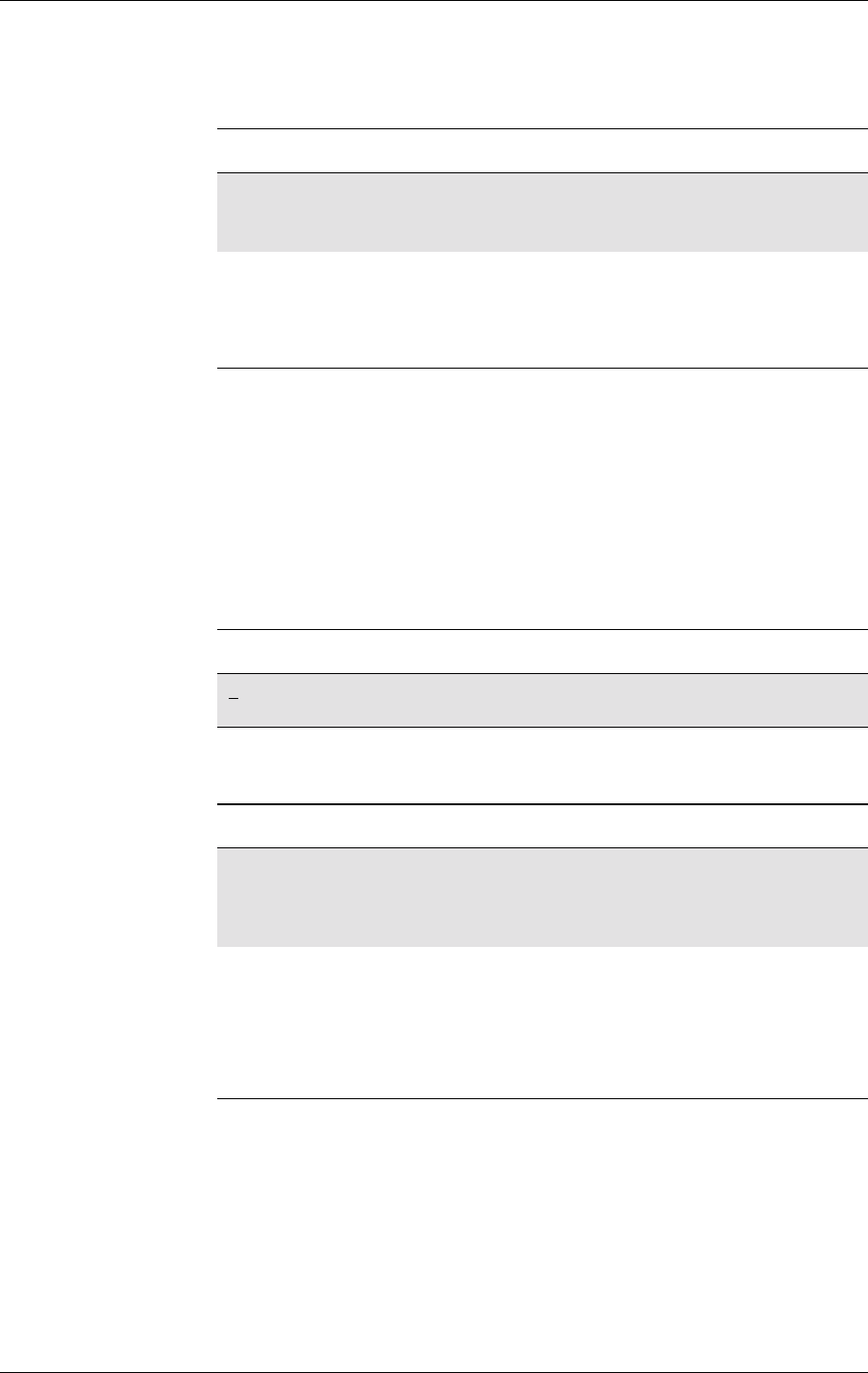
GM47/GM48 INTEGRATOR’S MANUAL
118 LZT 123 7263 R1A
3.31 AT+CSAS Save Settings
Saves active message service settings to a non-volatile memory. A TA
can contain several settings profiles. Settings specified in commands
Service Centre Address +CSCA, Set Message Parameters +CSMP and
Select Cell Broadcast Message Types +CSCB (if implemented) are
saved. Certain settings may not be supported by the storage (e.g. SIM
SMS parameters) and therefore can not be saved.
Test command shall display the supported profile numbers for reading
and writing of settings.
3.32 AT+CSQ Signal Strength
Returns the received signal strength indication <rssi> and channel bit
error rate <ber> from the ME. Test command returns values supported
by the TA as compound values.
Description Command Possible Responses
Save Settings AT+CSAS[=<profile>] • +CMS ERROR: <err>
•OK
•ERROR
Get available
profiles AT+CSAS=? • +CSAS: (list of supported
<profile>s)
• +CMS ERROR: <err>
•OK
•ERROR
<profile> Description
0..255 Manufacturer specific profile number where settings are
to be stored. Default is “0”.
Description Command Possible Responses
Execute Signal
Strength AT+CSQ •+CSQ:<rssi>,<ber>
• +CME ERROR <err>
•OK
•ERROR
Test if the command is
supported AT+CSQ=? •+CSQ:(listof
supported
<rssi>s),(list of
supported <ber>s)
• +CME ERROR <err>
•OK
•ERROR
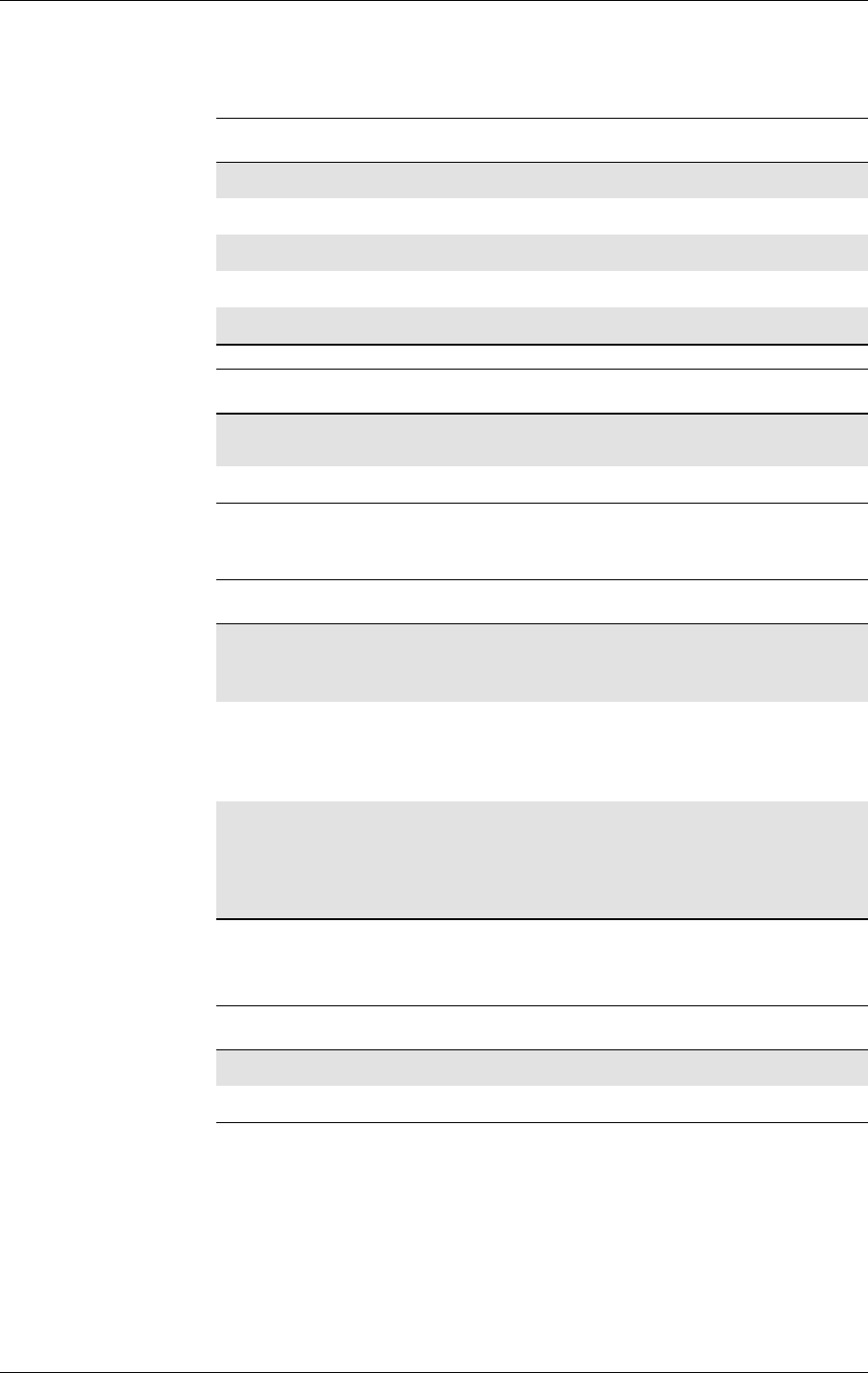
3. CONTROL AND STATUS
119
LZT 123 7263 R1A
3.33 AT+CTZU Automatic Time Zone Update
Enables and disables the automatic time zone update via NITZ. If
setting fails in an ME error, +CME ERROR <err> is returned.
<rssi> Description
0-113dBm or less
1-111dBm
2..30 -109… –53dBm
31 -51dBm or greater
99 Notknownornotdetectable
<ber> Description
0..7 As RXQUAL values in the table in GSM 05.08 [0] subclause
8.2.4
99 Notknownornotdetectable
Description Command Possible Responses
Enable and disable
automatic time zone
update via NITZ
AT+CTZU=<onoff> •+CMEERROR:<err>
•OK
•ERROR
Read current setting AT+CTZU? •+CTZU:<onoff>
•+CMEERROR:<err>
•OK
•ERROR
Show if the command
is supported AT+CTZU=? •+CTZU:(listof
supported <onoff>s)
•+CMEERROR:<err>
•OK
•ERROR
<onoff> Description
0The automatic time zone update is disabled (off)
1The automatic time zone update is enabled (on)

GM47/GM48 INTEGRATOR’S MANUAL
120 LZT 123 7263 R1A
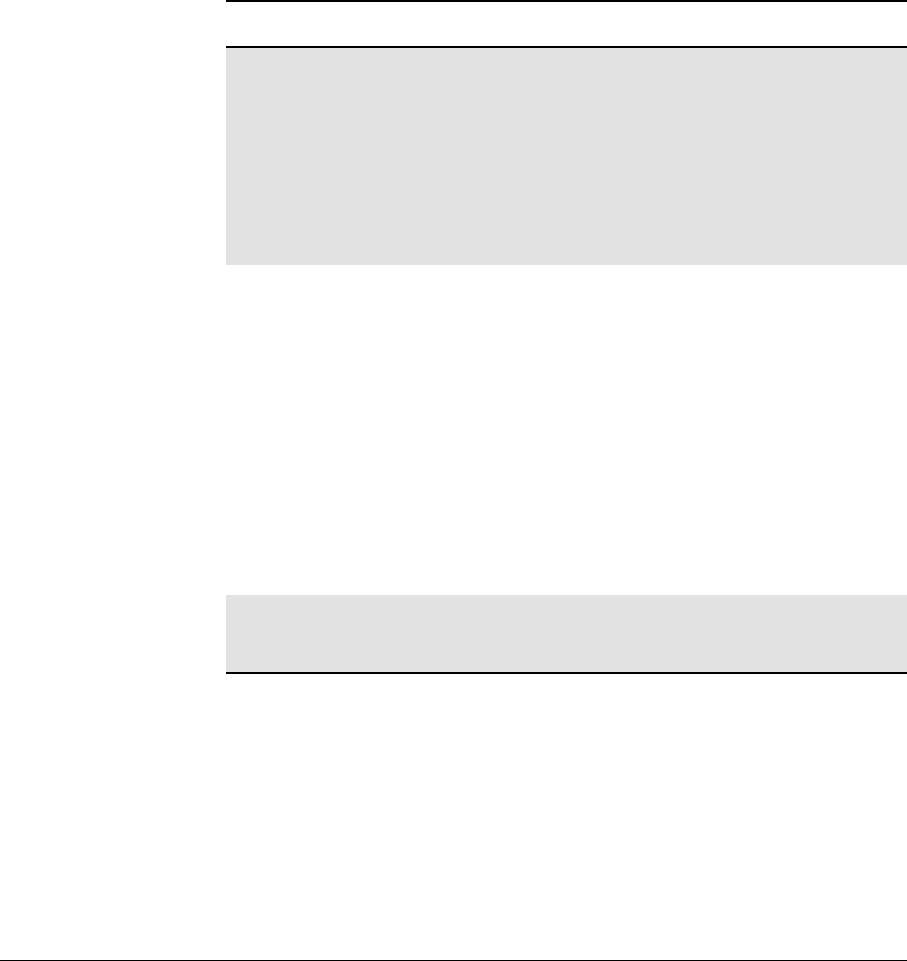
121
LZT 123 7263 R1A
4. Audio
Note! *E2EAMS and *E2APR are new commands that replace the
funtionality offered by the *EALR, *EAMS, *EARS and *ELAM
commands. Use the new commands in new applications. The old
commands are included for compatibility.
4.1 AT*E2EAMS Ericsson M2M Audio Profile Modification
This command allows the modification and configuration of the current
audio profile. An audio profile is a set of data which uniquely defines
the way in which the audio paths, gains, DSP algorithms and switch
setting are configured. There are several audio profiles available in
non-volatile storage, and the current profile can be modified by use of
the AT*E2APR command.
The AT*E2EAMS command allows the user to:
Description Command Possible Responses
Request
operation
with audio
profile
AT*E2EAMS= <op>[,<TxPGA>,
<RxPGA>,<SideToneGain>,
<AuxInGain>,<MicInGain>,
<TxAGC>,<Volume>,
<MaxVolume>,<MicPath>,
<SpkPath>,<TxPCM>,
<RxPCM>,<HFAlgorithm>,
<LocalAudio>,<TxGainLow>,
<MicVolt2V>,<SideTone>,
<NoiseRed>,<EchoCancel>,
<AnalogRing>,][,<val>]]
• ERROR
•OK
Display set
profile AT*E2EAMS? • *E2EAMS: <TxPGA>,
<RxPGA>,
<SideToneGain>,
<AuxInGain>,
<MicInGain>,
<TxAGC>,<Volume>,
<MaxVolume>,
<MicPath>,<SpkPath>,
<TxPCM>,<RxPCM>,
<HFAlgorithm>,
<LocalAudio>,
<TxGainLow>,
<MicVolt2V>,
<SideTone>,<NoiseRed>,
<EchoCancel>,
<AnalogRing>
• ERROR
Show if the
command
is supported
AT*E2EAMS=? • *E2EAMS:
(list of supported <op>s)
• ERROR
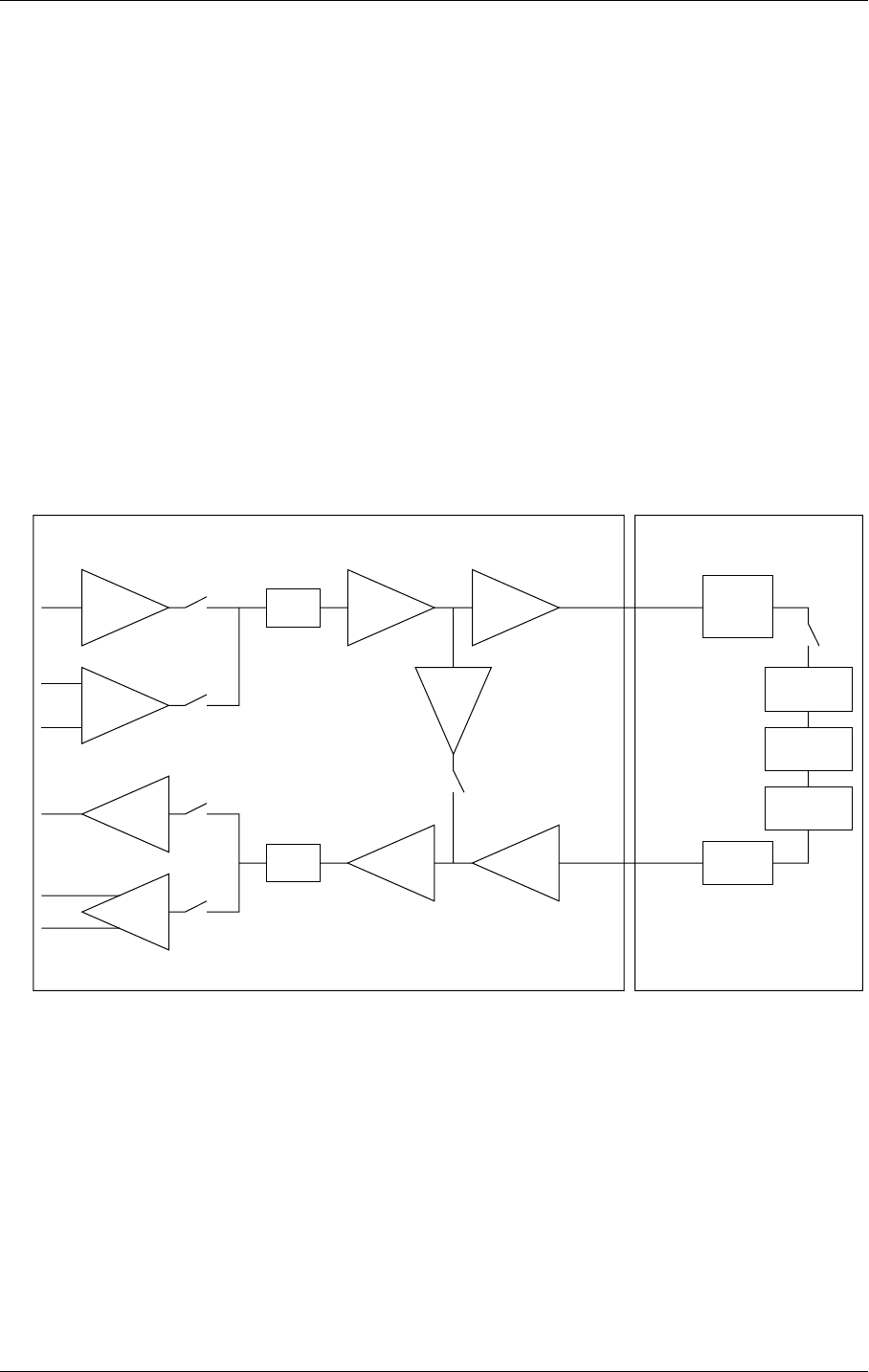
GM47/GM48 INTEGRATOR’S MANUAL
122 LZT 123 7263 R1A
• configure the whole profile, specifying each audio parameter in a
comma separated list;
• set a single parameter, given by its parameter number;
• save the current profile to non-volatile memory under the current
profile number (see AT*E2APR).
The current audio settings can also be displayed by running the read
command AT*E2EAMS?
Default audio settings are given in AT*E2APR.
Abortability:
This command may not be aborted.
Refer to the diagram below to understand which parts of the audio
circuit are affected by the various parameters.
Figure 4.1 Audio diagram of the CODEC
AuxInGain
MicInGain
SideTone
Gain
Aux Amp
Ear Amp
TxPGA TxGainLow
RxPGA Volume
TxPCM
RxPCM
Speech
decoder
F/R
EchoCancel
Handsfree
NoiseRed
Encoder
F/R
ATMS
MICP
MICN
BEARP
BEARN
PCMOUT
PCMIN
PCMULD
PCMDLD
DSPCODEC
SideTone
switch
MicPath
switches
SpkPath
switches

4. AUDIO
123
LZT 123 7263 R1A
<op> Description
0Configure current profile (<pr1> to <pr21>)
1Set <TxPGA>
2Set <RxPGA>
3Set <SideToneGain>
4Set <AuxInGain>
5Set <MicInGain>
6Set <TxAGC>
7Set <Volume>
8Set <MaxVolume>
9Set <MicPath>
10 Set <SpkPath>
11 Set <TxPCM>
12 Set <RxPCM>
13 Set <HFAlgorithm>
14 Set <LocalAudio>
15 Set <TxGainLow>
16 Set <MicVolt2V>
17 Set <SideTone>
18 Set <NoiseRed>
19 Set <EchoCancel>
20 Set <AnalogRing>
255 Save current profile to non-volatile storage at current
profile number
<TxPGA>,
<RxPGA> Description
0-5dB PGA gain
1-2.5dB PGA gain
20dB PGA gain
32.5dB PGA gain
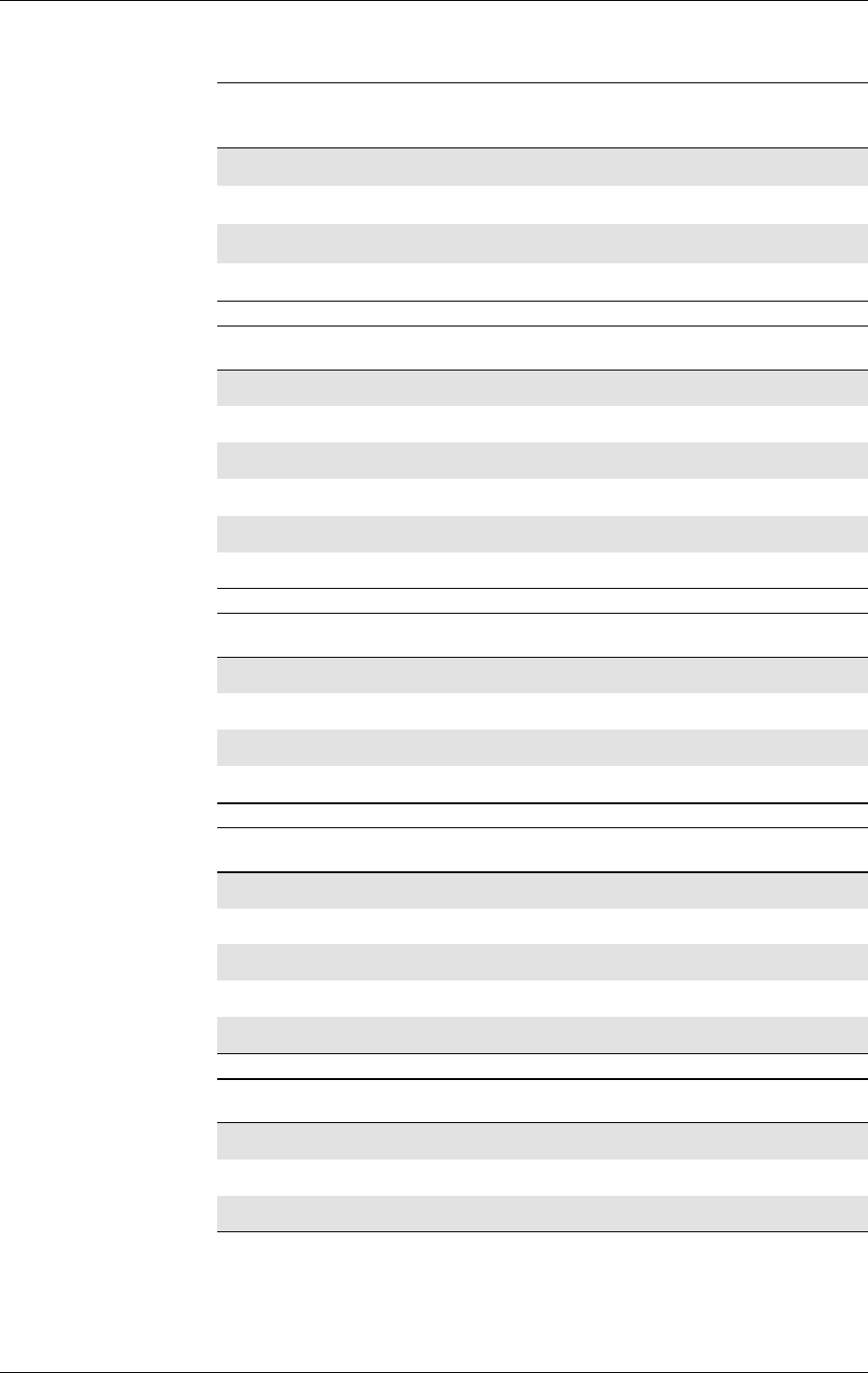
GM47/GM48 INTEGRATOR’S MANUAL
124 LZT 123 7263 R1A
45dB PGA gain
57.5dB PGA gain
6-7.5dB PGA gain
7-10dB PGA gain
<SideToneGain> Description
010dB
113dB
216dB
319dB
422dB
525dB
<AuxInputGain> Description
0MUTE
113dB
234dB
346dB
<MicInputGain> Description
0MUTE
113dB
225dB
334dB
446dB
<TxAGCGain> Description
00dB
13dB
26dB
<TxPGA>,
<RxPGA> Description
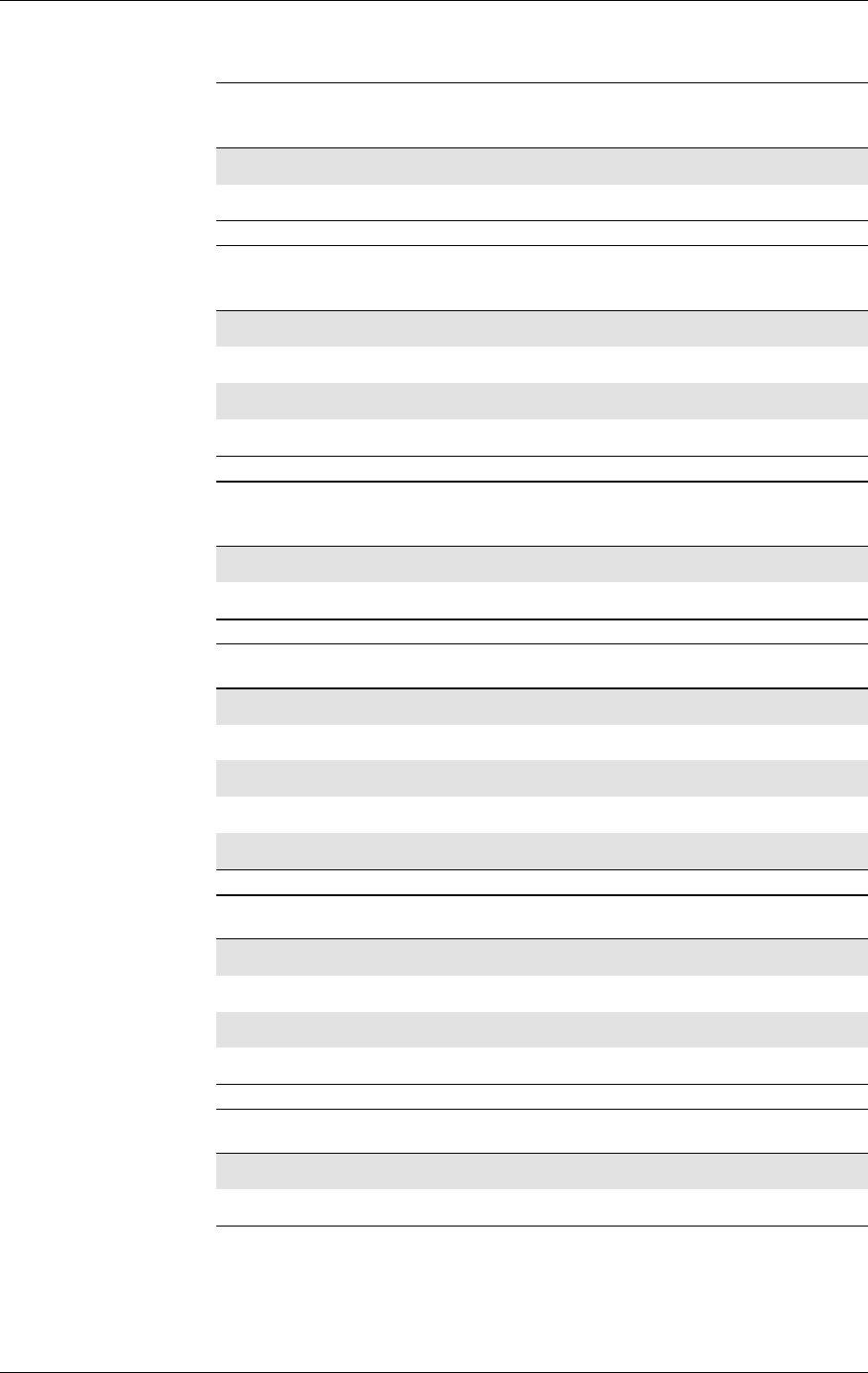
4. AUDIO
125
LZT 123 7263 R1A
<Volume>,
<MaxVolume> Description
0MUTE
1-9 Volume levels 1-9
<MicPath>,
<SpkPath> Description
0OFF
1MUTE
2Internal (using microphone/speaker)
3External (using ATMS/AFMS)
<TxPCM>,
<RxPCM> Description
013bit PCM
116bit PCM
<HFAlgorithm> Description
0No handsfree
1Advanced handsfree
2Switching handsfree
3No handsfree handheld
4No handsfree external
<LocalAudio> Description
0Local audio mode off
1Local audio microphone/no speaker
2Local audio no microphone/speaker
3Local audio microphone/speaker
<TxGainLow> Description
0Tx gain normal
1Tx gain -7dB

GM47/GM48 INTEGRATOR’S MANUAL
126 LZT 123 7263 R1A
Examples
AT*E2EAMS=?
*E2EAMS=(0-21,255)
OK
Current default profile is 0:
AT*E2EAMS?
*E2EAMS: 2,2,3,2,3,2,5,9,3,3,0,1,0,0,0,1,1,1,1,1,1
OK
Sets current profile with these settings:
AT*E2EAMS=0,2,1,2,0,0,2,5,9,2,2,0,1,0,0,0,1,1,0,0,1,1
OK
Sets TxPGA gain to 0dB:
AT*E2EAMS=1,2
OK
Turns analog ringing off:
AT*E2EAMS=20,0
OK
Save current profile to currently loaded profile in non-volatile memory:
AT*E2EAMS=255
OK
<MicVolt2V> Description
0Microphone voltage at 2.5V
1Microphone voltage at 2V
<SideTone>,
<NoiseRed>,
<EchoCancel>,
<AnalogRing>
Description
0OFF
1ON
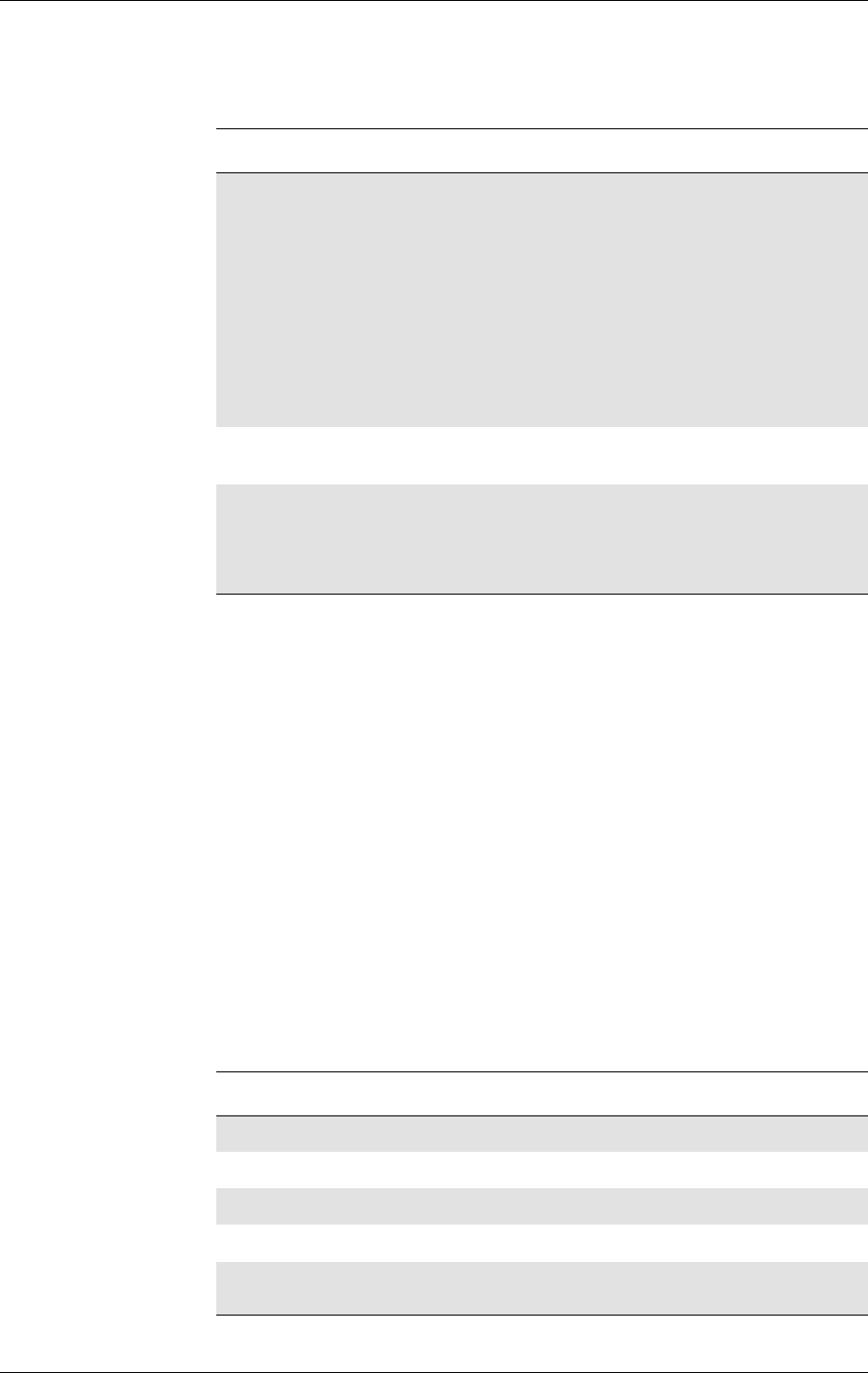
4. AUDIO
127
LZT 123 7263 R1A
4.2 AT*E2APR M2M Audio Profile Manipulation
This command allows the maniuplation and storage of the audio
“profiles” stored in the MS. The requirement for the 2nd and 3rd
parameters depend on the operation being carried out.
Using the command you can:
• Set one of the three audio profiles 0, 1 or 2 as the current profile.
This will load the profile's settings from NVM and implement them.
• Read one of the audio profiles. The current settings for the profile
number defined will be displayed.
• Copy all parameters from one profile into another.
• Reset any of the profiles. This will reinstate the factory defaults for
the profile:
- 0 is the handset profile,
- 1 is the portable handsfree profile,
- 2 is the car kit profile.
• Set a profile as the default profile on next power up.
Description Command Possible Responses
Request operation
with audio profile AT*E2APR=
<op>[,<prnum1>
[,<prnum2>]]
• ERROR
•OK
• *E2APR: <TxPGA>,<RxPGA>,
<SideToneGain>,<AuxInGain>,
<MicInGain>,<TxAGC>,
<Volume>,<MaxVolume>,
<MicPath>,<SpkPath>,
<TxPCM>,<RxPCM>,
<HFAlgorithm>,<LocalAudio>,
<TxGainLow>,<MicVolt2V>,
<SideTone>,<NoiseRed>,
<EchoCancel>,<AnalogRing>
•OK
Display currently
set profile AT*E2APR? • *E2APR: current <prnum>
•ERROR
Shows if the
command is
supported
AT*E2APR=? •*E2APR:(listofsupported
<op>s), (list of supported
<prnum1>s), (list of supported
<prnum2>s)
• ERROR
<op> Description
0Set profile <prnum1> to set as current
1Read profile <prnum1> settings
2Copy profile <prnum1> to <prnum2>
3Reset profile <prnum1> to factory default
4Set default profile as <prnum1>. Will store this as defautl
profile in NVM, and use it as default from next power on

GM47/GM48 INTEGRATOR’S MANUAL
128 LZT 123 7263 R1A
Examples
AT*E2APR=?
*E2APR= (0-4),(0-2),(0-2)
OK
Current default profile is profile 0:
AT*E2APR?
*E2APR: 0
OK
Set audio profile now used to profile 1:
AT*E2APR=0,1
OK
Audio profile 1 settings:
AT*E2APR=1,1
*E2APR: 0,0,0,0,0,0,0,0,0,0,0,0,0,0,0,0,0,0,0
OK
Copy audio profile 1 to audio profile 2:
AT*E2APR=2,1,2
OK
Reset audio profile 1 with factory default - this also resets the current
audio paths to the new profile as 1 is currently used:
AT*E2APR=3,1
OK
Sets profile number 1 as the default when module is powered on:
AT*E2APR=4,1
OK
<prnum1>,
<prnum2> Description
0Profile 0 (Factory profile set for handset). Default
1Profile 1 (Factory profile set for portable handsfree)
2Profile 2 (Factory profile set for car kit)
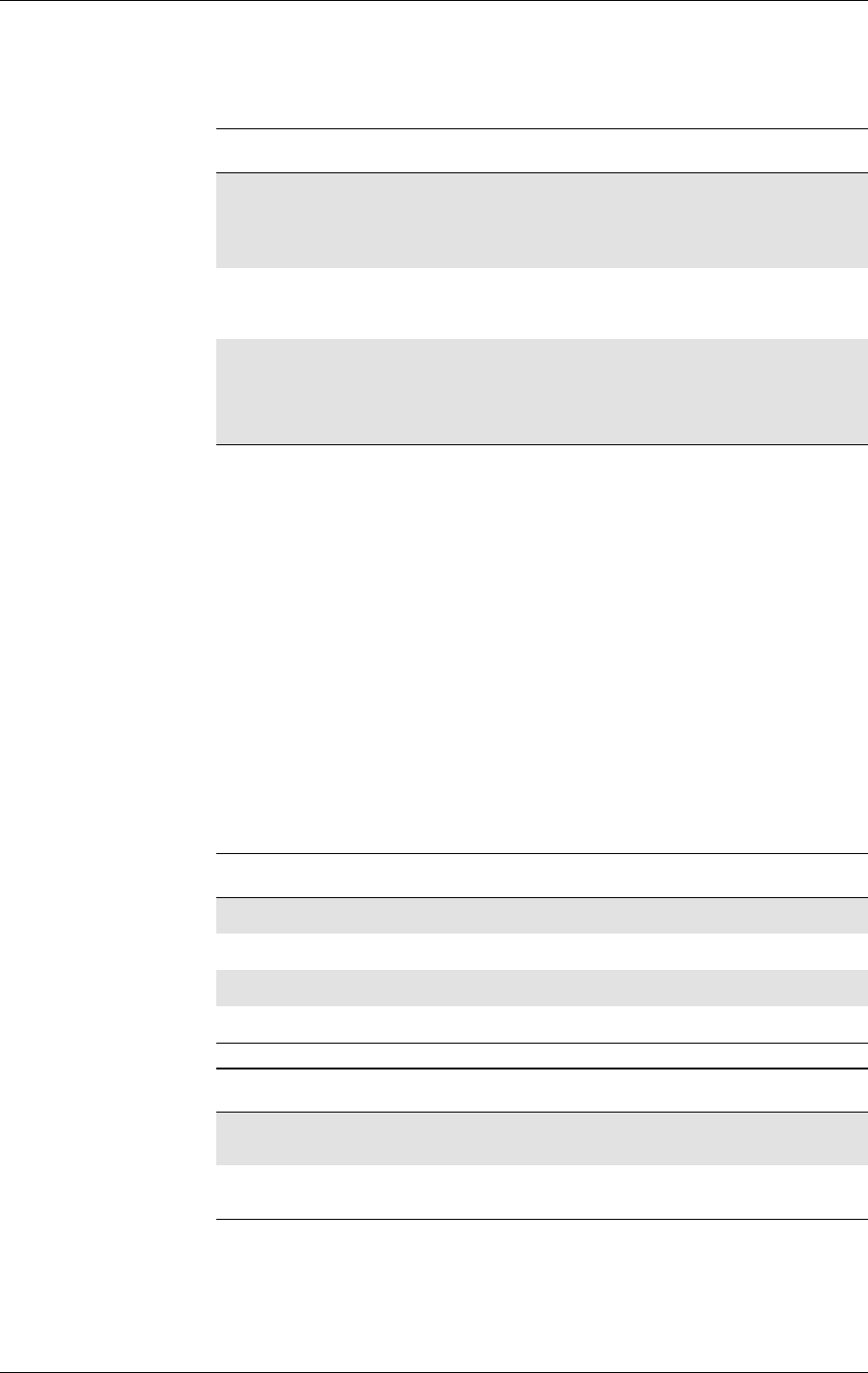
4. AUDIO
129
LZT 123 7263 R1A
4.3 AT*EALR Ericsson Audio Line Request
The AT*EALR command is used by accessories to request the ATMS
and AFMS. The command includes two parameters; <mode> and
<activation>. The <mode> parameter sets which audio lines are
requested and the <activation> parameter is used to indicate if the
accessory wants to be activated directly or not. Direct activation means
the accessory gets the audio lines immediately if a call is established
from the MS (i.e. keypad, voice recognition). If the accessory doesn't
request direct activation, it has to indicate to the MS when it wants to
get the audio lines (e.g. using AT commands).
The <audio status> parameter is used to demand the audio lines.
This command enables the unsolicited result code
*EALV:<mode>,<activation>,<resp> which is sent to the application
when the module wants it to change audio state.
Description Command Possible Responses
Request the audio lines
(ATMS,AFMS) AT*EALR=<mode>[,<ac
tivation>[,<aud_status>
]]
•*EALR:<mode>,
<activation>,<resp>
•OK
•ERROR
Show the current
setting AT*EALR? *EALR:
<mode>,<activation>,
<resp>
Show list of supported
parameters AT*EALR=? *EALR:(list of supported
<mode>s,
<activation>s and
<aud_status>s
parameters)
<mode > Description
0No request for ATMS or AFMS
1Request ATMS and not AFMS
2RequestAFMSandnotATMS
3Request ATMS and AFMS
<activation > Description
0Not direct activated audio accessory (e.g. cordless
portable hands free)
1Direct activated audio accessory (e.g. vehicle hands
free)
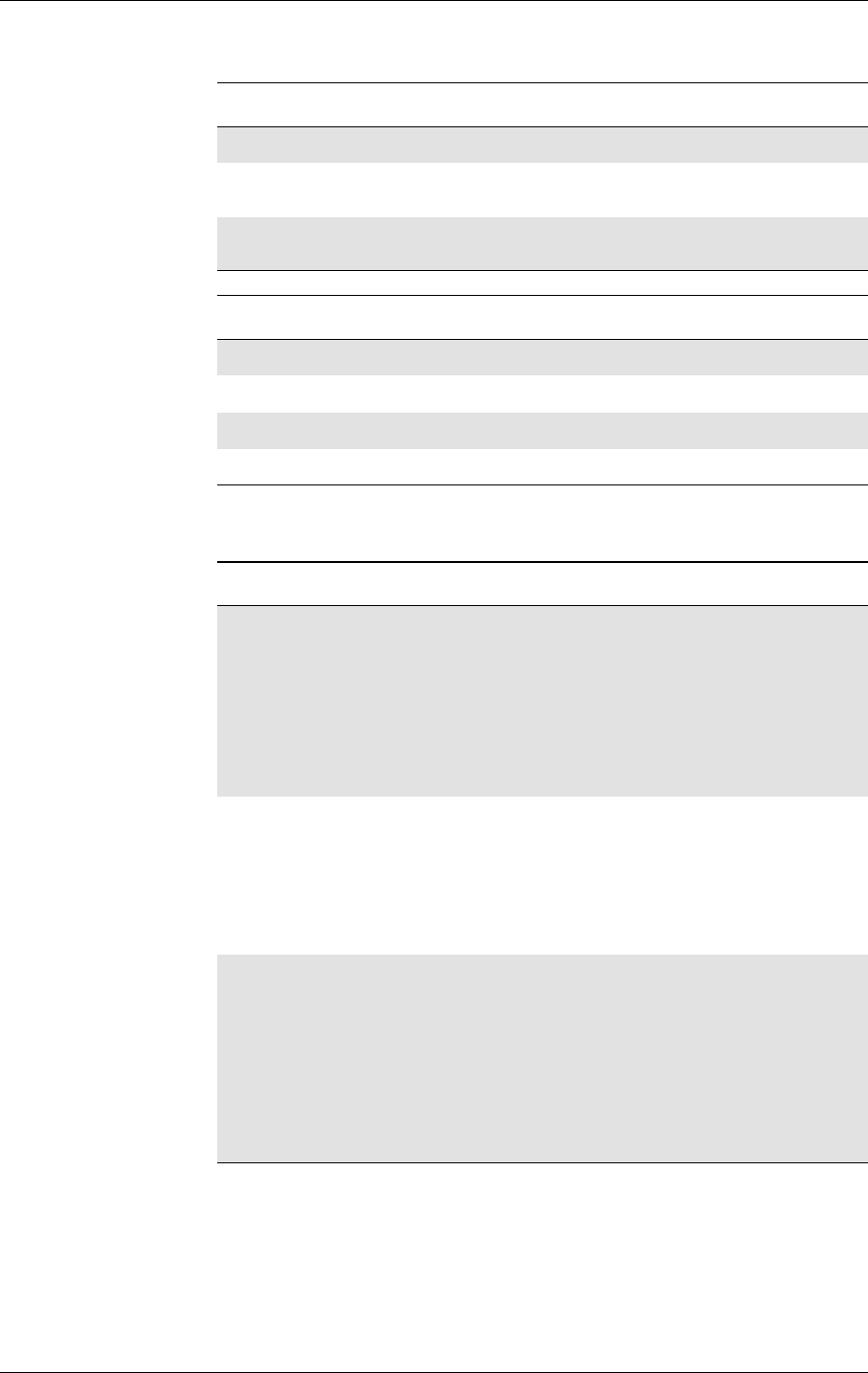
GM47/GM48 INTEGRATOR’S MANUAL
130 LZT 123 7263 R1A
4.4 AT*EAMS Ericsson Audio Mode Selection
Set the Audio mode selection.
The command must be sent to the MS at the initialization of an audio
accessory, but can also be sent later to change the audio mode selection.
The command includes the following parameters:
• <internal_voice_alg> sets the voice-processing mode in the phone.
<aud_status > Description
0No change of the audio status
1Audio hand over. Accessory hands over control of both
the audio lines and the call to the phone
2Audio demand. Accessory demands control of both the
audio lines and the call
<resp > Description
0Disable ATMS and AFMS
1Enable ATMS and disable AFMS
2Disable ATMS and enable AFMS
3Enable ATMS and AFMS
Description Command Possible Responses
Setstheaudio
mode for the
application
AT*EAMS=<internal_voice_al
g>[,<noise_reduction>
[,<side tone>
[,<short_echo_canceling>
[,<ATMS_gain>
[,<class>
[,<ATMS_sensitivity_deviation
_from_class>
[,<AFMS_sensitivity_deviation
_from_class>]]]]]]]
•OK
•ERROR
Show the
current audio
mode setting
AT*EAMS? *EAMS:<internal_voice_alg
>, <noise_reduction>,
<side_tone>,
<short_echo_canceling>,
<AFMS_gain>,<class>,<AT
MS_sensitivity_deviation_fr
om_class>,<AFMS_sensitivi
ty_deviation_from_class>
Show list of
supported
services
AT*EAMS=? *EAMS: (list of supported
<internal_voice_alg >s,
<noise_reduction>s,
<side_tone>s,
<short_echo_canceling>s,
<AFMS_gain>s>,
<class>s,
<ATMS_sensitivity_deviatio
n_from_class>s,
<AFMS_sensitivity_deviatio
n_from_class>s)

4. AUDIO
131
LZT 123 7263 R1A
• <noise_reduction> sets the noise reduction functionality in the
phone.
• <side tone> activates the side tone functionality in the phone.
• <short_echo_canceling> sets the short echo canceling functionality
in the phone.
• <ATMS_gain> indicates the gain of the signal that is sent to the
phone.
• <class> indicates the Hands Free class. The class parameter is used
to fine adjust some parameters in the internal voice algorithm.
• <ATMS_sensitivity_deviation_from_class> indicates the ATMS
sensitivity deviation from a given class. This parameter is used, for
example if an HF product of a certain class has a new microphone
that is more sensitive than the old one.
• <AFMS_sensitivity_deviation_from_class> indicates the AFMS
sensitivity deviation from a given class. This parameter is used, for
example if an HF product of a certain class has a new speaker that is
more sensitive than the old one.
Note! The last three parameters in this command (i.e. <class>,
<ATMS_sensitivity_deviation_from_class>,
<AFMS_sensitivity_deviation_from_class>) are included to give the
internal voice algorithm additional information to perform optimally. It
is up to the MS to decide how this additional information is used.
<internal_voice_alg> Description
0None
1Semi Duplex
2Full Duplex
(Note! the internal hands free algorithm in the
MS contains echo cancelling)
<noise_reduction> Description
0Off
1On
<side_tone> Description
0Off
1On
<short_echo_canceling> Description
0Off
1On
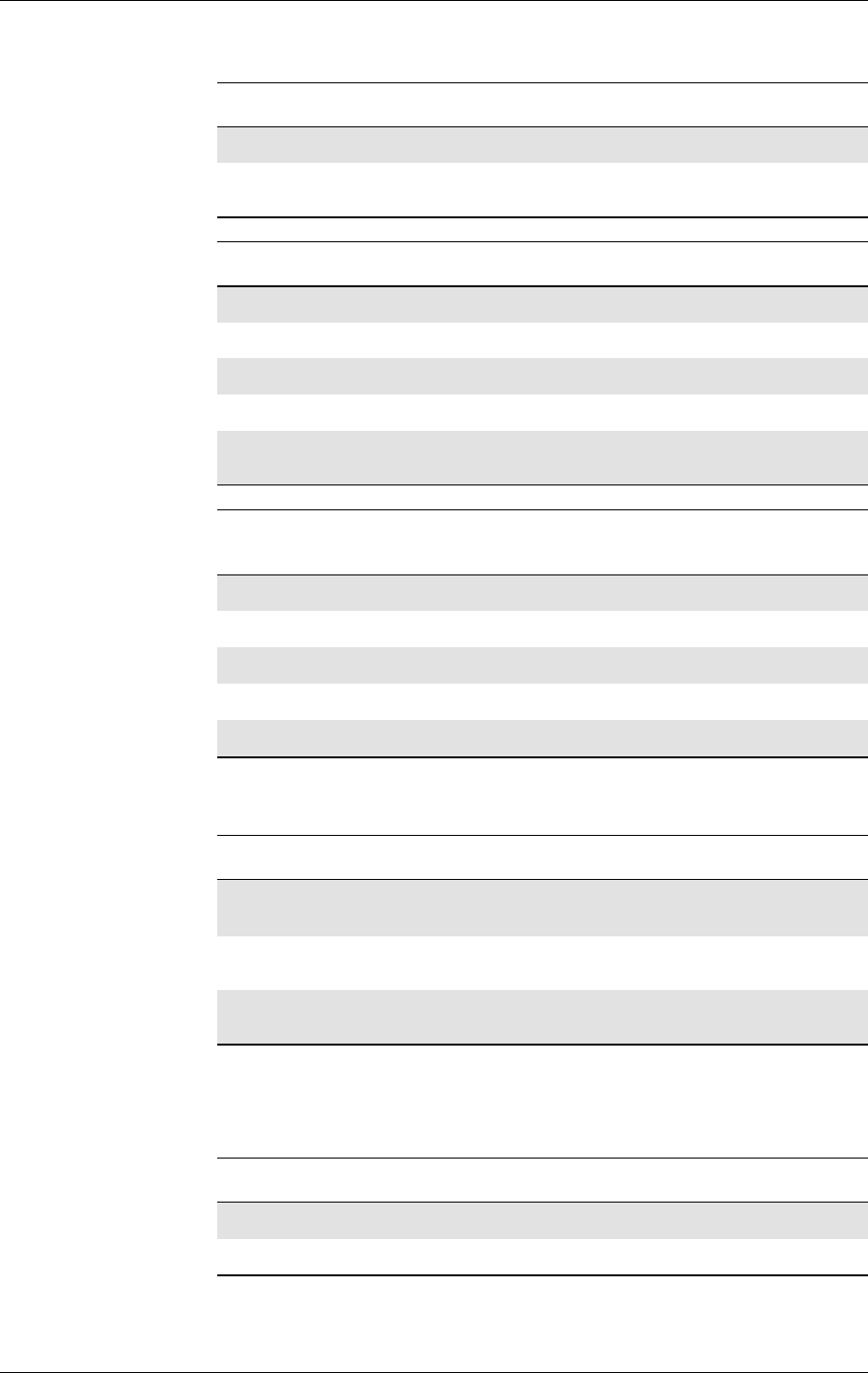
GM47/GM48 INTEGRATOR’S MANUAL
132 LZT 123 7263 R1A
4.5 AT*EARS Ericsson Audio Ring Signal
Used to enable an analogue ring signal as indication of an incoming call
in an external loudspeaker (AFMS). The <mode> parameter activates
and deactivates the service.
<ATMS_gain> Description
0Normal (0 dB) (internal voice processing)
112 dB from accessory (external voice
processing). Not supported
<Class> Description
0None
1Low end, class reference Hector
2Mid End, class reference Scott
3High End, class reference Hasse
4Large room, class reference Office Hands free. Not
supported
<ATMS_sensitivity_deviation_from_class>,
<AFMS_sensitivity_deviation_from_class> Description
00dB
12,5 dB
2-2,5 dB
35,0 dB
4-5,0 dB
Description Command Possible Responses
Request analogue ring
signal in the loudspeaker AT*EARS=<mode> •OK
•ERROR
Show the current mode
setting AT*EARS? *EARS: <mode>
Show list of supported
modes AT*EARS=? *EARS: (list of
supported <mode>s)
<mode > Description
0Disable analogue ring signal
1Enable analogue ring signal
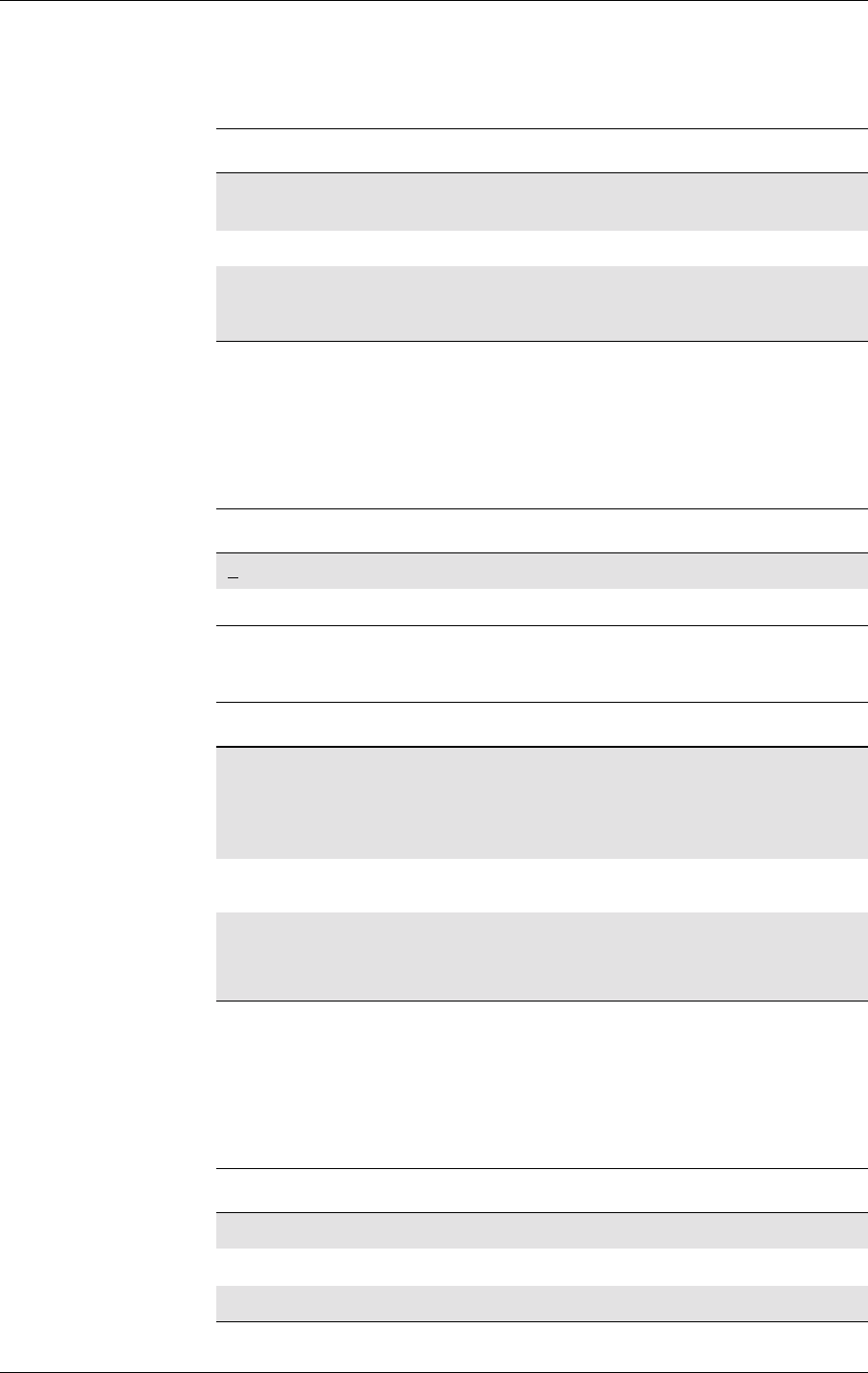
4. AUDIO
133
LZT 123 7263 R1A
4.6 AT*E2PHFB Portable Handsfree Button Sense Enable
This command allows the user to set the functionality for a PHF
(portable handsfree) button, as used on simple handsfree equipment.
When set to ON, the MS will detect the shortcircuit of the ATMS and
AFMS lines, and interpret this as a PHF button press. This has the effect
of answering/hanging up a call without recourse to AT commands.
4.7 AT*ELAM Ericsson Local Audio Mode
Used to route the microphone and/or the loudspeaker signal to the
system bus. This function is used when the audio information is to be
communicated over the system bus rather than the GSM radio. This
functionality can be used by an MC link accessory that communicates
with a PSTN adapter.
Description Command Possible Responses
Set PHF functionality AT*E2PHFB=<op> •ERROR
•OK
Display current setting AT*E2PHFB? *E2PHFB: <op>
Show if the command
is supported AT*E2PHFB=? •*E2PHFB:(listof
supported <op>s
•ERROR
<op> Description
0Disable PHF button. Default setting
1Enable PHF button
Description Command Possible Responses
Set local audio mode AT*ELAM=<mic>[,<loud
speaker>] •*ELAM:
<mic>,<loudspeaker
>
•OK
•ERROR
Show the current
service setting AT*ELAM? *ELAM:
<mic>,<loudspeaker>
Show list of supported
parameters AT*ELAM=? *ELAM: (list of
supported <mic>s and
<loudspeaker>s
parameters)
<mic> Description
0Off
1Microphone analogue
2Microphone digital. Not supported
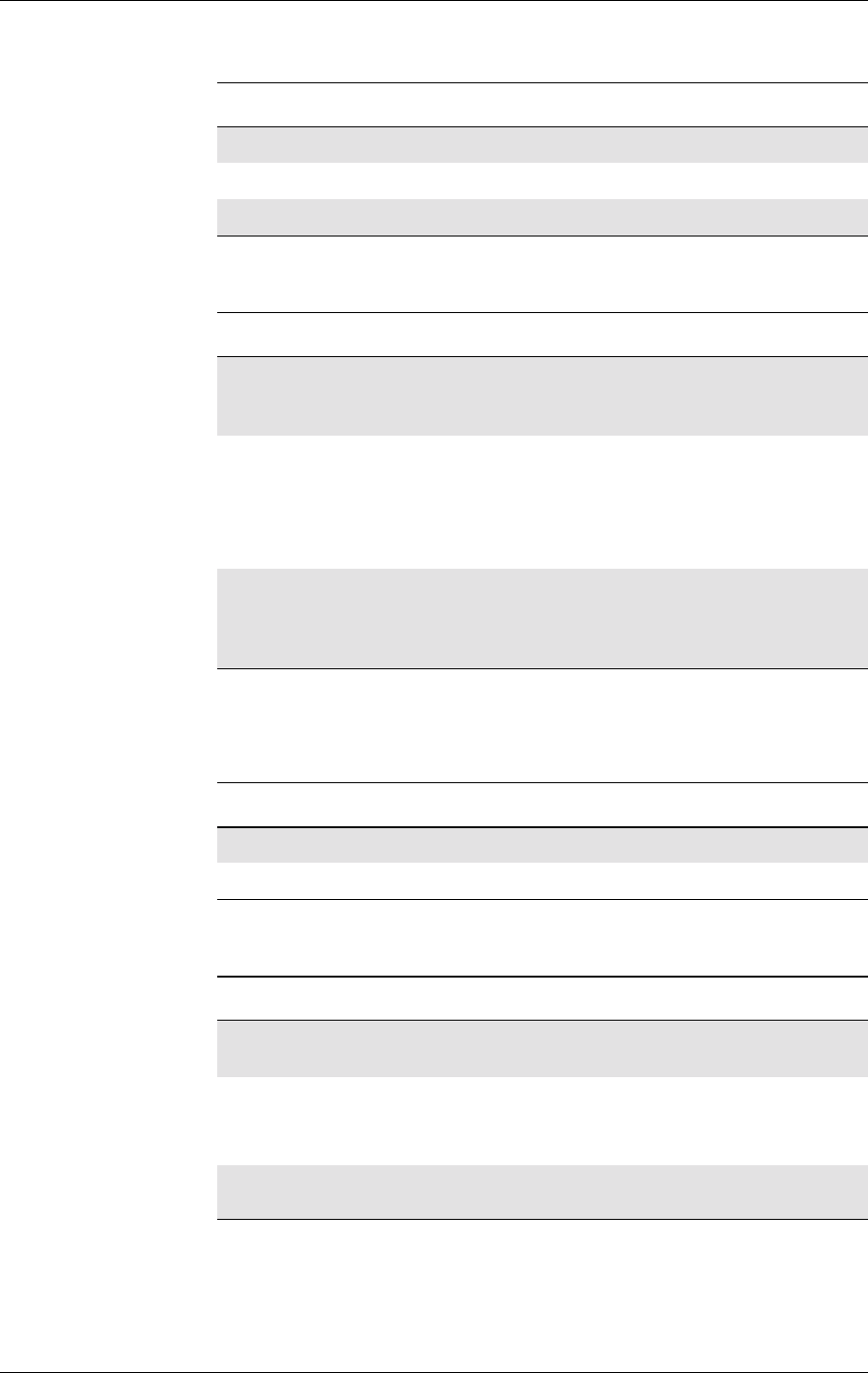
GM47/GM48 INTEGRATOR’S MANUAL
134 LZT 123 7263 R1A
4.8 AT*EMIC Ericsson Microphone Mode
The command enables/disables the microphone in the module. The
microphone should be enabled for each new call, even if it was disabled
for the previous call.
4.9 AT*EMIR Ericsson Music Mute Indication Request
This command is used to request music mute indications.
<loudspeaker> Description
0Off
1Loudspeaker analogue
2Loudspeaker digital. Not supported
Description Command Possible Responses
Enables/disables the
phone microphone AT*EMIC=<mode> •+CMEERROR:<err>
•OK
•ERROR
Test if the command is
supported, show
supported values
AT*EMIC=? •*EMIC:(listof
supported
<mode>s)
•+CMEERROR:<err>
•OK
•ERROR
Read the current
settings AT*EMIC? •*EMIC:<mode>
•+CMEERROR:<err>
•OK
•ERROR
<mode> Description
0Microphone is disabled (off)
1Microphone is enabled (on)
Description Command Possible Responses
Request for mute
indications AT*EMIR=<mode> •OK
•ERROR
Show supported
message types along
with the current service
setting
AT*EMIR? *EMIR: <mode>,<resp>
Show list of supported
services AT*EMIR=? *EMIR: (list ofsupported
<mode>s)
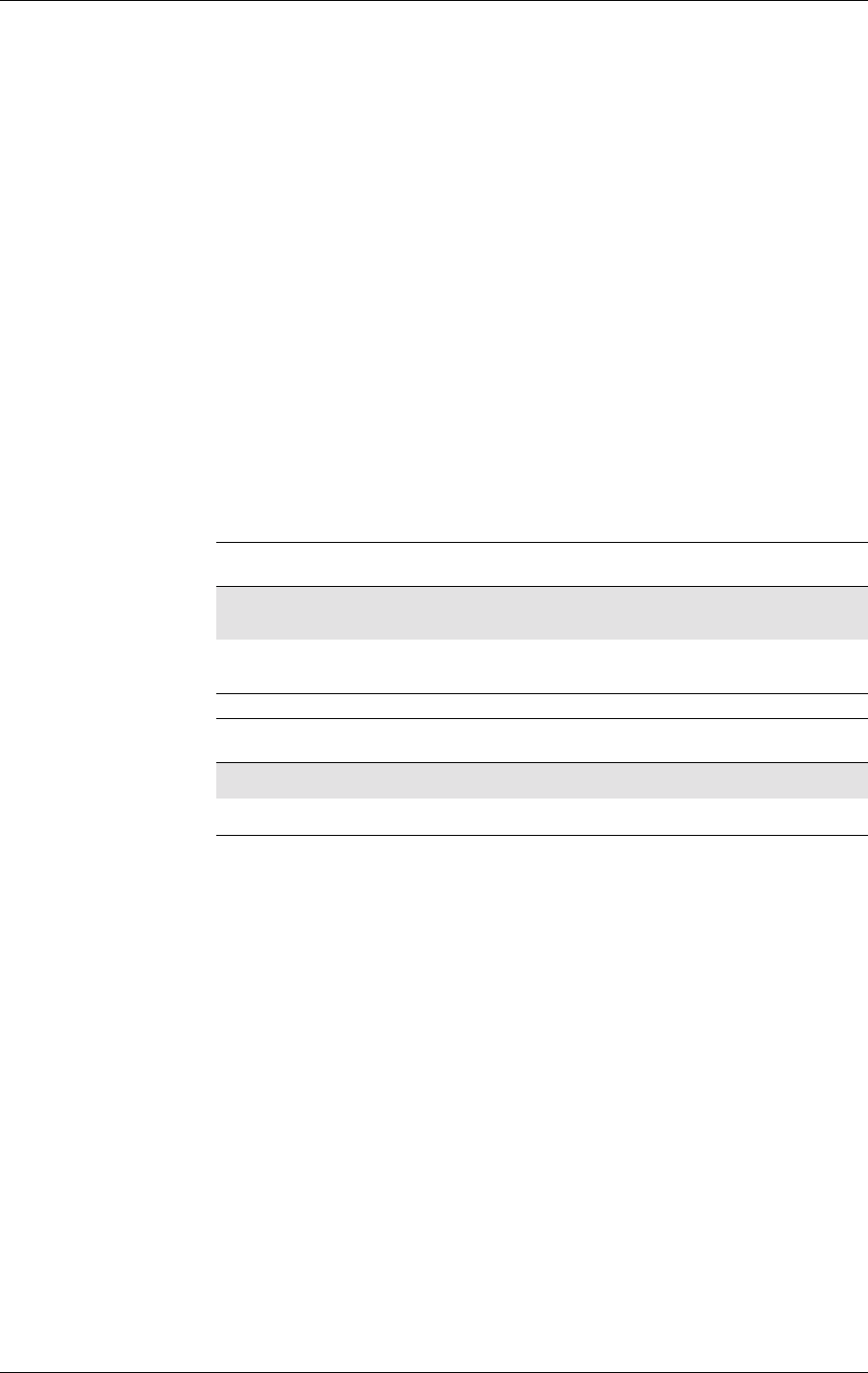
4. AUDIO
135
LZT 123 7263 R1A
A music mute indication is sent to all accessories that have requested the
indication when an incoming event (a phone call, an SMS, an e-mail
etc.), with an associated audio prompt (beep, melody, etc.), is received
by the phone or an internal event such as a calendar event, with an
associated audio prompt occurs.
The music mute indication is also sent out when the voice recognition
mechanism is activated. The only exception to this is when the Magic
Word function is active, as the ASR is then capable of recognising a
(predefined) keyword despite background noise.
After the event (when the call has been disconnected, the “new mail”
signal has sounded etc.), or when the voice recognition mechanism is
deactivated, a new music mute indication with the <resp> parameter set
to zero is sent.
Note! The phone shall send the system sound that corresponds to the incoming
event (phone conversation, “new mail” signal etc.) over the system bus.
<mode > Description
0Off, music mute indication result codes will not be sent to
the accessory
1On, music mute indication result codes will be sent to the
accessory
<resp > Description
0Music mute inactive
1Music mute active
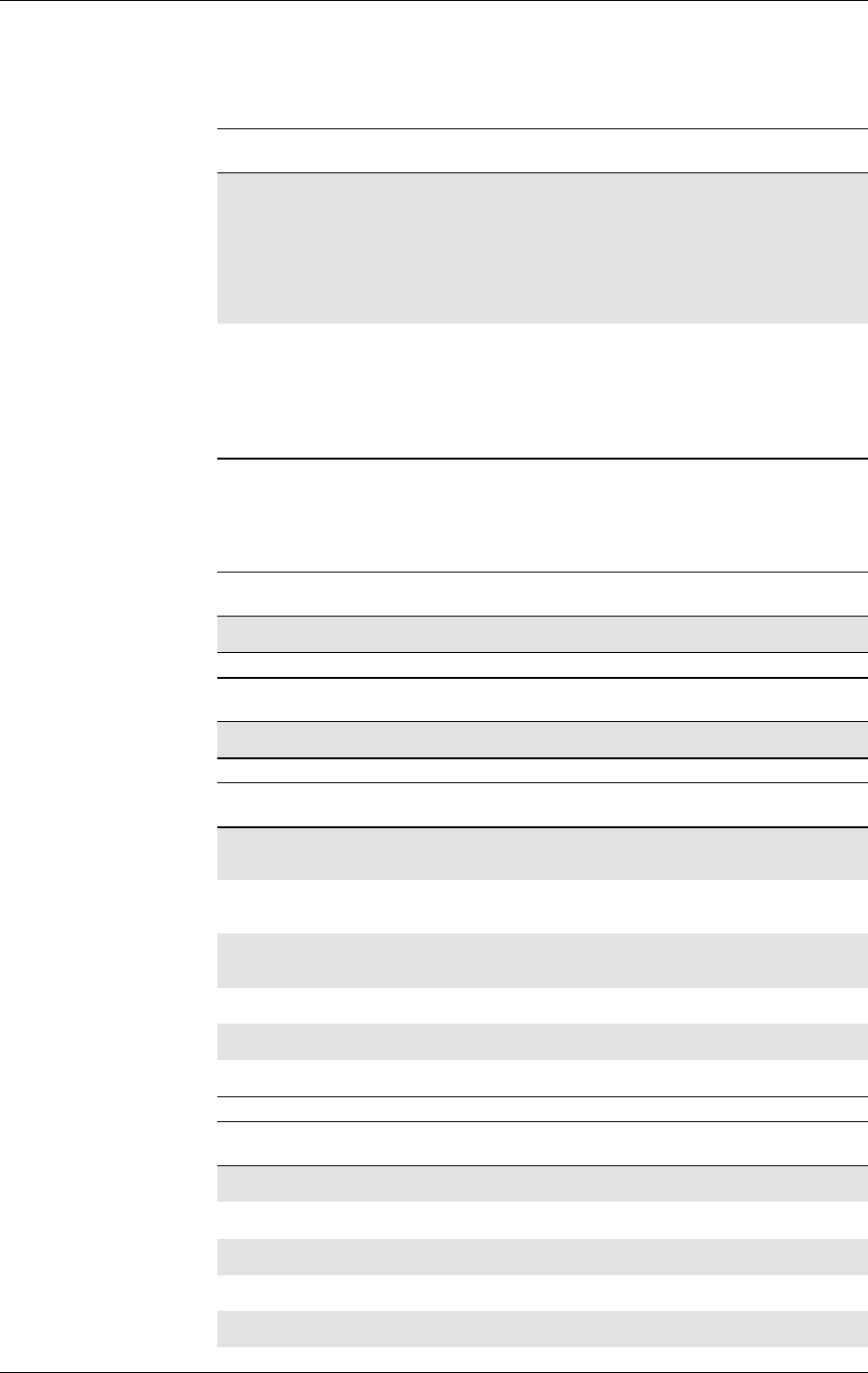
GM47/GM48 INTEGRATOR’S MANUAL
136 LZT 123 7263 R1A
4.10 AT*EPRR Ericsson Personal Ring Type Read
Returns phone number, phone number type and sound type in location
number <indexr>. If listing fails an error, +CME ERROR: <err>, is
returned.
Description Command Possible Responses
Read phone number
and ring type AT*EPRR=<indexr> •*EPRR:
<indexr>,<number>,
<type>,<sound
type>
• +CME ERROR <err>
•OK
•ERROR
Show if the command
is supported AT*EPRR=? •*EPRR:(listof
supported
<indexr>s)
• +CME ERROR <err>
•OK
•ERROR
<indexr> Description
1-50 Value of location number
<number> Description
string type Phone number of format <type>
<type> Description
integer format Type of address octet
(refer GSM 04.08 [4] section 10.5.4.7)
128 Unknown numbering plan, national / international number
unknown
129 ISDN / telephony numbering plan, national / international
unknown
145 ISDN / telephony numbering plan, international number
161 ISDN / telephony numbering plan, national number
128 - 255 Other values refer GSM 04.08 [4] section 10.5.4.7
<sound type> Description
0Off. Not supported
1Low ring signal
2Medium ring signal
3High ring signal
4Mixed ring signal
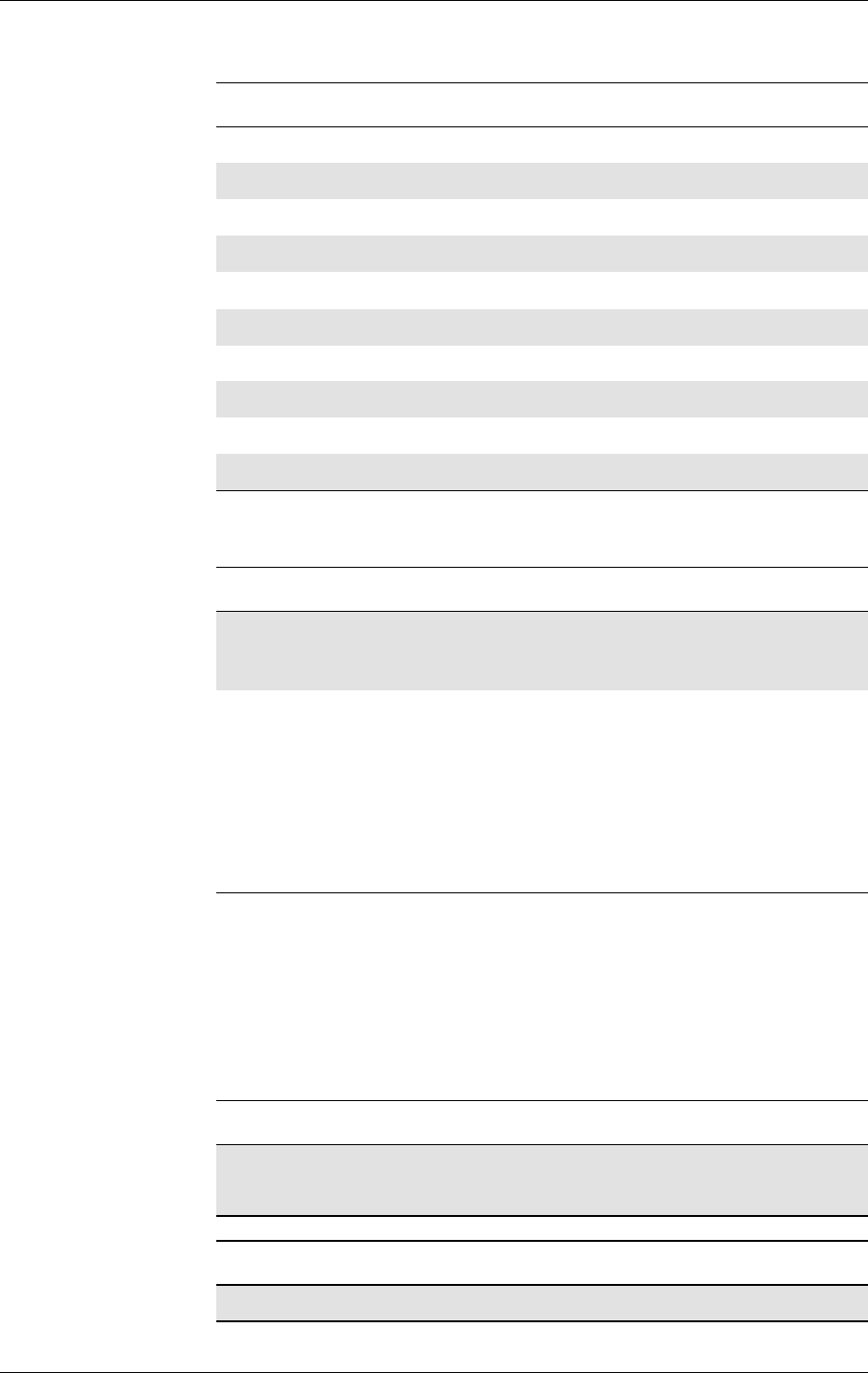
4. AUDIO
137
LZT 123 7263 R1A
4.11 AT*EPRW Ericsson Personal Ringtype Write
Writes phone number, phone number type and sound type in location
number <indexr>. It is possible to use wild cards for phone number by
substituting the digits with question marks. If writing fails an error,
+CME ERROR: <err>, is returned.
If all parameters but <indexr> are omitted, the personal ring type at
position <indexr> will be deleted.
5Beep. Not supported
6Alarm. Not supported
7Calendar Tone. Not supported
8Calendar Click. Not supported
9-10 Reserved. Not supported
11 Melody 1
12-20 Melody 2. Melody 10 reserved for pre-set melodies
21-30 Reserved for melody 11-20. Not supported
31-38 Own melody 1-8
39-50 Reserved for own melodies. Not supported
<sound type> Description
Description Command Possible Responses
Request Personal
Ringtype Write
command
AT*EPRW=<indexr>,
<number>,[<type>],
<soundtype>
• +CME ERROR <err>
•OK
•ERROR
Show if the command
is supported AT*EPRW=? •*EPRW:(listof
supported
<indexr>s),<nlength
>,(list of supported
<type>s),(list of
supported <sound
type>s)
• +CME ERROR <err>
•OK
•ERROR
<indexr> Description
1-50 Value of location number. The location number must be
free. If the given location number is not free, ERROR is
returned
<number> Description
string type phone number of format <type>
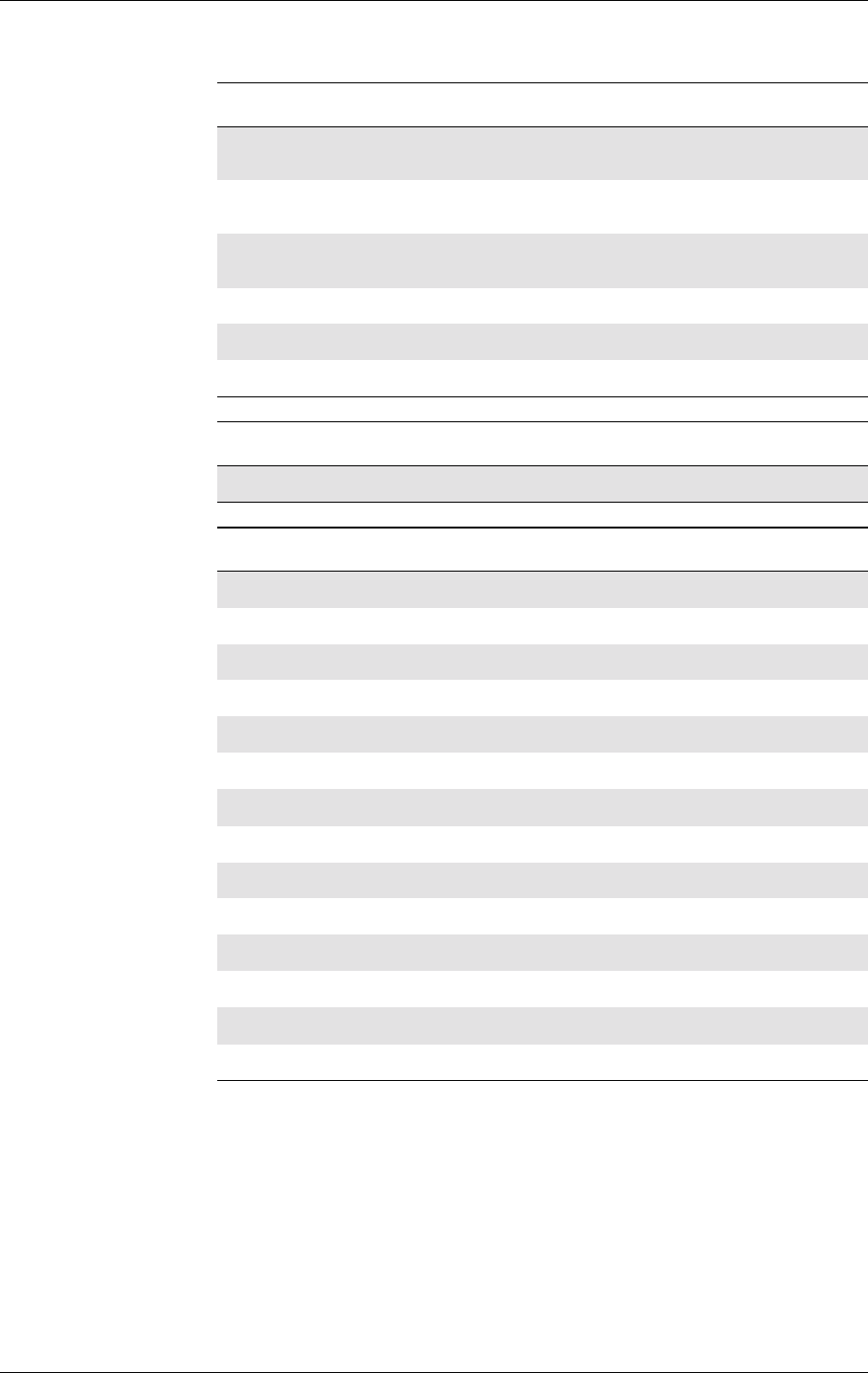
GM47/GM48 INTEGRATOR’S MANUAL
138 LZT 123 7263 R1A
<type> Description
Integerformat Type of address octet
(refer to GSM 04.08 [4] section 10.5.4.7)
128 Unknown numbering plan, national/international number
unknown
129 ISDN/telephony numbering plan, national/international
number unknown
145 ISDN/telephony numbering plan, international number
161 ISDN/telephony numbering plan, national number
128 - 255 Other values refer to GSM 04.08 [4] section 10.5.4.7
<nlength> Description
integer type Value indicating the maximum length of field <number>
<sound type> Description
0Off. Not supported
1Low ring signal
2Medium ring signal
3High ring signal
4Mixed ring signal
5Beep. Not supported
6Alarm. Not supported
7Calendar Tone. Not supported
8Calendar Click. Not supported
9-10 Reserved. Not supported
11 Melody 1
12-30 Melody 2. Melody 20 reserved for pre-set melodies
31-38 Own melody 1-8
39-50 Reserved for own melodies. Not supported
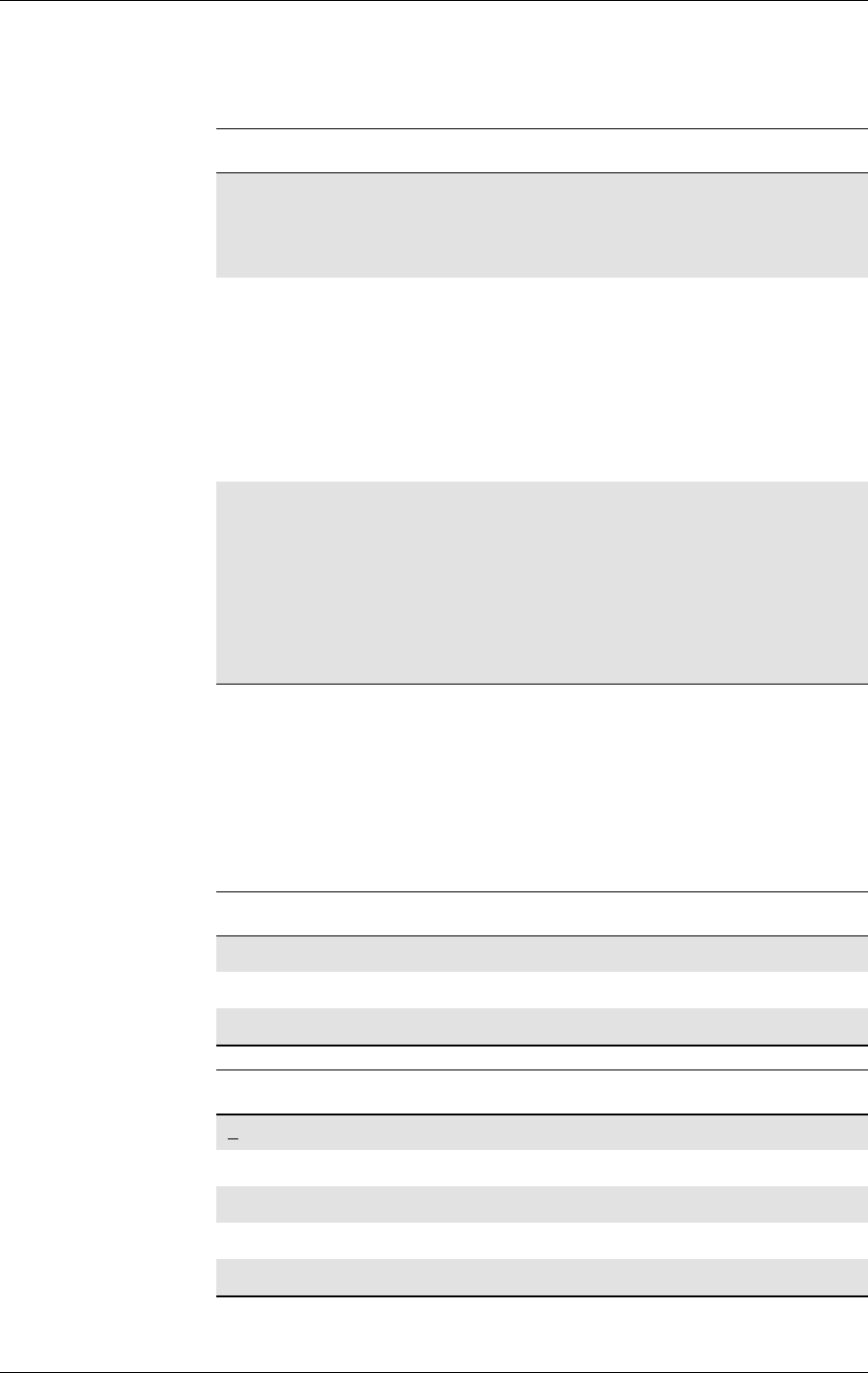
4. AUDIO
139
LZT 123 7263 R1A
4.12 AT*ERIL Ericsson Ring Level Set
Used to set the volume for the ring signals used for incoming voice,
Line 1, Line 2, fax and data calls. The parameter <place> controls the
ring level set for different types of modes. The signal volume is
specified as “step”, with an increasing volume for each signal, or as a
selected level.
Line 1 is the default for <call type> if the parameter is not given.
Description Command Possible Responses
Sets ring volume for the
ring signals used for
incoming voice (L1
and L2), fax and data
calls
AT*ERIL=<volume>[,<c
all type>
[,<place>]]
•+CMEERROR:<err>
•OK
•ERROR
Read the settings of
volume for the ring
signals
AT*ERIL? •*ERIL:
<volume1>[,<call
type1> [,<place1>
[<CR><LF>…*ERIL:
<volume n>[, <call
type n> [,<place
n>]]]]]
•+CMEERROR:<err>
•OK
•ERROR
Test if the command is
supported AT*ERIL=? •*ERIL:(listof
supported
<volume>s)[,(list of
supported <call
type>s)
[,(list of supported
<place>s)]]
•+CMEERROR:<err>
•OK
•ERROR
<volume> Description
0Off
1-6 Volume setting, not increasing ring
129-134 Volume setting, increasing ring
<calltype> Description
1Line 1
2Line 2
3Fax
4Data
5Alarm. Not supported
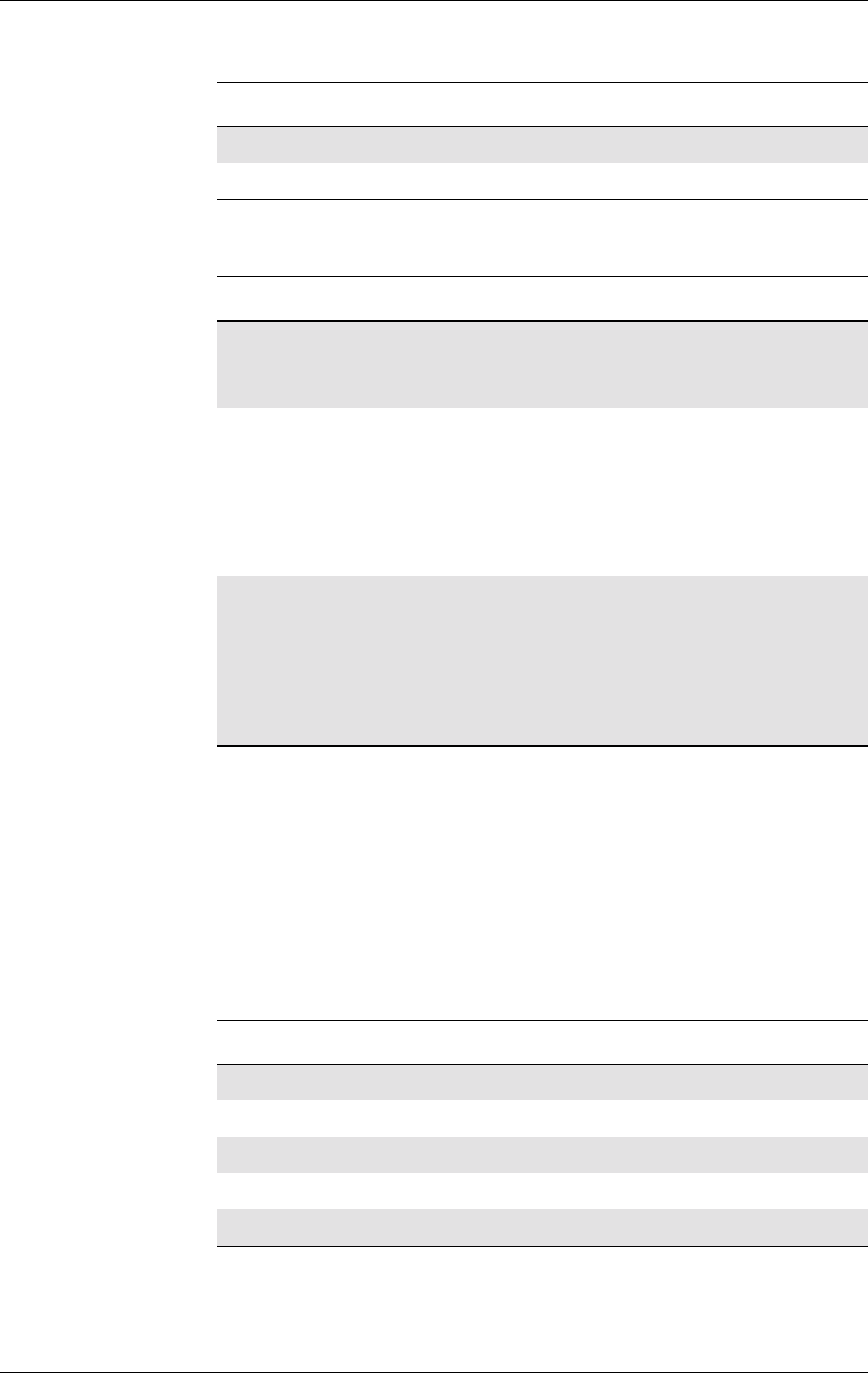
GM47/GM48 INTEGRATOR’S MANUAL
140 LZT 123 7263 R1A
4.13 AT*ERIN Ericsson Ring Set
Used to set sound for incoming voice, line L1 and L2, fax, data calls and
alarm. For each of the incoming call types and alarm: voice on line 1,
voice on line 2, fax calls and data calls and alarm a sound type is
selected.
The type of sound is either a ring signal, selected from a predefined set,
a melody, selected from a predefined set, or an own melody, selected
from a set specified by the user.
Line 1 is the default for <call type> if the parameter is not given.
<place> Description
0Hand held
1Car mounted
Description Command Possible Responses
Sets ring type for
incoming voice (L1
and L2), fax and data
calls and alarm
AT*ERIN=
<sound type>,
[<call type>]
•+CMEERROR:<err>
•OK
•ERROR
Read the settings of
ring type and volume
for the call types
AT*ERIN? •*ERIN:<sound
type1>,<call type1>
[<CR><LF>…*ERIN:
<sound type
n>,<call type n>]
•+CMEERROR:<err>
•OK
•ERROR
Test if the command is
supported AT*ERIN=? •*ERIN:listof
supported <sound
type>s, list of
supported <call
type>s
•+CMEERROR:<err>
•OK
•ERROR
<call type> Description
1Line 1
2Line 2
3Fax
4Data
5Alarm
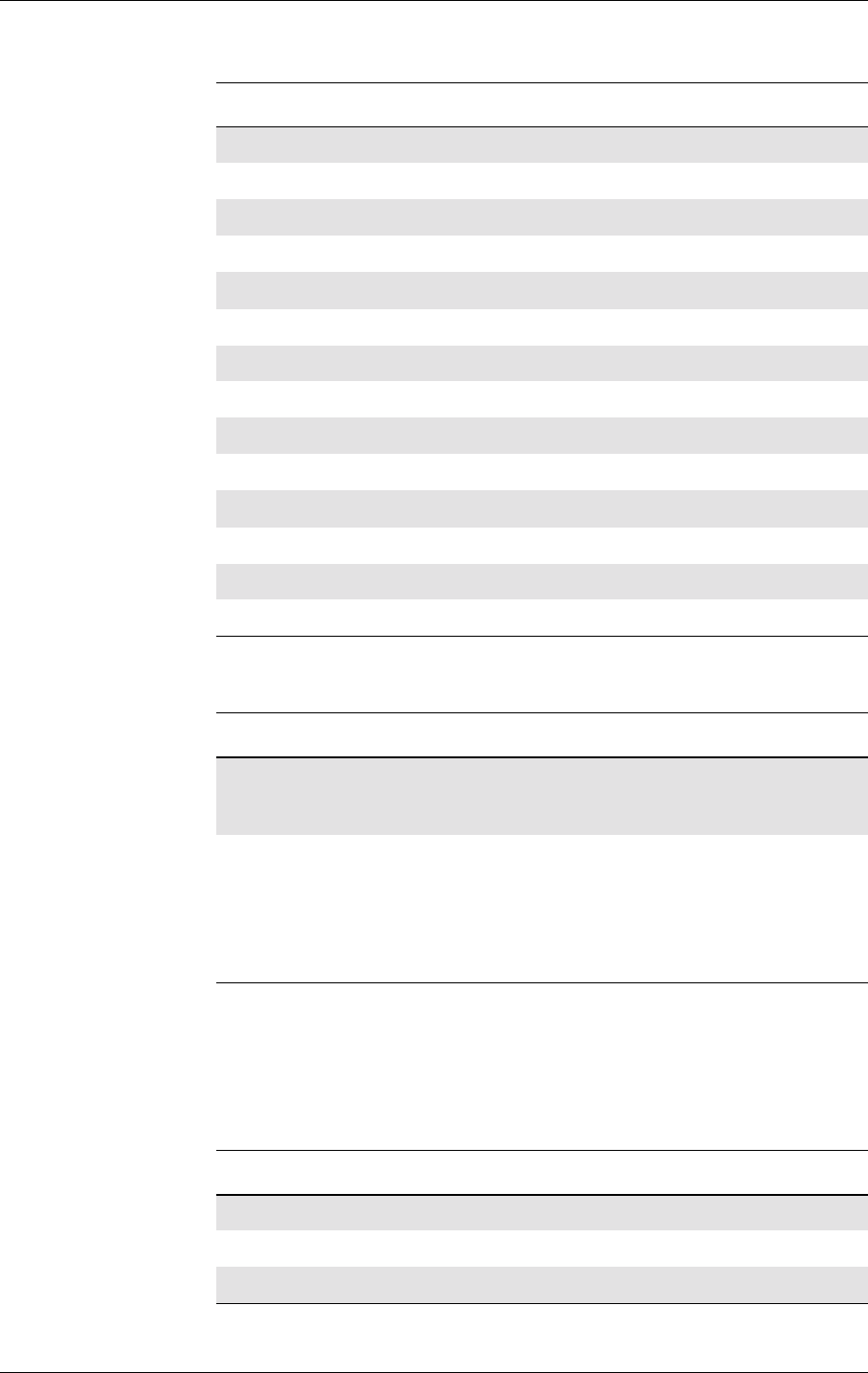
4. AUDIO
141
LZT 123 7263 R1A
4.14 AT*ERIP Ericsson Ring Signal Playback Command
Used to play one of the sound types which are available as ring signals/
message signals on the module. The signal volume may not be chosen
as “step”; with an increasing volume for each signal. If value 1 is chosen
for parameter <volume>, nothing should happen. Signal volume may be
chosen as a selected level.
Refer to the AT*ERIN command for the <sound type> parameter.
<sound type> Description
0Off. Not supported
1Low ring signal
2Medium ring signal
3High ring signal
4Mixed ring signal
5Beep. Not supported
6Alarm. Not supported
7Calendar Tone. Not supported
8Calendar Click. Not supported
9-10 Reserved. Not supported
11-20 Melody 1. Melody 10 reserved for preset melodies
21-30 Reserved. Not supported
31-38 Own melodies 1-8
39-5 Reserved for own melodies. Not supported
Description Command Possible Responses
Plays the selected
sound type at
specified volume level
AT*ERIP =
<volume>,<sound
type>
•+CMEERROR:<err>
•OK
•ERROR
Test if the command is
supported AT*ERIP=? •*ERIP:(listof
supported
<volume>s),(list of
supported <sound
type>s)
•OK
•ERROR
<volume> Description
0Off
1Step. Not Supported
2-n Volume setting
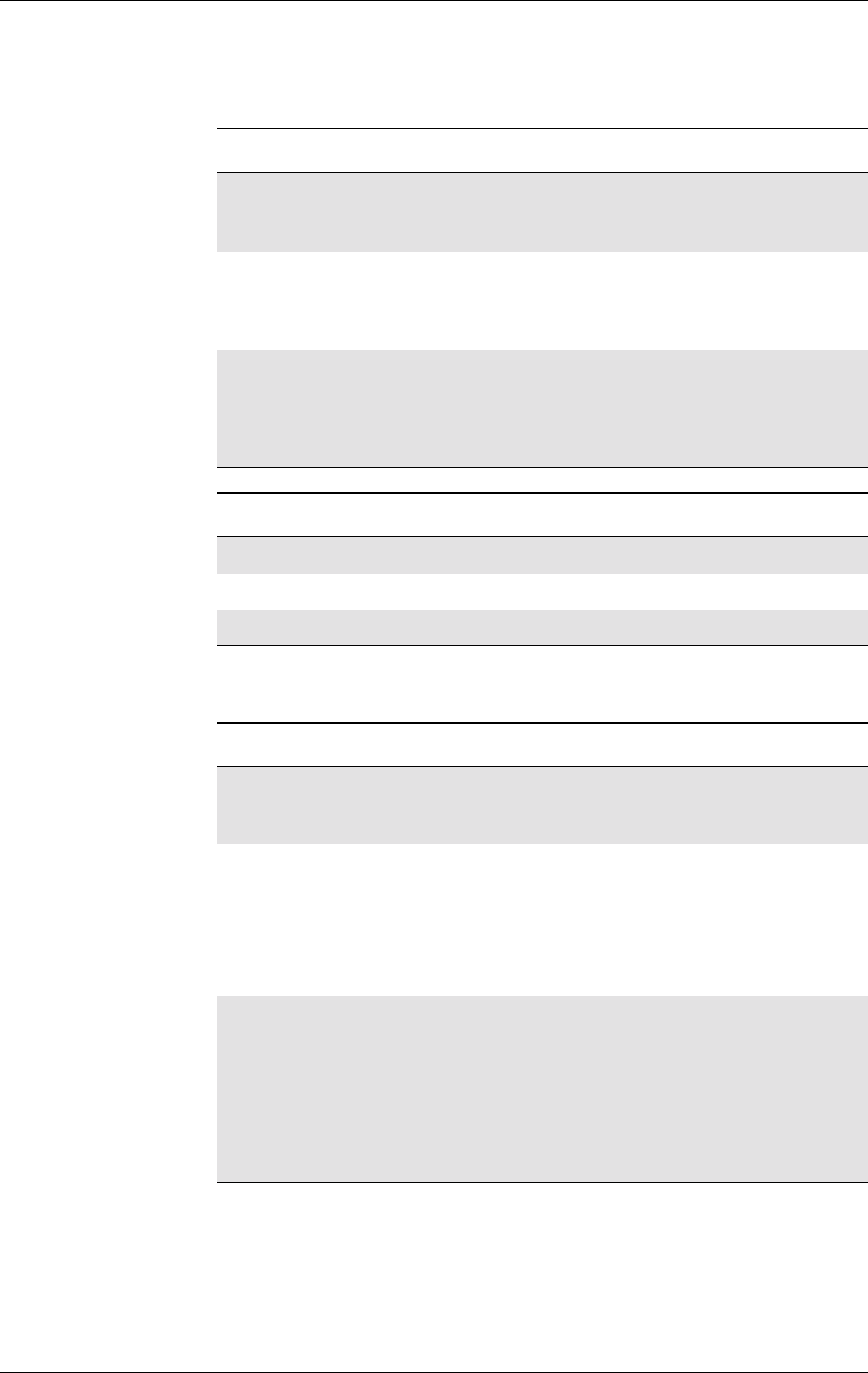
GM47/GM48 INTEGRATOR’S MANUAL
142 LZT 123 7263 R1A
4.15 AT*ESMA Ericsson Set Message Alert Sound
4.16 AT*ESOM Ericsson Settings Own Melody
Sets the user defined own melodies in the MS. The <prefix> and <tone>
indicates together the tone frequency and duration. The <pause> sets a
pause between tones.
Description Command Possible Responses
Sets the answer mode
settings in the MS AT*ESAM=<mode> •+CMEERROR:<err>
•OK
•ERROR
Read the current
setting AT*ESAM? •*ESAM:<mode>
•+CMEERROR:<err>
•OK
•ERROR
Test if the command is
supported AT*ESAM=? •*ESAM:listof
supported <mode>s
•+CMEERROR:<err>
•OK
•ERROR
<mode > Description
0Answer mode is not set to “Any key”, or “Auto” (off)
1Any Key mode on
2Auto mode on
Description Command Possible Responses
Sets the own
melodies in the
MS
AT*ESOM=
[<melody index>],
<melody string>
•+CME ERROR: <err>
•OK
•ERROR
Shows the
current settings,
i.e. the currently
stored melodies
AT*ESOM? • *ESOM: <melody index>
,<melody string 1>, <CR><LF>
……*ESOM: <melody index>,
<melody string n>
•+CMEERROR:<err>
•OK
•ERROR
Shows if the
command is
supported
AT*ESOM=? • *ESOM: (list of supported
<melody index>),(list of
supported <pause>s),(list of
supported <prefix>s),(list of
supported <tone>s),
<mlength>,<mtones>
•+CMEERROR:<err>
•OK
•ERROR
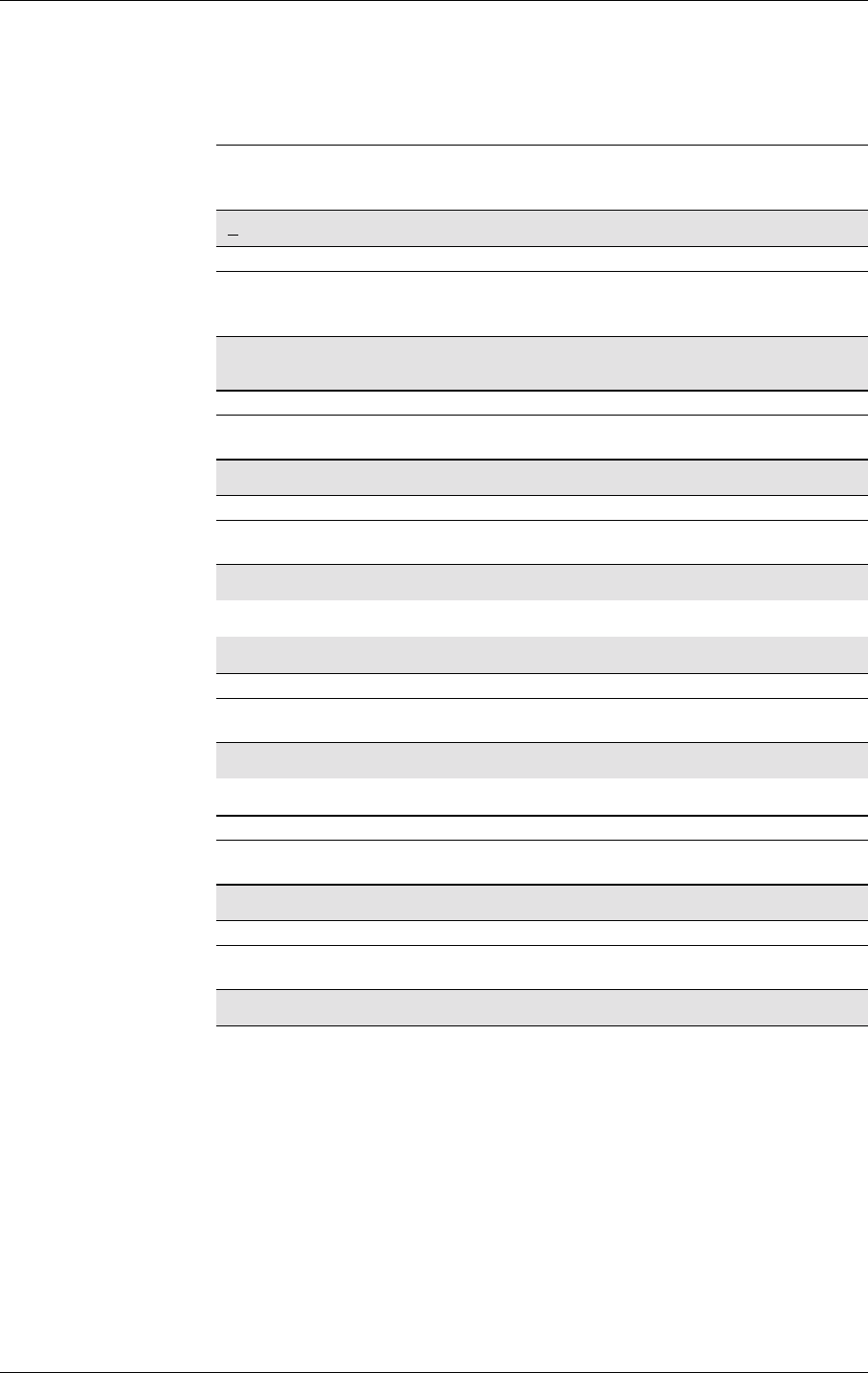
4. AUDIO
143
LZT 123 7263 R1A
Test command returns the possible values of <melody index>, <pause>,
<prefix>, <tone>, <mlength> and <mtones>.
<melody
index> Description
1-4 Melody 1 – 4. Default setting: 1
<melody
string> Description
string A sequence of <tones> and <pause> entries. The <tones>
maybeprecededbyoneortwo<prefix>(s)
<pause> Description
pPause
<prefix> Description
#Half tone higher
(b) Half tone lower
+Oneoctavehigher
<tones> Description
c,d,e,f,g,a,b Short tones
C,D,E,F,G,A,B Long tones
<mtones> Description
integer Indicating the maximum number of tones in a melody
<mlength> Description
integer Indicating the maximum length of <melody string>
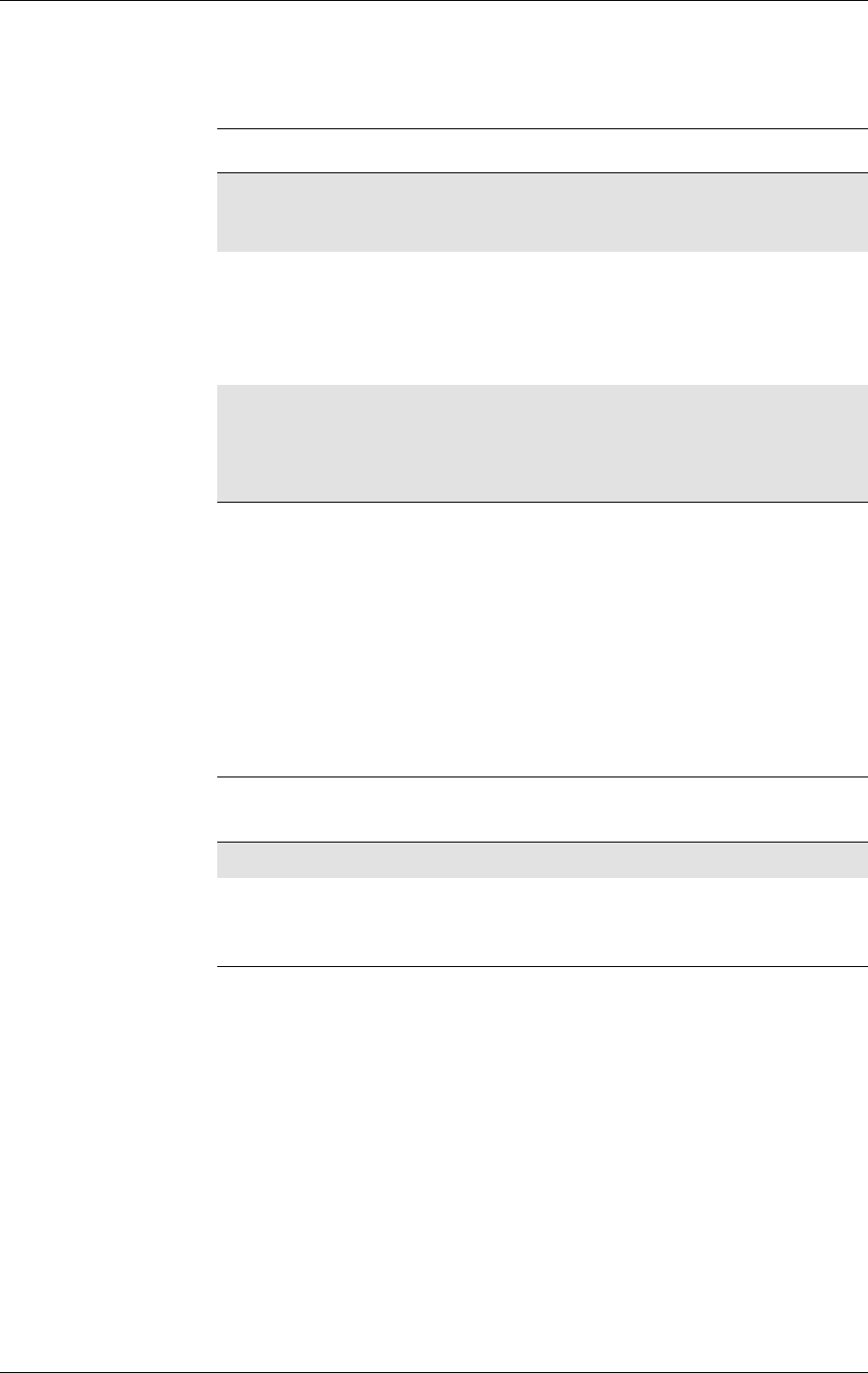
GM47/GM48 INTEGRATOR’S MANUAL
144 LZT 123 7263 R1A
4.17 AT*EXVC Ericsson SET External Volume Control
Used to set or query whether an external accessory such as the vehicle
handsfree controls the audio volume.
By default, the <external volume> is turned off, i.e. the volume over
AFMS is controlled by the phone MMI.
The set command is effective only as long as the phone senses that it is
connected to an external accessory that has issued the command. Once
the phone and the accessory are disconnected the <external volume>
setting returns to default.
Description Command Possible Responses
Sets the maximum
volume level on the
audio lines
AT*EXVC=<external
volume> •+CMEERROR:<err>
•OK
•ERROR
Test if the command is
supported and show
the possible report
settings
AT*EXVC=? •*EXVC:(listof
supported <external
volume>s)
•+CMEERROR:<err>
•OK
•ERROR
Read the current
setting AT*EXVC? •*EXVC:<external
volume>
•+CMEERROR:<err>
•OK
•ERROR
<external
volume> Description
0The phone MMI controls audio volume over AFMS
1Audio volume over AFMS is output at maximum level that
is no clipping occurs. An external accessory such as a
vehicle kit controls the actual volume level heard by the
user

4. AUDIO
145
LZT 123 7263 R1A
4.18 ATM Monitor Speaker Control
Define the activity of the speaker. This command is ignored by the
modem and is only included for compatibility.
Description Syntax Possible Responses
Set monitor speaker
control ATM[=][<speaker>] •OK
•ERROR
Read the current
setting ATM? M: <speaker>
Show if the command
is supported ATM=? M: (list of supported
<speaker>s)
<speaker> Description
0Off during the entire call. Default value
1-3 Different “on” modes

GM47/GM48 INTEGRATOR’S MANUAL
146 LZT 123 7263 R1A
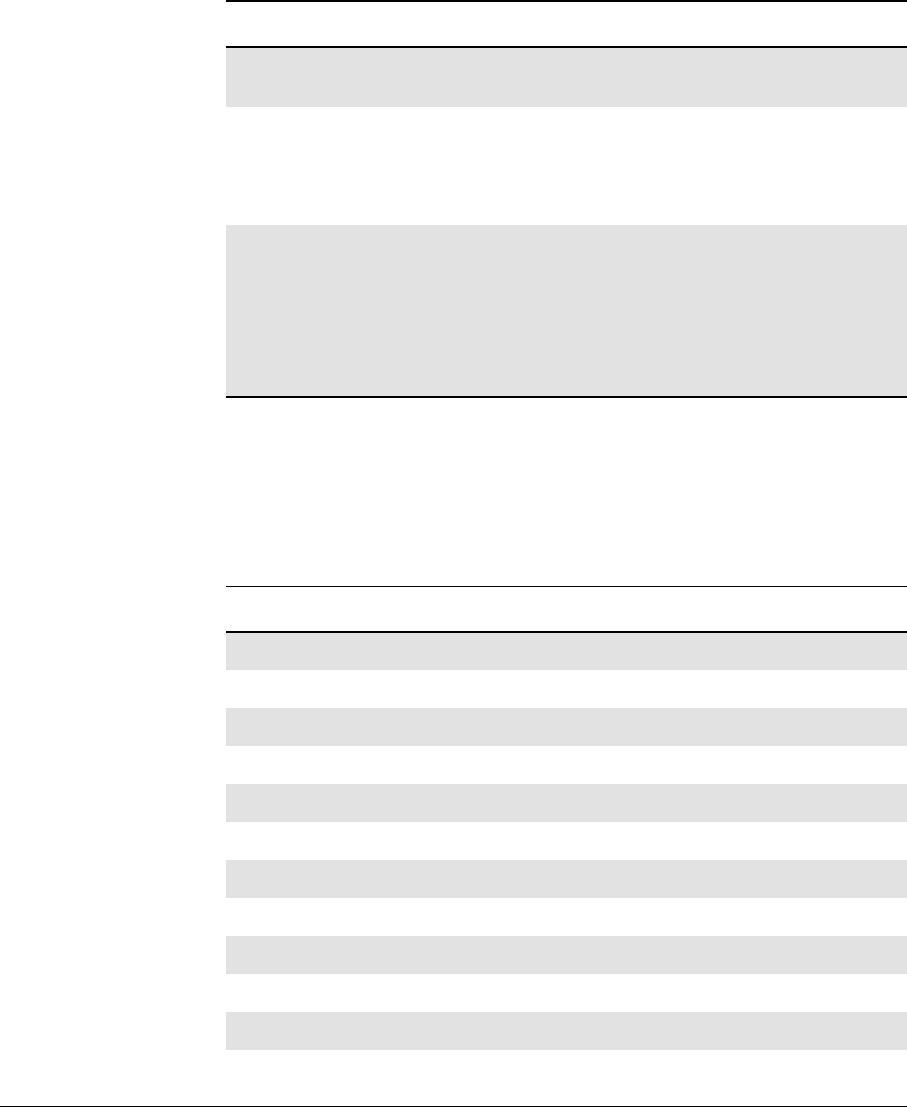
147
LZT 123 7263 R1A
5. Data - CSD/HSCSD
5.1 AT+CBST Select Bearer Service Type
Selects the bearer service <name> with data rate <speed>, and the
connection element <ce> to be used when data calls are originated.
Values may also be used during mobile terminated data call setup,
especially in the case of single numbering scheme calls.
Test command returns values supported by the TA as compound values.
Description Command Possible Responses
Select bearer service
type AT+CBST=[<speed>,[<n
ame>,[<ce>]]] •OK
•ERROR
Read the command AT+CBST? •+CBST:
<speed>,<name>,<
ce>
•OK
•ERROR
Test if the command is
supported AT+CBST=? •+CBST:(listof
supported
<speed>s,list of
supported<name>s,
list of supported
<ce>s)
•OK
•ERROR
<speed> Description
0Auto selection of baud rate
42400bps V.22bis
64800bps V.32
79600bps V.32
12 9600bps V.34
14 14400bps V.34
15 19200bps V.34
16 28800bps V.34
68 2400bps V.110 (ISDN)
70 4800bps V.110 (ISDN)
71 9600bps V.110 (ISDN)
75 14400bps V.110 (ISDN)
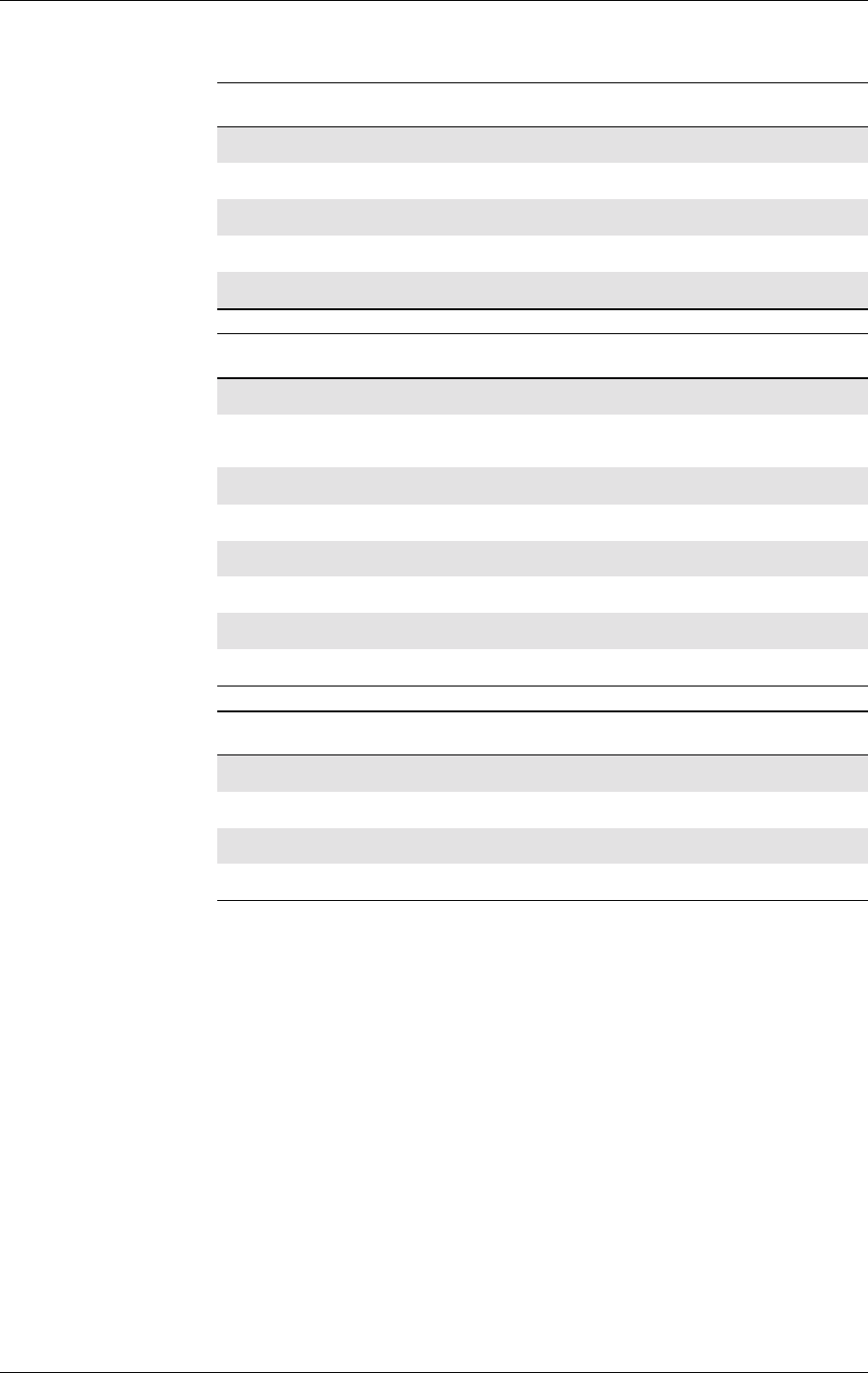
GM47/GM48 INTEGRATOR’S MANUAL
148 LZT 123 7263 R1A
79 19200bps V.110 (ISDN)
80 28800bps V.110 (ISDN)
81 38400bps V.110 (ISDN)
82 48000bps V.110 (ISDN)
83 56000bps V.110 (ISDN)
<name> Description
0Asynchronous connection (UDI or 3.1kHz modem)
1Data circuit synchronous (UDI or 3.1kHz modem).Not
supported
2PAD Access (Asynchronous) (UDI). Not supported
3Packet access (synchronous) (UDI). Not supported
4Data circuit asynchronous (RDI). Not supported
5Data circuit synchronous (RDI). Not supported
6PAD Access (Asynchronous) (RDI). Not supported
7Packet access (synchronous) (RDI). Not supported
<ce> Description
0transparent. Not supported
1Non transparent
2Both, transparent preferred. Not supported
3Both, non-transparent preferred. Not supported
<speed> Description
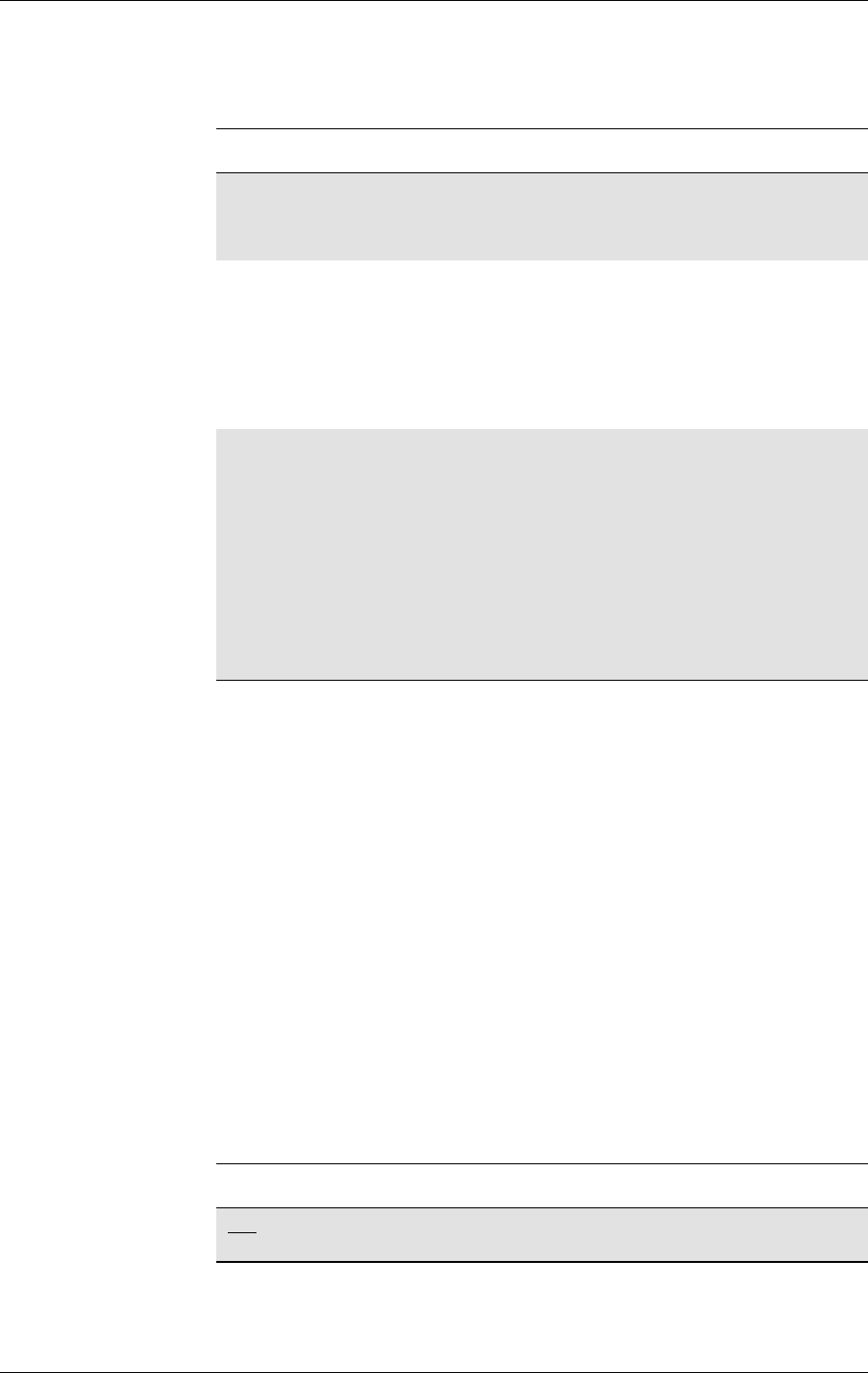
5. DATA - CSD/HSCSD
149
LZT 123 7263 R1A
5.2 AT+CRLP Radio Link Protocol
Radio link protocol (RLP) parameters used when non-transparent data
calls are originated may be altered with this command. Available
command subparameters depend on the RLP versions implemented by
the device (e.g. <ver> may not be available if device supports only
versions 0 and 1).
Note! If radio link protocol is not used, but some other error correcting
protocol (for transparent data calls), V.25ter [4] Error Control Selection
test command +ES=? may be used to indicate the presence of the
protocol.
Read command returns current settings for each supported RLP version
<verx>. Only RLP parameters applicable to the corresponding <verx>
are returned.
Test command returns values supported by the TA as a compound
value. If ME/TA supports several RLP versions <verx>, the RLP
parameter value ranges for each <verx> are returned in a separate line.
Description Command Possible Responses
Set radio link
protocol AT+CRLP=[<iws>
[,<mws>[,<T1>
[,<N2>[,<ver>
[, <T4>]]]]]]
•OK
•ERROR
Read the
command AT+CRLP? •+CRLP:
<iws>,<mws>,<T1>,<N2>[,<ver1>
[,<T4>]][<CR><LF>
•+CRLP:
<iws>,<mws>,<T1>,<N2>[,<ver2>
[,<T4>]][...]]
•OK
•ERROR
Test if the
command is
supported
AT+CRLP=? • +CRLP: (list of supported <iws>s),
(list of supported <mws>s),
(list of supported <T1>s),
(list of supported<N2>s)[,<ver1>
[,(list of supported <T4>s)]]
[<CR><LF>+CRLP: (list of
supported <iws>s), (list of
supported <mws>s), (list of
supported <T1>s), (list of
supported <N2>s)[,<ver2>[,(listof
supported <T4>s)]][...]]
•OK
•ERROR
<iws> Description
120
0 - 496 IWF to MS window size
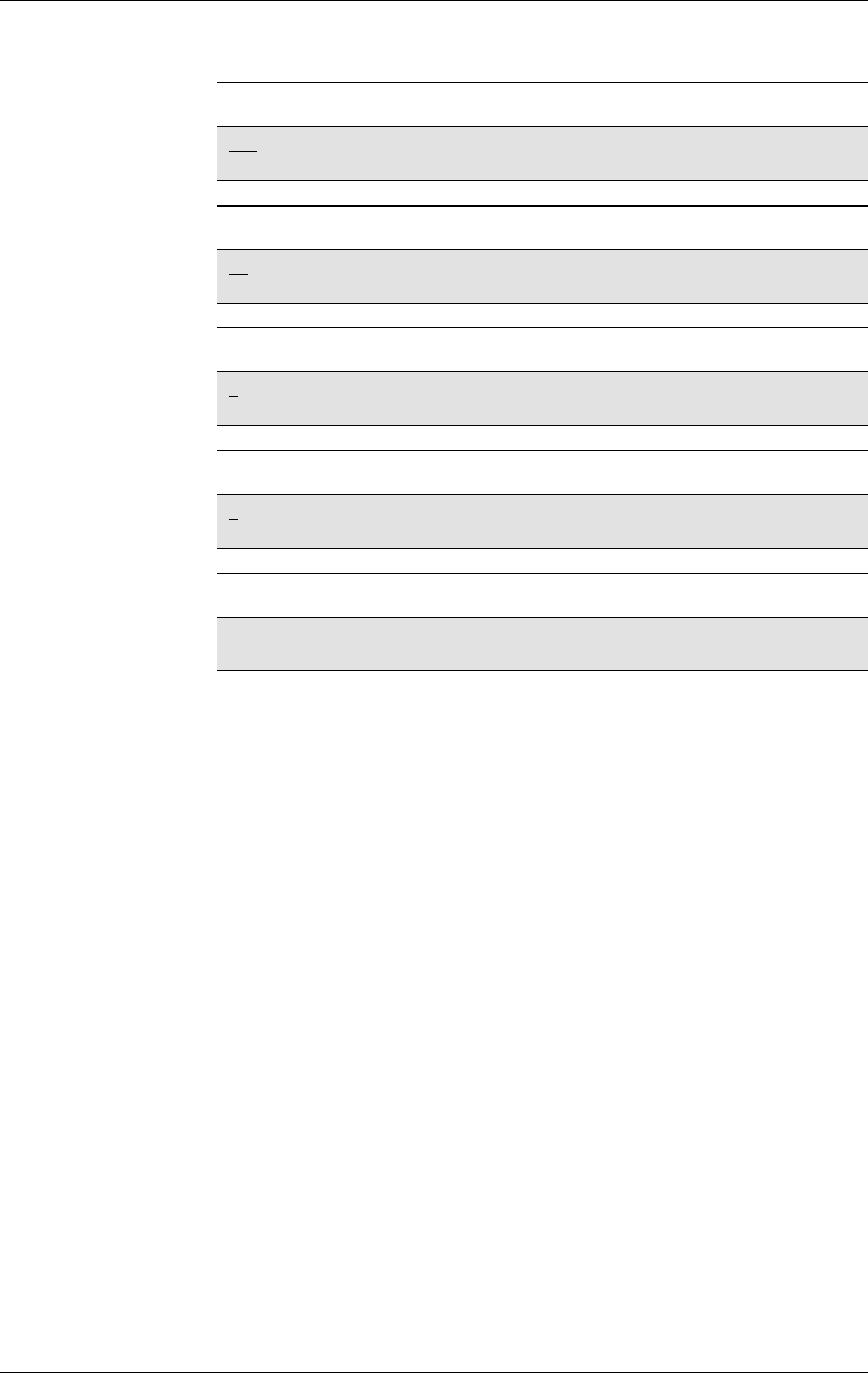
GM47/GM48 INTEGRATOR’S MANUAL
150 LZT 123 7263 R1A
<mws> Description
120
0 - 496 MS to IWF window size
<T1> Description
48
38 - 100 Acknowledgment timer T1 (*10ms)
<N2> Description
6
0 - 255 Re-transmission attempts N2
<T4> Description
5
3 - 255 Re-sequencing period T4 (*10ms)
<ver> Description
Integer RLP version. When version indication is not present,
<ver>=0 is assumed
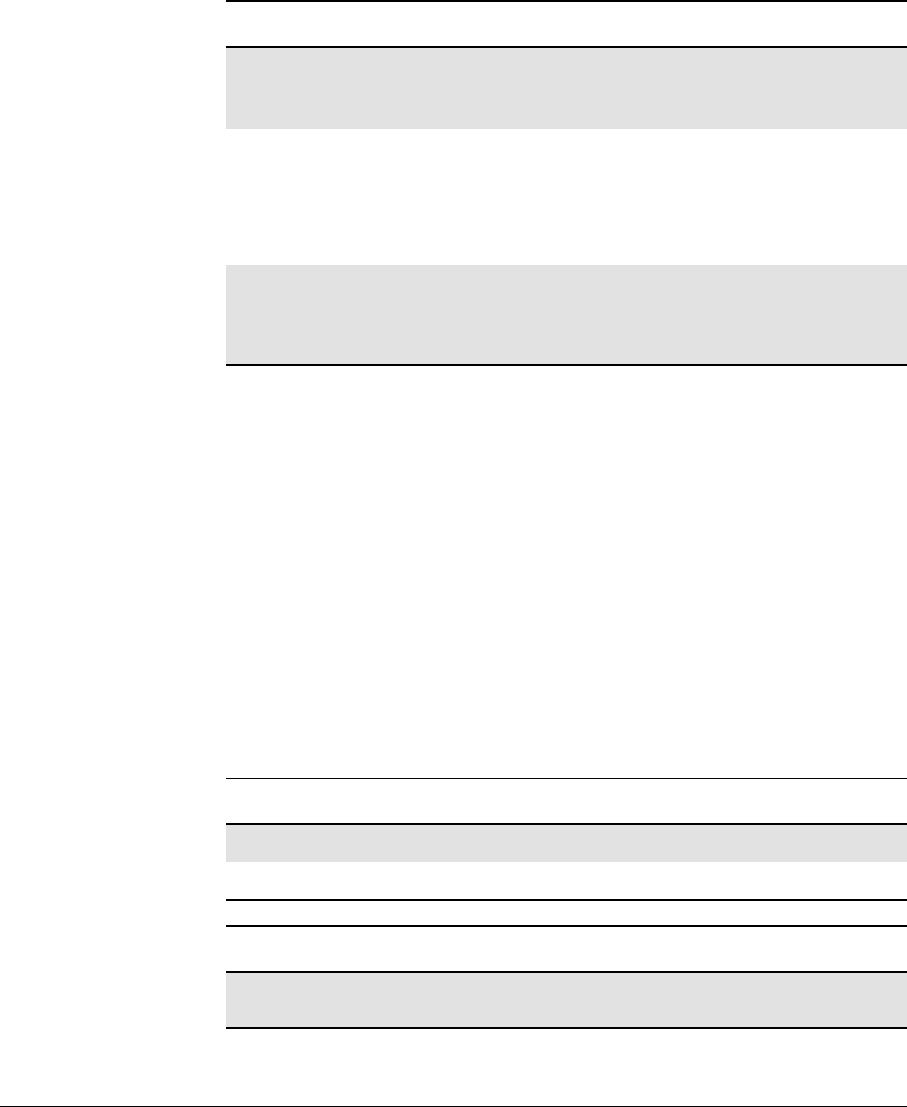
151
LZT 123 7263 R1A
6. Data - GPRS
6.1 AT+CGACT PDP Context Activate or Deactivate
Used to activate or deactivate the specified PDP context(s).
After the command has completed, the MS remains in V.250 command
state. If the MS is already in the requested state, the command is ignored
and OK is returned. If the requested state cannot be achieved, ERROR
or +CME: ERROR is returned. If the MS is not attached to the GPRS
service when the activation form of the command is executed, the MS
first performs a GPRS attach and then attempts to activate the specific
contexts.
If no <cid>s are specified the activation form of the command activates
all defined contexts.
If no <cid>s are specified the deactivation form of the command
deactivates all active contexts.
Description Command Possible Responses
Activate or deactivate
the specified PDP
context(s)
+CGACT=[<state>
[,<cid>[,<cid>[,…]]]] •+CMEERROR:<err>
•OK
•ERROR
Read the command +CGACT? • +CGACT: <cid>,
<state>[<CR><LF>+
CGACT: <cid>,
<state>[...]]
•OK
•ERROR
Test if the command is
supported +CGACT=? •+CGACT:(listof
supported <state>s)
•OK
•ERROR
<state> Description
0PDP context activation deactivated
1PDP context activation activated
<cid> Description
Integer type A numeric parameter which specifies a specific PDP
context definition
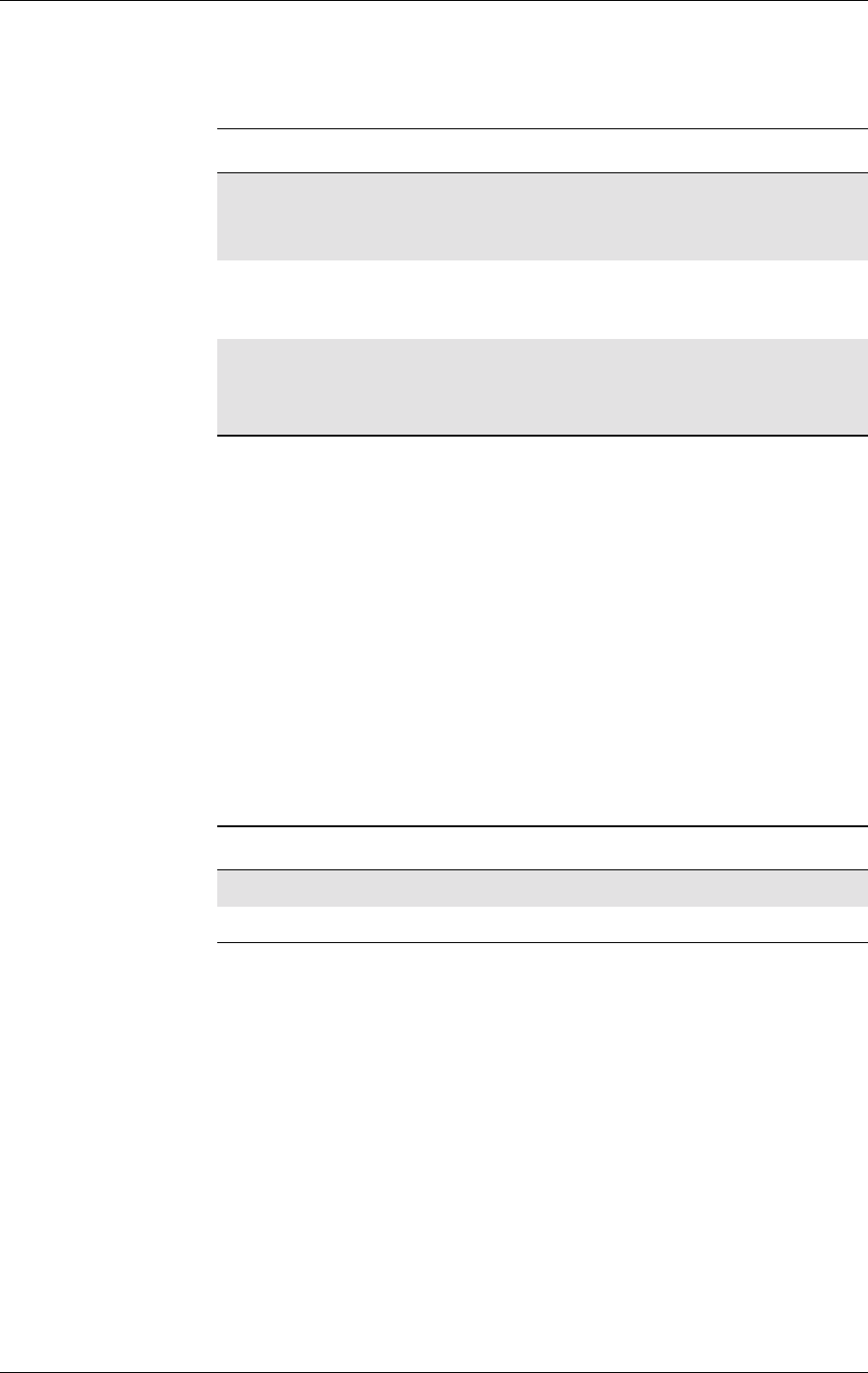
GM47/GM48 INTEGRATOR’S MANUAL
152 LZT 123 7263 R1A
6.2 AT+CGATT GPRS Attach or Detach
Used to attach the MS to, or detach the MS from, the GPRS/packet
domain service. After the command has completed, the MS remains in
V.250 command state. If the MS is already in the requested state, the
command is ignored and the OK response is returned. If the requested
state cannot be achieved, an ERROR or +CME ERROR response is
returned. Extended error responses (enabled by the +CMEE command)
are listed in subclause 1.2.3.
Any active PDP contexts will be automatically deactivated when the
attachment state changes to detached.
Note! This command has the characteristics of both the V.250 action and
parameter commands. Hence it has the read form in addition to the
execution/set and test forms.
Description Command Possible Responses
Attach or detach MS
to the GPRS/packet
domain/packet
domain service
+CGATT=[<state>] •+CMEERROR:<err>
•OK
•ERROR
Read the command +CGATT? • +CGATT: <state>
•OK
•ERROR
Test if the command is
supported +CGATT=? • +CGATT: (list of
supported <state>s)
•OK
•ERROR
<state> Description
0Detached
1Attached
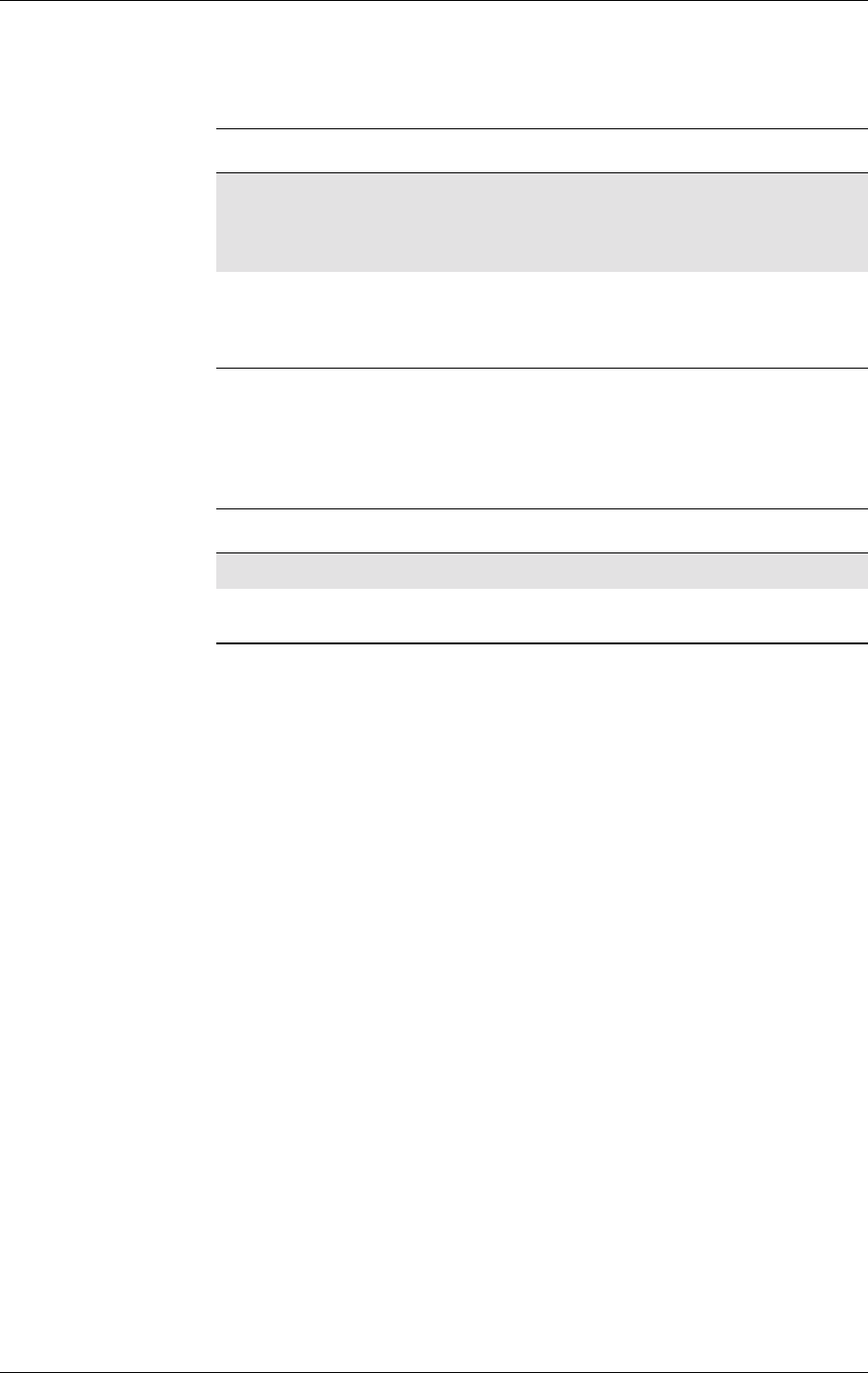
6. DATA - GPRS
153
LZT 123 7263 R1A
6.3 AT+CGDATA Enter Data State
Causes the MS to perform whatever actions are necessary to establish
communication between the TE and the network using one or more
GPRS/packet domain PDP types. This may include performing a
GPRS/packet domain attach and one or more PDP context activations.
Description Command Possible Responses
Establish GPRS/packet
domain connection +CGDATA=[<L2p>,[cid
[,cid>[,…]]]] •CONNECT
•ERROR
•OK
•ERROR
Test if the command is
supported +CGDATA=? •+CGDATA:(listof
supported <L2P>s)
•OK
•ERROR
<L2P> Description
PPP Point-to-point protocol for a PDP such as IP
M-xxxx Manufacturer specific protocol (xxx is an alphanumeric
string)
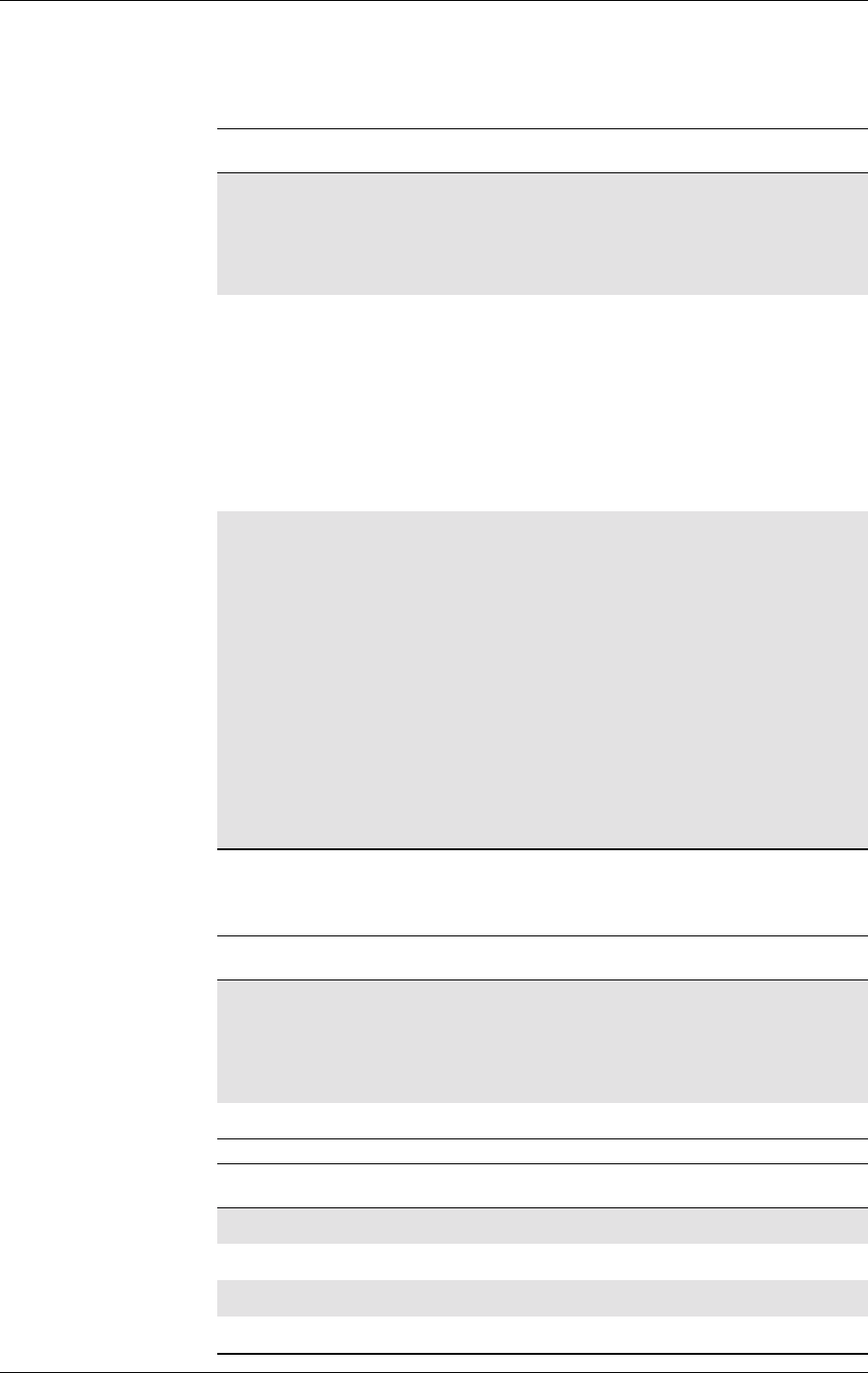
GM47/GM48 INTEGRATOR’S MANUAL
154 LZT 123 7263 R1A
6.4 AT+CGDCONT Define PDP Context
Specifies PDP context parameter values for a PDP context identified by
the (local) context identification parameter, <cid>.
Description Command Possible Responses
Select PDP
context
parameters
+CGDCONT=[<cid>
[,<PDP_type> [,<APN>
[,<PDP_addr>
[,<d_comp>
[,<h_comp> [,<pd1>
[,…[,pdN]]]]]]]]]
• +CME ERROR: <err>
•OK
• ERROR
Read the
command +CGDCONT? • +CGDCONT: <cid>,
<PDP_type>,<APN>,
<PDP_addr>,<d_comp>,
<h_comp>[,<pd1>[,…[,pdN]]]
[<CR><LF>+CGDCONT:
<cid>, <PDP_type>,<APN>,
<PDP_addr>,<d_comp>,
<h_comp>[,<pd1>[,…[,pdN]]]
[...]]
•OK
• ERROR
Test if the
command is
supported
+CGDCONT=? •+CGDCONT:(rangeof
supported <cid>s),
<PDP_type>,,,(list of
supported <d_comp>s),
(list of supported <h_comp>s)
[,(list of supported <pd1>s)
[,…[,(list of supported
<pdN>s)]]]
[<CR><LF>+CGDCONT:
(range of supported <cid>s),
<PDP_type>,,,(list of
supported <d_comp>s),
(list of supported <h_comp>s)
[,(list of supported
<pd1>s)[,…[,(list of supported
<pdN>s)]]] [...]]
•OK
• ERROR
<cid> Description
Integer type (PDP Context Identifier) a numeric parameter which
specifies a particular PDP context definition. The
parameter is local to the TE-MS interface and is used in
other PDP context-related commands. The range of
permitted values (minimum value = 1) is returned by the
test form of the command
1-10 Supported values. Ericsson specific
<PDP_type> Description
X25 ITU-T/CCITT X.25 layer 3. Not supported
IP Internet Protocol (IETF STD 5)
OSPIH Internet Hosted Octet Stream Protocol. Not supported
PPP Point to Point Protocol (IETF STD 51). Not supported
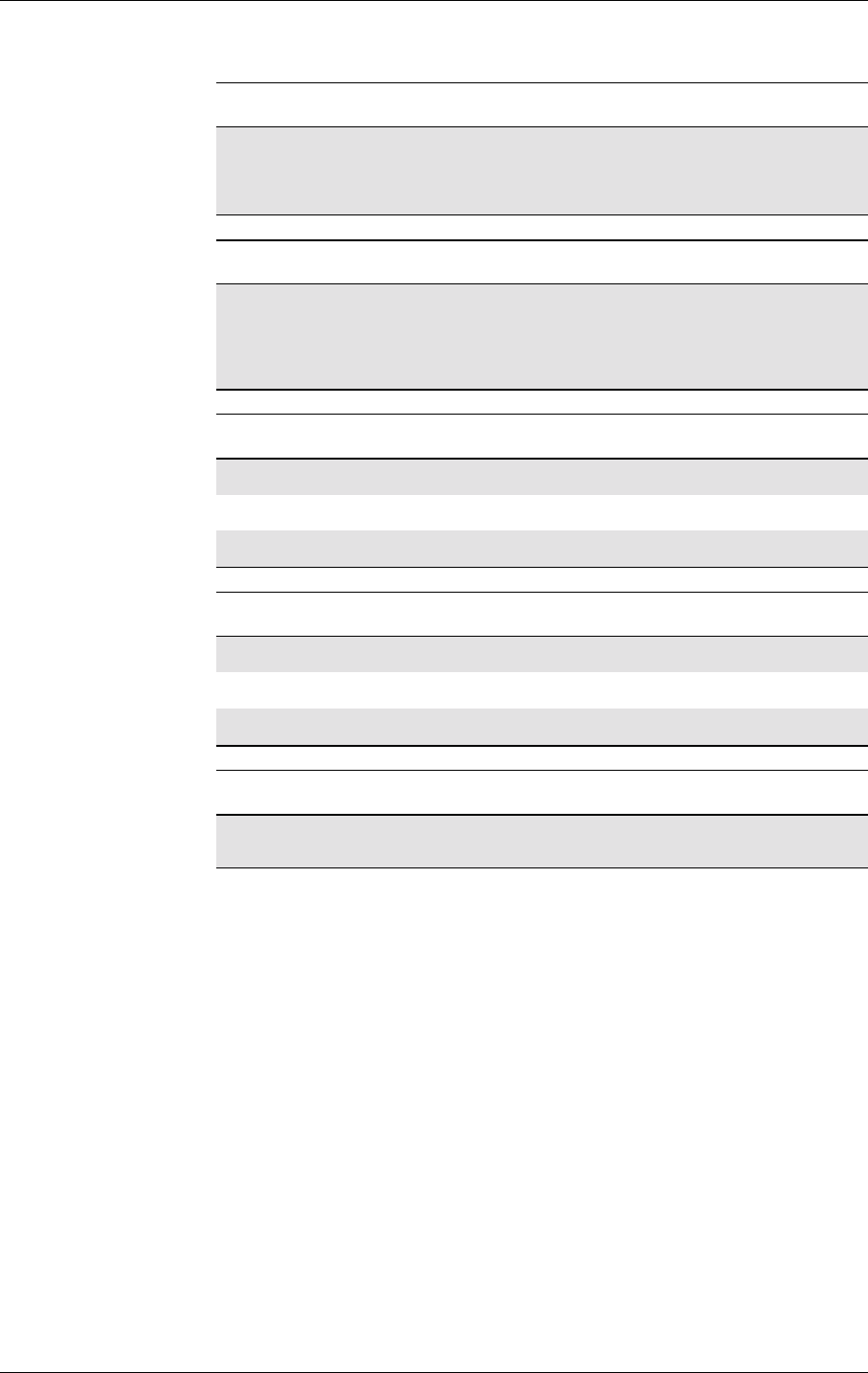
6. DATA - GPRS
155
LZT 123 7263 R1A
<APN> Description
String type (Access Point Name) a string parameter which is a logical
name that is used to select the GGSN or the external
packet data network. If the value is null or omitted, then
the subscription value will be requested
<PDP_address> Description
String type A string parameter that identifies the MS in the
address space applicable to the PDP. If the value is
null or omitted, then a value may be provided by
the TE during the PDP startup procedure or, failing
that, a dynamic address will be requested
<d_comp> Description
0PDP data compression OFF
1PDP data compression ON
2..255 Reserved
<h_comp> Description
0PDP header compression OFF
1PDP header compression ON
2..255 Reserved
<pdN> Description
String type Zero to N string parameters whose meanings are specific
to the <PDP_type>
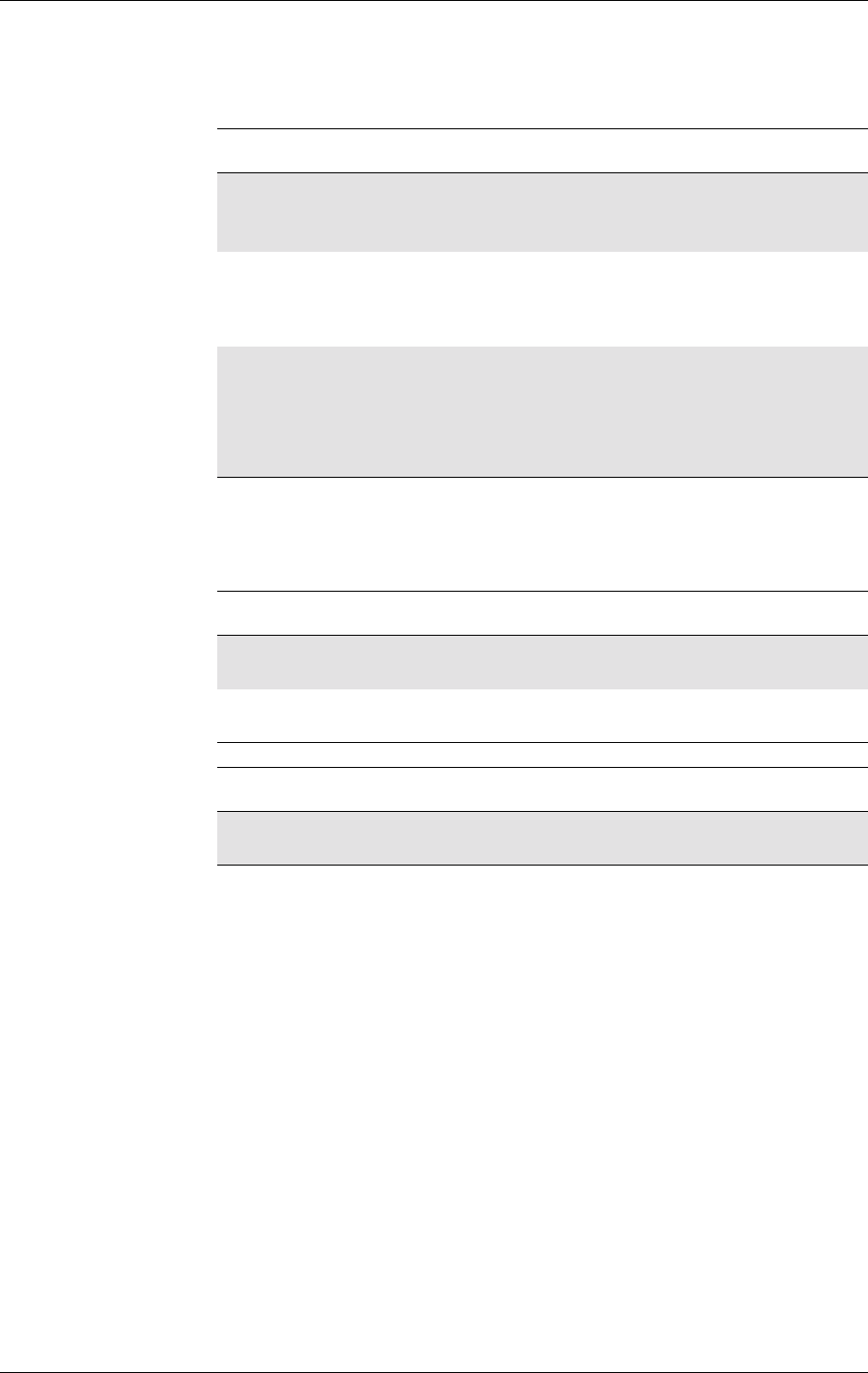
GM47/GM48 INTEGRATOR’S MANUAL
156 LZT 123 7263 R1A
6.5 AT+CGEREP GPRS Event Reporting
Enables or disables the sending of unsolicited result codes, +CGEV:
XXX from MS to TE in the case of certain events occurring in the
GPRS/packet domain MS or the network.
Description Command Possible Responses
Set command +CGEREP=[<mode>[,<
bfr>]] •+CMEERROR:<err>
•OK
•ERROR
Read the command +CGEREP? • +CGEREP:
<mode>,<bfr>
•OK
•ERROR
Test if the command is
supported +CGEREP=? • +CGEREP: (list of
supported
<mode>s),(list of
supported <bfr>s)
•OK
•ERROR
<mode> Description
0Buffer unsolicited result codes in the MS. No codes are
forwarded to the TE
1Discard unsolicited result codes when MS-TE link is
reserved; otherwise forward them directly to the TE
<bfr> Description
0MS buffer of unsolicited result codes defined within this
command is cleared when <mode> 1 or 2 is entered
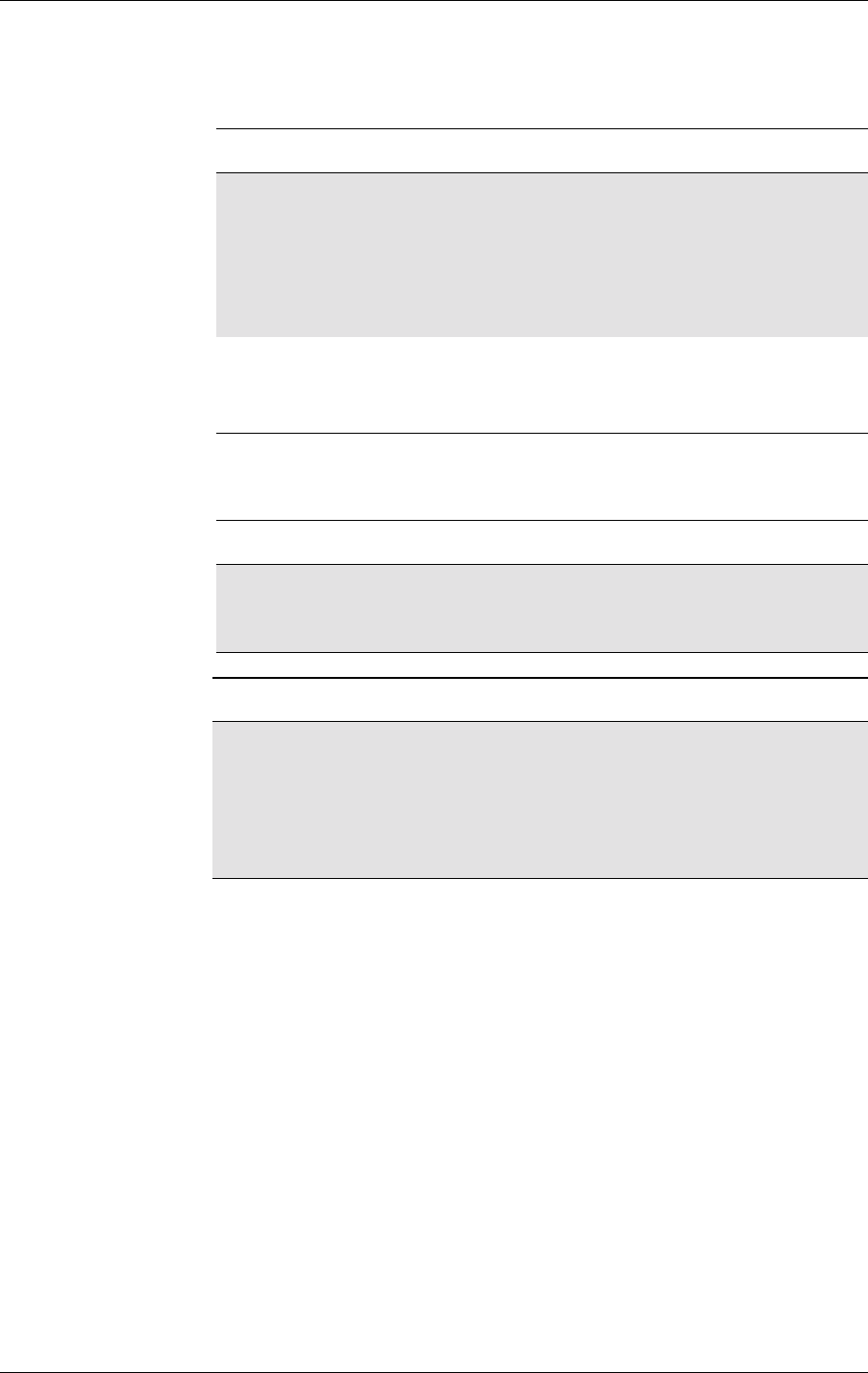
6. DATA - GPRS
157
LZT 123 7263 R1A
6.6 AT+CGPADDR Show PDP Address
Returns a list of PDP addresses for the specified context identifiers. The
test command returns a list of defined <cid>s.
Description Command Possible Responses
Show PDP addresses
for specified CIDs +CGPADDR=[<cid>
[,<cid> [,…]]] • +CGPADDR:
<cid>,<PDP_addr>
[<CR><LF>+CGPAD
DR:
<cid>,<PDP_addr>
[...]]
•OK
•ERROR
Test if the command is
supported +CGPADDR=? • +CGPADDR: (list of
defined <cid>s)
•OK
•ERROR
<cid> Description
Integer type Parameter which specifies a particular PDP context
definition (see +CGDCONT command). If no <cid> is
specified, the addresses for all defined contexts are
returned
<PDP_address> Description
String type A string that identifies the MS in the address space
applicable to the PDP. The address may be static or
dynamic. For a static address, it will be the one set by
the +CGDCONT and +CGDSCONT commands when
the context was defined. For a dynamic address it will
be the one assigned during the last PDP context
activation that used the context definition referred to
by <cid>. <PDP_address> is omitted if none is available
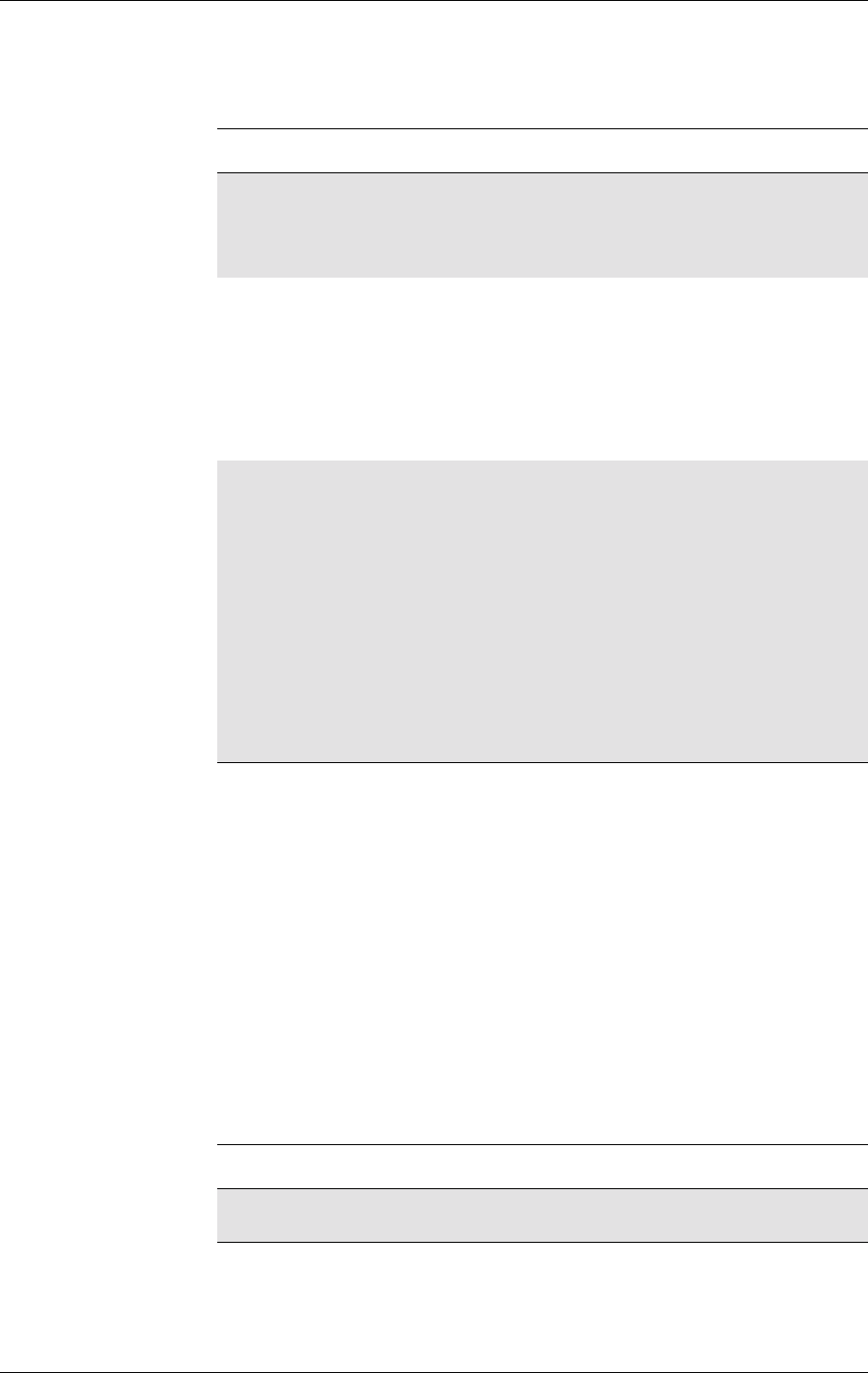
GM47/GM48 INTEGRATOR’S MANUAL
158 LZT 123 7263 R1A
6.7 AT+CGQMIN Quality of Service Profile (Minimum Acceptable)
Allows the TE to specify a minimum acceptable profile which is
checked by the MS against the negotiated profile returned in the
Activate PDP Context Accept message.
The set command specifies a profile for the context identified by the
(local) context identification parameter, <cid>. Since this is the same
parameter that is used in the +CGDCONT command, the +CGQMIN
command is effectively an extension to the +CGDCONT command.
The QoS profile consists of a number of parameters, each of which may
be set to a separate value.
A special form of the set command, +CGQMIN= <cid> causes the
minimum acceptable profile for context number <cid> to become
undefined. In this case no check is made against the negotiated profile.
Description Command Possible Responses
Set minimum
acceptable
profile
+CGQMIN=[<cid>
[,<precedence>
[,<delay> [,<reliability>
[,<peak>
[,<mean>]]]]]]
•+CMEERROR:<err>
•OK
•ERROR
Read the
command +CGQMIN? •+CGQMIN:<cid>,
<precedence>, <delay>,
<reliability>, <peak>,
<mean>[<CR><LF>+CGQMIN:
<cid>, <precedence>,
<delay>, <reliability>, <peak>,
<mean>[…]]
•OK
•ERROR
Test if the
command is
supported
+CGQMIN=? • +CGQMIN:<PDP_type>,(listof
supported <precedence>s),
(list of supported <delay>s),
(list of supported <reliability>s)
, (list of supported <peak>s),
(list of supported
<mean>s)[<CR><LF>+CGQMI
N: <PDP_type>, (list of
supported <precedence>s),
(list of supported <delay>s),
(list of supported <reliability>s)
, (list of supported <peak>s),
(list of supported
<mean>s)[…]]
•OK
•ERROR
<cid> Description
Integer type Parameter which specifies a particular PDP context
definition
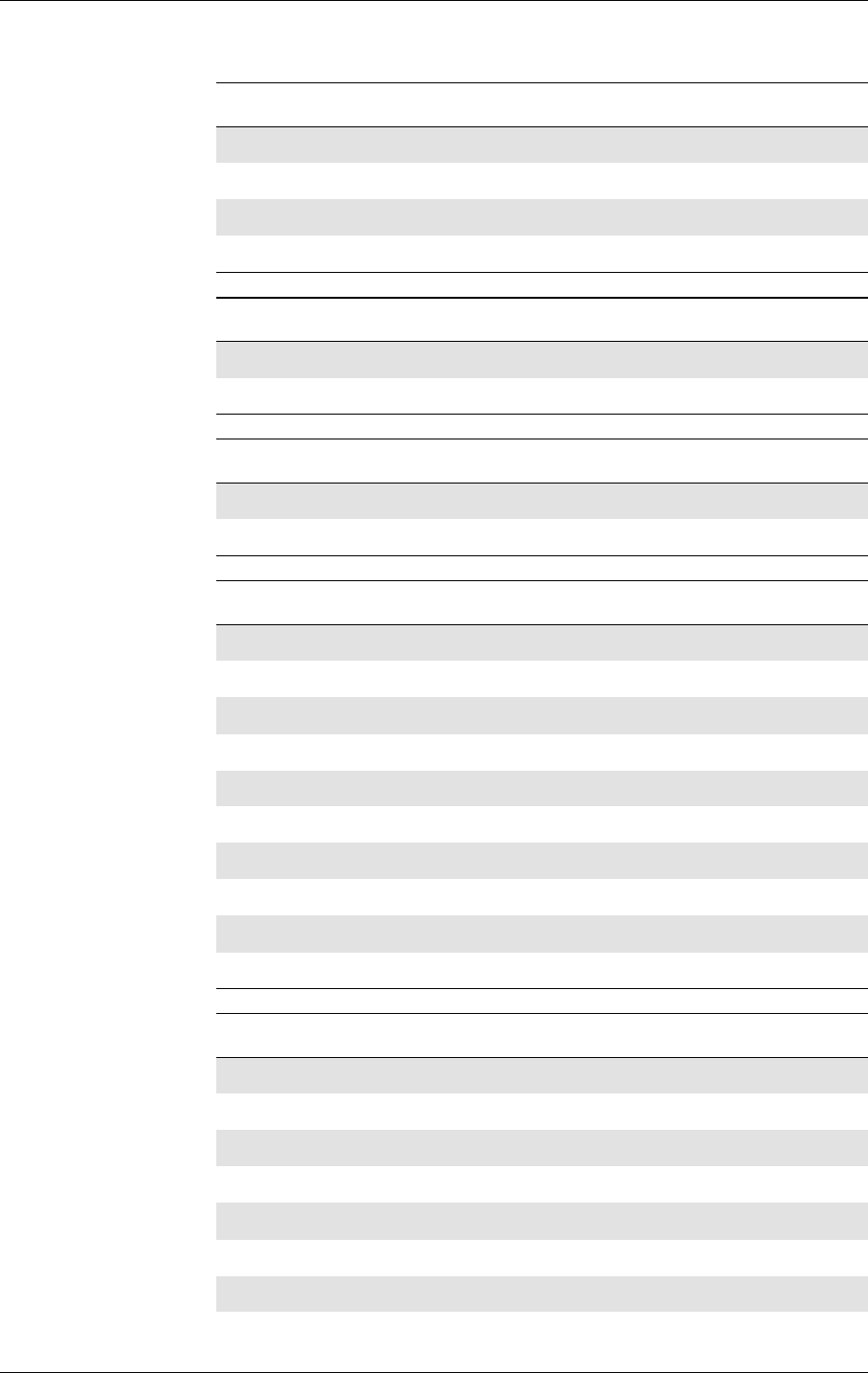
6. DATA - GPRS
159
LZT 123 7263 R1A
<precedence> Description
0Subscribed (from network) value used
1High priority
2Normal priority
3Low priority
<delay> Description
0Subscribed (from network) value used
1-4 Delay class
<reliability> Description
0Subscribed (from network) value used
1-5 Reliability class
<peak> Description
0Subscribed (from network) value used
1Up to 1 000 (8 kbits/s)
2Upto2000(16kbits/s)
3Upto4000(32kbits/s)
4Upto8000(64kbits/s)
5Up to 16 000 (128 kbits/s)
6Up to 32 000 (256 kbits/s)
7Up to 64 000 (512 kbits/s)
8Up to 128 000 (1 024 kbits/s)
9Up to 256 000 (2 048 kbits/s)
<mean> Description
0Subscribed (from network) value used
1Best effort
2100 (~0.22 bits/s)
3200 (~0.44 bits/s)
4500 (~1.11 bits/s)
51 000 (~2.2 bits/s)
62 000 (~4.4 bits/s)
75000(~11.1bits/s)

GM47/GM48 INTEGRATOR’S MANUAL
160 LZT 123 7263 R1A
6.8 AT+CGQREQ Quality of Service Profile (Requested)
Allows the TE to specify a quality of service profile that is used when
the MS sends an activate PDP context request message to the network.
810 000 (~22 bits/s)
920 000 (~44 bits/s)
10 50 000 (~111 bits/s)
11 100 000 (~0.22 kbits/s)
12 200 000 (~0.44 kbits/s)
13 500 000 (~1.11 kbits/s)
14 1 000 000 (~2.2 kbits/s)
15 2 000 000 (~4.4 kbits/s)
16 5 000 000 (~11.1 kbits/s)
17 10 000 000 (~22 kbits/s)
18 20 000 000 (~44 kbits/s)
31 50 000 000 (~111 kbits/s)
<mean> Description
Description Command Possible Responses
Set quality
of service
profile
+CGQREQ=[<cid>
[,<precedence>
[,<delay>
[,<reliability>
[,<peak>
[,<mean>]]]]]]
•+CMEERROR:<err>
•OK
•ERROR
Read the
command +CGQREQ? • +CGQREQ: <cid>, <precedence>,
<delay>, <reliability>, <peak>,
<mean>[<CR><LF>+CGQREQ:
<cid>, <precedence>, <delay>,
<reliability>, <peak>, <mean>[…]]
•OK
•ERROR
Test if the
command
is supported
+CGQREQ=? • +CGQREQ: <PDP_type>,
(list of supported <precedence>s),
(list of supported <delay>s),
(list of supported <reliability>s),
(list of supported <peak>s),
(list of supported <mean>s)
[<CR><LF>+CGQREQ: <PDP_type>,
(list of supported <precedence>s),
(list of supported <delay>s),
(list of supported <reliability>s),
(list of supported <peak>s),
(list of supported <mean>s)[…]]
•OK
•ERROR
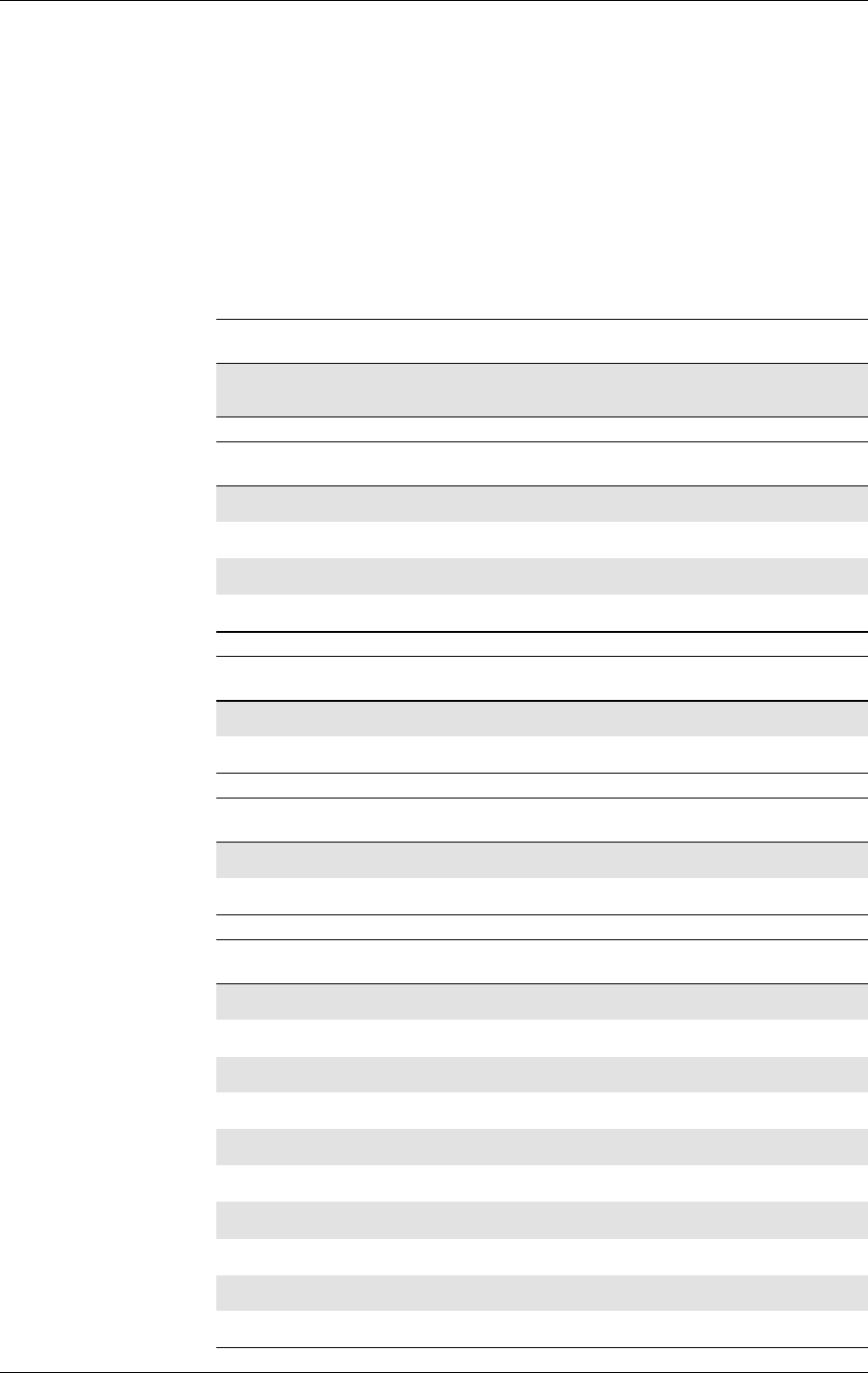
6. DATA - GPRS
161
LZT 123 7263 R1A
The set command specifies a profile for the context identified by the
(local) context identification parameter, <cid>. Since this is the same
parameter that is used in the +CGDCONT command, the +CGQREQ
command is effectively an extension to the +CGDCONT command.
The QoS profile consists of a number of parameters, each of which may
be set to a separate value.
A special form of the set command, +CGQREQ= <cid> causes the
requested profile for context number <cid> to become undefined.
<cid> Description
Integer type Parameter which specifies a particular PDP context
definition
<precedence> Description
0Subscribed (from network) value used
1High priority
2Normal priority
3Low priority
<delay> Description
0Subscribed (from network) value used
1-4 Delay class
<reliability> Description
0Subscribed (from network) value used
1-5 Reliability class
<peak> Description
0Subscribed (from network) value used
1Up to 1 000 (8 kbits/s)
2Up to 2 000 (16 kbits/s)
3Up to 4 000 (32 kbits/s)
4Up to 8 000 (64 kbits/s)
5Up to 16 000 (128 kbits/s)
6Up to 32 000 (256 kbits/s)
7Up to 64 000 (512 kbits/s)
8Up to 128 000 (1 024 kbits/s)
9Up to 256 000 (2 048 kbits/s)

GM47/GM48 INTEGRATOR’S MANUAL
162 LZT 123 7263 R1A
<mean> Description
0Subscribed (from network) value used
1Best effort
2100 (~0.22 bits/s)
3200 (~0.44 bits/s)
4500 (~1.11 bits/s)
51 000 (~2.2 bits/s)
62 000 (~4.4 bits/s)
75 000 (~11.1 bits/s)
810 000 (~22 bits/s)
920 000 (~44 bits/s)
10 50 000 (~111 bits/s)
11 100 000 (~0.22 kbits/s)
12 200 000 (~0.44 kbits/s)
13 500 000 (~1.11 kbits/s)
14 1 000 000 (~2.2 kbits/s)
15 2 000 000 (~4.4 kbits/s)
16 5 000 000 (~11.1 kbits/s)
17 10 000 000 (~22 kbits/s)
18 20 000 000 (~44 kbits/s)
31 50 000 000 (~111 kbits/s)
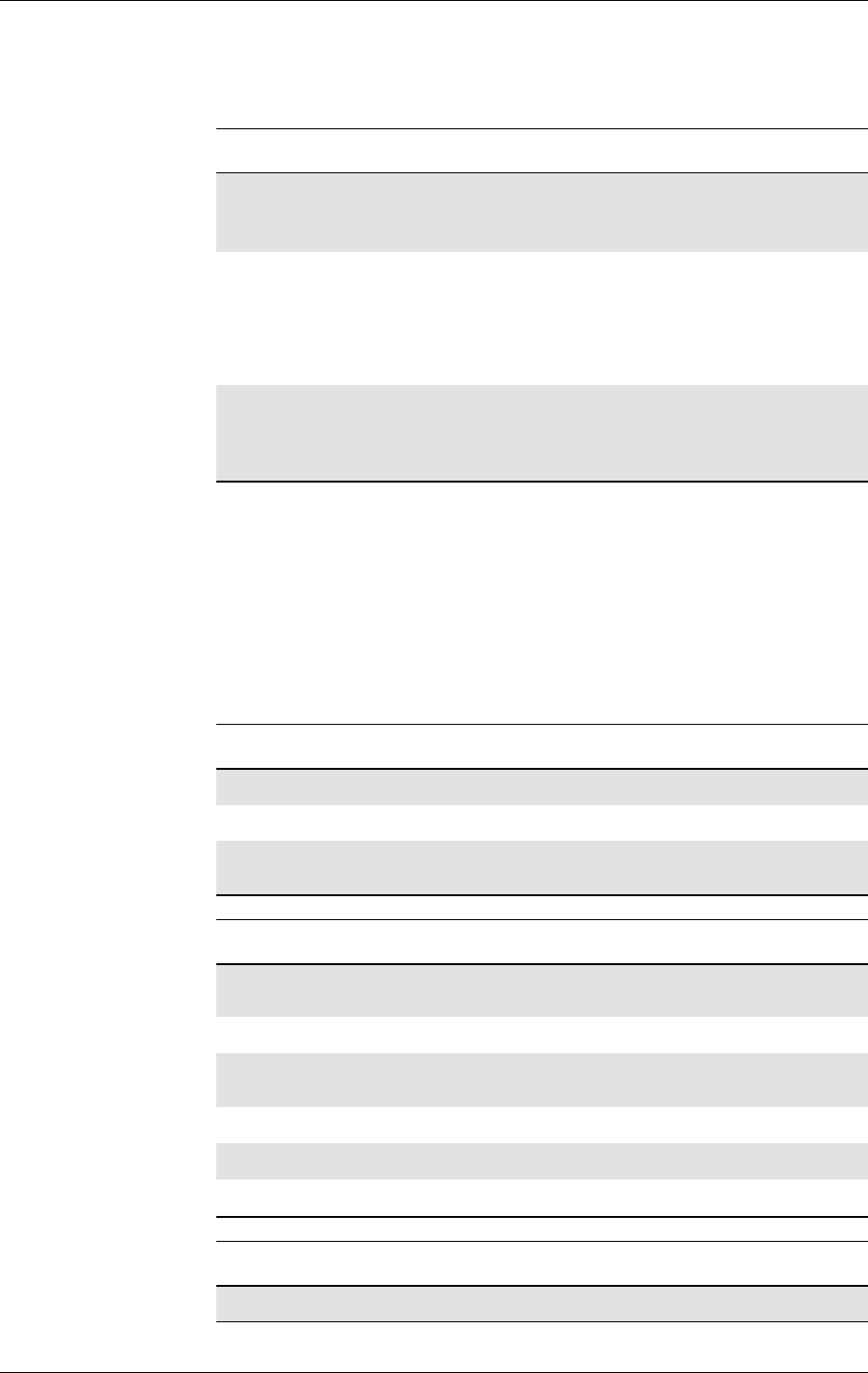
6. DATA - GPRS
163
LZT 123 7263 R1A
6.9 AT+CGREG GPRS Network Registration Status
Controls the presentation of an unsolicited result code +CGREG: <stat>
when <n>=1 and there is a change in the GPRS/packet domain network
registration status of the MS, or code +CGREG: <stat>[,<lac>,<ci>]
when <n>=2 and there is a change of the network cell.
Note! If the GPRS/Packet Domain MS also supports circuit mode services, the
+CGREG command and +CGREG: result code apply to the registration
status and location information for those services.
Description Command Possible Responses
Set command AT+CGREG=[<n>] •+CMEERROR:<err>
•OK
•ERROR
Read the current
settings AT+CGREG? •+CGREG:
<n>,<stat>[,<lac>,<c
i>]
•+CMEERROR:<err>
•OK
•ERROR
Test if the command is
supported AT+CGREG=? •+CGREG:(listof
supported <n>s)
•OK
•ERROR
<n> Description
0Disable network registration unsolicited result code
1Enable network registration unsolicited result code
2Enable network registration and location information
unsolicited result code
<stat> Description
0Notregistered,MSisnotsearchingforanewoperatorto
register with
1Registered, home network
2Not registered, but MS is searching for a new operator to
register with
3Registration denied
4Unknown
5Registered, roaming
<lac> Description
String type Two byte location area code in hexadecimal format
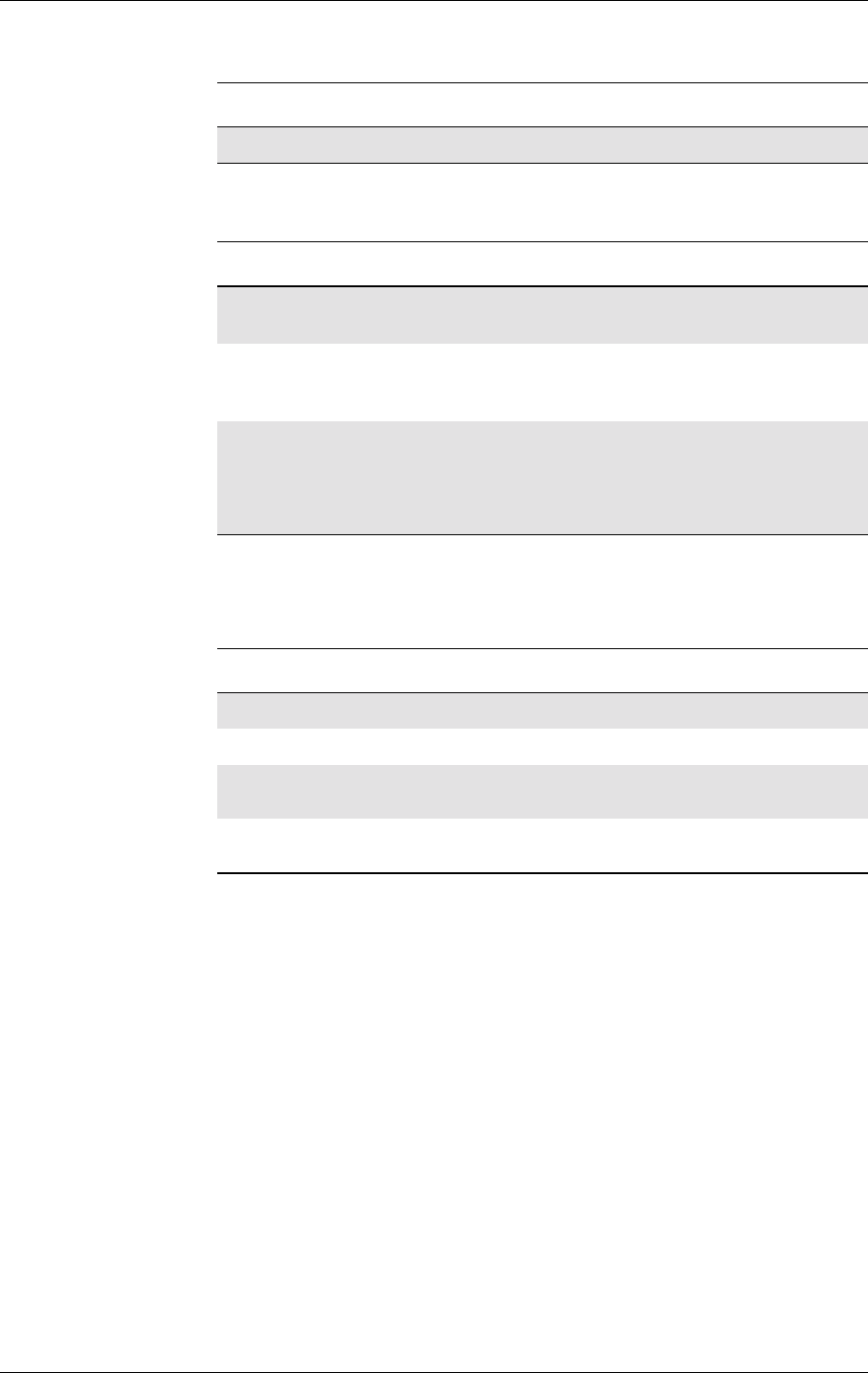
GM47/GM48 INTEGRATOR’S MANUAL
164 LZT 123 7263 R1A
6.10 AT+CGSMS Select Service for MO SMS Messages
Used to specify the service or service preference that the MS will use to
send MO SMS messages. The read command returns the currently
selected service or service preference.
<ci> Description
String type Two byte cell ID in hexadecimal format
Description Command Possible Responses
Set service or service
preference +CGSMS=[<service>] •OK
•ERROR
Read the command +CGSMS? • +CGSMS: <service>
•OK
•ERROR
Test if the command is
supported +CGSMS=? • +CGSMS: (list of
available
<service>s)
•OK
•ERROR
<services> Description
0GPRS/packet domain
1Circuit switched
2GPRS/packet domain preferred (use circuit switched if
GPRS/packet domain not available)
3Circuit switched preferred (use GPRS/packet domain if
circuit switched not available)
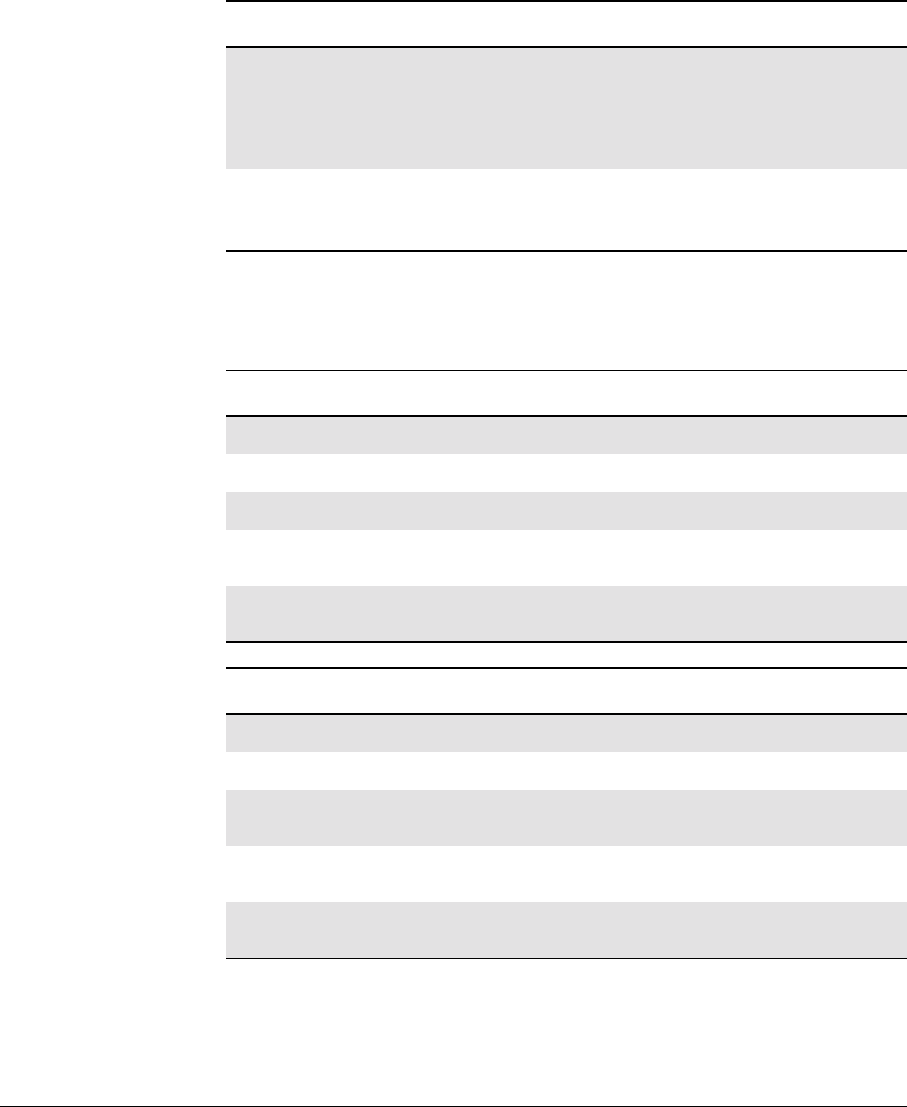
165
LZT 123 7263 R1A
7. Data - HSCSD
7.1 AT+CHSC HSCSD Current Call Parameters
Returns information about the current HSCSD call parameters, i.e. the
current number of receive and transmit timeslots, air interface user rate
and channel coding.
Description Command Possible Responses
Show current HSCSD
call parameters AT+CHSC • +CHSC:<rx>,<tx>,<aiur
>,<coding>
•+CMEERROR:<err>
•OK
•ERROR
Test if command is
supported AT+CHSC=? •+CMEERROR:<err>
•OK
•ERROR
<rx> Description
0NoHSCSDcallisactive.Seealsonotebelow
1The number of receive timeslots currently in use is 1
2The number of receive timeslots currently in use is 2
3The number of receive timeslots currently in use is 3. Not
supported
4The number of receive timeslots currently in use is 4. Not
supported
<tx> Description
0NoHSCSDcallisactive.Seealsonotebelow
1The number of transmit timeslots currently in use is 1
2The number of transmit timeslots currently in use is 2. Not
supported
3The number of transmit timeslots currently in use is 3. Not
supported
4The number of transmit timeslots currently in use is 4. Not
supported
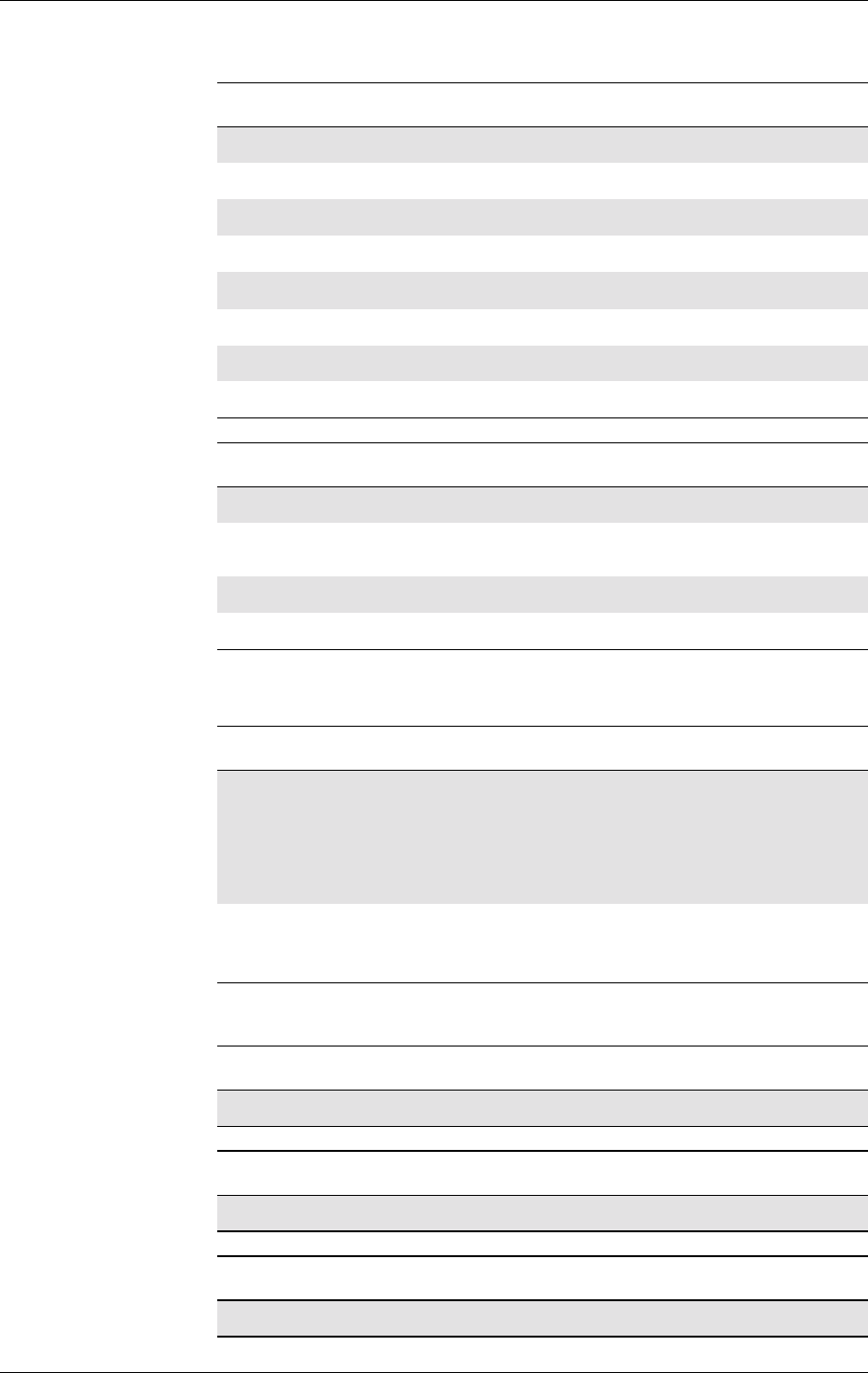
GM47/GM48 INTEGRATOR’S MANUAL
166 LZT 123 7263 R1A
7.2 AT+CHSD HSCSD Device Parameters
Shows information about HSCSD features supported by the ME/TA.
<aiur> Description
0NoHSCSDcallisactive.Seealsonotebelow.
1Current air interface user rate is 9.6 kbits/s
2Current air interface user rate is 14.4 kbits/s
3Current air interface user rate is 19.2 kbits/s
4Current air interface user rate is 28.8 kbits/s
5Current air interface user rate is 38.4 kbits/s. Not supported
6Current air interface user rate is 43.2 kbits/s. Not supported
7Current air interface user rate is 57.6 kbits/s. Not supported
<coding> Description
0No HSCSD call is active. See also note
1Current channel coding is 4.8 kbits/s (TCH/F4.8). Not
supported
4Current channel coding is 9.6 kbits/s (TCH/F9.6)
8Current channel coding is 14.4 kbits/s (TCH/F14.4)
Description Command Possible Responses
Show HSCSD features
supported by the ME/
TA
AT+CHSD •+CHSD:
<mclass>,<maxRx>,
<maxTx>,<sum>,<codings>
•+CMEERROR:<err>
•OK
•ERROR
Test if command is
supported AT+CHSD=? •+CMEERROR:<err>
•OK
•ERROR
<mclass> Description
2Multislot class is 2
<maxRx> Description
2Maximum number of receive timeslots that ME can use is 2
<maxTx> Description
1Maximum number of transmit timeslots that MEcan use is 1
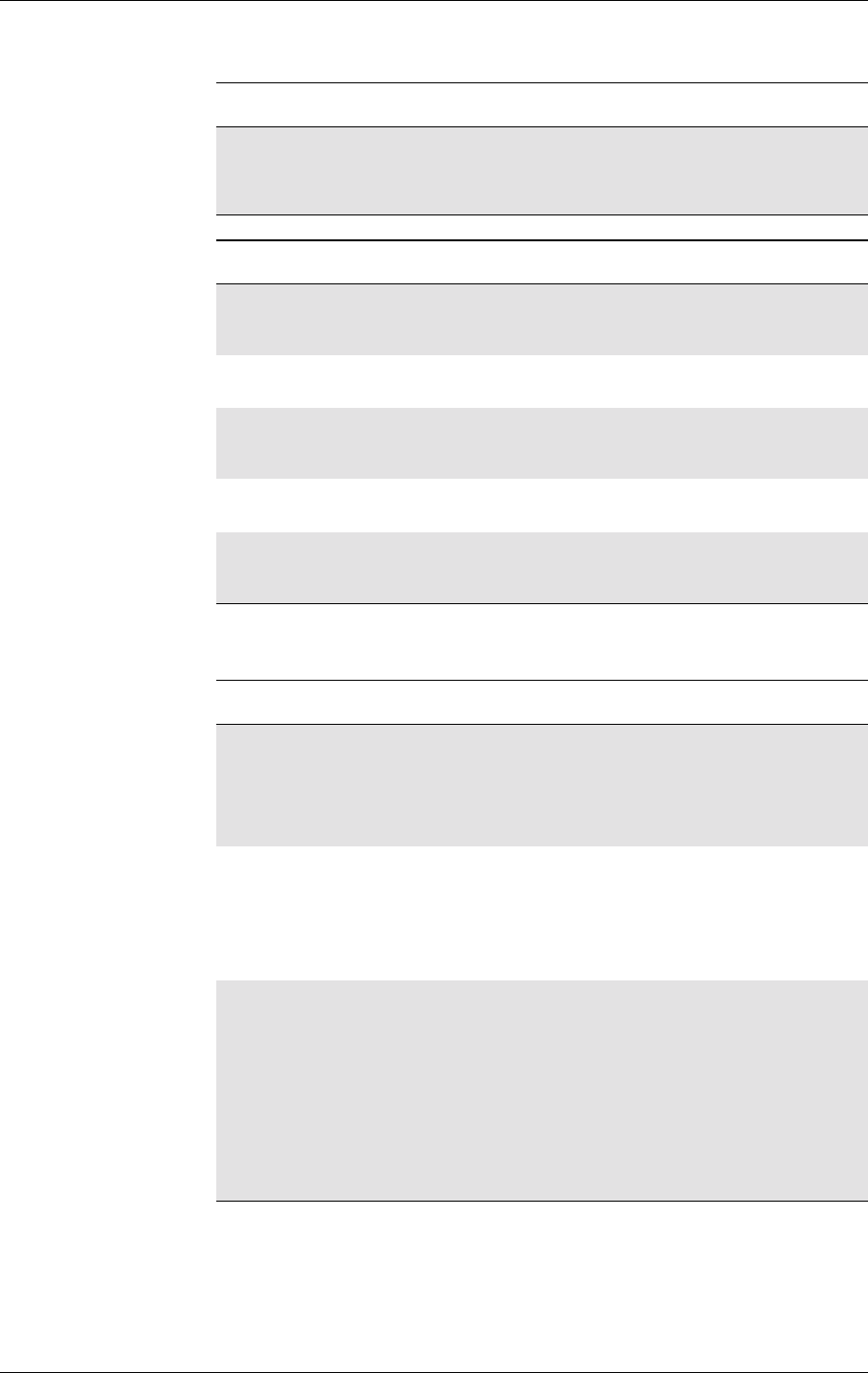
7. DATA - HSCSD
167
LZT 123 7263 R1A
7.3 AT+CHSN HSCSD Non Transparent Call Configuration
Controls parameters for non-transparent HSCSD calls. Changing
<topRx> or <codings> during a call does not affect the current call.
Changing <wAiur> or <wRx> affects the current call only if <topRx>
was non-zero when the call was established. When using the command
<sum> Description
3Total number of receive and transmit timeslots that ME
canuseatthesametimeis3(i.e.2+1).Thefollowing
applies in a HSCSD call: 2 (receive slots) + (transmit slots)
<sum>
<codings> Description
1Indicates that the accepted channel coding for the next
established non-transparent HSCSD call is 4.8 kbits/s only.
Not supported
4Indicates that the accepted channel coding for the next
established non-transparent HSCSD call is 9.6 kbits/s only
5Indicates that the accepted channel codings for the next
established non-transparent HSCSD call are both 4.8 kbits/
sand9.6kbits/s.Not supported
8Indicates that the accepted channel coding for the next
established non-transparent HSCSD call is 14.4 kbits/s only
12 Indicates that the accepted channel codings for the next
established non-transparent HSCSD call are both 9.6 kbits/
sand14.4kbits/s
Description Command Possible Responses
Set HSCSD
configuration. This
command is also used
during a call if new
<wAiur> and/or <wRx>
are/is desired
AT+CHSN=[<wAiur>[,<
wRx>[,<topRx>[,<codin
gs>]]]]
•+CMEERROR:<err>
•OK
•ERROR
Show current non-
transparent HSCSD
setting
AT+CHSN? •+CHSN:<wAiur>,
<wRx>, <topRx>,
<codings>
•+CMEERROR:<err>
•OK
•ERROR
Test if command is
supported and show
parameter ranges
AT+CHSN=? •+CHSN:(listof
supported
<wAiur>s), (list of
supported <wRx>s),
(list of supported
<topRx>s), (list of
supported
<codings>s)
•+CMEERROR:<err>
•OK
•ERROR
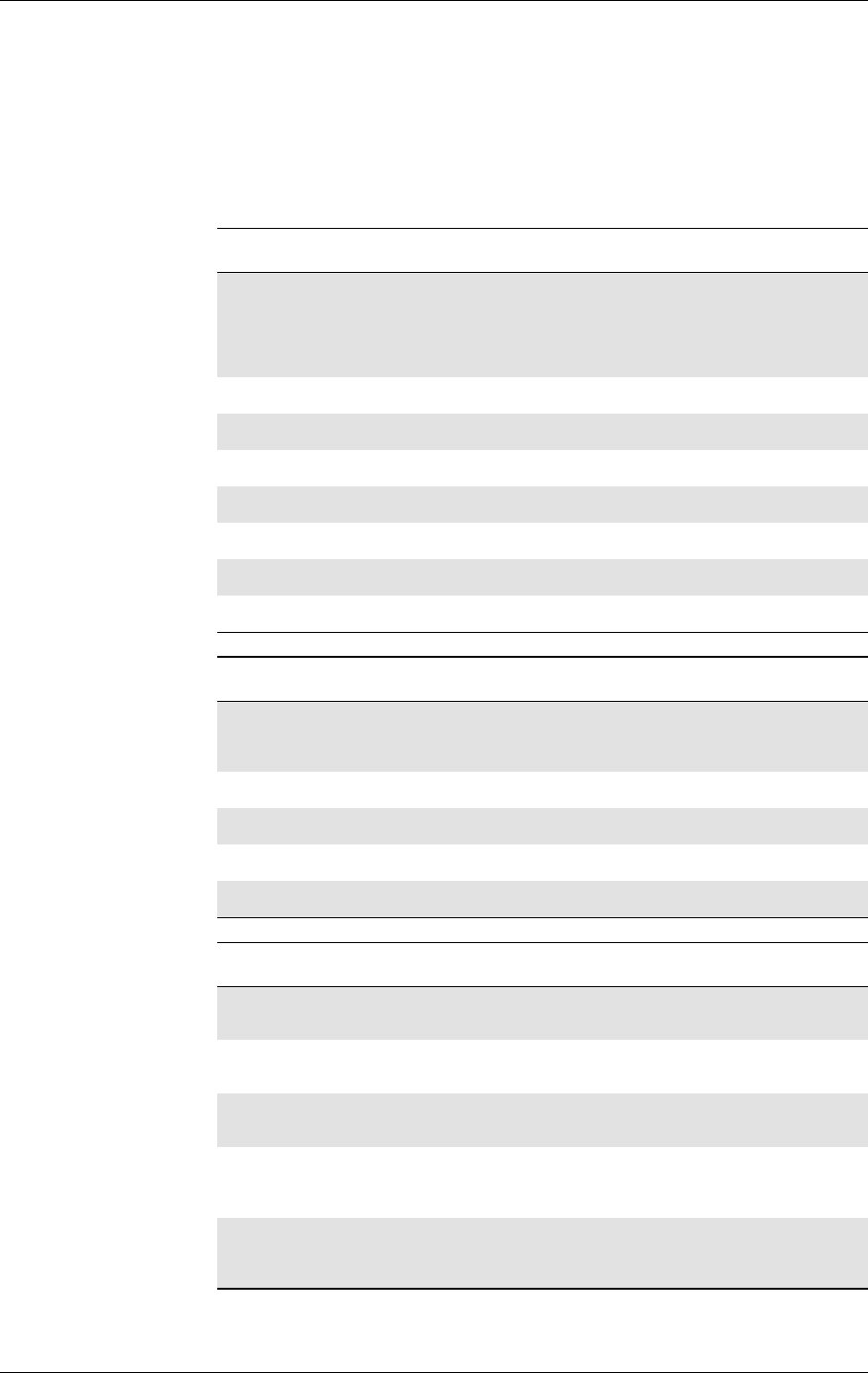
GM47/GM48 INTEGRATOR’S MANUAL
168 LZT 123 7263 R1A
in this way it comes in the “action” command category. This is what is
referred to as user initiated up- and down-grading in GSM 02.34 [4]
and GSM 03.34 [7].
Note! Recommended value for parameter <speed> in AT+CBST [11] is 0.
<wAiur> Description
0TA/ME shall calculate a proper number of receive
timeslots from currently selected fixed network user rate
(<speed> parameter from +CBST command, ref [11]) and
<codings>, and <wRx> (or <maxRx> from +CHSD
command if <wRx>=0) See note below.
1Wanted air interface user rate is 9.6 kbit/s
2Wanted air interface user rate is 14.4 kbit/s
3Wanted air interface user rate is 19.2 kbit/s
4Wanted air interface user rate is 28.8 kbit/s
5Wanted air interface user rate is 38.4 kbit/s. Not supported
6Wanted air interface user rate is 43.2 kbit/s. Not supported
7Wanted air interface user rate is 57.6 kbit/s. Not supported
<wRx> Description
0TA/ME shall calculate a proper number of receive
timeslots from currently selected <wAiur> and <codings>
Seenotebelow
1Wanted number of receive timeslots is 1
2Wanted number of receive timeslots is 2
3Wanted number of receive timeslots is 3. Not supported
4Wanted number of receive timeslots is 4. Not supported
<topRx> Description
0Indicates that the user is not going to change <wAiur>
and /or <wRx> during the next call
1Top value for <wRx> that user is going to request during
the next established non-transparent HSCSD call is 1
2Top value for <wRx> that user is going to request during
the next established non-transparent HSCSD call is 2
3Top value for <wRx> that user is going to request during
the next established non-transparent HSCSD call is 3. Not
supported
4Top value for <wRx> that user is going to request during
the next established non-transparent HSCSD call is 4. Not
supported
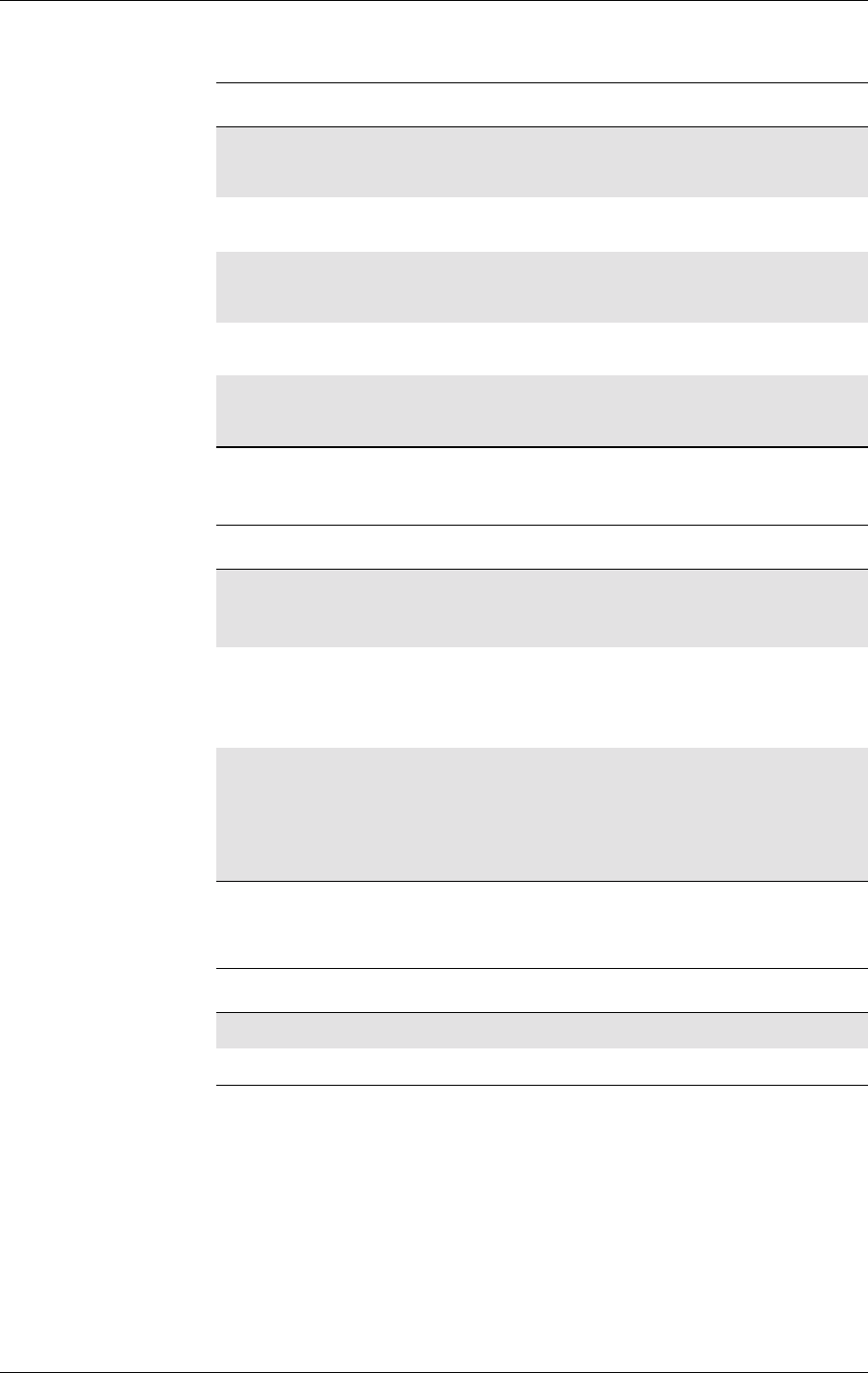
7. DATA - HSCSD
169
LZT 123 7263 R1A
7.4 AT+CHSR HSCSD Parameters Report
Sets the HSCSD parameter reporting on or off. If enabled, the
intermediate result code +CHSR is activated.
<codings> Description
1Indicates that the accepted channel coding for the next
established non-transparent HSCSD call is 4.8 kbit/s only.
Not supported
4Indicates that the accepted channel coding for the next
established non-transparent HSCSD call is 9.6 kbit/s only
5Indicates that the accepted channel codings for the next
established non-transparent HSCSD call are both 4.8 kbit/s
and 9.6 kbit/s. Not supported
8Indicates that the accepted channel coding for the next
established non-transparent HSCSD call is 14.4 kbit/s only
12 Indicates that the accepted channel codings for the next
established non-transparent HSCSD call are both 9.6 kbit/s
and 14.4 kbit/s
Description Command Possible Responses
Set HSCSD parameters
reporting on or off AT+CHSR=[<mode>] •+CMEERROR:<err>
•OK
•ERROR
Show current setting AT+CHSR? •+CHSR:<mode>
•+CMEERROR:<err>
•OK
•ERROR
Test if command is
supported and show
parameter range
AT+CHSR=? •+CHSR: (list of
supported
<modes>s)
•+CMEERROR:<err>
•OK
•ERROR
<mode> Description
0Disable reporting
1Enable reporting
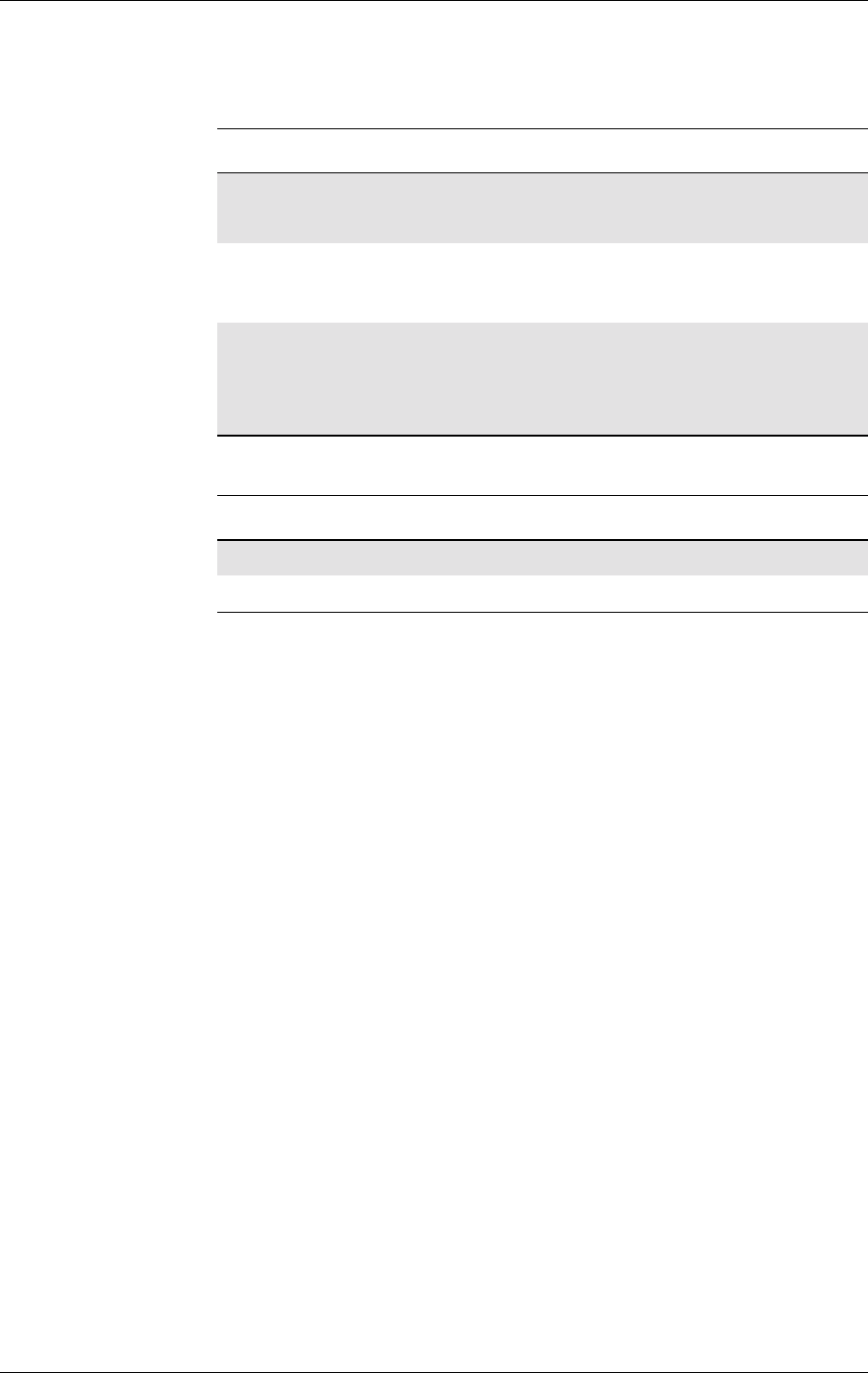
GM47/GM48 INTEGRATOR’S MANUAL
170 LZT 123 7263 R1A
7.5 AT+CHSU HSCSD Automatic User Initiated Upgrading
Enables or disables the HSCSD automatic user-initiated upgrade.
Description Command Possible Responses
Set HSCSD automatic
user initiated
upgrading on or off
AT+CHSU=[<mode>] •OK
•ERROR
Show current setting AT+CHSU? •+CHSU=<mode>
•OK
•ERROR
Test if command is
supported and show
parameter range
AT+CHSU=? •+CHSU:(listof
supported
<modes>s)
•OK
•ERROR
<mode> Description
0Disable use of UP bit for upgrading
1Enable use of UP bit for upgrading
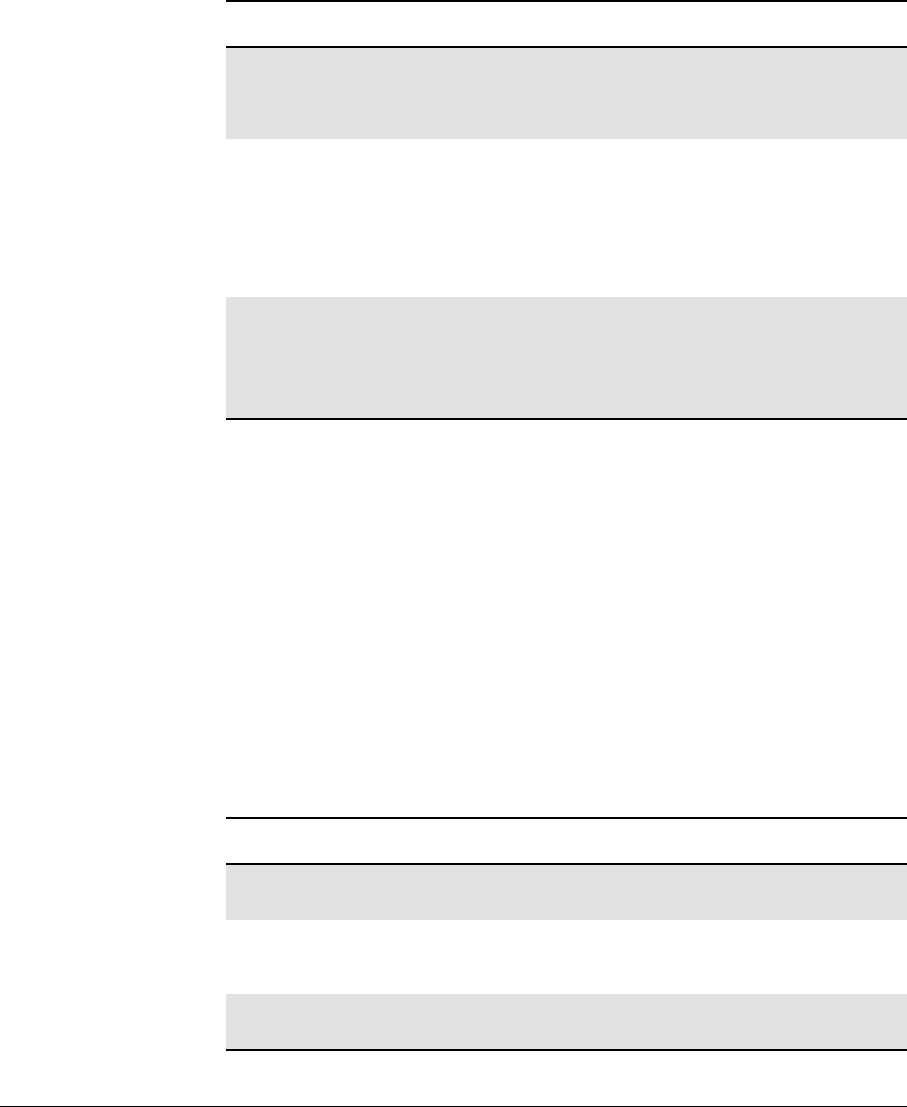
171
LZT 123 7263 R1A
8. Data - WAP
8.1 AT*EWBA Ericsson WAP Bookmark Add
This command adds or deletes a bookmark in the list of bookmarks.
To add a bookmark the <bmix> parameter should be set to 0. The
bookmark is always added to the last position of the bookmark list.
If the <title> parameter is omitted the bookmark title is set to the first
<ntitle> number of characters of the <URL>.
If the <URL> parameter exceeds <nURL> number of characters, the
bookmark URL is truncated to the last ‘/’ character among the last
<nURL> number of characters.
To delete a bookmark from the list, the <bmix> parameter should be set
to a value greater than 0. The <URL> and the <title> parameters must
be omitted.
Description Command Possible Responses
Add or delete
abookmarkin
the list of
bookmarks
AT*EWBA=<bmix>
[,<URL>[,<title>]] • +CME ERROR: <err>
•OK
•ERROR
List content of
bookmark list AT*EWBA? •*EWBA:
<bmix1>,<URL1>,<title1>[<CR><L
F>*EWBA:
<bmix2>,<URL2>,<title2>[…]]
• +CME ERROR: <err>
•OK
•ERROR
Show if the
command is
supported.
AT*EWBA=? • *EWBA: (list of supported
<bmix>s),<nURL>,<ntitle>
• +CME ERROR: <err>
•OK
•ERROR
<bmix> Description
0Add the bookmark to the last position in the list of
bookmarks. This value is only valid for adding bookmarks
1Reserved. The index 1 is reserved for the bookmark to
EricssonMobileInternetandshouldnotbealteredor
deleted
2..25 Index to list of bookmarks. These values are only valid for
deleting bookmarks
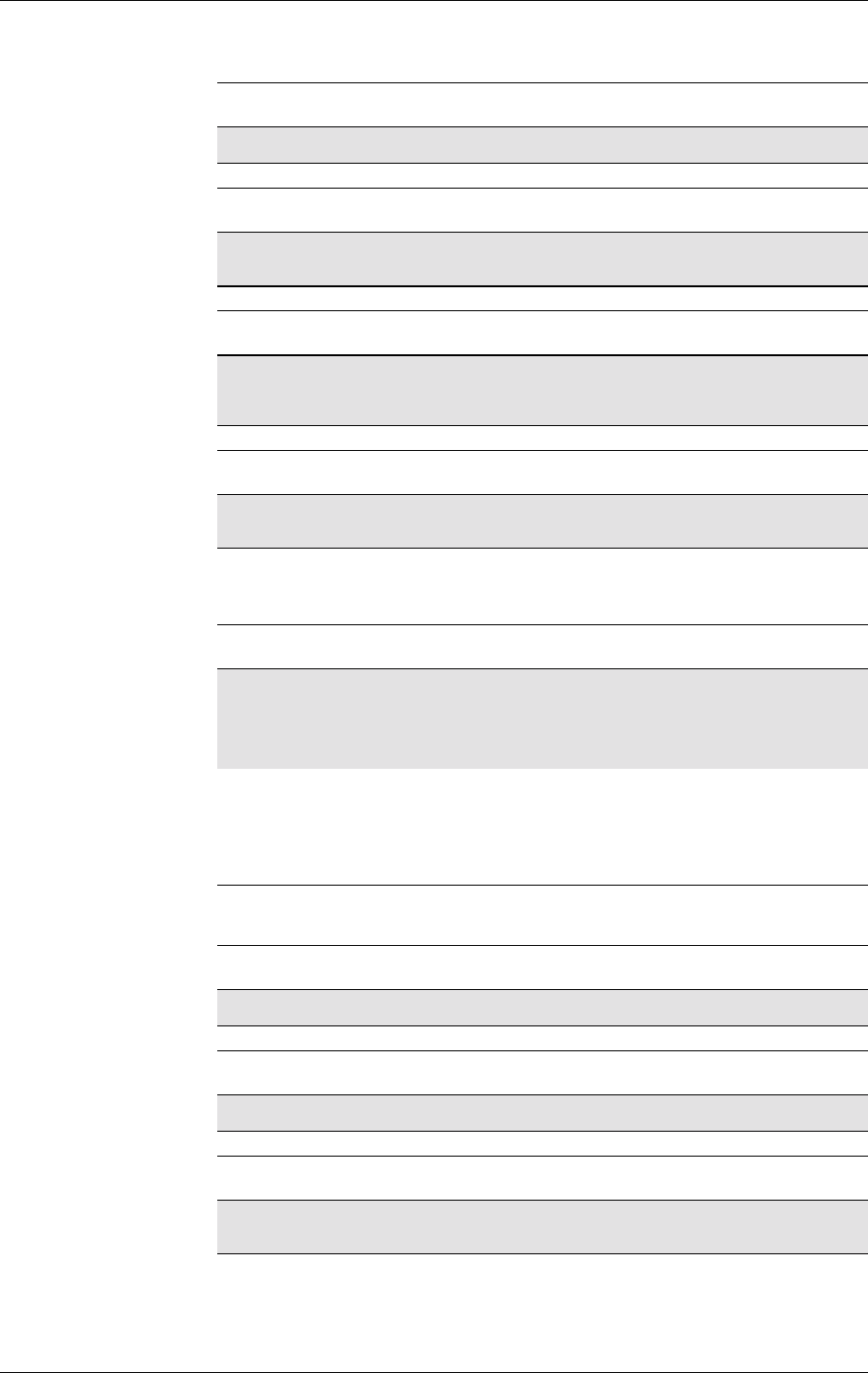
GM47/GM48 INTEGRATOR’S MANUAL
172 LZT 123 7263 R1A
8.2 AT*EWBR Ericsson WAP Bookmark Read
This command reads a bookmark in the bookmark list.
<URL> Description
String type The URL representing the bookmark
<nURL> Description
Integer
number Maximum length of the <URL>-parameter
<title> Description
String type The title representing the bookmark. If omitted the
bookmark title is set equal to the first <ntitle> number of
characters of the <URL>
<ntitle> Description
Integer
number Maximum length of the <title>-parameter
Description Command Possible Responses
Read bookmark in list
of bookmarks AT*EWBR=<bmix> • *EWBR: <URL>,<title>
•+CMEERROR:<err>
•OK
•ERROR
Show if the command
is supported AT*EWBR=? •*EWBR:(listof
supported <bmix>s)
•+CMEERROR:<err>
•OK
•ERROR
<bmix> Description
Integer type Index to the bookmark in the bookmark list
<URL> Description
String type The URL representing the bookmark
<title> Description
String type The title representing the bookmark. If omitted the
bookmark title is set equal to the URL
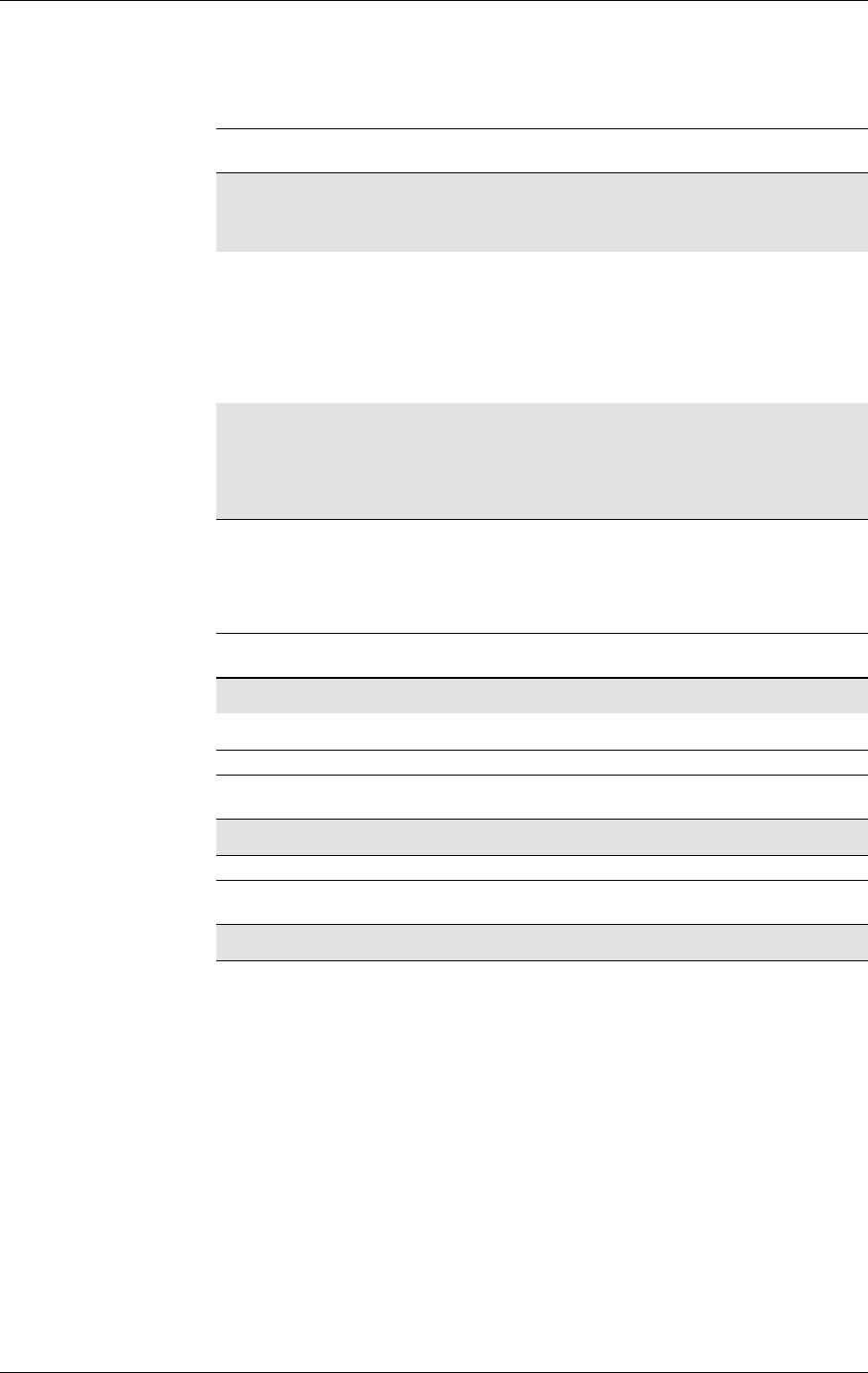
8. DATA - WAP
173
LZT 123 7263 R1A
8.3 AT*EWCG Ericsson WAP CSD Gateway
Sets the primary and secondary gateways for the WAP browser used
when CSD is the preferred bearer. The gateways are either an IP address
or a URL on the network where the gateway can be reached.
Description Command Possible Responses
Set primary and
secondary WAP
gateway
AT*EWCG=<primsec>,
<gateway> •+CMEERROR:<err>
•OK
•ERROR
Read primary
and secondary
WAP gateway
AT*EWCG? •*EWCG:
<primsec1>,<gateway1>[<
CR><LF>*EWCG:
<primsec2>,<gateway2>]
•+CMEERROR:<err>
•OK
•ERROR
Show if the
command is
supported
AT*EWCG=? • *EWCG: (list of supported
<primsec>s),<ngateway>
•+CMEERROR:<err>
•OK
•ERROR
<primsec> Description
1Set primary gateway
2Set secondary gateway. Not supported
<gateway> Description
String type Gateway address
<ngateway> Description
Integer type Maximum length of gateway address
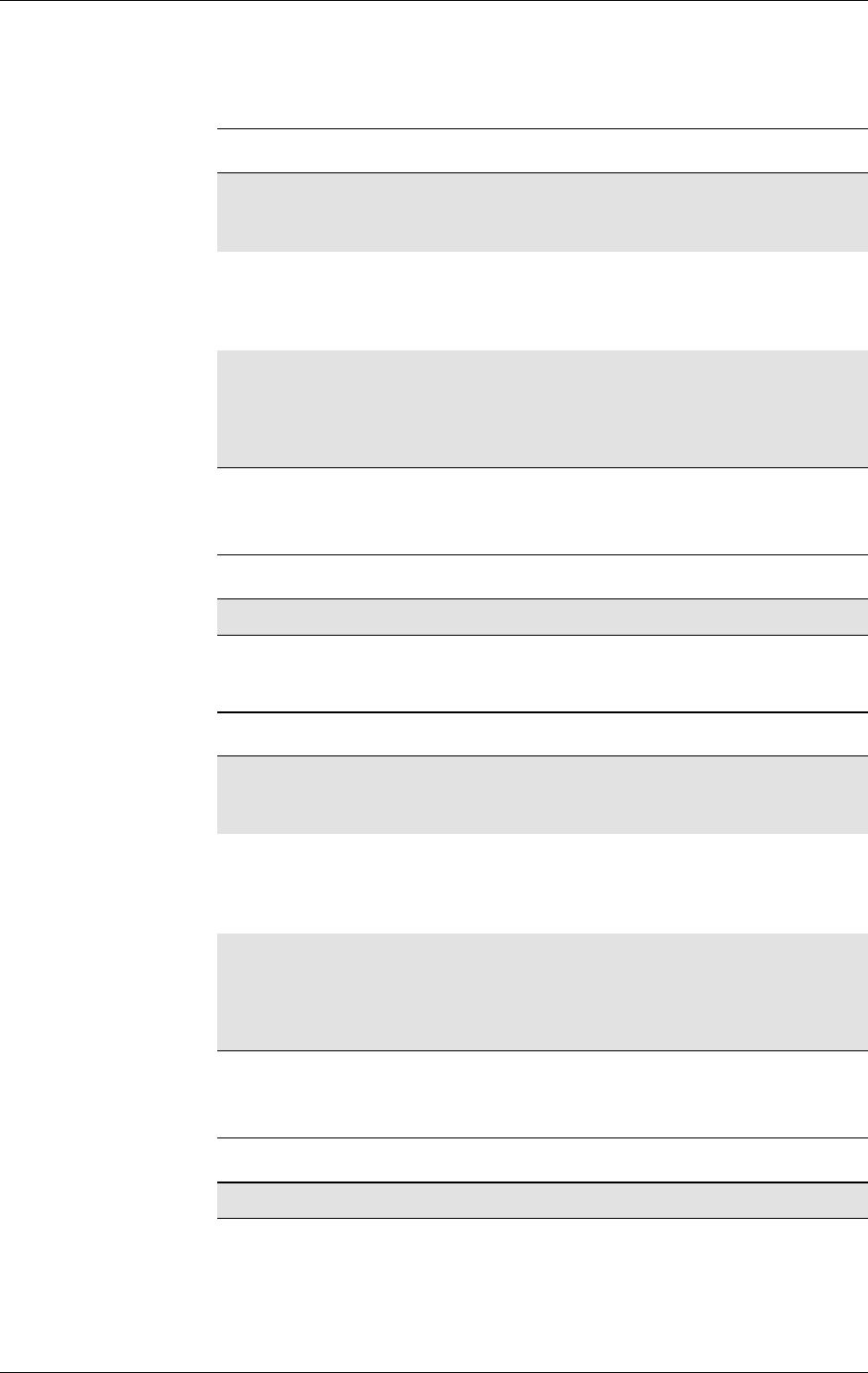
GM47/GM48 INTEGRATOR’S MANUAL
174 LZT 123 7263 R1A
8.4 AT*EWCT Ericsson WAP Connection Timeout
Sets the timeout period used when connecting to a WAP supplier, i.e.
the time the WAP browser will wait for a CSD call to be established.
8.5 AT*EWDT Ericsson WAP Download Timeout
This command sets the server response timeout period used when
downloading a WAP page.
Description Command Possible Responses
Set timeout for WAP
download AT*EWCT=<sec> •+CMEERROR:<err>
•OK
•ERROR
Read current setting AT*EWCT? •*EWCT:<sec>
•+CMEERROR:<err>
•OK
•ERROR
Show if the command
is supported AT*EWCT=? • *EWCT: (list of
supported <sec>s)
•+CMEERROR:<err>
•OK
•ERROR
<sec> Description
Integer type Number of seconds
Description Command Possible Responses
Set timeout for WAP
download AT*EWDT=<sec> •+CMEERROR:<err>
•OK
•ERROR
Read current setting AT*EWDT? •*EWDT:<sec>
•+CMEERROR:<err>
•OK
•ERROR
Show if the command
is supported AT*EWDT=? •*EWDT:(listof
supported <sec>s)
•+CMEERROR:<err>
•OK
•ERROR
<sec> Description
Integer type Number of seconds
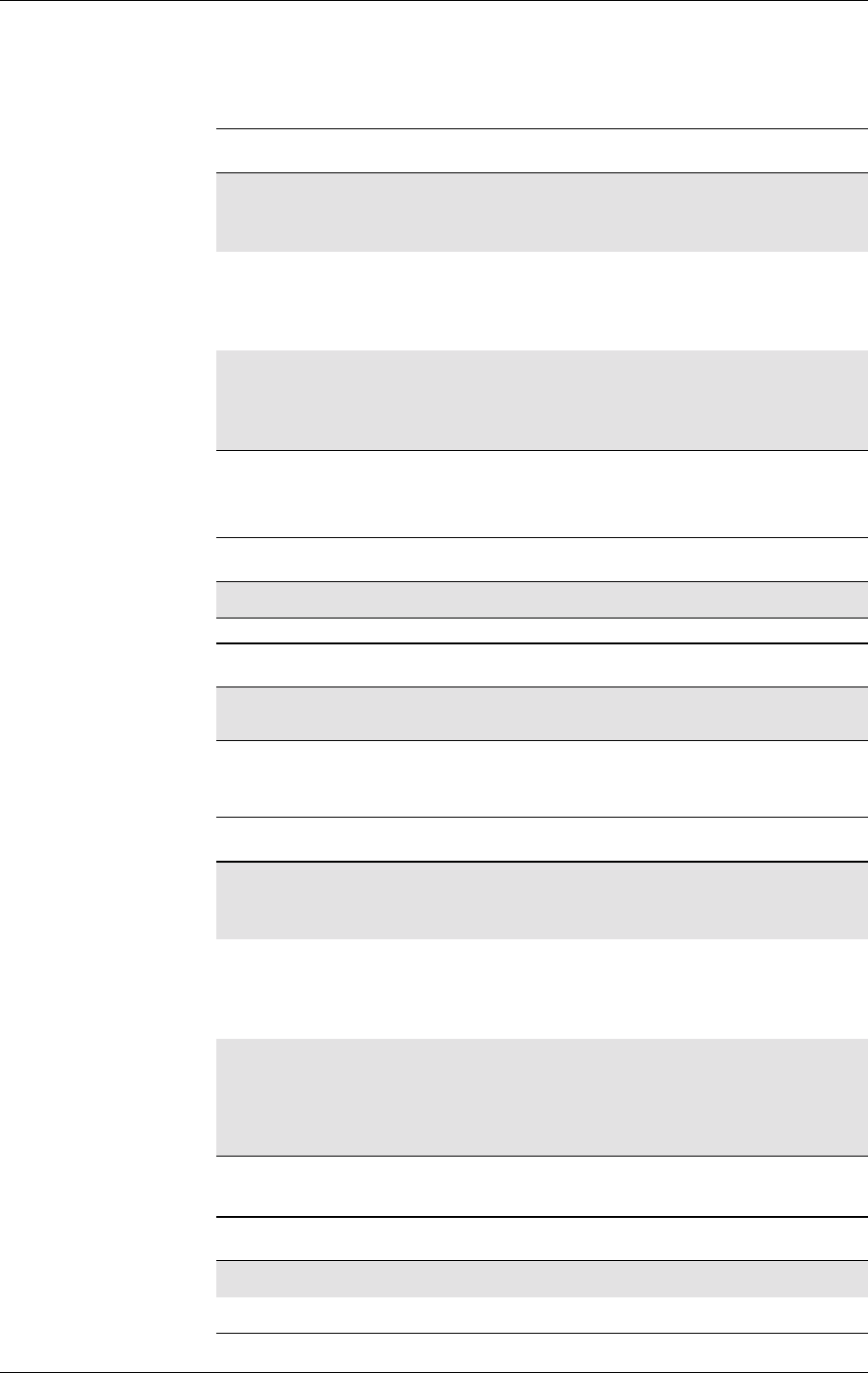
8. DATA - WAP
175
LZT 123 7263 R1A
8.6 AT*EWHP Ericsson WAP Homepage
This command sets the homepage (i.e. the start page) for the WAP
browser.
8.7 AT*EWIL Ericsson WAP Image Load
Enables and disables image download in the WAP browser.
Description Command Possible Responses
Set URL to WAP
homepage AT*EWHP=<URL> •+CMEERROR:<err>
•OK
•ERROR
Read URL to WAP
homepage AT*EWHP? •*EWHP:<URL>
•+CMEERROR:<err>
•OK
•ERROR
Show if the command
is supported AT*EWHP=? •*EWHP:<nURL>
•+CMEERROR:<err>
•OK
•ERROR
<URL> Description
String type The URL representing the homepage
<nURL> Description
Integer
number Maximum length of the <URL>-parameter
Description Command Possible Responses
Enable and disable
image download in
WAP browser
AT*EWIL=<onoff> •+CMEERROR:<err>
•OK
•ERROR
Read setting for image
download in WAP
browser
AT*EWIL? •*EWIL:<onoff>
•+CMEERROR:<err>
•OK
•ERROR
Show if the command
is supported AT*EWIL=? •*EWIL:(listof
supported <onoff>s)
•+CMEERROR:<err>
•OK
•ERROR
<onoff> Description
0Disable image download
1Enable image download
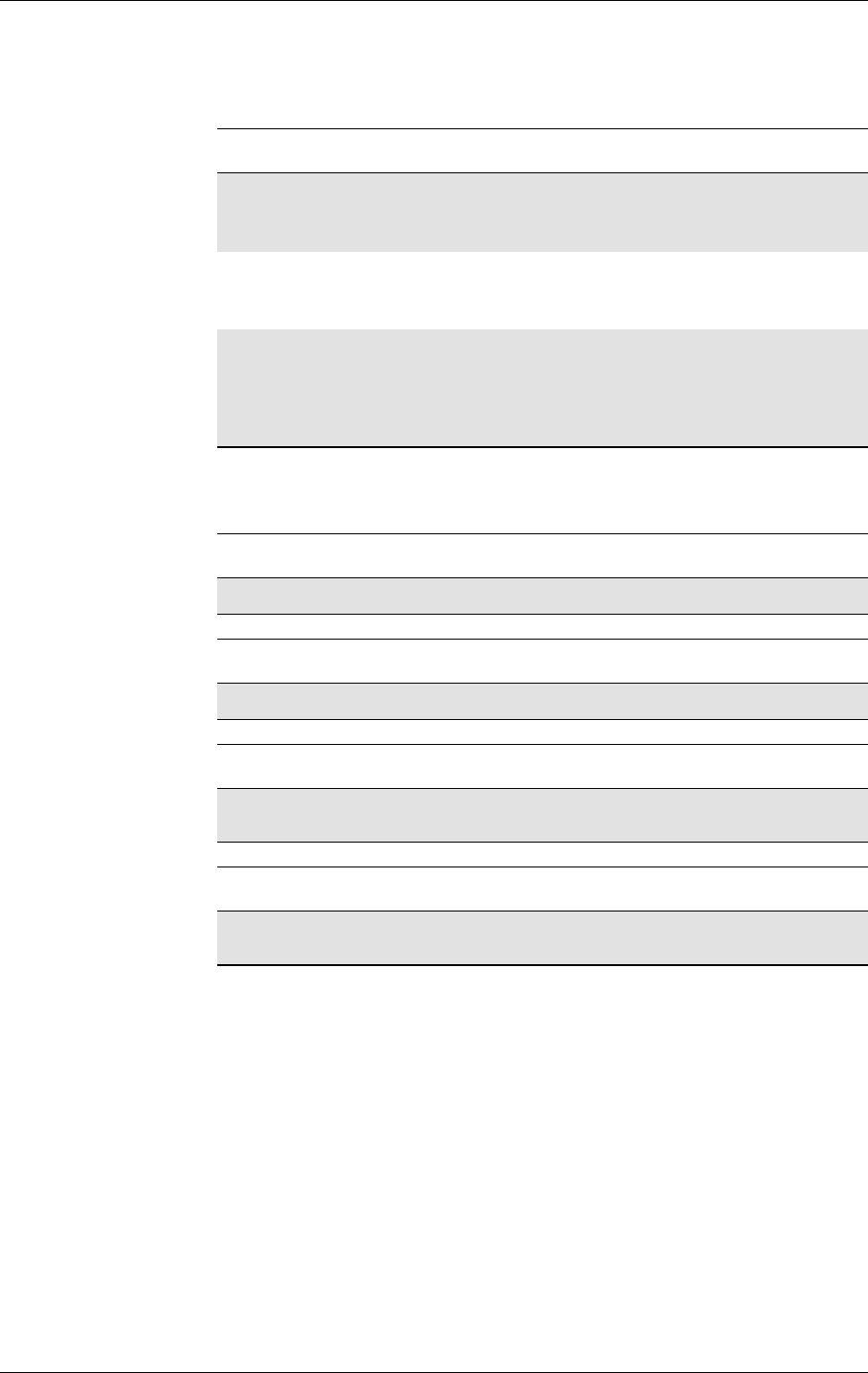
GM47/GM48 INTEGRATOR’S MANUAL
176 LZT 123 7263 R1A
8.8 AT*EWLI Ericsson WAP Login
This command sets up user identity and password to be used for logging
in to a WAP proxy; i.e. connecting to a WAP service provider.
Description Command Possible Responses
Setup user identity and
password for WAP
proxy
AT*EWLI=<user>,
<password> •+CMEERROR:<err>
•OK
•ERROR
Read user identity AT*EWLI? •*EWLI:<user>
•OK
•ERROR
Show if the command
is supported AT*EWLI=? •*EWLI:
<nuser>,<npassword>
•+CMEERROR:<err>
•OK
•ERROR
<user> Description
String type User name for the WAP connection
<password> Description
String type Password for the WAP connection
<nuser> Description
Integer
number Maximum length for username
<npassword> Description
Integer
number Maximum length for password
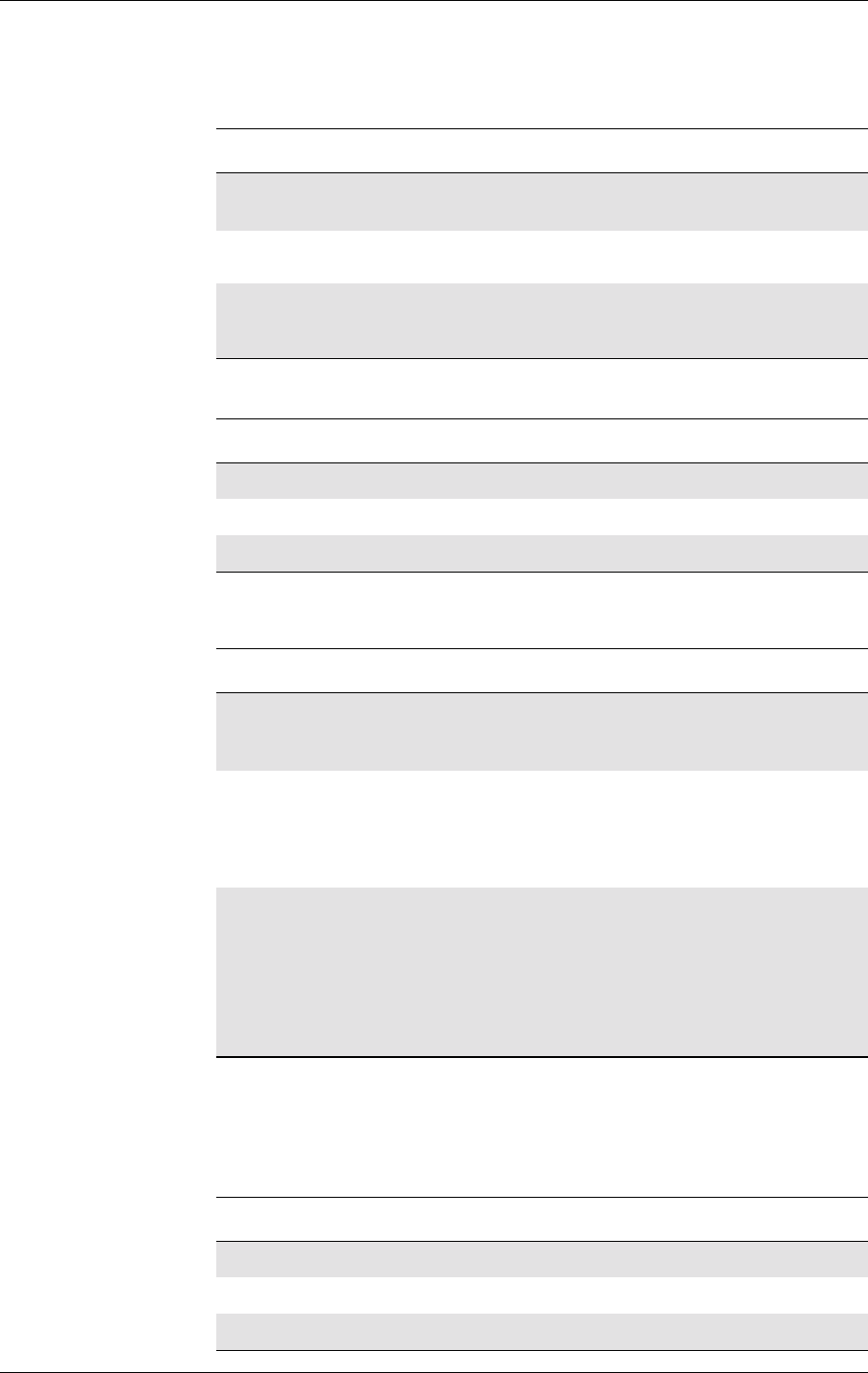
8. DATA - WAP
177
LZT 123 7263 R1A
8.9 AT*EWPA Ericsson WAP Push Access Setting
The command is used to decide if message push is allowed.
8.10 AT*EWPB Ericsson WAP Preferred Bearer
This command sets the preferred bearer for WAP. If Internet account is
chosen as the preferred bearer, the index of the Internet account to be
used shall be sent as the second parameter: <IA_index>. If SMS is
chosen as the preferred bearer a second parameter is ignored.
Description Command Possible Responses
Sets the push access AT*EWPA=<onoff> •OK
• +CME ERROR <err>
Reads the current
settings AT*EWPA? *EWPA: <onoff>
Tests if the command is
supported AT*EWPA=? •*EWPA:(listof
supported <onoff>s)
• +CME ERROR <err>
<onoff> Description
0Always ask
1Message push disabled
2Message push enabled
Description Command Possible Responses
Set preferred WAP
carrier AT*EWPB=<pbearer>
[,<IA_index>] •+CMEERROR:<err>
•OK
•ERROR
Read preferred WAP
carrier AT*EWPB? •*EWPB:<pbearer>
[,<IA_index>]
•+CMEERROR:<err>
•OK
•ERROR
Show if the command
is supported AT*EWPB=? •*EWPB:(listof
supported
<pbearer>s),(list of
supported
<IA_index>s)
•+CMEERROR:<err>
•OK
•ERROR
<pbearer> Description
1SMS
2Not supported
3Internet account
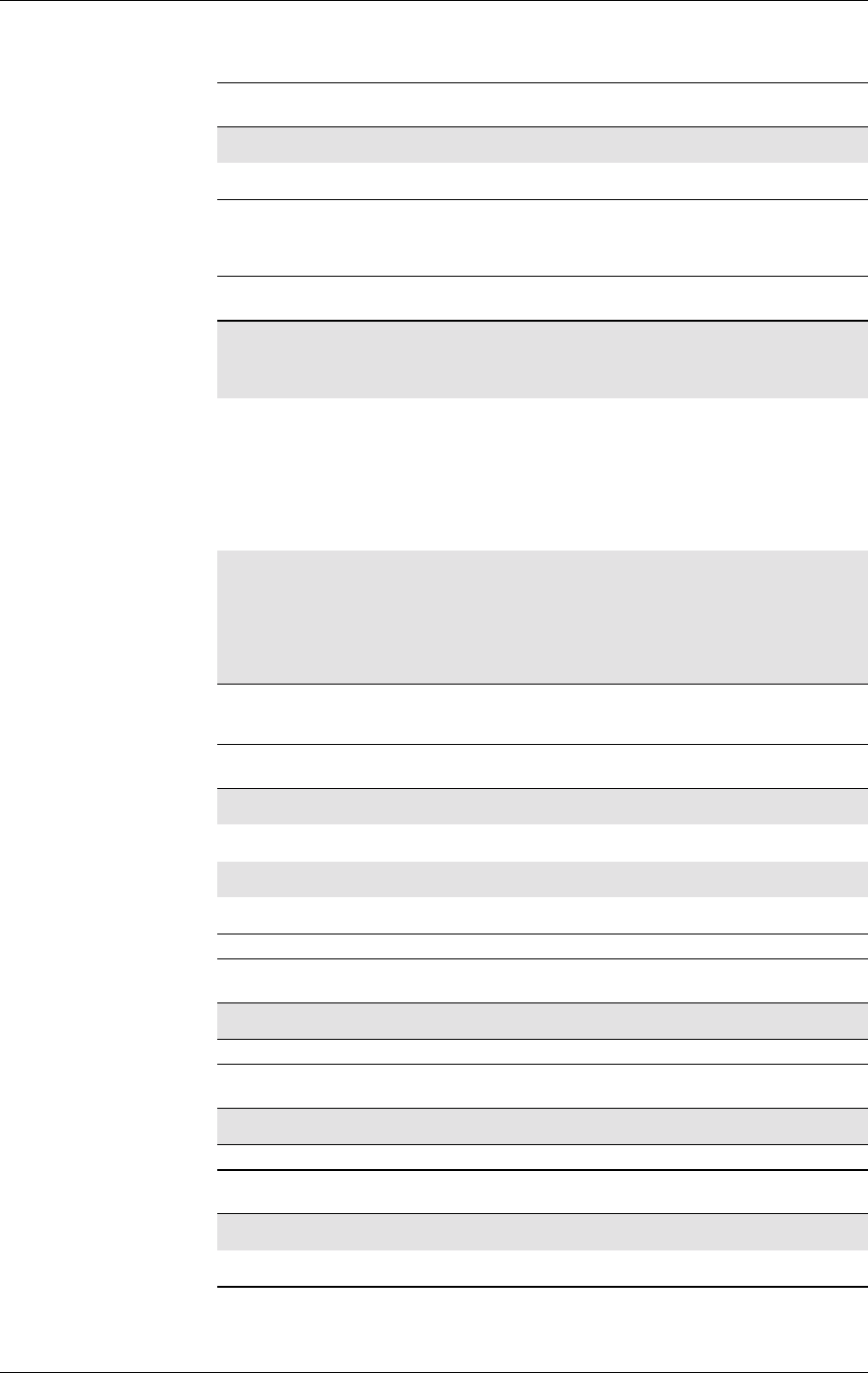
GM47/GM48 INTEGRATOR’S MANUAL
178 LZT 123 7263 R1A
8.11 AT*EWPN Ericsson WAP Profile Name
Sets the name of the profile defined by <profile>.
<IA_index> Description
0Always ask
1–65000 Index of Internet account to be used by the WAP browser
Description Command Possible Responses
Set WAP profile
name AT*EWPN=<profile>,
<name> • +CME ERROR: <err>
•OK
• ERROR
List WAP profile
names AT*EWPN? • *EWPN: <profile1>,<name1>,
<lock_state>[<CR><LF>
*EWPN: <profile2>,<name2>,
<lock_state>[...]]
• +CME ERROR: <err>
•OK
• ERROR
Show if the
command is
supported
AT*EWPN=? • *EWPN: (list of supported
<profile>s), <nlength>,(list of
supported <lock_state>s)
• +CME ERROR: <err>
•OK
• ERROR
<profile> Description
1WAP settings profile number 1
2WAP settings profile number 2
…….
nWAP settings profile number n
<name> Description
String value WAP profile name. Max length defined by <nlength>
<nlength> Description
Integer value Max length of WAP profile name
<lock_state> Description
0The profile is not locked
1The profile is locked
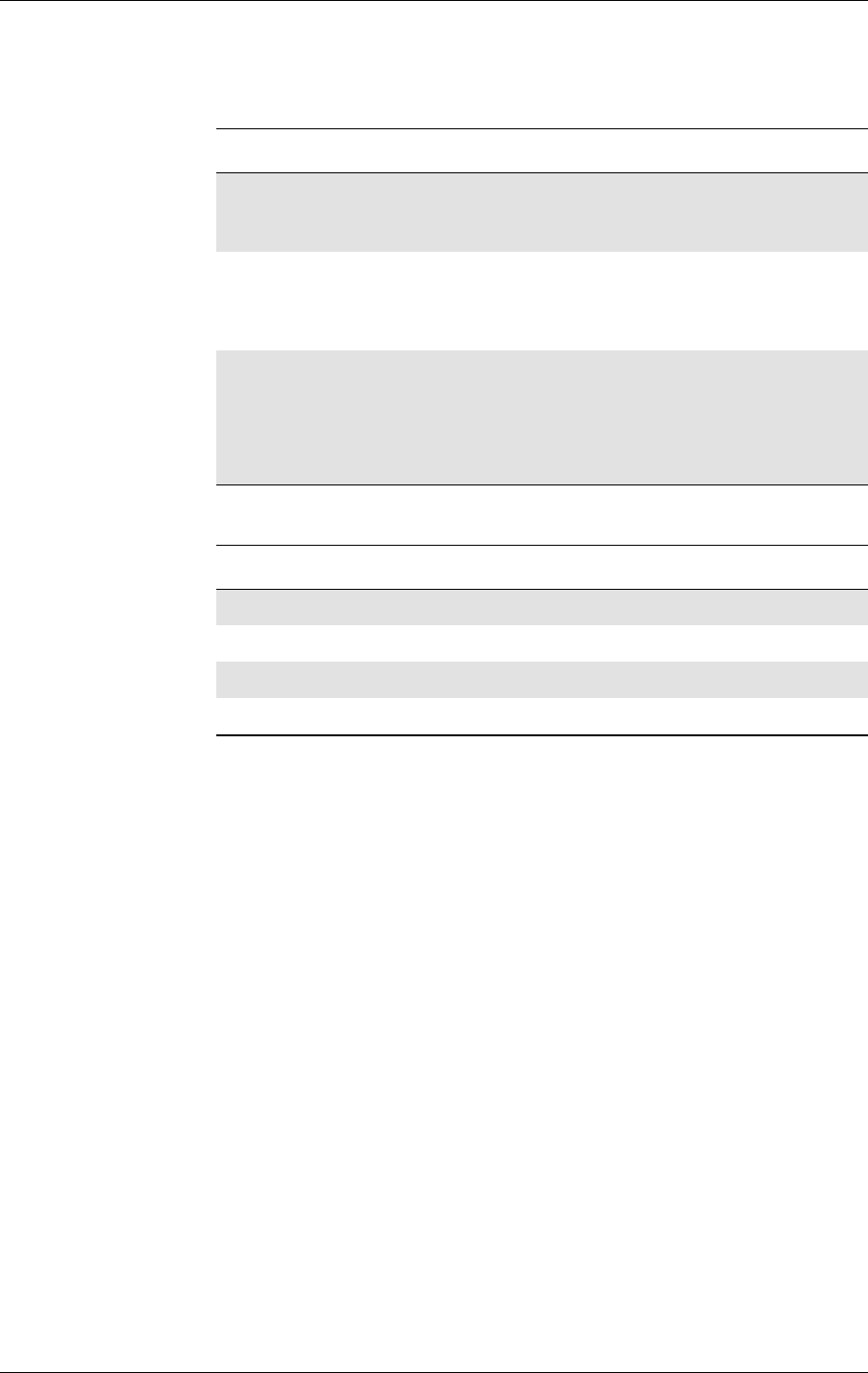
8. DATA - WAP
179
LZT 123 7263 R1A
8.12 AT*EWPR Ericsson WAP Profile
Selects active WAP settings profile.
Description Command Possible Responses
Set active WAP profile AT*EWPR=<profile> •+CMEERROR:<err>
•OK
•ERROR
Query active WAP
profile AT*EWPR? •*EWPR:<profile>
•+CMEERROR:<err>
•OK
•ERROR
Show if the command
is supported AT*EWPR=? •*EWPR:(listof
supported
<profile>s)
•+CMEERROR:<err>
•OK
•ERROR
<profile> Description
1WAP settings profile number 1
2WAP settings profile number 2
…….
nWAP settings profile number n

GM47/GM48 INTEGRATOR’S MANUAL
180 LZT 123 7263 R1A
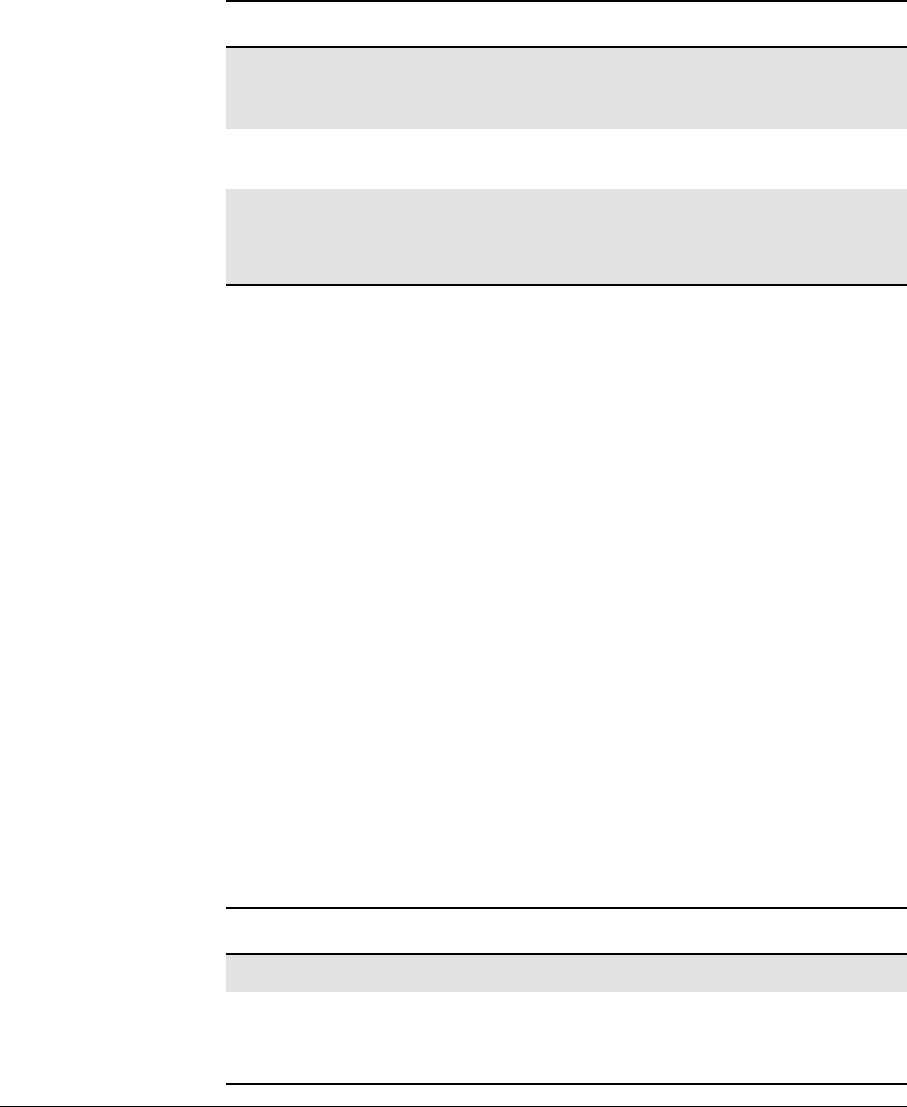
181
LZT 123 7263 R1A
9. GPS Interoperability
9.1 AT*EENMEA NMEA (GPS) Mode on UART2
This command enables transmission of NMEA commands from
UART1 to UART2 and vice versa. The module acts as a transparent link
between the GPS device connected to UART2 and the application
communicating with it on UART1.
When the application sends the command AT*EENMEA=2 the module
is able to handle both AT and NMEA commands simultaneously. If the
OK response is received the application can start handling both NMEA
and AT commands. Otherwise the response ERROR is returned.
In the mode with simultaneous AT and NMEA commands, <CR> is
required after each NMEA command and after the last AT command
before the new NMEA. NMEA commands must start with a $. All
NMEA commands are forwarded to UART2. All NMEA responses
from UART2 are displayed as responses to UART1 along with AT
responses.
By sending AT*EENMEA=0, the application ends AT and NMEA
commands, simultaneous handling mode. It sends OK, and then returns
to AT mode.
The port rate of UART1 for NMEA commands can be controlled using
the AT*NMPR command.
Description Command Possible Responses
Enable NMEA
commands on the
UART
AT*EENMEA=<mode> •OK
•ERROR
• +CME ERROR: < err>
Show the current
setting AT*EENMEA? • *EENMEA:<mode>
•+CMEERROR:<err>
Shows if the command
is supported AT*EENMEA=? • *EENMEA: (list of
supported
<mode>s)
• +CME ERROR: < err>
Responses Description
OK The requested action has been performed
ERROR Following causes of error are considered:
- incorrect syntax
- NMEA commands have already been enabled in other
07.10 channels
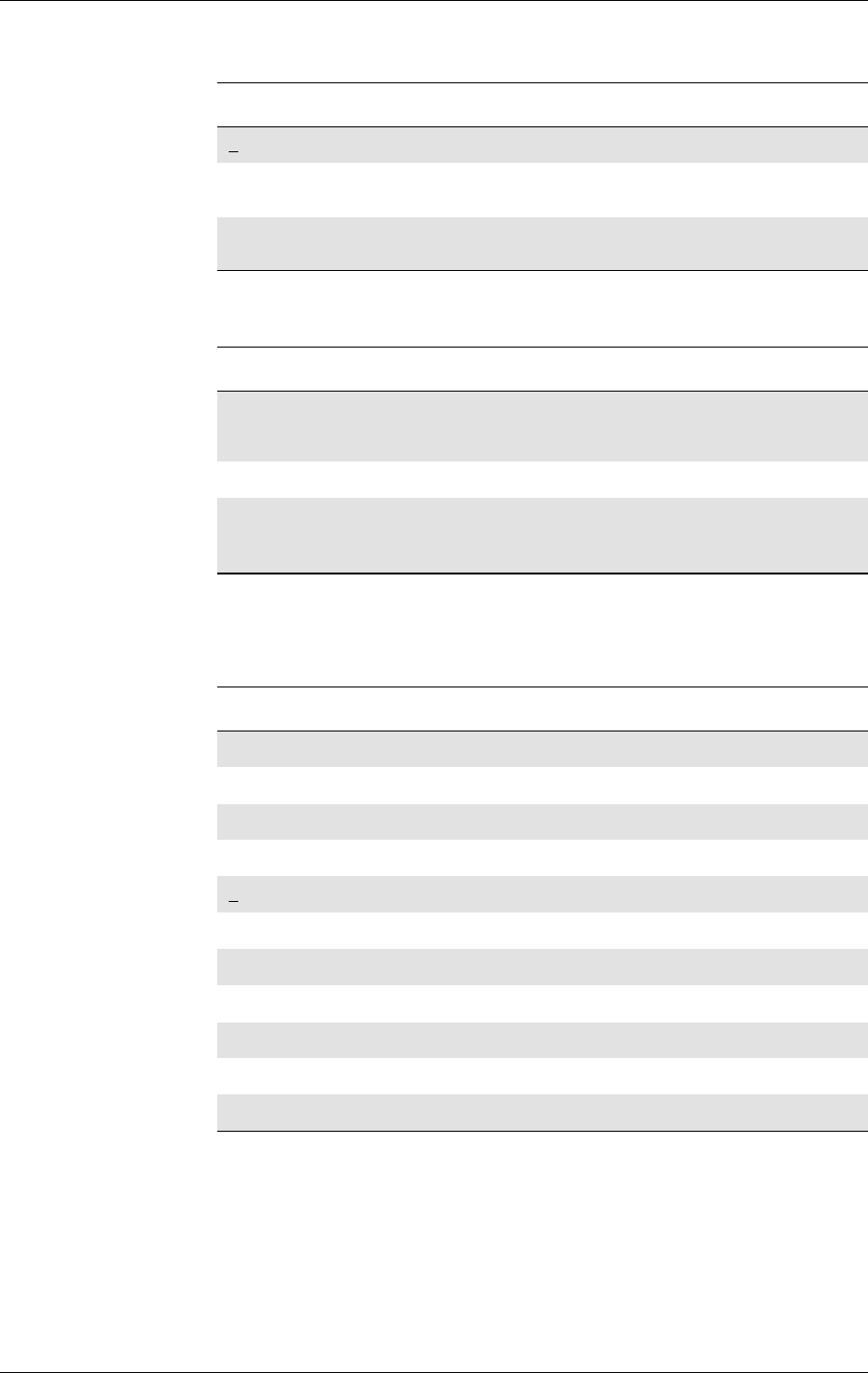
GM47/GM48 INTEGRATOR’S MANUAL
182 LZT 123 7263 R1A
9.2 AT*E2NMPR Ericsson M2M Set NMEA (GPS) Port Rate
This command allows the user to set the physical Data rate for the GPS/
NMEA port. The port rate will be set for the GPS/NMEA port only
when NMEA is active - see AT*EENMEA.
Examples
AT*E2NMPR=?
*E2NMPR=(0,1,2,3,4,5,6,7,8,9,10)
OK
Port rate currently set:
<mode> Description
0Disable NMEA communication. Default
1Enable NMEA communication in NMEA “only” mode. Not
supported
2Enable NMEA communication simultaneously with AT
commands
Description Command Possible Responses
Request operation to
set data rate for GPS/
NMEA Port
AT*E2NMPR=<pr> •ERROR
•OK
Displays current setting AT*E2NMPR? *E2NMPR: <pr>
Show if the command
is supported AT*E2NMPR=? •*E2NMPR:(listof
supported <pr>s)
•ERROR
<op> Description
o600 Baud rate
11200 Baud rate
22400 Baud rate
34800 Baud rate
49600 Baud rate. Default setting
519200 Baud rate
638400 Baud rate
757600 Baud rate
8115200 Baud rate
9230400 Baud rate
10 460800 Baud rate

9. GPS INTEROPERABILITY
183
LZT 123 7263 R1A
AT*E2NMPR?
*E2NMPR: 4
OK
Set GPS/NMEA port rate to 4800 baud:
AT*E2NMPR=2
OK

GM47/GM48 INTEGRATOR’S MANUAL
184 LZT 123 7263 R1A

185
LZT 123 7263 R1A
10. Internet
10.1 AT*ENAD Ericsson Internet Account Define
Description Command Possible Responses
Define an
Internet
account
AT*ENAD=[<index>][,<name
>,<userid>,<password>,
<bearer>,(bearer_settings)]
If <bearer>=0
(bearer_settings):=<dialup_n
r>,<dial_type>, <data_rate>
If <bearer>=1
(bearer_settings):=
<pref_serv>,<pap_chap>
If <bearer>=2
(bearer_settings):=
<bt_device_address>
•*ENAD:<index>[,<cid>]
•+CMEERROR<err>
Read the
current
settings
AT*ENAD? *ENAD:list of <index>s with corresponding
<name>, <userid>, <bearer> followed by
the list of bearer dependent parameters
If <bearer>=0
(bearer_settings):=<dialup_nr>,
<dial_type>,<data_rate>, <lock_state>
If <bearer>=1
(bearer_settings):=<pref_serv>,
<pap_chap>,<cid>,<lock_state>
If <bearer>=2
(bearer_settings):=<bt_device_address>,
<lock_state>
+CME ERROR <err>
Test if the
command
is
supported
AT*ENAD=? *ENAD:list of supported <index>s,max
length of <name>,max length of
<userid>,max length of <password>,
(0),max length of ,list of supported
<dial_type>s,list of supported
<data_rate>s,list of supported
<lock_state>s
*ENAD:list of supported <index>s,max
length of <name>,max length of
<userid>,max length of <password>, (1),list
of supported <pref_serv>s,list of supported
<pap_chap>s,list of supported
<lock_state>s
*ENAD:list of supported <index>s,max
length of <name>,max length of
<userid>,max length of <password>,
(2),max length of <bt_device_address>,
list of supported <lock_state>s
+CME ERROR <err>
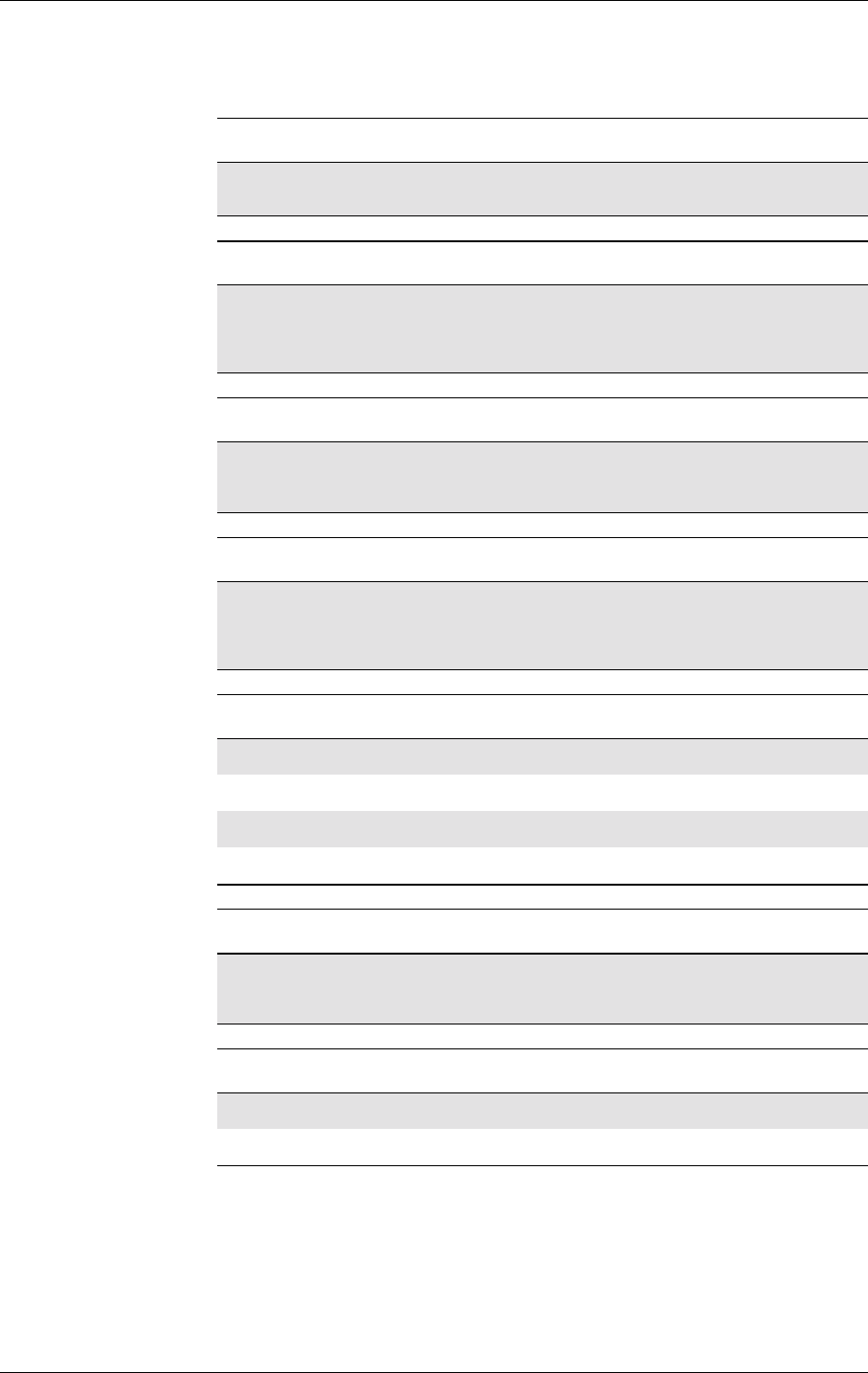
GM47/GM48 INTEGRATOR’S MANUAL
186 LZT 123 7263 R1A
This command is used for defining an Internet account.
<index> Description
integer
1-65000 Each Internet account is given a unique index
<name> Description
string
(maximum of
20, 16-bit
characters)
Each Internet account has a username
<userid> Description
string (max 30
8-bit
characters)
TheuserIDtobeusedwhensettinguptheconnection
<passwd> Description
string
(maximum of
30, 8-bit
characters)
The passwd to be used when setting up the connection
<bearer> Description
0Circuit switched dial-up
1Packet domain service
2Bluetooth. Not supported
3SMS. Not supported
<dialup_nr> Description
string (max 30
8-bit
characters)
The phone number to be used when setting up the
connection
<dial_type> Description
0GSM data (CSD)
1Digital (ISDN)
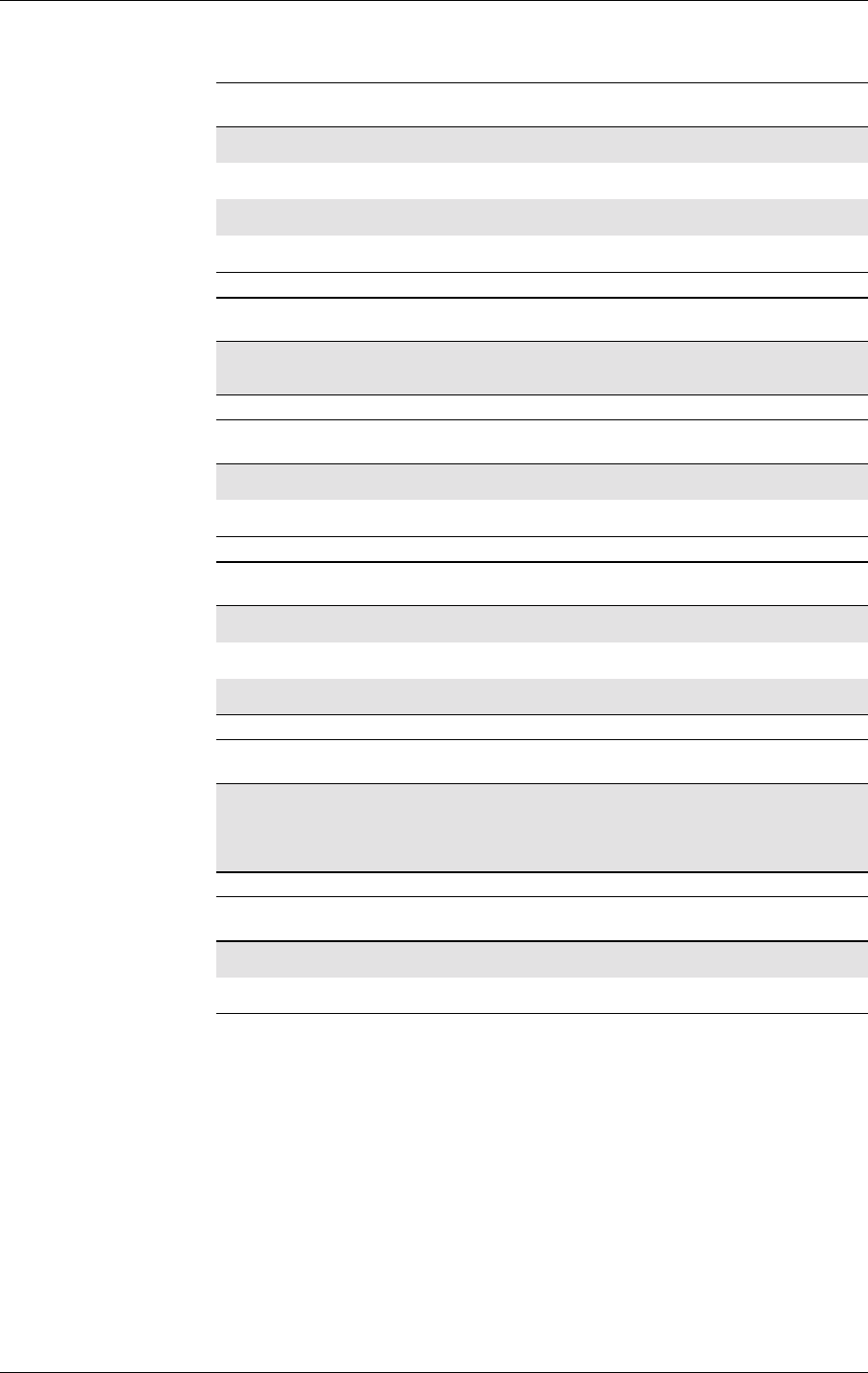
10. INTERNET
187
LZT 123 7263 R1A
<data_rate> Description
19600
214400
319200
428800
<cid> Description
integer ID number of a PDP context as defined in AT+CGDCONT
(S15)
<pref_serv> Description
0Automatic
1Packet domain service only
<pap_chap> Description
0Normal: only PAP allowed
1Secure: only CHAP allowed
2None: no authentication scheme is used
<bt_device_address> Description
48 bit IEEE address, six
groups of two hexadecimal
numbers separated by “:”.
E.g. “1A:3C:CD:33:1F:G8”
This parameter is used to set the Bluetooth
device address for the Bluetooth
connection being set up
<lock_state> Description
0The account is not locked
1The account is locked

GM47/GM48 INTEGRATOR’S MANUAL
188 LZT 123 7263 R1A
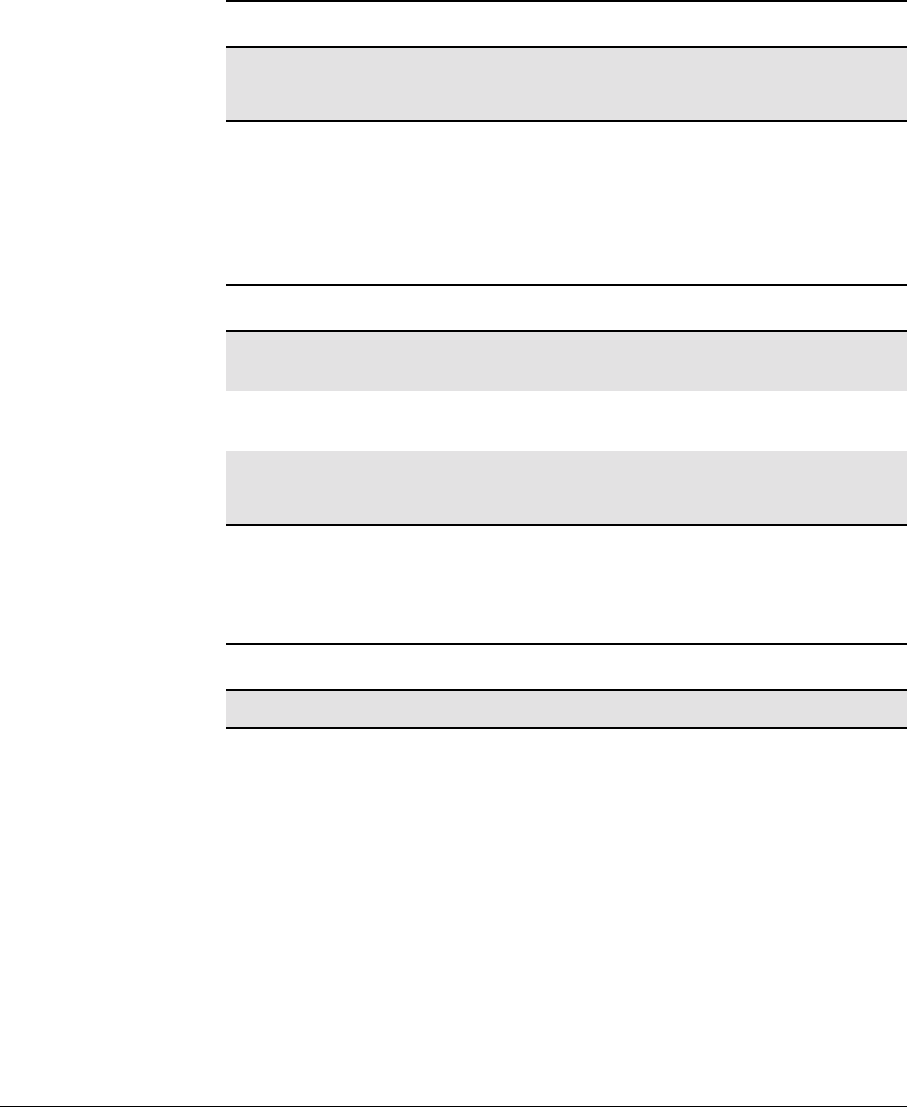
189
LZT 123 7263 R1A
11. Identification
11.1 AT Attention Command
This command is used to determine the presence of an MS. If the MS
supports AT commands, it returns an OK final result code.
11.2 AT&F Set to Factory Defined Configuration
This command instructs the DCE to set all parameters to default values
specified by the manufacturer, which may take in consideration
hardware configuration and other manufacturer defined criteria.
Description Command Possible Responses
Checks the communication
between the MS and
application
AT •OK
• +CME ERROR <err>
Description Command Possible Responses
Execute AT&F •OK
•ERROR
Execute AT&F=<profile> •OK
•ERROR
Show if supported and
list available
parameter range
AT&F=? &F: (list of supported
<profile>s)
<profile > Description
0Select the factory profile to restore
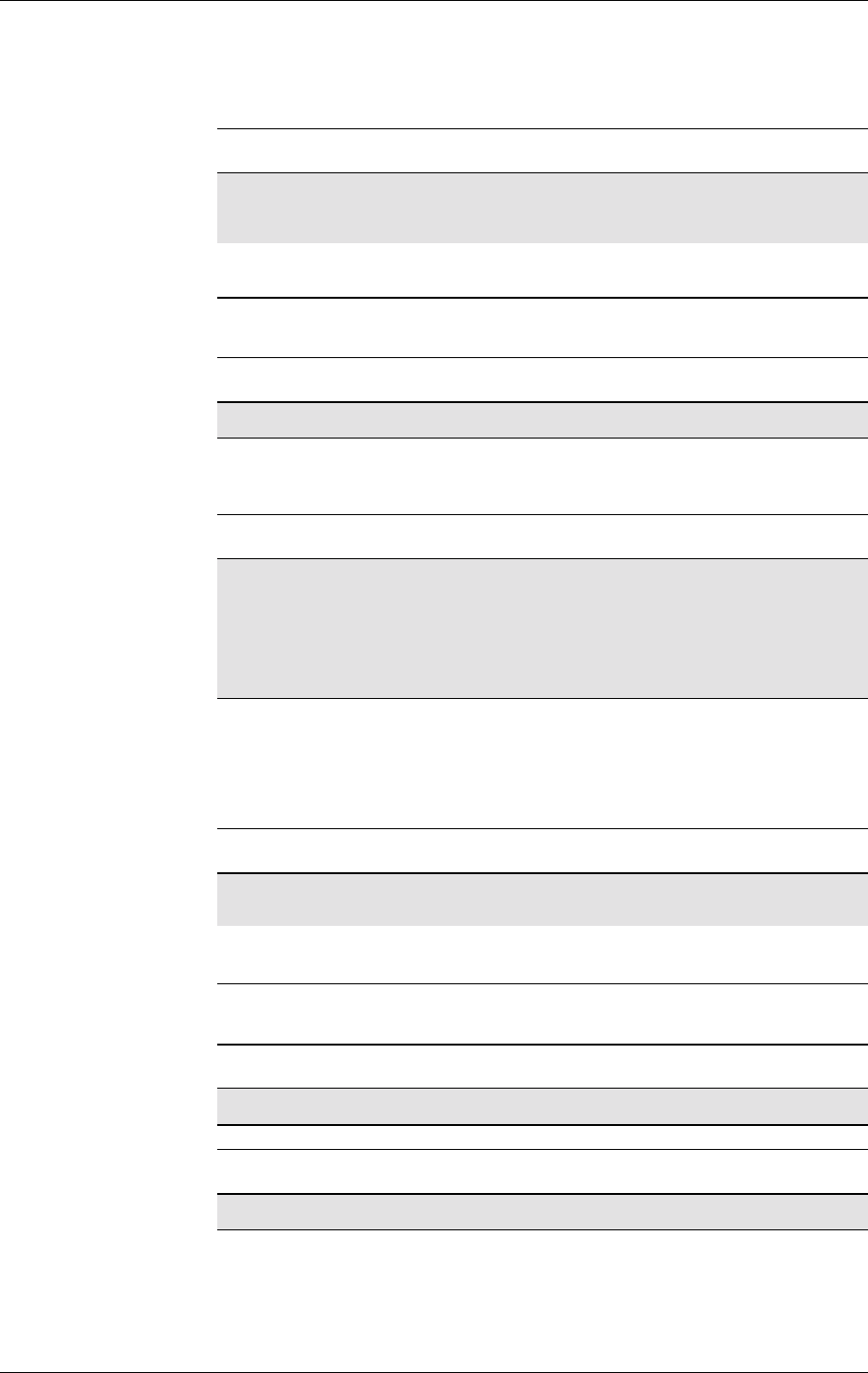
GM47/GM48 INTEGRATOR’S MANUAL
190 LZT 123 7263 R1A
11.3 AT&W Store User Profile
This command stores the current user profile in non-volatile memory.
11.4 AT* List all Supported AT Commands
Lists all the commands supported by the MS.
11.5 AT*ESIR Read MS System Interface Release
Causes the MS to return the interface release.
Description Command Possible Responses
Stores the current user
profile to non volatile
memory
AT&W=[<pr>] or
AT&W[<pr>] •OK
•ERROR
Show if the command
is supported AT&W=? &W: (list of supported
<pr>s)
<pr> Description
0Stores current settings in User Profile 0
Description Command Possible Responses
List all implemented AT
commands AT* <AT Command1>
[<CR> <LF>
<AT Command2>[…]]
/
<AT Command1>
[<CR> <LF>
<AT Command2>[…]]
Description Command Possible Responses
Read MS system
interface release AT*ESIR *ESIR:<x>.<y>
Show if the command
is supported AT*ESIR=? •OK
•ERROR
<x> Description
Integer type Major version (one digit)
<y> Description
Integer type Minor version (one digit)
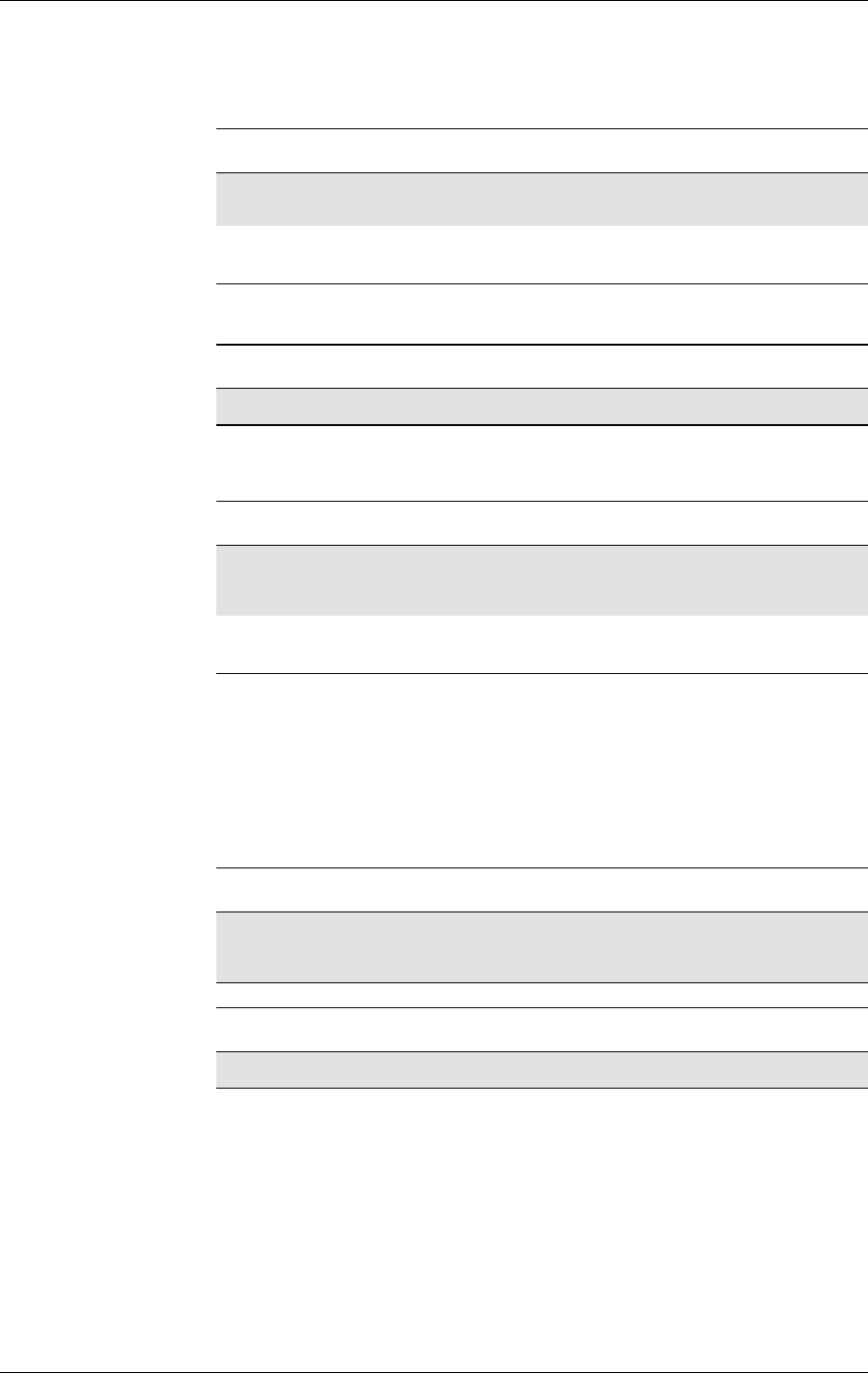
11. IDENTIFICATION
191
LZT 123 7263 R1A
11.6 AT+CGMI Read MS Manufacturer Identification
Causes the MS to return one or more lines of information text.]
11.7 AT+CGMM Read MS Model Identification
Causes the MS to return one or more lines of information text <model>,
determined by the MS manufacturer. It is intended to permit the user of
the ITAE/ETAE to identify the specific model of the MS to which it is
connected. Typically the text will consist of a single line containing the
name of the product, but manufacturers may choose to provide more
information if desired.
Description Command Possible Responses
Request manufacturer
identification AT+CGMI <manufacturer>
+CME ERROR: <err>
Show if the command
is supported AT+CGMI=? •OK
•ERROR
<manufacturer> Description
SONY ERICSSON This company’s name in upper case letters
Description Command Possible Responses
Request the model
identification AT+CGMM <model type><model
name>
+CME ERROR: <err>
Show if the command
is supported AT+CGMM=? •OK
•ERROR
<model type> Description
String type A unique ASCII character/digit string, always 10
characters long. Spaces are used when the number of
characters/digitsislessthan10
<model name> Description
String type Model name for the transceiver unit, for example, GM47
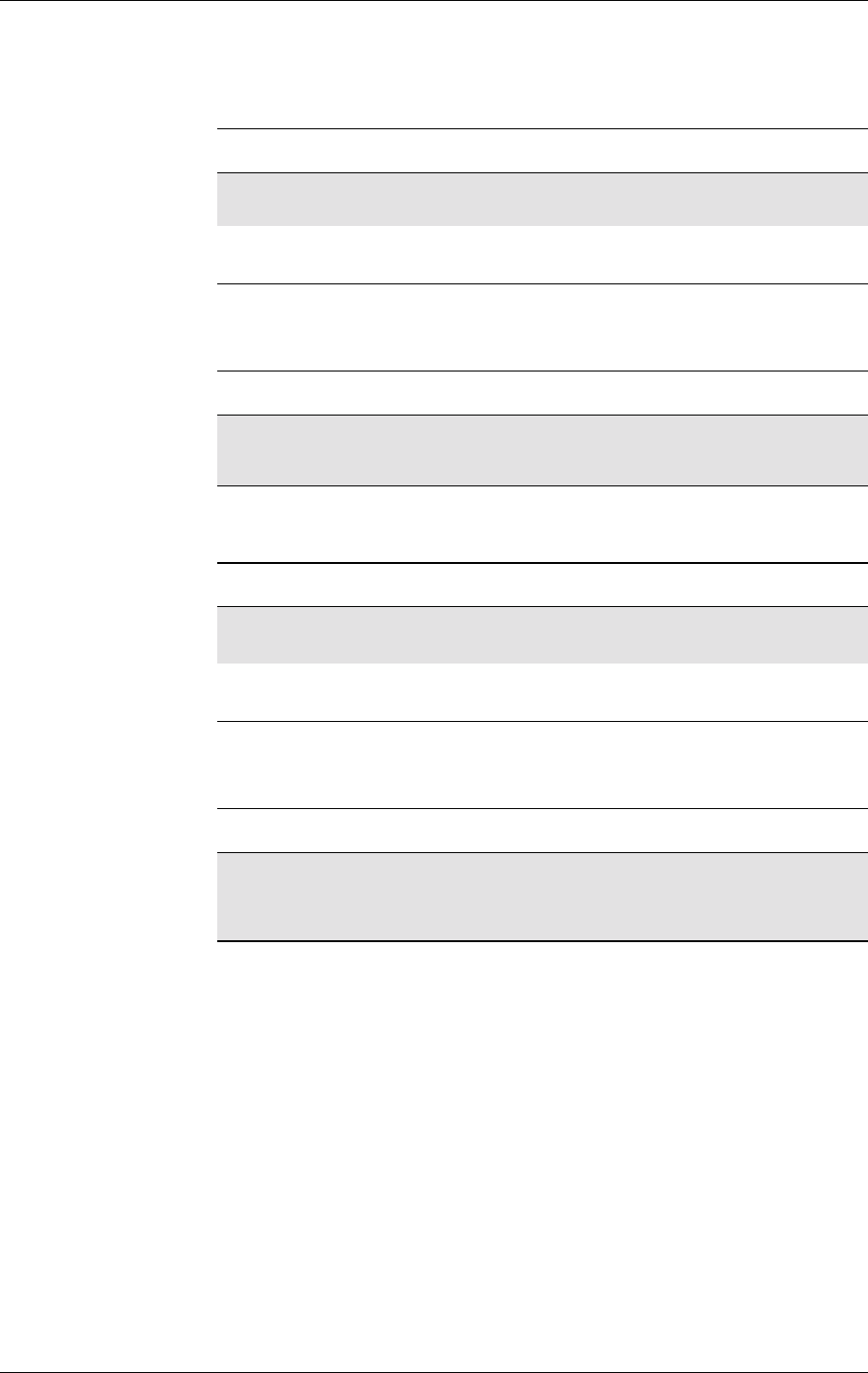
GM47/GM48 INTEGRATOR’S MANUAL
192 LZT 123 7263 R1A
11.8 AT+CGMR Read MS Revision Identification
This command causes the MS to return a string containing information
about the software version.
11.9 AT+CGSN Read MS Product Serial Number Identification
This command causes the MS to return the IMEI (International Mobile
station Equipment Identity), which identifies the individual ME.
Description Command Possible Responses
Request MS revision
identification string AT+CGMR <revision>
+CME ERROR: <err>
Show if the command
is supported AT+CGMR=? •OK
•ERROR
<revision> Description
String type An ASCII string containing date (year, month, day, hour,
minute) plus KRC number.
Example: 9710051610 CXC125112
Description Command Possible Responses
Request product serial
number AT+CGSN •+CGSN:<sn>
•+CMEERROR:<err>
Show if the command
is supported AT+CGSN=? •OK
•ERROR
<sn> Description
String The IMEISV, which is the IMEI (International Mobile station
Equipment Identity; refer GSM 03.03 [4]) number of the ME and
the software version number. Text shall not contain the
sequence 0<CR> or OK<CR>
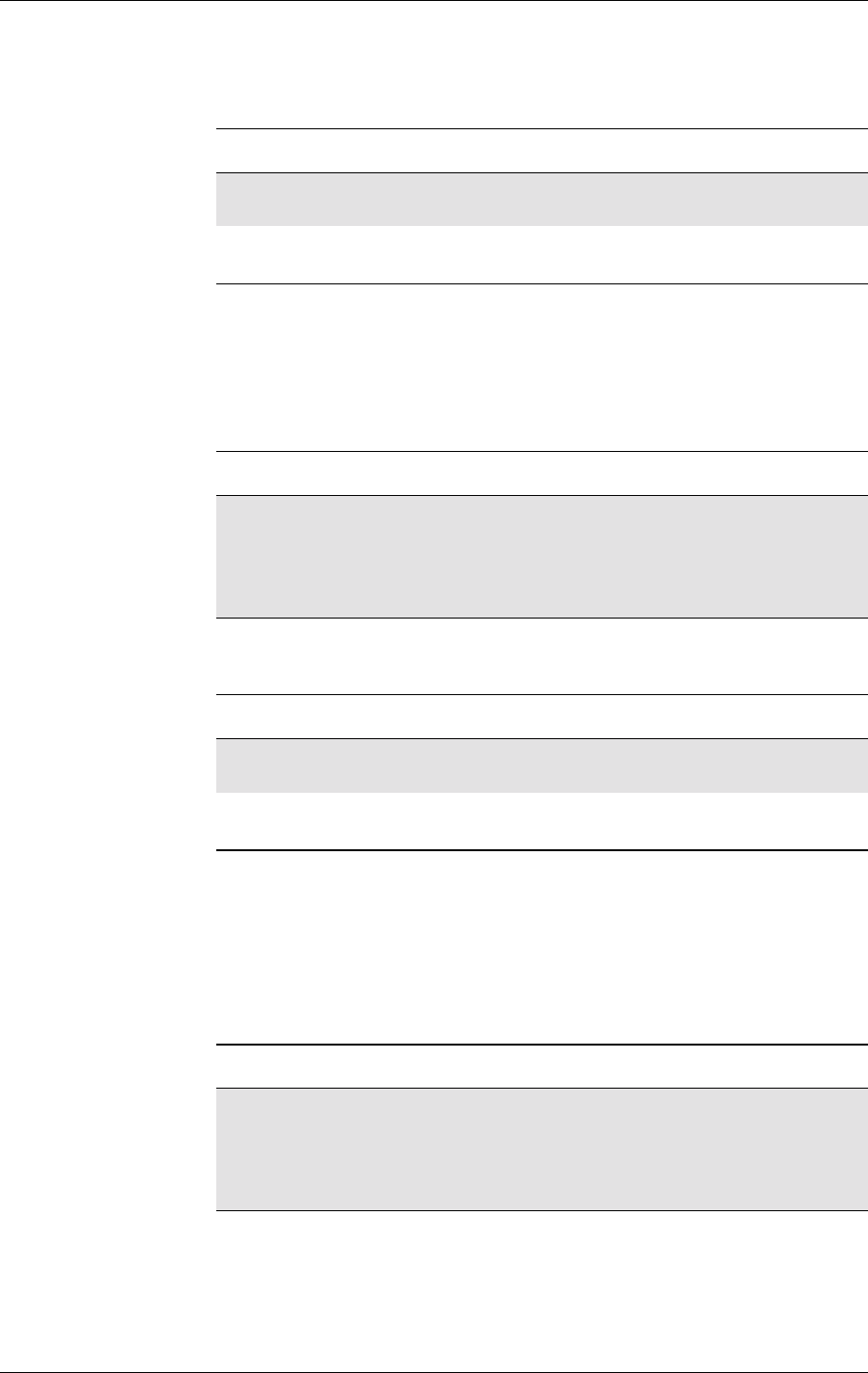
11. IDENTIFICATION
193
LZT 123 7263 R1A
11.10 AT+GMI Read Manufacturer Identification
This command causes the DCE to transmit one or more lines of
information text. Typically, the text will consist of a single line
containing the name of the manufacturer, but may provide more
information such as address and telephone number for customer
service.
11.11 AT+GMM Read Model Identification
This command causes the DCE to transmit one or more lines of
information text, determined by the manufacturer, which is intended to
permit the user of the DCE to identify the specific model of device.
Typically, the text will consist of a single line containing the name of
the product, but manufacturers may choose to provide any information
desired.
Description Command Possible Responses
Request manufacturer
identification AT+GMI <manufacturer>
Test if command is
supported AT+GMI=? •OK
•ERROR
<manufacture> Description
string type The total number of characters, including line
terminators, in the information text returned in response
to this command shall not exceed 2048 characters.
Note that the information text shall not contain the
sequence “0 ” or “OK”, so that DTE can avoid false
detection of the end of this information text
Description Command Possible Responses
Request revision
identification AT+GMM <model>
Test if command is
supported AT+GMM=? •OK
•ERROR
<model> Description
string type The total number of characters, including line terminators,
in the information text returned in response to this
command shall not exceed 2048 characters. Note that
the information text shall not contain the sequence “0 ” or
“OK”, so that DTE can avoid false detection of the end of
this information text
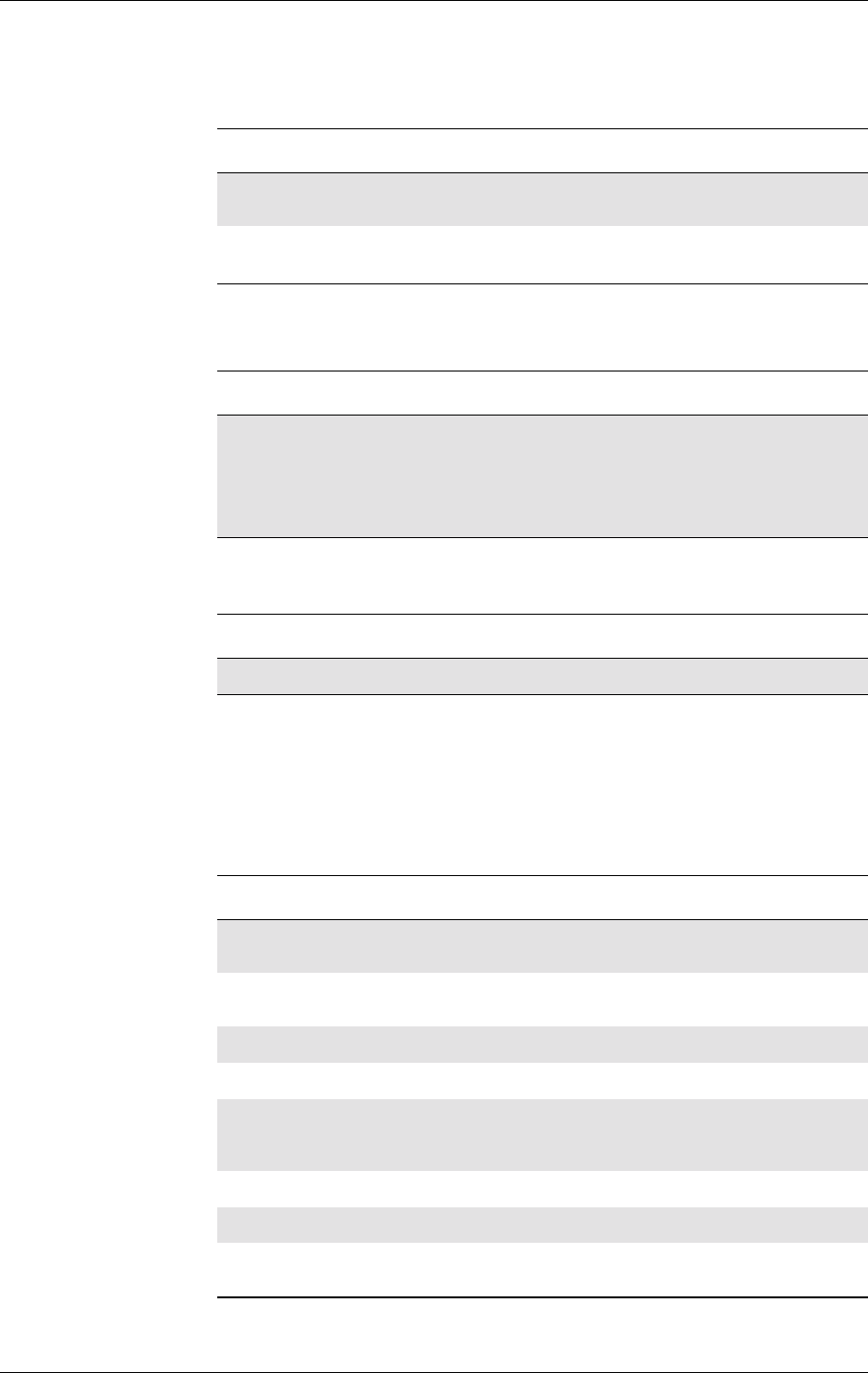
GM47/GM48 INTEGRATOR’S MANUAL
194 LZT 123 7263 R1A
11.12 AT+GMR Read Revision Identification
This command returns a manufacturer specified software revision name
in a text string.
11.13 ATI Identification Information
This command causes the DCE to transmit one or more lines of text,
followed by a final result code. As an option, <value> can be used to
select from among multiple types of identifying information as shown
in the table below.
This command provides compatibility with Microsoft Windows 95.
Description Command Possible Responses
Request revision
identification AT+GMR <revision>
Test if command is
supported AT+GMR=? •OK
•ERROR
<revision> Description
string type The total number of characters, including line terminators,
in the information text returned in response to this
command shall not exceed 2048 characters. Note that
the information text shall not contain the sequence "0" or
"OK", so that DTE can avoid false detection of the end of
this information text
Description Command Possible Responses
Execute ATI[<value>] <information>
<value > Description
0Same information as +GMM command (model
identification)
1Same information as +GMR command (revision
identification)
3Modem model description
5Active settings
7Modem configuration profile (brief listing of the modem
functionality: fax classes, Bluetooth, IrDA, modem type,
etc.)
8DCEhardwaretypeversion
9PnP (plug and play) information
10 Same information as +GMI command (manufacturer
identification). Not supported

195
LZT 123 7263 R1A
12. Input/Output
12.1 AT*E2IO Ericsson M2M Input/Output Read/Write
Controls the operation of the general purpose I/O signals. It is possible
to perform up to 5 operations. The operations are as follows:
• Read the state of the input/output signals. Digital state or digital
value of an ADC input or the DAC output.
In case of a digital I/O, the command has the following aspect:
AT*E2IO=0,“I1”
*E2IO: 0,“I1”,0
OK
If the requested read is focused on analogue information, the digital read
is as follows:
AT*E2IO=0,“AD1”
*E2IO: 0,“AD1”,,62
OK
• Write: fixes an output with a specific value. Two possible values for
digital sources or 256 values for the analogue ones. The response is
OK or ERROR if giving an output to the signal is not possible.
• Configure: configuration is applicable to those signals that are bi-
directional. Configuration changes the signal direction. The response
is OK, or ERROR if the signal is not bi-directional.
• Configure check: checks the state of the I/Os.
• Trigger: the MS can be programmed to send an unsolicited result
code whenever a change in one of the inputs has been produced. The
trigger has to be configured for each input.
Description Command Possible Responses
Request operation of
the I/O signals AT*E2IO=<op>,<io>
[,<val>][,<adc_val>] •ERROR
•OK
•*E2IO:
<op>,<io>[,<val>]
[,<adc_val>]
OK
Show if the command
is supported AT*E2IO=? •*E2IO:(listof
supported <op>s),
<io>s,(list of
supported <val>s),
(list of supported
<adc_val>s)
•ERROR
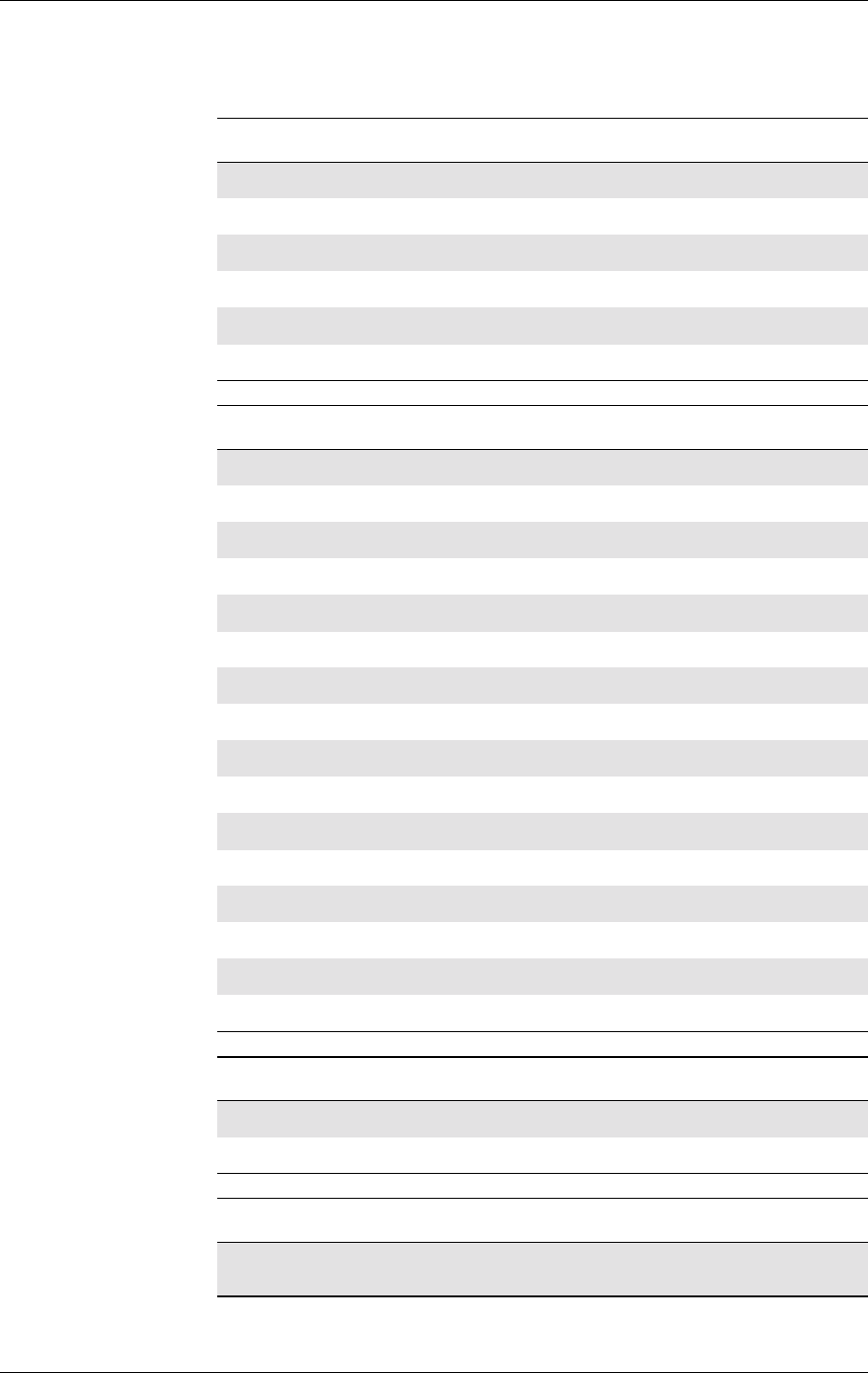
GM47/GM48 INTEGRATOR’S MANUAL
196 LZT 123 7263 R1A
• Trigger check: checks the state of the inputs..
<op> Description
0Read
1Write
2Configure
3Configure check
4Trigger
5Trigger check
<io> Description
“I1” Digital Input 1. Supported Operations: 0,2,3,4,5
“I2” Digital Input 2. Supported Operations: 0,2,3,4,5
“I3” Digital Input 3. Supported Operations: 0,2,3,4,5
“I4” Digital Input 4. Supported Operations: 0,2,3,4,5
“I5” Digital Input 5. Supported Operations: 0,4,5
“O1” Digital Output 1. Supported Operations: 0,1,2,3
“O2” Digital Output 2. Supported Operations: 0,1,2,3
“O3” Digital Output 3. Supported Operations: 0,1,2,3
“O4” Digital Output 4. Supported Operations: 0,1,2,3
“O5” Digital Output 5. Supported Operations: 0,1
“O6” Digital Output 6. Supported Operations: 0,1
“O7” Digital Output 7. Supported Operations: 0,1
“DA1” Digital/Analogue Input: Supported Operations: 0,1
“AD1” Analogue/Digital Output 1: Supported Operations: 0
“AD2” Analogue/Digital Output 2: Supported Operations: 0
“AD3” Analogue/Digital Output 3: Supported Operations: 0
<val> Description
0The digital I/O is not active. The logic value is FALSE
1The digital I/O is active. Logic value is TRUE
<adc_val> Description
0-255 The decimal value shall represent the analogue voltage it
is hold on the I/O. Applicable only to A/D or D/A signals
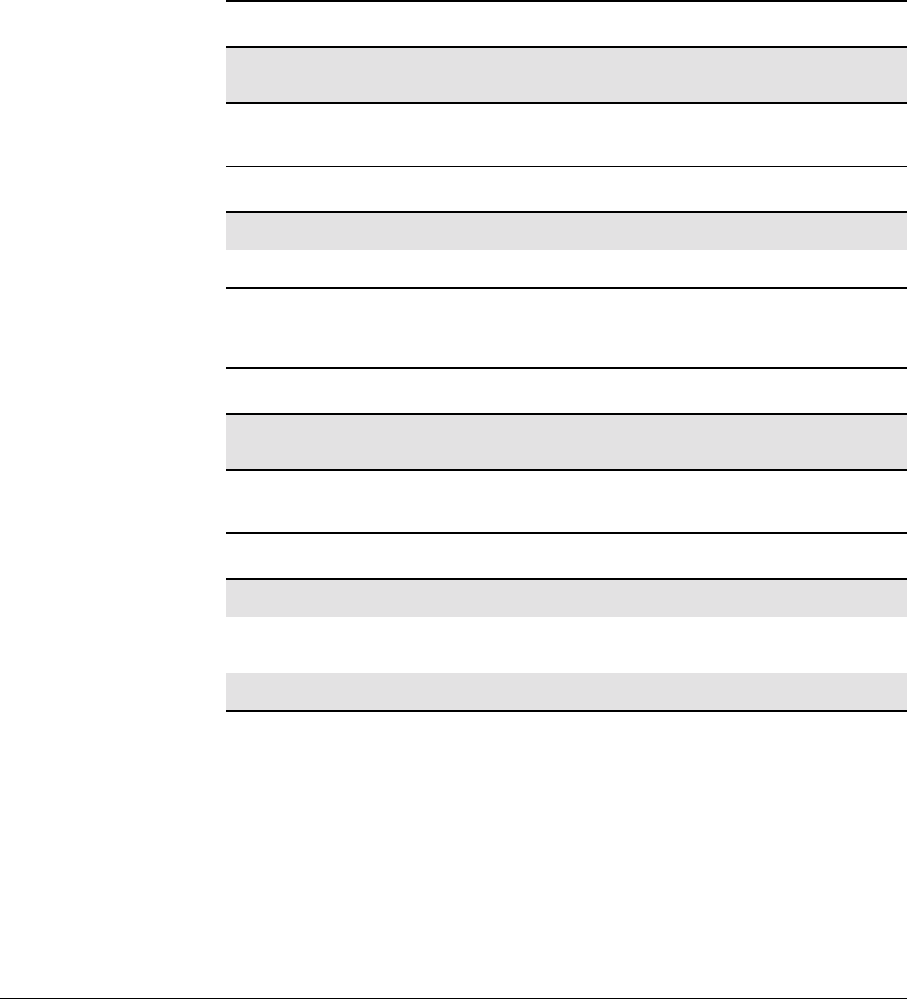
197
LZT 123 7263 R1A
13. Interface
13.1 AT+CPIN PIN Control
See 3.27, AT+CPIN PIN Control
13.2 AT&C Circuit 109 (DCD) Control
Determines the behaviour of the carrier detect.
13.3 AT&D Circuit 108 (DTR) Response
Controls all actions initiated by data terminal ready from DTE.
Description Command Possible Responses
Set behavior of carrier
detect AT&C[<value>] OK
ERROR
<value> Description
0DCD always on
1DCD follows the connection. Default value
Description Command Possible Responses
Control actions from
DTE AT&D[<value>] OK
ERROR
<value> Description
0Ignore. Default value
1When in on-line data mode, switch to on-line command
mode. For all other states, see <value>=2
2Disconnect and switch to off-line command mode
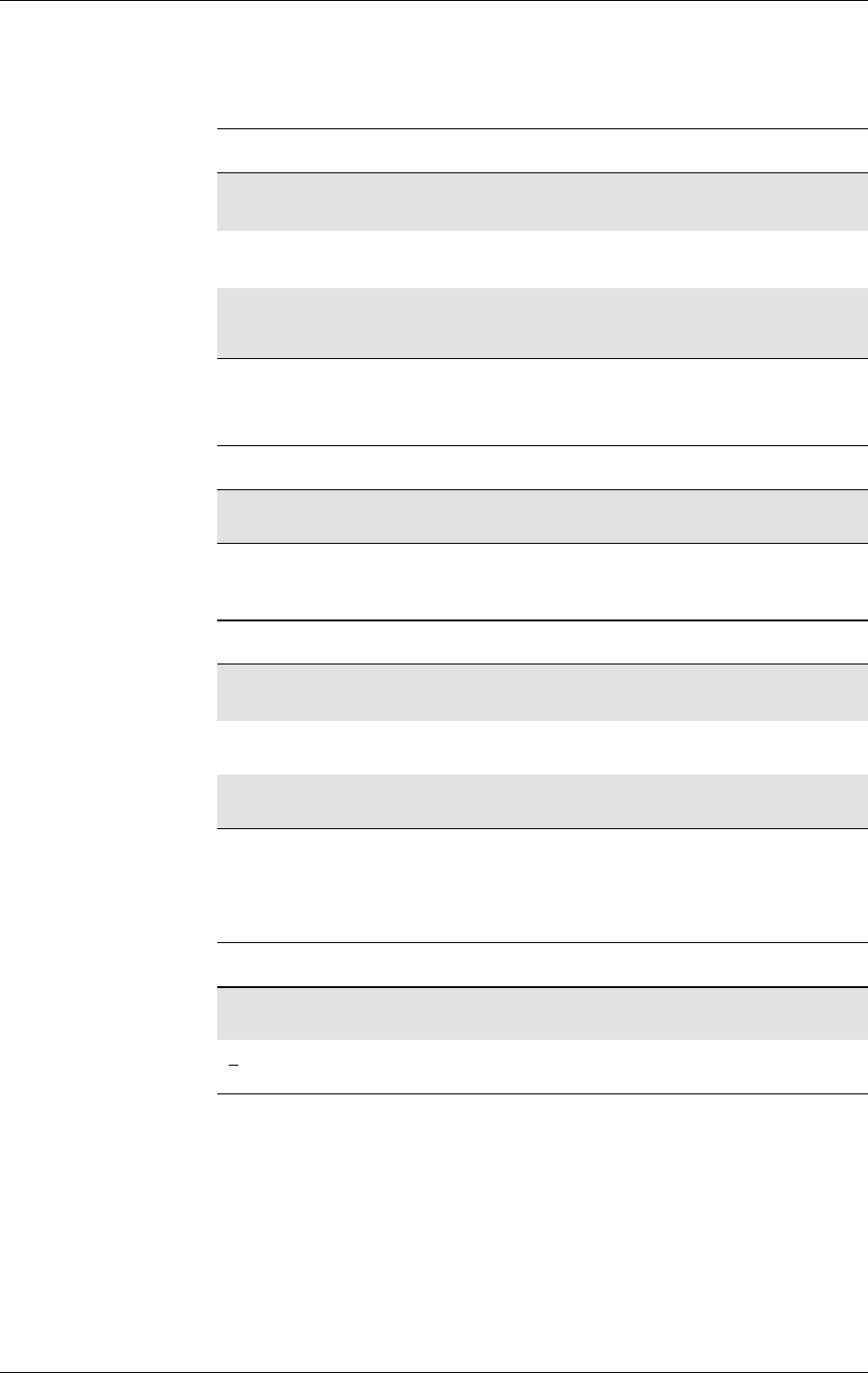
GM47/GM48 INTEGRATOR’S MANUAL
198 LZT 123 7263 R1A
13.4 AT+WS46 Mode Selection
Allows an accessory to query and control the cellular protocol mode of
the phone.
13.5 ATE Command Echo
The setting of this parameter determines whether or not the DCE echoes
characters received from the DTE during command state and online
command state.
Description Command Possible Responses
Sets the cellular
protocol mode AT+WS46=n •OK
•ERROR
Queries the current
cellular protocol mode AT+WS46? •<n>OK
•ERROR
Queries the possible
cellular protocol
modes
AT+WS46=? • (list of supported <n>s) OK
•ERROR
<n> parameter Description
12 This value is used for GSM at 900 Mhz., DCS-1800, and
PCS-1900 phones
Description Command Possible Responses
Request Command
Echo ATE[<value>] •OK
•ERROR
Show the current
setting ATE? <value>
Show if the command
is supported ATE=? E: (list of supported
<value>s)
<value> Description
0DCE does not echo characters during command state and
online command state
1DCE echoes characters during command state and online
command state. Default value
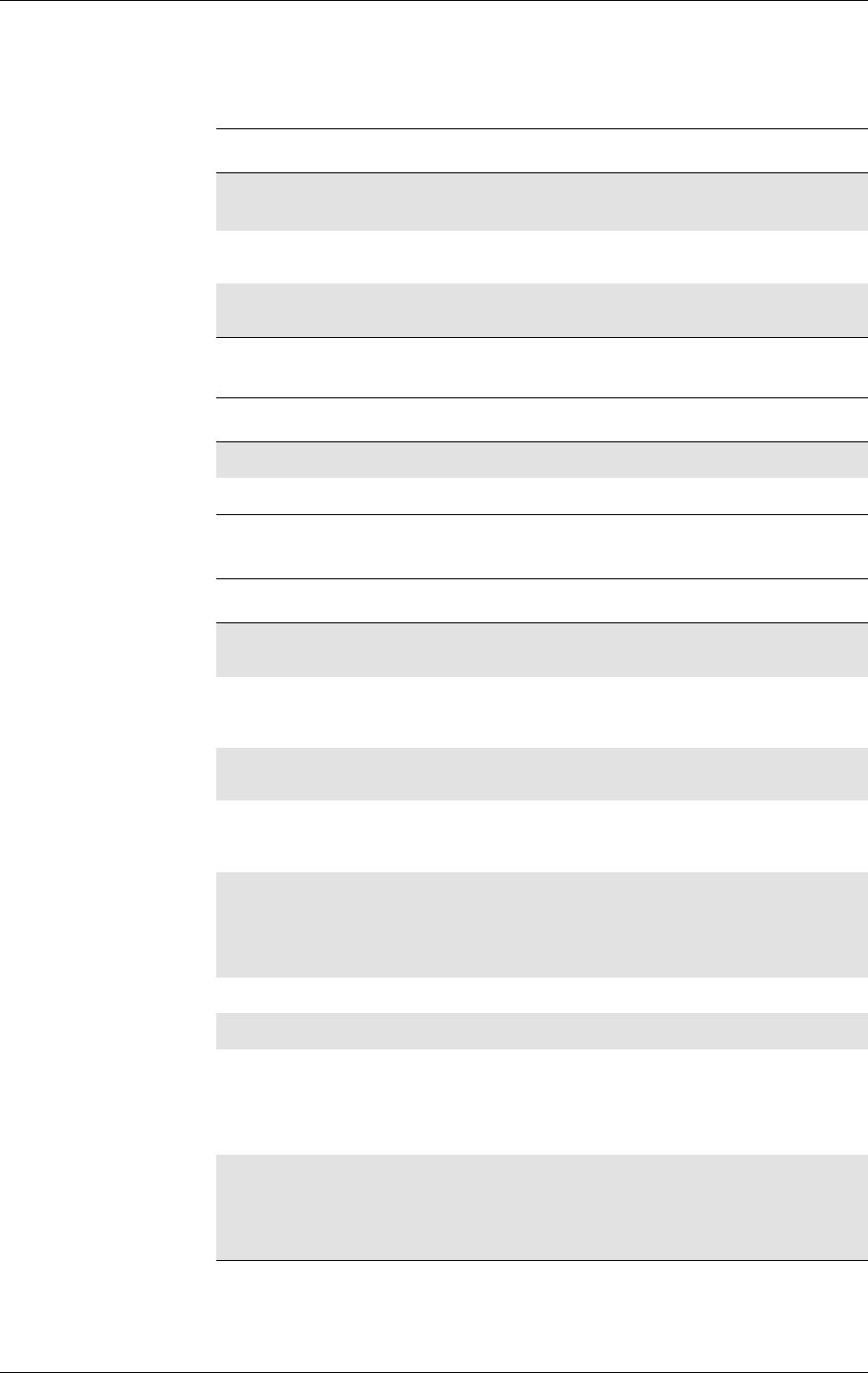
13. INTERFACE
199
LZT 123 7263 R1A
13.6 ATV DCE Response Format
Select either descriptive or numeric response codes.
List of result codes
Description Command Possible Responses
Set DCE response
format ATV[=]<value> •OK
•ERROR
Read the current
setting ATV? V: <value>
Show if the command
is supported ATV=? V: (list of supported
<value>s)
<value> Description
0Display numeric result codes
1Display verbose result codes. Default value
ATV1 ATV0 Description
OK 0Acknowledges execution of a
command
CONNECT 1A connection has been established;
the DCE is moving from command
state to online data state
RING 2The DCE has detected an incoming
call signal from the network
NO CARRIER 3The connection has been terminated
or the attempt to establish a
connection failed
ERROR 4Command not recognized, command
line maximum length exceeded,
parameter value invalid, or other
problem with processing the command
line
NO DIALTONE 6No dial tone detected
BUSY 7Engaged (busy) signal detected
NO ANSWER 8“@”(WaitforQuietAnswer)dial
modifier was used, but remote ringing
followed by five seconds of silence was
not detected before expiration of the
connection timer
CONNECT
<TEXT> Manufacturer
-specific Same as CONNECT, but includes
manufacturer-specific text that may
specify DTE speed, line speed, error
control, data compression, or other
status
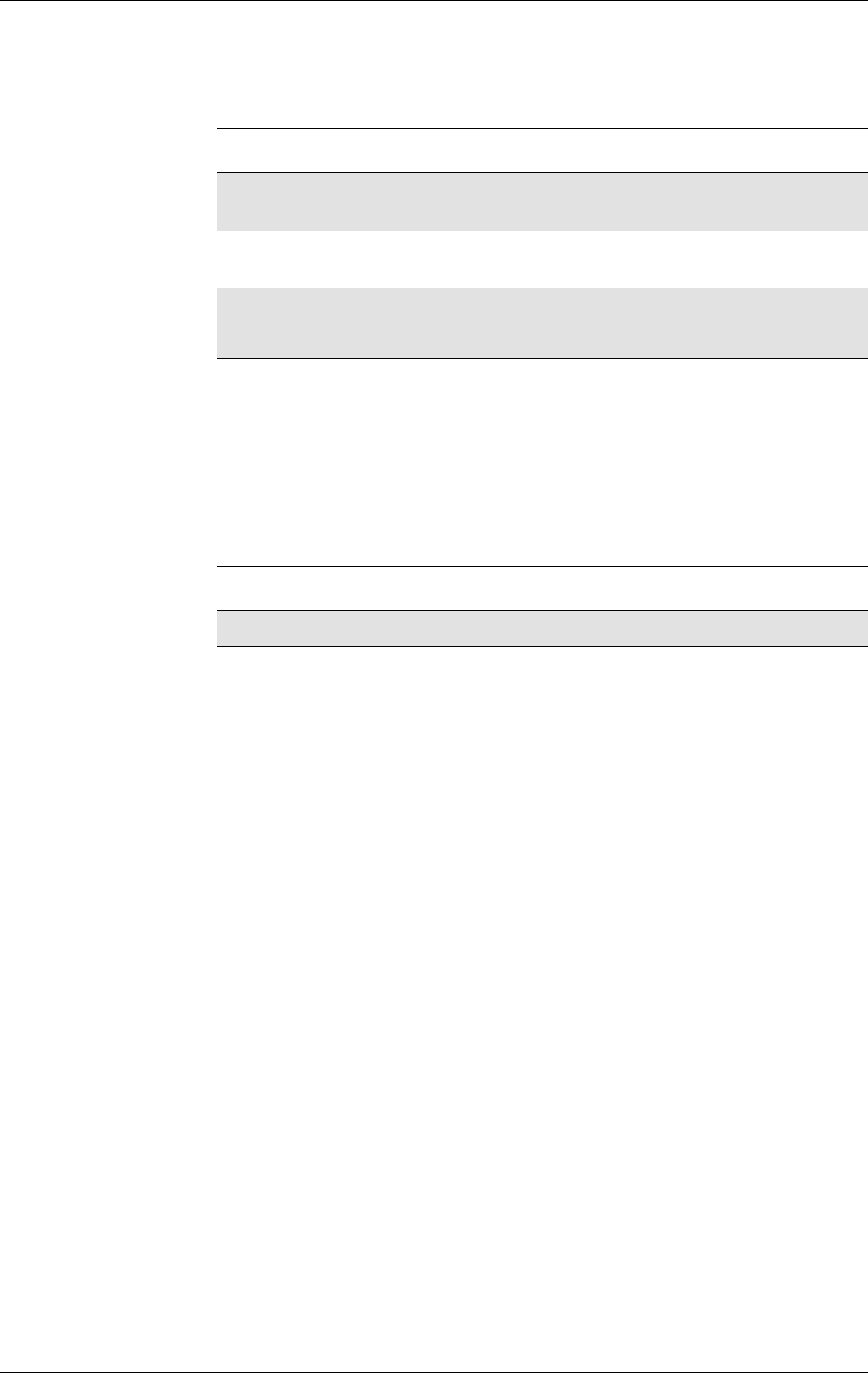
GM47/GM48 INTEGRATOR’S MANUAL
200 LZT 123 7263 R1A
13.7 ATZ Reset to Default Configuration
This command instructs the DCE to set all parameters to their default
values as specified by the user. Consider hardware configuration
switches or non-volatile parameter storage(if implemented) when using
this command.
Commands included on the same command line as the Z command will
be ignored.
Description Command Possible Responses
Execute ATZ •OK
•ERROR
Execute ATZ=<profile> •OK
•ERROR
Show if supported and
list available
parameter range
ATZ=? Z: (list of supported
<profile>s)
<profile > Description
0Select the user profile to restore
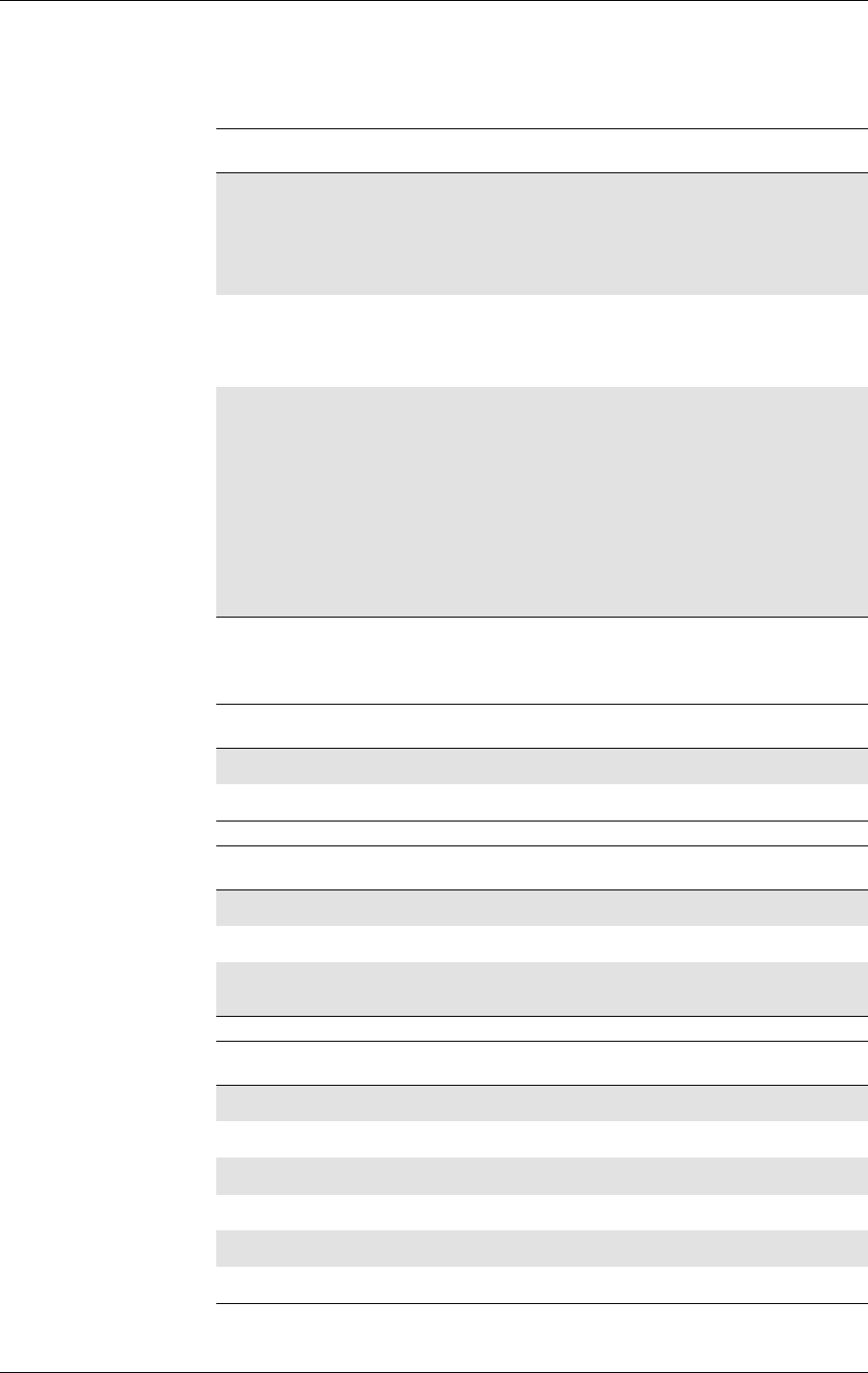
13. INTERFACE
201
LZT 123 7263 R1A
13.8 AT+CMUX Switch to 07.10 Multiplex Protocol
The command is used to turn on the multiplexer. Only “no
transparency” is supported. The parameter <k> is not used.
Description Command Possible Responses
Switch to 07.10 AT+CMUX=<transp
arency>[,<subset>
[,<port_speed>[,
<N1>[,<T1>[,<N2>
[,<T2>[,<T3>[,<k>
]]]]]]]]
•+CMEERROR:<err>
•OK
•ERROR
Returns current
setting for
multiplexer
AT+CMUX? • +CMUX:<transparency>,<subset
>,<port_speed>,<N1>,<T1>,<N2
>,<T2>,<T3>[,<k>]
•+CMEERROR:<err>
Show list of
supported
services
AT+CMUX=? • +CMUX: (list of supported
<transparency>s),
(list of supported <subset>s),
(list of supported
<port_speed>s),
(list of supported <N1>s),
(list of supported <T1>s),
(list of supported <N2>s),
(list of supported <T2>s),
(list of supported <T3>s),
(list of supported <k>)
•+CMEERROR:<err>
<transparency> Description
0No transparency
1HDLC Transparency. Not supported
<subset> Description
0Only UIH frames used
1UI frames may be used. Not supported
2I frames may be used (error recovery is activated). Not
supported
<port_speed> Description
19600 bit/s
219200 bit/s
338400 bit/s
457600 bit/s
5115200 bit/s
6230400 bit/s. Not supported
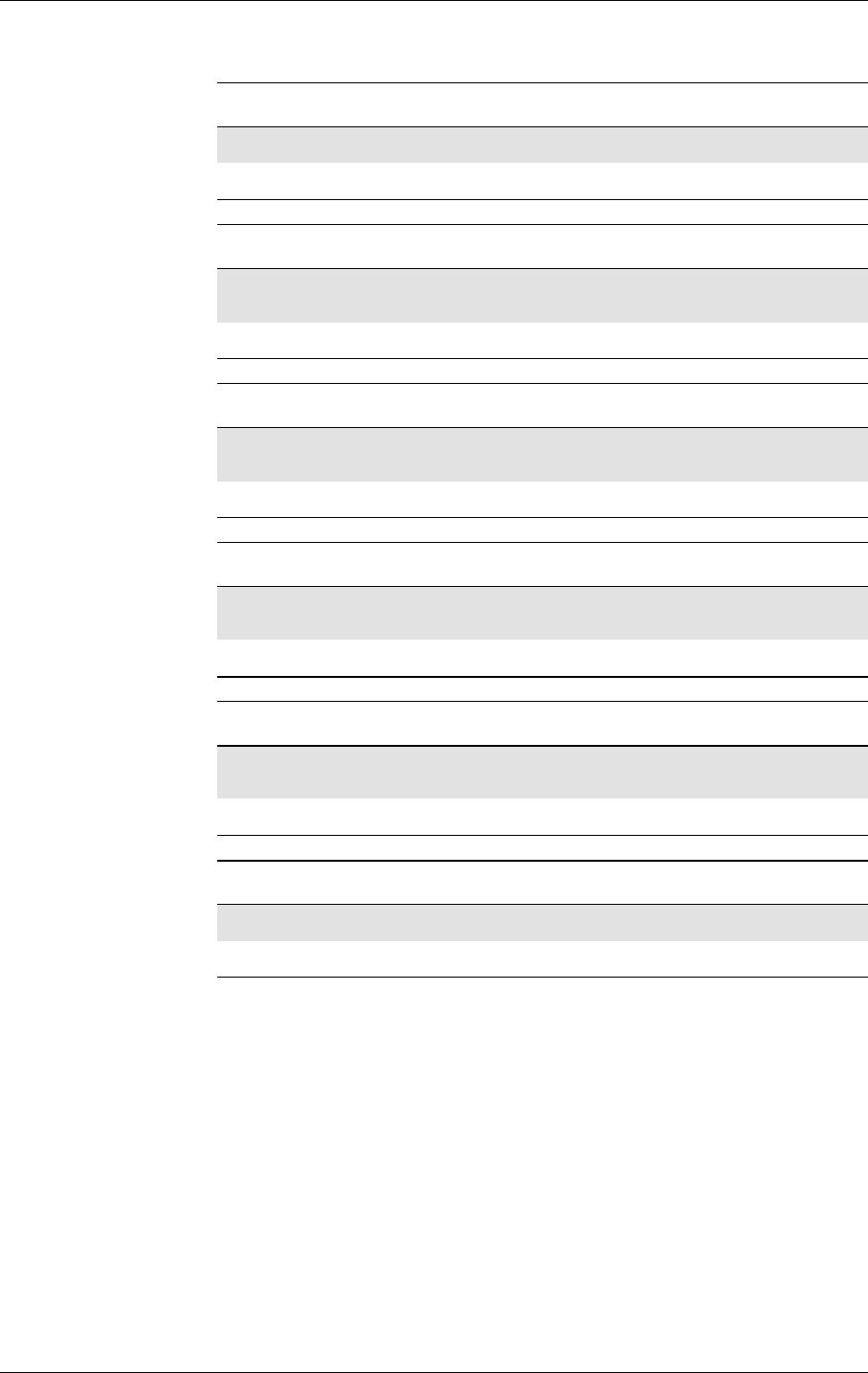
GM47/GM48 INTEGRATOR’S MANUAL
202 LZT 123 7263 R1A
<N1> Description
1..128 Maximum frame size. Only <N1>=31 supported
31 Default maximum frame size
<T1> Description
1..255 Acknowledgement timer (tens of milliseconds). Only
<T1>=10 supported
10 100ms default timer
<N2> Description
1..100 Maximum number of re-transmissions. Only <N2>=3
supported
3Default maximum number of re-transmissions
<T2> Description
2..255 Control channel response timer (tenths of milliseconds).
Only <T2>=30 supported
30 300ms default timer
<T3> Description
1..255 Wake up response timer (seconds). Only <T3>=10
supported
10 10s default timer
<k> Description
0Window size
1..7 Window size. Not supported
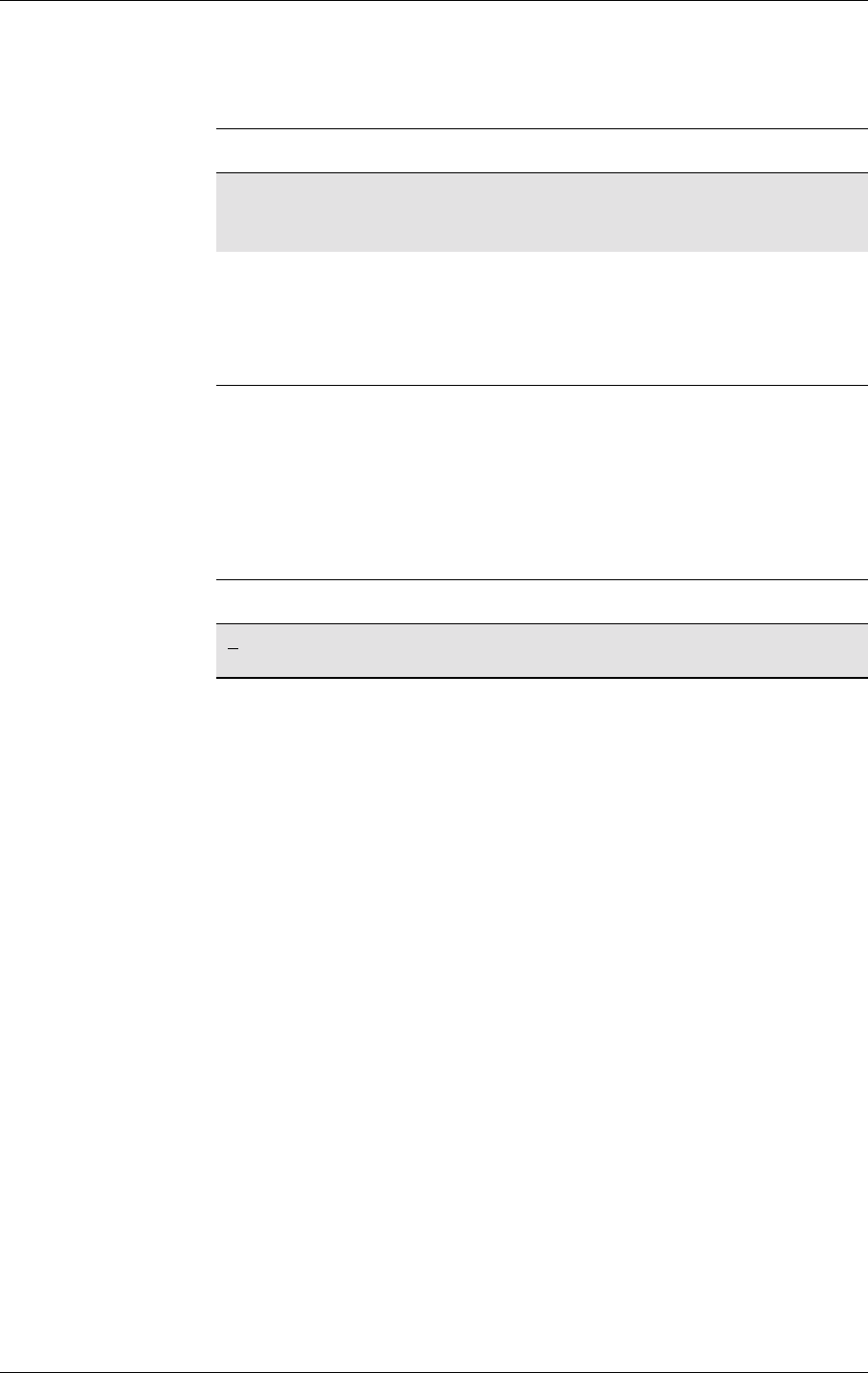
13. INTERFACE
203
LZT 123 7263 R1A
13.9 AT+CRES Restore Settings
Restores message service settings from non-volatile memory to active
memory. A TA can contain several profiles of settings. Settings
specified in commands Service Centre Address +CSCA, Set Message
Parameters +CSMP and Select Cell Broadcast Message Types +CSCB
(if implemented) are restored. Certain settings, such as SIM SMS
parameters, cannot be restored.
Description Command Possible Responses
Restore settings AT+CRES[=<profile>] • +CMS ERROR: <err>
•OK
•ERROR
Get available profiles AT+CRES=? •+CRES:(listof
supported
<profile>s)
• +CMS ERROR: <err>
•OK
•ERROR
<profile> Description
0..2 Profilenumberwheresettingsaretobestored.Defaultis
zero
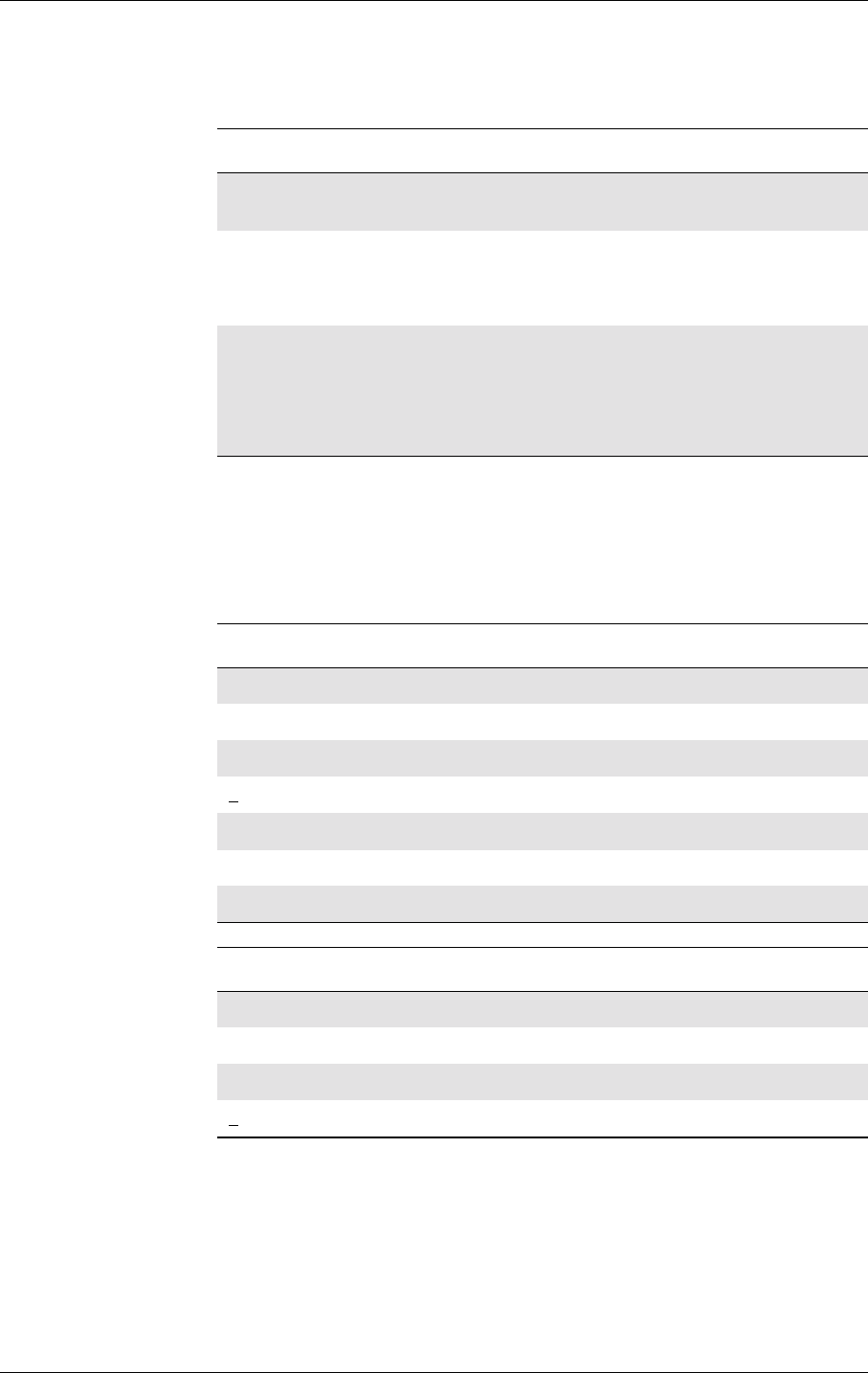
GM47/GM48 INTEGRATOR’S MANUAL
204 LZT 123 7263 R1A
13.10 AT+ICF Cable Interface Character Format
This extended-format compound parameter is used to determine the
local serial port start-stop (asynchronous) character framing used by the
DCE to accept DTE commands, and while transmitting information text
and result code, if this is not automatically determined; (Not
supported) +IPR=0 forces +ICF=0 (see +IPR).
Description Command Possible Responses
Defines DTE-DCE
character framing AT+ICF=[format[,parity]] •OK
•ERROR
Read the current
setting AT+ICF? •+ICF:
<format>,<parity>
•OK
•ERROR
Show if the
command is
supported
AT+ICF=? •+ICF:(listof
supported
<format>s), (list of
supported <parity>s)
•OK
•ERROR
<format> Description
0auto detect. Not supported
18Data2Stop.Not supported
28Data1Parity1Stop.Not supported
38Data1Stop.Default value
47Data2Stop.Not supported
57Data1Parity1Stop.Not supported
67Data1Stop.Not supported
<parity> Description
0Odd. Not supported
1Even. Not supported
2Mark. Not supported
3Space. Default value
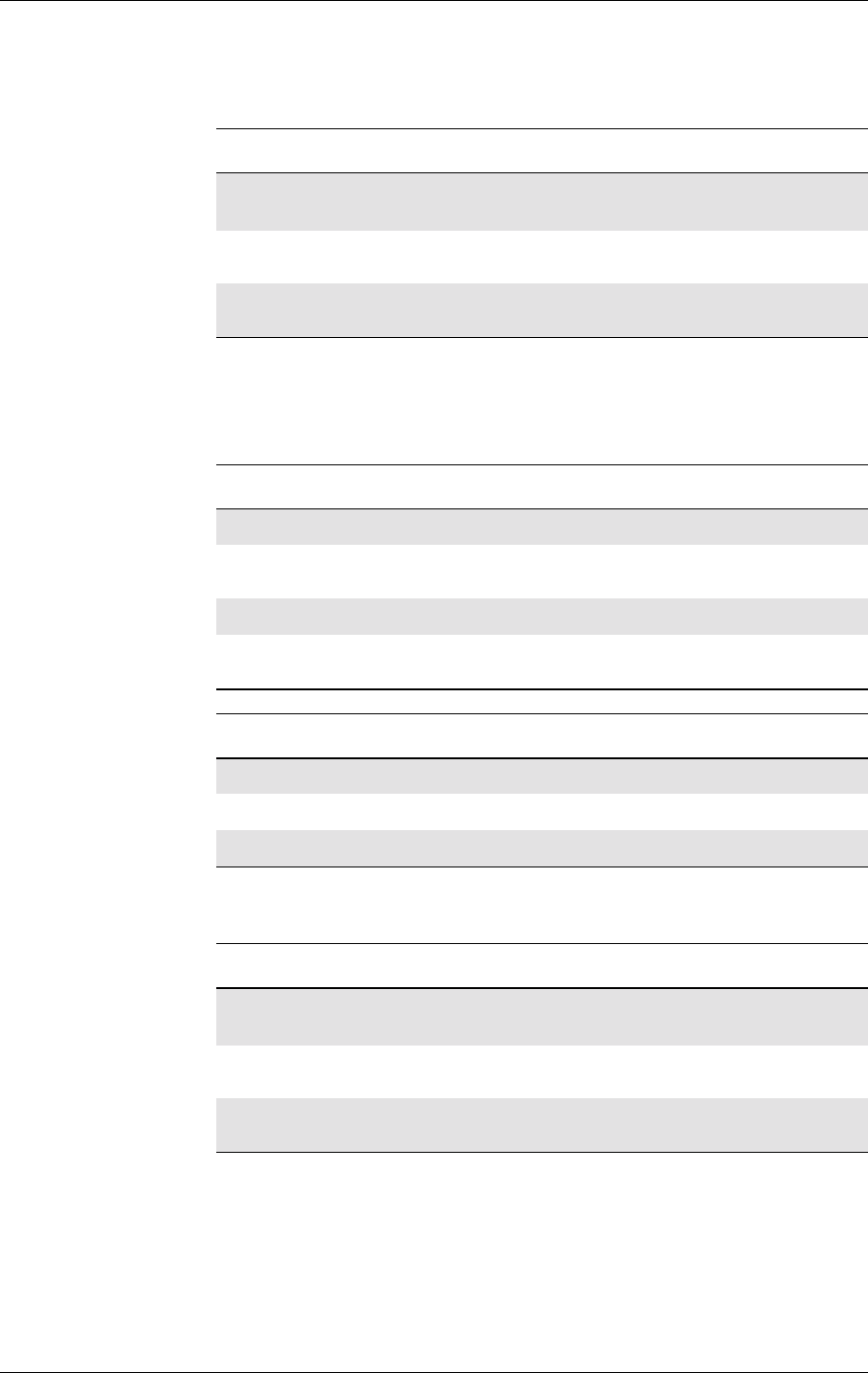
13. INTERFACE
205
LZT 123 7263 R1A
13.11 AT+IFC DTE-DCE Local Flow Control
Defines the flow control between the modem and the computer when in
on-line data mode.
No flow control is enabled in any of the command modes.
13.12 AT+ILRR Cable Interface Local Rate Reporting
Specifies whether or not the extended-format “+ILRR:<rate>”
information text is transmitted from the DCE to the DTE. The <rate>
reported shall represent the current (negotiated or renegotiated) DTE-
DCE rate. If enabled, the intermediate result code is transmitted after
any modulation, error control or data compression reports are
Description Command Possible Responses
Defines DTE-DCE local
flow control AT+IFC=[<by_te>,[<by_
ta>]] •OK
•ERROR
Read the current
setting AT+IFC? +IFC: <by_te>,<by_ta>
Show if the command
is supported AT+IFC=? +IFC: (list of supported
<by_te>s,<by_ta>s)
<by_te> Description
0No flow control on DTE
1Xon/Xoff flow control on DCE. Control characters are
removedbytheDCEinterface
2RTS flow control on DCE. Default value
3Xon/Xoff flow control on DCE. Control characters are
passed to the remote DCE/DTE
<by_ta> Description
0No flow control on DCE
1Xon/Xoff flow control on DTE
2CTS flow control on DCE. Default value
Description Command Possible Responses
Defines DTE-DCE
character framing AT+ILRR=<value> •OK
•ERROR
Read the current
setting AT+ILRR? +ILRR:<value>
Show if the command
is supported AT+ILRR=? +ILRR:(list of supported
<values>s)
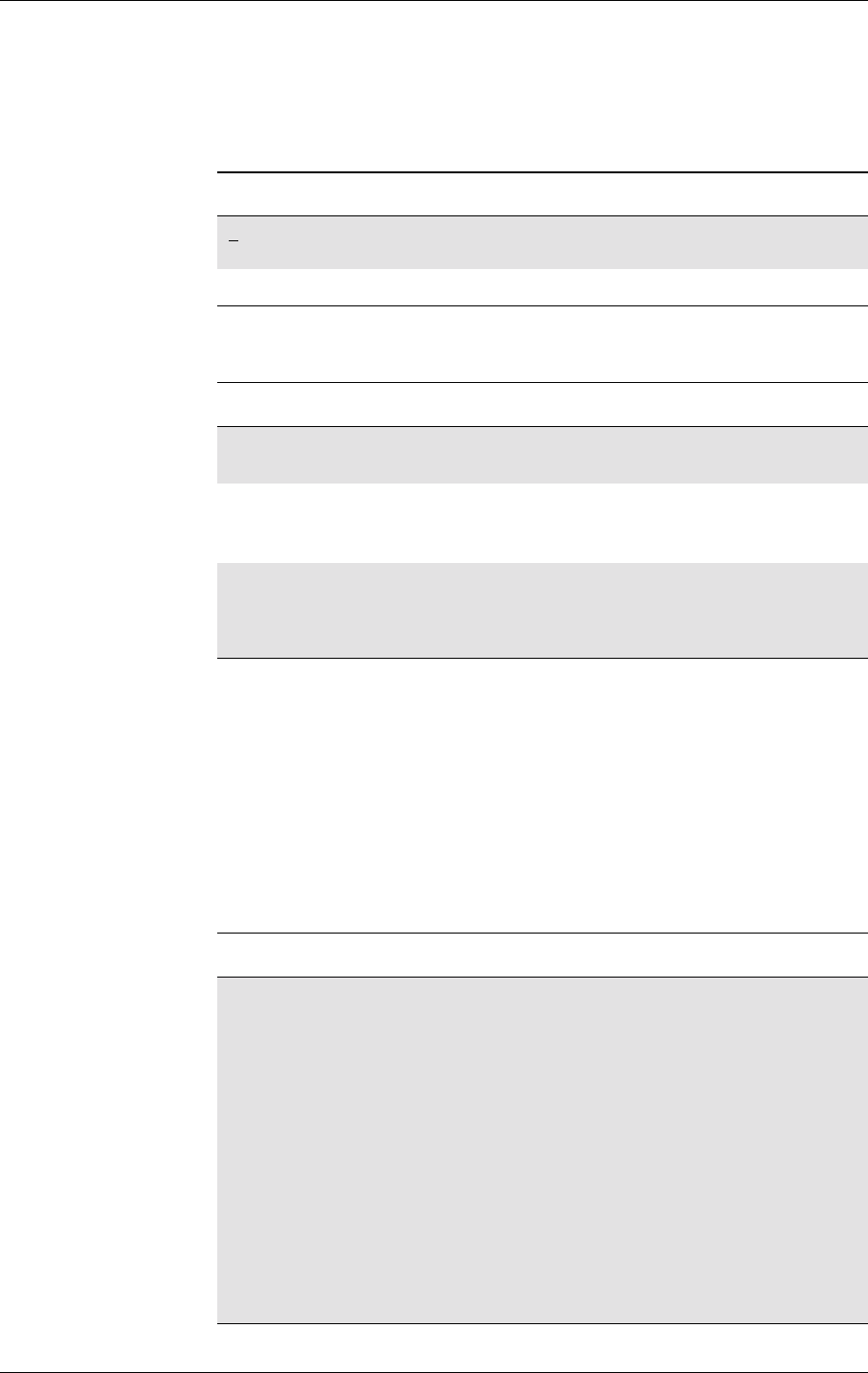
GM47/GM48 INTEGRATOR’S MANUAL
206 LZT 123 7263 R1A
transmitted, and before any final result code (e.g. CONNECT) is
transmitted. The <rate> is applied after the final result code is
transmitted.
13.13 AT+IPR Cable Interface Port Command
Specifies the data rate at which the DCE will accept commands, in
addition to 1200 bit/s or 9600 bit/s (as required in v25ter [1], subclause
4.3). It may be used to select operation at rates used by the DTE, which
the DCE is not capable of automatically detecting.
(Not supported) Specifying a value of 0 disables the function and
allows operation only at rates automatically detectable by the DCE.
The specified rate takes effect following the issuance of any result
code(s) associated with the current command line.
<value> Description
0Disables reporting of local port rate (+ILRR: is not
transmitted). Default value
1Enables reporting of local port rate (+ILRR: is transmitted)
Description Command Possible Responses
Defines fixed DTE rate AT+IPR=[rate] •OK
•ERROR
Read the current
setting AT+IPR? •+IPR:<rate>
•OK
•ERROR
Show if the command
is supported AT+IPR=? • +IPR: (), (list of fixed-
only <rate>s)]
•OK
•ERROR
<rate> Description
Discrete
integer value The <rate>valuespecifiedshallbetherateinbitsper
second at which the DTE-DCE interface should operate,
e.g. “19200” or “115200”. The rates supported by a
particular DCE are manufacturer specific.
The following rates, are supported (with two exceptions);
1200
2400
4800
9600
14400 (Not supported)
19200
28800 (Not supported)
38400
57600
76800
115200
230400
460800
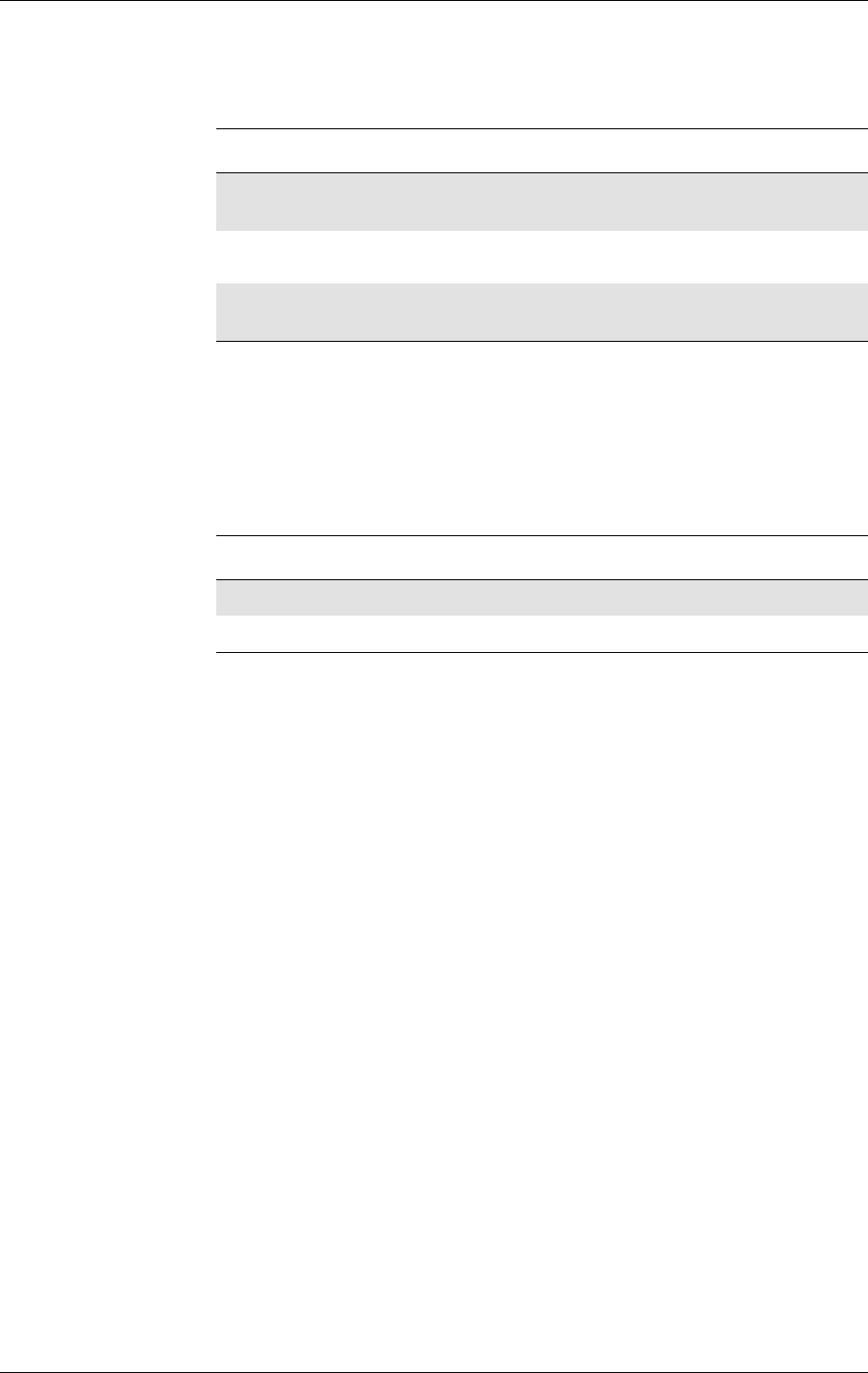
13. INTERFACE
207
LZT 123 7263 R1A
13.14 AT*E2ESC M2M Escape Sequence Guard Time
Defines a guard time for the escape sequence in GPRS to return to on-
line command mode i.e. if +++AT<CR> is received either as part of the
data stream or a terminating string from the application and no further
data is received for the duration of the guard time the module will go
into on line command mode. This guards against the module
accidentally going into on line command mode.
Description Syntax Possible responses
Set GPRS online
command guard time AT*E2ESC=[<gt>] •OK
•ERROR
Read the current
setting AT*E2ESC? *E2ESC: <gt>
Show if the command
is supported AT*E2ESC=? •OK
•ERROR
<gt> Description
0No guard time. Default value
1-10 Guard time in seconds

GM47/GM48 INTEGRATOR’S MANUAL
208 LZT 123 7263 R1A
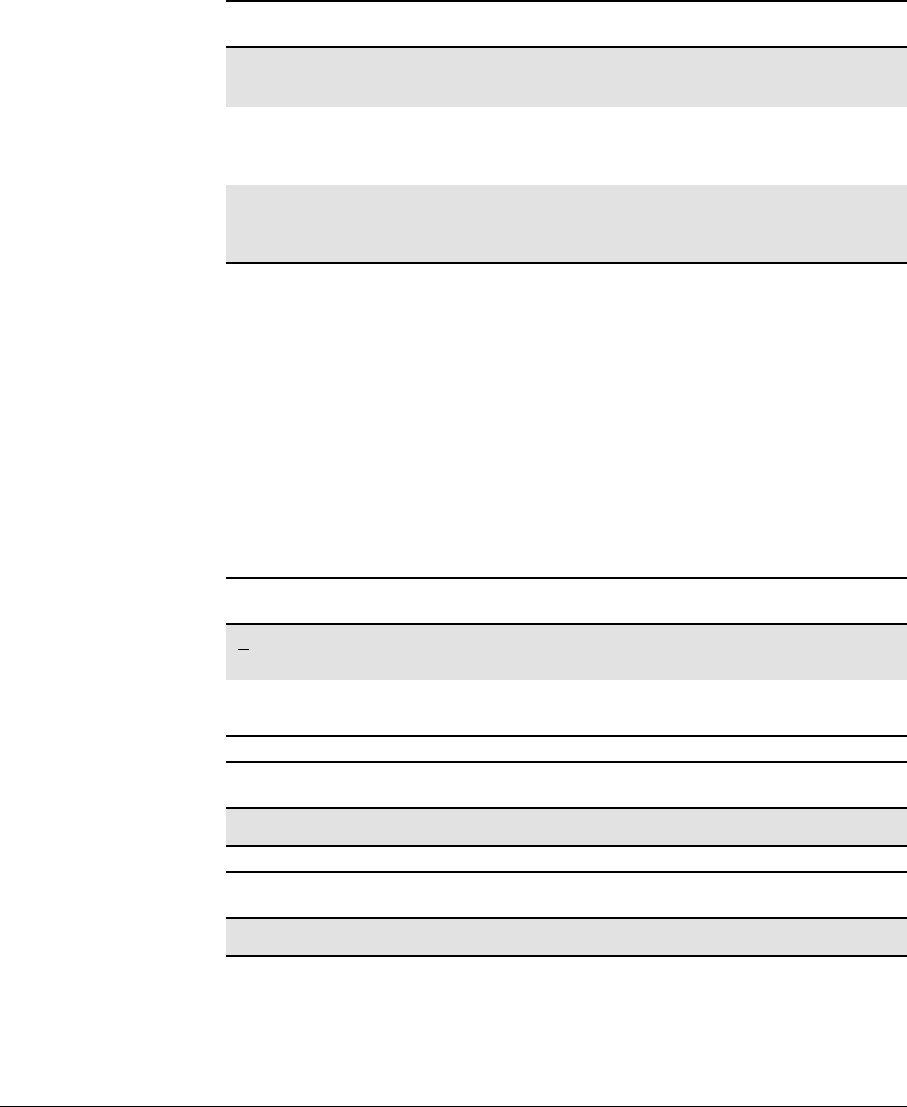
209
LZT 123 7263 R1A
14. Network
14.1 AT*E2CD Ericsson M2M Cell Description
Controls the presentation of an unsolicited result code E2CD: when
<n>=1, or when there is a change in one of the network cell parameters,
E2CD: <lac>,<ci>,<ta>.
Read command returns the status of result code presentation and several
values, which show the network cell parameters.
Location information <lac>, <ci> and <ta> are returned only when
<n>=1 and the ME is registered in the network. To know if the ME is
registered use the AT+CREG command. If the ME is not registered in
the cellular network an ERROR message is returned.
Description Command Possible Responses
Request network cell
description AT*E2CD=<n> •ERROR
•OK
Read the command AT*E2CD? •*E2CD:
<n>,<lac>,<ci>,<ta>
•ERROR
Show if the command
is supported AT*E2CD=? •*E2CD:(listof
supported <n>s)
•ERROR
<n> Description
0Disable network location information unsolicited result
code, (default)
1Enable network location information unsolicited result
code *E2CD: <lac>,<ci>,<ta>
<lac> Description
String type Two byte location area code in hexadecimal format
<ci> Description
string type Two byte cell ID in hexadecimal format

GM47/GM48 INTEGRATOR’S MANUAL
210 LZT 123 7263 R1A
<ta> Description
0-63 According to GSM 04.18 V8.6.0, the coding of the timing
advance value is the binary representation of the timing
advance in bit periods; 1 bit period = 48/13 ìs. <ta> is the
integer representation of the timing advance in binary
format
64-255 Reserved
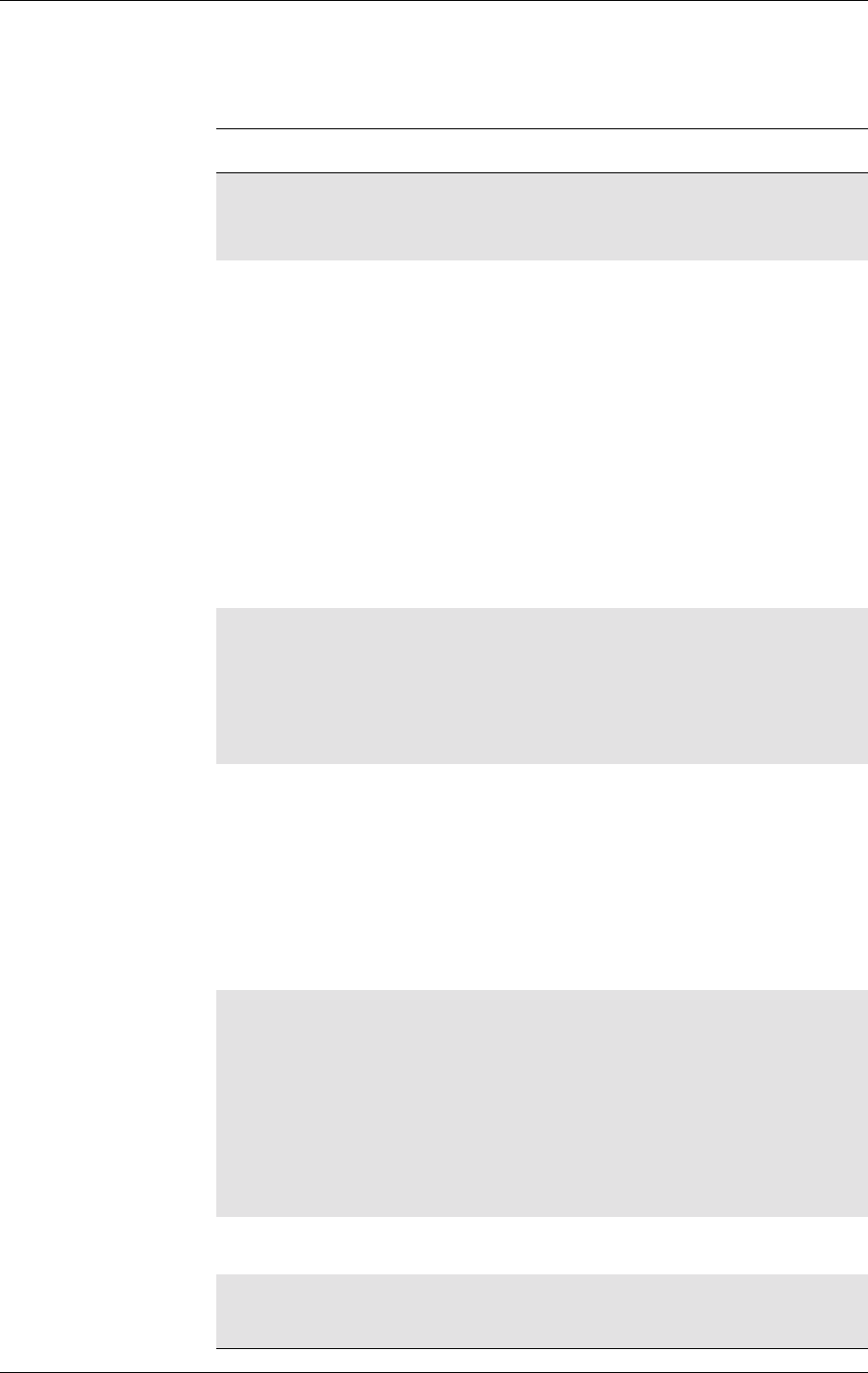
14. NETWORK
211
LZT 123 7263 R1A
14.2 AT*E2EMM Ericsson M2M Engineering Monitoring Mode
Description Command Possible Responses
Set the
response
presentation
mode
AT*E2EMM=
<n>[,<m>] • ERROR
•OK
Display mode
neighbour cells
are taken from
the toplist
*E2EMM:
Serving Cell
MCC,MNC,LAC,CellID,BSIC,Ch[,RxL,C1,
C2][,RxLFull,RxLSub,RxQFull,RxQSub,TA,T
N],
<mcc>,<mnc>,<lac>,<ci>,<bsic>,<ch>
[,<rxl>,<c1>,<c2>][,<rxlFull>,<rxlSub>,
<rxqfull>,<rxqsub>,<ta>,<tn>],
NeighBours Cells
MCC,MNC,LAC,CellID,BSIC,Ch,RxL[,C1,
C2],
<mcc>,<mnc>,<lac>,<ci>,<bsic>,<ch>,
<rxl>[,<c1>,<c2>]
<mcc>,<mnc>,<lac>,<ci>,<bsic>,<ch>,
<rxl>[,<c1>,<c2>]
…
<mcc>,<mnc>,<lac>,<ci>,<bsic>,<ch>,
<rxl>[,<c1>,<c2>]
OK
Compact mode.
The first cell is the
serving cell, the
rest are
neighbour cells
taken from the
toplist
*E2EMM: <mcc>,<mnc>,<ci>,
<bsic>,<ch>[,<rxl>][,<rxlSub>,<rxqsub>,
<ta>],<mcc>,<mnc>,<ci>,<bsic>,<ch>,
<rxl>,
<mcc>,<mnc>,<ci>,<bsic>,<ch>,<rxl>,
…
<mcc>,<mnc>,<ci>,<bsic>,<ch>,<rxl>
OK
Verbose mode.
The first cell is the
serving cell and
the rest are
neighbour cells
as provided by
the network in
the system info.
messages (2 and
5) and via the
AT*E2NBTS
command
*E2EMM: <mcc>,<mnc>,<lac>,
<ci>,<bsic>,<ch>[,<rxl>,<c1>,<c2>]
[,<rxlFull>,<rxlSub>,<rxqfull>,<rxqsub>,
<ta>,<tn>],
<mcc>,<mnc>,<lac>,<ci>,<bsic>,<ch>,
<rxl>[,<c1>,<c2>]
<mcc>,<mnc>,<lac>,<ci>,<bsic>,<ch>,
<rxl>[,<c1>,<c2>]
…
<mcc>,<mnc>,<lac>,<ci>,<bsic>,<ch>,
<rxl>[,<c1>,<c2>]
OK
Reduced display
mode - info. as
display mode but
without text
headings or
<CR><LF>
separators,
neighbour cells
from top list
*E2EMM: <mcc>,<mnc>,<lac>,
<ci>,<bsic>,<ch>[,<rxl>,<c1>,<c2>]
[,<rxlFull>,<rxlSub>,<rxqfull>,<rxqsub>,
<ta>,<tn>],
<mcc>,<mnc>,<lac>,<ci>,<bsic>,<ch>,
<rxl>[,<c1>,<c2>]
<mcc>,<mnc>,<lac>,<ci>,<bsic>,<ch>,
<rxl>[,<c1>,<c2>]
…
<mcc>,<mnc>,<lac>,<ci>,<bsic>,<ch>,
<rxl>[,<c1>,<c2>]
OK
Read the
command AT*E2EMM? • *E2EMM: <n>
• ERROR
Show if the
command is
supported
AT*E2EMM=
?• *E2EMM: (list of supported <n>s),(list
of supported <m>s)
• ERROR

GM47/GM48 INTEGRATOR’S MANUAL
212 LZT 123 7263 R1A
There are four presentation format modes (Display, Compact, Verbose,
and Reduced Display) and two response types (one shot response or
continuous unsolicited responses).
The purpose of the presentation format mode Display is to display the
data in a readable form, including headers and line breaks
(<CR><LF>). This format is, however, not well suited for machine
decoding. The formats Verbose, Compact and Reduced Display do not
have headers or line breaks. Verbose mode displays more parameters
than the compact mode.
The response types give the user the choice of one a shot information or
an unsolicited response with <m> seconds between each response.
Examples
AT*E2EMM=1
*E2EMM:<CR><LF>
Serving Cell<CR><LF>
MCC,MNC,LAC,CellID,BSIC,Ch[,RxL,C1,C2][,RxLFull,RxLSub,Rx
QFull,RxQSub,TA,TN]<CR><LF>
<mcc>,<mnc>,<lac>,<ci>,<bsic>,<ch>[,<rxl>,<c1>,<c2>][,<rxlFull>,
<rxlSub>,<rxqfull>,<rxqsub>,<ta>,<tn>]<CR><LF>
NeighBours Cells<CR><LF>
MCC,MNC,LAC,CellID,BSIC,Ch,RxL[,C1,C2]<CR><LF>
<mcc>,<mnc>,<lac>,<ci>,<bsic>,<ch>,<rxl>[,<c1>,<c2>]<CR><LF>
<mcc>,<mnc>,<lac>,<ci>,<bsic>,<ch>,<rxl>[,<c1>,<c2>]<CR><LF>
…
<mcc>,<mnc>,<lac>,<ci>,<bsic>,<ch>,<rxl>[,<c1>,<c2>]<CR><LF>
OK
AT*E2EMM=3
*E2EMM: <servcell mcc>,<servcell mnc>,<servcell ci>,<servcell
bsic>,<servcell ch>[,<servcell rxl>][,<servcell rxlSub>,<servcell
rxqsub>,<servcell ta>],<neighborcell1 mcc>,<neighborcell1
mnc>,<neighborcell1 ci>,<neighborcell1 bsic>,<neighborcell1
ch>,<neighborcell1 rxl>,<neighborcell2 mcc>,<neighborcell2
mnc>,<neighborcell2 ci>,<neighborcell2 bsic>,<neighborcell2
ch>,<neighborcell2 rxl>,
…
<neighborcelln mcc>,<neighborcellnmnc>,<neighborcellnci>,
<neighborcelln bsic>,<neighborcelln ch>,<neighborcelln
rxl><CR><LF>
OK
AT*E2EMM=5
*E2EMM: <servcell mcc>,<servcell mnc>,<servcell lac>,<servcell
ci>,<servcell bsic>,<servcell ch>[,<servcell rxl>,<servcell
C1>,<servcell C2>][,<servcell rxlFull>,<servcell rxlSub>,<servcell
rxqfull>,<servcell rxqsub>,<servcell tn>,<servcell ta>],

14. NETWORK
213
LZT 123 7263 R1A
<neighborcell1 mcc>,<neighborcell1 mnc>,<neighborcell1
lac>,<neighborcell1 ci>,<neighborcell1 bsic>,<neighborcell1
ch>,<neighborcell1 rxl>[,<neighborcell1 C1>,<neighborcell1
C2>],<neighborcell2 mcc>,<neighborcell2 mnc>,<neighborcell2
lac>,<neighborcell2 ci>,<neighborcell2 bsic>,<neighborcell2
ch>,<neighborcell2 rxl>[,<neighborcell2 C1>,<neighborcell2 C2>],
…
<neighborcelln mcc>,<neighborcellnmnc>,<neighborcelln
lac>,<neighborcelln ci>,<neighborcelln bsic>,<neighborcelln
ch>,<neighborcelln rxl> [,<neighborcelln C1>,<neighborcelln
C2>]<CR><LF>
OK
AT*E2EMM=7
*E2EMM:<servcell mcc>,<servcell mnc>,<servcell lac>,<servcell
ci>,<servcell bsic>,<servcell ch>[,<servcell rxl>,<servcell
c1>,<servcell c2>][,<servcell rxlFull>,<servcell rxlSub>,<servcell
rxqfull>,<servcell rxqsub>,<servcell ta>,<servcell tn>],<neighborcell1
mcc>,< neighborcell1 mnc>,<neighborcell1 lac>,<neighborcell1
ci>,<neighborcell1 bsic>,<neighborcell1 ch>,<neighborcell1 rxl>[,<
neighborcell1 c1>,<neighborcell1 c2>],<neighborcell2
mcc>,<neighborcell2 mnc>,<neighborcell2 lac>,<neighborcell2
ci>,<neighborcell2 bsic>,<neighborcell2 ch>,<neighborcell2
rxl>[,<neighborcell2 c1>,<neighborcell2c2>]
…
<neighborcelln mcc>,<neighborcelln mnc>,<neighborcelln
lac>,<neighborcelln ci>,<neighborcelln bsic>,<neighborcelln
ch>,<neighborcelln rxl>[,<neighborcelln c1>,<neighborcelln c2>]
OK
The mode setting <n> in the set command has the combination listed in
the table below.
When <n>=5, the shot information is the same as in <n> = 1, but
neighbouring cells, which have to be up to 16. This is the information
that comes from the Serving Cell through the BCCH, reporting the BTS
that are on the Serving Cell's surroundings.
<n> Description
0Disable network monitoring unsolicited result code.
Default
1One shot presentation of the network location
information. Display mode with headers and <CR><LF>
line separators
2Enable network location information unsolicited result
code in Display mode (like n=1). There will be continuous
unsolicited information responses <m> seconds apart
3One shot presentation of the compact network location
information
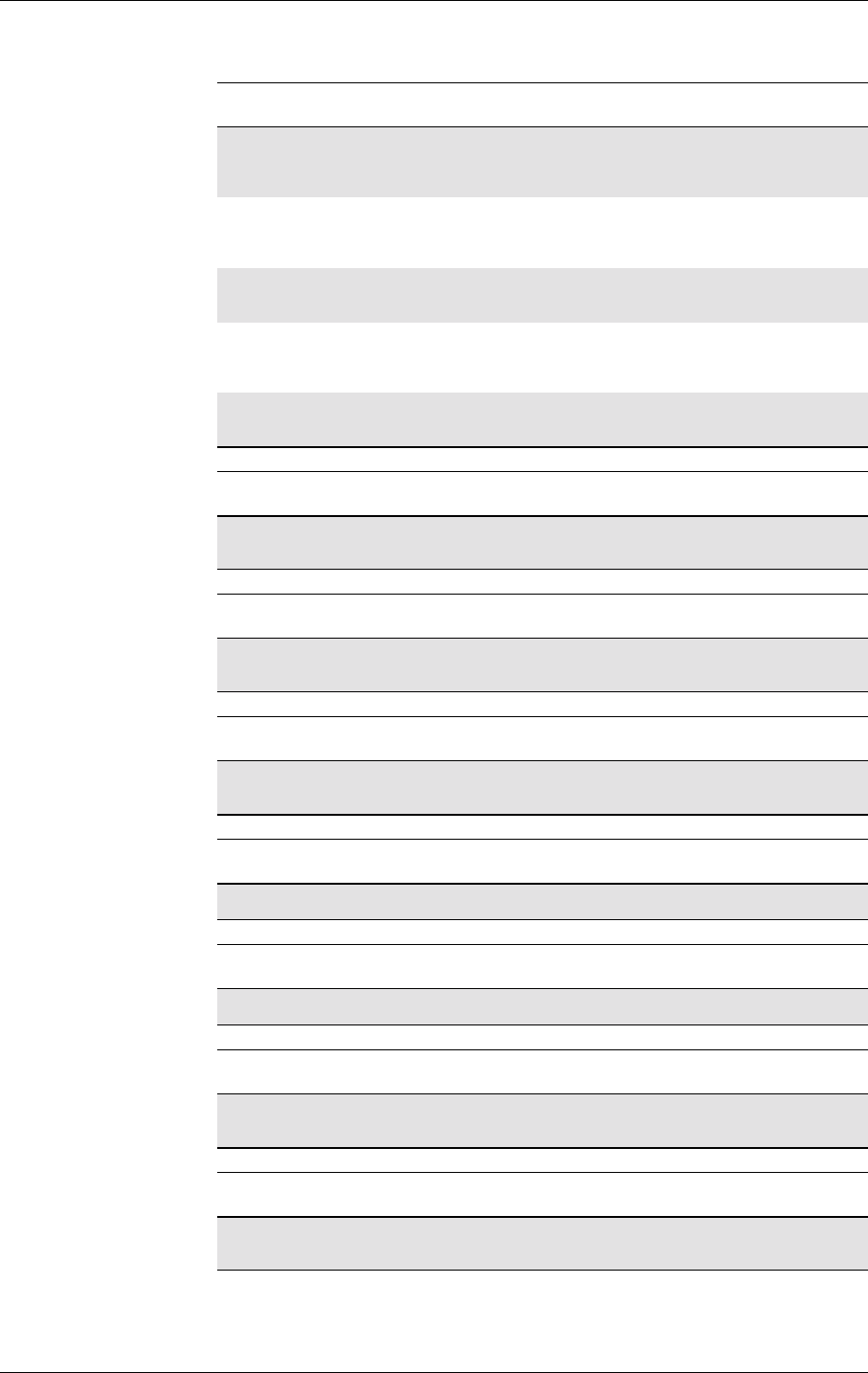
GM47/GM48 INTEGRATOR’S MANUAL
214 LZT 123 7263 R1A
4Enable compact network location information unsolicited
result code. There will be continuous unsolicited
information responses <m> seconds apart
5One shot presentation of the network location information
(verbose format), including 16 BTSs, coming from the
Serving Cell signalling information
6As n=5 format but there will be continuous unsolicited
information responses <m> seconds apart
7One shot presentation of the network information (same
informationasinn=1)butnoheadersor<CR><LF>line
separators. Neighbor cells from the Toplist
8As n=7 format but there will be continuous unsolicited
information responses <m> seconds apart
<m> Description
1-255 Integer type giving time (in seconds) between unsolicited
responses. Default=5
<mcc> Description
Integer type Three digits in decimal format. The Mobile Country Code
identifies the PLMN serving cell country according to ITU
<mnc> Description
Integer type Two digits in decimal format. The Mobile Network Code
identifies the PLMN operator in the serving cell
<lac> Description
Integer type Two byte location area code in hexadecimal format
<ci> Description
Integer type Two byte cell ID in hexadecimal format
<bsic> Description
Integer type One byte Base Stations Identification code in
hexadecimal format
<ch> Description
(0-1023) It represents the ARFCN that shows the Absolute RF
Channel, which identifies the BCCH carrier
<n> Description
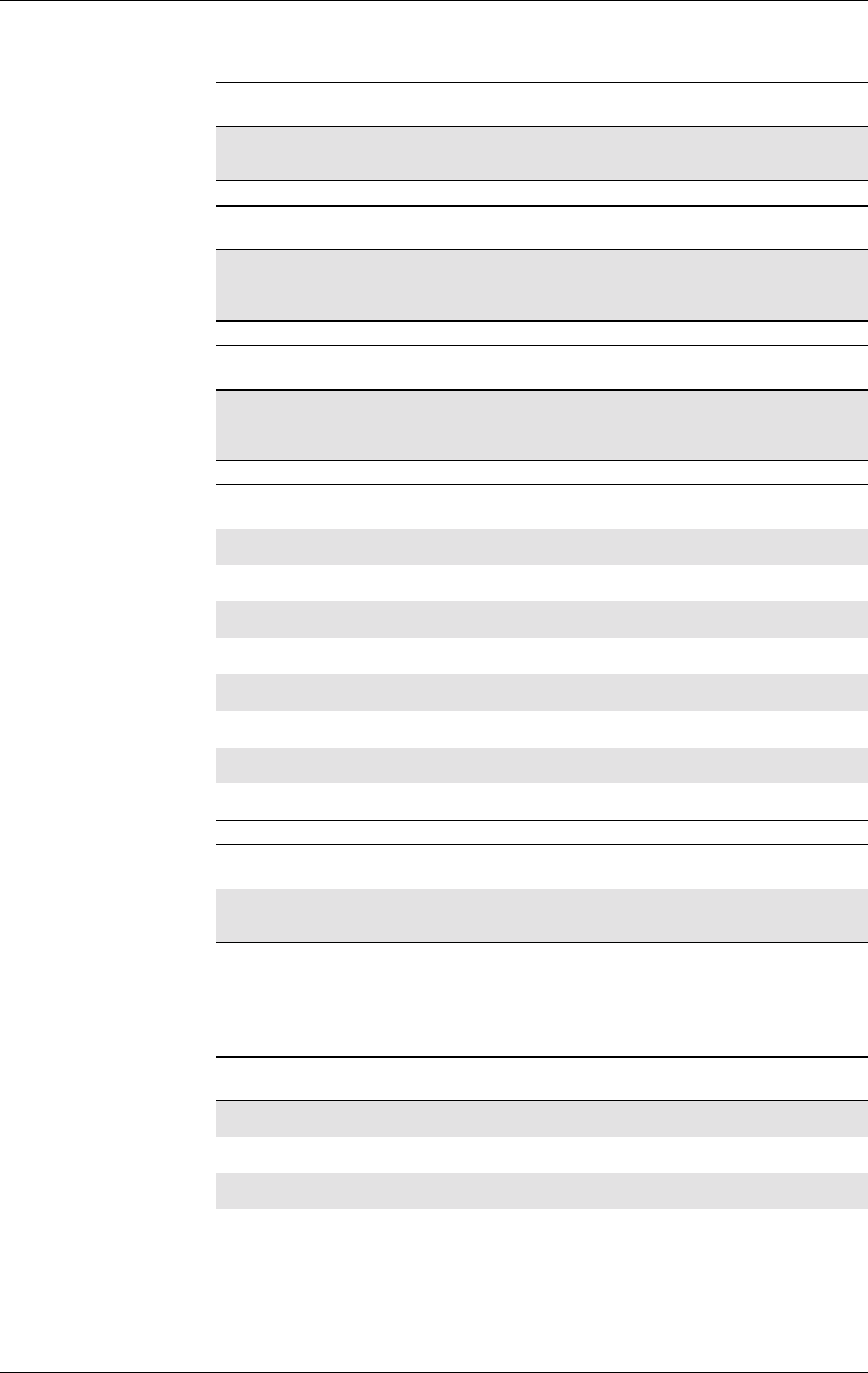
14. NETWORK
215
LZT 123 7263 R1A
<rxqsub> is the parameter that indicates the quality in the received
signal on dedicated mode. The measurement average is applied to a
subset of a SACCH multiframe.
<rxl> Description
Integer type Received Signal Strength level in dBm measured on idle
mode
<rxlfull> Description
Integer type Received Signal Strength level in dBm. The Rx Level is
taken in the Downlink and statistically is applied to 100
TDMA frames of the TCH or during a SACCH multiframe
<rxlsub> Description
Integer type Received Signal Strength level in dBm. The Rx Level is
taken from the DownLink signal and the average is
applied to subset of SACCH frames
<rxqfull> Description
0BER < 0.1%
10.26% < BER < 0.30%
20.51% < BER < 0.64%
31.0%<BER<1.3%
41.9%<BER<2.7%
53.8%<BER<5.4%
67.6%<BER<11.0%
7BER > 15.0%
<mcc> Description
Integer type Three digits in decimal format. The Mobile Country Code
identifies the PLMN serving cell country according to ITU
<rxqsub> Description
0BER < 0.1%
10.26% < BER < 0.30%
20.51% < BER < 0.64%
31.0%<BER<1.3%
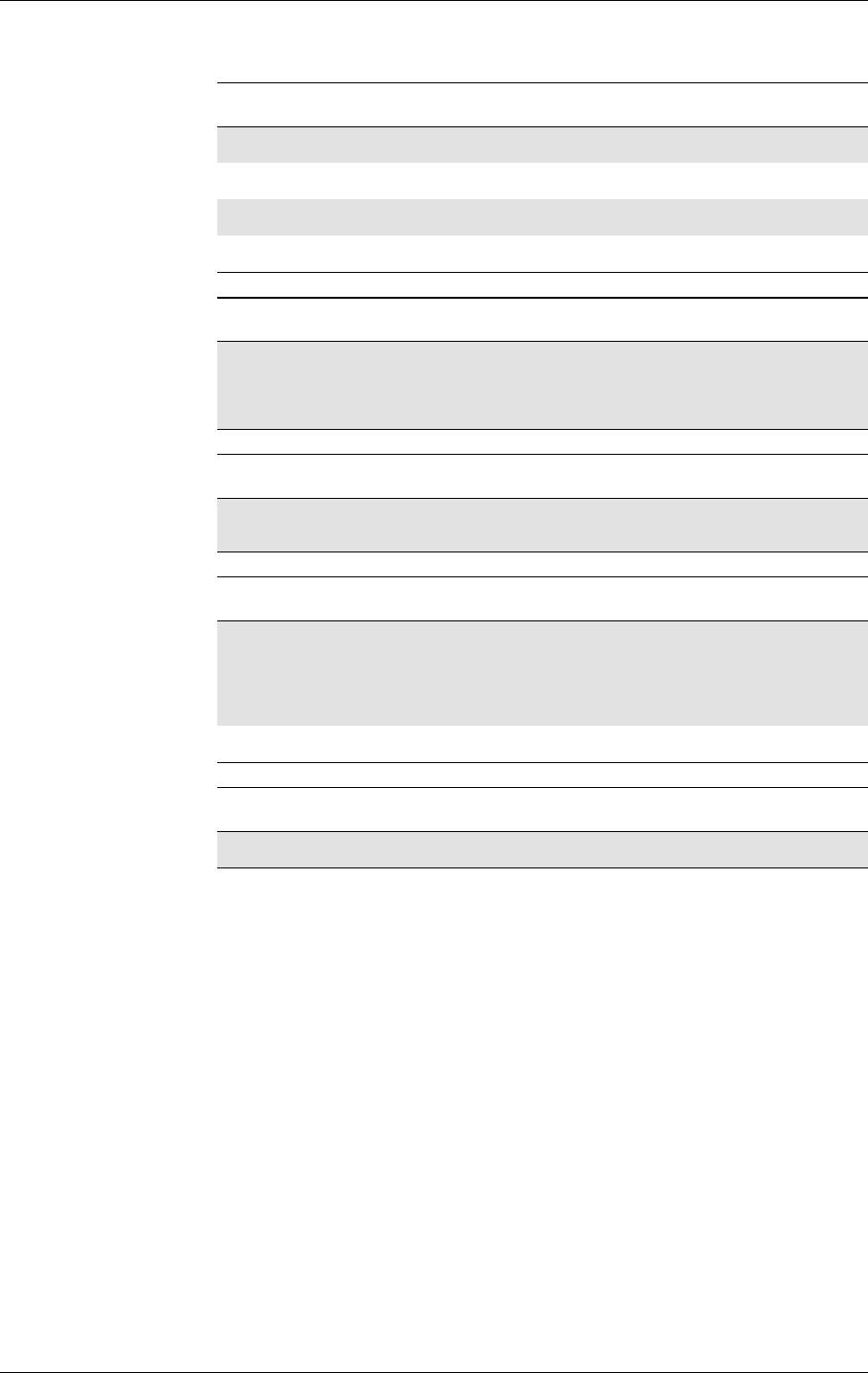
GM47/GM48 INTEGRATOR’S MANUAL
216 LZT 123 7263 R1A
41.9% < BER < 2.7%
53.8% < BER < 5.4%
67.6% < BER < 11.0%
7BER > 15.0%
<c1> Description
Integer Path Loss criterion parameter for neighbour cells. The MS
calculates this parameter, in idle mode, to decide if the
cell is suitable to camp on. After the calculation the
criterion is C1 > 0. See GSM 05.08
<c2> Description
Integer Cell reselection parameter for neighbour cells. This
parameter shall optimise the selected cell reselection
<ta> Description
0-63 According to GSM 04.18 V8.6.0, the coding of the timing
advance value is the binary representation of the timing
advance in bit periods; 1 bit period = 48/13 ìs. <ta> is the
integer representation of the timing advance in binary
format
64-255 Reserved
<tn> Description
0-7 Its value indicates the time slot number in a traffic channel
<rxqsub> Description
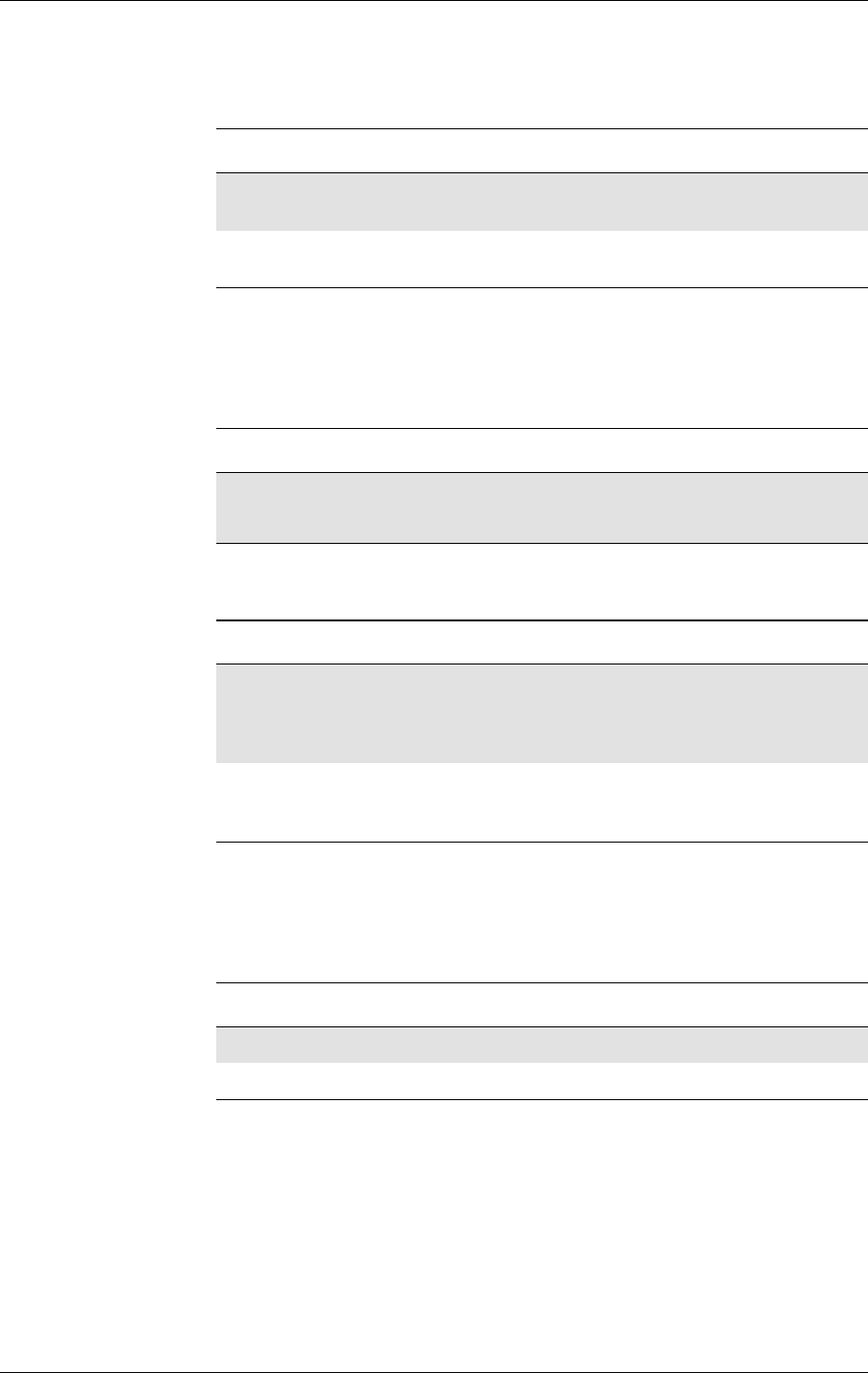
14. NETWORK
217
LZT 123 7263 R1A
14.3 AT*E2SPN M2M Service Provider Indication
Causes the MS to return the service provider name stored in the SIM
card (<spi> parameter). The text will consist of a maximum of 16 bytes
containing the service provider name stored in the EFSPN file in the
SIM card (see GSM 11.11).
14.4 AT*EALS Ericsson Request ALS Status
Used to request the MS to give ALS (Alternate Line Services) status.
The information is available on the SIM card. If ALS is active, the user
has two lines for voice calls. The line number or name tag for the line is
then indicated on the display.
Description Command Possible Responses
Request service
provider indication AT*E2SPN •*E2SPN:<spi>
•+CMEERROR:<err>
Show if the command
is supported AT*E2SPN=? •OK
•ERROR
<spi> Description
String String type field of maximum length 16 bytes; character
set as specified by command Select TE character set
+CSCS
Description Command Possible Responses
Requests current status
for ALS AT*EALS •*EALS:<status>
•+CMEERROR:<err>
•OK
•ERROR
Test if the command is
supported AT*EALS=? •+CMEERROR:<err>
•OK
•ERROR
<status> Description
0ALS function is not active (off)
1ALS function is active (on)
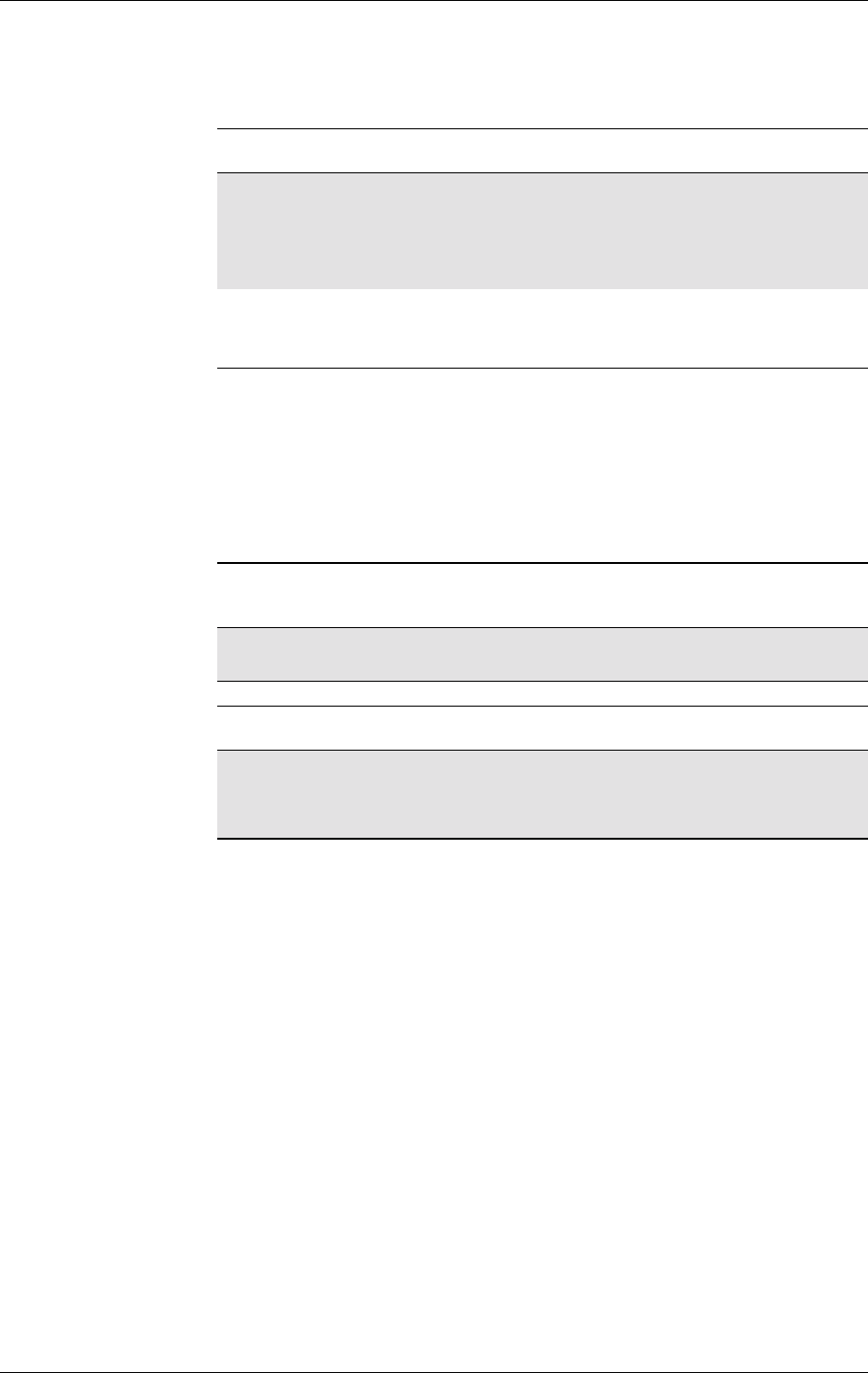
GM47/GM48 INTEGRATOR’S MANUAL
218 LZT 123 7263 R1A
14.5 AT*ECSP Ericsson Customer Service Profile
This command is used to read the customer service profile (CSP) from
the SIM. CSP is a list on the SIM, which indicates the services that are
user accessible. Each of the services has a related bit within the CSP.
The services are grouped into service groups, with a maximum of 8
services in a group. For each service group, a bit mask tells which
services are available (bit=1). Unused bits are set to 0.
Description Command Possible Responses
Read the customer
service profile from the
SIM
AT*ECSP=<service
group> •*ECSP:<service
group>,<services>
•+CMEERROR:<err>
•OK
•ERROR
Test if the command is
supported AT*ECSP=? •+CMEERROR:<err>
•OK
•ERROR
<service
group> Description
Byte Each service group has a corresponding number, service
group code
<services> Description
byte Bit mask (8 bits), indicating the services within the service
group
Bit=0: unused or unavailable service
Bit=1: available service
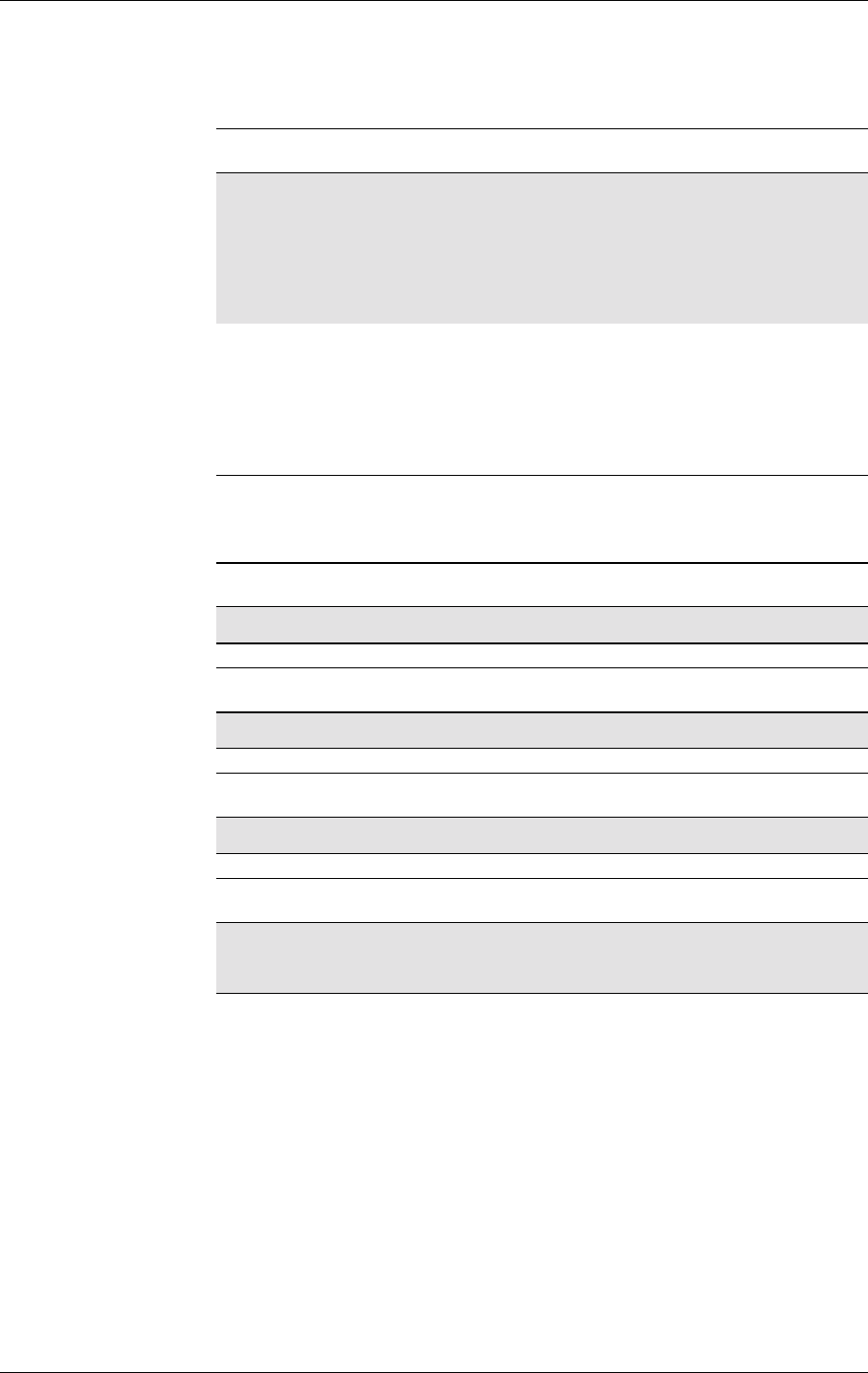
14. NETWORK
219
LZT 123 7263 R1A
14.6 AT*EPNR Ericsson Read SIM Preferred Network
This command is used to read the SIM preferred list of networks
(EFPLMNsel).
Description Command Possible Responses
Read entries in SIM
preferred list AT*EPNR=<format>
[,<index1>
[,<index2]]
•*EPNR:
<index1>,<oper1>[...]
*EPNR: <index2>,
<oper2>
•+CMEERROR:<err>
•OK
•ERROR
Test if the command is
supported and list the
possible settings
AT*EPNR=? •*EPNR:(listof
supported <index>s),
(list of supported
<format>s)
•+CMEERROR:<err>
•OK
•ERROR
<index1> Description
integer Start index (>0)
<index2> Description
integer Stop index (>0)
<format> Description
2Numeric <oper>
<oper> Description
string String indicates the code for the operator.
E.g. GSM - Sweden - Europolitan: “24008” (3 + 2).
PCS: 3 digits for country and 3 digits for network
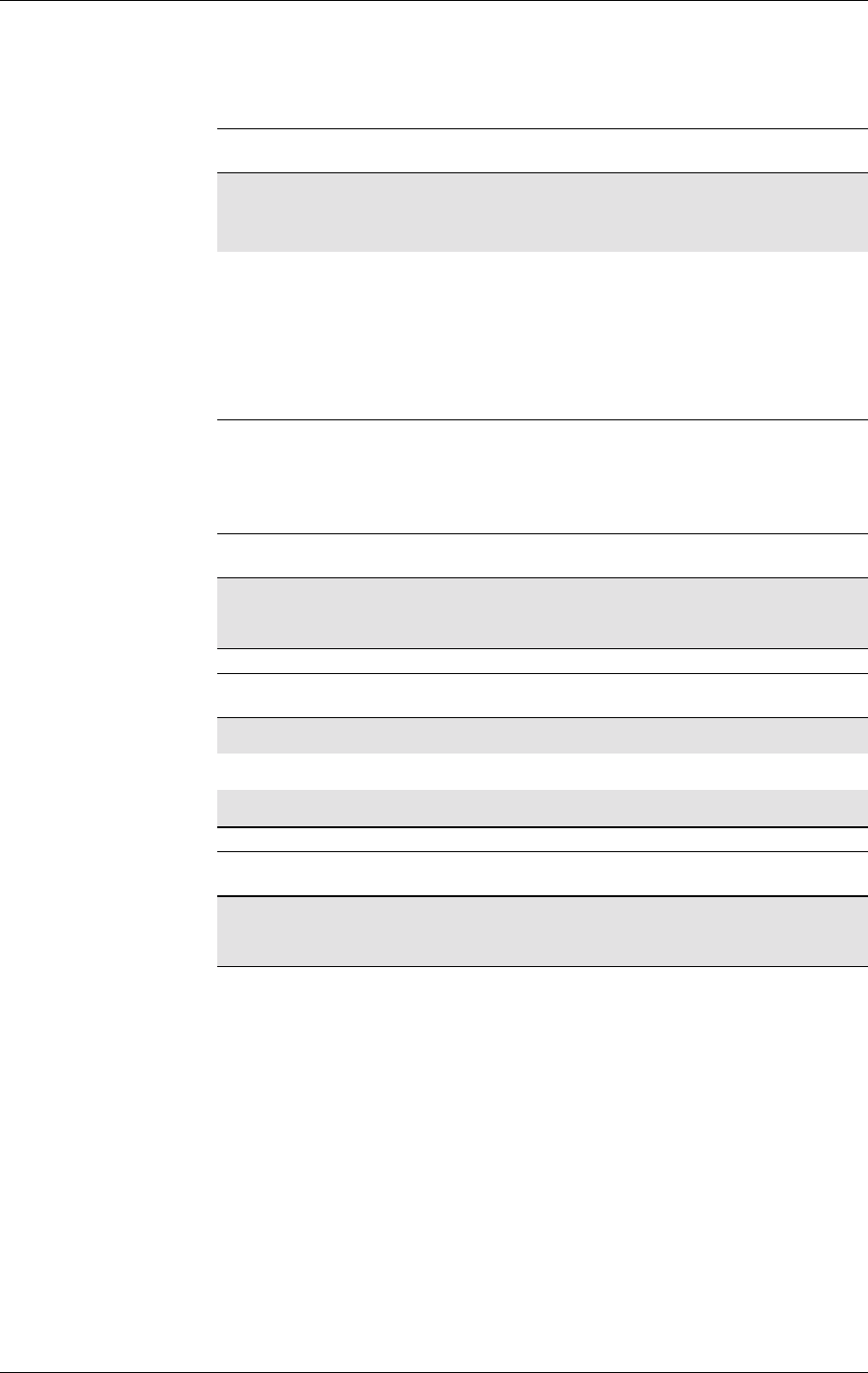
GM47/GM48 INTEGRATOR’S MANUAL
220 LZT 123 7263 R1A
14.7 AT*EPNW Ericsson Write SIM Preferred Network
This command is used to edit the SIM preferred list of networks
(EFPLMNsel). The entry field <oper> contains mobile country code
(MCC) and mobile network code (MNC).
Description Command Possible Responses
Write/delete entries in
SIM preferred list AT*EPNW=[<index>]
[,<format>,<oper>] •+CMEERROR:<err>
•OK
•ERROR
Test if the command is
supported and list the
possible settings
AT*EPNW=? •*EPNW:(listof
supported
<index>s), (list of
supported
<format>)s
•+CMEERROR:<err>
•OK
•ERROR
<index> Description
Integer Index to entry in SIM preferred list.
The SIM preferred list contains at least 8 positions
according to GSM 11.11
<format> Description
0Long format alphanumeric <oper>. Not supported
1Shortformatalphanumeric<oper>.Not supported
2Numeric <oper>
<oper> Description
String String indicates the code for the operator.
E.g. GSM – Sweden - Europolitan: “24008” (3 + 2).
PCS: 3 digits for country and 3 digits for network

14. NETWORK
221
LZT 123 7263 R1A
14.8 AT*E2SSN Ericsson M2M SIM Serial Number
This command requests the SIM serial number held in the ICCid field
(address 2FE2) on the SIM and returns all valid characters to the TE.
This field is detailed in GSM 11.11 section 10.1.1.
EXAMPLES
AT*E2SSN?
8944110063503224707
OK
:- where the raw data contained in the ICCid field on the SIM is
984411003605234207F7.
Test command:
AT*E2SSN=?
OK
Description Command Possible Responses
Request SIM Serial
number AT*E2SSN? *E2ESSN: <SSN>
Shows if the command
is supported AT*E2SSN=? •OK
•ERROR
<SSN> Description
String without
double quotes SIM serial number
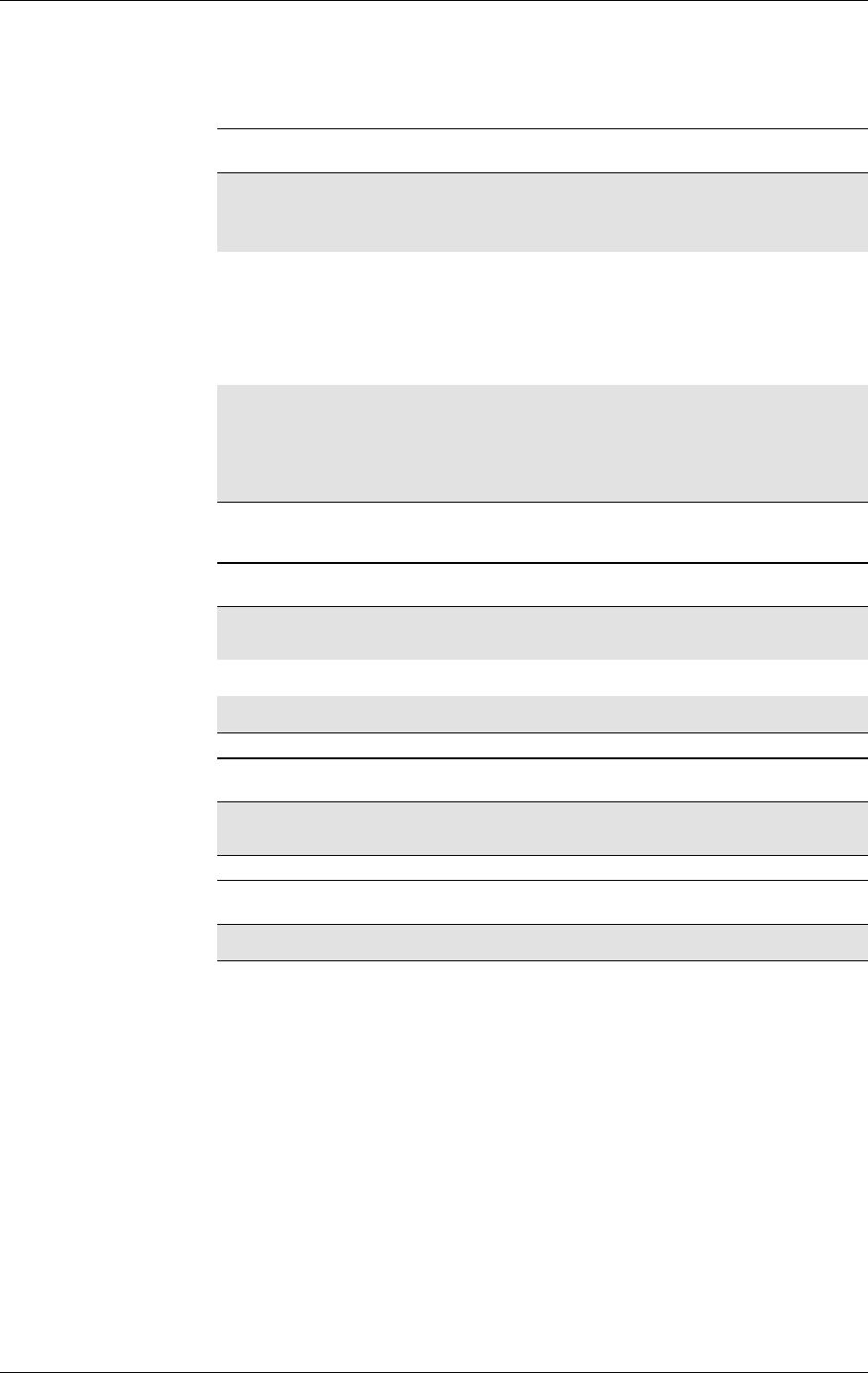
GM47/GM48 INTEGRATOR’S MANUAL
222 LZT 123 7263 R1A
14.9 AT*ESLN Ericsson Set Line Name
Sets the name tag for a selected line.
Description Command Possible Responses
Sets the line name tag
in the MS AT*ESLN=<line>
[,<name>] • +CME ERROR: <err>
•OK
•ERROR
Read the current
setting AT*ESLN? •*ESLN:
<line1>,<name1><CR><LF>
*ESLN: <line2>,<name2>
• +CME ERROR: <err>
•OK
•ERROR
Test if the command is
supported and list the
possible settings
AT*ESLN=? • *ESLN: (list of supported
<line>s),<lname>
• +CME ERROR: <err>
•OK
•ERROR
<line> Description
0Default. This means that the two lines will use the default
nametags,i.e."L1"and"L2"
1Line 1
2Line 2
<name> Description
String Characters for name tag
This parameter is optional when <line> is set to 0
<lname> Description
Integer Max. number of characters to use in <name> string (20)
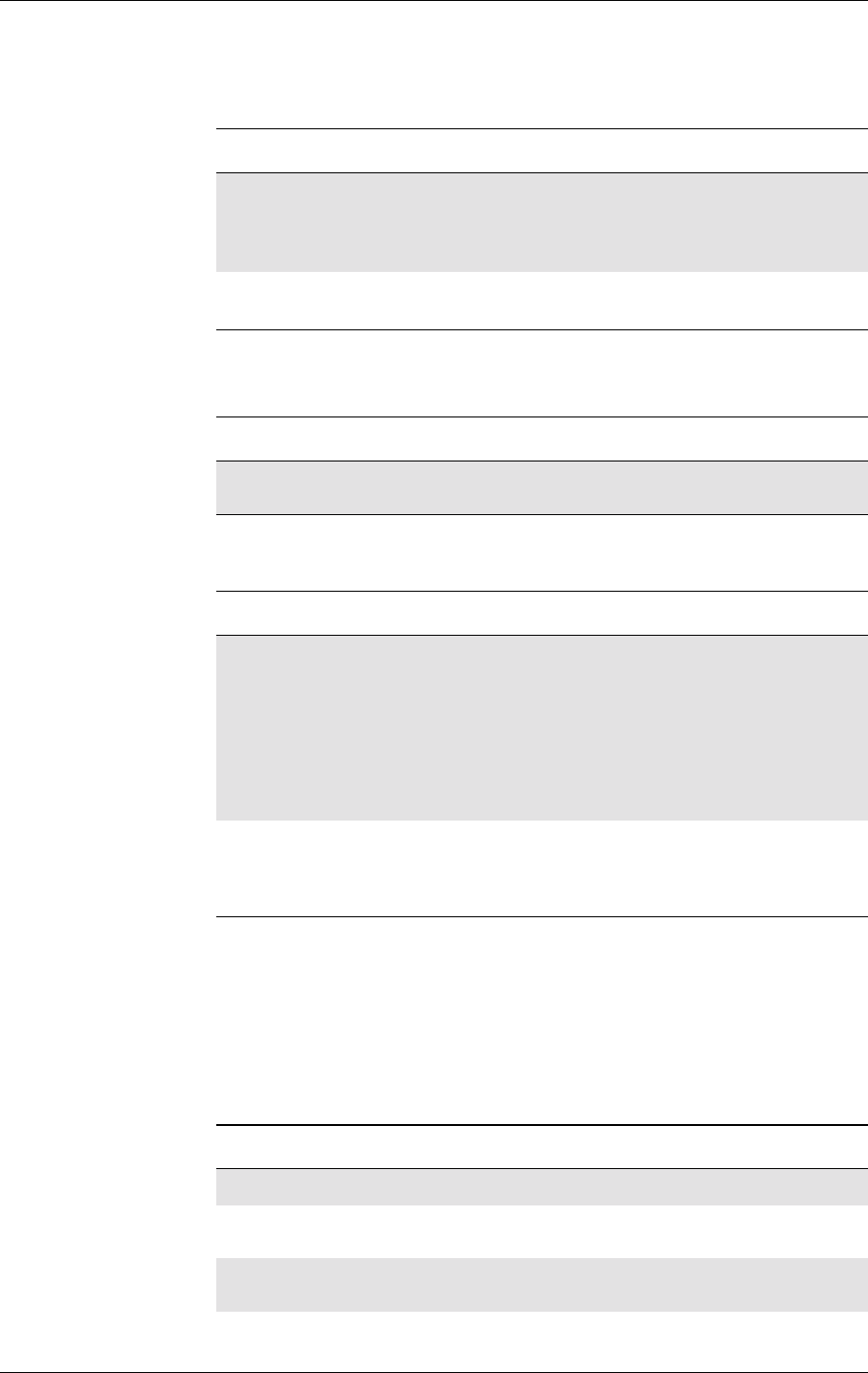
14. NETWORK
223
LZT 123 7263 R1A
14.10 AT+CIMI Subscriber Identification
Causes the TA to return <IMSI>, identifying the individual SIM
attached to the ME.
14.11 AT+CLCK Facility Lock
The command is used to lock, unlock or interrogate an ME or a network
facility <fac>. A password is normally needed to carry out such actions.
Call barring facilities are based on GSM supplementary services (refer
to GSM 02.88 [6]). The interaction of these, with other commands
based on other GSM supplementary services, is described in the GSM
standard.
Description Syntax Possible Responses
Read IMSI AT+CIMI •<IMSI>
• +CME ERROR <err>
•OK
•ERROR
Show if the command
is supported AT+CIMI=? •OK
•ERROR
<IMSI> Description
string without
double quotes International Mobile Subscriber Identity
Description Command Possible Responses
Request facility lock AT+CLCK=<fac>,
<mode>[,<passwd>
[,<class>]]
• when <mode>=2 and
command successful:
+CLCK:
<status>[,<class1>
[<CR><LF>+CLCK:
<status>,<class2>[...]]
• +CME ERROR <err>
•OK
• ERROR
Show if the
command is
supported
AT+CLCK=? •+CLCK:(listof
supported <fac>s)
• +CME ERROR <err>
•OK
<fac > Description
“CS” CNTRL (lock CoNTRoL surface (e.g. phone keyboard))
“PS” PH-SIM (lock PHone to SIM card) (ME asks password when
other than current SIM card inserted)
“SC” SIM (lock SIM card) (SIM asks password in ME power-up
and when this lock command issued)
“P2” SIM PIN2
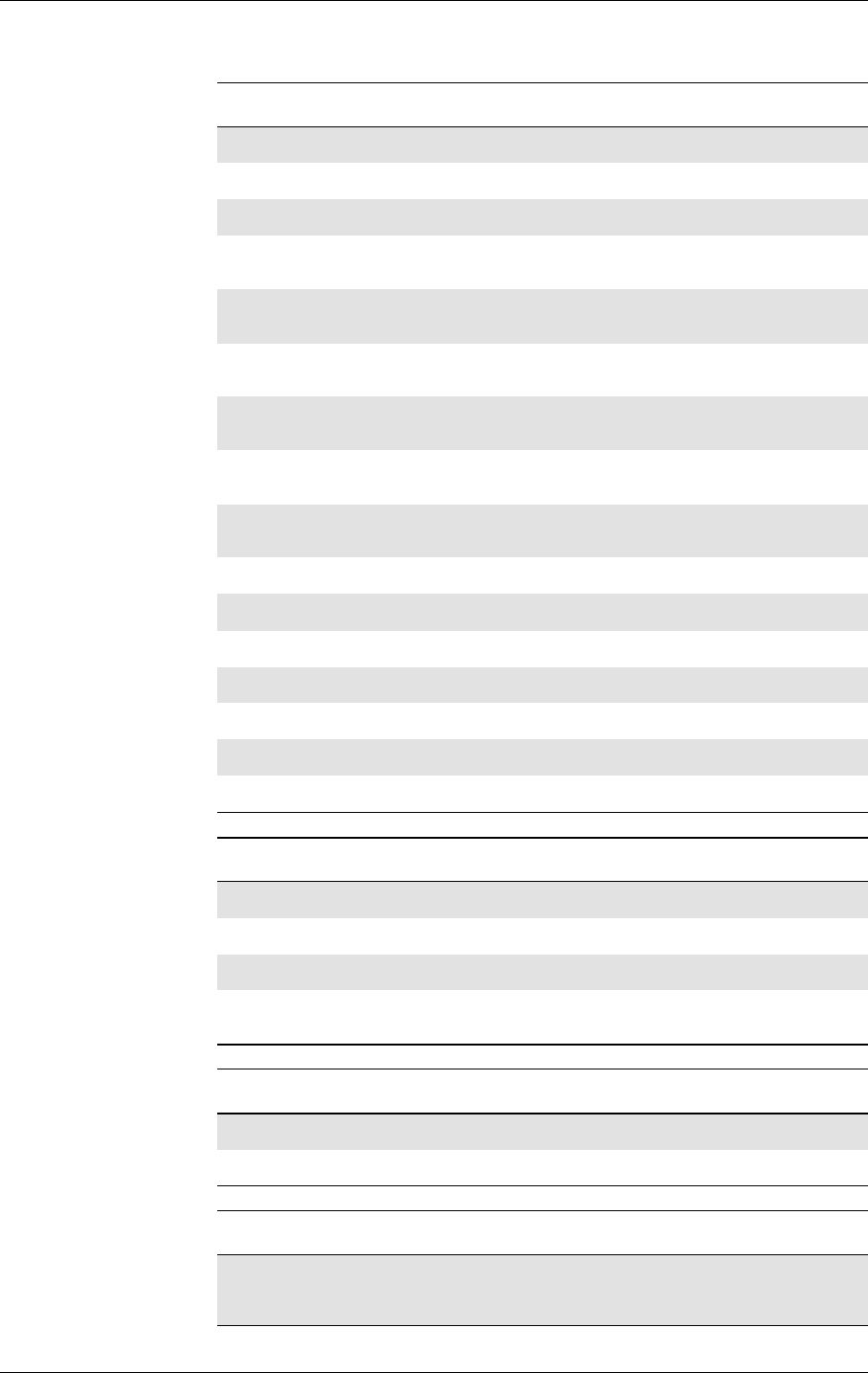
GM47/GM48 INTEGRATOR’S MANUAL
224 LZT 123 7263 R1A
“AO” BAOC (bar all outgoing calls)
“OI” BOIC (bar outgoing international calls)
“AI” BAIC (bar all incoming calls)
“IR” BIC-Roam (bar incoming calls when roaming outside the
home country)
“OX” BOIC-exHC (bar outgoing international calls except to
home country)
“NT” Bar incoming calls from numbers Not stored to TA memory.
Not Supported
“NM” Bar incoming calls from numbers Not stored to ME
memory. Not Supported
“NS” Bar incoming calls from numbers Not stored to SIM
memory. Not Supported
“NA” Bar incoming calls from numbers Not stored in Any
memory. Not Supported
“AB” All barring services
“AG” All out going barring services
“AC” All in coming barring services
“PN” Network personalization
“PU” Network subset personalization
“PP” Service provider personalization
“PC” Corporate personalization
<mode> Description
0Unlock
1Lock
2Query status
10 Full lock (only valid for <fac>=”PS”, after power on always
ask for password)
<status> Description
0Not active
1Active
<passw> Description
string type Is the same as password specified for the facility from the
ME user interface or with change password command,
+CPWD
<fac > Description
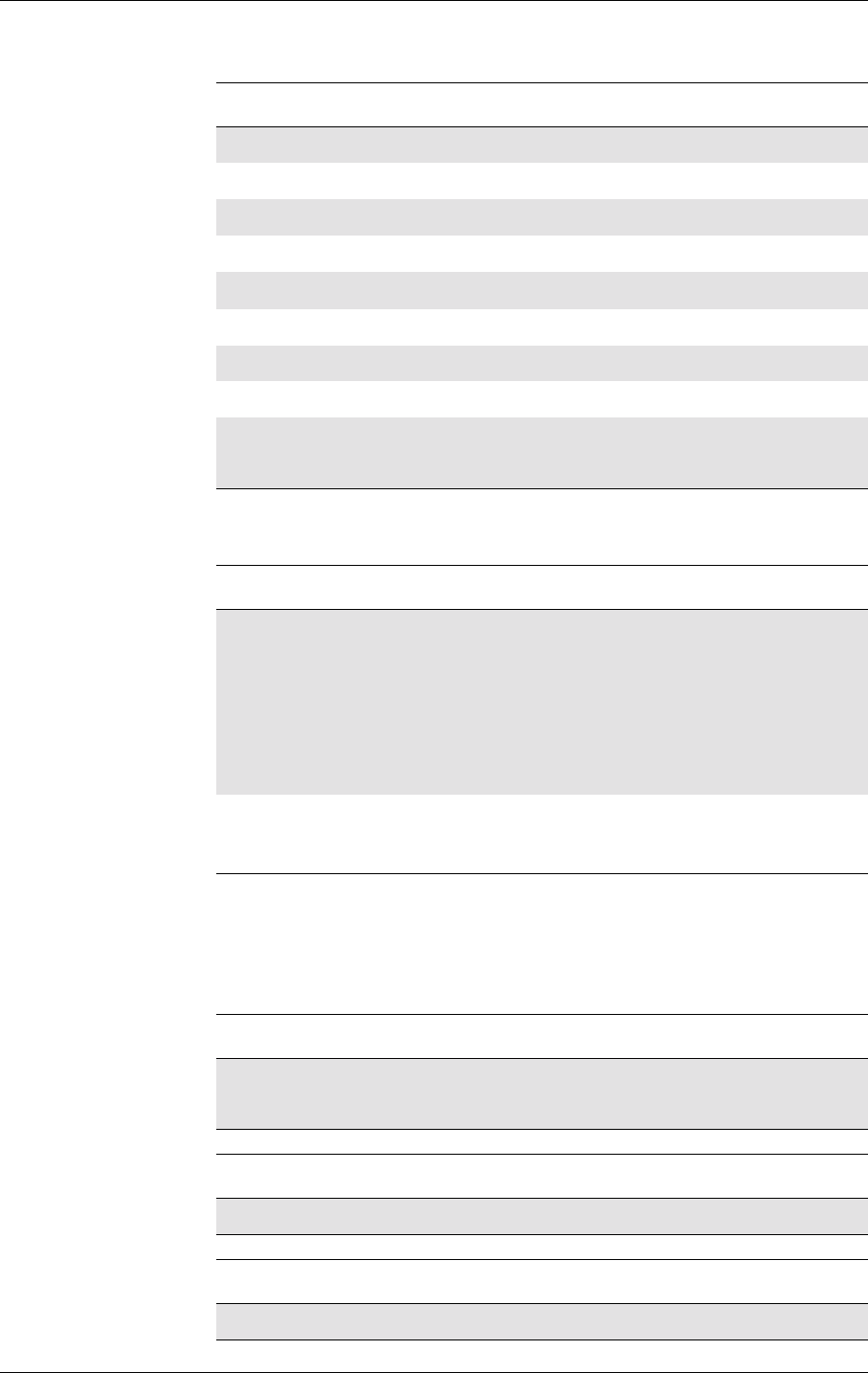
14. NETWORK
225
LZT 123 7263 R1A
14.12 AT+CNUM Subscriber Number
This command returns the MSISDNs related to the subscriber (this
information can be stored in the SIM or in the ME). If subscriber has
different MSISDN for different services, each MSISDN is returned in a
separate line.
<classx> Description
1Voice L1
2Data
4Fax
8Short message service
16 Data circuit sync
32 Data circuit async
64 Dedicated packet access
128 Voice L2
1..30 When “no reply” is enabled or queried, this gives the time
in seconds to wait before the call is forwarded. Default
value is 20
Description Command Possible Responses
Request subscriber
number AT+CNUM •+CNUM:
[<alpha1>],<number1>,<type1>
[,<speed>,<service>[,<itc>]][<CR>
<LF>+CNUM:
[<alpha2>],<number2>,<type2>
[,<speed>,<service> [,<itc>]][…]]
• +CME ERROR: <err>
•OK
• ERROR
Show if the
command is
supported
AT+CNUM=? • +CME ERROR: <err>
•OK
• ERROR
<alphax> Description
Alphanumeric
string Associated with <numberx>; used characterset should be
the one selected with the Select TE character set
command, +CSCS
<numberx> Description
String type Phone number of format specified by <typex>
<typex> Description
Integer format Type of address, (refer to GSM 04.08 [3] subclause 10.5.4.7)
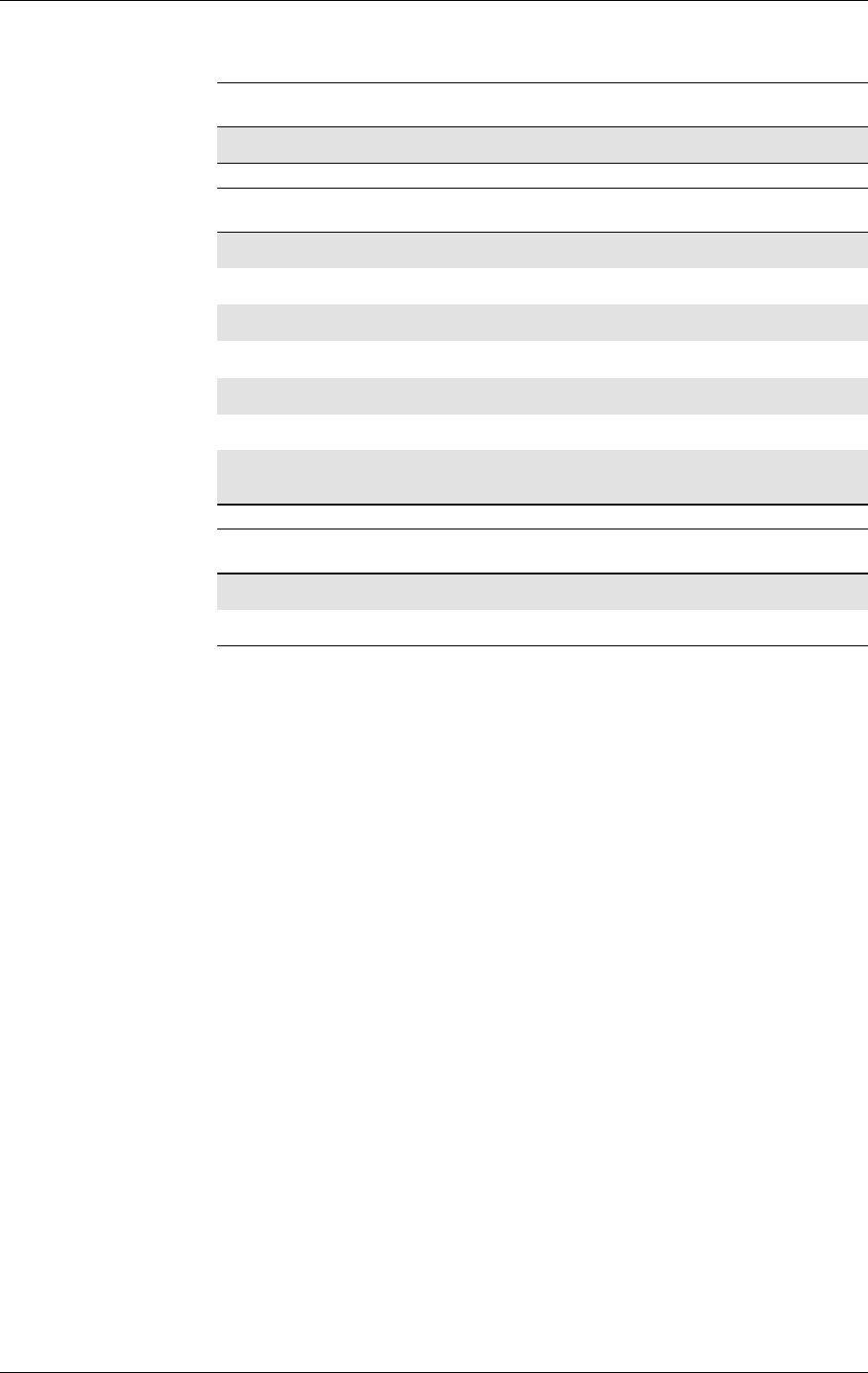
GM47/GM48 INTEGRATOR’S MANUAL
226 LZT 123 7263 R1A
<speed> Description
data rate As defined in subclause 6.7 GSM 07.07 [1]
<service> Description
0Asynchronous modem
1Synchronous modem. Not supported
2PAD access (asynchronous). Not supported
3Packet access (synchronous). Not supported
4Voice
5Fax
6..127 All other values below 128 are reserved by GSM 07.07 [1].
Not supported
<itc> Description
03.1kHz
1UDI
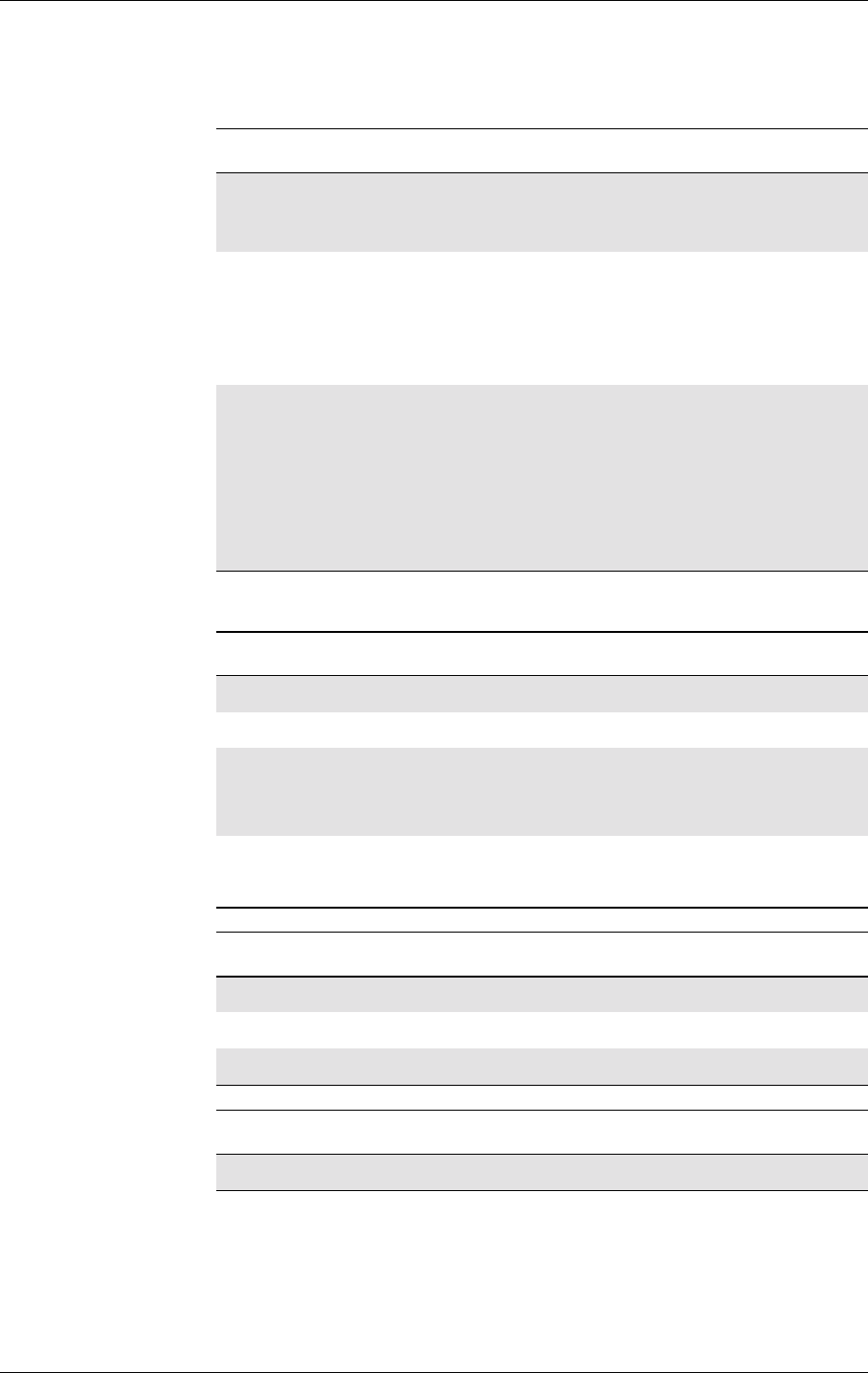
14. NETWORK
227
LZT 123 7263 R1A
14.13 AT+COPS Operator Selection
Forces an attempt to select and register the GSM network operator.
Description Command Possible Responses
Request operator
selection AT+COPS=[<mode>
[,<format>
[,<oper>]]]
• +CME ERROR <err>
•OK
• ERROR
Shows the current
setting AT+COPS? •+COPS:
<mode>[,<format>,
<oper>]
• +CME ERROR <err>
•OK
• ERROR
Show if the command
is supported AT+COPS=? • +COPS:list of supported
(<stat>,long
alphanumeric <oper>,
short alphanumeric
<oper>,numeric
<oper>)s
• +CME ERROR <err>
•OK
• ERROR
<mode> Description
0Automatic (<oper> field is ignored)
1Manual (<oper> field shall be present)
3Set only <format> (for read command +COPS?), do not
attempt registration/de-registration (<oper> field is
ignored); this value is not applicable in read command
response
4Manual/automatic (<oper> field shall be present); if
manual selection fails, automatic mode (<mode>=0) is
entered
<format> Description
0Automatic (<oper> field is ignored)
1Shortformatalphanumeric<oper>
2Numeric <oper>
<oper> Description
string type Format determined by the <format> setting
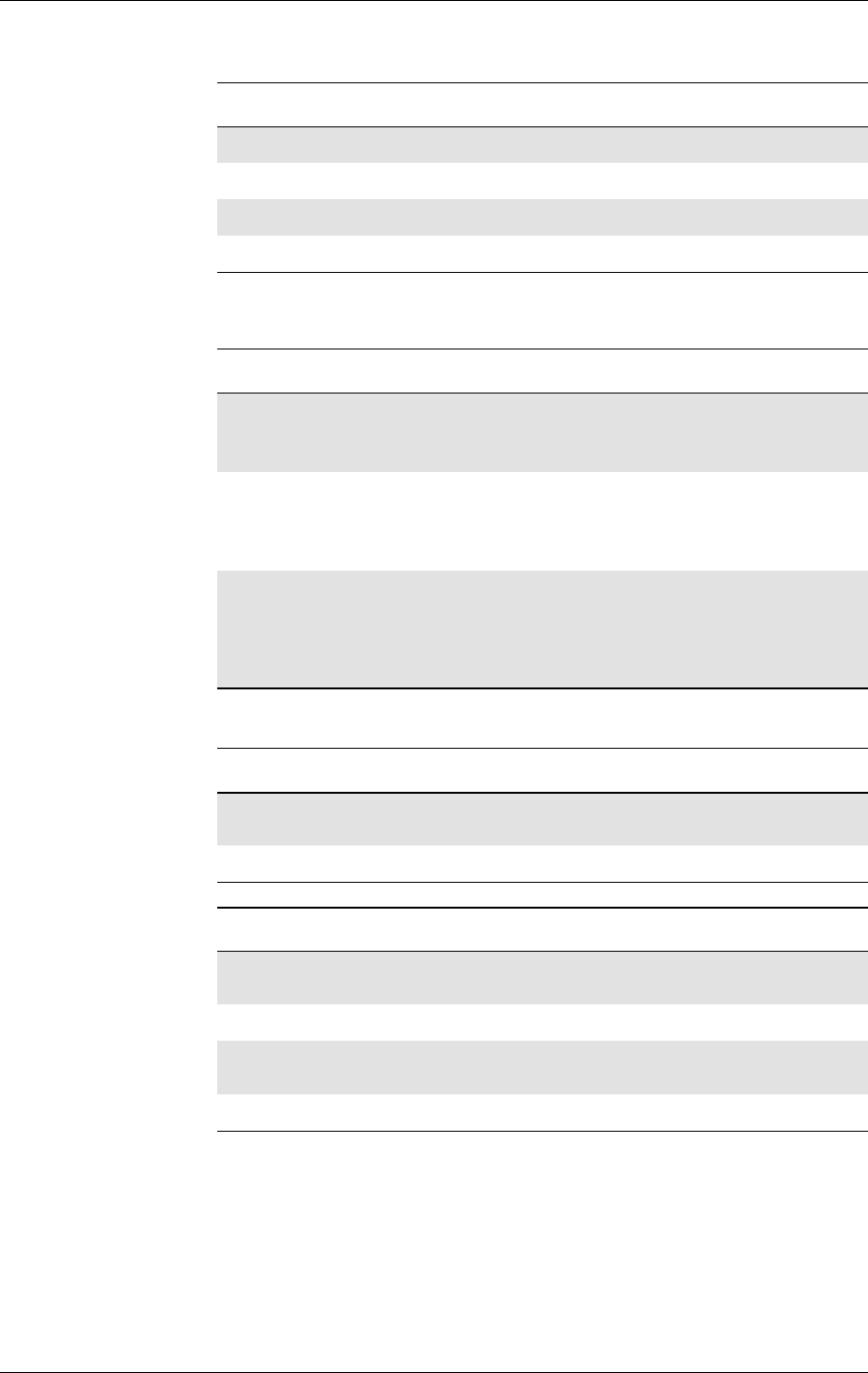
GM47/GM48 INTEGRATOR’S MANUAL
228 LZT 123 7263 R1A
14.14 AT+CREG Network Registration
Controls the presentation of the unsolicited result code +CREG.
<stat> Description
0Unknown
1Available
2Current
3Forbidden
Description Command Possible Responses
Request network
registration AT+CREG=[<n>] • +CME ERROR <err>
•OK
•ERROR
Read the command AT+CREG? •+CREG:<n>,<stat>
• +CME ERROR <err>
•OK
•ERROR
Show if the command
is supported AT+CREG=? •+CREG:(listof
supported <n>s)
• +CME ERROR <err>
•OK
•ERROR
<n> Description
0Disable network registration unsolicited result code,
(default)
1Enable network registration unsolicited result code
<stat> Description
0Not registered, ME is not currently searching for a new
operator to register with
1Registered, home network
2Notregistered,butMEiscurrentlysearchingforanew
operator to register with
3Registration denied
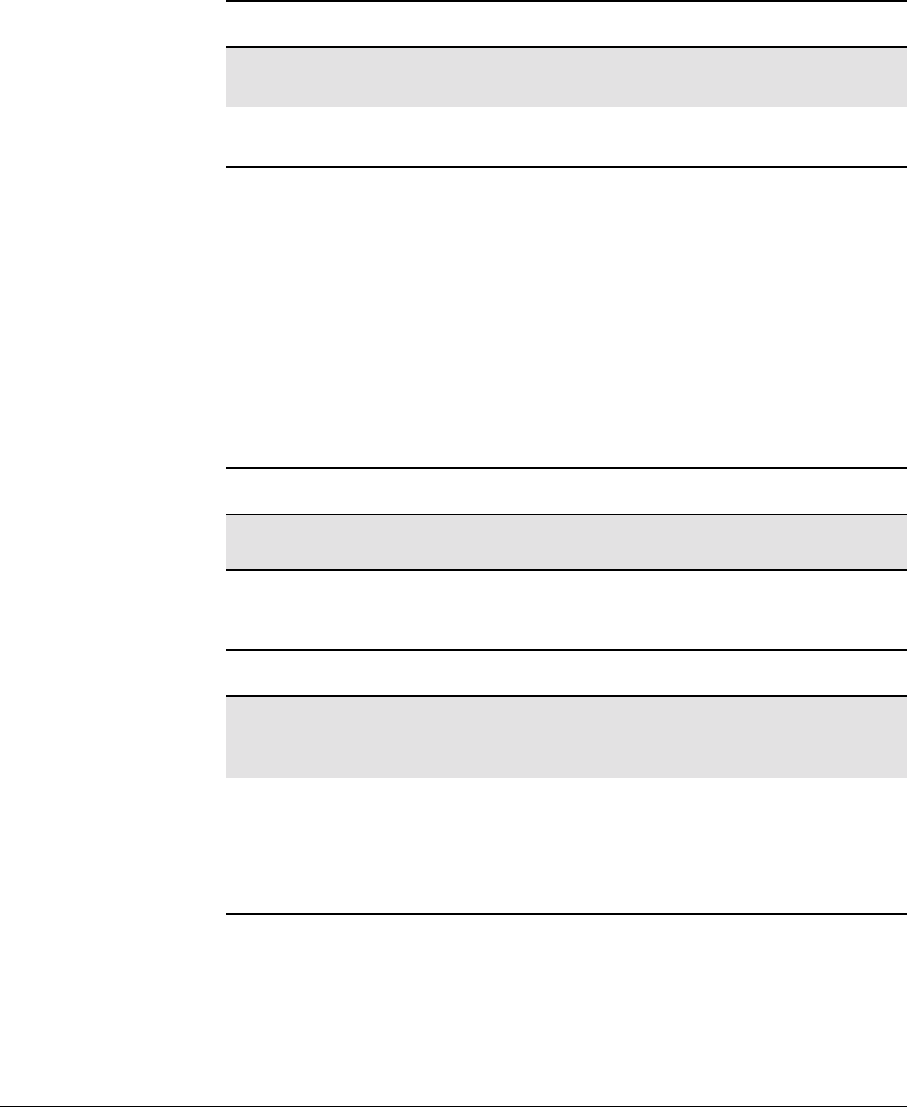
229
LZT 123 7263 R1A
15. Phonebook
15.1 AT*E2PBCS Ericsson M2M Phonebook Check Sum
Causes the ME to return the phone book checksum <cks> stored
internally . Phone book checksum is recalculated whenever there is a
change in the phone book. By requesting the checksum, the external
application can detect if the phone book in the ME has changed, without
downloading the whole phone book.
During the SIM initialisation process, it takes some time to download
the phone book from the SIM card to the ME, depending on the number
of entries. In case the command is invoked before the checksum has
been calculated, the ME gives an ERROR message.
15.2 AT*ESAG Ericsson Add to Group
This command adds a contact or a phone number to the current group.
Description Command Possible Responses
Request phone book
checksum AT*E2PBCS •*E2PBCS:<cks>
•+CMEERROR:<err>
Show if the command
is supported AT*E2PBCS=? •OK
•ERROR
<cks> Description
Hex type 1 byte in hexadecimal (between “”), containing the
checksum
Description Command Possible Responses
Addsa new item to the
group with <gindex> AT*ESAG=<gindex>,
<type>,
<itemindex>
•+CMEERROR:<err>
•OK
•ERROR
Show if the command
is supportedand list the
possible settings
AT*ESAG=? •*ESAG:(listof
supported
<gindex>s, list of
supported <type>s
•OK
•ERROR
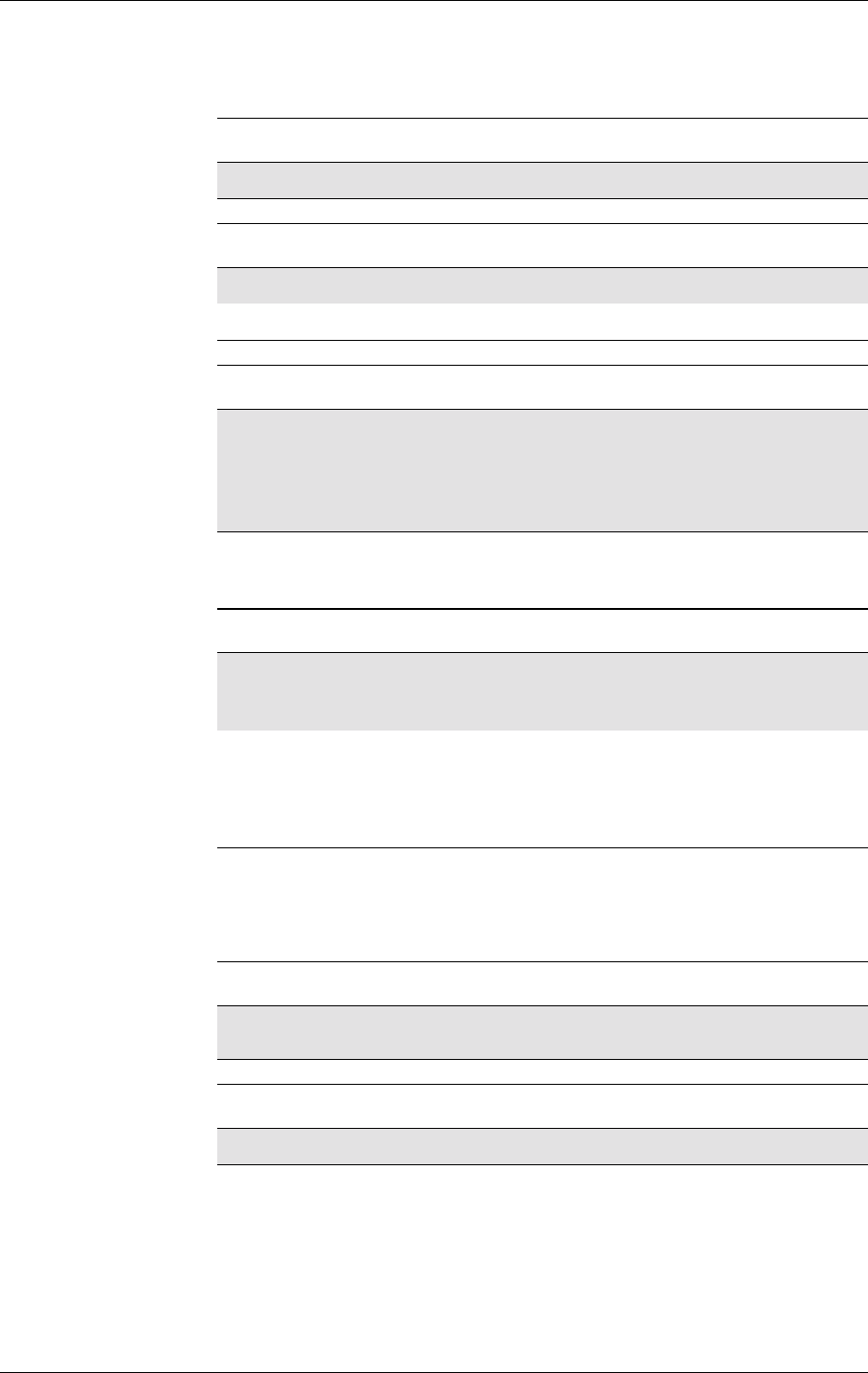
GM47/GM48 INTEGRATOR’S MANUAL
230 LZT 123 7263 R1A
15.3 AT*ESCG Ericsson Create Group
This command creates a new group in the hierarchical phone book. The
group is stored at the first available position. There are 10 group
positions in the hierarchical phone book.
<gindex> Description
1-10 The group index within the hierarchical phone book
<type> Description
1Contact
2Phone number
<itemindex> Description
Integer The index of the contact/group/phone number to add.
The <itemindex> parameter has the following meaning: if
the item to add is a contact, the <itemindex> is the index
of the contact in the contacts book. If the item to add is a
phone number the <itemindex> is the index in the phone
book
Description Command Possible Responses
Adds a new group to
the hierarchical phone
book
AT*ESCG=<name> •+CMEERROR:<err>
•OK
•ERROR
Shows if the command
is supported AT*ESCG=? •*ESCG:
<maxnamelength>
•+CMEERROR:<err>
•OK
•ERROR
<name> Description
String The group name. Character set as specified by
command Select TE Character Set (AT+CSCS)
<maxnamelength> Description
integer The maximum length of the grouping (bytes)
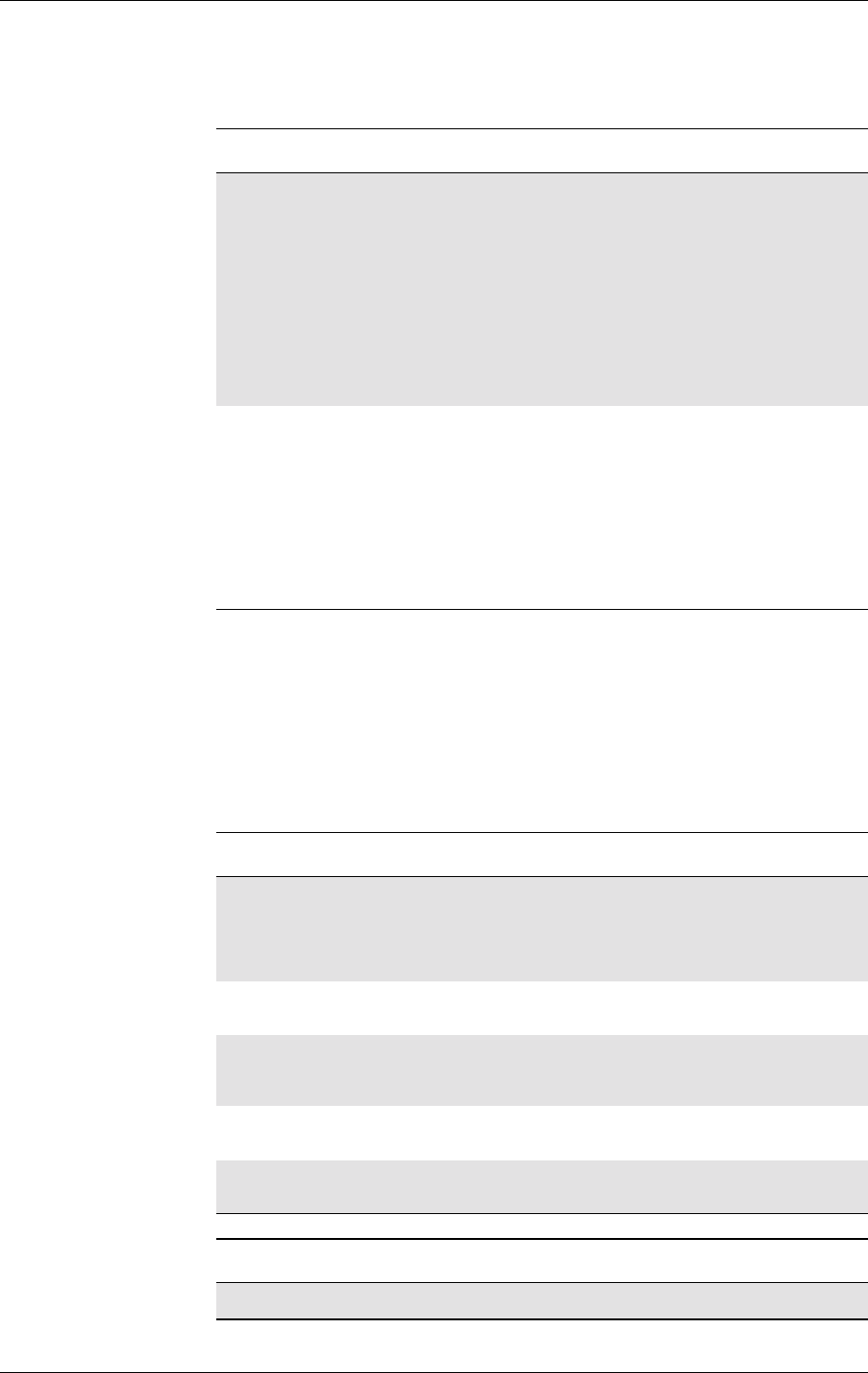
15. PHONEBOOK
231
LZT 123 7263 R1A
15.4 AT*ESCN Ericsson Set Credit Card Number
Command is used to:
• set up a credit card number in the ME.
• disable credit card calls.
• enable one of the credit card call services.
• query the settings for one of the services.
• query the active credit call access server.
Description Command Possible Responses
Set up a credit card
number AT*ESCN=<mode>
[,<passwd>][,<indexn>]
[,<asn>,<type>,<name
>,<vercode>[,<send
order>]]
•+CMEERROR:<err>
when
mode=3:*ESCN:
<indexn>,<asn>,<ty
pe>,
<name>,<vercode>,
<send order>
When
mode=4:*ESCN:
<selindexn>
•OK
•ERROR
Test if the command is
supported AT*ESCN=? •*ESCN:(listof
supported
<index>s),(list of
supported
<mode>s),(list of
supported <send
order>s)
•+CMEERROR:<err>
•OK
•ERROR
<mode> Description
0Settings for a credit card call (<passwd>, <indexn>,
<asn>,<type>,<name>,<vercode> [,<send order>]). The
four (4) parameters (<passwd>, <indexn>, <asn>,
<vercode>) are mandatory when <mode> = 0. If all those
are not submitted ERROR will be returned
1Disable credit card calling (<passwd>). If any other
parameters are submitted, they are ignored
2Enable one of the credit card call services (<passwd>,
<indexn>). If any other parameters are submitted, they
are ignored
3Query (<passwd>, <indexn>). If any other parameters are
submitted, they are ignored
4Query for the selected credit call access server. If any
parameters are submitted, they are ignored
<passwd> Description
String character string, phone lock code “PS”, PH-SIM
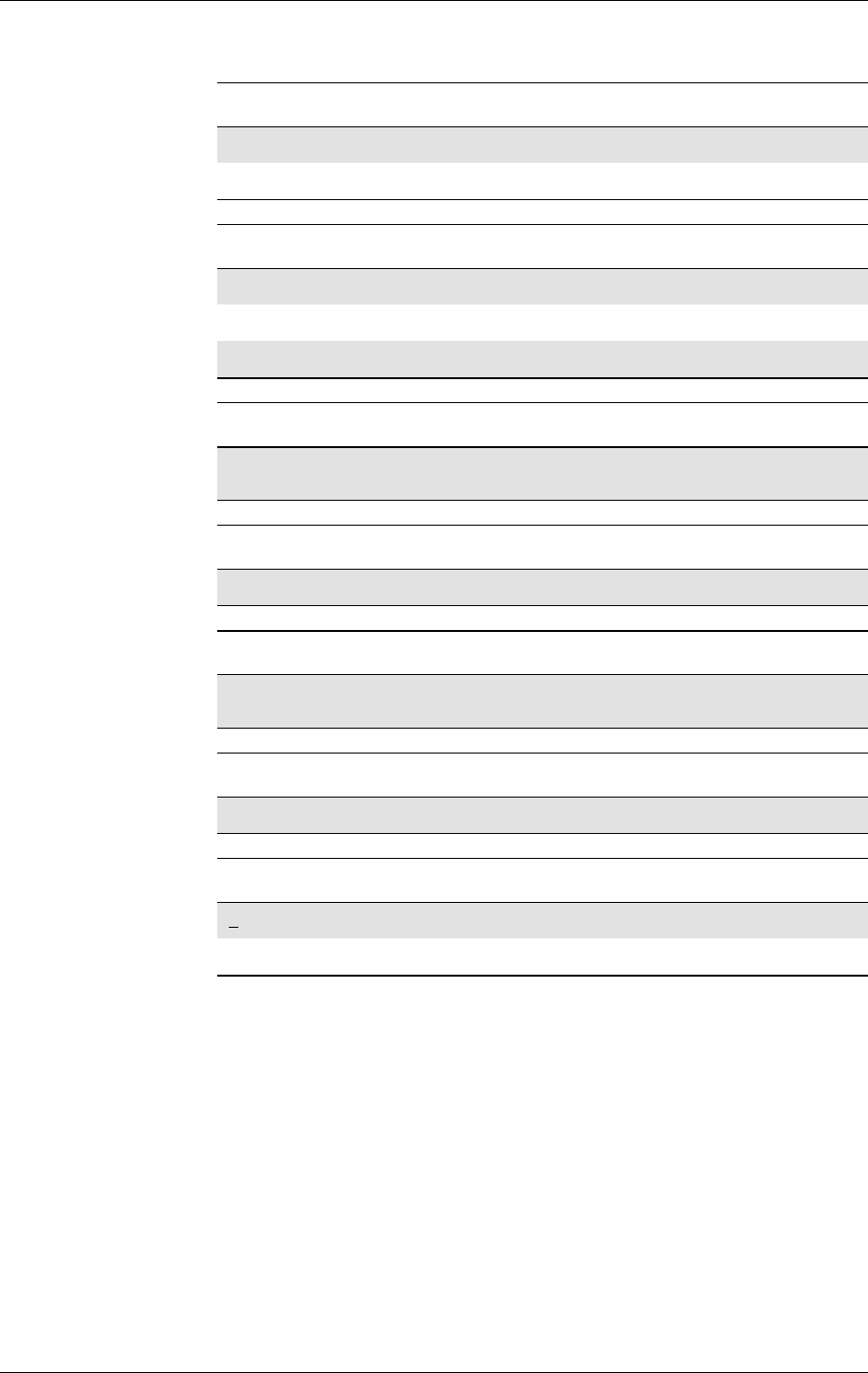
GM47/GM48 INTEGRATOR’S MANUAL
232 LZT 123 7263 R1A
<indexn> Description
1Index number to the first credit card call access server
2Index number to the second credit card call access server
<selindexn> Description
0Credit card calling disabled
1Index number to the first credit card call access server
2Index number to the second credit card call access server
<asn> Description
String Character string <0..9,+>, max. 20 characters Phone
number of format specified by <typex>
<type> Description
Integer format Type of address
<name> Description
String Character string of the name tag, for M&M. Maximum of
18 characters
<vercode> Description
String Character string <0..9,#,*>. Maximum of 20 characters
<send order> Description
1Verification code first (default)
2phone number to call first
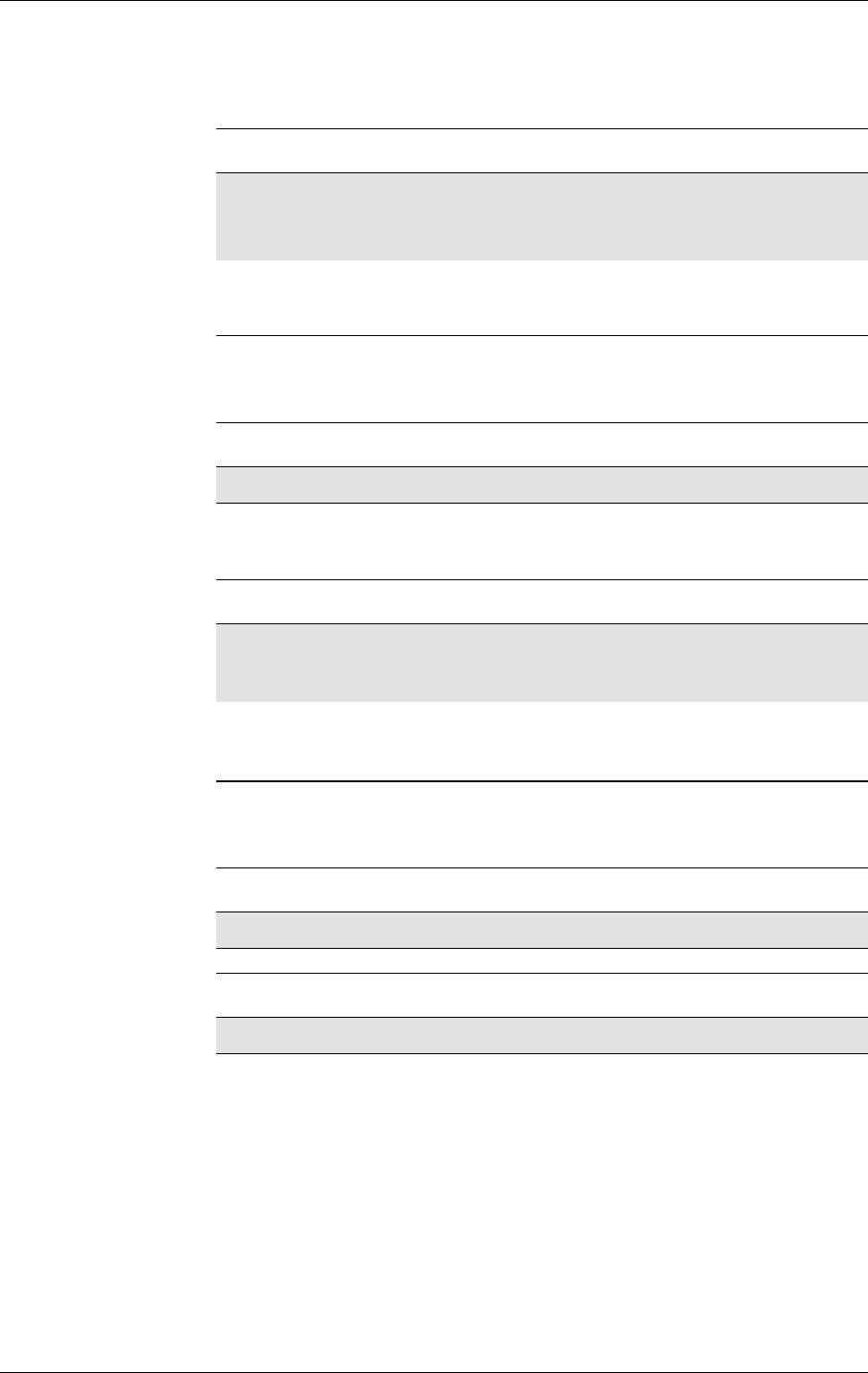
15. PHONEBOOK
233
LZT 123 7263 R1A
15.5 AT*ESDG Ericsson Delete Group
This command deletes the group at position <gindex> from the
hierarchical phone book.
15.6 AT*ESDI Ericsson Delete Group Item
The command deletes the item with <index> in the group with
<gindex>.
Description Command Possible Responses
Deletes a group
defined in the
hierarchical phone
book
AT*ESDG=<gindex> •+CMEERROR:<err>
•OK
Show if the command
is supportedand list the
possible <gindex>
AT*ESDG=? •*ESDG:listof
<gindex>s
•OK
<gindex> Description
1-10 The group index
Description Command Possible Responses
Deletes the item in
group <gindex> with
position <index>
AT*ESDI=<gindex>,<ind
ex> •+CMEERROR:<err>
•OK
•ERROR
Show if the command
is supported AT*ESDI=? •+CMEERROR:<err>
•OK
•ERROR
<gindex> Description
1-10 The groups index within the hierarchical phone book
<index> Description
1-15 The items index within the group
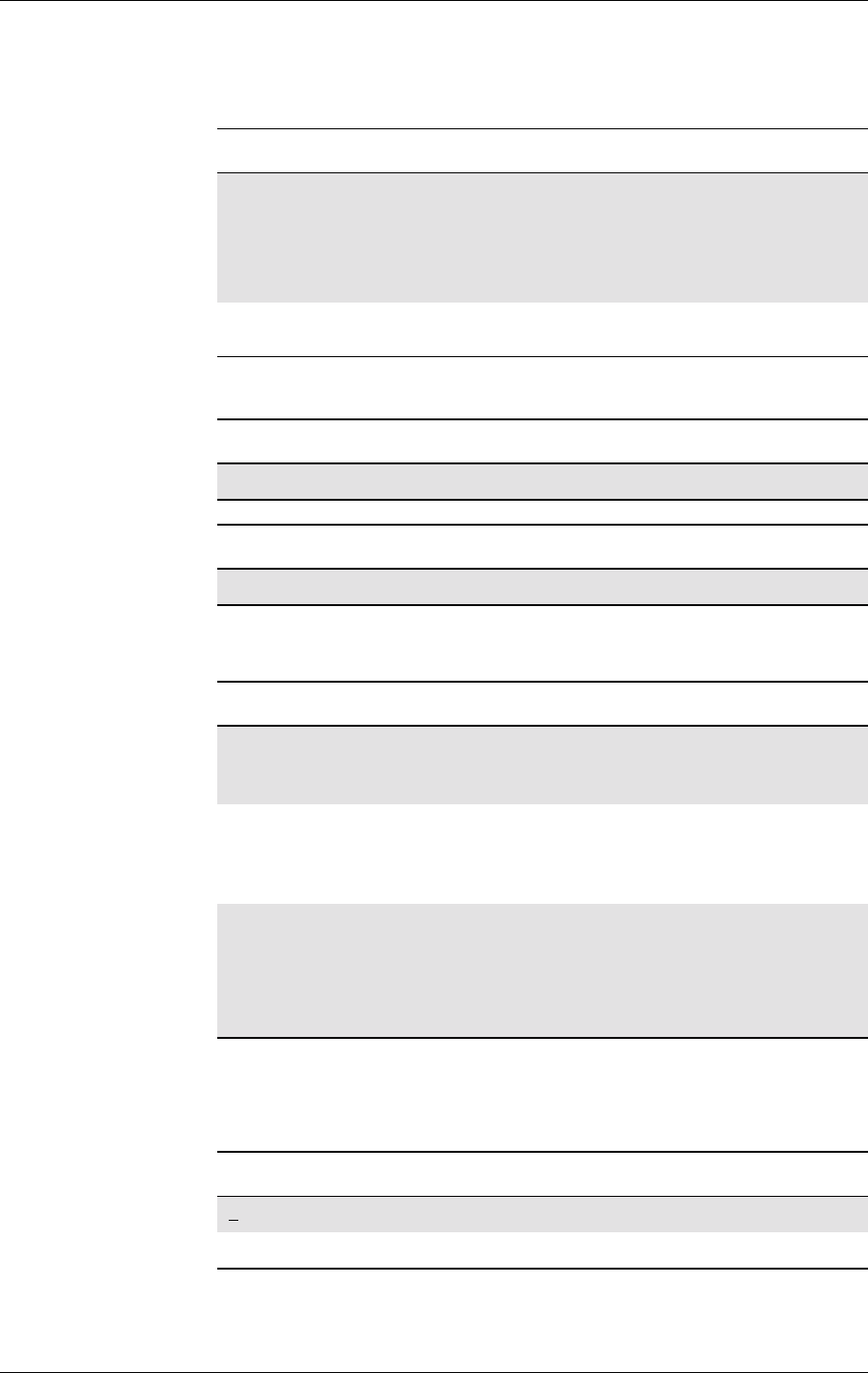
GM47/GM48 INTEGRATOR’S MANUAL
234 LZT 123 7263 R1A
15.7 AT*ESGR Ericsson Group Read
This command lists the groups in the hierarchical phone book.
15.8 AT*ESIL Ericsson Silence Command
This command orders the phone to be in silent mode. When the phone
is in silent mode, all sounds from the MS are prevented. An icon will
show the user that silent mode is active.
Description Command Possible Responses
Lists thegroupsdefined
in the hierarchical
phone book
AT*ESGR •*ESGR:<gindex1>,
<name1>[<CR><LF>
<gindex2>,
<name2>..]
•OK
•ERROR
Shows if the command
is supported AT*ESGR=? OK
<gindex> Description
1-10 The group index
<name> Description
String The group name
Description Command Possible Responses
Sets the MS to silent
mode AT*ESIL=[<mode>] •+CMEERROR:<err>
•OK
•ERROR
Read the current
setting AT*ESIL? •*ESIL:<mode>
•+CMEERROR:<err>
•OK
•ERROR
Test if the command is
supportedand listthe
possible settings
AT*ESIL=? •*ESIL:(listof
supported
<mode>s)
•+CMEERROR:<err>
•OK
•ERROR
<mode> Description
0Silent mode off. Default setting
1Silent mode on
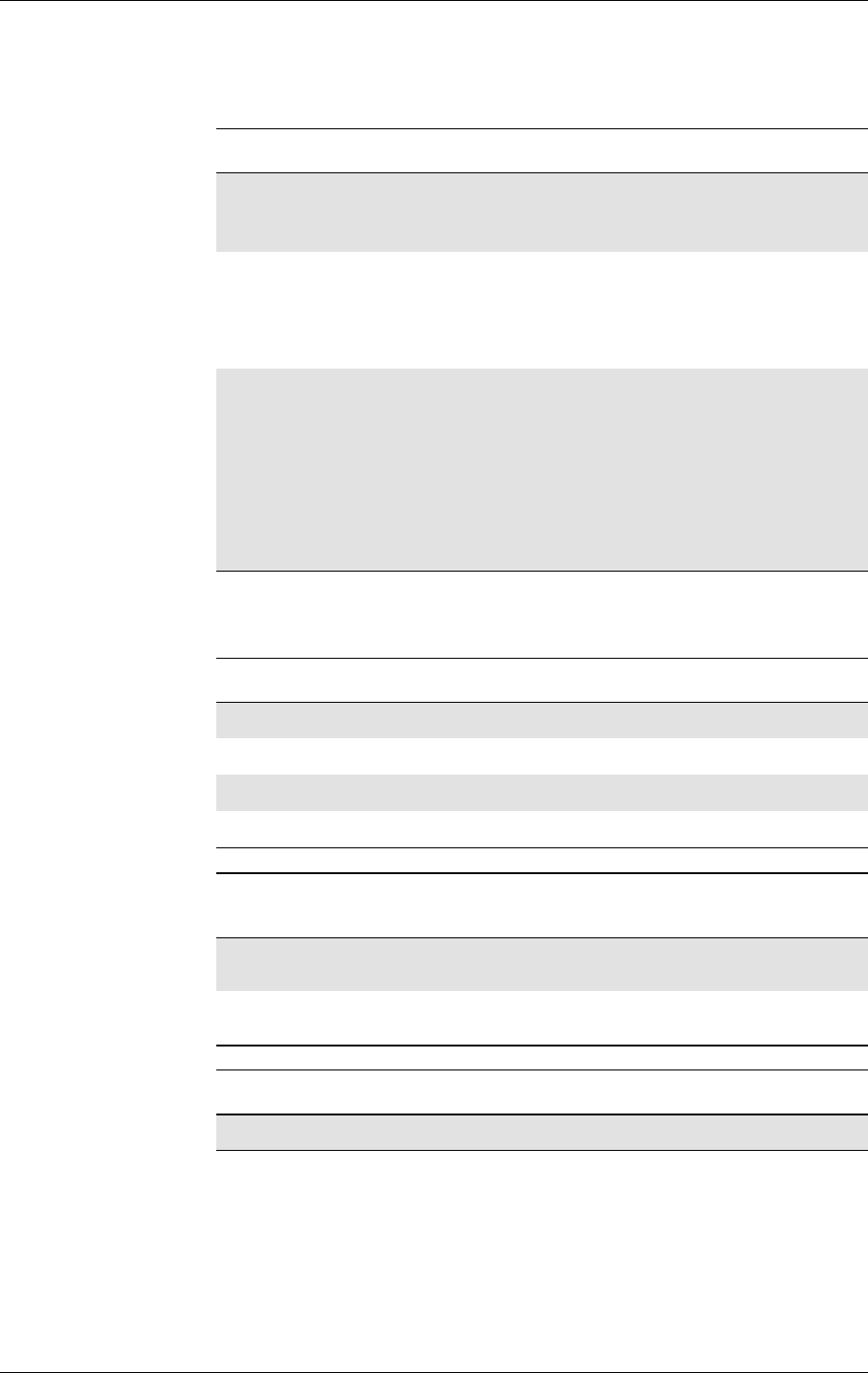
15. PHONEBOOK
235
LZT 123 7263 R1A
15.9 AT*ESNU Ericsson Settings Number
This command sets a <type> number, in the format <number type>, in
the MS.
Description Command Possible Responses
Sets a number in the
MS AT*ESNU=<
type>,<number>
[,<number type>]
•+CMEERROR:<err>
•OK
•ERROR
Test if the command is
supported and show
possible settings
AT*ESNU=? •*ESNU:(listof
supported <type>s)
•+CMEERROR:<err>
•OK
•ERROR
Read the current
setting AT*ESNU? •*ESNU:<type
1>,<number
1>,<number type
1><CR><LF>
….*ESNU: <type
n>,<number
n>,<number type n>
•+CMEERROR:<err>
•OK
•ERROR
<type> Description
0Voice L1
1Voice L2
2Fax
3Data
<number
type> Description
129 Default setting when dialling string does not include the
international access code character ‘+’
145 Default setting when dialling string includes the
international access code character ‘+’
<number> Description
0-9, + Number
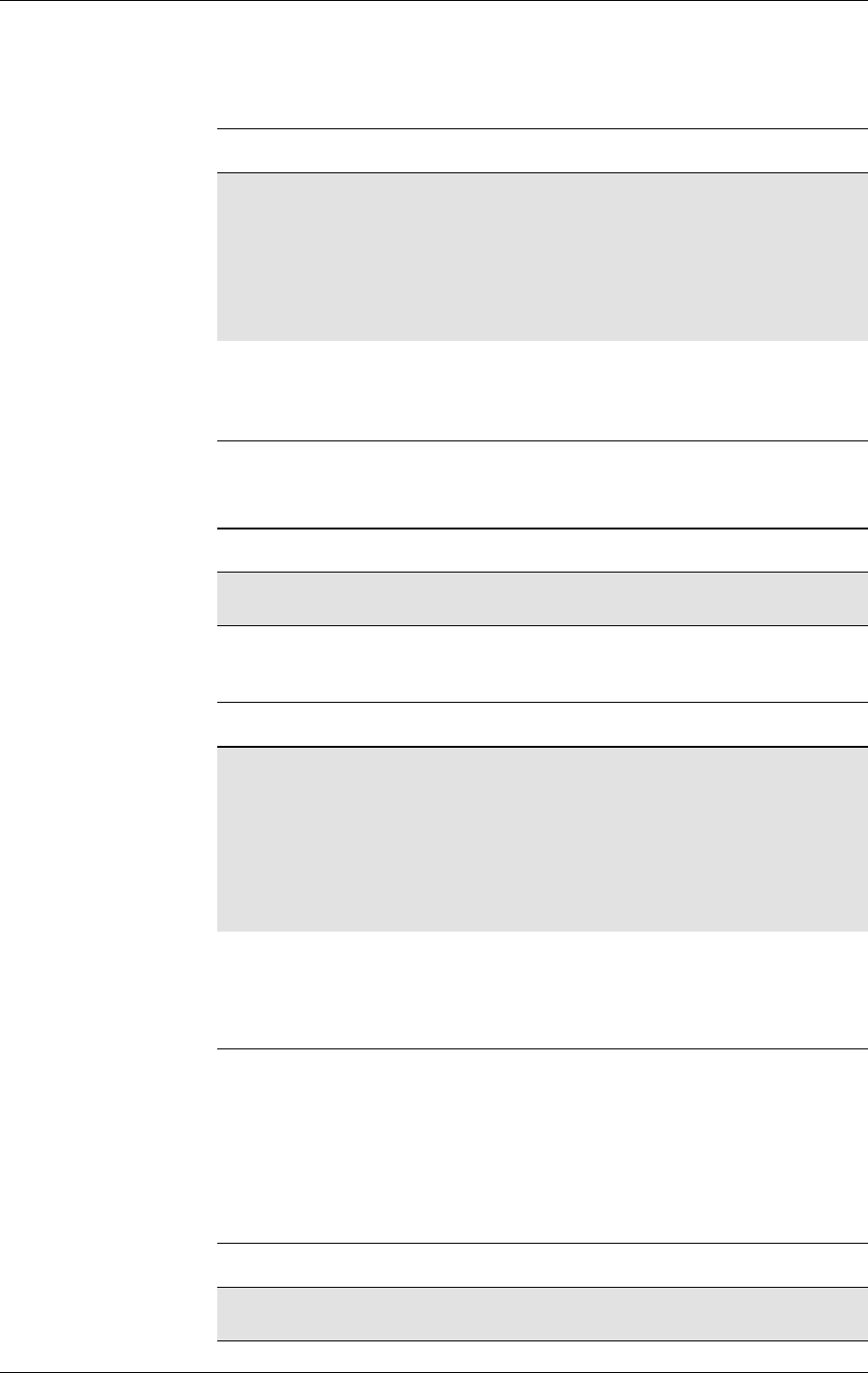
GM47/GM48 INTEGRATOR’S MANUAL
236 LZT 123 7263 R1A
15.10 AT+CPBF Phonebook Find
Returns phone book entries whose alphanumeric field starts with
<findtext>.
15.11 AT+CPBR Phonebook Read
Returns phone book entries in location number range <index1>...
<index2> from the current phone book memory storage selected with
+CPBS. If <index2> is left out, only location <index1> is returned.
Entry fields returned are location number <indexn>, phone number
stored there <number> (of format <type>) and text <text> associated
with the number.
Description Syntax Possible Responses
Shows the current
setting +CPBF=<findtext> •+CPBF:
<index1>,<number>,<type>,
<text>[[...]<CR><LF>+CBPF:
<index2>,<number>,<type>,
<text>]
•+CMEERROR:<err>
•OK
•ERROR
Show if the
command is
supported
+CPBF=? • +CPBF: <nlength>,<tlength>
•+CMEERROR:<err>
•OK
•ERROR
<findtext > Description
string type Field of maximum length <tlength>; character set as
specified by the select TE character set command, +CSCS
Description Command Possible Responses
Read phone
book entries +CPBR=<index1>
[,<index2>] • +CPBR:<index1>,<number>,
<type>,<text>[[,<text_date>,
<text_time>]<CR><LF>+CPBR:
<index2>,<number>,<type>,
<text>[,<text_date>,
<text_time>]]
• +CME ERROR <err>
•OK
• ERROR
Test if the
command is
supported
+CPBR=? • +CPBR: (list of supported
<index>s),<nlength>,<tlength>
• +CME ERROR <err>
•OK
• ERROR
<indexn> Description
integer type Values in the range of location numbers of phone book
memory
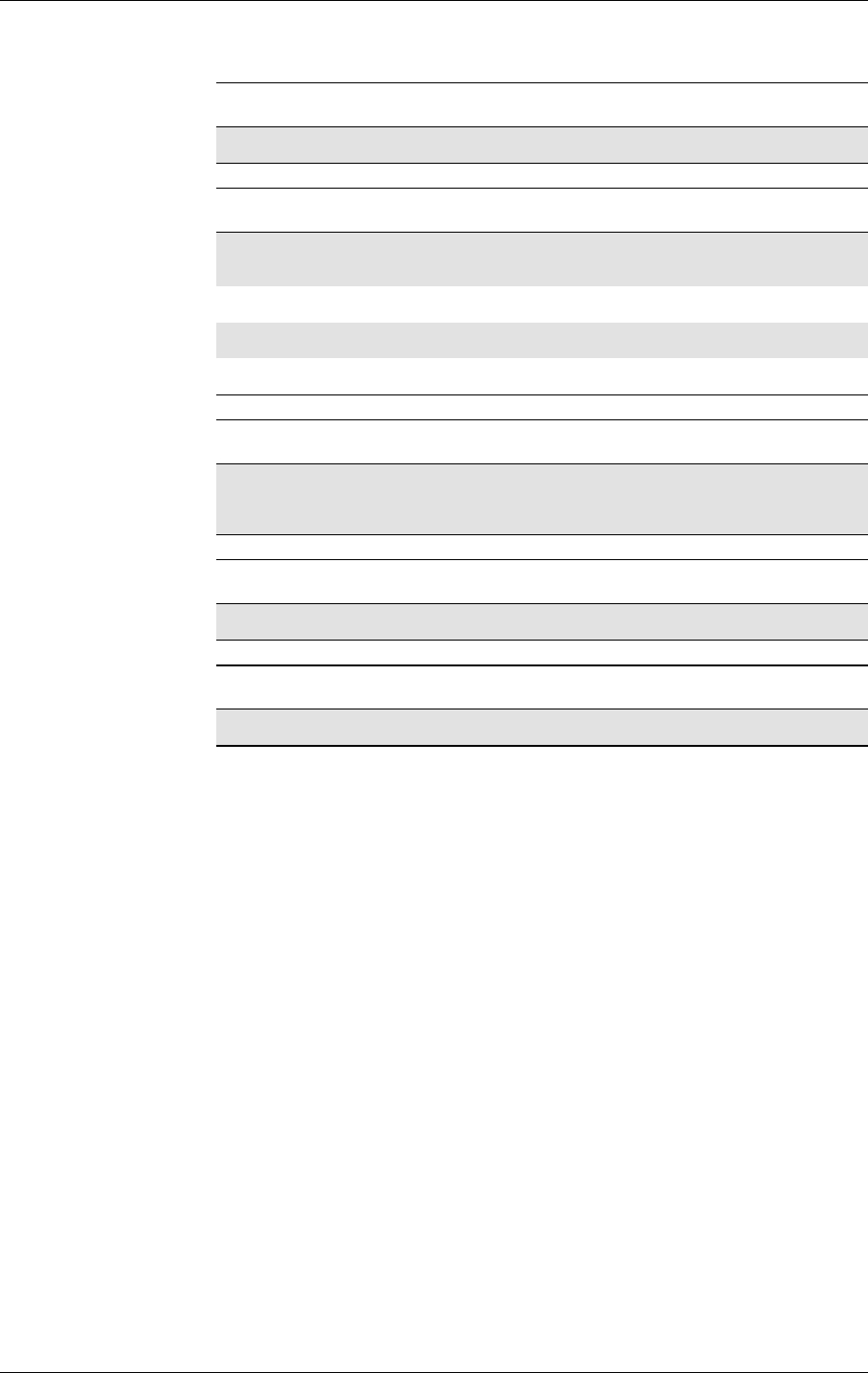
15. PHONEBOOK
237
LZT 123 7263 R1A
<number> Description
string type Phone number of format <type>
<type> Description
129 ISDN/telephony numbering plan, national/international
unknown
145 ISDN/telephony numbering plan, international number
161 ISDN/telephony numbering plan, national number
128 - 255 Other values refer to GSM 04.08 [4] section 10.5.4.7
<text> Description
string type Field of maximum length <tlength>;
character set as specified by the select TE character set
command, +CSCS.
<nlength> Description
integer type Value indicating the maximum length of field <number>
<tlength > Description
integer type Value indicating the maximum length of field <text>
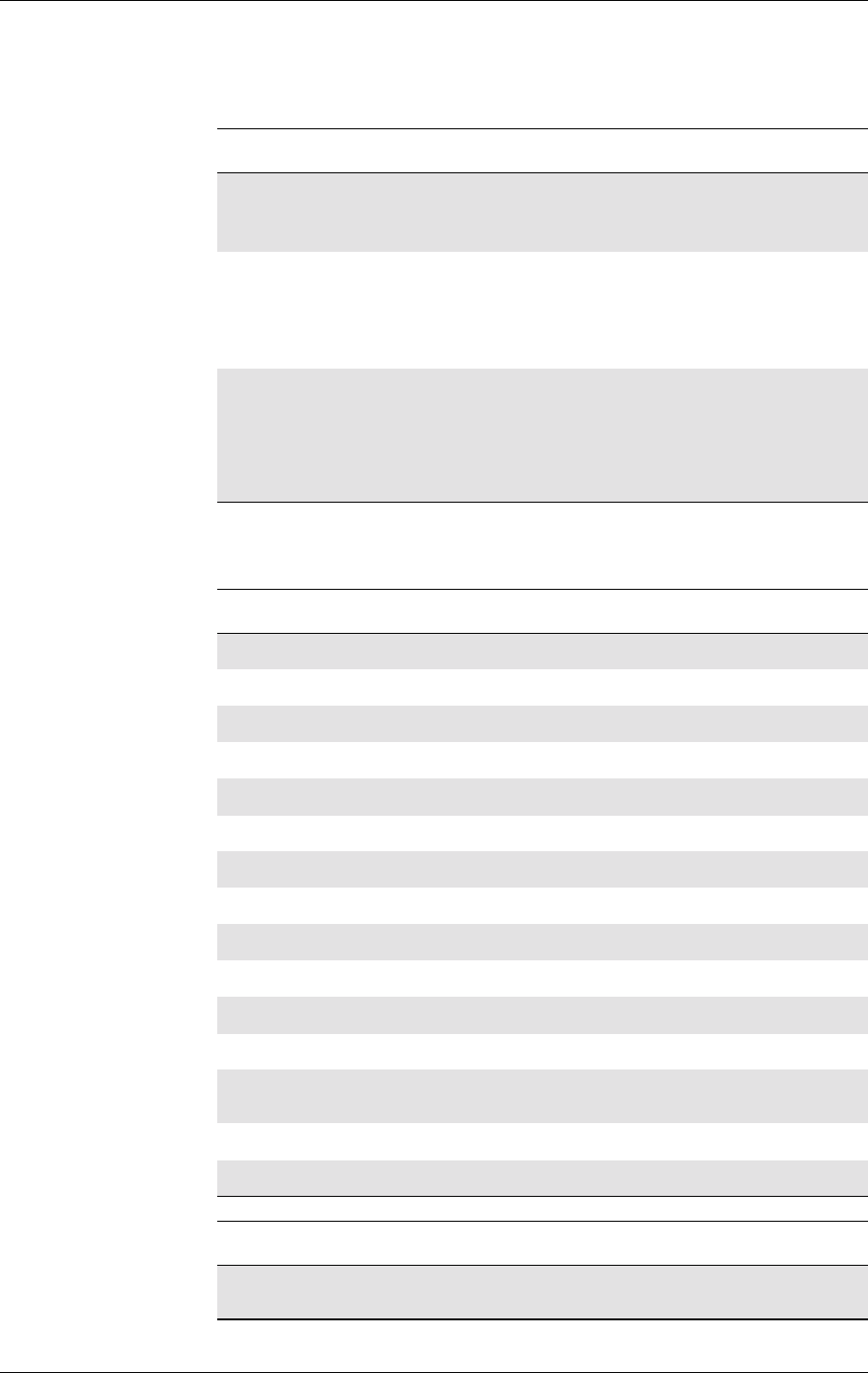
GM47/GM48 INTEGRATOR’S MANUAL
238 LZT 123 7263 R1A
15.12 AT+CPBS Phone Storage
Selects phone book memory storage <storage>, which is used by other
phone book commands.
Description Command Possible Responses
Set phone book
storage AT+CPBS=<storage> • +CME ERROR <err>
•OK
•ERROR
Read the current
setting AT+CPBS? • +CPBS: <storage>
[,<used>,<total>]
• +CME ERROR <err>
•OK
•ERROR
Test if the command is
supported AT+CPBS=? •+CPBS:(listof
supported
<storage>s)
• +CME ERROR <err>
•OK
•ERROR
<storage> Description
“FD” SIM fix-dialing-phone book
“LD” SIM Last-dialing-phone book. Not supported
“ME” ME phone book
“MT” Combined ME and SIM phone books. Not supported
“SM” SIM phone book
“TA” TA phone book. Not supported
“DC” ME dialed calls list (30 entries)
“RC” ME received calls list (30 entries)
“MC” ME missed calls list (30 entries)
“MV” ME Voice Activated Dialing list. Not supported
“SG” SMS group list, Ericsson specific. Not supported
“CA” Callers allowed, Ericsson specific. Not supported
“EN” SIM emergency number (+CPBW is not applicable for this
storage)
“BC” Own business card. Not supported
“HP” Hierarchical phone book. Not supported
<passwd> Description
String Represents the password required when selecting
password protected <storage>s, for example PIN2 for “FD”
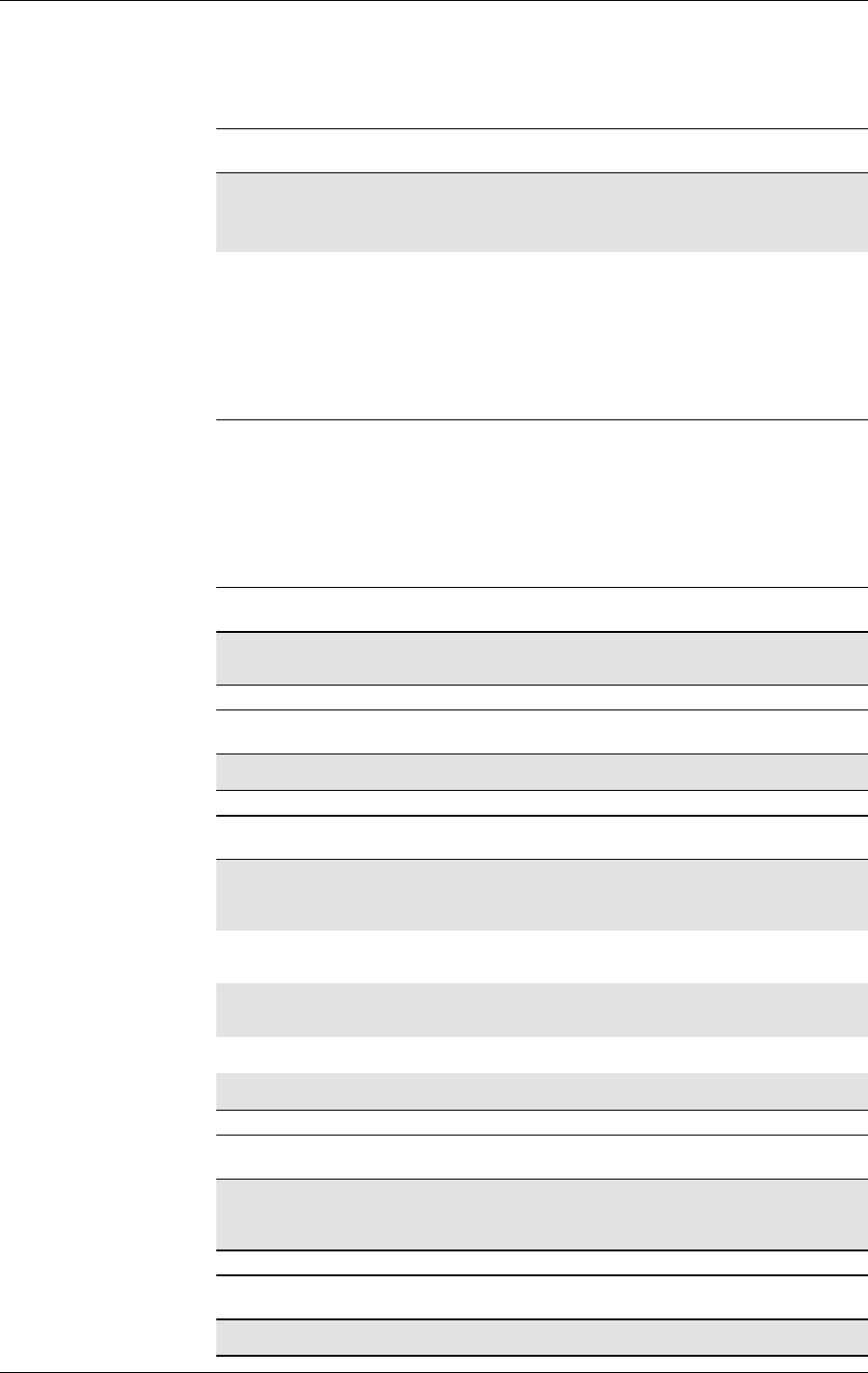
15. PHONEBOOK
239
LZT 123 7263 R1A
15.13 AT+CPBW Phonebook Write
Writes phone book entry in location number <index> in the current
phone book memory storage area, selected with AT+CPBS. If the
<number> and <text> parameters are omitted, the entry is deleted. If
<index> is omitted but <number> is included, the entry is written to the
first free location in the phone book.
Description Command Possible Responses
Request phone book
write AT+CPBW=[<index>][,
<number>
[,<type>[,<text>]]]
• +CME ERROR <err>
•OK
•ERROR
Show if the command
is supported AT+CPBW=? •+CPBW:(listof
supported
<index>s),<nlength>
,(list of supported
<type>s),<tlength>
• +CME ERROR <err>
•OK
•ERROR
<index> Description
integer type Values in the range of location numbers of phone book
memory
<number> Description
string type Phone number of format <type>
<type > Description
integer format Type of address octet, default 145 when dialing string
includes international access code character "+",
otherwise 129. (refer to GSM 04.08 [4] subclause 10.5.4.7)
129 ISDN/telephony numbering plan, national/international
unknown. Default if no “+” in sca.
145 ISDN/telephony numbering plan, international number.
Default if “+” in sca.
161 ISDN/telephony numbering plan, national number
128-255 Other values refer GSM 04.08 section 10.5.4.7
<text > Description
string type Field of maximum length <tlength>;
character set as specified by the select TE character set
command, +CSCS
<nlength> Description
integer type Value indicating the maximum length of field <number>

GM47/GM48 INTEGRATOR’S MANUAL
240 LZT 123 7263 R1A
<tlength > Description
integer type Value indicating the maximum length of field <text>
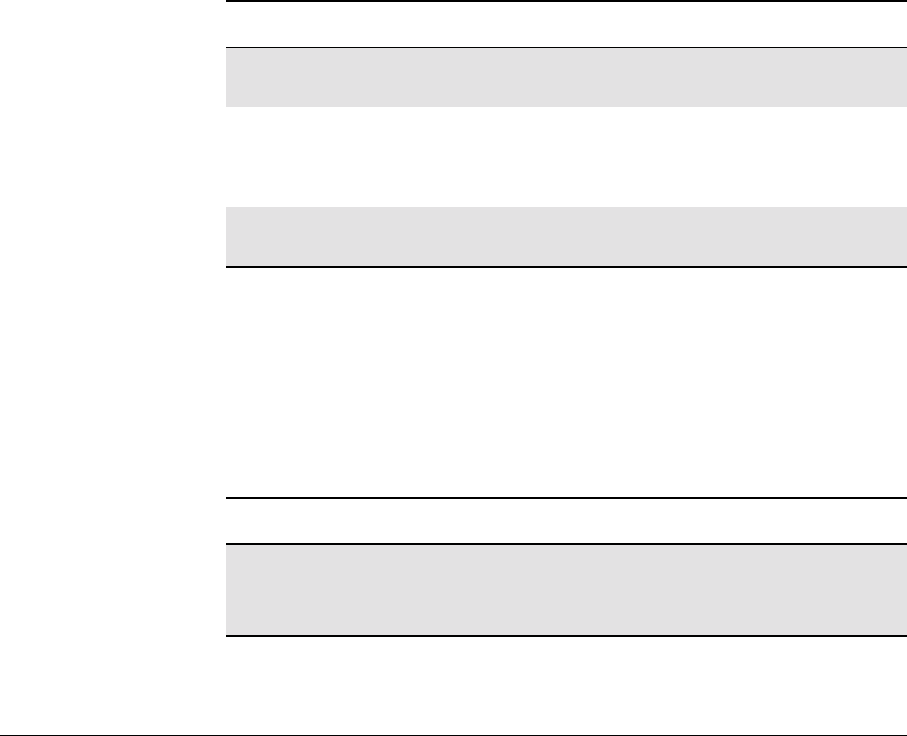
241
LZT 123 7263 R1A
16. Short Message Services - Point to Point
16.1 AT+CPIN PIN Control
See 3.27, AT+CPIN PIN Control
16.2 AT*ESMA Ericsson Set Message Alert Sound
See 4.15, AT*ESMA Ericsson Set Message Alert Sound
16.3 AT+CGSMS Select Service for MO SMS Messages
See 6.10, AT+CGSMS Select Service for MO SMS Messages
16.4 AT+CSCA Service Centre Address
Common for both PDU and Text Modes
Updates the SMSC address, through which mobile originated SMs are
transmitted. In text mode, the setting is used by send (+CMGS) and
write (+CMGW) commands. In PDU mode, the setting is used by the
same commands, but only when the length of the SMSC address coded
into <pdu> parameter equals zero. Note that a “+” in front of the number
in <sca> has precedence over the <tosca> parameter, so that a number
starting with “+” will always be treated as an international number.
Description Command Possible Responses
Set service centre
address AT+CSCA=<sca>
[,<tosca>] •OK
•ERROR
Show the current
setting AT+CSCA? •+CSCA:
<sca>,<tosca>
•OK
•ERROR
Show if the command
is supported AT+CSCA=? •OK
•ERROR
<sca> Description
string type GSM 04.11 (3G TS 24.011) RP SC address Address-Value
field in string format; BCD numbers (or GSM default
alphabet characters) are converted to characters of the
currently selected TE character set
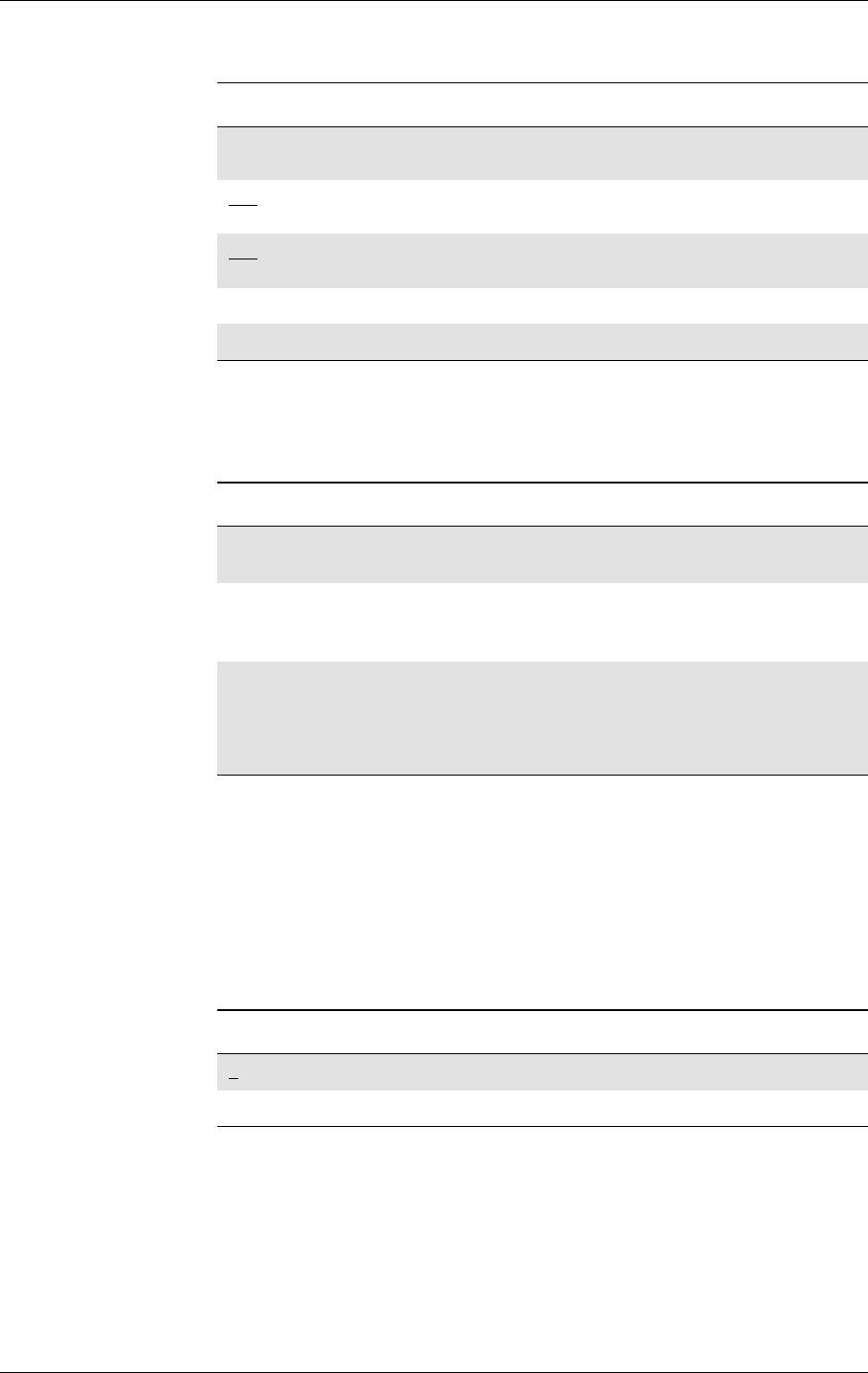
GM47/GM48 INTEGRATOR’S MANUAL
242 LZT 123 7263 R1A
16.5 AT+CMGF Message Format
Common for both PDU and Text Modes
This command tells the TA, which input and output format to use for
messages. <mode> indicates the format of messages used with send,
list, read and write commands, and unsolicited result codes resulting
from received messages. Mode can be either PDU mode (entire TP data
units used) or text mode (headers and body of the messages given as
separate parameters).
Test command returns supported modes as a compound value.
<tosca> Description
integer type GSM 04.11 (3G TS 24.011) RP SC address type-of-address
octet in integer format
129 ISDN/telephony numbering plan, national/international
unknown. Default if no “+” in sca.
145 ISDN/telephony numbering plan, international number.
Default if “+” in sca.
161 ISDN/telephony numbering plan, national number
128-255 Other values refer GSM 04.08 section 10.5.4.7
Description Command Possible Responses
Set message format AT+CMGF=<mode> •OK
•ERROR
Read the current
setting AT+CMGF? •+CMGF:<mode>
•OK
•ERROR
Show if the command
is supported AT+CMGF=? •+CMGF:(listof
supported
<mode>s)
•OK
•ERROR
<mode> Description
0PDU mode
1Text mode
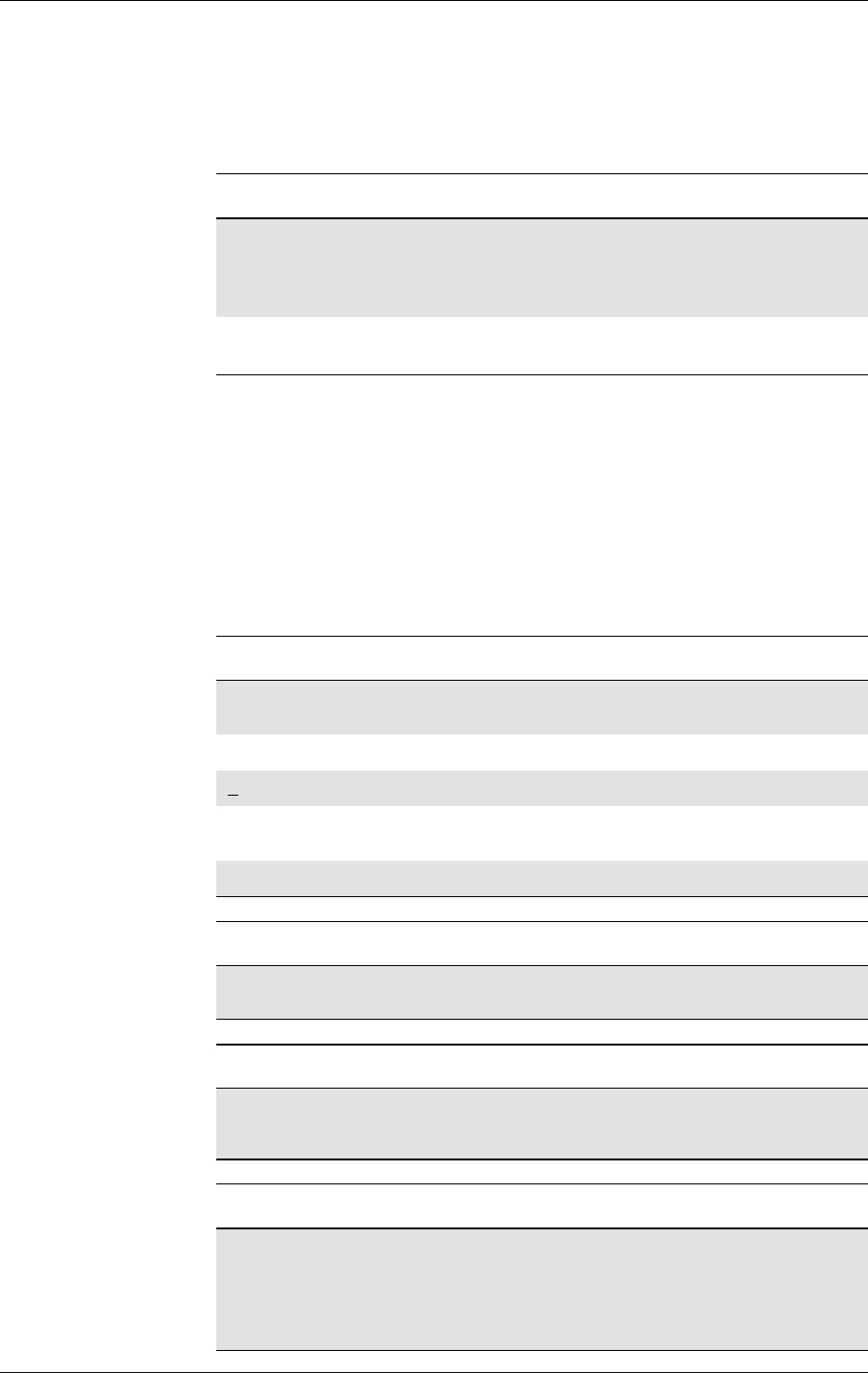
16. SHORT MESSAGE SERVICES - POINT TO POINT
243
LZT 123 7263 R1A
16.6 AT+CMGW Write Message to Memory
PDU Mode
Stores a message to memory storage <mem2>. Memory location
<index> of the stored message is returned. By default message status
will be set to 'stored unsent', but parameter <stat> allows other status
values to be given. ME/TA manufacturer may choose to use different
default <stat> values for different message types. Entering PDU is the
same as specified by the send message command, +CMGS. If writing
fails, final result code +CMS ERROR: <err> is returned.
Description Command Possible Responses
Write message to
memory AT+CMGW=<length>
[,<stat>]<CR>
PDU is given<ctrl-Z/ESC>
•+CMGW:<index>
• +CMS ERROR: <err>
•OK
•ERROR
Show if the command
is supported AT+CMGW=? •OK
•ERROR
<stat> Description
0Received unread message (i.e. new message). Not
supported
1Received read message. Not supported
2Stored unsent message (only applicable to SMs)
3Stored sent message (only applicable to SMs). Not
supported
16 Template message. Not supported
<index> Description
Integer type Value in the range of location numbers supported by the
associated memory
<length> Description
Integer type Value indicating in PDU mode (+CMGF=0), the length of
the actual TP data unit in octets (i.e. the RP layer SMSC
address octets are not counted in the length)
<pdu> Description
... InthecaseofSMS:GSM04.11SCaddressfollowedby
GSM 03.40 TPDU in hexadecimal format: ME/TA converts
each octet of TP data unit into two IRA character long
hexadecimal number (e.g. octet with integer value 42 is
presented to TE as two characters 2A (IRA 50 and 65))
In the case of CBS: GSM 03.41 TPDU in hexadecimal format
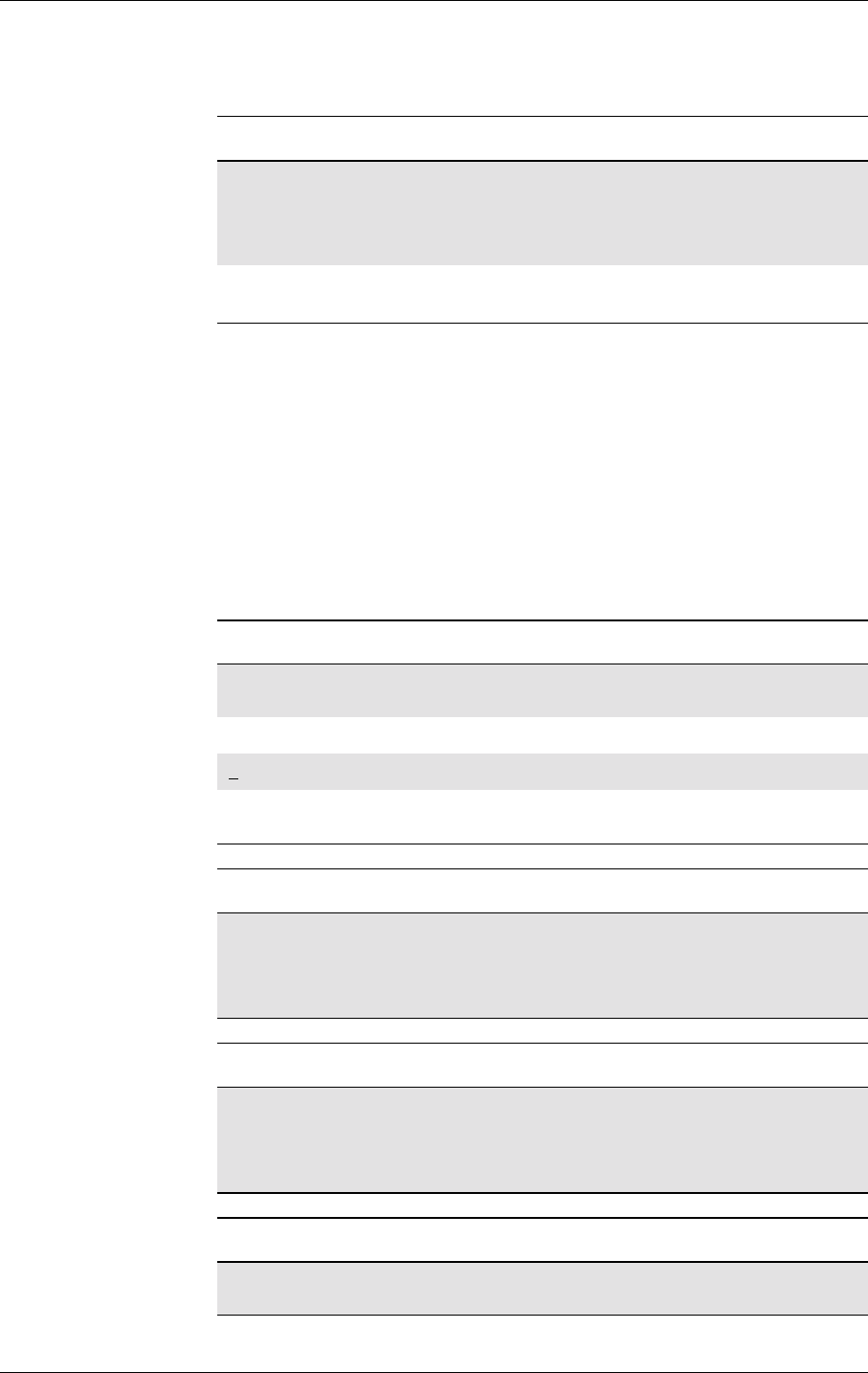
GM47/GM48 INTEGRATOR’S MANUAL
244 LZT 123 7263 R1A
Text Mode
Stores message (either SMS-DELIVER or SMS-SUBMIT) to memory
storage <mem2>. Memory location <index> of the stored message is
returned. By default message status will be set to ‘stored unsent’, but
parameter <stat> allows also other status values to be given. The
entering of text is done as specified in the send message command,
+CMGS. If writing fails, final result code +CMS ERROR: <err> is
returned.
Note! SMS-COMMANDs and SMS-STATUS-REPORTs cannot be stored in
text mode.
Description Command Possible Responses
Write message to
memory AT+CMGW [=<oa/da>
[,<tooa/toda>[,<stat>]]]
<CR>
Text is entered <ctrl-Z/
ESC>
•+CMGW:<index>
• +CMS ERROR: <err>
•OK
•ERROR
Show if the command
is supported AT+CMGW=? •OK
•ERROR
<stat> Description
0Received unread message (new message). Not
supported
1Received read message. Not supported
2Stored unsent message (only applicable to SMs)
3Stored sent message (only applicable to SMs). Not
supported
<oa> Description
String type GSM 03.40 TP-Originating-Address Value in string format;
BCD numbers (or GSM default alphabet characters) are
converted to characters of the currently selected TE
character (refer command +CSCS). Type of address given
by <tooa>
<da> Description
String type GSM 03.40 TP-Destination-Address Value in string format;
BCD numbers (or GSM default alphabet characters) are
converted to characters of the currently selected TE
character (refer command +CSCS). Type of address given
by <toda>
<tooa> Description
String type GSM 04.11 TP-Originating-Address Type-of-Address octet
in integer format (default refer <toda>)
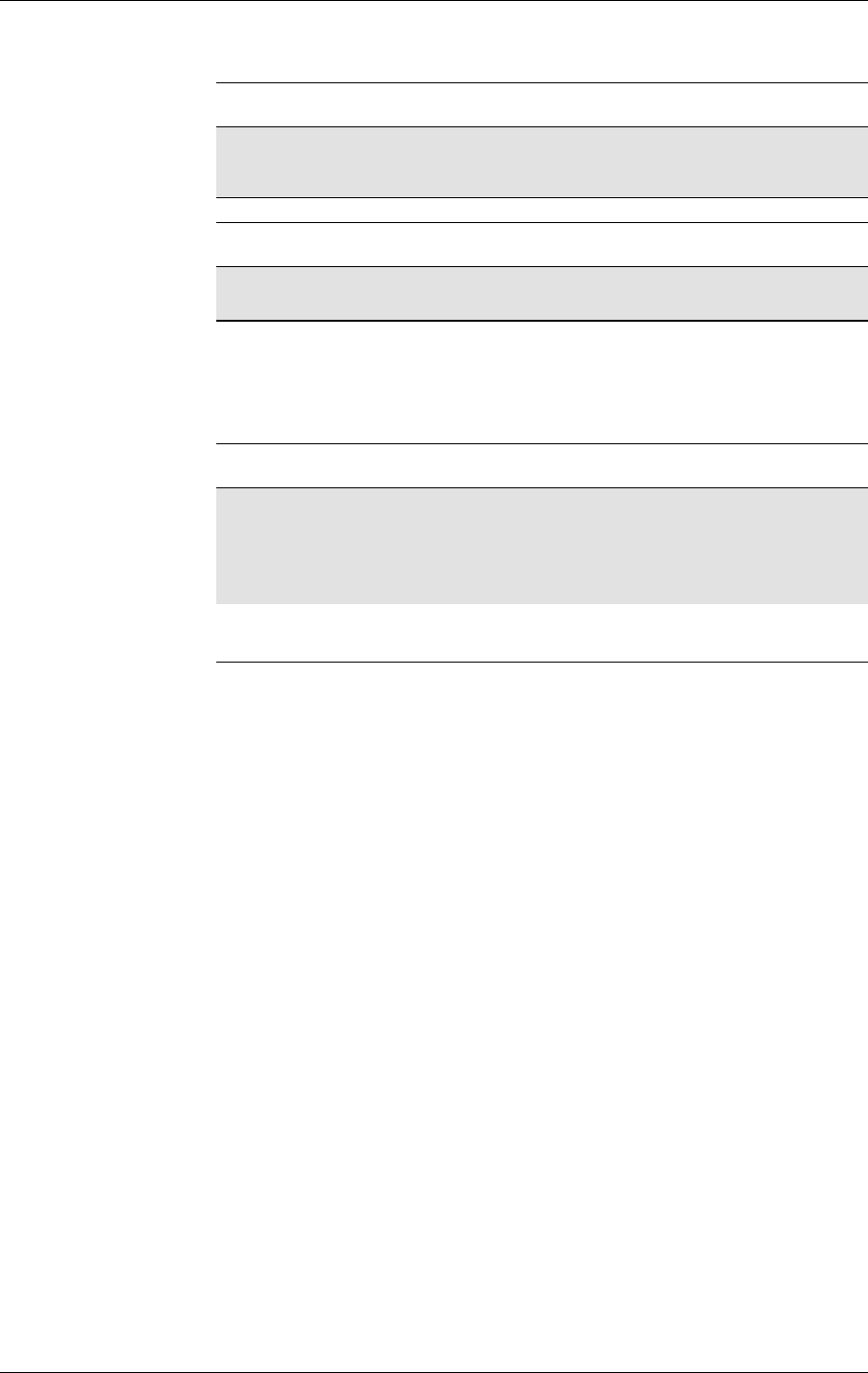
16. SHORT MESSAGE SERVICES - POINT TO POINT
245
LZT 123 7263 R1A
16.7 AT+CMGS Send Message
PDU Mode
Sends a message from a TE to the network (SMS-SUBMIT). Message
reference value <mr> is returned to the TE on successful message
delivery. Optionally, when AT+CSMS <service> value is 1 and there is
network support, <ackpdu> is returned. Values can be used to identify
message upon unsolicited delivery status report result code. If sending
fails in a network or an ME error, final result code +CMS ERROR:
<err> is returned. This command is abortable.
• <length> must indicate the number of octets coded in the TP layer
data unit to be given (i.e. SMSC address octets are excluded).
• The TA shall send a four character sequence
<CR><LF><greater_than><space> (IRA 13, 10, 62, 32) after
command line is terminated with <CR>; after that PDU can be given
from TE to ME/TA.
• The DCD signal is in the ON state as PDU is given.
• The echoing of given characters back from the TA is controlled by
V.25ter echo command E.
• The PDU shall be hexadecimal format (similarly as specified for
<pdu>) and given in one line; ME/TA converts this coding into the
actual octets of PDU.
• When the length octet of the SMSC address (given in the <pdu>)
equals zero, the SMSC address set with command Service Centre
Address +CSCA is used.
• Sending can be cancelled by giving <ESC> character (IRA 27).
<toda> Description
String type GSM 04.11 TP-Destination- Address Type-of-Address octet
in integer format (when first character of <da> is +(IRA 43)
default is 145, otherwise default is 129
<index> Description
Integer type Value in the range of location numbers supported by the
associated memory
Description Command Possible Responses
Send message AT+CMGS=<length>
<CR>
PDU is given<ctrl-Z/
ESC>
•+CMGS:
<mr>[,<ackpdu>]
• +CMS ERROR: <err>
•OK
•ERROR
Show if the command
is supported AT+CMGS=? •OK
•ERROR
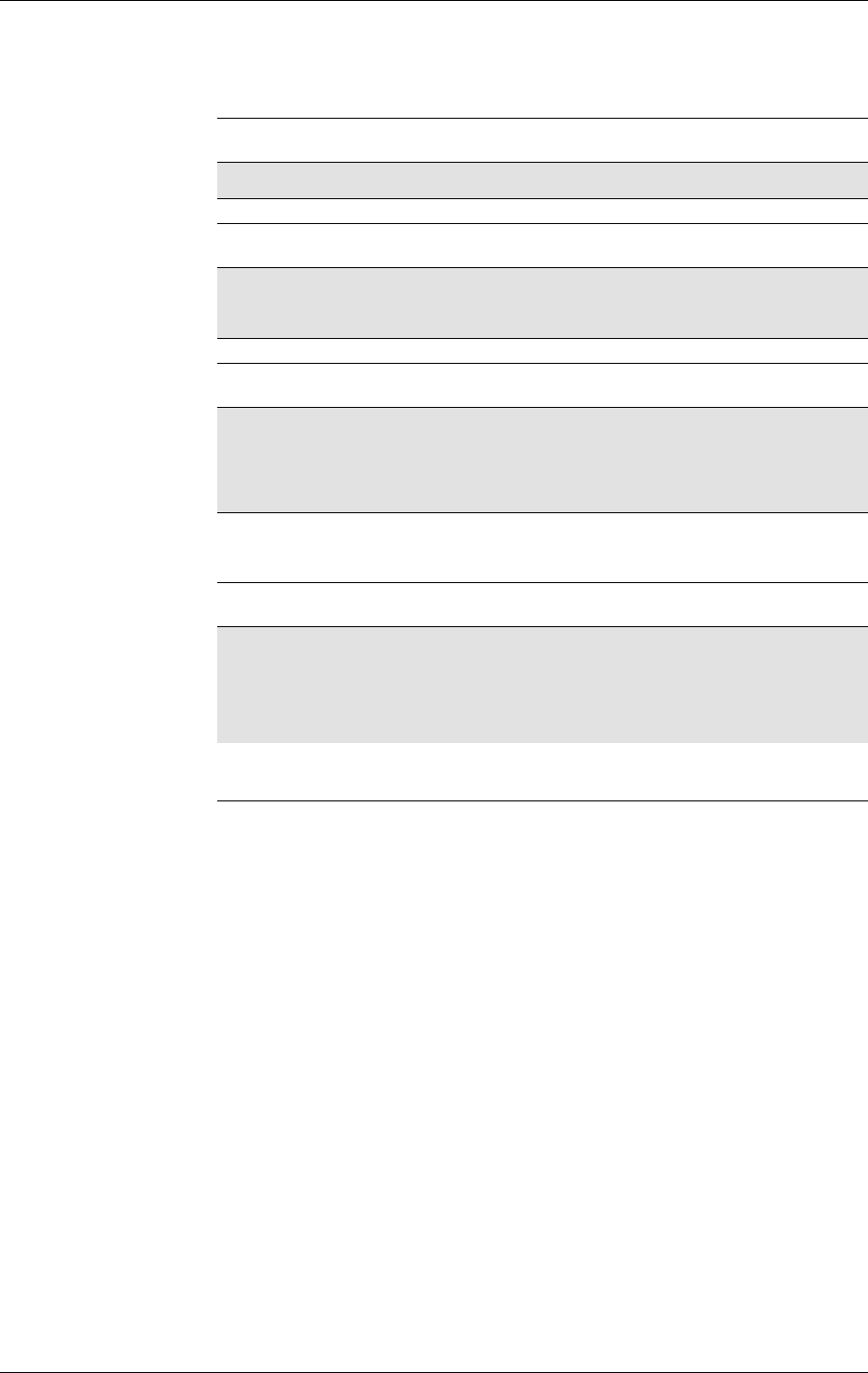
GM47/GM48 INTEGRATOR’S MANUAL
246 LZT 123 7263 R1A
• <ctrl-Z> (IRA 26) must be used to indicate the ending of PDU.
Text Mode
Sends a message from a TE to the network (SMS-SUBMIT). Message
reference value <mr> is returned to the TE on successful message
delivery. Optionally, when AT+CSMS <service> value is 1 and there is
network support, <scts> is returned. Values can be used to identify
message upon unsolicited delivery status report result code. If sending
fails in a network or an ME error, final result code +CMS ERROR:
<err> is returned. This command is abortable.
• The entered text (GSM 03.40 TP-Data-Unit) is sent to address <da>
and all current settings (refer Set Text Mode Parameters +CSMP and
Service Centre Address +CSCA) are used to construct the actual
PDU in the ME/TA.
• The TA shall send a four character sequence
<CR><LF><greater_than><space> (IRA 13, 10, 62, 32) after the
command line is terminated with <CR>; after that text can be
entered from the TE to the ME/TA.
• The DCD signal is in the ON state as text is entered.
• The echoing of entered characters back from the TA is controlled by
V.25ter echo command E.
<mr> Description
Integer type GSM 03.40 TP-Message-Reference in integer format
<length> Description
Integer type Value indicating in PDU mode (+CMGF=0), the length of
the actual TP data unit in octets (i.e. the RP layer SMSC
address octets are not counted in the length)
<ackpdu> Description
... GSM 03.40 RP-User-Data element of RP-ACK PDU; format is
same as for <pdu> in case of SMS, but without GSM 04.11
SC address field and parameter shall be bounded by
double quote characters like a normal string type
parameter
Description Command Possible Responses
Send message AT+CMGS=<da>
[,<toda>] <CR>
Text is entered<ctrl-Z/
ESC>
•+CMGS:
<mr>[,<scts>]
• +CMS ERROR: <err>
•OK
•ERROR
Show if the command
is supported AT+CMGS=? •OK
•ERROR
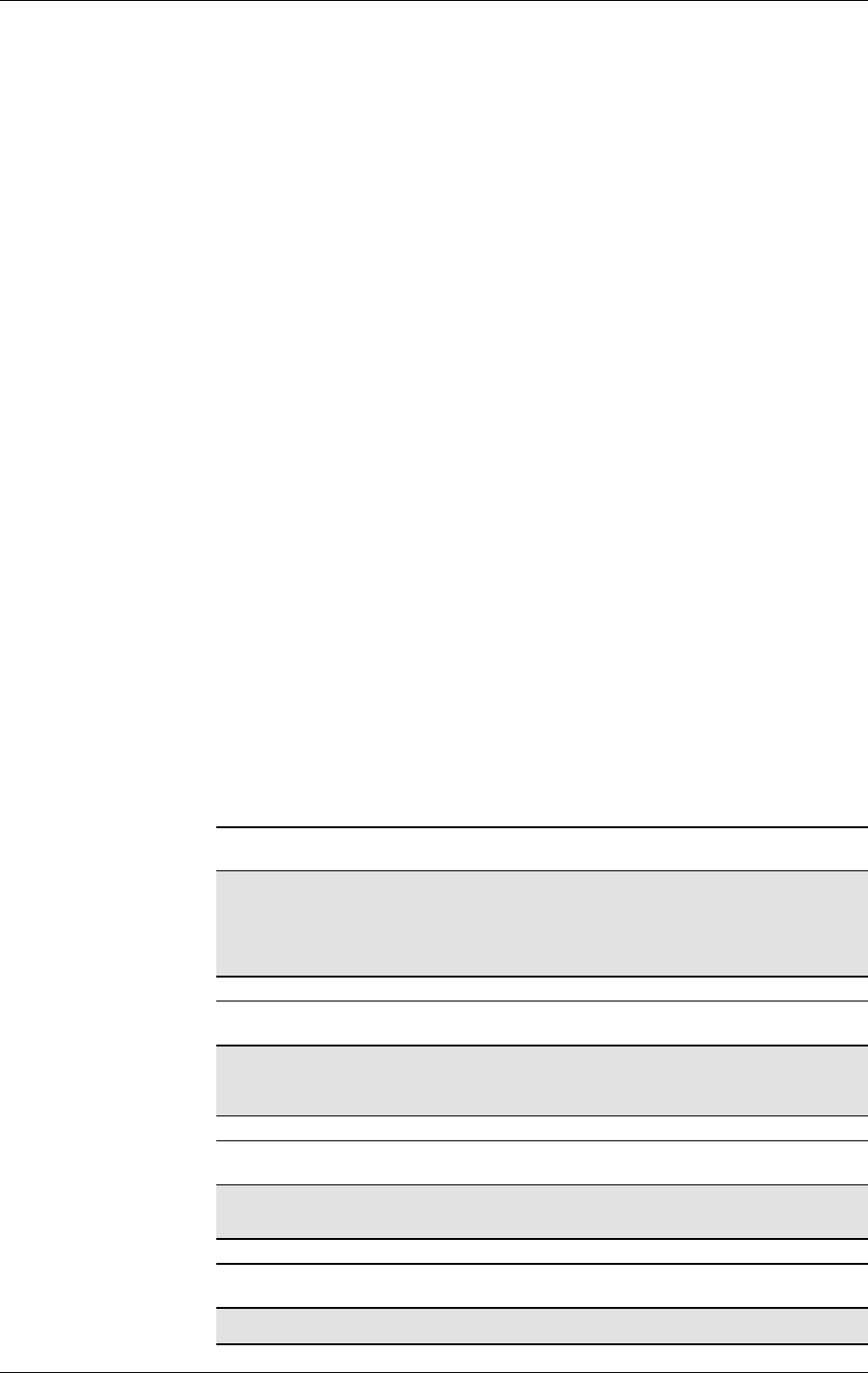
16. SHORT MESSAGE SERVICES - POINT TO POINT
247
LZT 123 7263 R1A
• The entered text should be formatted as follows:
if <dcs> (set with +CSMP) indicates that GSM 03.38 default
alphabet is used and <fo> indicates that GSM 03.40 TP-User-
Data-Header-Indication is not set:
if TE character set other than "HEX" (refer command Select
TE Character Set +CSCS in TS 07.07): ME/TA converts the
entered text into GSM alphabet according to rules of Annex
A; backspace can be used to delete last character and
carriage returns can be used (previously mentioned four
character sequence shall be sent to the TE after every
carriage return entered by the user);
if TE character set is "HEX": the entered text should consist
of two IRA character long hexadecimal numbers which
ME/TA converts to 7-bit characters of GSM alphabet (e.g.
17 (IRA 49 and 55) will be converted to character P (GSM
23));
if <dcs> indicates that 8-bit or UCS2 data coding scheme is used
or <fo> indicates that GSM 03.40 TP-User-Data-Header-
Indication is set: the entered text should consist of two IRA
character long hexadecimal numbers which ME/TA converts into
8-bit octet (e.g. two characters 2A (IRA 50 and 65) will be
converted to an octet with integer value 42).
• Sending can be cancelled by giving <ESC> character (IRA 27).
• <ctrl-Z> (IRA 26) must be used to indicate the ending of the
message body.
<da> Description
String type GSM 03.40 TP-Destination-Address Value in string format;
BCD numbers (or GSM default alphabet characters) are
converted to characters of the currently selected TE
character(refercommand+CSCS).Typeofaddressgiven
by <toda>
<toda> Description
String type GSM 04.11 TP-Destination- Address Type-of-Address octet
in integer format (when first character of <da> is +(IRA 43)
default is 145, otherwise default is 129
<mr> Description
String type GSM 03.40 TP-Service-Centre-Time-Stamp in time-string
format (refer <dt>)
<mr> Description
Integer GSM 03.40 TP-Message-Reference
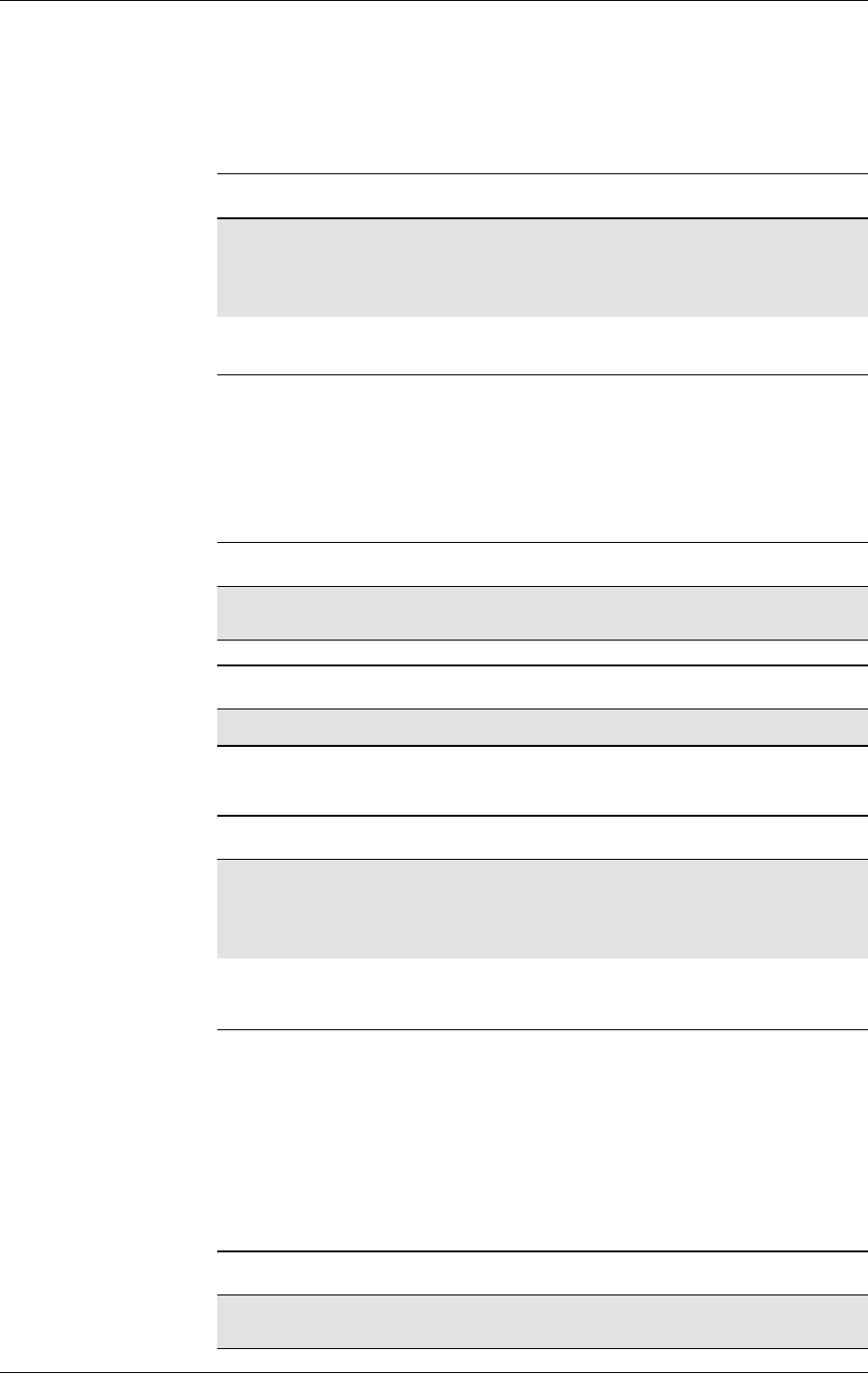
GM47/GM48 INTEGRATOR’S MANUAL
248 LZT 123 7263 R1A
16.8 AT+CMSS Send From Storage
PDU mode
Sends message with location value <index> from message storage
<mem2> to the network (SMS-SUBMIT or SMS-COMMAND).
Reference value <mr> is returned to the TE on successful message
delivery. If sending fails in a network or an ME error, final result code
+CMS ERROR: <err> is returned. This command is abortable.
Text Mode
Sends message with location value <index> from message storage
<mem2> to the network (SMS-SUBMIT or SMS-COMMAND).
Reference value <mr> is returned to the TE on successful message
delivery. Optionally, when +CSMS <service> value is 1 and network
supports, <scts> is returned. If sending fails in a network or an ME
error, final result code +CMS ERROR: <err> is returned. This
command is abortable.
Description Command Possible Responses
Send from storage AT+CMSS=<index> •+CMSS:<mr>
• +CMS ERROR: <err>
•OK
•ERROR
Show if the command
is supported AT+CMSS=? •OK
•ERROR
<index> Description
Integer type Valueintherangeoflocationnumberssupportedbythe
associated memory
<mr> Description
Integer type GSM 03.40 TP-Message-Reference in integer format
Description Command Possible Responses
Send from storage AT+CMSS=<index>
[,<da> [,<toda>]] • +CMSS: <mr> [,<scts>]
• +CMS ERROR: <err>
•OK
•ERROR
Show if the
command is
supported
AT+CMSS=? •OK
•ERROR
<index> Description
Integer type Valueintherangeoflocationnumberssupportedbythe
associated memory
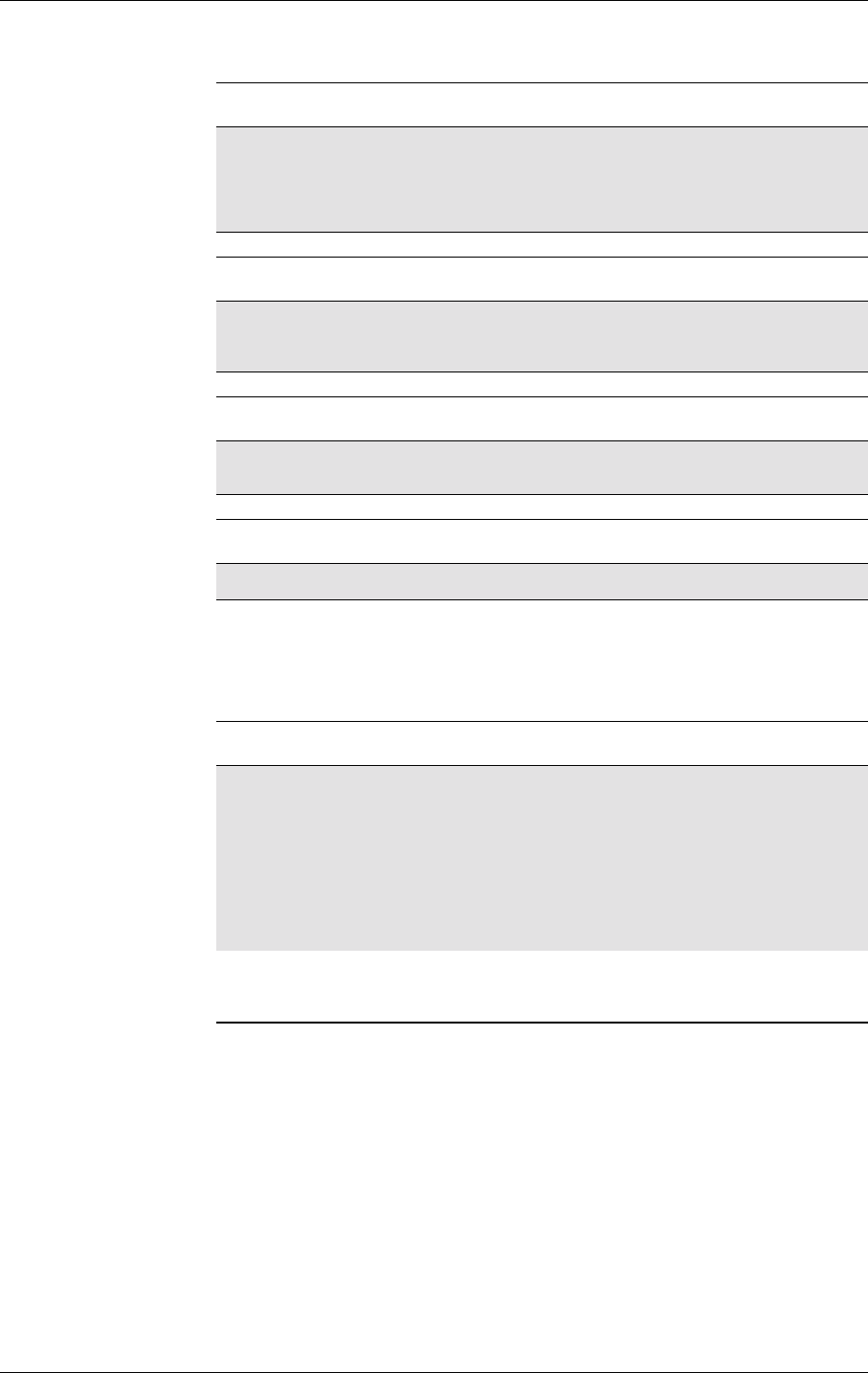
16. SHORT MESSAGE SERVICES - POINT TO POINT
249
LZT 123 7263 R1A
16.9 AT+CMGC Send Command
PDU Mode
Sends a command message from a TE to the network (SMS-
COMMAND). The entering of PDU is as specified in the send message
command, +CMGS. Message reference value <mr> is returned to the
TE on successful message delivery. Optionally (when +CSMS
<service> value is 1 and network supports) <ackpdu> is returned.
Values can be used to identify message upon unsolicited delivery status
report result code. If sending fails in a network or an ME error, final
result code +CMS ERROR: <err> is returned. This command is
abortable.
<da> Description
String type GSM 03.40 TP-Destination-Address Value in string format;
BCD numbers (or GSM default alphabet characters) are
converted to characters of the currently selected TE
character(refercommand+CSCS).Typeofaddressgiven
by <toda>
<toda> Description
String type GSM 04.11 TP-Destination- Address Type-of-Address octet
in integer format (when first character of <da> is +(IRA 43)
default is 145, otherwise default is 129
<scts> Description
String type GSM 03.40 TP-Service-Centre-Time-Stamp in time-string
format (refer <dt>)
<mr> Description
Integer type GSM 03.40 TP-Message-Reference in integer format
Description Command Possible Responses
Send command
message AT+CMGC=<length><CR>
<pdu><ctrl-Z/ESC> •ifPDUmode
(+CMGF=0) and
sending successful:
+CMGC:
<mr>[,<ackpdu>]
•ifsendingfails:
+CMS ERROR: <err>
•OK
•ERROR
Show if the
command is
supported
AT+CMGC=? •OK
•ERROR
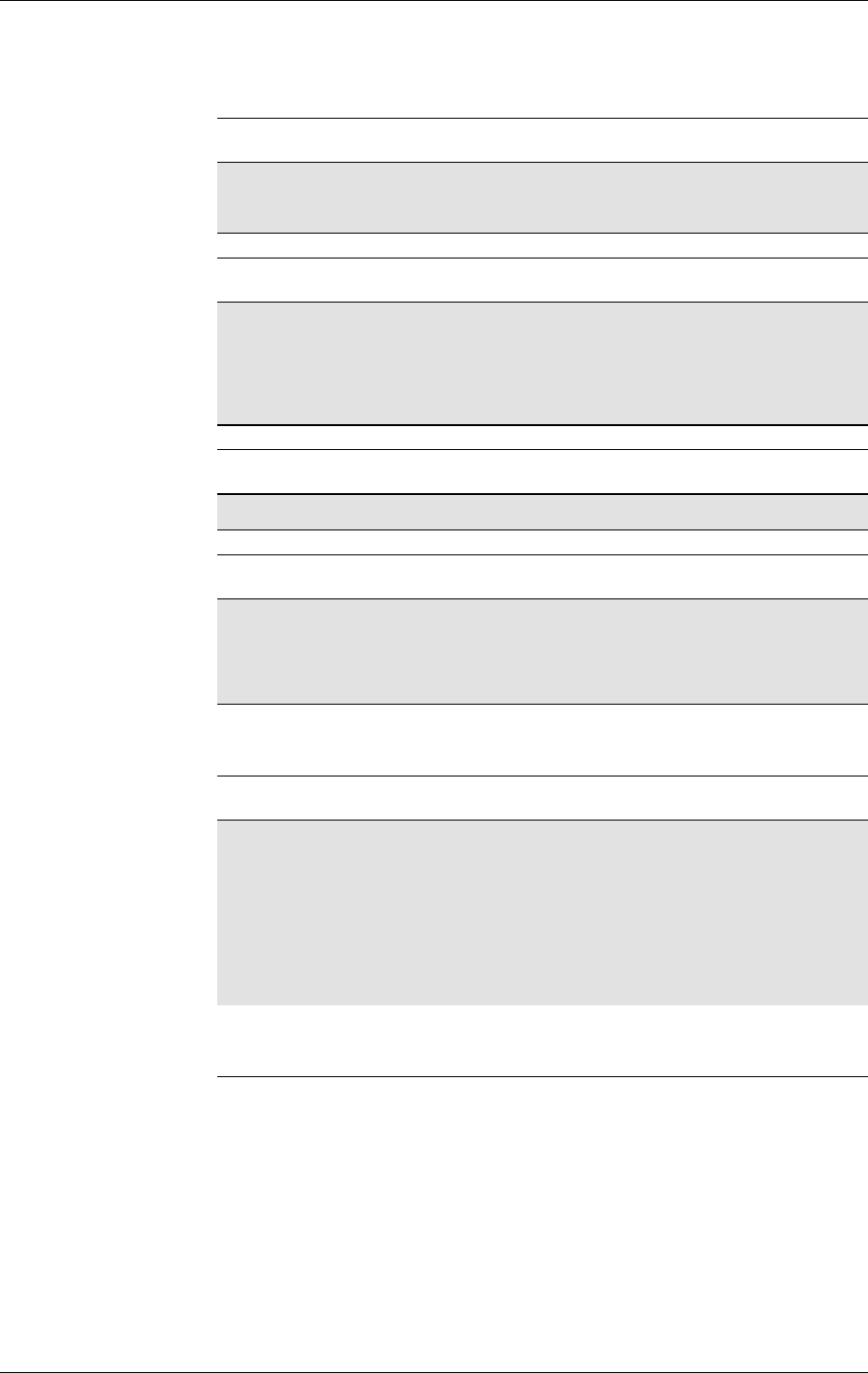
GM47/GM48 INTEGRATOR’S MANUAL
250 LZT 123 7263 R1A
Text Mode
Sends a command message from a TE to the network (SMS-
COMMAND). The entering of text is as specified in the send message
command, +CMGS, but the format is fixed to be a sequence of two IRA
character long hexadecimal numbers, which the ME/TA converts into
8-bit octets (refer to +CMGS). Message reference value <mr> is
returned to the TE on successful message delivery. Optionally, when
+CSMS <service> value is 1 and there is network support, <scts> is
returned. Values can be used to identify message upon unsolicited
<length> Description
Integer type Value indicating in PDU mode (+CMGF=0), the length of
the actual TP data unit in octets (i.e. the RP layer SMSC
address octets are not counted in the length)
<pdu> Description
String InthecaseofSMS:GSM04.11SCaddressfollowedby
GSM 03.40 TPDU in hexadecimal format: ME/TA converts
each octet of TP data unit into two IRA character long
hexadecimal number (e.g. octet with integer value 42 is
presented to TE as two characters 2A (IRA 50 and 65))
In the case of CBS: GSM 03.41 TPDU in hexadecimal format
<mr> Description
Integer type GSM 03.40 TP-Message-Reference in integer format
<ackpdu> Description
String GSM 03.40 RP-User-Data element of RP-ACK PDU; format is
same as for <pdu> in case of SMS, but without GSM 04.11
SC address field and parameter shall be bounded by
double quote characters like a normal string type
parameter
Description Command Possible Responses
Send command
message AT+CMGC=<fo>,<ct>[,<pid>
[,<mn>[,<da>[,<toda>]]]]
<CR>
Text is entered<ctrl-Z/ESC>
•ifPDUmode
(+CMGF=1) and
sending successful:
+CMGC:
<mr>[,<scts>]
•ifsendingfails:
+CMS ERROR: <err>
•OK
•ERROR
Show if the
commands is
supported
AT+CMGC=? •OK
•ERROR
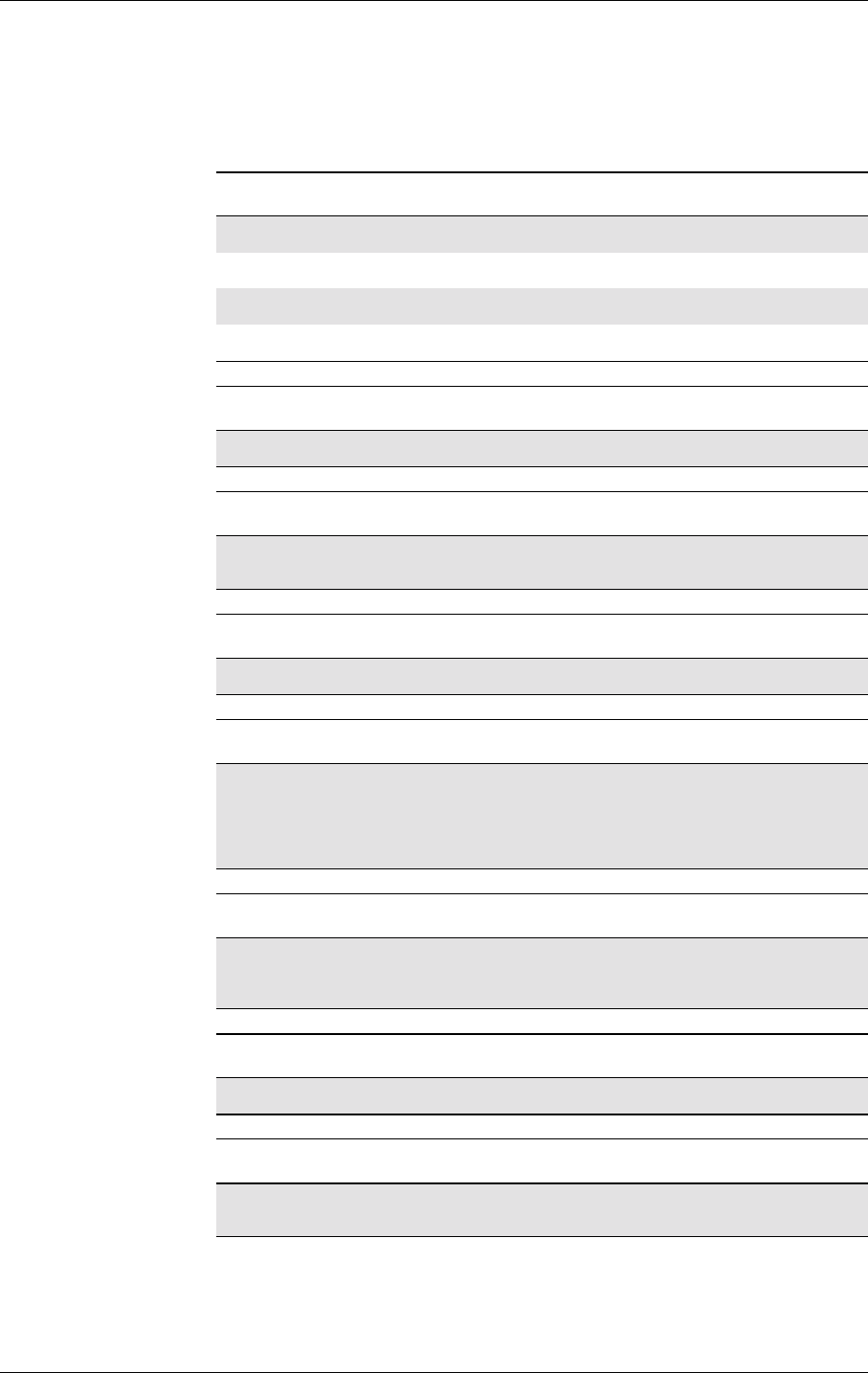
16. SHORT MESSAGE SERVICES - POINT TO POINT
251
LZT 123 7263 R1A
delivery status report result code. If sending fails in a network or an ME
error, final result code +CMS ERROR: <err> is returned. This
command is abortable.
<fo> Description
0First octet of SMS-DELIVER in integer format
1First octet of SMS_SUBMIT in integer format
2First octet of SMS-STATUS-REPORT in integer format
3First octet of SMS-COMMAND in integer format
<ct> Description
Integer GSM 03.40 TP-Command-Type (default 0)
<pid> Description
0-255 Protocol Identifier in integer format. Default value = 0.
According to 07.05 section 9.2.3.9
<mn> Description
Integer GSM 03.40 TP-Message-Number
<da> Description
String type GSM 03.40 TP-Destination-Address Value in string format;
BCD numbers (or GSM default alphabet characters) are
converted to characters of the currently selected TE
character(refercommand+CSCS). Type of address given
by <toda>
<toda> Description
String type GSM 04.11 TP-Destination- Address Type-of-Address octet
in integer format (when first character of <da> is +(IRA 43)
default is 145, otherwise default is 129
<mr> Description
Integer type GSM 03.40 TP-Message-Reference in integer format
<scts> Description
String type GSM 03.40 TP-Service-Centre-Time-Stamp in time-string
format (refer <dt>)
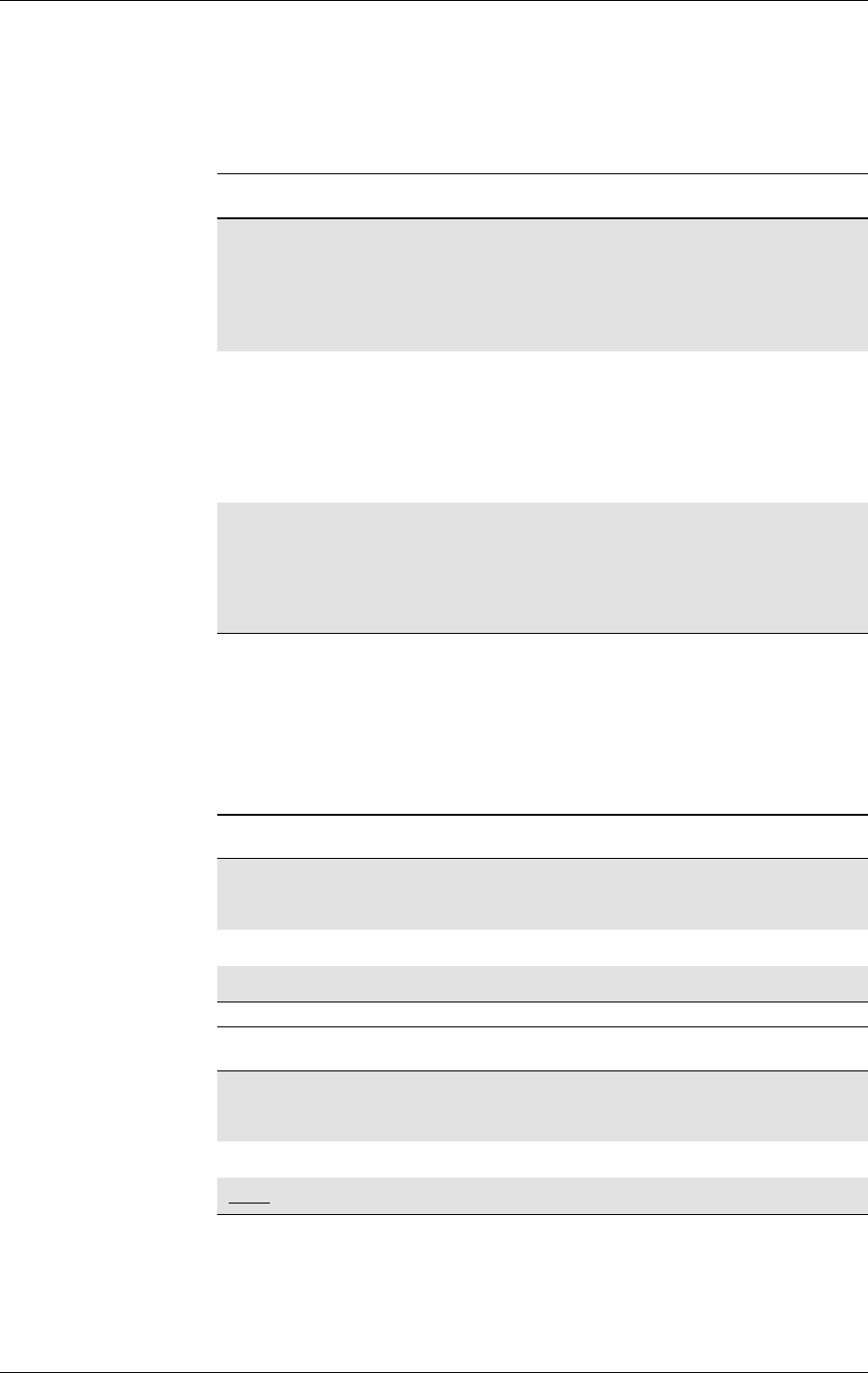
GM47/GM48 INTEGRATOR’S MANUAL
252 LZT 123 7263 R1A
16.10 AT+CPMS Preferred Message Storage
Common for both PDU and Text Modes
Selects memory storage <mem1>, <mem2> and <mem3> to be used for
reading, writing, etc. If chosen storage is not appropriate for the ME
(but is supported by the TA), final result code +CMS ERROR: <err>
shall be returned.
Test command returns lists of memory storage supported by the TA.
Description Command Possible Responses
Set preferred
message storage AT+CPMS=<mem1>
[,<mem2>]
[,<mem3>]
•+CPMS:
<used1>,<total1>,<used2>,
<total2>,<used3>,<total3>
• +CMS ERROR: <err>
•OK
•ERROR
Read the command AT+CPMS? •+CPMS:
<mem1>,<used1>,<total1,
<mem2>,<used2>,<total2,
<mem3>,<used3>,<total3>
• +CMS ERROR: <err>
•OK
•ERROR
Show if the
command is
supported
AT+CPMS=? • +CPMS: (list of supported
<mem1>s),(list of
supported <mem2>s),(list
of supported <mem3>s)
•OK
•ERROR
<mem1> Description
string type Memory from which messages are read and deleted
(commands List Messages +CMGL, Read Message
+CMGR and Delete Message +CMGD)
“ME” ME message storage
“SM” SIM message storage
<mem2> Description
string type Memory to which writing and sending operations are
made (commands Send Message from Storage +CMSS
and Write Message to Memory +CMGW)
“ME” ME message storage
“SM” SIM message storage
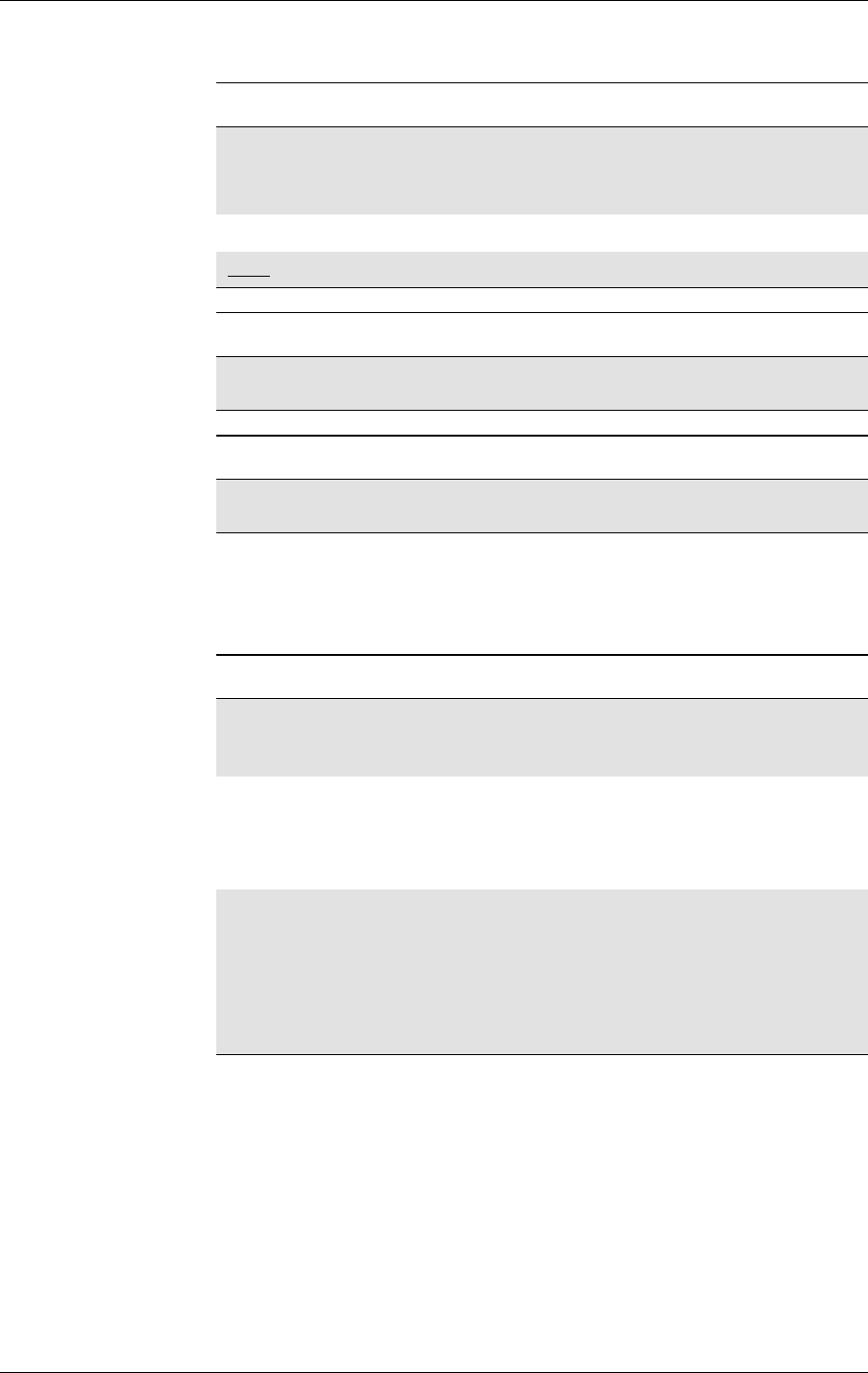
16. SHORT MESSAGE SERVICES - POINT TO POINT
253
LZT 123 7263 R1A
16.11 AT+CNMI New Message Indications to TE
PDU Mode
Selects the procedure for the way in which new messages received from
the network, are indicated to the TE when it is active, e.g. DTR signal
is ON. If the TE is inactive (DTR signal is OFF), message receiving is
carried out as specified in GSM 03.38 (3G TS 23.038).
<mem3> Description
string type Memory to which received SMs are preferred to be stored
(unless forwarded directly to TE). Received CBMs are
always stored in “BM” (or some manufacturer specific
storage) unless directly forwarded to TE
“ME” ME message storage
“SM” SIM message storage
<used1>,<used2>,<used3> Description
integer type Total number of messages currently in
<mem1>, <mem2> and <mem3> respectively
<total1>,<total2> ,<total3> Description
integer type Total number of message locations in
<mem1>, <mem2> and <mem3> respectively
Description Command Possible Responses
Set new message
indication to TE AT+CNMI=[<mode>
[,<mt>[,<bm>[,<ds>[,
<bfr>]]]]]
• +CMS ERROR: <err>
•OK
•ERROR
Shows the current
setting AT+CNMI? •+CNMI:
<mode>,<mt>,<bm>,<ds>,
<bfr>
•OK
•ERROR
Show if the
command is
supported
AT+CNMI=? •+CNMI:
(list of supported <mode>s),
(list of supported <mt>s),
(list of supported <bm>s),
(list of supported <ds>s),
(list of supported <bfr>s)
•OK
•ERROR
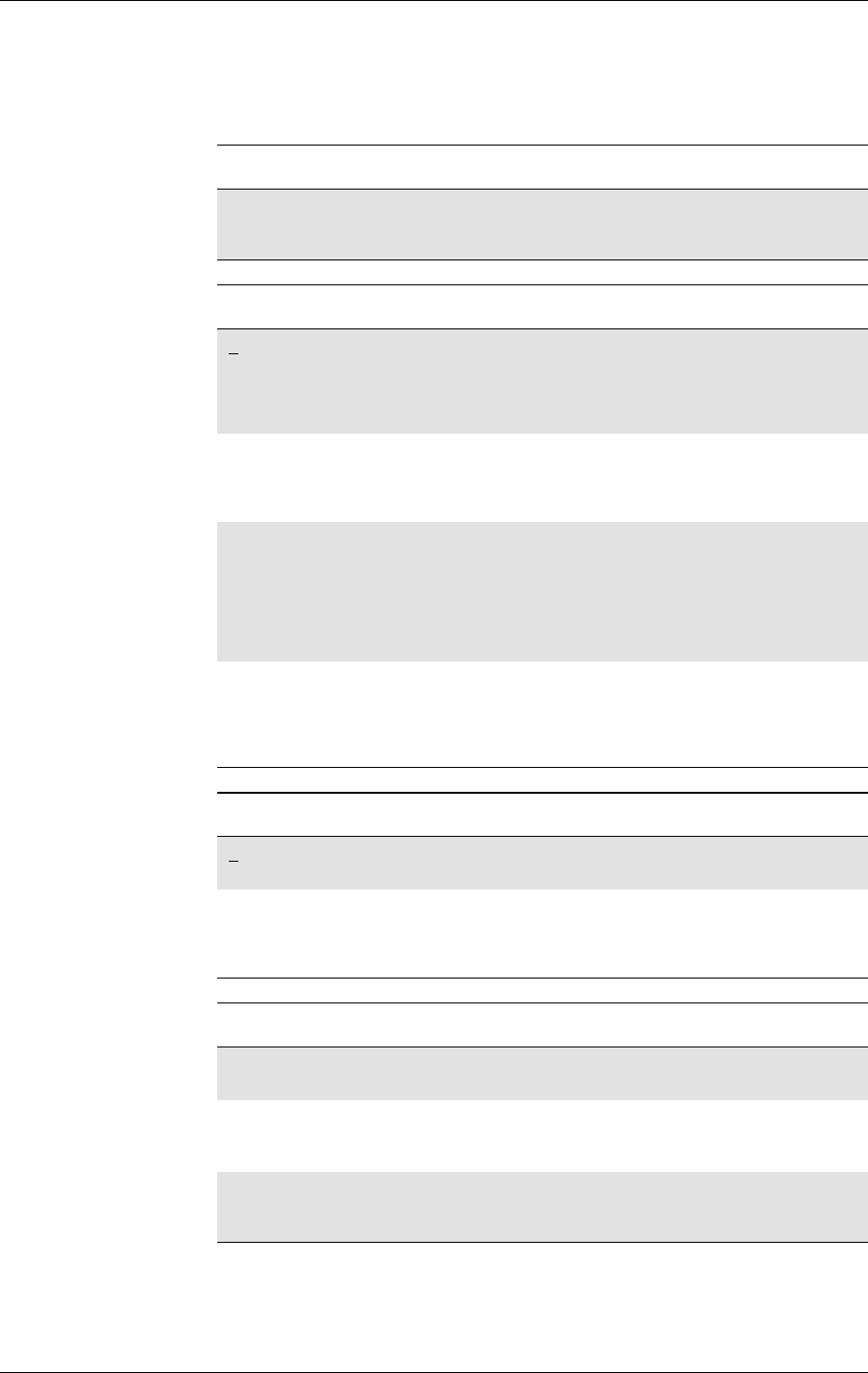
GM47/GM48 INTEGRATOR’S MANUAL
254 LZT 123 7263 R1A
If the command fails and the error is related to mobile equipment or
network, the final result code CMS ERROR: <err> is returned.
<mode> Description
3Forward unsolicited result codes directly to the TE. TA-TE
link specific inband technique used to embed result
codes and data when TA is in on-line data mode
<mt> Description
0No SMS-DELIVER indications are routed to the TE.
No class, Class 0, class 1 and class 3 use <mem3> as
preferred storage. Class 2 messages shall be stored in the
SIM. If it this is not possible then the MS shall send an error
message accordingly to GSM 03.38
1SMS-DELIVER is stored into ME/TA and the indication of the
memory location is routed to the TE using unsolicited result
code:
+CMTI: <mem>,<index>
2Class 0, class 1, and class 3 SMS-DELIVERs are routed
directlytotheTEusingtheunsolicitedresultcodebutnot
stored in ME/TA:
+CMT:[<alpha >], <length><CR><LF><pdu> (PDU mode
enabled)
Class 2 data coding scheme result in indication as defined
in <mt>=1
3Class 3 SMS-DELIVERs are routed directly to TE using
unsolicited result codes +CMT: <length><CR><LF><pdu>.
Class 3 SMS-DELIVER is not stored in ME/TA. Messages of
other data coding schemes result in indication as defined
in <mt>=1
<bm> Description
0Store message to “BM” (or some manufacturer specific
memory). No CBM indications are routed to the TE
2New CBMs are routed directly to the TE using unsolicited
result code:
+CBM: <length><CR><LF><pdu> (PDU mode enabled).
New CBMs are not stored in CBM memory
<ds> Description
0No SMS-STATUS-REPORTs are routed to the TE. SMS-STATUS-
REPORT is stored in ME/TA
1SMS-STATUS-REPORTs are routed to the TE using unsolicited
resultcode:+CDS:<length><CR><LF><pdu>(PDU
mode enabled). SMS-STATUS-REPORT is not stored in ME/TA
2SMS-STATUS-REPORTs are routed to the TE using unsolicited
resultcode:+CDSI:<mem><index>(PDUmodeenabled).
SMS-STATUS-REPORT is stored in ME/TA
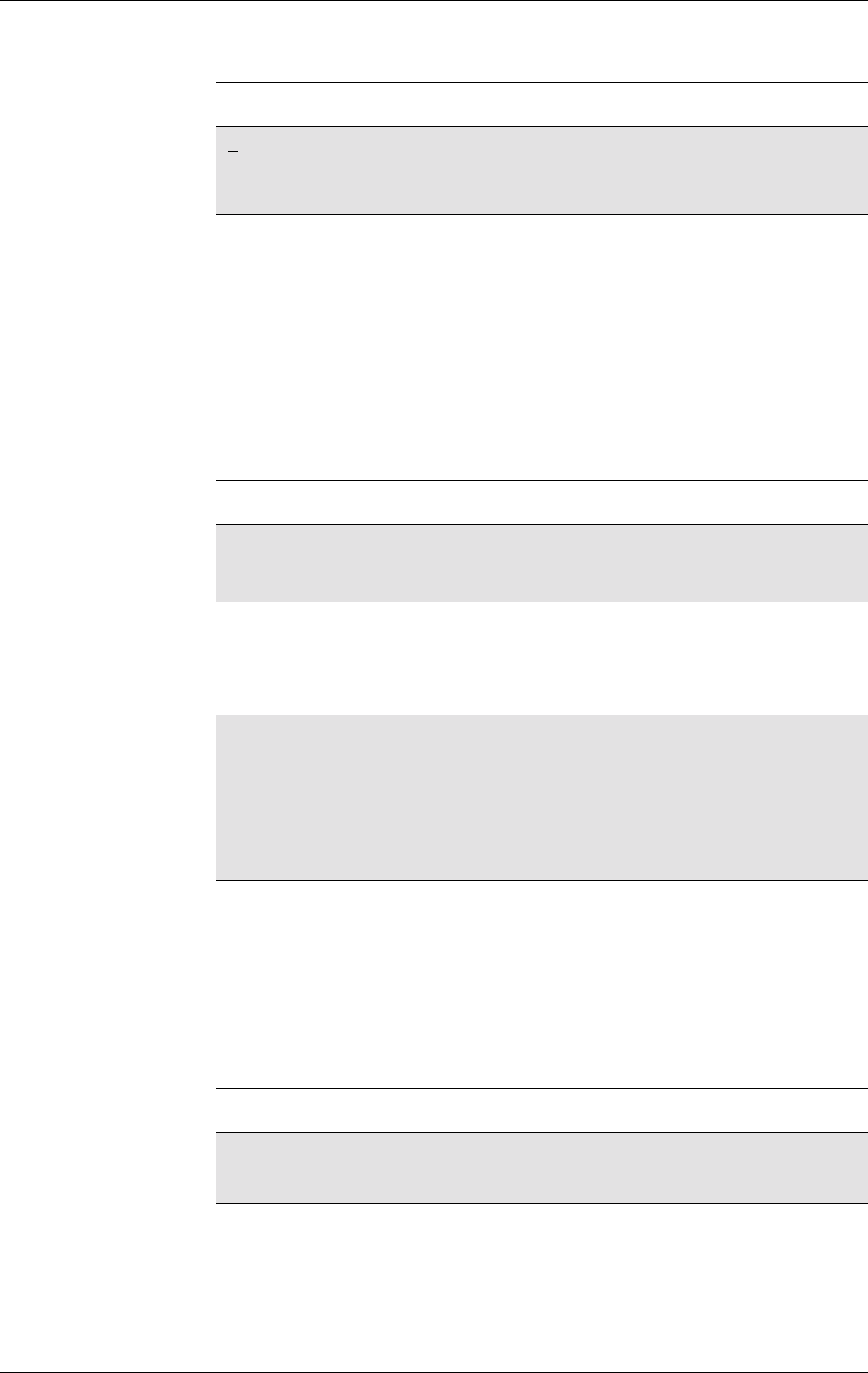
16. SHORT MESSAGE SERVICES - POINT TO POINT
255
LZT 123 7263 R1A
Unsolicited Result codes:
+CMT: <length><CR><LF><pdu>
+CMTI: <mem>,<index>
+CBM: <length><CR><LF><pdu>
+CDS: <length><CR><LF><pdu>
+CDSI: <mem><index>
Text Mode
Selects the procedure for the way in which new messages received from
the network, are indicated to the TE when it is active, e.g. DTR signal
is ON. If TE is inactive (DTR signal is OFF), message receiving is
carried out as specified in GSM 03.38 (3G TS 23.038).
If the command fails and the error is related to mobile equipment or
network, the final result code CMS ERROR: <err> is returned.
<bfr> Description
0TA buffer of unsolicited result codes defined within this
command is flushed to the TE when <mode> 1..2 is
entered (OK response shall be given before flushing the
codes). Not supported
Description Command Possible Responses
Set new message
indication to TE AT+CNMI=[<mode>
[,<mt>[,<bm>[,<ds>[,
<bfr>]]]]]
• +CMS ERROR: <err>
•OK
•ERROR
Shows the current
setting AT+CNMI? •+CNMI:
<mode>,<mt>,<bm>,<ds>,
<bfr>
•OK
•ERROR
Show if the
command is
supported
AT+CNMI=? •+CNMI:
(list of supported <mode>s),
(list of supported <mt>s),
(list of supported <bm>s),
(list of supported <ds>s),
(list of supported <bfr>s)
•OK
•ERROR
<mode> Description
3Forward unsolicited result codes directly to the TE. TA-TE
link specific inband technique used to embed result
codes and data when TA is in on-line data mode
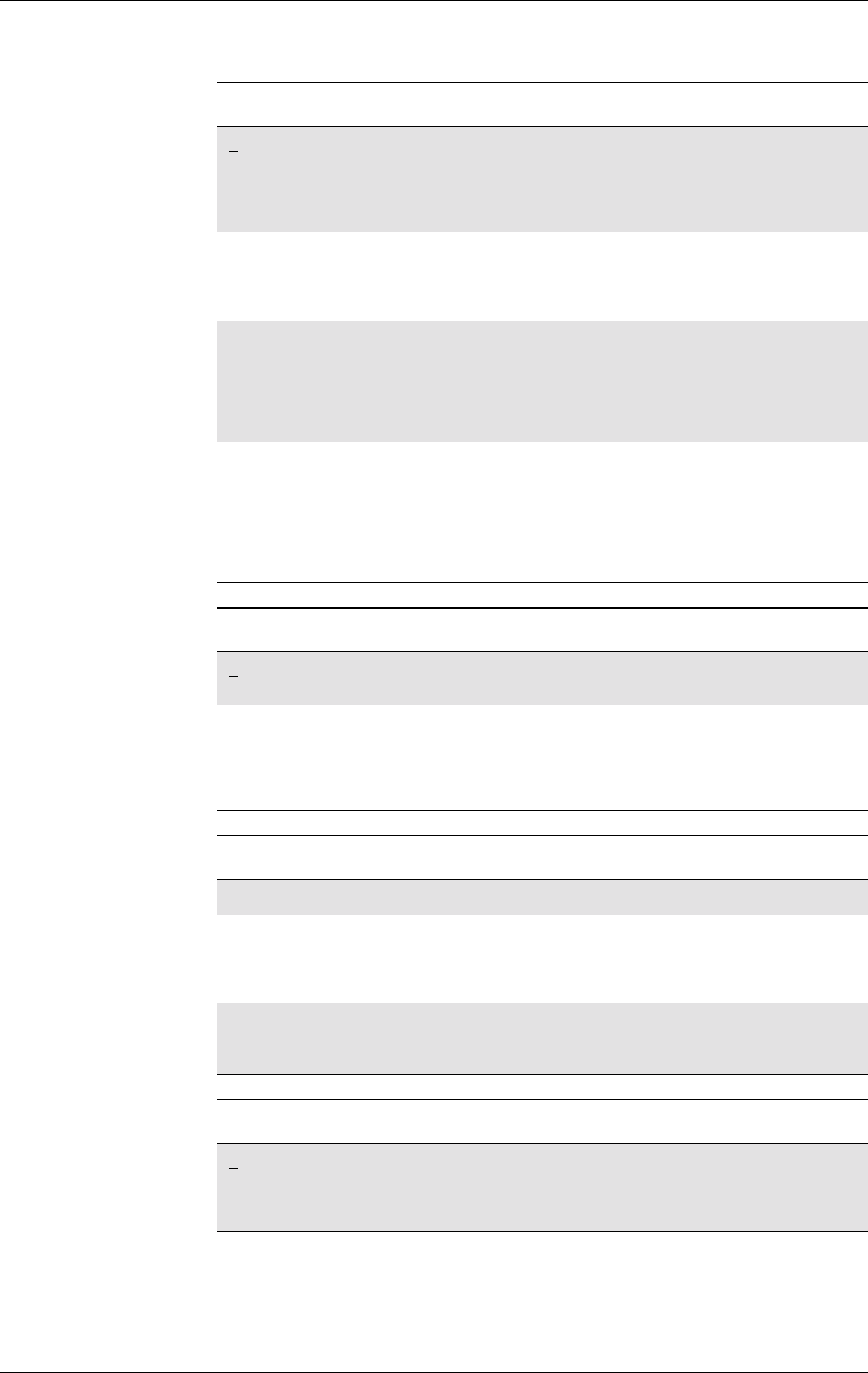
GM47/GM48 INTEGRATOR’S MANUAL
256 LZT 123 7263 R1A
<mt> Description
0No SMS-DELIVER indications are routed to the TE.
No class, Class 0, class 1 and class 3 use <mem3> as
preferred storage. Class 2 messages shall be stored in the
SIM. If it this is not possible then the MS shall send an error
message accordingly to GSM 03.38
1SMS-DELIVER is stored into ME/TA and the indication of the
memory location is routed to the TE using unsolicited result
code:
+CMTI: <mem>,<index>
2Class 0, class 1, and class 3 SMS-DELIVERs are routed
directlytotheTEusingtheunsolicitedresultcode:
+CMT:<oa>, [<alpha>, <scts> [ ,<tooa>,<fo>,<pid>,<dcs>,
<sca>,<tosca>,<length>]<CR><LF><data> (text mode
enabled). About parameters in italics, refer to the show
text mode command, +CSDH
3Class 3 SMS-DELIVERs are routed directly to TE using
unsolicited result codes +CMT:<oa>, [<alpha>, <scts> [
,<tooa>,<fo>,<pid>,<dcs>,<sca>,<tosca>,<length>]<CR>
<LF><data> (Text Mode enabled). About parameters in
italics, refer to the show text mode command, +CSDH.
Messages of other data coding schemes result in
indication as defined in <mt>=1
<bm> Description
0Store message to “BM” (or some manufacturer specific
memory). No CBM indications are routed to the TE
2New CBMs are routed directly to the TE using unsolicited
result code:
+CBM:
<sn>,<mid>,<dcs>,<page>,<pages><CR><LF><data>
(Text mode enabled)
<ds> Description
0No SMS-STATUS-REPORTs are routed to the TE
1SMS-STATUS-REPORTs are routed to the TE using unsolicited
result code: : +CDS:
<fo>,<mr>,[<ra>],[<tora>],<scts>,<dt>,<st> (Text mode
enabled). SMS-STATUS-REPORT is not stored in ME/TA
2SMS-STATUS-REPORTs are routed to the TE using unsolicited
result code: +CDSI: < mem><index> (Text mode enabled).
SMS-STATUS-REPORT is stored in ME/TA
<bfr> Description
0TA buffer of unsolicited result codes defined within this
command is flushed to the TE when <mode> 1...2 is
entered (OK response shall be given before flushing the
codes). Not supported
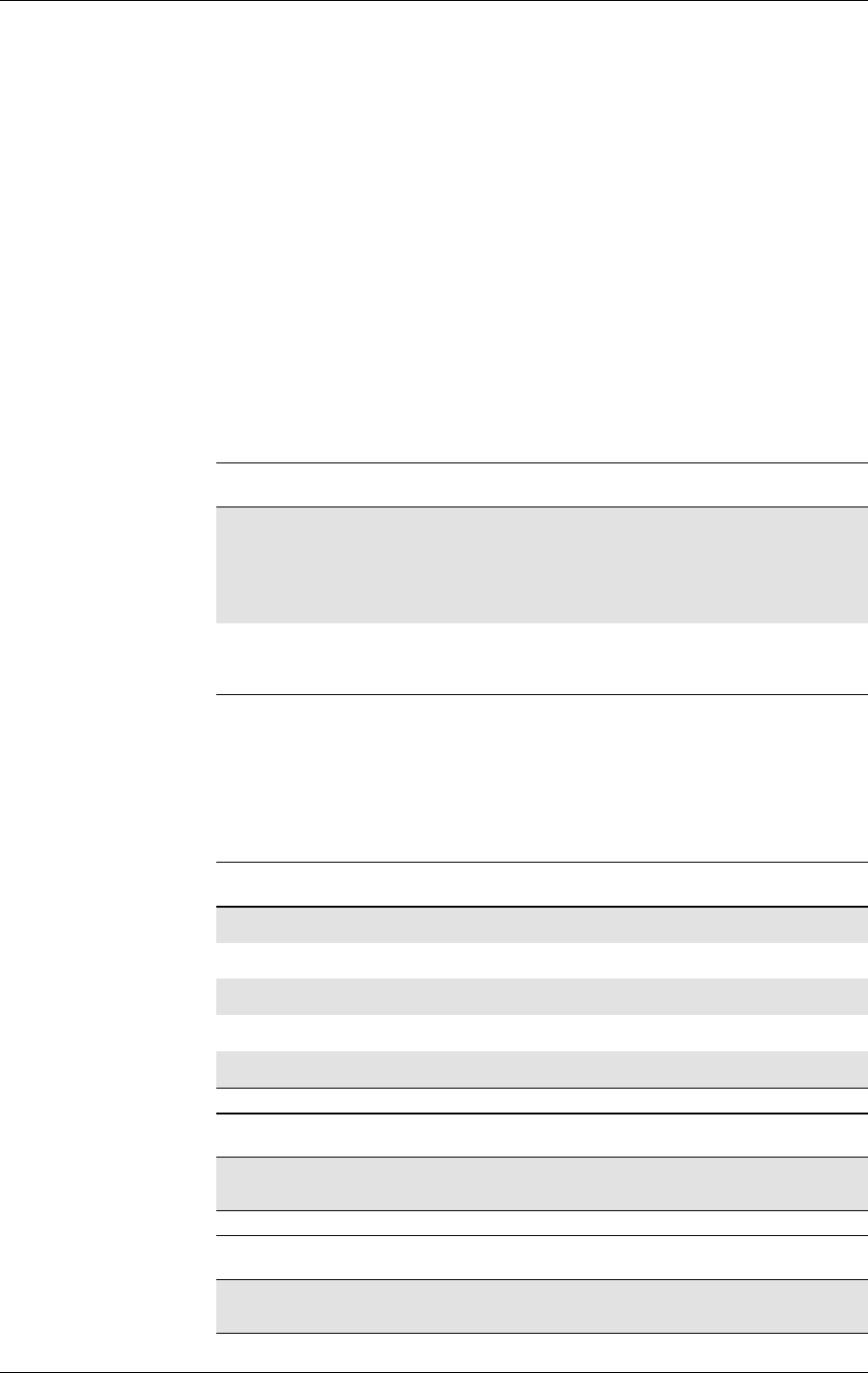
16. SHORT MESSAGE SERVICES - POINT TO POINT
257
LZT 123 7263 R1A
Unsolicited Result codes:
+CMT:<oa>, [<alpha>, <scts>
[,<tooa>,<fo>,<pid>,<dcs>,<sca>,<tosca>,<length>]<CR><LF>
<data> (Text Mode enabled). Refer to the show text mode command,
+CSDH for information on the parameters in italics.
+CMTI: <mem>,<index>
+CBM: <sn>,<mid>,<dcs>,<page>,<pages><CR><LF><data>
+CDS: <fo>,<mr>,[<ra>],[<tora>],<scts>,<dt>,<st>
+CDSI: <mem><index>
16.12 AT+CMGR Read Message
PDU Mode
Returns message with location value <index> from preferred message
storage <mem1> to the TE. Status of the message and entire message
data unit <pdu> is returned. If status of the message is ‘received
unread’, status in the storage changes to ‘received read’. If reading fails,
final result code +CMS ERROR: <err> is returned.
Description Command Possible Responses
Read
message AT+CMGR=
<index> •+CMGR: <stat>,[<alpha>],<length>]
<CR><LF><pdu>
•+CMSERROR:<err>
•OK
• ERROR
Show if the
command is
supported
AT+CMGR=? •OK
• ERROR
<stat> Description
0Received unread message (i.e. new message)
1Received read message
2Stored unsent message (only applicable to SMs)
3Stored sent message (only applicable to SMs)
16 Template message. Not supported
<index> Description
Integer type Value in the range of location numbers supported by the
associated memory
<alpha> Description
String type Manufacturing specific. Should be left empty but not
omitted
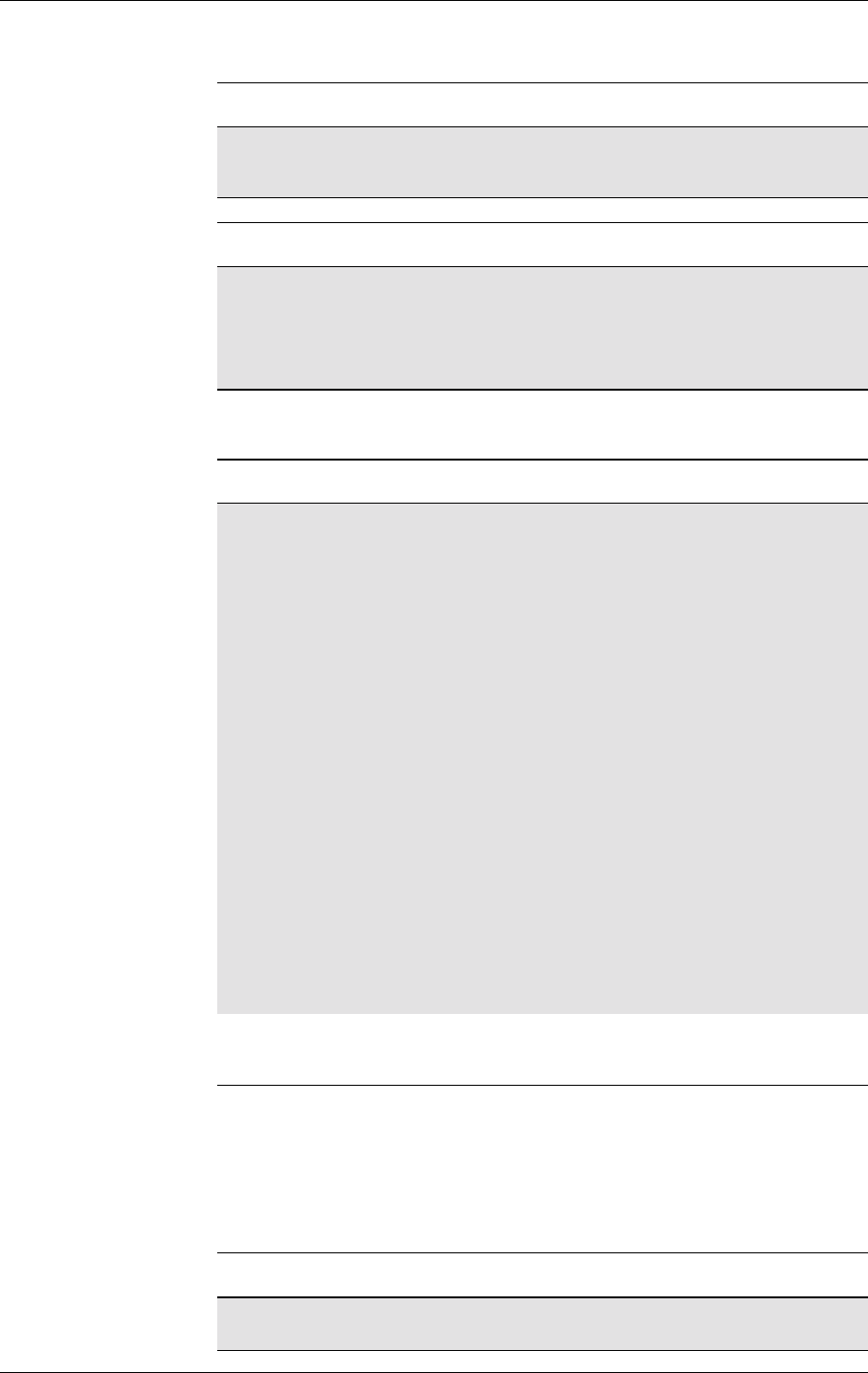
GM47/GM48 INTEGRATOR’S MANUAL
258 LZT 123 7263 R1A
Text Mode
Returns messages with location index <index> from message storage
<mem1> to the TE. About text mode parameters in Italics, refer
command Show Text Mode Parameters (+CSDH), If the status of the
message is ‘received unread’, status in the storage changes to ‘received
read’. If listing fails final result code +CMS ERROR: <err> is returned.
<length> Description
Integer type Value indicating in PDU mode (+CMGF=0), the length of
the actual TP data unit in octets (i.e. the RP layer SMSC
address octets are not counted in the length)
<pdu> Description
InthecaseofSMS:GSM04.11SCaddressfollowedby
GSM 03.40 TPDU in hexadecimal format: ME/TA converts
each octet of TP data unit into two IRA character long
hexadecimal number (e.g. octet with integer value 42 is
presented to TE as two characters 2A (IRA 50 and 65))
In the case of CBS: GSM 03.41 TPDU in hexadecimal format
Description Command Possible Responses
Read
message AT+CMGR=
<index> •if text mode (+CMGF=1), command
successful and SMS-DELIVER:+CMGR:
<stat>,<oa>,[<alpha>],<scts>,[<tooa>,
<fo>,<pid>,<dcs>,<sca>,<tosca>,
<length>]<CR><LF><data>
•if text mode (+CMGF=1), command
successful and SMS-SUBMIT:+CMGR:
<stat>,<da>,[<alpha>],[<toda>,<fo>,
<pid>,<dcs>,[<vp>],<sca>,<tosca>,
<length>]<CR><LF><data>
•if text mode (+CMGF=1), command
successful and SMS-STATUS-
REPORT:+CMGR:
<stat>,<fo>,<mr>,[<ra>],[<tora>],<scts>
,<dt>,<st>
•if text mode (+CMGF=1), command
successful and SMS-
COMMAND:+CMGR:
<stat>,<fo>,<ct>[,<pid>,[<mn>],[<da>],
[<toda>],<length><CR><LF><cdata>]
•if text mode (+CMGF=1), command
successful and CBM storage:+CMGR:
<stat>,<sn>,<mid>,<dcs>,<page>,
<pages><CR><LF><data>
•+CMSERROR:<err>
•OK
• ERROR
Show if the
command is
supported
AT+CMGR=? •OK
• ERROR
<index> Description
Integer type Valueintherangeoflocationnumberssupportedby
<mem1>
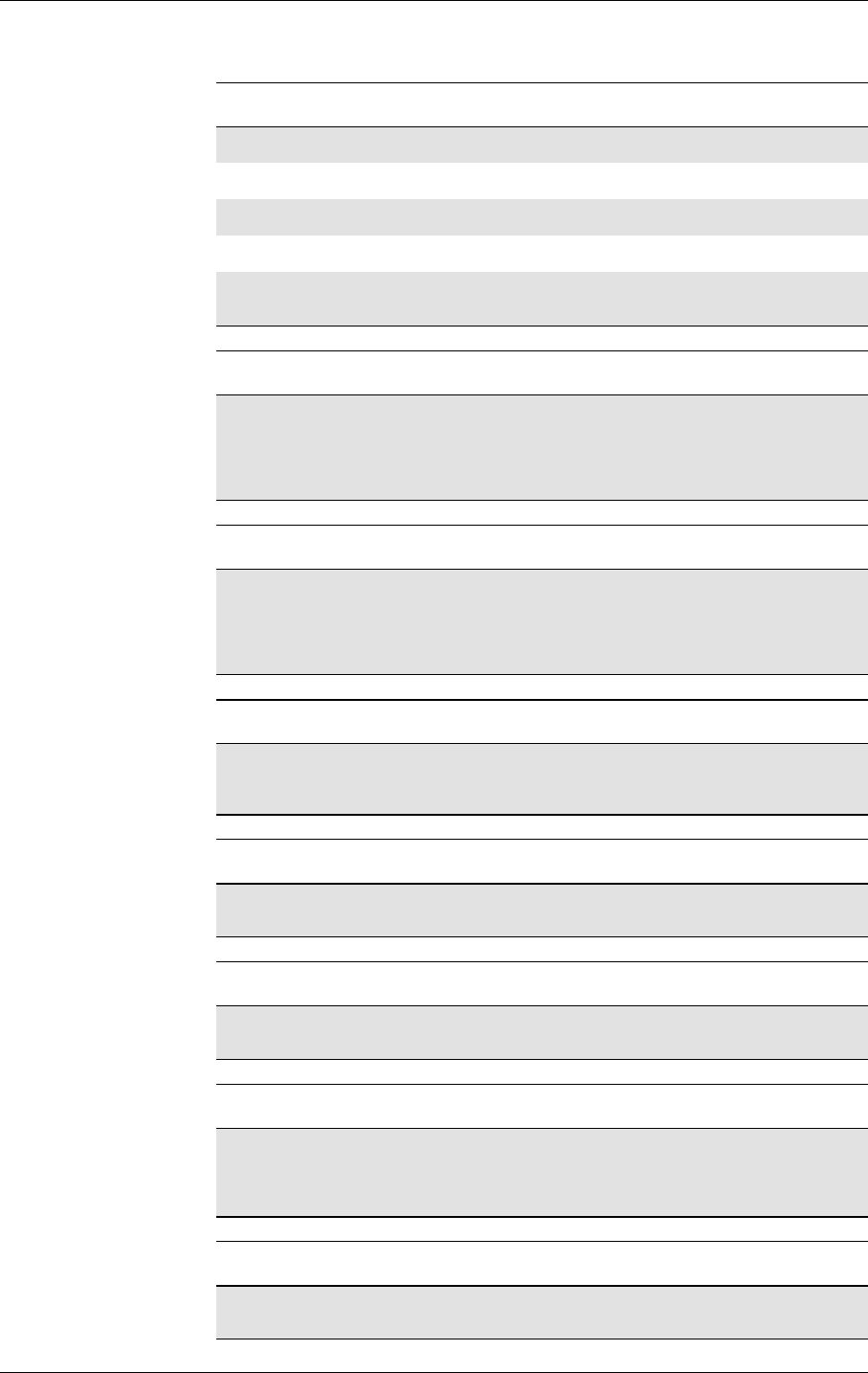
16. SHORT MESSAGE SERVICES - POINT TO POINT
259
LZT 123 7263 R1A
<stat> Description
0Received unread message (new message)
1Received read message
2Stored unsent message (only applicable to SMs)
3Stored sent message (only applicable to SMs)
4All messages (only applicable to +CMGL command). Not
supported
<oa> Description
String type GSM 03.40 TP-Originating-Address Value in string format;
BCD numbers (or GSM default alphabet characters) are
converted to characters of the currently selected TE
character(refercommand+CSCS).Typeofaddressgiven
by <tooa>
<da> Description
String type GSM 03.40 TP-Destination-Address Value in string format;
BCD numbers (or GSM default alphabet characters) are
converted to characters of the currently selected TE
character(refercommand+CSCS).Typeofaddressgiven
by <toda>
<toda> Description
String type GSM 04.11 TP-Destination- Address Type-of-Address octet
in integer format (when first character of <da> is +(IRA 43)
default is 145, otherwise default is 129
<tooa> Description
String type GSM 04.11 TP-Originating-Address Type-of-Address octet
in integer format (default refer <toda>)
<tora> Description
String type GSM 04.11 TP-Recipient-Address Type-of-Address octet in
integerformat(defaultrefer<toda>)
<alpha> Description
String type Manufacturing specific. Should be left empty but not
omitted, i.e. commas shall mark the place were it should
be. Used character set should be the one selected with
command Select TE Character Set +CSCS
<scts> Description
String type GSM 03.40 TP-Service-Centre-Time-Stamp in time-string
format (refer <dt>)
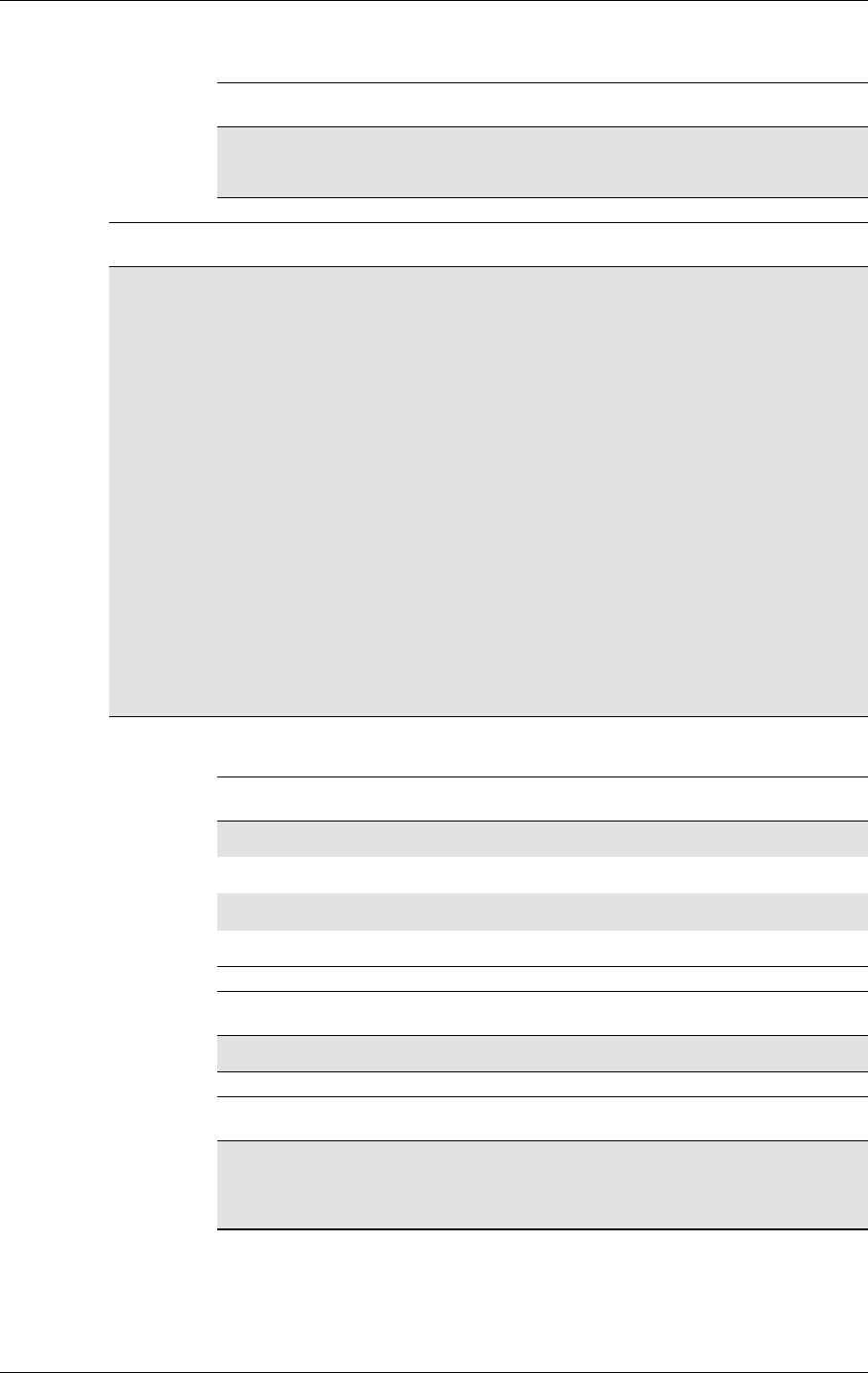
GM47/GM48 INTEGRATOR’S MANUAL
260 LZT 123 7263 R1A
<length> Description
Integer type Value indicating in PDU mode (+CMGF=0), the length of
the actual TP data unit in octets (i.e. the RP layer SMSC
address octets are not counted in the length)
<data>
The entered text should be formatted as follows:
if<dcs>(setwith+CSMP)indicatesthatGSM03.38defaultalphabetisusedand
<fo> indicates that GSM 03.40 TP-User-Data-Header-Indication is not set:
if TE character set other than "HEX" (refer command Select TE Character Set
+CSCS in TS 07.07): ME/TA converts the entered text into GSM alphabet
according to rules of Annex A; backspace can be used to delete last
character and carriage returns can be used (previously mentioned four
character sequence shall be sent to the TE after every carriage return
entered by the user);
if TE character set is "HEX": the entered text should consist of two IRA
character long hexadecimal numbers which ME/TA converts to 7-bit
characters of GSM alphabet (e.g. 17 (IRA 49 and 55) will be converted to
character P (GSM 23));
if <dcs> indicates that 8-bit or UCS2 data coding scheme is used or <fo> indicates
that GSM 03.40 TP-User-Data-Header-Indication is set: the entered text should
consist of two IRA character long hexadecimal numbers which ME/TA converts
into 8-bit octet (e.g. two characters 2A (IRA 50 and 65) will be converted to an
octet with integer value 42);
sending can be cancelled by giving <ESC> character (IRA 27)
<ctrl-Z> (IRA 26) must be used to indicate the ending of the message body
<fo> Description
0First octet of SMS-DELIVER in integer format
1First octet of SMS_SUBMIT in integer format
2First octet of SMS-STATUS-REPORT in integer format
3First octet of SMS-COMMAND in integer format
<mr> Description
Integer GSM 03.40 TP-Message_Reference
<ra> Description
String type GSM 03.40 TP-Recipient-Address-Value field. BCD (or GSM
default alphabet) are converted to characters of the
currently selected TE character set (refef command
+CSCS. Type of address given by <tosca>
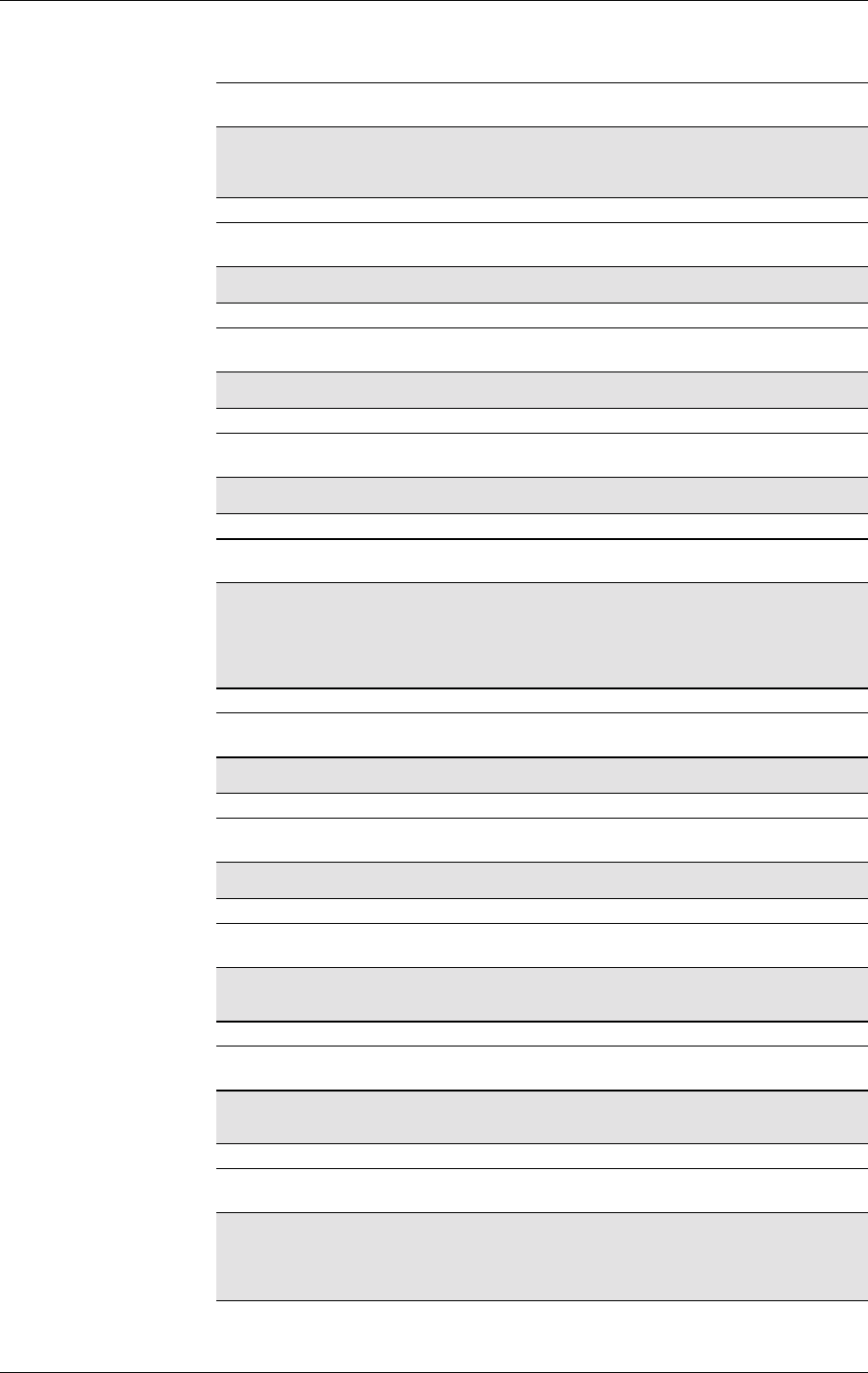
16. SHORT MESSAGE SERVICES - POINT TO POINT
261
LZT 123 7263 R1A
<dt> Description
String type GSM 03.40 TP-Discharge-Time in string format "yy/mm/
dd,hh:mm:ss±zz where characters indicate year, month,
day, hour,minutes, seconds and time zone
<st> Description
Integer GSM 03.40 TP-status
<ct> Description
Integer GSM 03.40 TP--command-type (default 0)
<sn> Description
Integer GSM 03.41 CBM serial number
<mid> Description
String type All different possible combinations of CBM message
identifiers (refer <mid>) (default is empty string);
e.g. “0,1,5-7”
<mid> GSM 03.41 CBM message identifier in integer format
<page> Description
Integer format GSM 03.41 CBM page parameter bits 4-7 in integer format
<pages> Description
Integer type GSM 03.41 CBM page parameter bits 0-3 in integer format
<pid> Description
0 - 255 Protocol Identifier in integer format. Default value = 0,
according to 07.05 section 9.2.3.9
<dcs> Description
0 - 255 Data coding scheme. See GSM 03.48. UCS2 and
compressed text not supported
<sca> Description
String type GSM 04.11 RP SC address Address-Value field in string
format; BCD numbers (or GSM default alphabet
characters) are converted to characters of the currently
selected TE character set
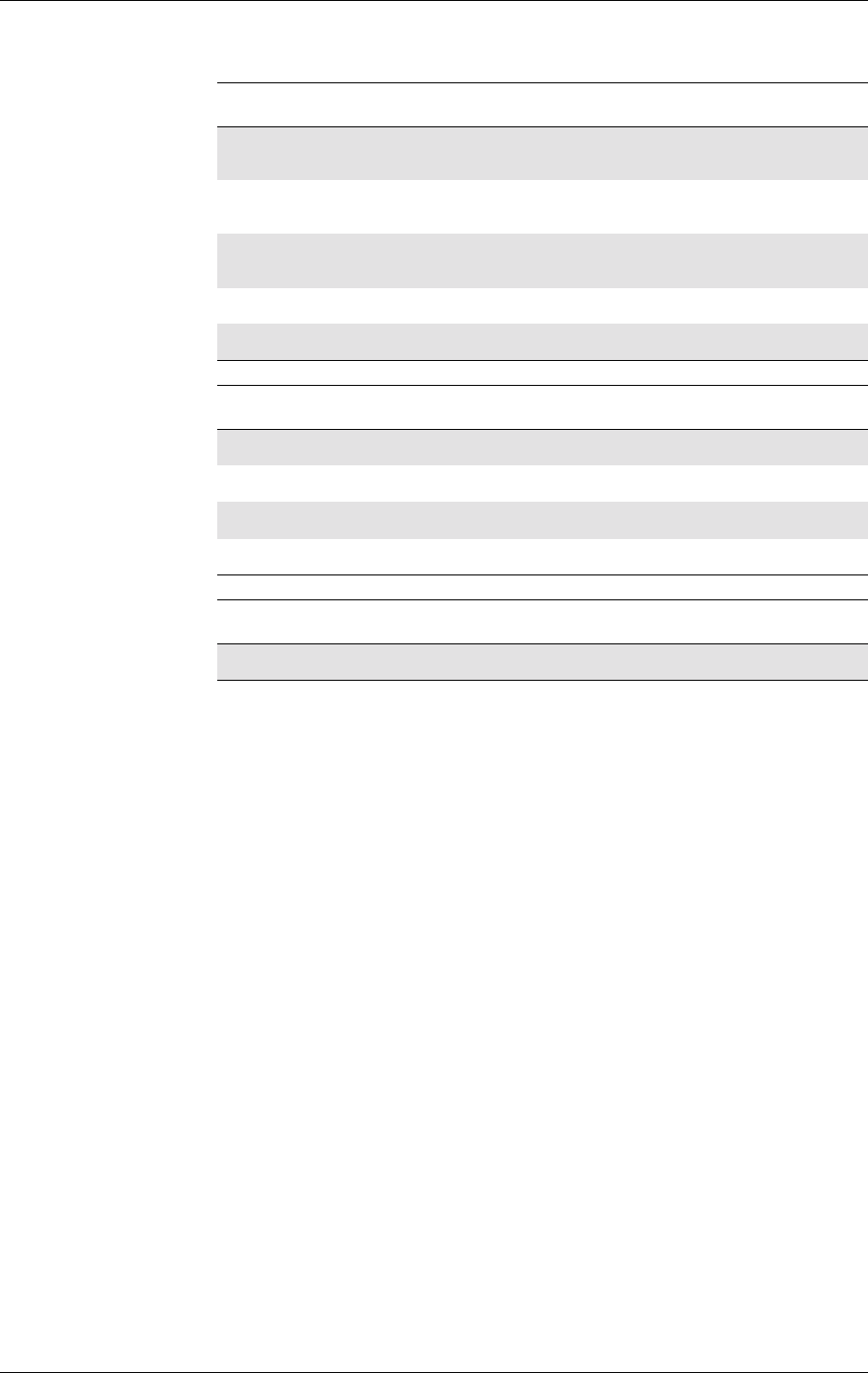
GM47/GM48 INTEGRATOR’S MANUAL
262 LZT 123 7263 R1A
<tosca> Description
Integer type GSM 04.11 RP SC address type-of-address octet in integer
format
129 ISDN/telephony numbering plan, national/international
unknown. Default if no “+” in sca
145 ISDN/telephony numbering plan, international number.
Default if “+” in sca
161 ISDN/telephony numbering plan, national number
128 - 255 Other values refer to GSM 04.08 section 10.5.4.7
<vp> Description
0 - 143 (TP-VP+1) x 5 minutes (i.e. 5 minute intervals up to 12 hous)
144 - 167 12 hours + ((TP_VP-143) x 30 minutes)
168 - 196 (TP-VP-166) x 1 day
197 - 255 (TP-VP-192) x 1 week
<mn> Description
Integer type GSM 03.40 TP-message-number
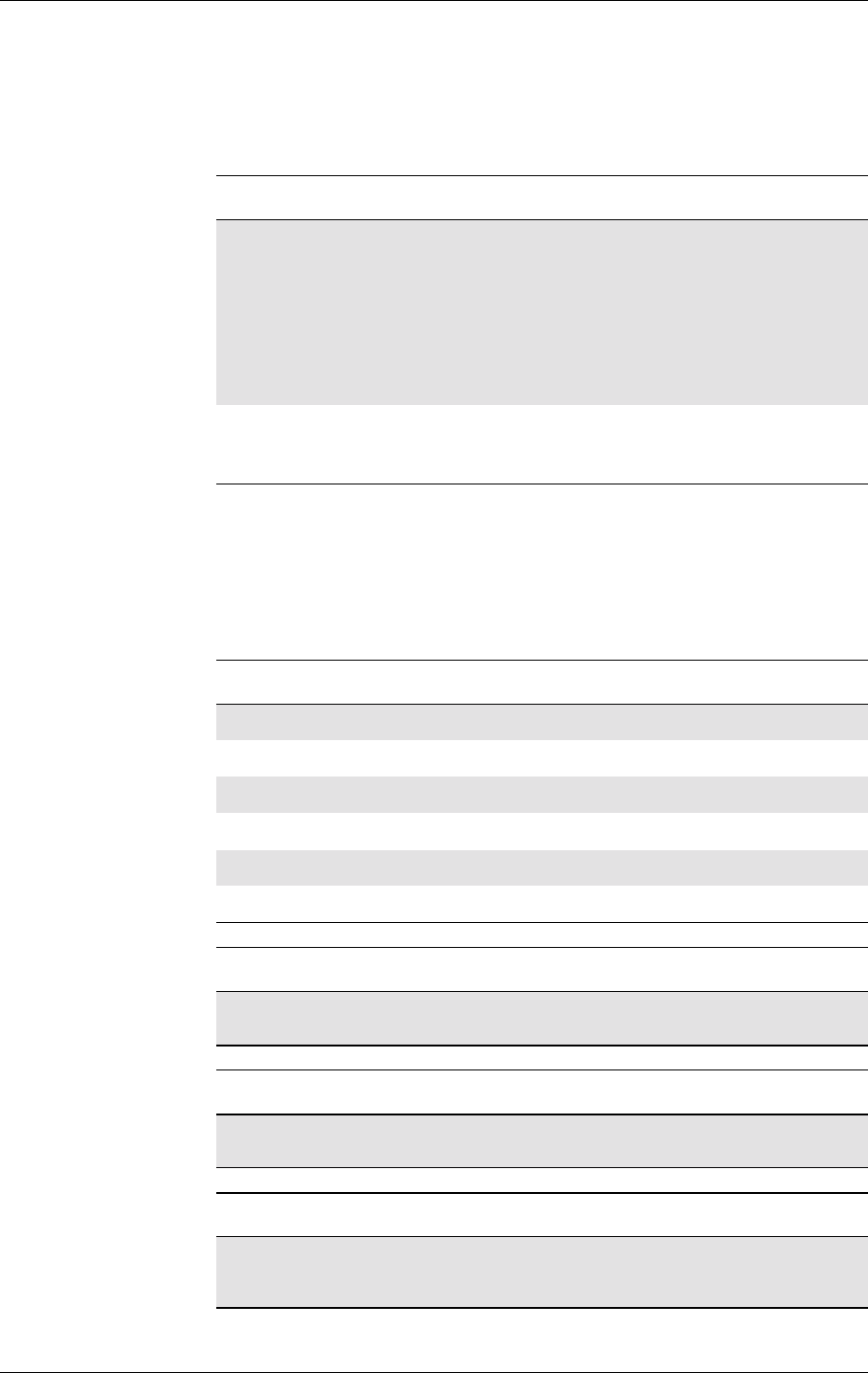
16. SHORT MESSAGE SERVICES - POINT TO POINT
263
LZT 123 7263 R1A
16.13 AT+CMGL List Message
PDU Mode
Note! Returns messages with status value <stat> from preferred message
storage <mem1> to the TE. Entire data units <pdu> are returned. If
status of the message is ‘received unread’, status in the storage changes
to ‘received read’. If listing fails, final result code +CMS ERROR:
<err> is returned.
Description Command Possible Responses
List message AT+CMGL
[=<stat>] •+CMGL:
<index>,<stat>,[<alpha>],<length>
<CR><LF><pdu>[<CR><LF>
+CMGL:
<index>,<stat>,[<alpha>],<length><CR>
<LF><pdu>[…]]
• +CMS ERROR: <err>
•OK
•ERROR
Show if the
command is
supported
AT+CMGL=? • +CMGL: (list of supported <stat>s)
•OK
•ERROR
<stat> Description
0Received unread message (i.e. new message)
1Received read message
2Stored unsent message (only applicable to SMs)
3Stored sent message (only applicable to SMs)
4All messages (only applicable to +CMGL command)
16 Template message. Not supported
<index> Description
Integer type Value in the range of location numbers supported by the
associated memory
<alpha> Description
String type Manufacturing specific. Should be left empty but not
omitted
<length> Description
Integer type Value indicating in PDU mode (+CMGF=0), the length of
the actual TP data unit in octets (i.e. the RP layer SMSC
address octets are not counted in the length)

GM47/GM48 INTEGRATOR’S MANUAL
264 LZT 123 7263 R1A
Text Mode
Returns messages with status value <stat> from message storage
<mem1> to the TE. About text mode parameters in Italics, refer
command Show Text Mode Parameters (+CSDH). If the status, of the
message is ‘received unread’, status in the storage changes to ‘received
read’. If listing fails final result code +CMS ERROR: <err> is returned.
<pdu> Description
InthecaseofSMS:GSM04.11SCaddressfollowedby
GSM 03.40 TPDU in hexadecimal format: ME/TA converts
each octet of TP data unit into two IRA character long
hexadecimal number (e.g. octet with integer value 42 is
presented to TE as two characters 2A (IRA 50 and 65))
In the case of CBS: GSM 03.41 TPDU in hexadecimal format
Description Command Possible Responses
List message AT+CMGL
[=<stat>] •if text mode (+CMGF=1), command
successful and SMS-SUBMITs and/or
SMS-DELIVERs:
+CMGL: <index1>,<stat>,<oa/da>,
[<alpha>],[<scts>][,<tooa/
toda>,<length>]<CR><LF><data>[<CR>
<LF>
+CMGL: <index2>,<stat>,<oa/da>,
[<alpha>],[<scts>][,<tooa/
toda>,<length>]<CR><LF><data>[…]]
•if text mode (+CMGF=1), command
successful and SMS-STATUS-REPORTs:
+CMGL:<index1>,<stat>,<fo>,<mr>,
[<ra>],[<tora>],<scts>,<dt>,<st>
[<CR><LF>
+CMGL:<index2>,<stat>,<fo>,<mr>,
[<ra>],[<tora>],<scts>,<dt>,<st>[…]]
•if text mode (+CMGF=1), command
successful and SMS-COMMANDs:
+CMGL:<index>,<stat>,<fo>,<ct>
[<CR><LF>
+CMGL:<index>,<stat>,<fo>,<ct>[…]]
•if text mode (+CMGF=1), command
successful and CBM storage:
+CMGL:<index>,<stat>,<sn>,<mid>,
<page>,<pages>,<CR><LF><data>
[<CR><LF>
+CMGL:+CMGL:<index>,<stat>,<sn>,
<mid>,<page>,<pages><CR><LF>
<data>[…]]
•otherwise:
+CMS ERROR: <err>
•OK
• ERROR
Show if the
command is
supported
AT+CMGL=? • +CMGL: (list of supported <stat>s)
•OK
• ERROR
<index> Description
Integer type Valueintherangeoflocationnumberssupportedby
<mem1>
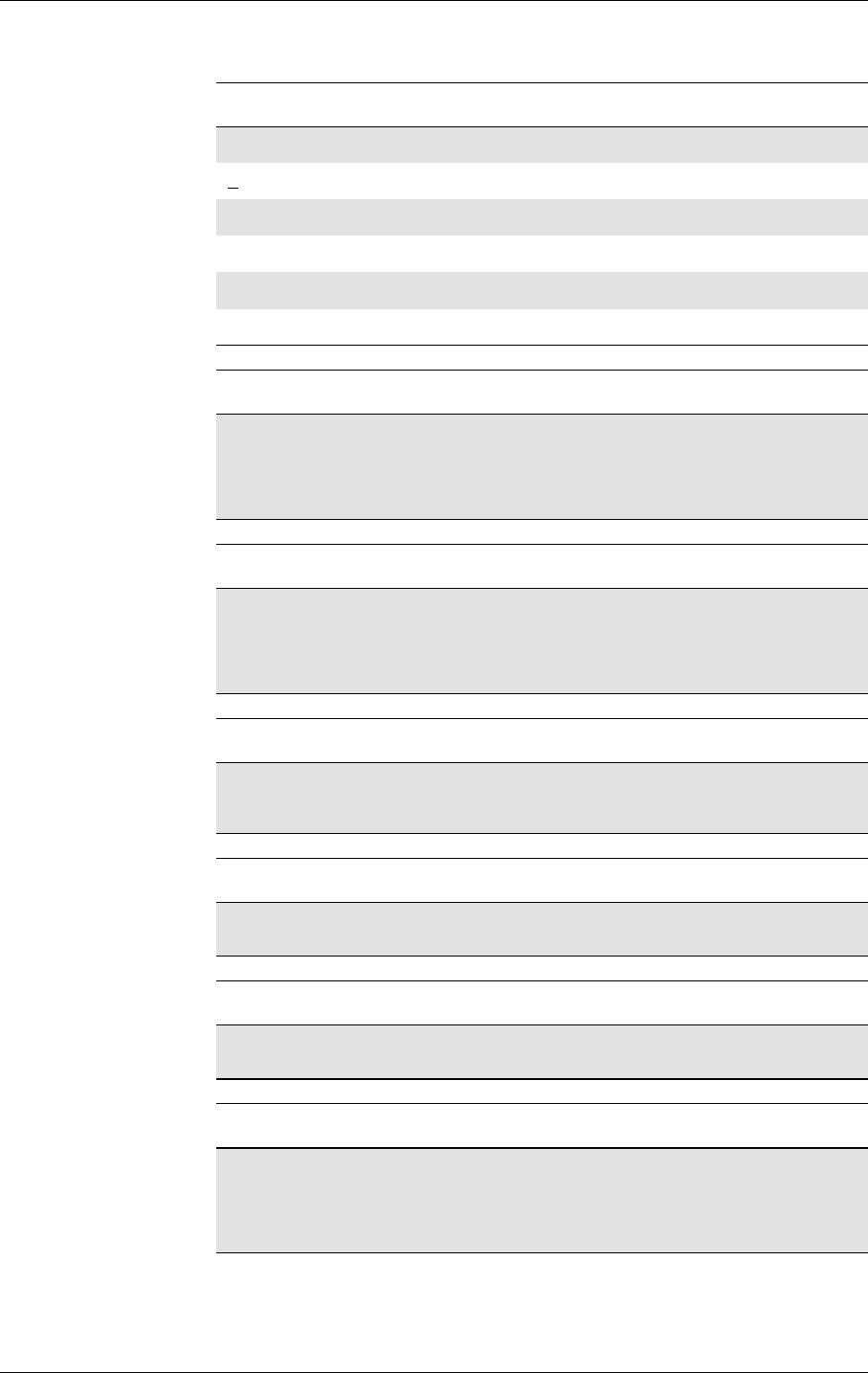
16. SHORT MESSAGE SERVICES - POINT TO POINT
265
LZT 123 7263 R1A
<stat> Description
Integer Indicates the status of messages in memory
0Received unread message (new message)
1Received read message
2Stored unsent message (only applicable to SMs)
3Stored sent message (only applicable to SMs)
4All messages (only applicable to +CMGL command)
<oa> Description
String type GSM 03.40 TP-Originating-Address Value in string format;
BCD numbers (or GSM default alphabet characters) are
converted to characters of the currently selected TE
character(refercommand+CSCS).Typeofaddressgiven
by <tooa>
<da> Description
String type GSM 03.40 TP-Destination-Address Value in string format;
BCD numbers (or GSM default alphabet characters) are
converted to characters of the currently selected TE
character(refercommand+CSCS).Typeofaddressgiven
by <toda>
<toda> Description
String type GSM 04.11 TP-Destination- Address Type-of-Address octet
in integer format (when first character of <da> is +(IRA 43)
default is 145, otherwise default is 129
<tooa> Description
String type GSM 04.11 TP-Originating-Address Type-of-Address octet
in integer format (default refer <toda>)
<tora> Description
String type GSM 04.11 TP-Recipient-Address Type-of-Address octet in
integerformat(defaultrefer<toda>)
<alpha> Description
String type Manufacturing specific. Should be left empty but not
omitted i.e.
commas shall mark the place were it should be. Used
character set should be the one selected with command
Select TE Character Set +CSCS
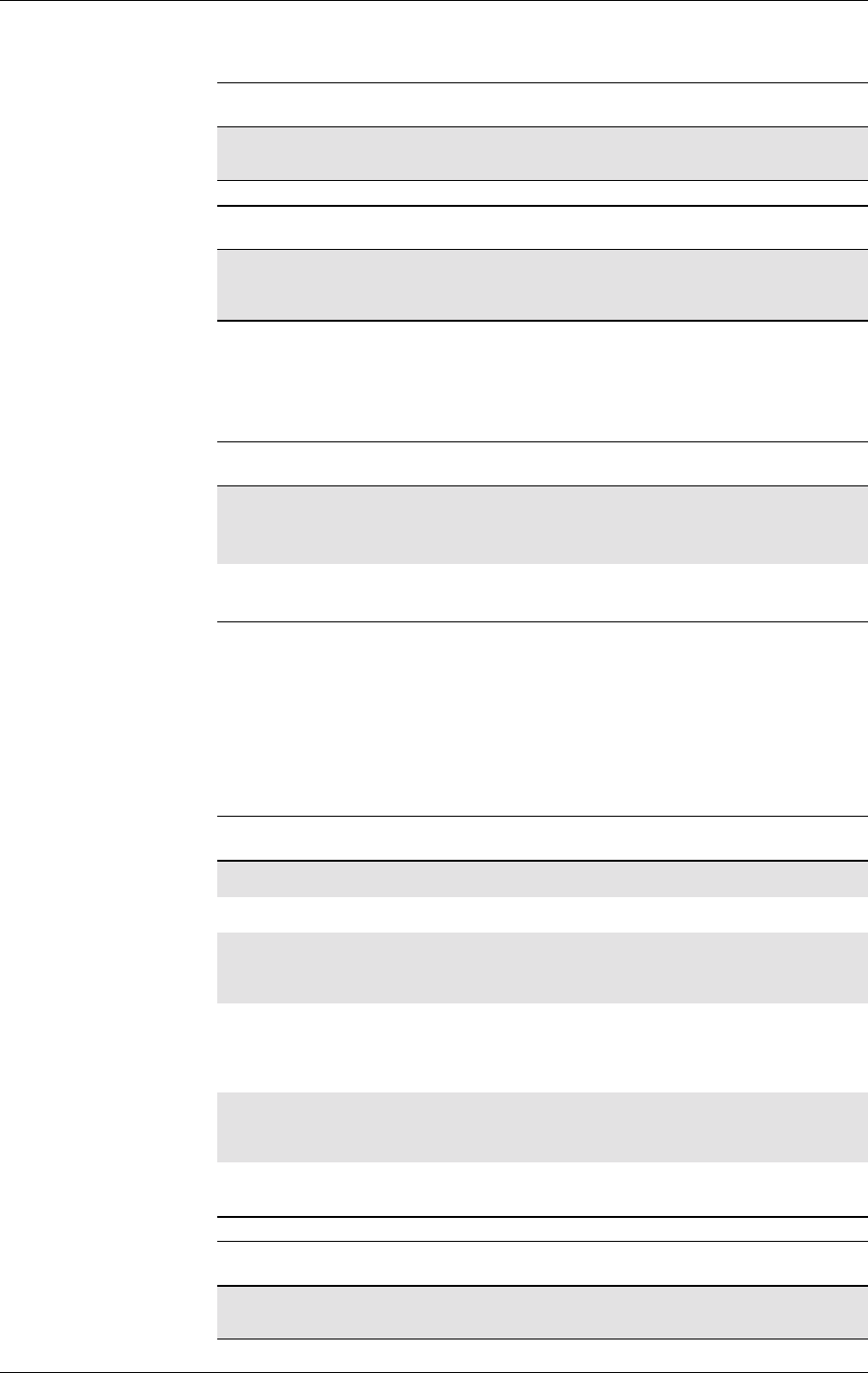
GM47/GM48 INTEGRATOR’S MANUAL
266 LZT 123 7263 R1A
16.14 AT+CMGD Delete Message
Common for both PDU and Text modes
Deletes message from preferred message storage <mem1> location
<index>. If <delflag> is present and not set to 0 then the ME will ignore
<index> and follow the rules for <delflag> shown below. If deleting
fails, final result code +CMS ERROR: <err> is returned. Test command
shows the valid memory locations and optionally the supported values
of <delflag>.
<scts> Description
String type GSM 03.40 TP-service-centre-time-stamp in time-string
format (refer <dt>)
<length> Description
Integer type Value indicating in PDU mode (+CMGF=0), the length of
the actual TP data unit in octets (i.e. the RP layer SMSC
address octets are not counted in the length)
Description Command Possible Responses
Delete message AT+CMGD=<index>
[,<delflag>] • +CMS ERROR: <err>
•OK
•ERROR
Show if the command
is supported AT+CMGD=? •OK
•ERROR
<index> Description
Integer type Indicates multiple messages delation request as follows
0Delete the message specified in <index>
1Delete all read messages from preferred message
storage, leaving unread messages and stored mobile
originated messages (whether sent or not) untouched
2Delete all read messages from preferred message storage
andsentmobileoriginatedmessages,leavingunread
messages and unsent mobile originated messages
untouched
3Delete all read messages from preferred message
storage, sent and unsent mobile originated messages
leaving unread messages untouched
4Delete all messages from preferred message storage
including unread messages
<index> Description
Integer type Valueintherangeoflocationnumberssupportedbythe
associated memory
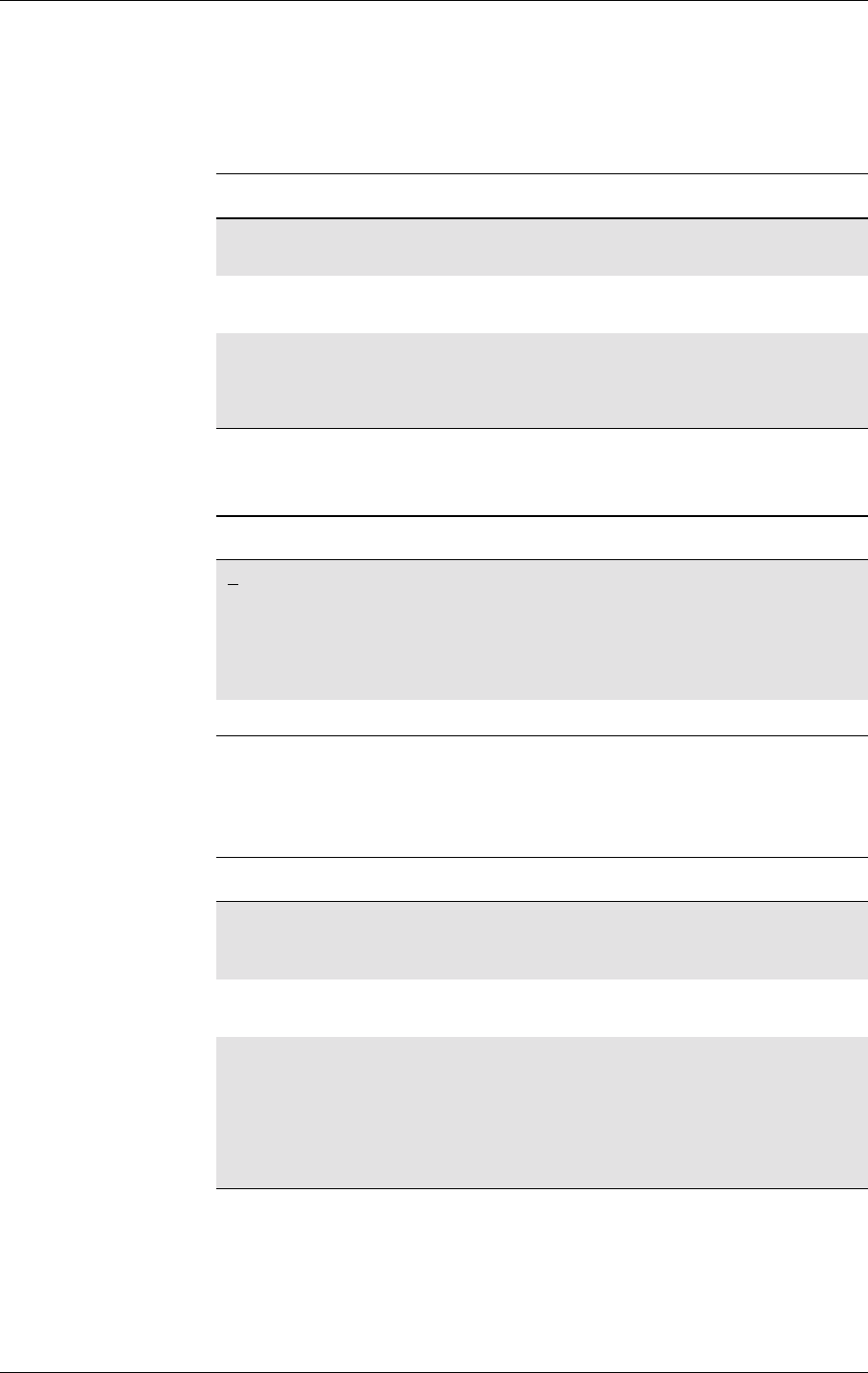
16. SHORT MESSAGE SERVICES - POINT TO POINT
267
LZT 123 7263 R1A
16.15 AT+CSDH Show Text Mode Parameters
Only Applicable to Text Mode
Controls whether detailed header information is shown in text mode
result codes.
16.16 AT+CSMP Set Text Mode Parameters
Only Applicable to Text Mode
Used to select values for additional parameters needed when SM is
sent to the network or placed in a storage when text format message
mode is selected. It is possible to set the validity period starting from
when the SM is received by the SMSC (<vp> is in range 0… 255). The
<pid> parameter identifies the higher protocol being used or indicates
Description Command Possible Responses
Set the show text
mode AT+CSDH=[<show>] •+CMEERROR:<err>
•OK
Display current settings AT+CSDH? •+CSDH:<show>
•+CMEERROR:<err>
Show if the command
is supported AT+CSDH=? • +CSDH: (list of
supported <show>s)
•OK
•+CMEERROR:<err>
<show> Description
0Do not show header values defined in commands
AT+CSCA and AT+CSMP (<sca>, <tosca>, <fo>, <vp>,
<pid> and <dcs>) nor <length>, <toda> or <tooa> in
+CMT,+CMGL,+CMGRresultcodesforSMS-DELIVERsand
SMS-SUBMITs in text mode; for SMS-COMMANDs in +CMGR
result code, do not show <pid>, <mn>, <da>, <toda>,
<length> or <cdata>
1Show the values in result codes
Description Command Possible Responses
Set the text mode
parameters AT+CSMP=[<fo
> [,<vp>[,<pid>
[,<dcs>]]]]
• +CME ERROR: <err>
•OK
• ERROR
Display current
settings AT+CSMP? • +CSMP: <fo>,<vp>,<pid>,<dcs>
• +CME ERROR: <err>
Show if the
command is
supported
AT+CSMP=? • +CSMP: (List of supported <fo>s),
(list of supported <vp>s), (list of
supported <pid>s), (list of
supported <dcs>s)
• +CME ERROR: <err>
•OK
• ERROR
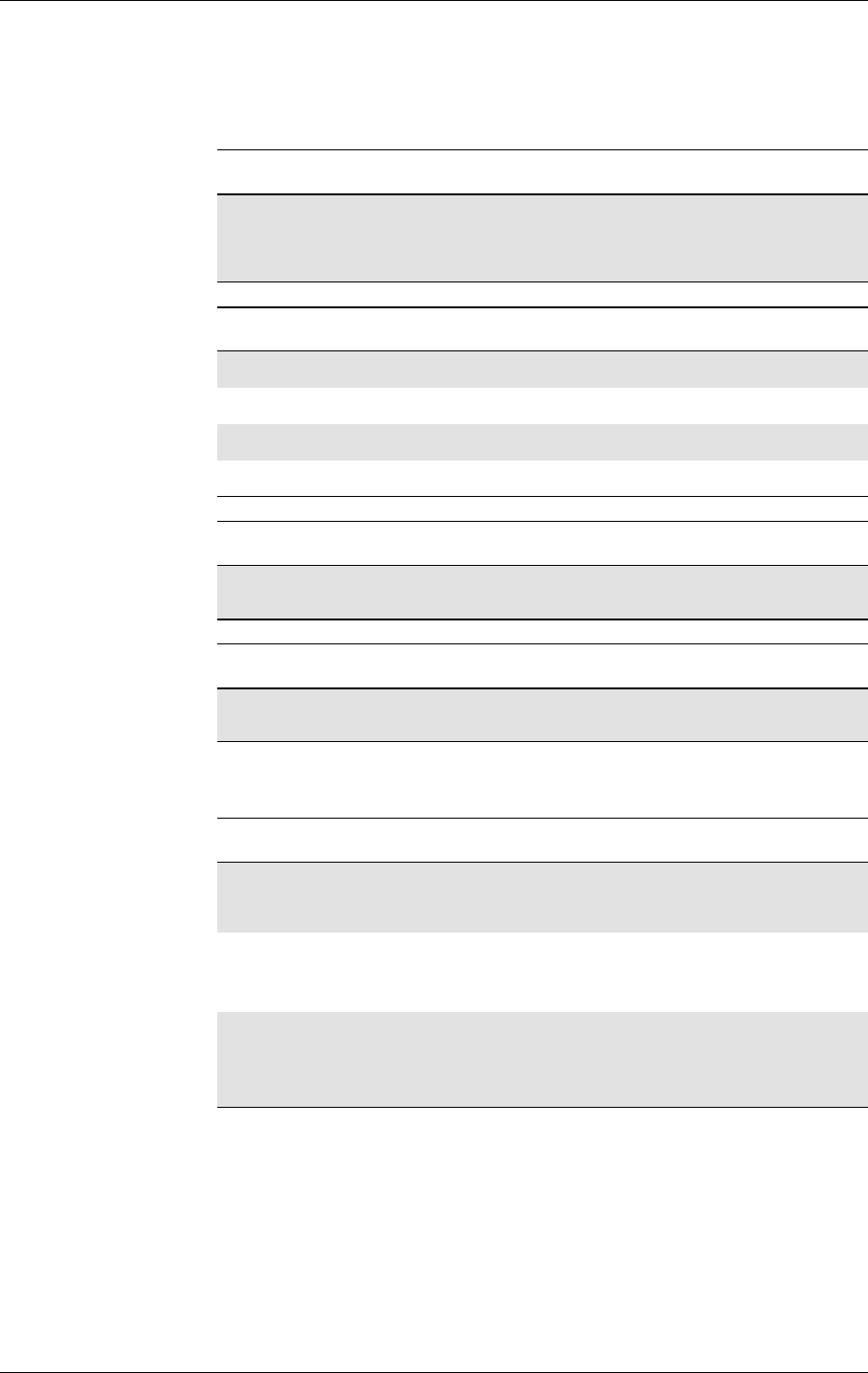
GM47/GM48 INTEGRATOR’S MANUAL
268 LZT 123 7263 R1A
interworking with a certain type of telematic service and <dcs> deter-
mines the way the information is encoded as in GSM 03.38.
16.17 AT+CSCS Select Character Set
This command informs the TA which character set <chset> is used by
the TE. The TA is then able to convert character strings correctly
between TE and ME character sets.
When TA-TE interface is set to 8-bit operation and the used TE alphabet
is 7-bit, the highest bit shall be set to zero.
Note! How the internal alphabet of ME is converted to, or from, the TE
alphabet is manufacturer specific.
<fo> Description
0-255 Depending on the command or result code: first octet of
GSM 03.40 SMS-DELIVER, SMS-SUBMIT (default 17),SMS-
STATUS-REPORT, or SMS-COMMAND (default 2) in integer
format
<vp> Description
0-143 (TP-VP+1) x 5 minutes (i.e 5 minutes intervals up to 12 hous)
144-167 12 hours + ((TP_VP-143) x 30 minutes)
168-196 (TP-VP-166) x 1 day
197-255 (TP-VP-192) x 1 week
<pid> Description
0-255 Protocol Identifier in integer format. Default value = 0.
According to 07.05 section 9.2.3.9
<dcs> Description
0-255 Data coding scheme. See GSM 03.38. UCS2 and
compressed text not supported
Description Command Possible Responses
Set command informs
TA which character set
is used by the TE
AT+CSCS=<chset> •OK
•ERROR
Show the current
setting AT+CSCS? • +CSCS: <chset>
•OK
•ERROR
Show list of supported
character sets AT+CSCS=? • +CSCS: (list of
supported <chset>s)
•OK
•ERROR
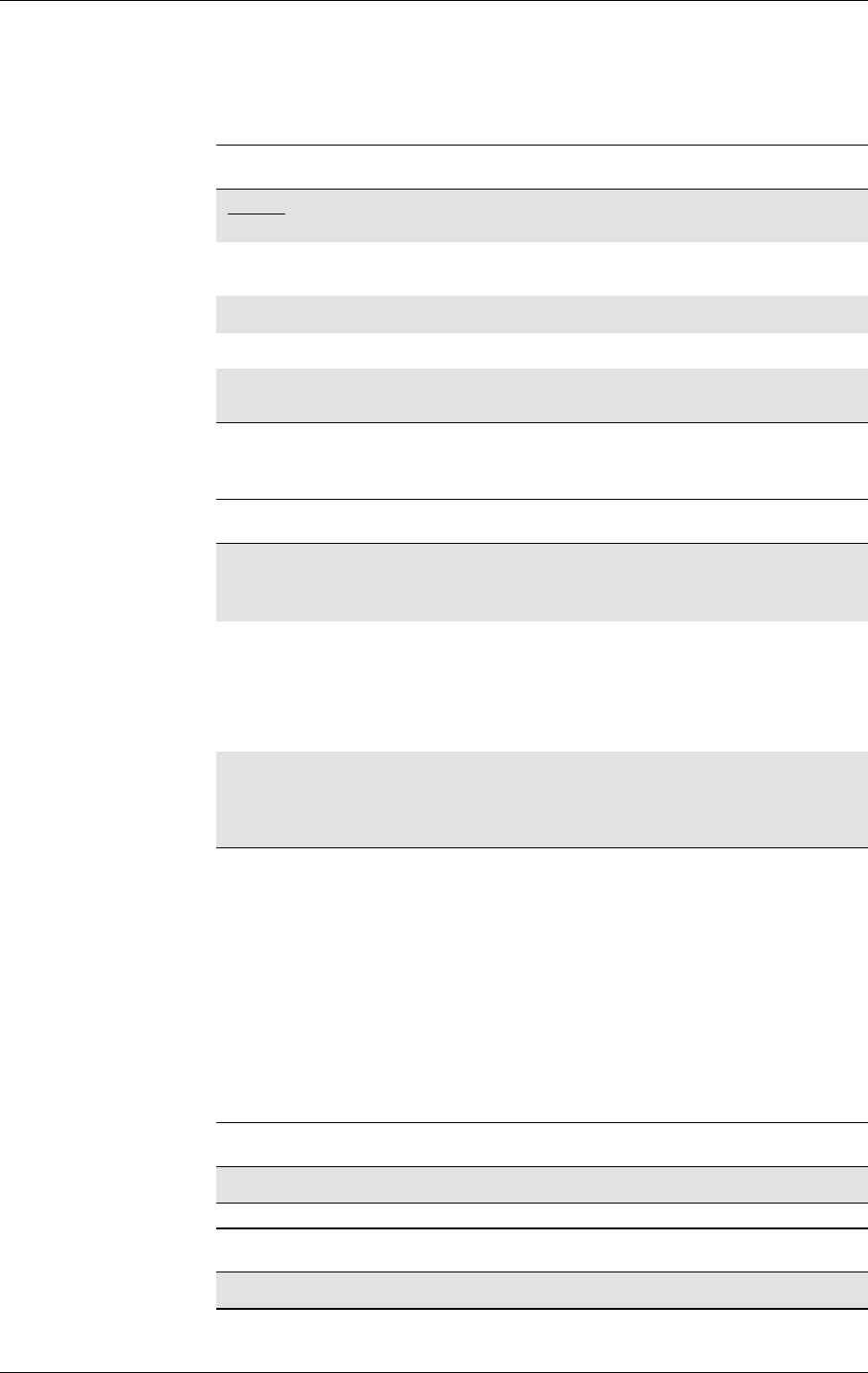
16. SHORT MESSAGE SERVICES - POINT TO POINT
269
LZT 123 7263 R1A
Read command shows current setting and test command display
conversion schemes implemented in the TA.
16.18 AT*ESTL Ericsson SMS Template List Edit
This command adds an SMS template, specified by the <text>
parameter, to the list of SMS templates at the position specified by the
<stix> parameter. If the list already contains an SMS template at the
position <stix> this template is overwritten by the template given by the
<text> parameter.
If the <text> parameter is omitted, the command removes the SMS
Template from the list at the position specified by the <stix> parameter.
The read command lists all entries in the SMS Template list.
<chset > Description
“GSM” GSM default alphabet (GSM 03.38 subclause 6.2.1).
Default setting
“IRA” International reference alphabet (ITU-T T.50 [3]). Note:
recommended default setting by GSM 07.07. [2]
“8859-n” ISO 8859 Latin n(1-6) character set
"UTF8" Universal text format, 8 bits
“UCS2” Unicode, 16-bit universal multiple-octet coded character
set (ISO/IEC10646)
Description Command Possible Responses
Add or delete item
to SMS template list AT*ESTL=<stix>
[,<text>] •+CMEERROR
•OK
•ERROR
List all entries in SMS
template list AT*ESTL? •*ESTL:
<stix1>,<text1>[<CR><LF><stix2>,
<text2>[…]]
+CME ERROR
•OK
•ERROR
Show if the
command is
supported
AT*ESTL=? • *ESTL: (list of supported
<stix>s),<ntext>
•OK
•ERROR
<stix> Description
Integer value Index to list of SMS templates
<text> Description
String value SMS template text
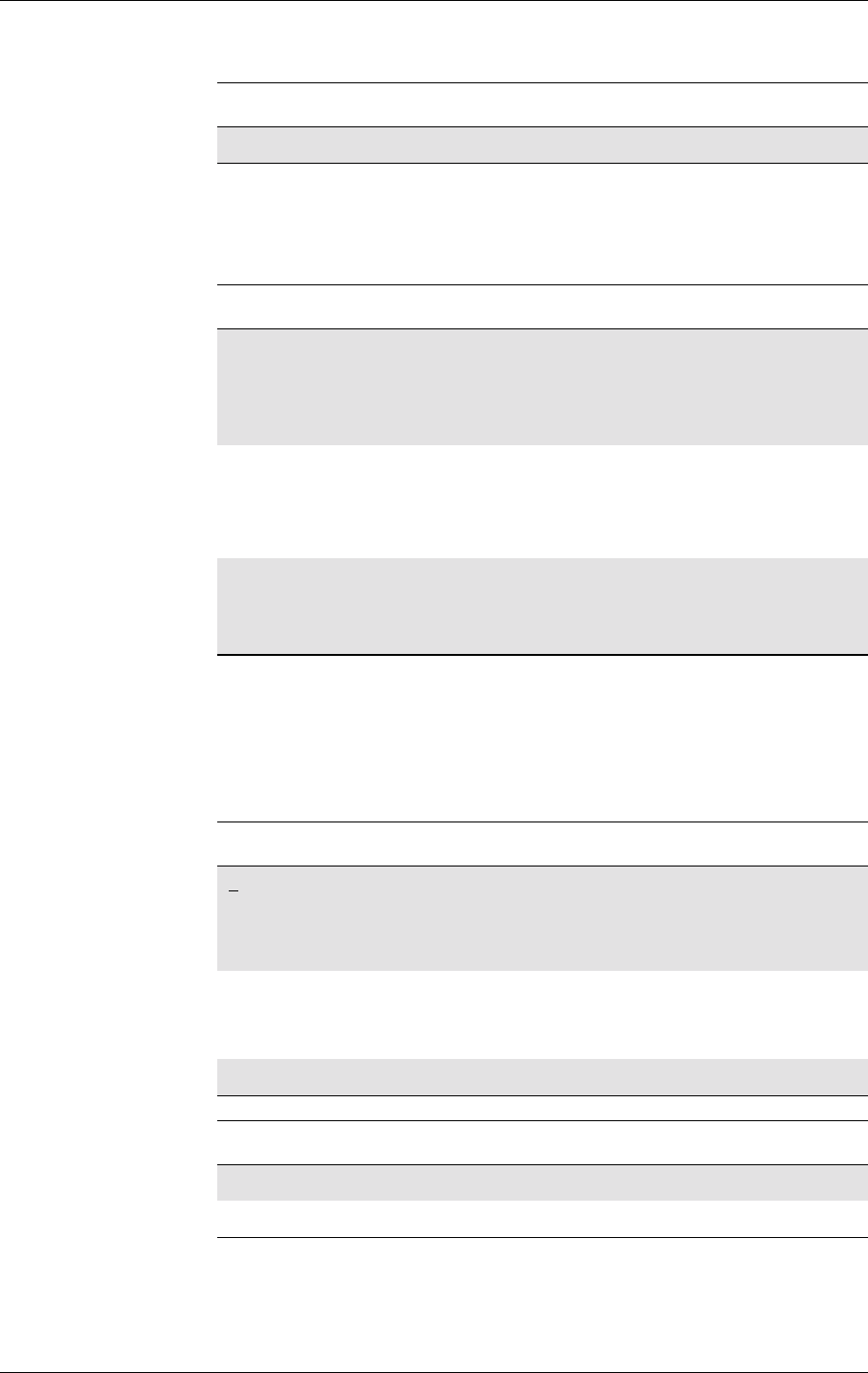
GM47/GM48 INTEGRATOR’S MANUAL
270 LZT 123 7263 R1A
16.19 AT+CSMS Select Message Service
Common for both PDU and Text Modes
Selects messaging service <service>. It returns the types of messages
supported by the ME: <mt> for mobile terminated messages, <mo> for
mobile originated messages and <bm> for broadcast type messages. If
the chosen service is not supported by the ME (but is supported by the
TA), final result code +CMS ERROR: <err> is returned.
<ntext> Description
Integer value Maximum length of the SMS template (<text>-parameter)
Description Command Possible Responses
Select message
service AT+CSMS=<service> •+CSMS:
<mt>,<mo>,<bm>
• +CMS ERROR: <err>
•OK
•ERROR
Show supported
message types along
with the current
service setting
AT+CSMS? •+CSMS:
<service>,<mt>,<mo>,
<bm>
•OK
•ERROR
Show list of supported
services AT+CSMS=? •+CSMS:(listof
supported <service>s)
•OK
•ERROR
<service > Description
0GSM 03.40 and 03.41. The syntax of SMS AT commands is
compatible with GSM 07.05 Phase 2 version 4.7.0; Phase 2+
features which do not require new command syntax may
be supported (e.g. correct routing of messages with new
Phase 2+ data coding schemes)
1GSM 03.40 and 03.41 (the syntax of SMS AT commands is
compatible with GSM 07.05 Phase 2+ version; the
requirement of <service> setting 1 is mentioned under
corresponding command descriptions).Notsupported
2..127 Reserved
<mt> Description
0Mobile terminated messages not supported
1Mobile terminated messages supported
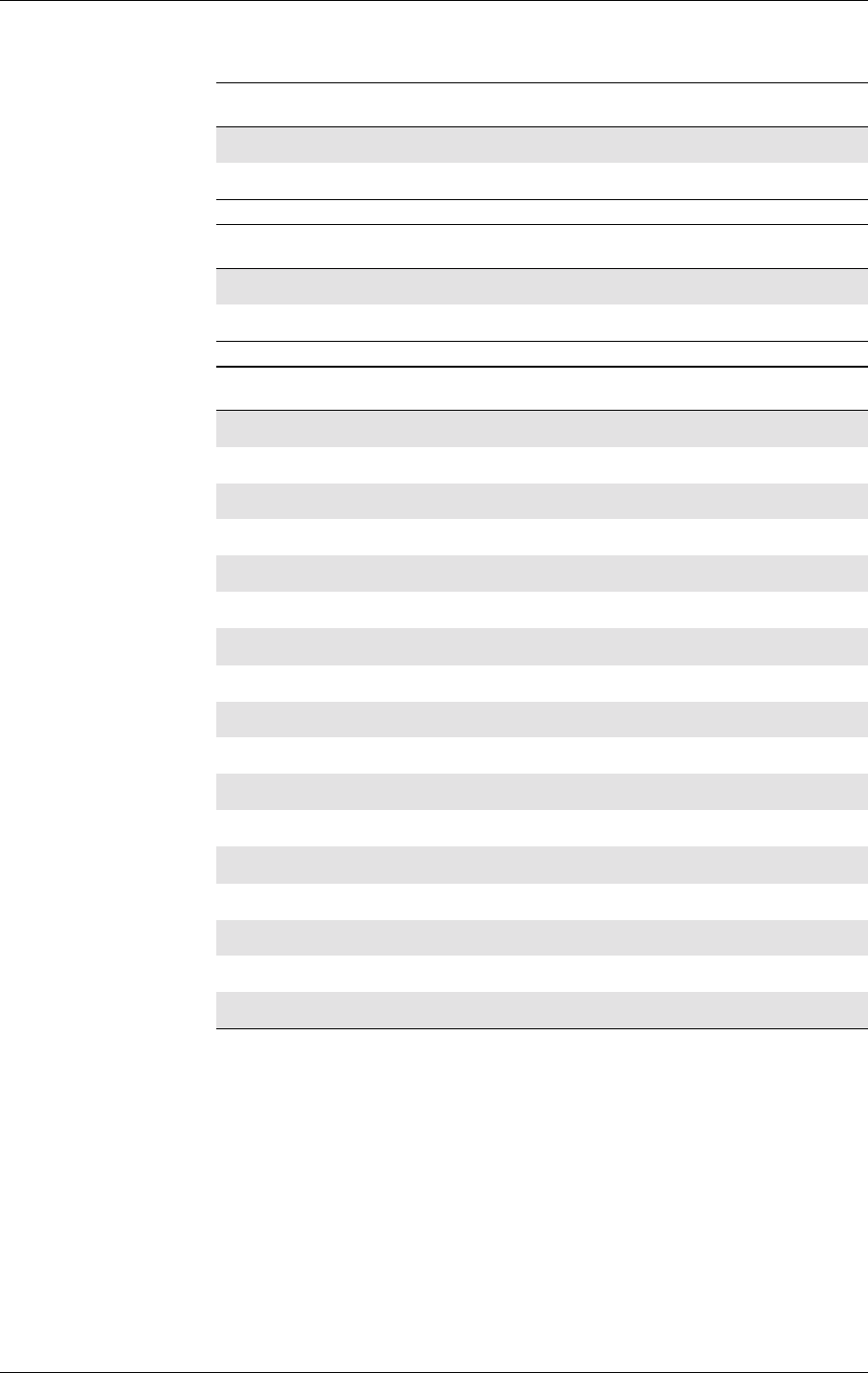
16. SHORT MESSAGE SERVICES - POINT TO POINT
271
LZT 123 7263 R1A
<mo> Description
0Mobile originated messages not supported
1Mobile originated messages supported
<bm> Description
0Broadcast messages not supported
1Broadcast messages supported
<err> Description
0...127 GSM 04.11 Annex E-2 values
128...255 GSM 03.40 subclause 9.2.3.22 values
300 ME failure
302 Operation not allowed
304 Invalid PDU mode parameter
310 SIM not inserted
311 SIM PIN required
312 PH-SIM PIN required
313 SIM failure
314 SIM busy
315 SIM wrong
316 SIM PUK required
317 SIM PIN2 required
318 SIM PUK2 required
500 Unknown error
...511 Other values in range 256...511 are reserved
512... Manufacturer specific

GM47/GM48 INTEGRATOR’S MANUAL
272 LZT 123 7263 R1A
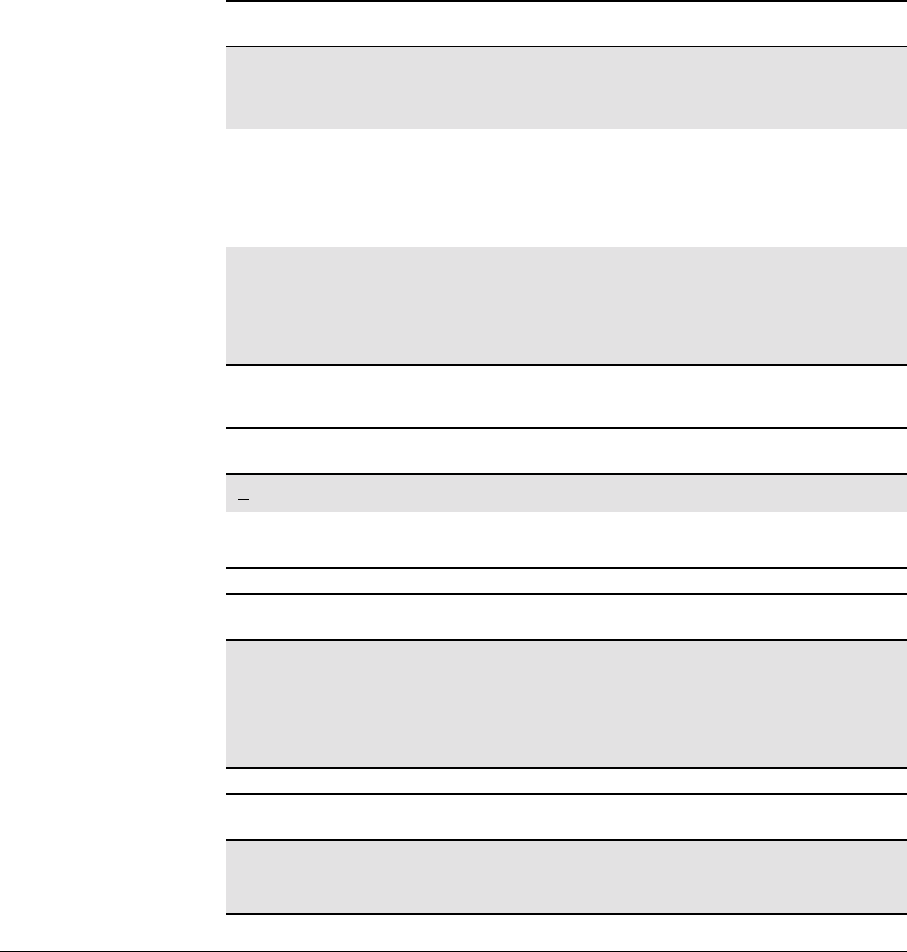
273
LZT 123 7263 R1A
17. Short Message Services - Cell Broadcast
17.1 AT+CNMI New Message Indications to TE
See 16.11, AT+CNMI New Message Indications to TE
17.2 AT+CSCB Select Cell Broadcast Message Type
Common for both PDU and text modes
Selects which types of CBMs are to be received by the ME.
Description Command Possible Responses
Select cell broadcast
message type AT+CSCB=[<mode>
[,<mids>[,<dcss>]]] • +CMS ERROR: <err>
•OK
•ERROR
Shows the current
setting AT+CSCB? •+CSCB:
<mode>,<mids>,
<dcss>
•OK
•ERROR
Show if the command
is supported AT+CSCB=? •+CSCB:(listof
supported
<mode>s)
•OK
•ERROR
<mode> Description
0Message types in <mids> and <dcss> are accepted
1Message types in <mids> and <dcss> are not accepted.
Not supported
<mids> Description
string type All different possible combinations of CBM message
identifiers (refer <mid>) (default is empty string);
e.g. “0,1,5-7”
<mid> GSM 03.41 CBM Message Identifier in integer
format
<dcss> Description
string type All different possible combinations of CBM data coding
schemes (refer to <dcs>). Default is empty string);
e.g. “0-3,5”. Not supported

GM47/GM48 INTEGRATOR’S MANUAL
274 LZT 123 7263 R1A
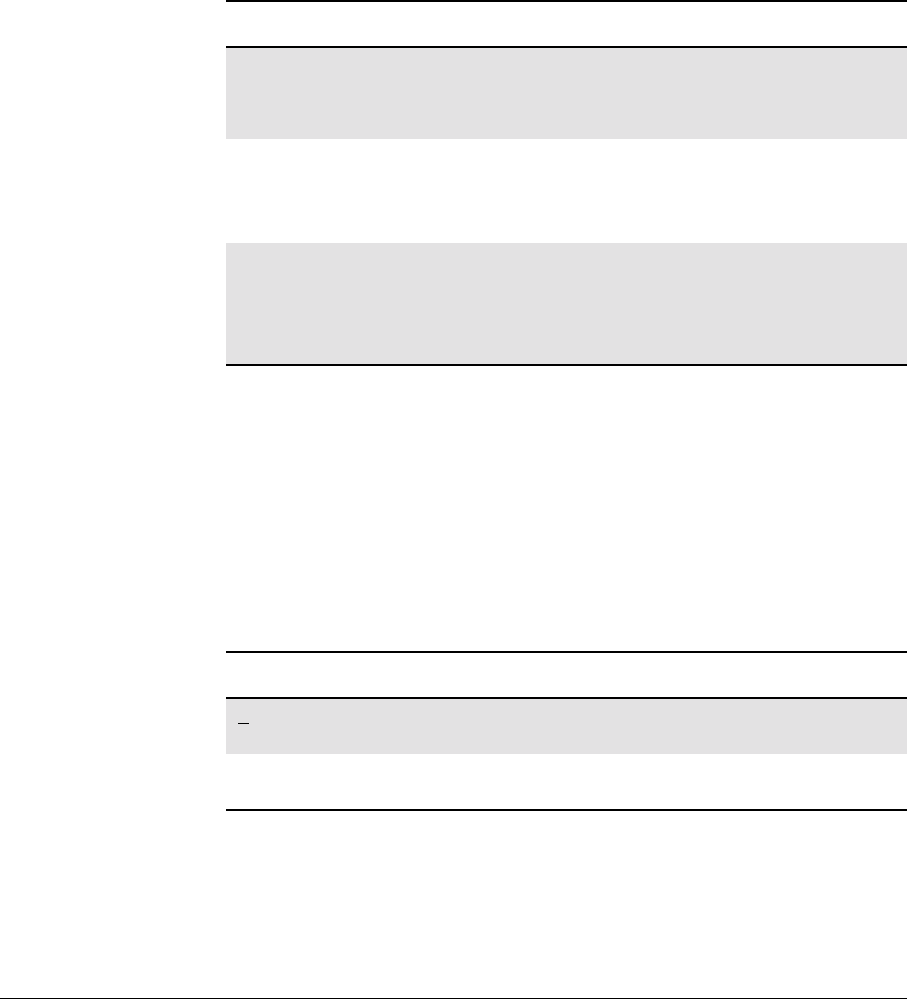
275
LZT 123 7263 R1A
18. SIM Application Toolkit
18.1 AT+CPIN PIN Control
See 3.27, AT+CPIN PIN Control
18.2 AT*E2STKS SIM Application Toolkit Settings
Allows the external application to disable/enable the presentation of the
unsolicited result codes corresponding to the STK commands.
Parameter <on_off> is used to disable/enable the presentation of an
unsolicited result code *E2STK. Setting chosen is stored internally so
that it is not necessary to change it each time the ME is switched on.
If the presentation of the unsolicited result codes is disabled, the
messages below are not be sent to the application.
The unsolicited result codes shall be disabled by default.
Description Command Possible responses
Set the presentation of
the unsolicited result
codes corresponding to
STK
AT*E2STKS=<on_off> • +CME ERROR <err>
•OK
• ERROR
Read the current status of
the presentation of the
unsolicited result codes
AT*E2STKS? •*E2STKS:<on_off>
• +CME ERROR <err>
•OK
• ERROR
Test if the command is
supported AT*E2STKS=? •*E2STKD:listof
supported <on_off>
• +CME ERROR <err>
•OK
• ERROR
<on_off> Description
0Disable the presentation of the unsolicited result codes
related to STK (default)
1Enable the presentation of the unsolicited result codes
related to STK
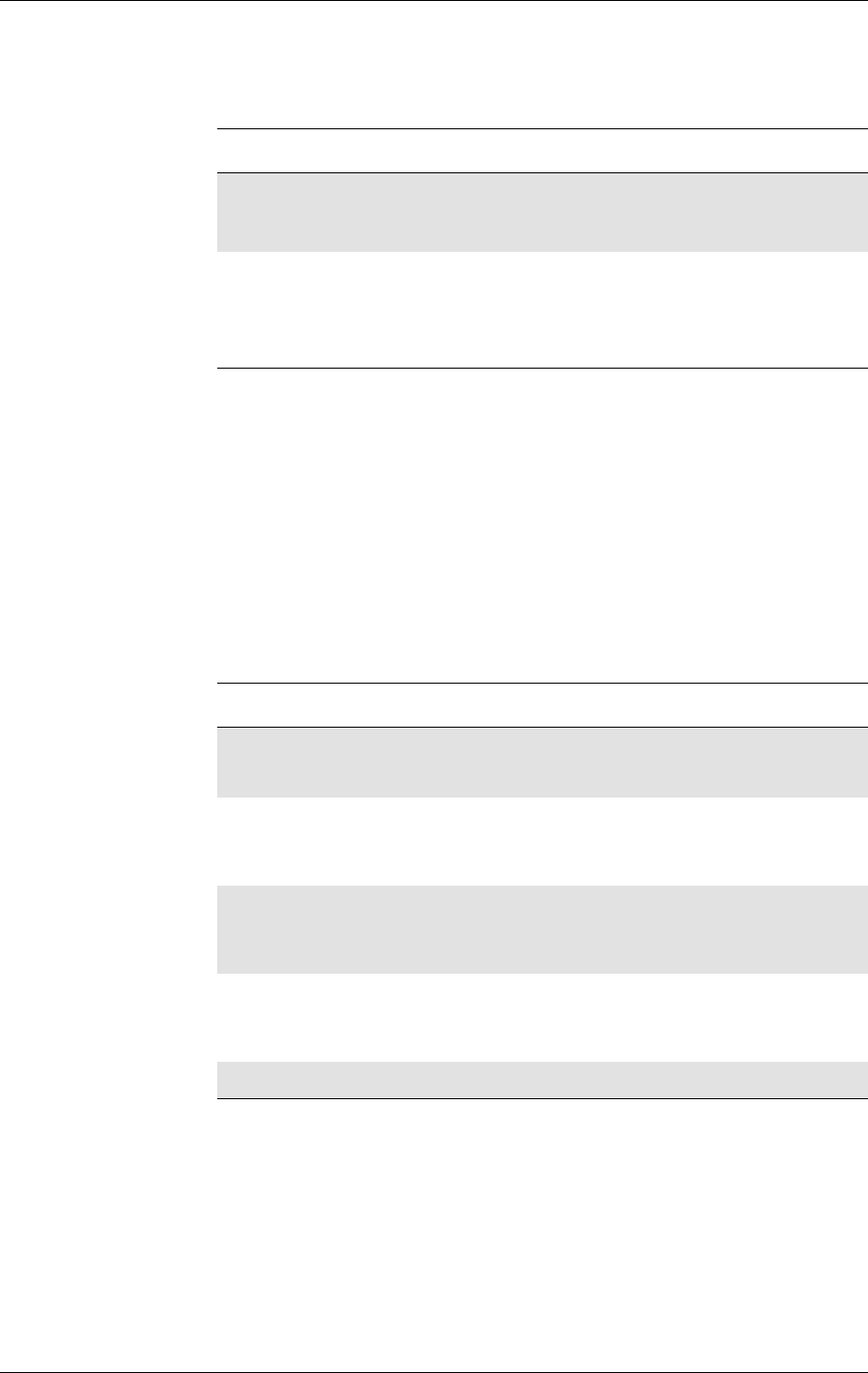
GM47/GM48 INTEGRATOR’S MANUAL
276 LZT 123 7263 R1A
18.3 AT*E2STKD M2M STK Display Text
The ME passes the parameters within DISPLAY TEXT command to
the external application by means of the unsolicited result code
*E2STKD.
Command AT*E2STKD allows the external application to send the
appropriate answer after receiving the unsolicited result code, and
before the timeout expires.
If Answer command is sent once the timeout expires, an ERROR
response is generated.
Test command returns the list of supported <answer>.
Description Command Possible responses
Answer to the
reception of
DISPLAY TEXT
AT*E2STKD <answer> •+CMEERROR<err>
•OK
•ERROR
Test if the
command is
supported
AT*E2STKD=? •*E2STKD:
(list of supported <answer>)
•+CMEERROR<err>
•OK
•ERROR
<answer> Description
0OK. Performed as required: the text was displayed and
cleared as requested. It corresponds to ‘00’ Command
performed successfully, described in the GSM standard
1OK. User Terminated Session: the text was displayed as
requested and the user wants to end the proactive
session. It corresponds to ‘10’ Proactive session terminated
by the user, described in the GSM standard
2OK. User requests backwards move: the text was
displayed as requested and the user wants to go
backwards in the session. It corresponds to ‘11’ Backward
move in the proactive SIM session requested by the user
3OK. No response from user: the text was displayed, and
although the clear condition was “Wait for user to clear”,
the user did not react. It corresponds to ‘12’ No response
from user
4FAILED. Screen is busy: the text could not be displayed
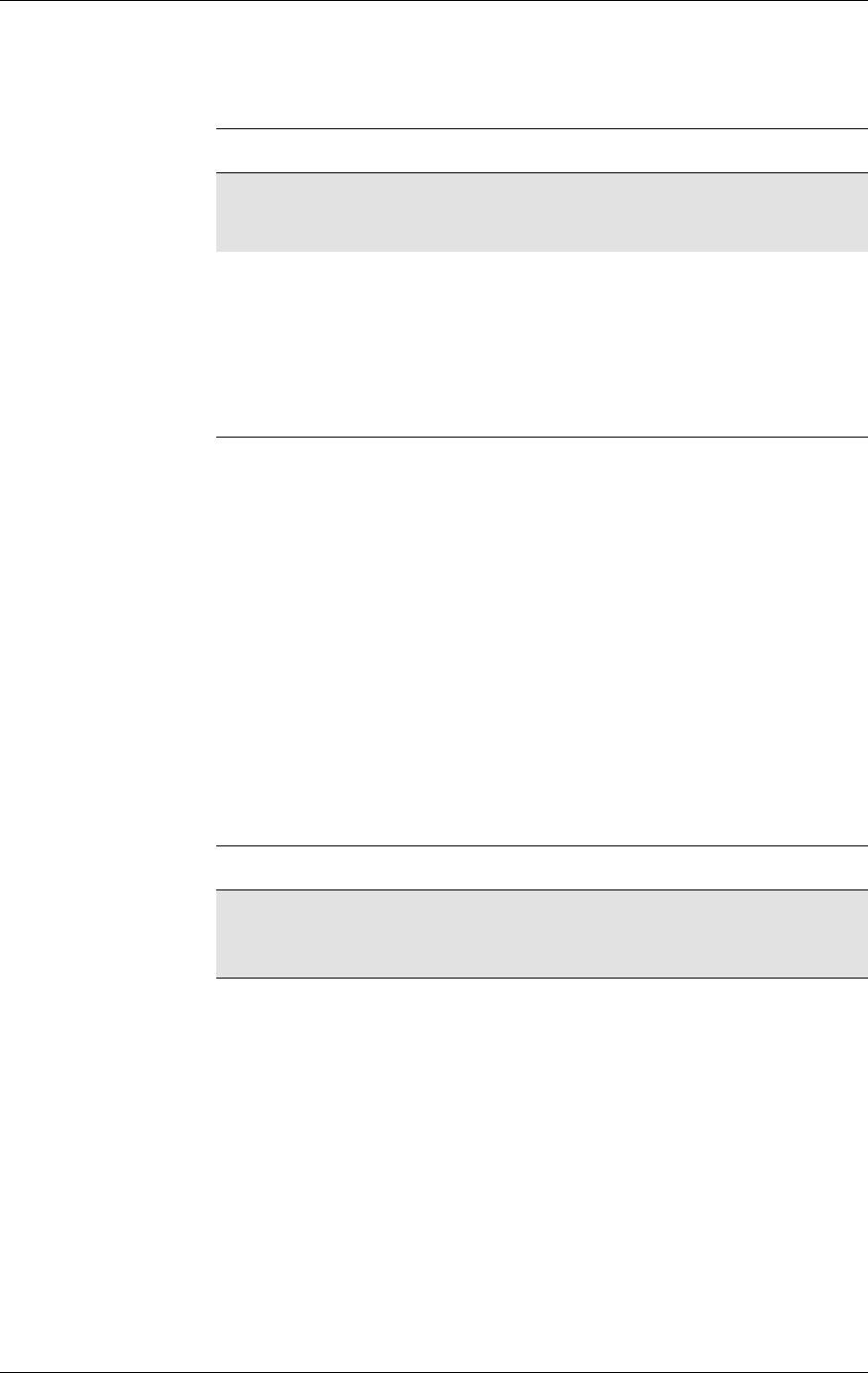
18. SIM APPLICATION TOOLKIT
277
LZT 123 7263 R1A
18.4 AT*E2STKG M2M STK Get Inkey
The ME passes the parameters within GET INKEY command to the
external application by means of the unsolicited result code E2STKG.
The external application then sends AT*E2STKG with the user
response.
Answer command allows the external application to send the
appropriate answer, after receiving the unsolicited result code, and
before the timeout expires.
If Answer command is sent once the timeout expires, an ERROR
response is generated.
If <answer> parameter is 4, a failure has occurred and no more
parameters are sent. If the extra parameters are sent, the ME indicates
ERROR.
Description Command Possible responses
Answer to the
reception of
GET INKEY
AT*E2STKG=<answer>,
[<response_type>,
<user_response>]
• +CME ERROR <err>
•OK
•ERROR
Test if the
command is
supported
AT*E2STKG=? •*E2STKG:
(list of supported <answer>),
(list of supported
<response_type>),
(list of supported
<user_response>)
• +CME ERROR <err>
•OK
•ERROR
<user_response> Description
String type Field of 1 to 2 bytes length in string type format
between “”. Coding is defined in <response_type>.
Length shall be 2 bytes when coding is UCS2 .
Otherwise it shall be 1 byte
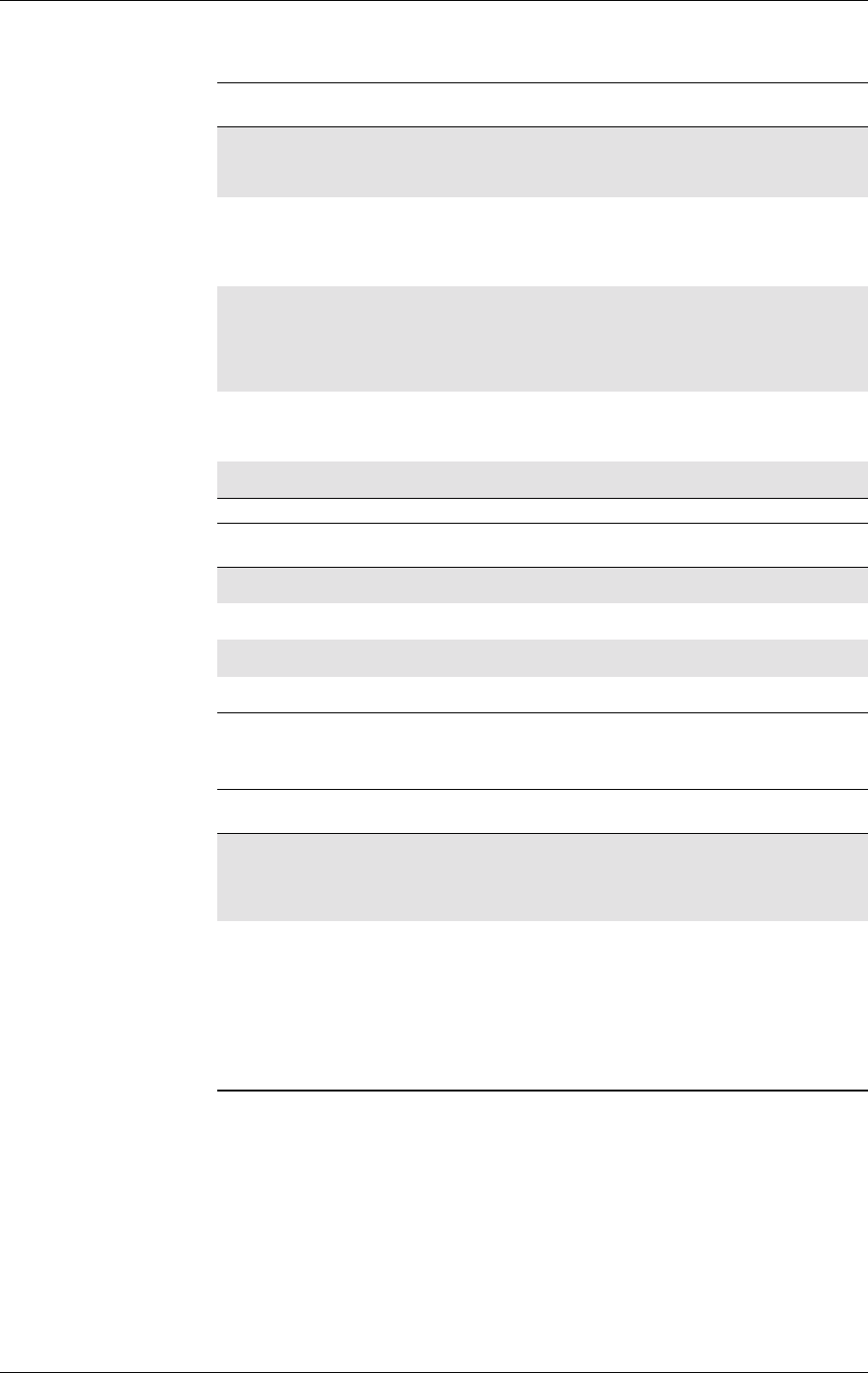
GM47/GM48 INTEGRATOR’S MANUAL
278 LZT 123 7263 R1A
18.5 AT*E2STKI M2M STK Get Input
The ME shall pass the parameters within GET INPUT command to the
external application by means of the unsolicited result code E2STKI.
The external application sends AT*E2STKI with the user response.
Command AT*E2STKI allows the external application to send the
appropriate answer after receiving the unsolicited result code, and
before the timeout expires.
If Answer command is sent once the timeout expires, an ERROR
response is generated.
<answer> Description
0OK. Performed as required: the text was displayed. It
corresponds to ‘00’ Command performed successfully,
described in the GSM standard
1OK.UserTerminatedSession:thetextwasdisplayedas
requested and the user wants to end the proactive
session. It corresponds to ‘10’ Proactive session
terminated by the user, described in the GSM standard
2OK. User requests backward move: the text was
displayed as requested and the user wants to go
backwards in the session. It corresponds to ‘11’
Backward move in the proactive SIM session
requested by the user
3OK. No response from user: the text was displayed, and
the user did not react. It corresponds to ‘12’ No
response from user
4FAILED. Screen is busy: the text could not be displayed
<response_type> Description
0Response type shall be digits (0-9, *, # and +)
1Response type shall be SMS default alphabet
2Response type shall be UCS2 alphabet
3Response type shall be “Yes/No” response
Description Command Possible responses
Answer to the
reception of GET
INPUT
AT*E2STKI <answer>,
[<response_type>,
<response_length>,
<user_response>]
• +CME ERROR <err>
•OK
• ERROR
Test if the
command is
supported
AT*E2STKI=? • *E2STKI: (list of supported
<answer>),(list of supported
<response_type>),
(list of supported
<prompt_text_length>
• +CME ERROR <err>
•OK
• ERROR
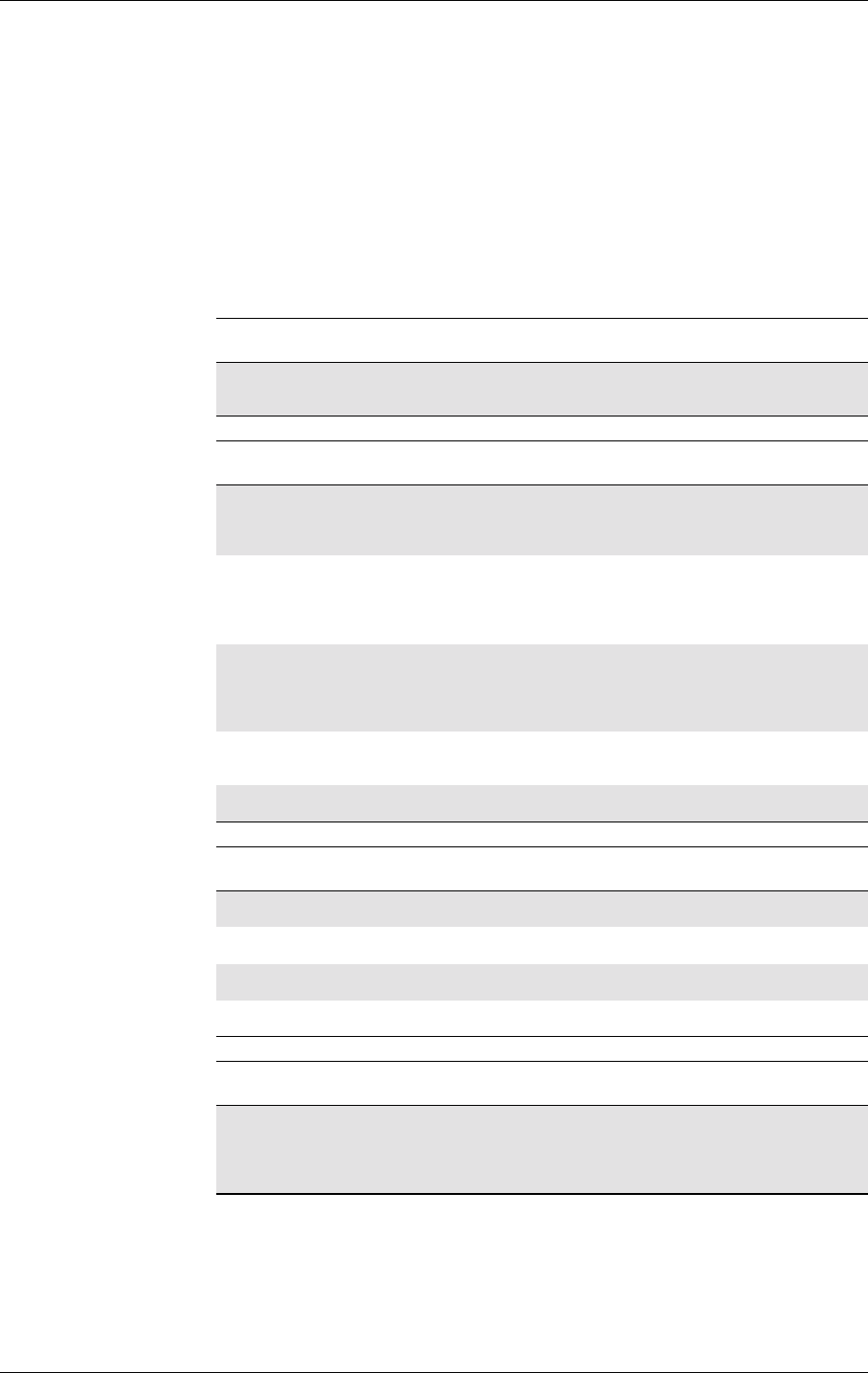
18. SIM APPLICATION TOOLKIT
279
LZT 123 7263 R1A
If <answer> parameter is 4, a failure has occurred and no more
parameters are sent. If the extra parameters are sent, the ME indicates
ERROR.
Note! If <response_type>=2 (UCS-2), the length of <user_response> is an
even number of bytes. Otherwise, the ME gives an ERROR message.
Note! If <response_type>=3 (Yes/No), the length of <user_response> is 1
byte. Otherwise, the ME gives an ERROR message.
<user_response> Description
String type Field of 1 to 2 bytes length in string type format
between “”. Coding is defined in <response_type>
<answer> Description
0OK. Performed as required: the text was displayed. It
corresponds to ‘00’ command performed succesfully,
described in the GSM standard
1OK.Userterminatedsession:thetextwasdisplayedas
requested and the user wants to end the proactive session. It
corresponds to ‘10’ proactive session terminated by the user,
described in the GSM standard
2OK. User requests backward move: the text was displayed as
requested and the user wants to go backwards in the session.
It corresponds to ‘11’ backward move in the proactive SIM
session requested by the user
3OK. No response from user: the text was displayed, and the
user did not react. It corresponds to ‘12’ No response from user
4FAILED. Screen is busy: the text could not be displayed
<response_type> Description
0Response type shall be digits (0-9, *, # and +)
1Response type shall be SMS default alphabet
2Response type shall be UCS2 alphabet
3Response type shall be “Yes/No” response
<response_length> Description
Integer type (0-160) Value indicating the length of response field
<user_response>. It shall be an integer within the
range between <min_length_response> and
<max_length_response>
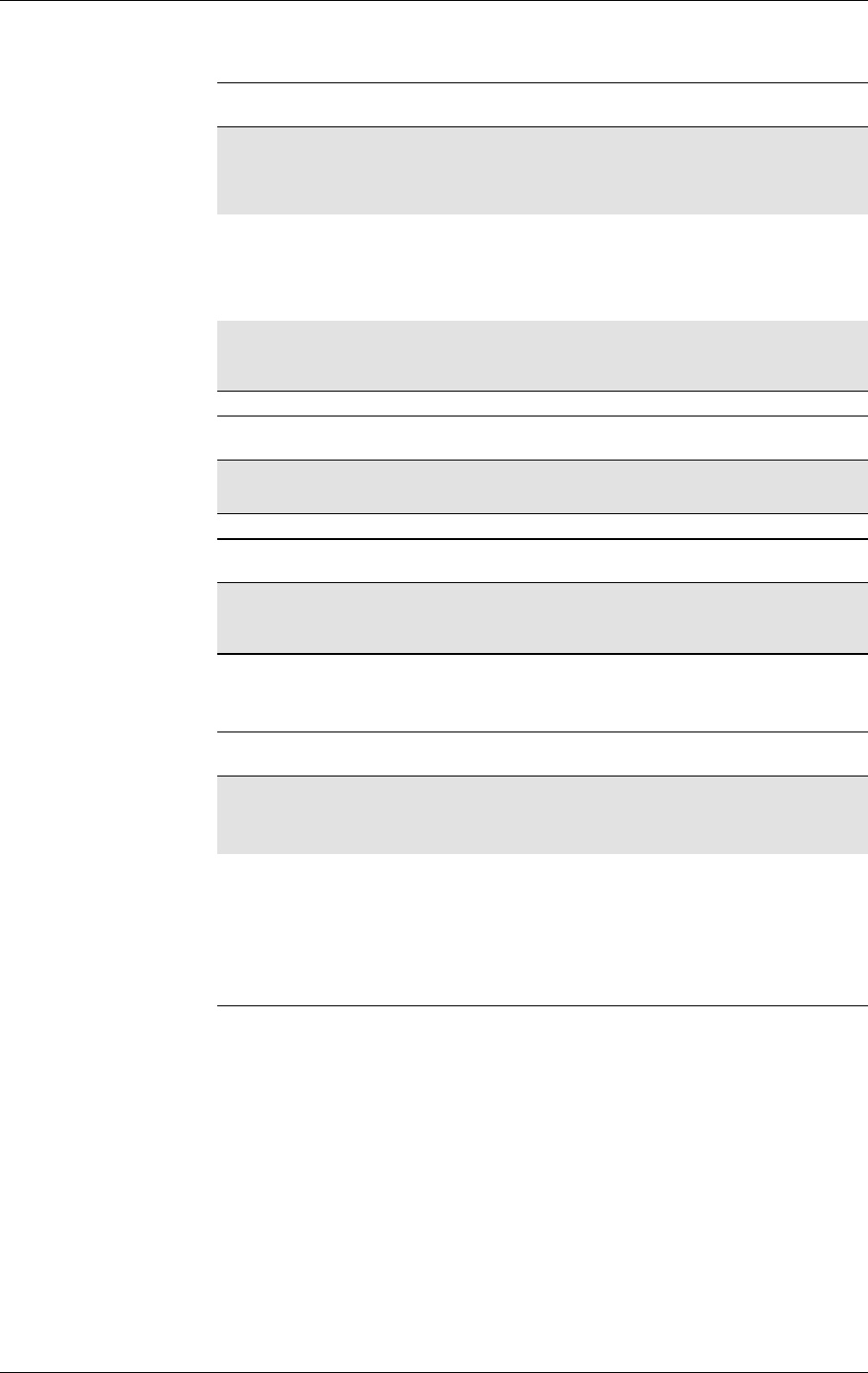
GM47/GM48 INTEGRATOR’S MANUAL
280 LZT 123 7263 R1A
18.6 AT*E2STKL M2M STK Select Item
The ME shall pass the parameters within SELECT ITEM command to
the external application by means of the unsolicited result code
*E2STKL.
Command AT*E2STKL allows the external application to send the
appropriate answer after receiving the unsolicited result code, and
before the timeout expires.
If Answer command is sent once the timeout expires, an ERROR
response is be generated.
<prompt_coding> Description
0Text is coded in unpacked format, using the SMS
default 7-bit coded alphabet, as defined in
GSM03.38withbit8setto0. Itcorrespondsto
data coding scheme of 8 bit
1Text is coded in packed format, using the SMS
default 7-bit coded alphabet, packed in 8-bit
octets, as defined in GSM 03.38. It corresponds
to data coding scheme of 7 bit GSM default
alphabet
2Text is coded in UCS2 alphabet, as defined in
GSM 03.38. It corresponds to data coding
scheme of 16 bit UCS2 alphabet
<prompt_text_length> Description
Integer type (0-210) Value indicating the maximum length of field
<prompt_text>
<prompt_text> Description
String type Field of maximum length <prompt_text_length>,
in string type between “”. Coding is defined in
<prompt_coding>
Description Command Possible responses
Answer to the
reception of
SELECT ITEM
AT*E2STKL=<answer>,
[<user_response>] • +CME ERROR <err>
•OK
•ERROR
Test if the
command is
supported
AT*E2STKL=? • *E2STKL: (list of supported
<answer>),
(list of supported
<user_response>)
• +CME ERROR <err>
•OK
•ERROR
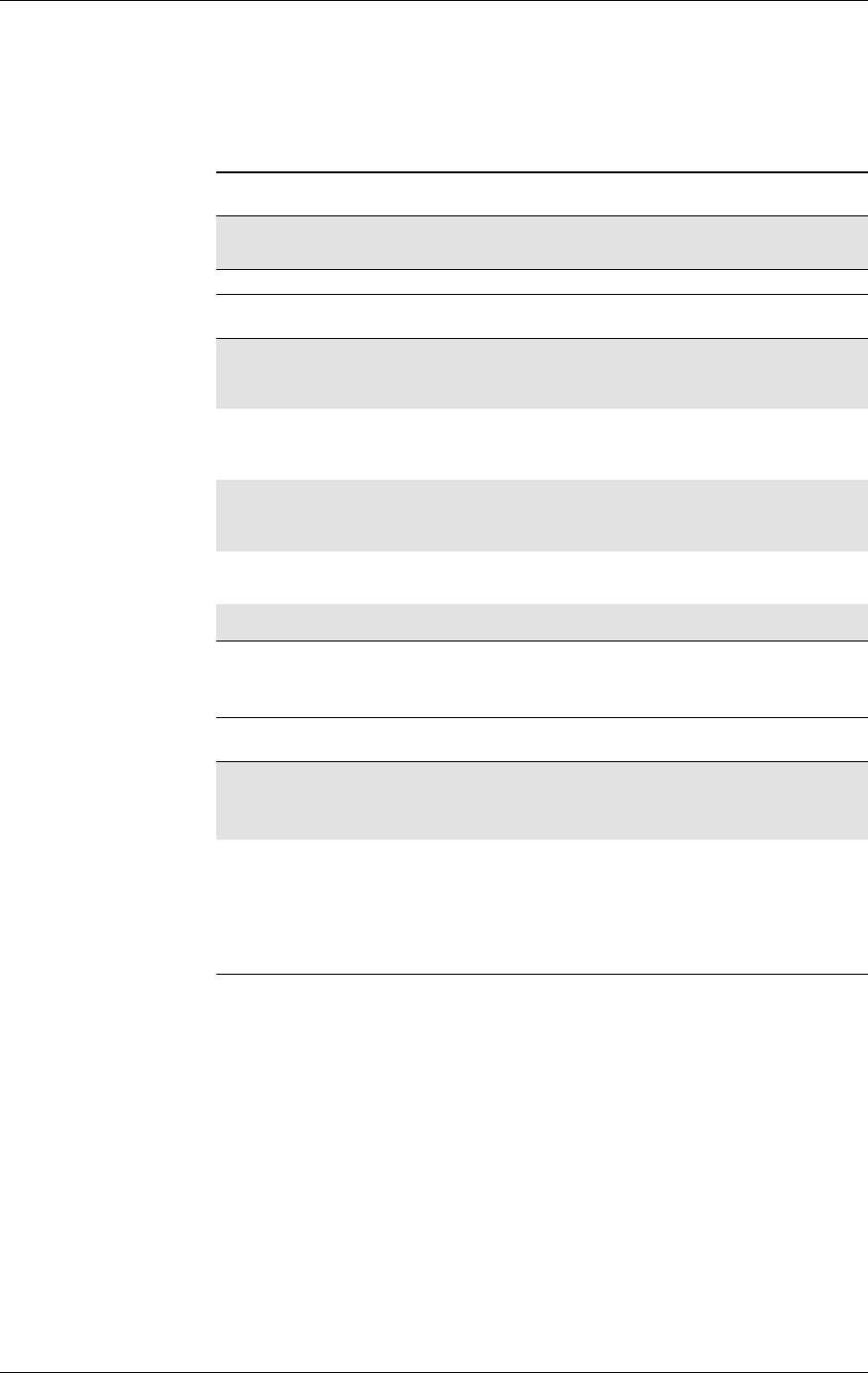
18. SIM APPLICATION TOOLKIT
281
LZT 123 7263 R1A
If <answer> parameter is 4, a failure has occurred and no more
parameters are sent. If the extra parameters are sent, the ME indicates
ERROR.
18.7 AT*E2STKM M2M STK Set Up Menu
The ME passes the parameters within SET UP MENU command to the
external application, so that the STK menu can be built externally, by
means of the unsolicited result code *E2STKM.
The current menu can be removed by sending only the parameter
<on_off> = 0.
Answer command allows the external application to send the
appropriate answer after receiving the unsolicited result code, and
before the timeout expires.
<user_response> Description
integer type The identifier is a single byte between 1 and 29. It
identifies the selected <item_idn> within the items list
<answer> Description
0OK. Performed as required. It corresponds to ‘00’
command performed succesfully, described in the GSM
standard
1OK.Userterminatedsession.Itcorrespondsto‘10’
Proactive session terminated by the user, described in
the GSM standard
2OK. User requests backwards move. It corresponds to
‘11’ Backward move in the proactive SIM session
requested by the user
3OK. No response from user. It corresponds to ‘12’ no
response from user
4FAILED. Screen is busy: the text could not be displayed
Description Command Possible responses
Answer to the
reception of SET
UP MENU
AT*E2STKM=<answer>,
<on_off> • +CME ERROR <err>
•OK
•ERROR
Test if the
command is
supported
AT*E2STKM=? • *E2STKM: (list of supported
<answer>),(list of supported
<on_off>)
• +CME ERROR <err>
•OK
•ERROR
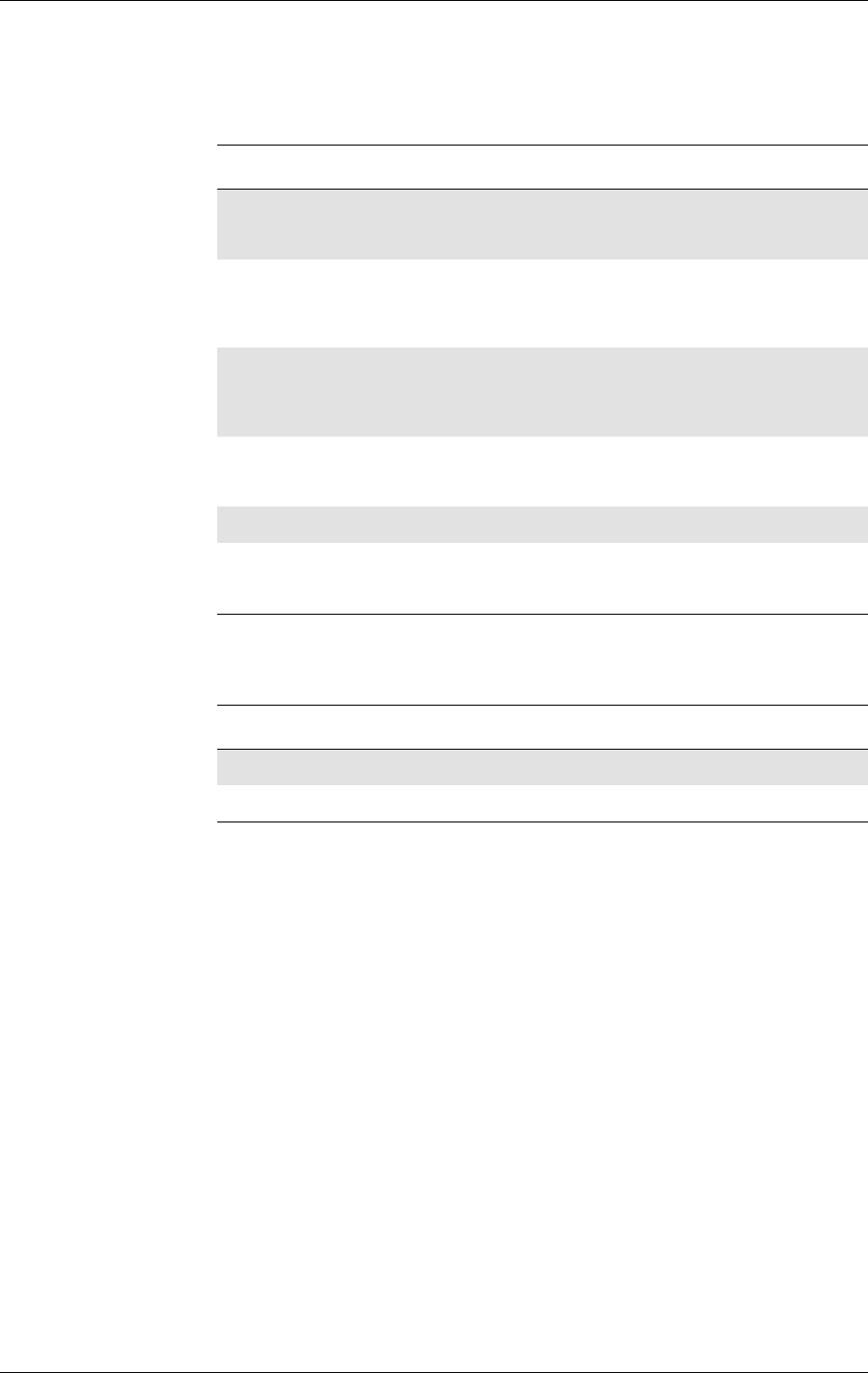
GM47/GM48 INTEGRATOR’S MANUAL
282 LZT 123 7263 R1A
If Answer command is sent once the timeout expires, an ERROR
response shall be generated.
Values follow GSM 11.14 standard. See General Result byte within
Result TLV corresponding to TERMINAL RESPONSE.
According to GSM 11.14 if the ME receives the "Item dat object for
item 1" as a null data object, then <on_off> shall be set to 0.
The maximum length is fixed. Notice that 227 bytes come from
substracting the bytes corresponding to E2STKM: x,“”
<CR><LF>E2STKM: x,“x” from 255. As a result, an extra parameter
defining the maximum length is not required.
With the coding defined in GSM 11.11, the first byte defines the coding
scheme. As a result, an extra parameter defining the coding is not
required.
Values follow the definition of “Identifier of Item” in “Item” TLV
object, within SET-UP MENU command, as described in GSM 11.14.
The maximum length is fixed. Notice that 226 bytes come from
subtracting the occupied bytes from 255. As a result, an extra parameter
defining the maximum length is not required.
<answer> Description
0OK. Performed as required: it corresponds to ‘00’
command performed successfully, described in the GSM
standard
1OK. User Terminated Session: the command was executed
as requested and the user wants to end the proactive
session. It corresponds to ‘10’ proactive session terminated
by the user, described in the GSM standard
2OK. User requests backwards move: the command was
executed as requested and the user wants to go
backwards in the session. It corresponds to ‘11’ backward
move in the proactive SIM session requested by the user
3OK. No response from user: the command was executed,
and the user did not react. It corresponds to ‘12’ no
response from user
4FAILED. Screen is busy
5FAILED. Command beyond MEs capability. It corresponds
to‘30’.Itwasnotpossibletosuccessfullyintegrateor
remove the list of menu items
<on_off> Description
0Remove the current menu
1New menu to be displayed
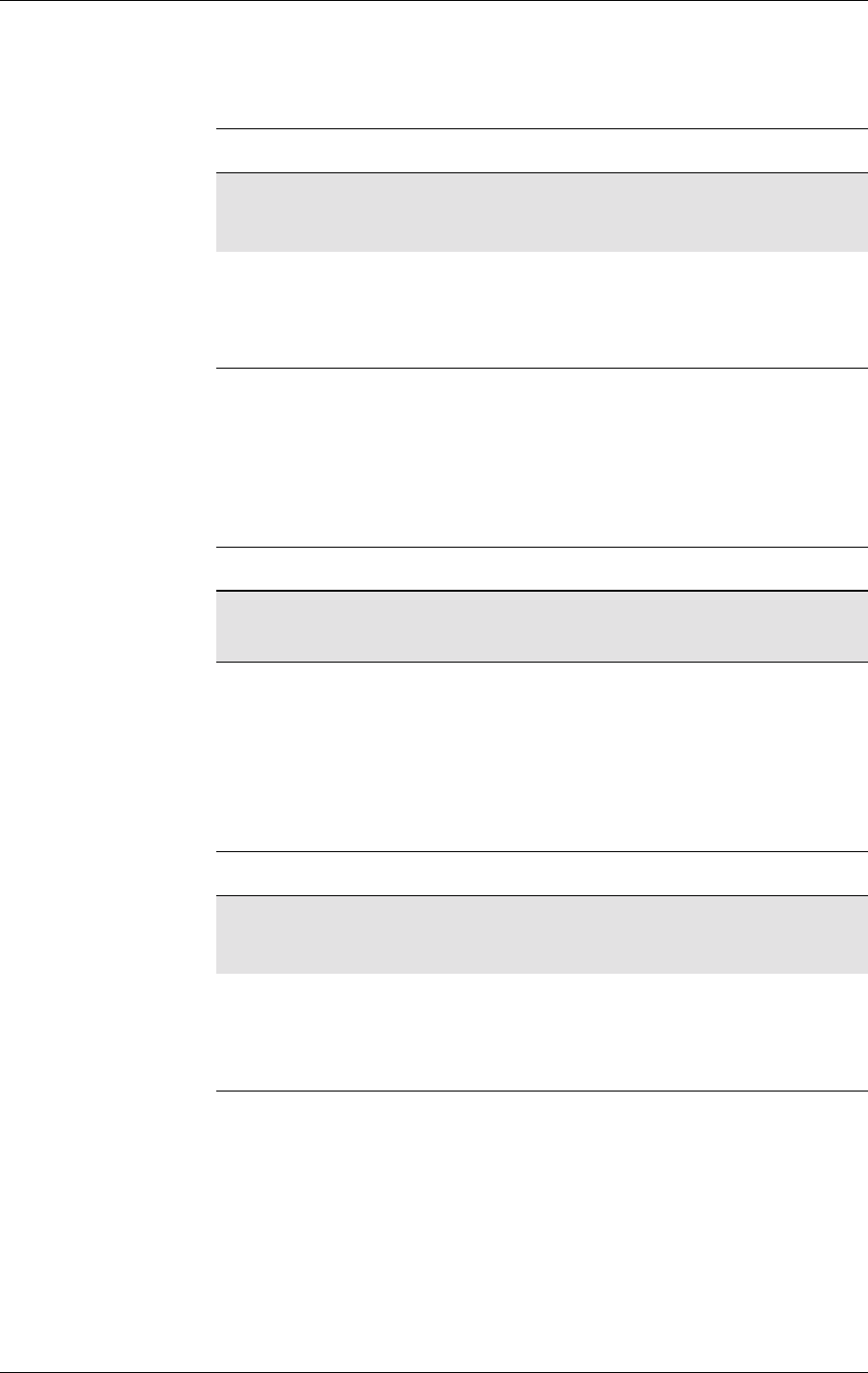
18. SIM APPLICATION TOOLKIT
283
LZT 123 7263 R1A
18.8 AT*E2STKN M2M STK Envelope (Menu Selection)
The application informs the ME about the selected menu item by means
of the AT*E2SKTN command. The ME answers with OK, or ERROR.
The Do command allows the external application to select the menu
item in the item list that was created by means of the SET-UP MENU
command.
Values follow the definition of “Item Identifier” TLV object, within
ENVELOPE (MENU SELECTION) command, as described in GSM
11.14.
18.9 AT*E2STKC M2M STK Set Up Call
The ME passes the parameters within SET UP CALL command to the
external application by means of the unsolicited result code *E2STKC,
so that it takes up the decision on progressing or rejecting the call.
Answer command allows the external application to send the
appropriate answer after receiving the unsolicited result code, and
before the timeout expires.
Description Command Possible responses
Do the menu
selection AT*E2STKN <sel_item> • +CME ERROR <err>
•OK
• ERROR
Test if the
command is
supported
AT*E2STKN=? • *E2STKN: (list of supported
<sel_item>)
• +CME ERROR <err>
•OK
• ERROR
<sel_item> Description
integer type The identifier is a single byte between 1 and 29. It identifies
the selected menu item corresponding to SET-UP MENU
command
Description Command Possible responses
Answer to the
reception of SET UP
CALL
AT*E2STKC=<answer> •+CMEERROR<err>
•OK
•ERROR
Test if the
command is
supported
AT*E2STKC=? • *E2STKC: (list of supported
<answer>)
•+CMEERROR<err>
•OK
•ERROR
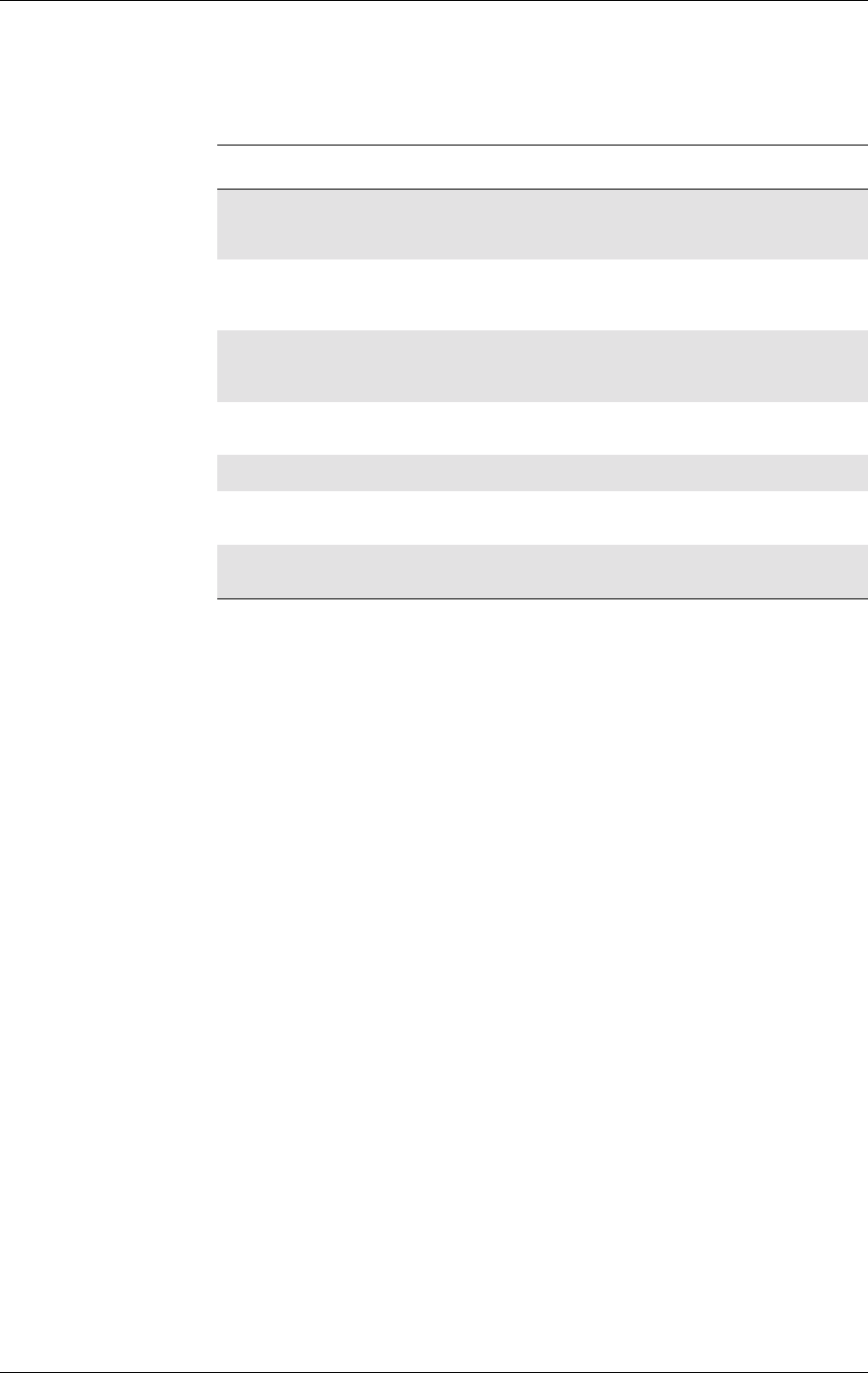
GM47/GM48 INTEGRATOR’S MANUAL
284 LZT 123 7263 R1A
If Answer command is sent once the timeout expires, an ERROR
response is generated.
<answer> Description
0OK. Performed as required. It corresponds to ‘00’
command performed succesfully, described in the GSM
standard
1OK. User terminated session. It corresponds to ‘10’
Proactive session terminated by the user, described in the
GSM standard
2OK. User requests backwards move. It corresponds to ‘11’
backward move in the proactive SIM session requested by
the user
3OK. No response from user. It corresponds to ‘12’ no
response from user
4FAILED. Screen is busy: the text could not be displayed
6FAILED. User rejected call set-up request. It corresponds to
‘22’
7FAILED. User cleared down call before connection or
network release. It corresponds to ‘23’
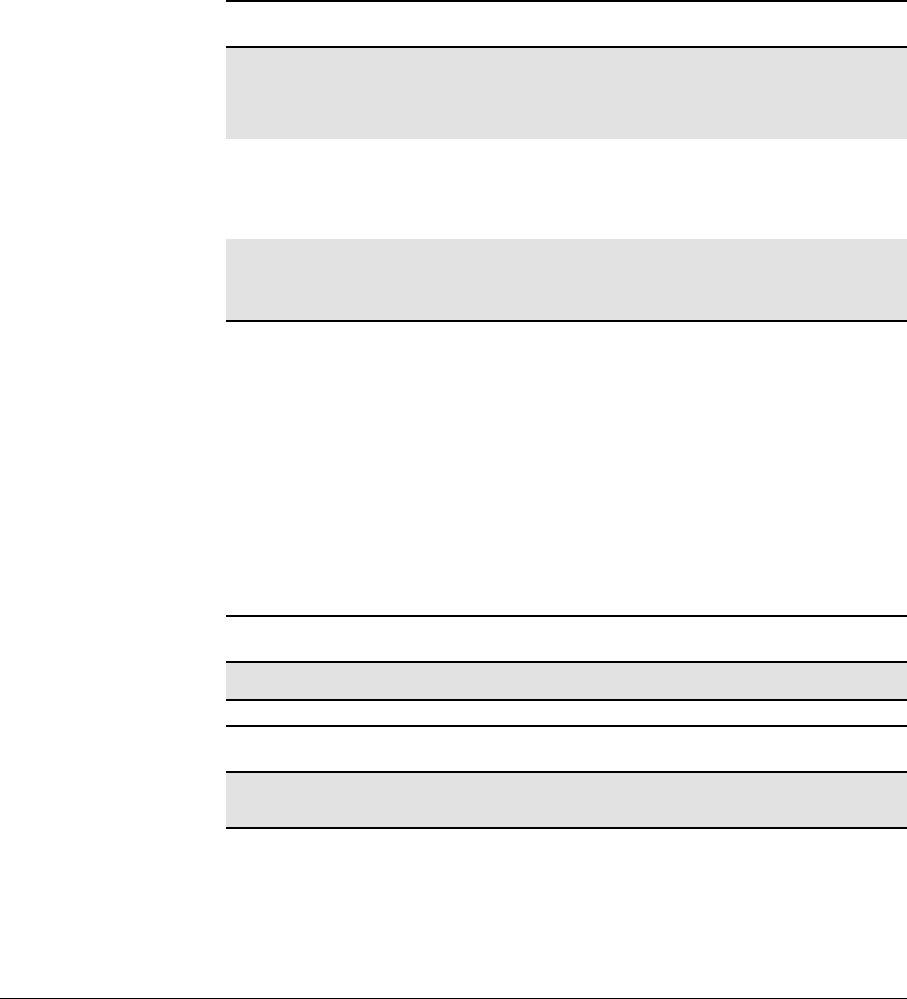
285
LZT 123 7263 R1A
19. Supplementary Services
19.1 AT+CPIN PIN Control
See 3.27, AT+CPIN PIN Control
19.2 AT+CACM Accumulated Call Meter
Resets the Advice of Charge related accumulated call meter value in
SIM file EFACM. ACM contains the total number of home units for
both the current and preceding calls. SIM PIN2 is usually required to
reset the value. If setting fails in an ME error, +CME ERROR: <err> is
returned. Refer subclause 9.2 for <err> values.
Note! This command must take into account what line is chosen with
AT*ELIN or via the MMI
Read command returns the current value of ACM.
Description Command Possible Responses
Reset the ACM
(Accumulated Call
Meter) value on the
SIM
AT+CACM=[<passwd>] •+CMEERROR:<err>
•OK
•ERROR
Show the current value AT+CACM? •+CACM:<acm>
+CME ERROR: <err>
•OK
•ERROR
Tests if the command is
supported AT+CACM=? •+CMEERROR:<err>
•OK
•ERROR
<passwd> Description
String type SIM-PIN2
<acm> Description
String type Accumulated call meter value similarly coded as <ccm>
under +CAOC
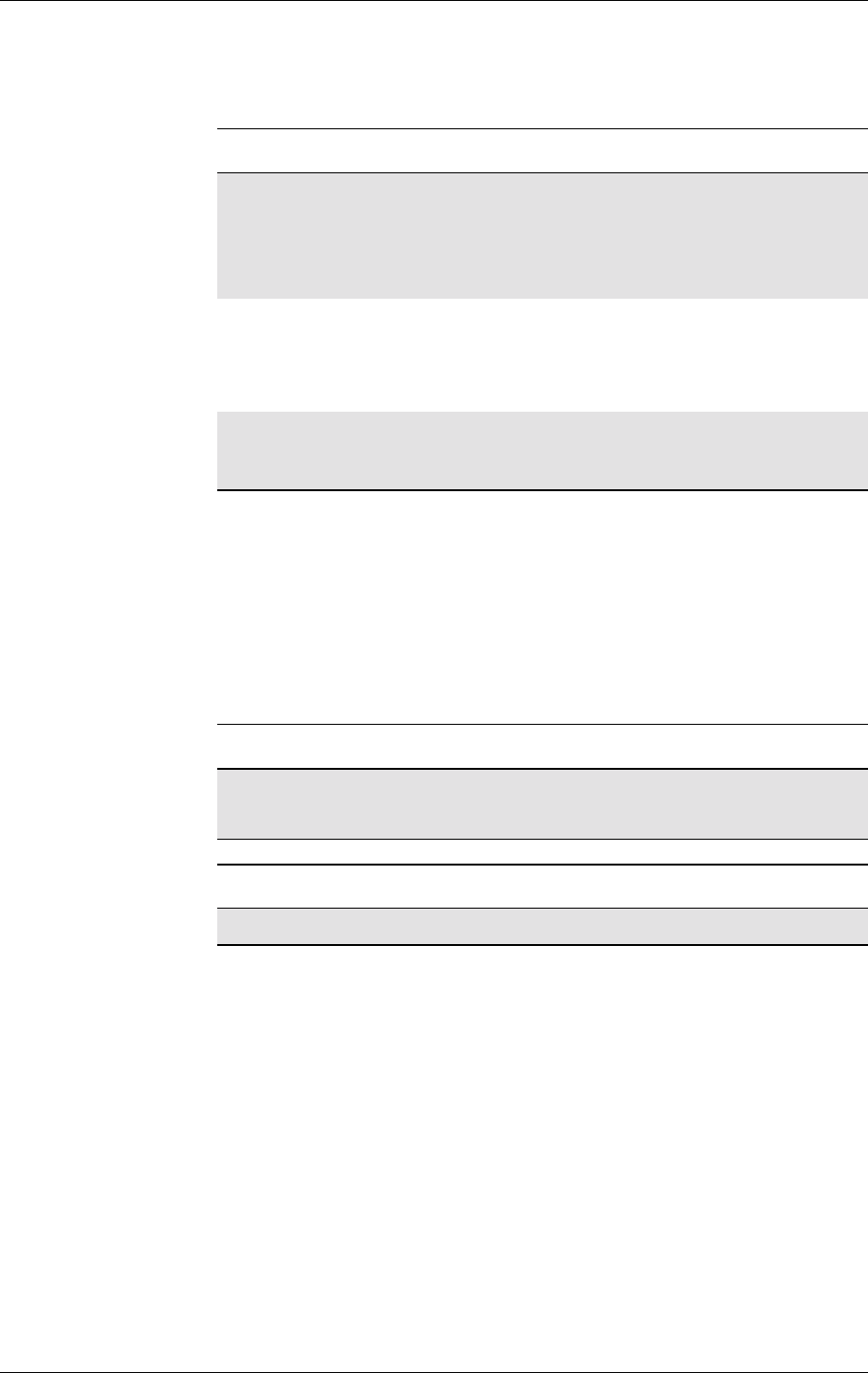
GM47/GM48 INTEGRATOR’S MANUAL
286 LZT 123 7263 R1A
19.3 AT+CAMM Accumulated Call Meter Maximum
Sets the Advice of Charge related accumulated call meter maximum
value in SIM file EFACMmax. ACMmax contains the maximum
number of home units allowed to be consumed by the subscriber. When
ACM (refer +CACM) reaches ACMmax calls are prohibited (see also
GSM 02.24 [26]). SIM PIN2 is usually required to set the value. If
setting fails in an ME error, +CME ERROR: <err> is returned.
Read command returns the current value of ACMmax.
Description Command Possible Responses
Set command sets the
Advice of Charge
related accumulated
call meter maximum
value in SIM file
EFACMmax
AT+CAMM=[<acmmax
>[,<passwd>]] •+CMEERROR:<err>
•OK
•ERROR
Read the current value AT+CAMM? •+CAMM:
<acmmax>
+CME ERROR: <err>
•OK
•ERROR
Test if the command if
supported AT+CAMM=? •+CMEERROR:<err>
•OK
•ERROR
<acmmax> Description
String type Accumulated call meter maximum value similarly coded
as <ccm> under +CAOC; value zero disables ACMmax
feature
<passwd> Description
String type SIM PIN2
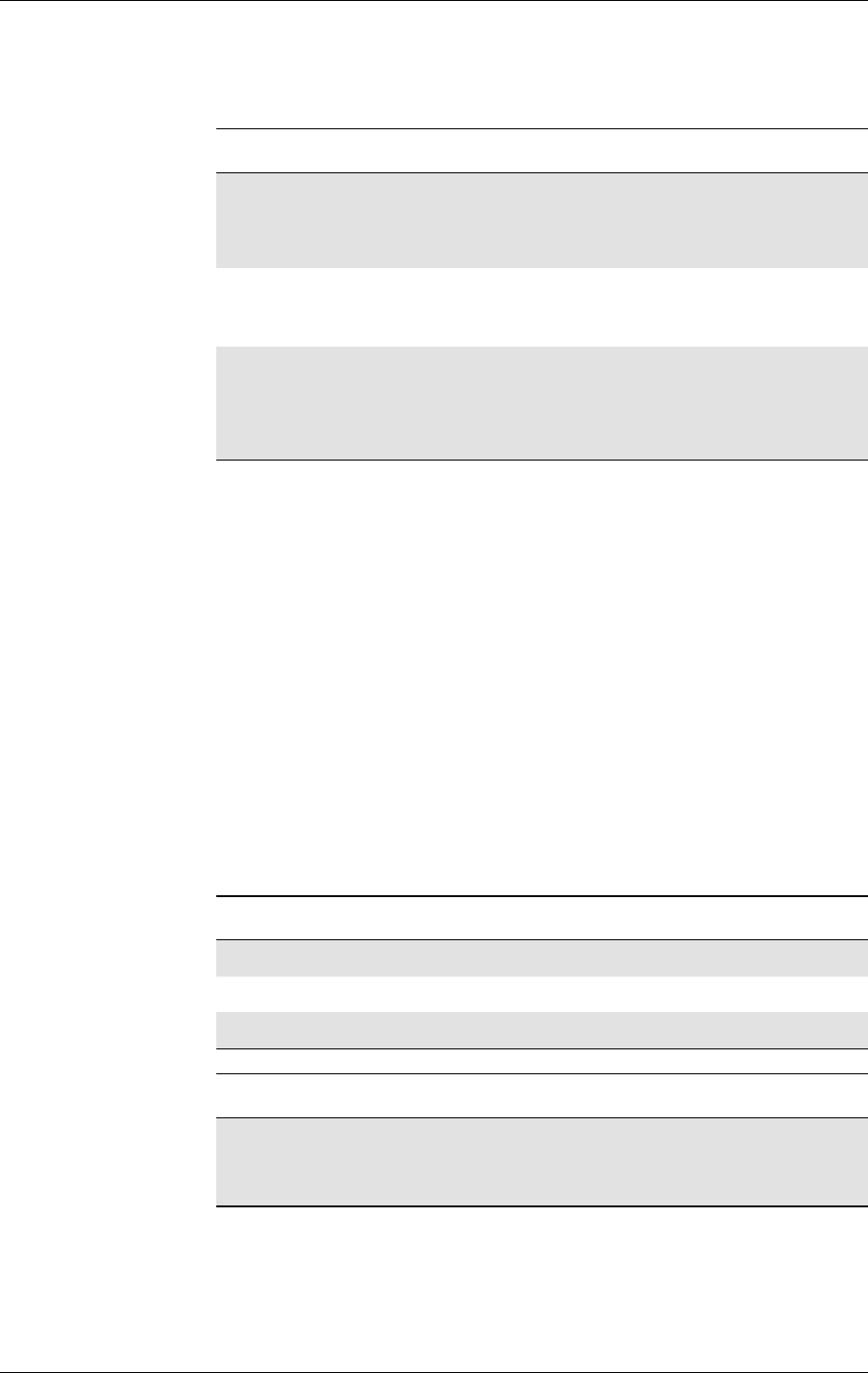
19. SUPPLEMENTARY SERVICES
287
LZT 123 7263 R1A
19.4 AT+CAOC Advice of Charge
Use of Advice of Charge supplementary service command (GSM 02.24
[11] and GSM 02.86 [12]) enables the subscriber to get information
about the cost of calls. With <mode>=0, the execute command returns
the current call meter value from the ME. The command also includes
the possibility to enable an unsolicited event reporting of the CCM
information. The unsolicited result code +CCCM: <ccm> is sent when
the CCM value changes, but no more than every 10 seconds.
Deactivation of the unsolicited event reporting is made with the same
command.
Read command indicates whether the unsolicited reporting is activated
or not. Read command is available when the unsolicited result code is
supported.
It is recommended (although optional) that the test command return the
supported mode values.
Description Command Possible Responses
Execute command AT+CAOC[=<mode>] • [+CAOC: <ccm>]
+CME ERROR: <err>
•OK
•ERROR
Read command,
shows the current
mode
AT+CAOC? •+CAOC:<mode>
•OK
•ERROR
Test command, shows
if the command is
supported
AT+CAOC=? •[+CAOC:(listof
supported
<mode>s]
•OK
•ERROR
<mode> Description
0Query CCM value
1Deactivate the unsolicited reporting of CCM value
2Activate the unsolicited reporting of CCM value
<ccm> Description
String type Threebytesofthecurrentcallmetervalueinhexadecimal
format (e.g. “00001E” indicates decimal value 30); value is
in home units and bytes are similarly coded as ACMmax
value in the SIM
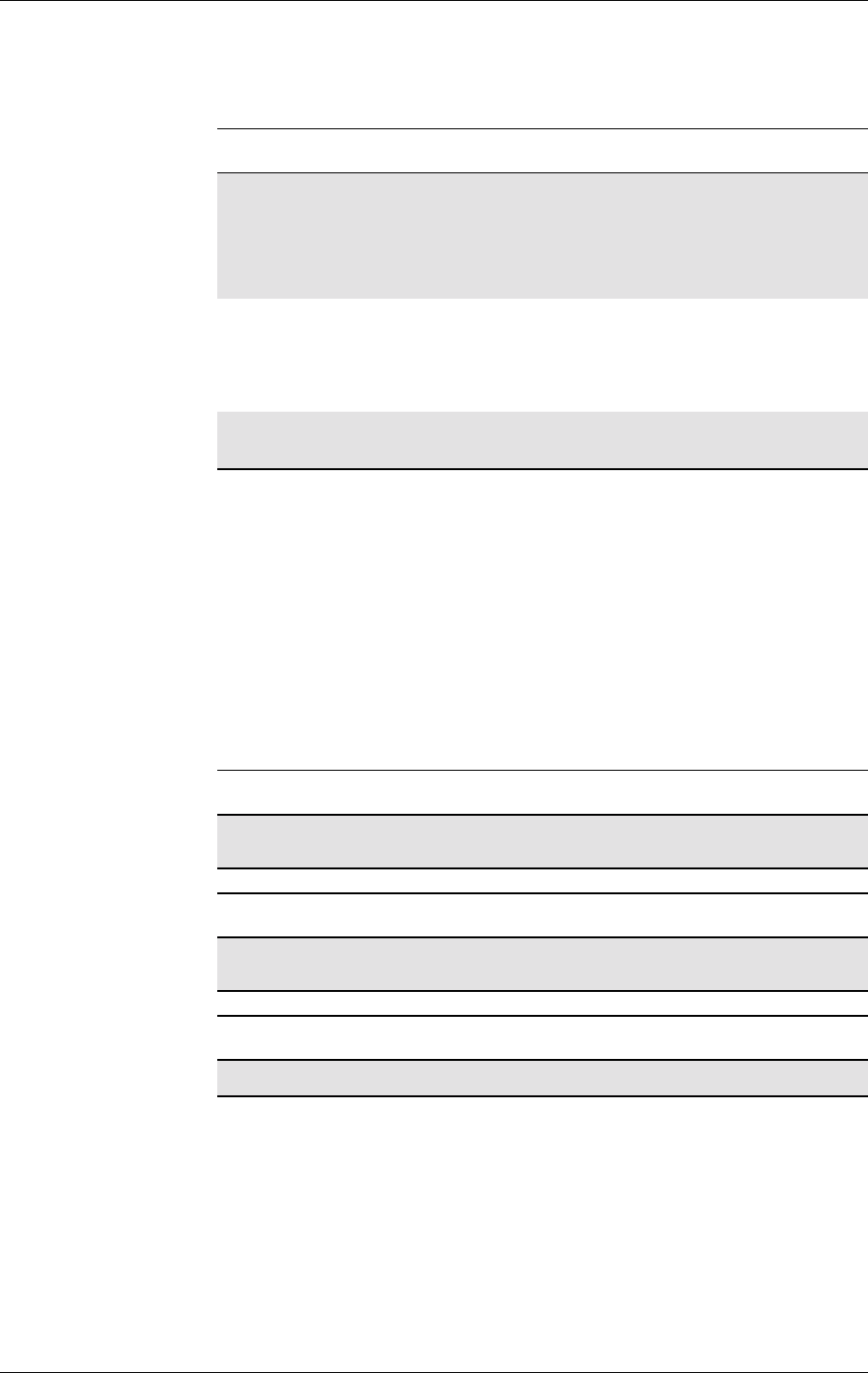
GM47/GM48 INTEGRATOR’S MANUAL
288 LZT 123 7263 R1A
19.5 AT+CPUC Price Per Unit and Currency Table
Sets the parameters of Advice of Charge related price per unit and
currency table in SIM file EFPUCT. PUCT information can be used to
convert the home units (as used in +CAOC, +CACM and +CAMM)
into currency units. SIM PIN1 or SIM PIN2 (depending on which SIM
card that is used) is required to set the parameters. If setting fails in an
ME error, +CME ERROR: <err> is returned.
Read command returns the current parameters of PUCT.
For information on the character set see AT+CSCS in the Short
Message Services section.
Description Command Possible Responses
Set command sets the
parameters of Advice
of Charge related
price per unit and
currency table in SIM
file EFPUCT
AT+CPUC=<currency>,
<ppu>[,<passwd>] •+CMEERROR:<err>
•OK
•ERROR
Shows the current
values AT+CPUC? •+CPUC:
<currency>,<ppu>
+CME ERROR: <err>
•OK
•ERROR
Shows if the command
is supported AT+CPUC=? •OK
•ERROR
<currency> Description
String Alpha-identifier of the currency code (3 characters, e.g.
SEK)
<ppu> Description
String type price per unit; dot is used as a decimal separator (e.g.
“2.66”)
<passwd> Description
String type SIM PIN1 or SIM PIN2
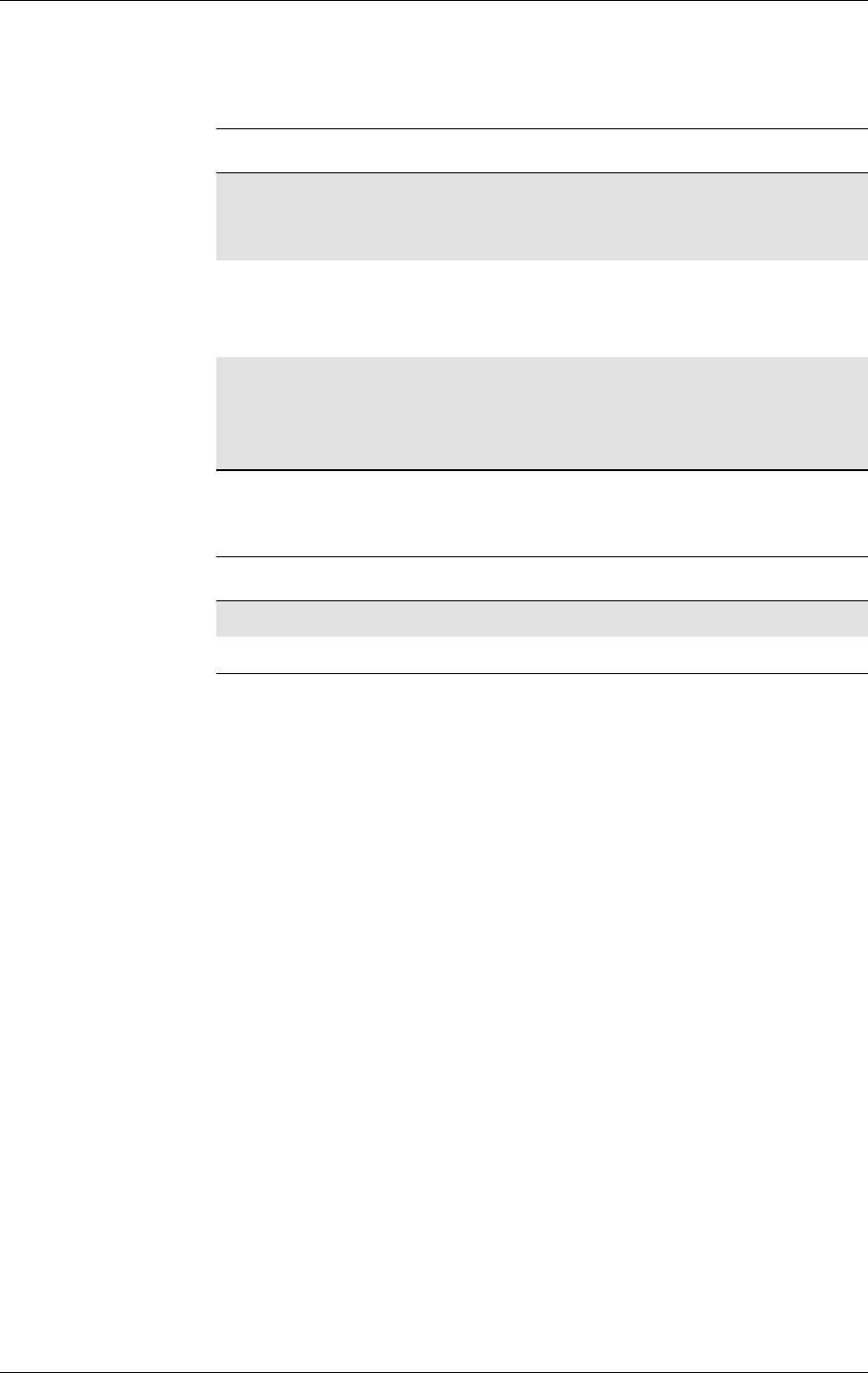
19. SUPPLEMENTARY SERVICES
289
LZT 123 7263 R1A
19.6 AT*EDIF Ericsson Divert Function
This command enables and disables notification of divert status changes
with the unsolicited result code *EDIF.
Description Command Possible Responses
Enable and disable
notification with the
unsolicited result code
*EDIF
AT*EDIF=<onoff> •+CMEERROR:<err>
•OK
•ERROR
Show the current
setting AT*EDIF? •*EDIF:<onoff>
+CME ERROR: <err>
•OK
•ERROR
Show if the command
is supported AT*EDIF=? •*EDIF:(listof
supported <onoff>s)
+CME ERROR: <err>
•OK
•ERROR
<onoff> Description
0Disable notification with the unsolicited result code *EDIF
1Enable notification with the unsolicited result code *EDIF
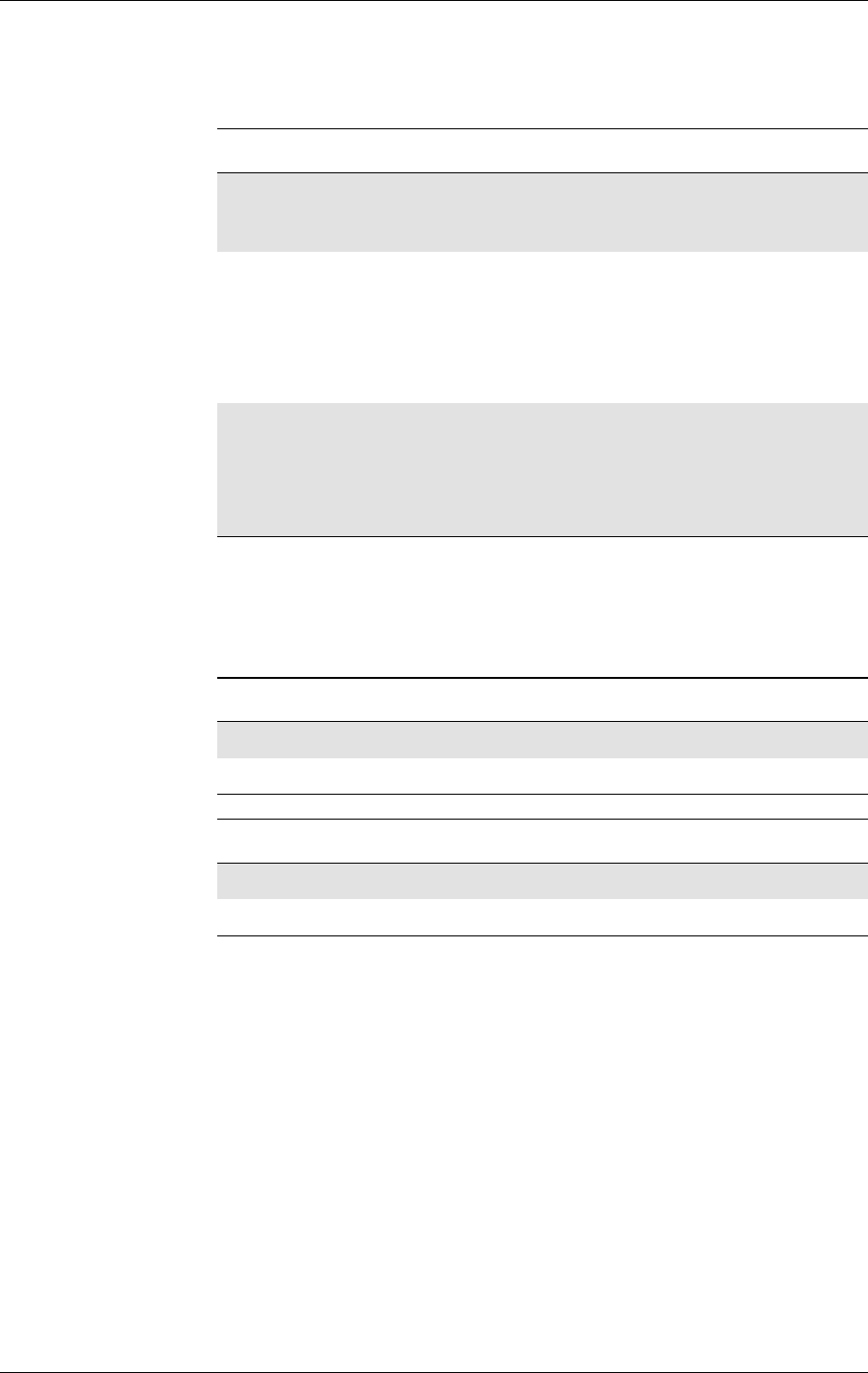
GM47/GM48 INTEGRATOR’S MANUAL
290 LZT 123 7263 R1A
19.7 AT*EIPS Identity Presentation Set
This command enables or disables the presentation of the alpha tag of
the Caller ID and Called ID to the TE if the ID is recognized. The alpha
tag is the first name and the last name. The presentation is done by an
unsolicited result code, *ELIP for Caller ID and *EOLP for Called ID.
Description Command Possible Responses
Sets the alpha tag to
be displayed in the ME AT*EIPS=<ID>,
<alphatag mode> •+CMEERROR:<err>
•OK
•ERROR
Read the current
setting AT*EIPS? • *EIPS: <ID1>,<alphatag
mode1><CR><LF>
*EIPS:<ID2>,<alphatag
mode2><CR><LF>
•+CMEERROR:<err>
•OK
•ERROR
Test if the command is
supported and list the
possible settings
AT*EIPS=? • *EIPS: (list of supported
ID>s),(list of supported
<alphatag mode>s)
•+CMEERROR:<err>
•OK
•ERROR
<ID> Description
1Caller ID (*ELIP)
2Called ID (*EOLP)
<alphatag mode> Description
0Off
1First name and last name displayed
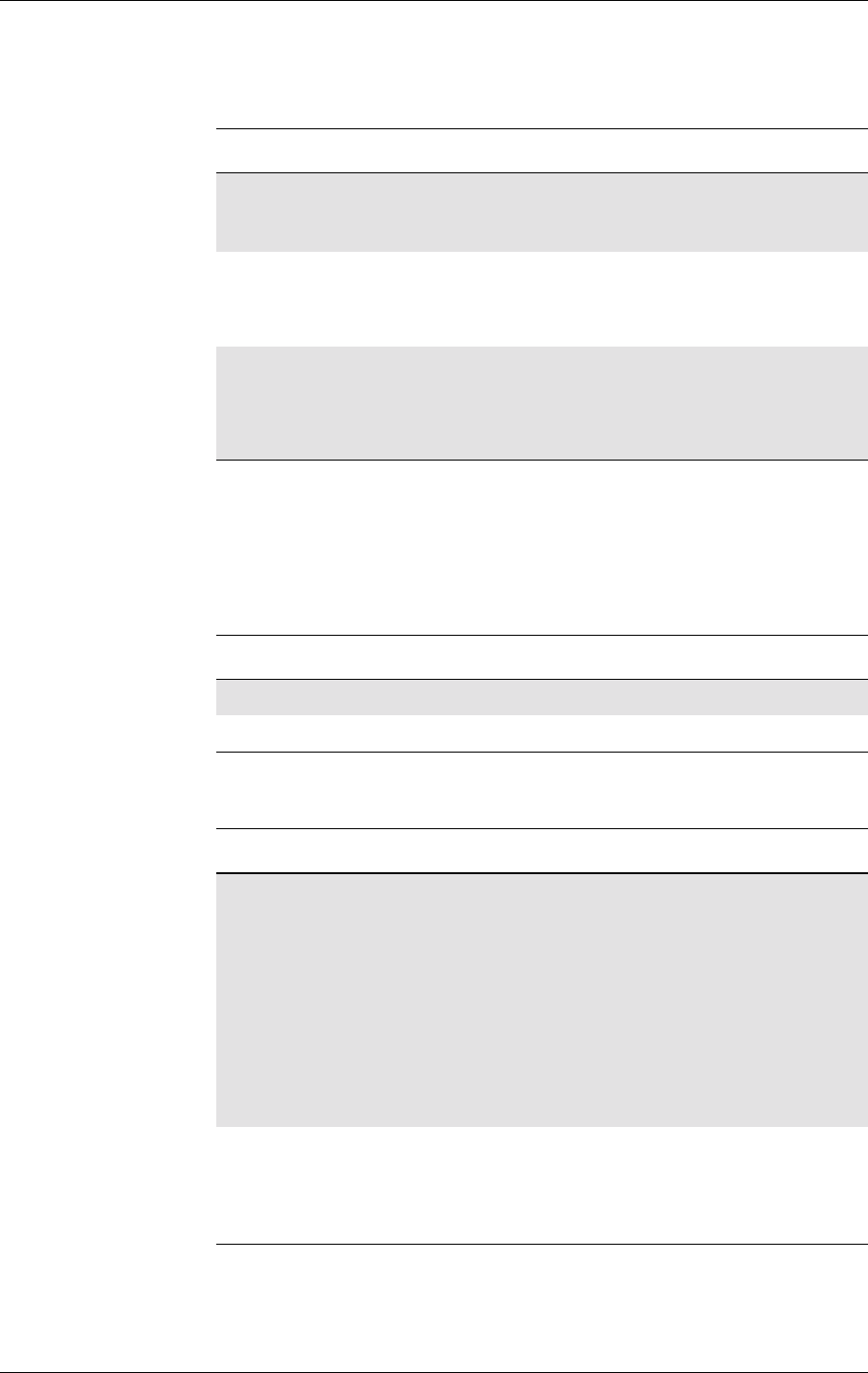
19. SUPPLEMENTARY SERVICES
291
LZT 123 7263 R1A
19.8 AT*ELIN Ericsson Line Set
This command requests the ME to set the current line to <line>.
Note! The following command reads its value from the current line and is thus
affected by the use of *ELIN:
AT+CACM - Accumulated Call Meter
19.9 AT+CCFC Call Forwarding number and Conditions
This command allows control of the call forwarding supplementary
service according to 3GPP TS 22.082 [4]. Registration, erasure,
activation, deactivation, and status query are supported. When querying
Description Command Possible Responses
Set the current line to
<line> AT*ELIN=<line> •+CMEERROR:<err>
•OK
•ERROR
Read the current line AT*ELIN? •*ELIN:<line>
+CME ERROR: <err>
•OK
•ERROR
Test if the command is
supported AT*ELIN=? •*ELIN:listof
supported <line>s
+CME ERROR: <err>
•OK
•ERROR
<line> Description
1L1
2L2
Description Syntax Possible Responses
Request
Calling
forwarding
number and
conditions
AT+CCFC=<reason>
,<mode>[,<number
>[,<type>[,<class>
[,<subaddr>
[,<satype>
[,<time>]]]]]]
• +CME ERROR <err>
•when <mode>=2 and
command successful:
+CCFC:
<status>,<class1>[,<number>,
<type>[,<subaddr>,<satype>
[,<time>]]][<CR><LF>
+CCFC:
<status>,<class2>[,<number>,<t
ype>[,<subaddr>,<satype>[,<ti
me>]]][...]]
•OK
•ERROR
Show if the
command is
supported
AT+CCFC=? • + CCFC: (list of supported
<reason>s)
• +CME ERROR <err>
•OK
•ERROR
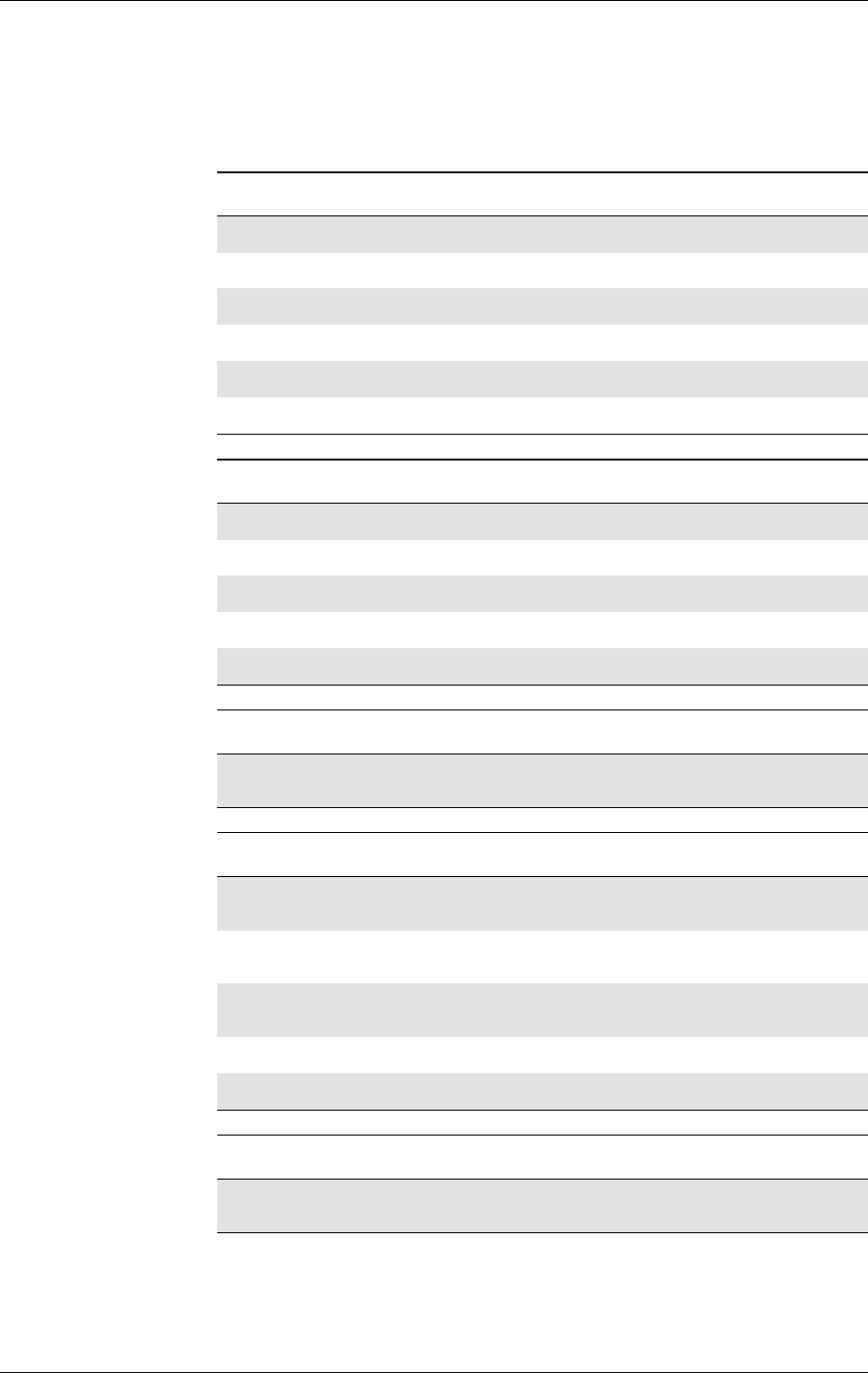
GM47/GM48 INTEGRATOR’S MANUAL
292 LZT 123 7263 R1A
the status of a network service (<mode>=2) the response line for ‘not
active’ case (<status>=0) should be returned only if service is not active
for any <class>.
<reason> Description
0Unconditional
1Mobile busy
2No reply
3Not reachable
4All call forwarding (refer 3GPP TS 22.030 [19])
5All conditional call forwarding (refer 3GPP TS 22.030 [19])
<mode> Description
0Disable
1Enable
2Query status
3Registration
4Erasure
<number> Description
string type String type phone number of forwarding address in format
specified by <type>
<type> Description
integer format Type of address octet
(refer GSM 04.08 [3] section 10.5.4.7)
129 ISDN/telephony numbering plan, national/international
unknown. Default setting if ‘+’ is not in <sca>
145 ISDN/telephony numbering plan, international number.
Default setting if '+' is in <sca>
161 ISDN/telephony numbering plan, national number
128 - 255 Other values refer GSM 04.08 [3] section 10.5.4.7
<subaddr> Description
string type string type subaddress of format specified by <satype>.
Not supported
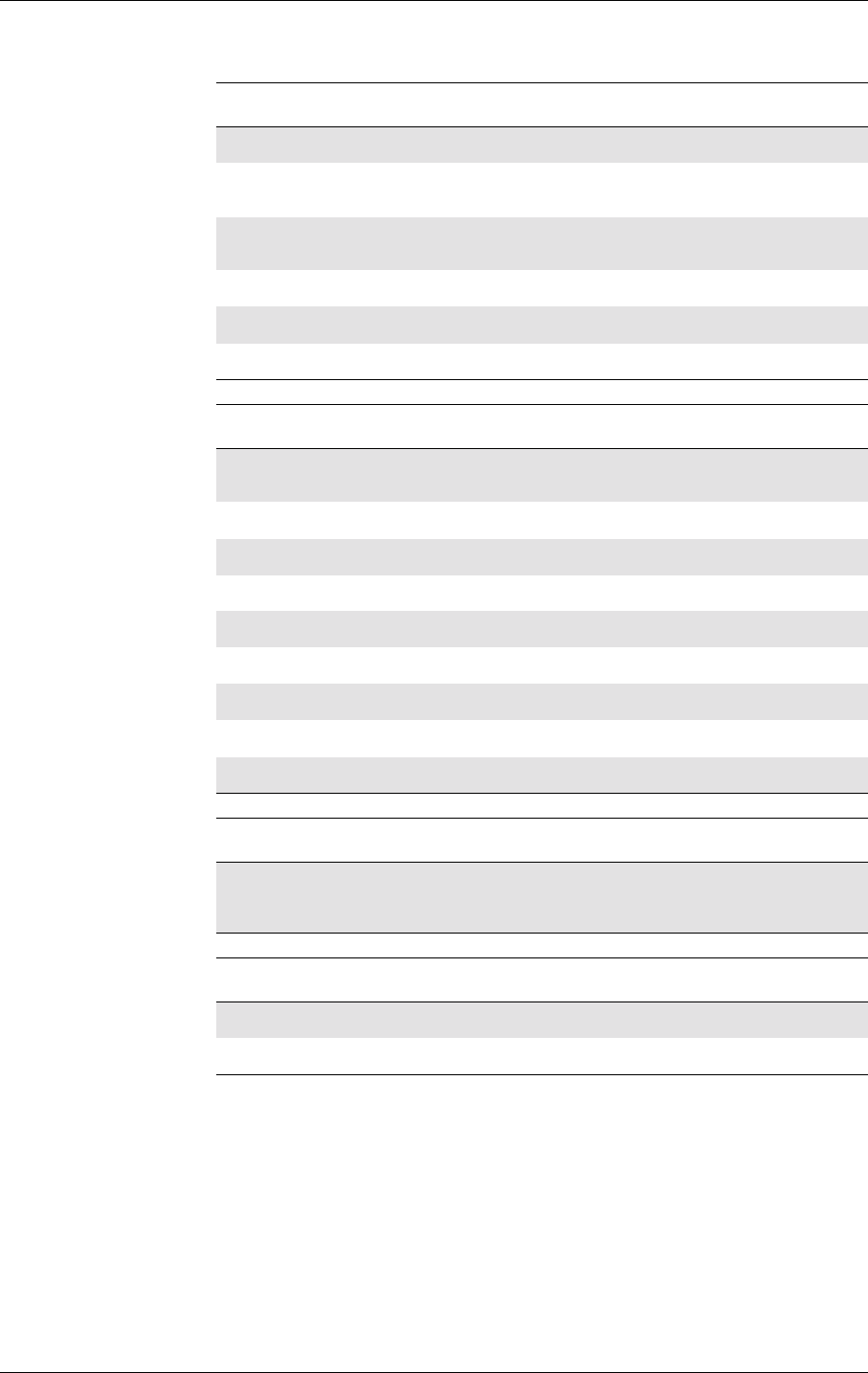
19. SUPPLEMENTARY SERVICES
293
LZT 123 7263 R1A
<satype> Description
integer format Type of subaddress octet
128 NSAP (X.213/ISO 8348 AD2), even number of address
signals
136 NSAP (X.213/ISO 8348 AD2), odd number of address
signals
160 User defined, even number of address signals
168 User defined, odd number of address signals
128 - 255 Other values reserved
<classx> Description
integer Sum of integers each representing a class of information.
Default value=7
1Voice L1
2Data
4Fax
8Short message service
16 Data circuit sync
32 Data circuit async
64 Dedicated packet access
128 Dedicated PAD access
<time> Description
1..30 When no reply is enabled or queried, this gives the time in
seconds to wait before a call is forwarded, default value is
20. Not supported
< status > Description
0Not active
1Active
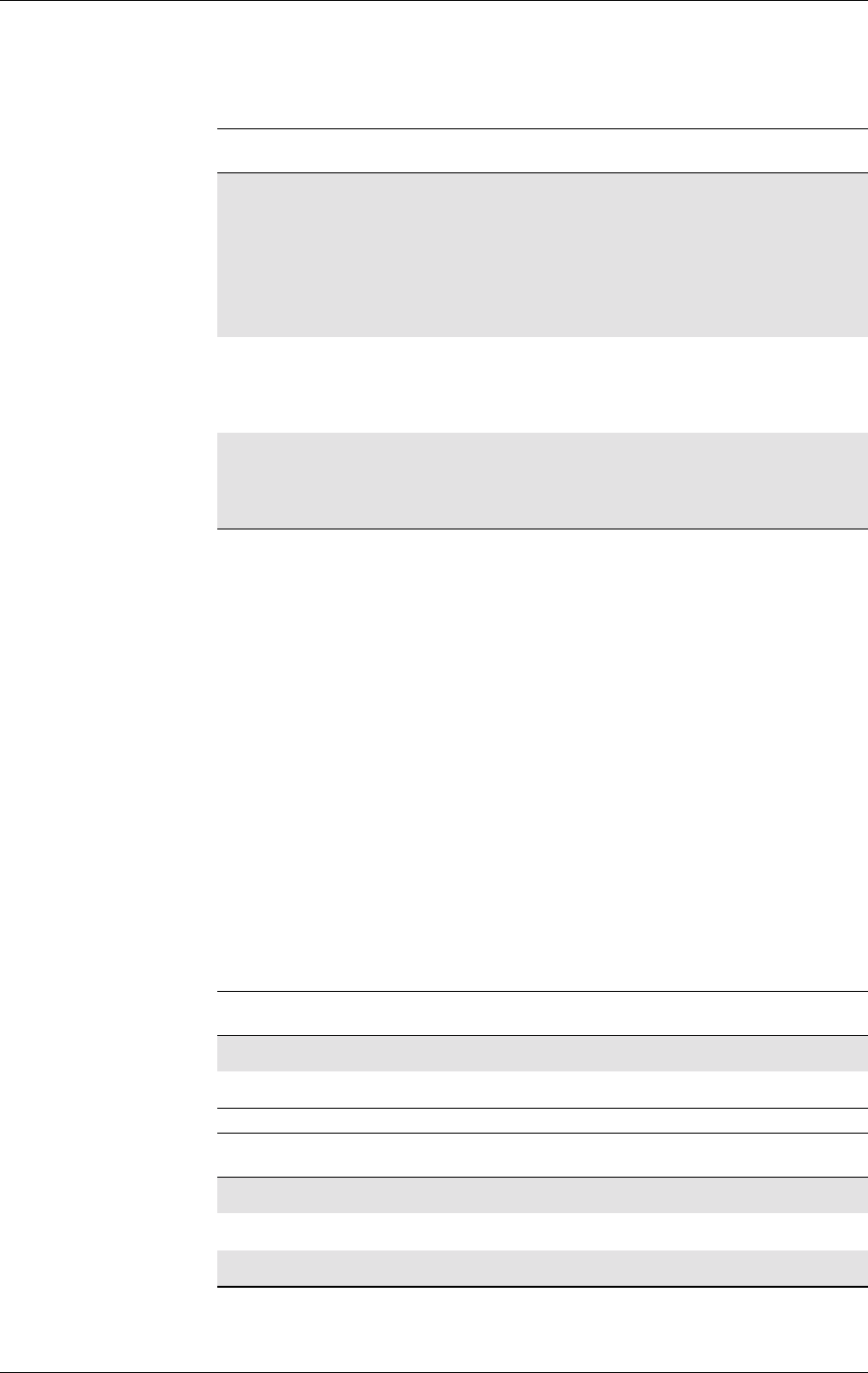
GM47/GM48 INTEGRATOR’S MANUAL
294 LZT 123 7263 R1A
19.10 AT+CCWA Call Waiting
This command allows control of the call waiting supplementary service
according to 3GPP TS 22.083 [5]. Activation, deactivation and status
query are supported. When querying the status of a network service
(<mode> = 2) the response line for 'not active' case (<status> = 0)
should be returned only if service is not active for any <class>.
Parameter <n> is used to disable/enable the presentation of an
unsolicited result code +CCWA:
<number>,<type>,<class>,[<alpha>][,<CLI validity>] to the TE when
call waiting service is enabled. The command is abortable when the
network is interrogated.
The interaction of this command with other commands based on other
GSM/UMTS supplementary services is described in the GSM/UMTS
standards.
Test command returns values supported by the TA as a compound
value.
Description Command Possible Responses
Request call
waiting AT+CCWA=[<n>
[,<mode>
[,<class>]]]
•when<mode>=2 and command
successful:
+CCWA:<status>,<class1>[<CR>
<LF>
+CCWA: <status>,<class2>[…]]
+CME ERROR <err>
•OK
•ERROR
Show the
current setting AT+CCWA? • +CCWA: <n>
+CME ERROR <err>
•OK
•ERROR
Show if the
command is
supported
AT+CCWA=? • +CCWA: (list of supported <n>s)
+CME ERROR <err>
•OK
•ERROR
<n> Description
0Disable
1Enable
<mode> Description
0Disable
1Enable
2Query status
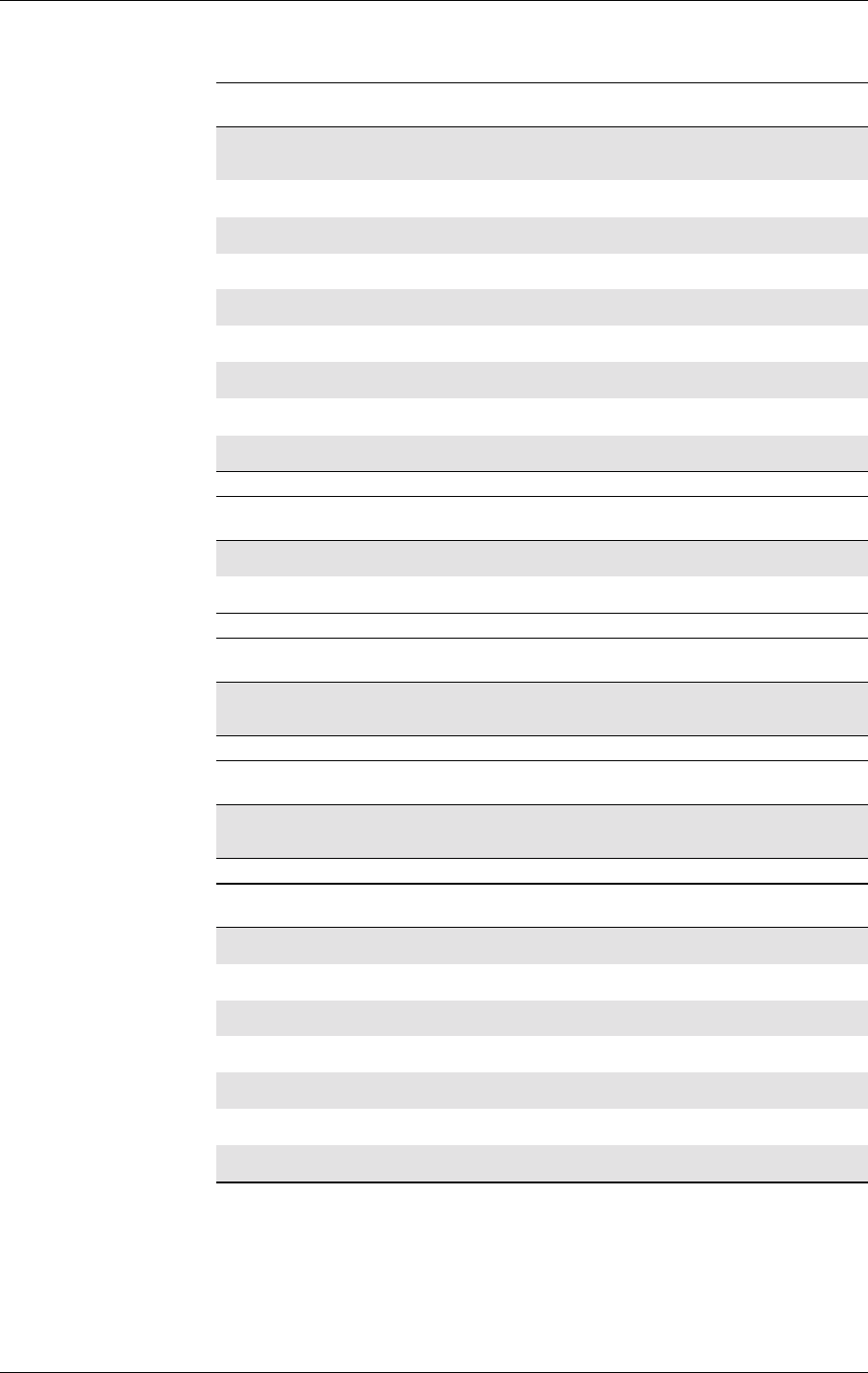
19. SUPPLEMENTARY SERVICES
295
LZT 123 7263 R1A
<classx> Description
integer Sum of integers each representing a class of information.
Default value=7
1Voice L1
2Data
4Fax
8Short message service
16 Data circuit sync
32 Data circuit async
64 Dedicated packet access
128 Dedicated PAD access
<status > Description
0Not active
1Active
<number > Description
String type String type phone number of forwarding address in format
specified by <type>
<type > Description
Integer format Type of address octet in integer format (GSM 04.08
10.5.4.7, [3]);
<err> Description
0Phone failure
3Operation not allowed
4Operation not supported
21 Invalid index
30 No network service
31 Network timeout
100 Unknown
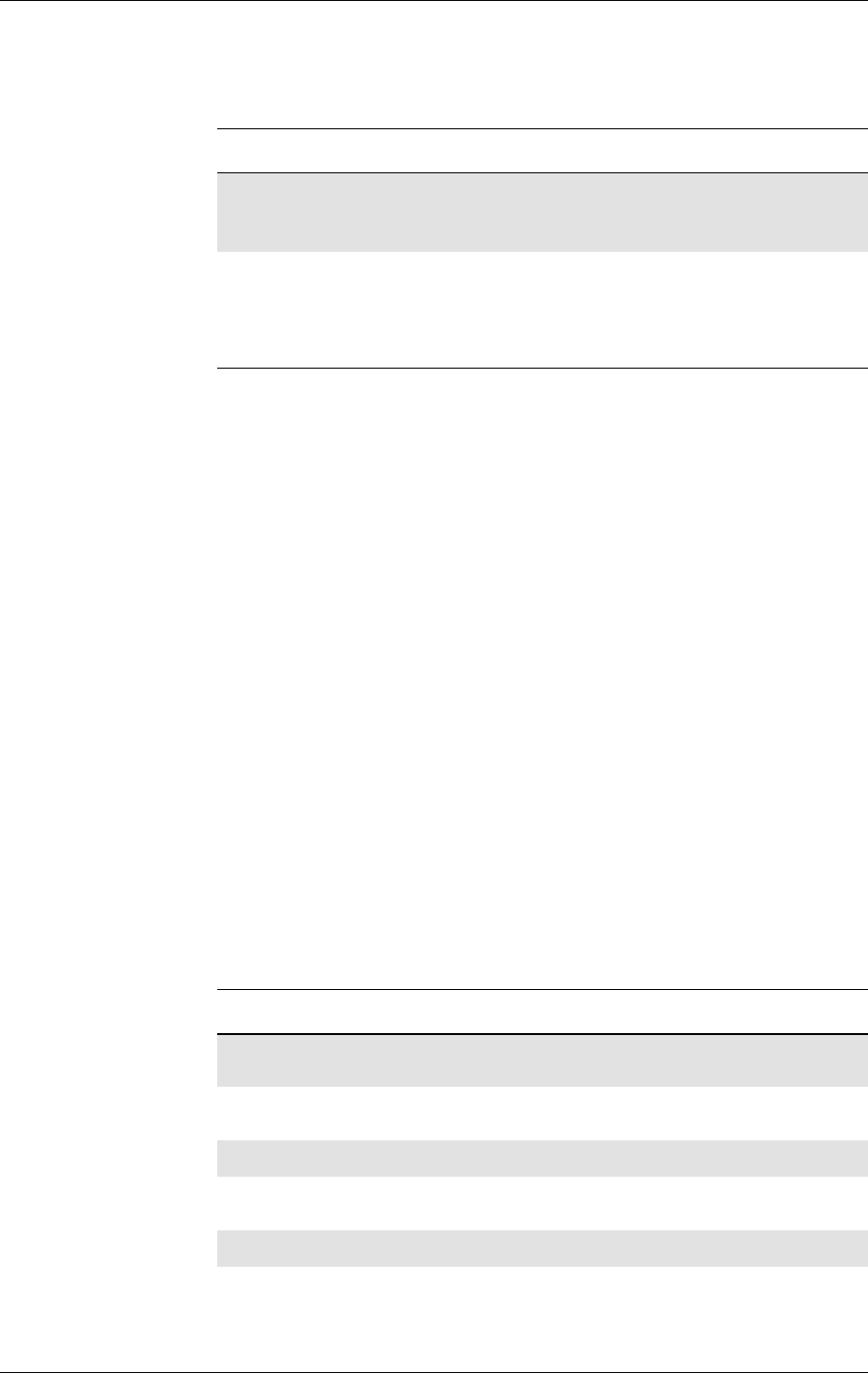
GM47/GM48 INTEGRATOR’S MANUAL
296 LZT 123 7263 R1A
19.11 AT+CHLD Call Hold and Multiparty
This command allows control of the following call related services:
• a call can be temporarily disconnected from the ME but the
connection is retained by the network;
• multiparty conversation (conference calls);
• the served subscriber who has two calls (one held and the other
either active or alerting) can connect the other parties and release the
served subscriber's own connection.
Calls can be put on hold, recovered, released, added to conversation,
and transferred similarly as defined in 3GPP TS 22.030.
This is based on the GSM/UMTS supplementary services HOLD (Call
Hold; refer 3GPP TS 22.083 [5] clause 2), MPTY (MultiParty; refer
3GPP TS 22.084 [22]) and ECT (Explicit Call Transfer; refer 3GPP TS
22.091 [29]). The interaction of this command with other commands
based on other GSM/UMTS supplementary services is described in the
GSM/UMTS standards.
Note! Call Hold and MultiParty are only applicable to teleservice 11.
It is recommended (although optional) that test command returns a list
of operations which are supported. The call number required by some
operations is denoted by “x” (e.g. +CHLD: (0,0x,1,1x,2,2x,3)).
Description Command Possible Responses
Request call related
supplementary
services
AT+CHLD=<n> • +CME ERROR <err>
•OK
•ERROR
Show if the command
is supported AT+CHLD=? •+CHLD:(listof
supported <n>s)
• +CME ERROR <err>
•OK
•ERROR
<n> Description
... Integer type; equals to numbers entered before SEND
button in GSM 02.30 [7] subclause 4.5.5.1
0Releases all held calls or sets User Determined User Busy
(UDUB) for a waiting call
0X ReleasesaspecificcallXfromaheldmultipartycall
1Releases all active calls (if any exist) and accepts the
other (held or waiting) call
1X Releases a specific active call X
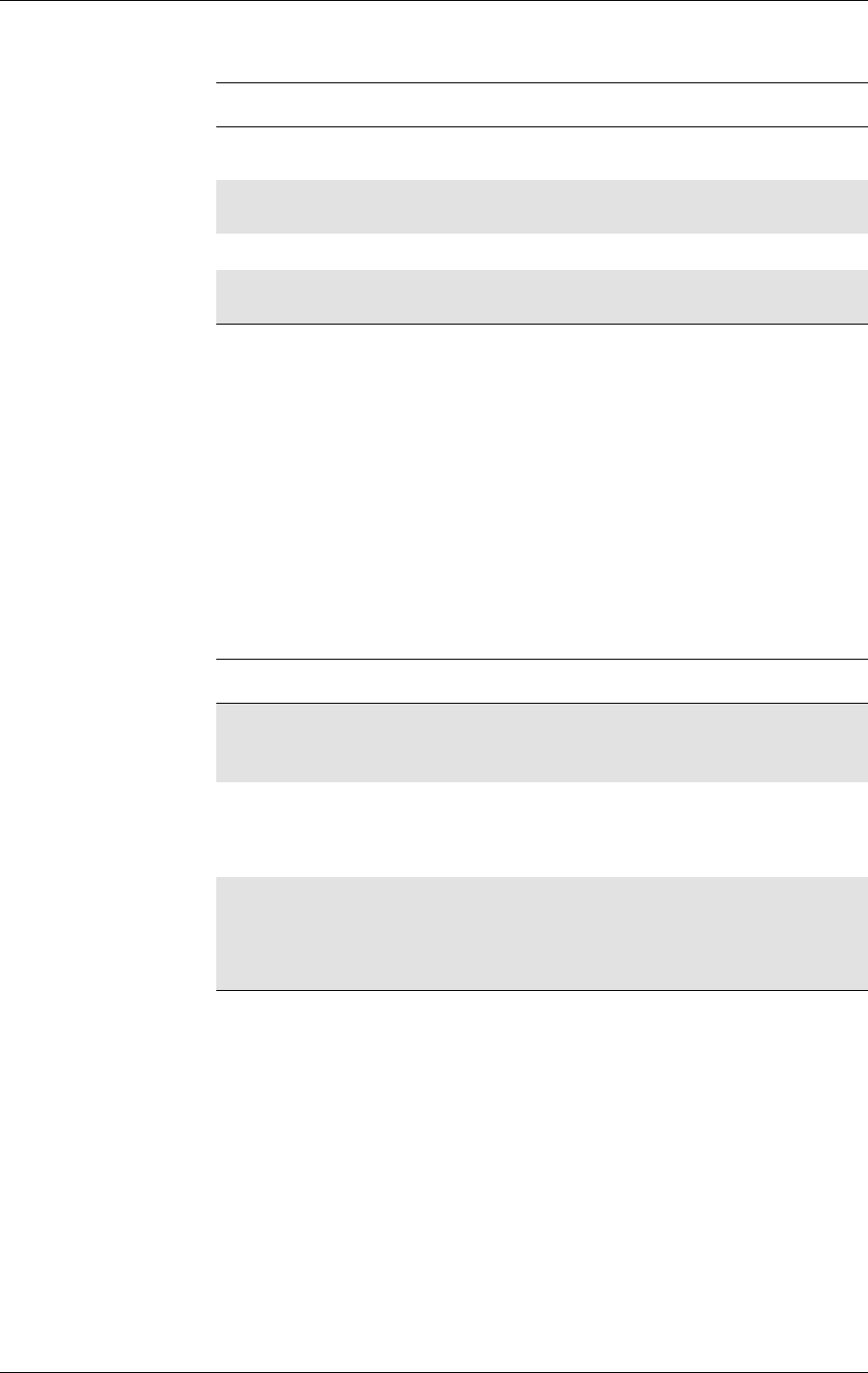
19. SUPPLEMENTARY SERVICES
297
LZT 123 7263 R1A
“X” is the numbering (starting with 1) of the call given by the sequence
of setting up or receiving the calls (active, held or waiting) as seen by
the served subscriber. Calls hold their number until they are released.
New calls take the lowest available number. Where both a held and a
waiting call exists, the above procedures shall apply to the waiting call
(i.e. not to the held call) in conflicting situation.
Note! The “directory number” case shall be handled with dial command D,
and the END case with hangup command H (or +CHUP).
19.12 AT+CLIP Calling Line Identification
This command refers to the GSM/UMTS supplementary service CLIP
(Calling Line Identification Presentation) that enables a called
subscriber to get the calling line identity (CLI) of the calling party when
receivinga mobile terminated call. Set command enables or disables the
presentation of the CLI at the TE. It has no effect on the execution of
the supplementary service CLIP in the network.
Read command gives the status of <n>, and also triggers an
interrogation of the provision status of the CLIP service according
3GPP TS 22.081 (given in <m>).Test command returns values
supported by the TA as a compound value
2Places all active calls (if any exist) on hold and accepts
the other (held or waiting) call
2X Places all active calls on hold, except call X with which
communication is supported
3Adds a held call to the conversation
4Connects the two calls and disconnects the subscriber
from bothcalls
<n> Description
Description Command Possible Responses
Request calling line
identification AT+CLIP=<n> • +CME ERROR <err>
•OK
•ERROR
Shows the current
setting AT+CLIP? •+CLIP:<n>,<m>
+CME ERROR <err>
•OK
•ERROR
Show if the command
is supported AT+CLIP=? •+CLIP:(listof
supported <n>s)
+CME ERROR <err>
•OK
•ERROR
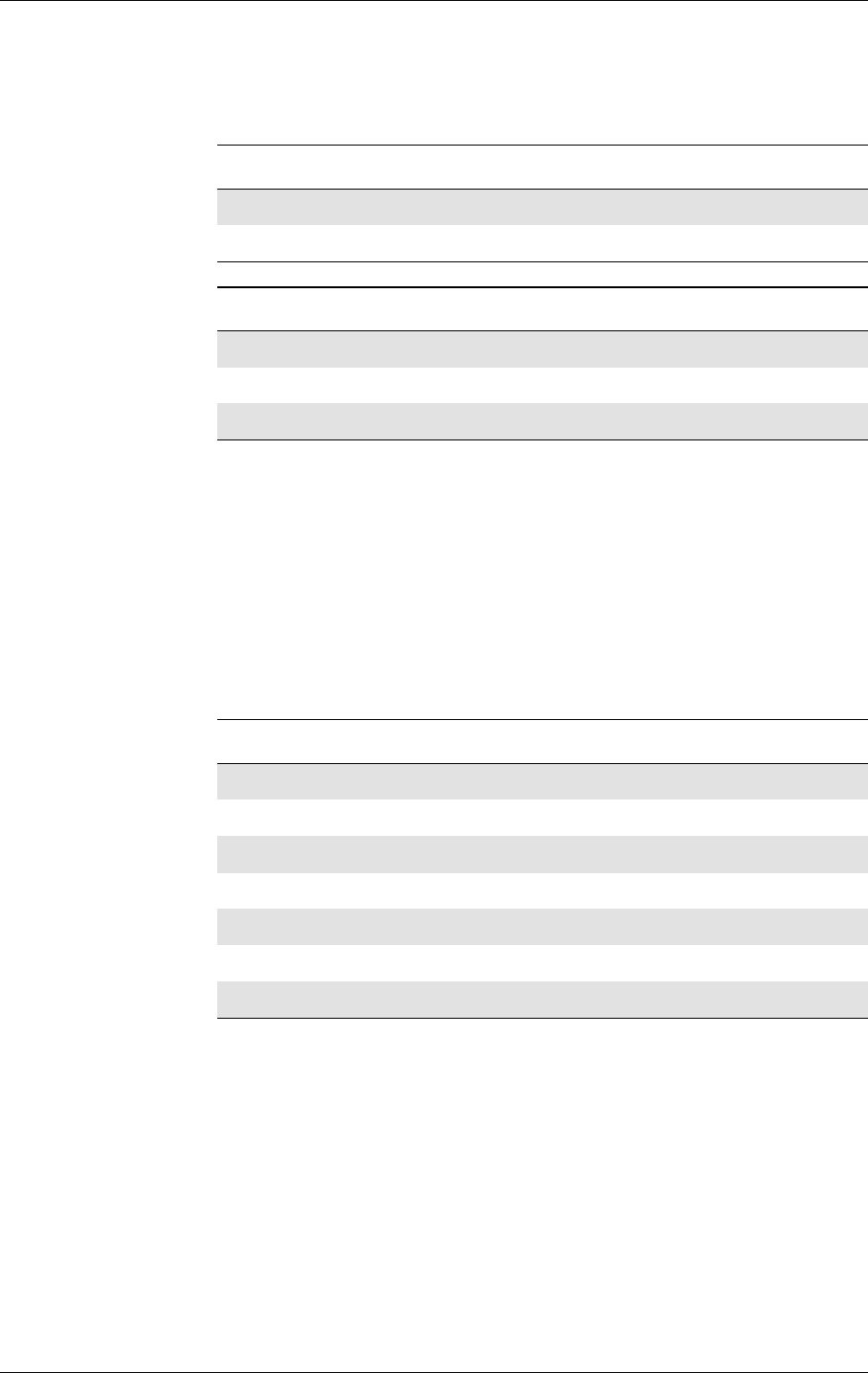
GM47/GM48 INTEGRATOR’S MANUAL
298 LZT 123 7263 R1A
Test command returns values supported by the TA as a compound
value.
Note! When CLI is not available ( <CLI validity>=2), <number> shall be an
empty string (“”) and <type> value willnot be significant. Nevertheless,
TA may return the recommended value 128 for <type> ((TON/NPI
unknown in accordance with GSM 04.08 [8] subclause 10.5.4.7). When
CLI has been withheld by the originator, (<CLI validity>=1) and the
CLIP is provisioned with the "override category" option (refer 3GPP TS
22.081[3] and 3GPP TS 23.081[40]), <number> and <type> is
provided. Otherwise, TA shall return the same setting for <number>
and <type> as if the CLI was not available.
<n> Description
0Disable
1Enable
<m> Description
0CLIP not provisioned
1CLIP provisioned
2Unknown (e.g. no network)
<err> Description
0Phone failure
3Operation not allowed
4Operation not supported
21 Invalid index
30 No network service
31 Network timeout
100 Unknown
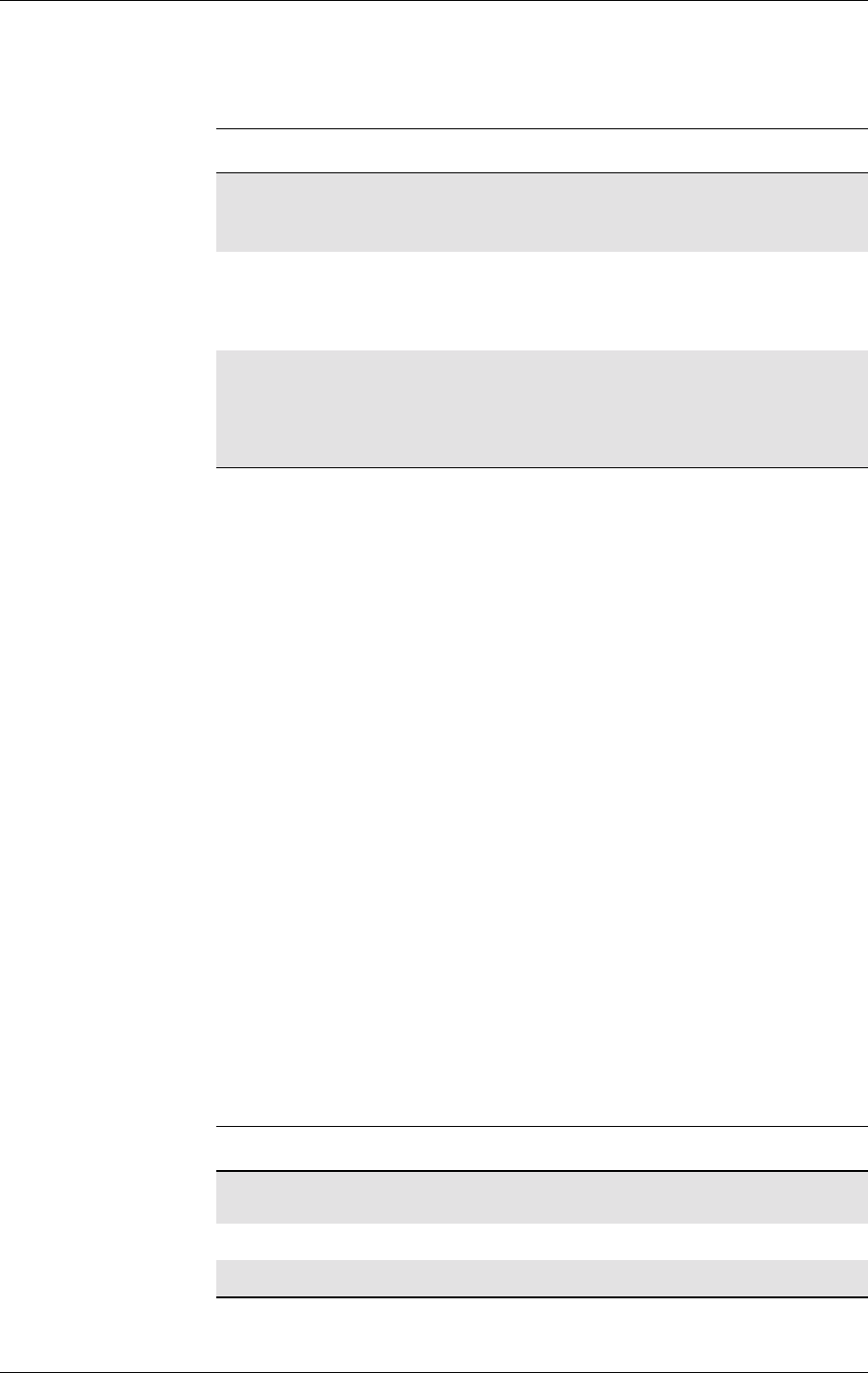
19. SUPPLEMENTARY SERVICES
299
LZT 123 7263 R1A
19.13 AT+CLIR Calling Line Identification Restriction
This command refers to CLIR-service according to GSM 02.81 [6] that
allows a calling subscriber to enable or disable the presentation of the
CLI to the called party when originating a call.
Set command overrides the CLIR subscription (default is restricted or
allowed) when temporary mode is provisioned as a default adjustment
for all following outgoing calls. Using the opposite command can
revoke this adjustment. If this command is used by a subscriber without
provision of CLIR in permanent mode the network will act according
GSM 02.81 [6].
The setting shall be per logical channel.
When the MS is turned off and then turned on again the parameter
setting <n> shall turn back to default, i.e. the presentation of CLI shall
be used according to the subscription of the CLIR service, <n> is 0.
Read command gives the default adjustment for all outgoing calls
(given in <n>), and also triggers an interrogation of the provision status
of the CLIR service (given in <m>).
Test command returns values supported by the TA as a compound
value.
Note! On a per call base CLIR functionality is explained in subclause “ITU-T
V.25ter [13] dial command”.
Description Command Possible Responses
Request calling line
identification restriction AT+CLIR=[<n>] • +CME ERROR <err>
•OK
•ERROR
Read the current
setting AT+CLIR? •+CLIR:<n>,<m>
• +CME ERROR <err>
•OK
•ERROR
Test if the command is
supported AT+CLIR=? •+CLIR:(listof
supported <n>s)
• +CME ERROR <err>
•OK
•ERROR
<n> Description
0Presentation indicator is used according to the
subscription of the CLIR service
1CLIR invocation
2CLIR suppression
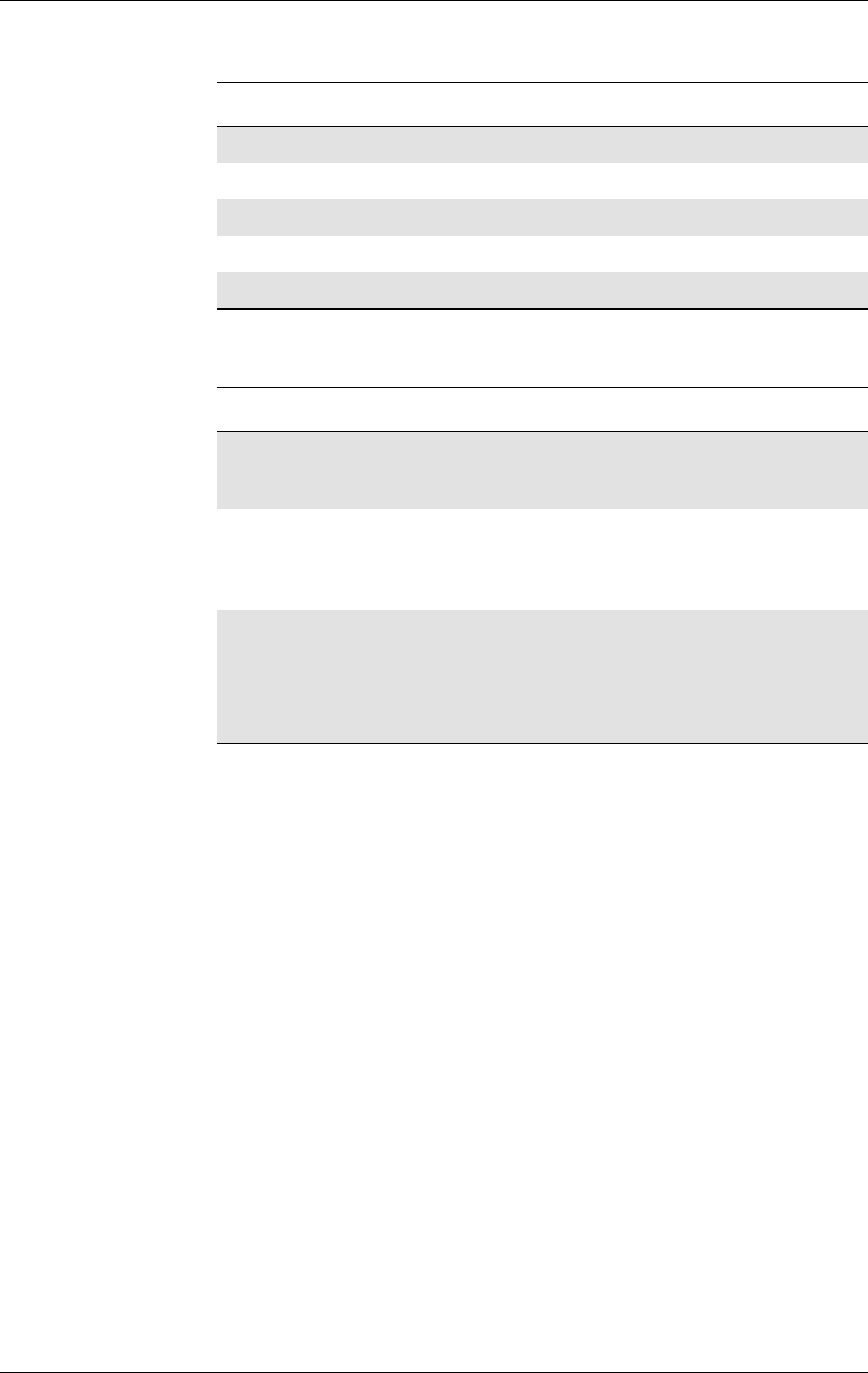
GM47/GM48 INTEGRATOR’S MANUAL
300 LZT 123 7263 R1A
19.14 AT+CSSN Supplementary Service Notification
This command refers to supplementary service related network initiated
notifications. The set command enables/disables the presentation of
notification result codes from TA to TE.
When <n>=1 and a supplementary service notification is received after
a mobile originated call setup, unsolicited result code +CSSI:
<code1>[,<index>] is sent to TE before any other MO call setup result
codes presented in this ETS or in V.25ter [13]. When several different
<code1>s are received from the network, each of them shall have its
own +CSSI result code.
When <m>=1 and a supplementary service notification is received
during a mobile terminated call setup or during a call, or when a forward
check supplementary service notification is received, unsolicited result
code +CSSU: <code2>[,<index>] is sent to TE. In case of MT call
setup, result code is sent after every +CLIP result code (refer command
"Calling line identification presentation +CLIP") and when several
different <code2>s are received from the network, each of them shall
have its own +CSSU result code.
Note! The difference between <index> and <cindex> is that <index> is a
position mark while <cindex> is a unique value for each CUG. <index>
is not supported.
<m> Description
0CLIR not provisioned
1CLIR provisioned in permanent mode
2Unknown (e.g. no network)
3CLIR temporary mode presentation restricted
4CLIR temporary mode presentation allowed
Description Command Possible Responses
Presentation of
notification result
codes from TA to TE
AT+CSSN=[<n>[,<m>]] • +CME ERROR <err>
•OK
•ERROR
Read the current
setting AT+CSSN? •+CSSN:<n>,<m>
• +CME ERROR <err>
•OK
•ERROR
Test if the command is
supported AT+CSSN=? •+CSSN:(listof
supported <n>s),(list
of supported <m>s)
• +CME ERROR <err>
•OK
•ERROR
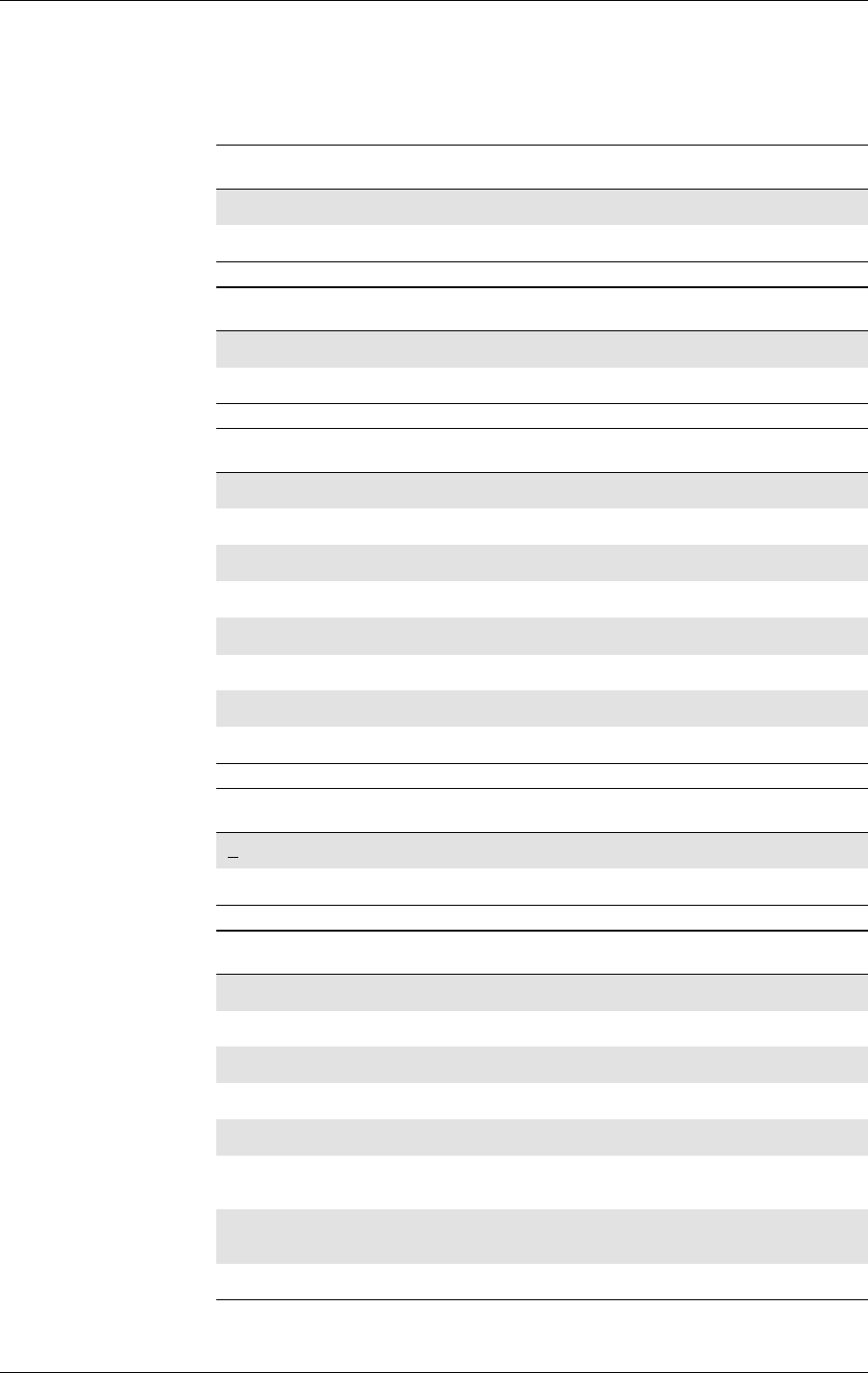
19. SUPPLEMENTARY SERVICES
301
LZT 123 7263 R1A
Test command returns values supported by the TA as a compound
value.
<n> Description
0Disable the +CSSI result code presentation status in the TA
1Enable the +CSSI result code presentation status in the TA
<m> Description
0Disable the +CSSU result code presentation status in the TA
1Enable the +CSSU result code presentation status in the TA
<code1> Description
0Unconditional call forwarding is active
1Some of the conditional call forwarding are active
2Call has been forwarded
3Call is waiting
4This is a CUG call (also <index> present)
5Outgoing calls are barred
6Incoming calls are barred
7CLIR suppression rejected
<index> Description
0…9 CUG index
10 No index (preferred CUG taken from subscriber data)
<code2> Description
0This is a forwarded call (MT call setup)
1This is a CUG call (also <index> present) (MT call setup)
2Call has been put on hold (during a voice call)
3Call has been retrieved (during a voice call)
4Multiparty call entered (during a voice call)
5Call on hold has been released (this is not a SS
notification) (during a voice call)
6Forward check SS message received (can be received
whenever)
10 Incoming call has been forwarded

GM47/GM48 INTEGRATOR’S MANUAL
302 LZT 123 7263 R1A
19.15 AT+CUSD Unstructured Supplementary Service Data
This command allows control of the Unstructured Supplementary
Service Data (USSD) according to GSM 02.90. Both network and
mobile initiated operations are supported. Parameter <n> is used to
disable/enable the presentation of an unsolicited result code (USSD
response from the network, or network initiated operation) +CUSD:
<m>[,<str>,<dcs>] to the TE. In addition, value <n>=2 is used to cancel
an ongoing USSD session. If <n> is not given then the default value 0
is taken.
When <str> is given, a mobile initiated USSD string or a response
USSD string to a network initiated operation is sent to the network. The
response USSD string from the network is returned in a subsequent
unsolicited +CUSD: result code.
The interaction of this command with other commands based on other
GSM supplementary services is described in the GSM standard.
Test command returns values supported by the TA as a compound
value.
Some different scenarios are shown below:
• An incoming network initiated USSD-Notify should be presented to
the external application as an unsolicited result code +CUSD: if the
external application has enabled result code presentation.
• An incoming USSD-request asking for a reply should sent to the
external application as an unsolicited result code +CUSD: if the
external application has enabled result code.
• If the external application answers to the request with the command
AT+CUSD then the ME sends the answer to the network.
• A USSD-request sent with the command AT+CUSD from the
external application.
Description Command Possible Responses
Request unstructured
supplementary service
data
AT+CUSD=[<n>[,<str>]] •+CMEERROR:<err>
•OK
Show supported
message types along
with the current service
setting
AT+CUSD? •+CUSD:<n>
•OK
•ERROR
Show list of supported
services AT+CUSD=? •+CUSD:(listof
supported <n>s)
•OK
•ERROR
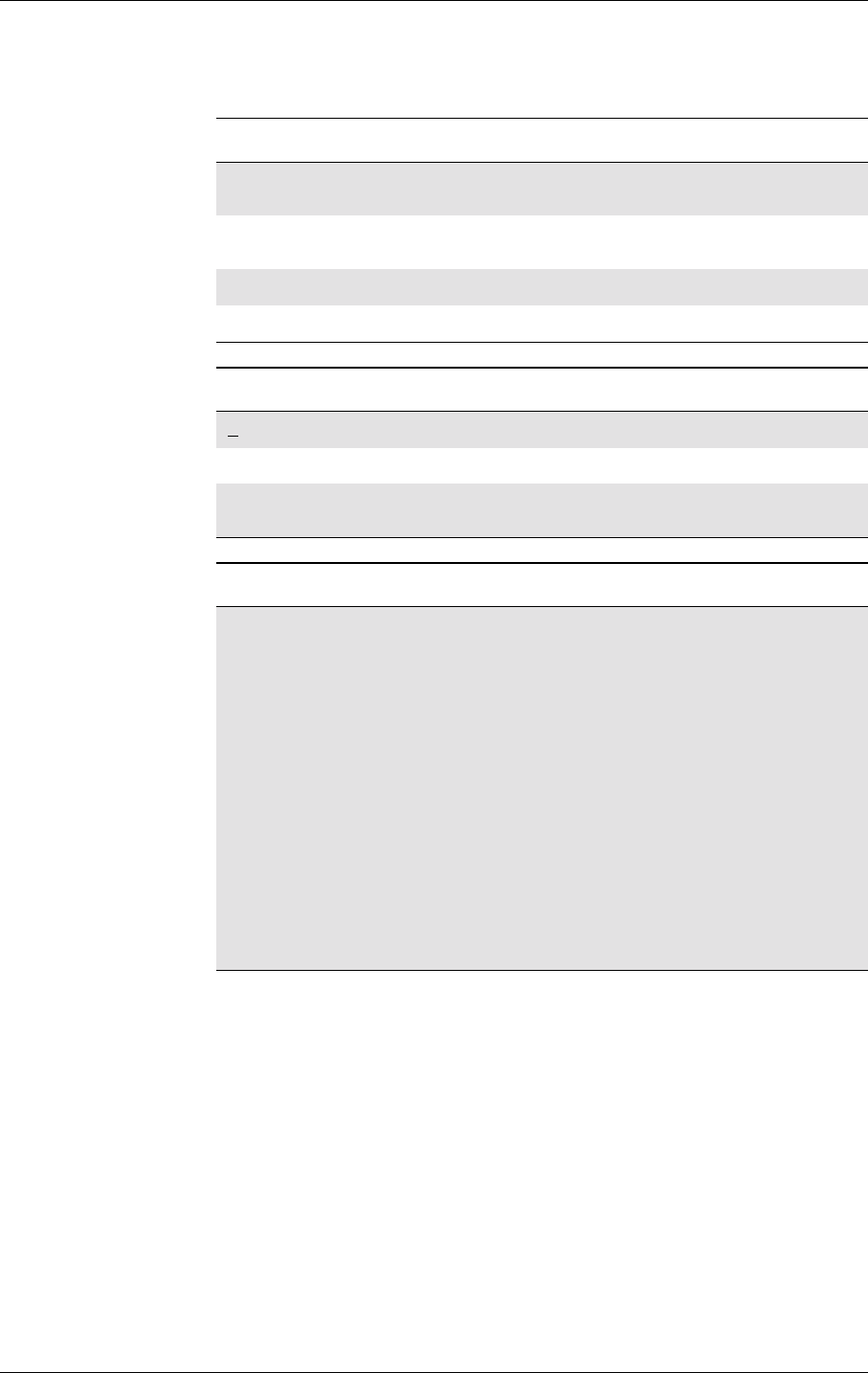
19. SUPPLEMENTARY SERVICES
303
LZT 123 7263 R1A
The different alternatives are shown below.
Network Mobile Equipment External application
1Signal Sends unsolicited
result code +CUSD Result code presentation
enabled, presented
2Signal asking
for reply Sends unsolicited
result code +CUSD Result code presentation
enabled, presented
3Answer AT+CUSD
3b Sends AT+CUSD
<n> Description
0DisableresultcodepresentationintheTA
1Enable result code presentation in the TA
2Terminate (abort) USSD dialogue. This value is not applicable to
the read command response
<str> Description
string String type USSD (when <str> parameter is not given, network is not
interrogated):
-If <dcs> indicates that GSM 03.38 default alphabet is used:
*if TE character set other than “HEX” (refer command Select TE
Character Set +CSCS): ME/TA converts GSM alphabet into
current TE character set according to rules of
GSM 07.05 Annex A
If TE character set is ”HEX”: ME/TA converts each 7-bit
character of GSM alphabet into two IRA character long
hexadecimalnumber(e.g.characterP(GSM23)ispresented
as 17 (IRA 49 and 55)). Not supported
- if <dcs> indicates that 8-bit data coding scheme is used: ME/TA
converts each 8-bit octet into two IRA character long
hexadecimal number (e.g. octet with integer value 42 is
presented to TE as two characters 2A (IRA 50 and 65)). Not
supported

GM47/GM48 INTEGRATOR’S MANUAL
304 LZT 123 7263 R1A

305
LZT 123 7263 R1A
20. Alphabetical Listing of AT Commands
AT Command Description Page No.
AT Attention Command 189
AT&C Circuit 109 (DCD) Control 197
AT&D Circuit 108 (DTR) Response 197
AT&F Set to Factory Defined Configuration 189
AT&W Store User Profile 190
AT* List all Supported AT Commands 190
AT*E2APR M2M Ausio Profile Manipulation 127
AT*E2CD Ericsson M2M Cell Description 209
AT*E2EAMS Ericsson M2M Audio Profile Modification 121
AT*E2EMM Ericsson M2M Engineering Monitoring Mode 211
AT*E2ESC M2M M2M Escape Sequence Guard Time 207
AT*E2IO Ericsson M2M Input/Output Read/Write 195
AT*E2NMPR Ericsson M2M Set NMEA (GPS) Port Rate 182
AT*E2PBCS Ericsson M2M Phonebook Check Sum 229
AT*E2PHFB Portable Handsfree Button Sense Enable 133
AT*E2SPN M2M Service Provider Indication 217
AT*E2SSN Ericsson M2M SIM Serial Number 221
AT*E2STKC M2M STK Set Up Call 283
AT*E2STKD M2M STK Display Text 276
AT*E2STKG M2M STK Get Inkey 277
AT*E2STKI M2M STK Get Input 278
AT*E2STKL M2M STK Select Item 280
AT*E2STKM M2M STK Set Up Menu 281
AT*E2STKN M2M STK Envelope (Menu Selection) 283
AT*E2STKS SIM Application Toolkit Settings 275
AT*EALR Ericsson Audio Line Request 129
AT*EALS Ericsson Request ALS Status 217
AT*EAMS Ericsson Audio Mode Selection 130

GM47/GM48 INTEGRATOR’S MANUAL
306 LZT 123 7263 R1A
AT*EARS Ericsson Audio Ring Signal 132
AT*ECAM Ericsson Call Monitoring 100
AT*ECSP Ericsson Customer Service Profile 218
AT*EDIF Ericsson Divert Function 289
AT*EDST Ericsson Daylight Saving Time 102
AT*EENMEA NMEA (GPS) Mode on UART2 181
AT*EIPS Identity Presentation Set 290
AT*ELAM Ericsson Local Audio Mode 133
AT*ELIN Ericsson Line Set 291
AT*EMAR Ericsson Master Reset 103
AT*EMIC Ericsson Microphone Mode 134
AT*EMIR Ericsson Music Mute Indication Request 134
AT*ENAD Ericsson Internet Account Define 185
AT*EPEE Ericsson Pin Event 103
AT*EPNR Ericsson Read SIM Preferred Network 219
AT*EPNW Ericsson Write SIM Preferred Network 220
AT*EPRR Ericsson Personal Ring Type Read 136
AT*EPRW Ericsson Personal Ring type Write 137
AT*ERIL Ericsson Ring Level Set 139
AT*ERIN Ericsson Ring Set 140
AT*ERIP Ericsson Ring Signal Playback Command 141
AT*ESAG Ericsson Add to Group 229
AT*ESCG Ericsson Create Group 230
AT*ESCN Ericsson Set Credit Card Number 231
AT*ESDG Ericsson Delete Group 233
AT*ESDI Ericsson Delete Group Item 233
AT*ESGR Ericsson Group Read 234
AT*ESIL Ericsson Silence Command 234
AT*ESIR Read MS System Interface Release 190
AT*ESLN Ericsson Set Line Name 222
AT*ESMA Ericsson Set Message Alert Sound 142
AT*ESMM Ericsson Settings Minute Minder 104
AT*ESNU Ericsson Settings Number 235
AT Command Description Page No.

20. ALPHABETICAL LISTING OF AT COMMANDS
307
LZT 123 7263 R1A
AT*ESOM Ericsson Settings Own Melody 142
AT*ESTL Ericsson SMS Template List Edit 269
AT*EWBA Ericsson WAP Bookmark Add 171
AT*EWBR Ericsson WAP Bookmark Read 172
AT*EWCG Ericsson WAP CSD Gateway 173
AT*EWCT Ericsson WAP Connection Timeout 174
AT*EWDT Ericsson WAP Download Timeout 174
AT*EWHP Ericsson WAP Homepage 175
AT*EWIL Ericsson WAP Image Load 175
AT*EWLI Ericsson WAP Login 176
AT*EWPA Ericsson WAP Push Access Setting 177
AT*EWPB Ericsson WAP Preferred Bearer 177
AT*EWPN Ericsson WAP Profile Name 178
AT*EWPR Ericsson WAP Profile 179
AT*EXVC Ericsson SET External Volume Control 144
AT+CACM Accumulated Call Meter 285
AT+CALA Set Alarm (Not Supported in SIR 1.0) 104
AT+CALD Alarm Delete 105
AT+CAMM Accumulated Call Meter Maximum 286
AT+CAOC Advice of Charge 287
AT+CAPD Postpone or Dismiss an Alarm 105
AT+CBST Select Bearer Service Type 147
AT+CCFC Call Forwarding Number and Conditions 291
AT+CCLK Set Clock and Date 106
AT+CCWA Call Waiting 294
AT+CEER Extended Error Report 106
AT+CFUN Set Phone Functionality 107
AT+CGACT PDP Context Activate or Deactivate 151
AT+CGATT GPRS Attach or Detach 152
AT+CGDATA Enter Data State 153
AT+CGDCONT Define PDP Context 154
AT+CGEREP GPRS Event Reporting 156
AT+CGMI Read MS Manufacturer Identification 191
AT Command Description Page No.

GM47/GM48 INTEGRATOR’S MANUAL
308 LZT 123 7263 R1A
AT+CGMM Read MS Model Identification 191
AT+CGMR Read MS Revision Identification 192
AT+CGPADDR Show PDP Address 157
AT+CGQMIN Quality of Service Profile (Minimum Acceptable) 158
AT+CGQREQ Quality of Service Profile (Requested) 160
AT+CGREG GPRS Network Registration Status 163
AT+CGSMS Select Service for MO SMS Messages 164
AT+CGSN Read MS Product Serial Number Identification 192
AT+CHLD Call Hold and Multiparty 296
AT+CHSC HSCSD Current Call Parameters 165
AT+CHSD HSCSD Device Parameters 166
AT+CHSN HSCSD Non Transparent Call Configuration 167
AT+CHSR HSCSD Parameters Report 169
AT+CHSU HSCSD Automatic User Initiated Upgrading 170
AT+CHUP Hang Up Call 90
AT+CIMI Subscriber Identification 223
AT+CIND Indicator Control 108
AT+CLAC List All Available AT Commands 109
AT+CLCK Facility Lock 223
AT+CLIP Calling Line Identification 297
AT+CLIR Calling Line Identification Restriction 299
AT+CMEE Mobile Equipment Error 109
AT+CMER Mobile Equipment Event Reporting 110
AT+CMGC Send Command 249
AT+CMGD Delete Message 266
AT+CMGF Message Format 242
AT+CMGL List Message 263
AT+CMGR Read Message 257
AT+CMGS Send Message 245
AT+CMGW Write Message to Memory 243
AT+CMOD Call Mode 91
AT+CMSS Send From Storage 248
AT+CMUX Switch to 07.10 Multiplex Protocol 201
AT Command Description Page No.

20. ALPHABETICAL LISTING OF AT COMMANDS
309
LZT 123 7263 R1A
AT+CNMI New Message Indications to TE 253
AT+CNUM Subscriber Number 225
AT+COPS Operator Selection 227
AT+CPAS Phone Activity Status 111
AT+CPBF Phonebook Find 236
AT+CPBR Phonebook Read 236
AT+CPBS Phone Storage 238
AT+CPBW Phonebook Write 239
AT+CPIN PIN Control 113
AT+CPMS Preferred Message Storage 252
AT+CPUC Price Per Unit and Currency Table 288
AT+CPWD Change Password 115
AT+CR Service Reporting Control 117
AT+CRC Cellular Result Code 117
AT+CREG Network Registration 228
AT+CRES Restore Settings 203
AT+CRLP Radio Link Protocol 149
AT+CSAS Save Settings 118
AT+CSCA Service Centre Address 241
AT+CSCB Select Cell Broadcast Message Type 273
AT+CSCS Select Character Set 268
AT+CSDH Show Text Mode Parameters 267
AT+CSMP SetTextModeParameters 267
AT+CSMS Select Message Service 270
AT+CSQ Signal Strength 118
AT+CSSN Supplementary Service Notification 300
AT+CTZU Automatic Time Zone Update 119
AT+CUSD Unstructured Supplementary Service Data 302
AT+CVHU Voice Hang-Up 92
AT+GMI Read Manufacturer Identification 193
AT+GMM Read Model Identification 193
AT+GMR Read Revision Identification 194
AT+ICF Cable Interface Character Format 204
AT Command Description Page No.

GM47/GM48 INTEGRATOR’S MANUAL
310 LZT 123 7263 R1A
AT+IFC DTE-DCE Local Flow Control 205
AT+ILRR Cable Interface Local Rate Reporting 205
AT+IPR Cable Interface Port Command 206
AT+VTS DTMF and Tone Generation 92
AT+WS46 Mode Selection 198
ATA Answer 85
ATD Dial 86
ATE Command Echo 198
ATH Hang up 88
ATI Identification Information 194
ATL Monitor Speaker Loudness 88
ATM Monitor Speaker Control 145
ATO Return to Online Data Mode 89
ATP Select Pulse Dialling 89
ATQ Result Code Suppression 95
ATS0 Automatic Answer Control 95
ATS2 Escape Sequence Character 96
ATS3 Command Line Termination Character 96
ATS4 Response Formatting Character 97
ATS5 Command Line Editing Character (BACKSPACE) 98
ATS6 Blind Dial Delay Control 98
ATS7 Connection Completion Timeout 99
ATS8 Comma Dial Modifier Delay Control 99
ATS10 Automatic Disconnect Delay Control 100
ATT Select Tone Dialling 89
ATV DCE Response Format 199
ATX Call Progress Monitoring Control 90
ATZ Reset To Default Configuration 200
AT Command Description Page No.